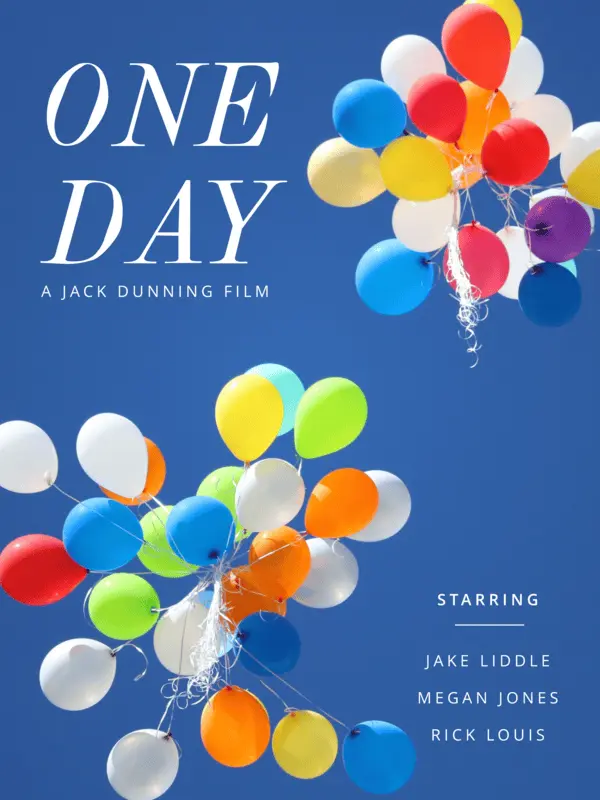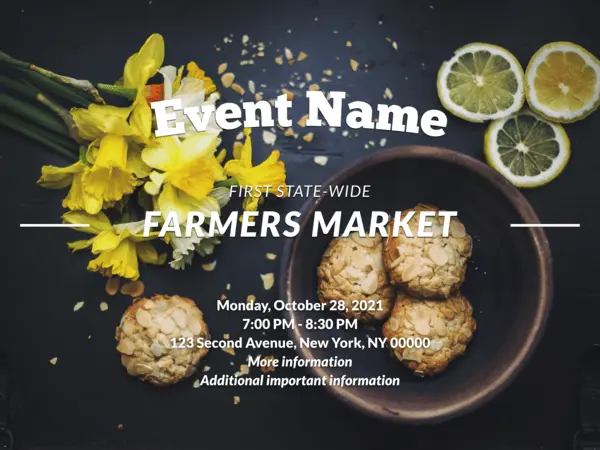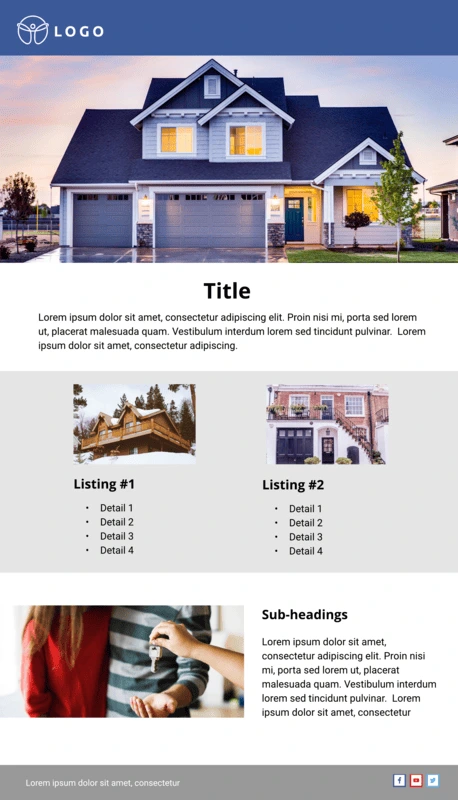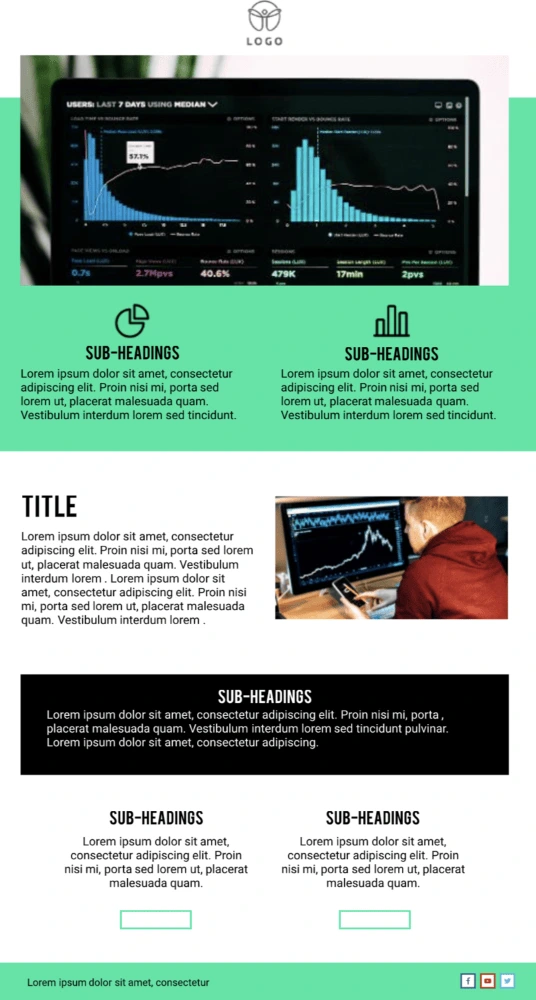The internet is teeming with sites vying for attention, and a poor first impression could very well be your last. It’s a fine line one walks when it comes to nailing that website design. Some get it right; many don’t. From the layout and navigation to the colors and fonts, everything has something to say about the brand behind the scenes.
Related: 8 best practices of high-converting websites
Some studies suggest that it only takes 50 milliseconds for a user to decide whether your website is appealing enough. With such a short amount of time, your website needs to wow them fast and leave a strong impression.
Let’s delve deeper into three areas—design, user experience and content—that can make an impact on your viewer, to give you insight into what your website says about your brand.
Driven by design
With dwindling attention spans and fast-changing loyalties, the design of your website plays a huge role in holding the attention of fast-moving visitors and encouraging interaction.
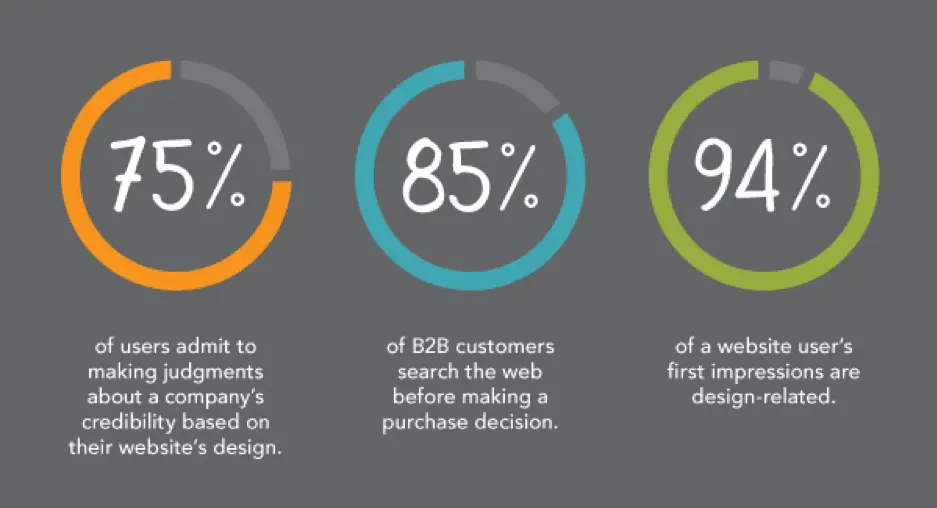
Source: Kinesis
Organizations spend top dollar to help their websites stand out amongst the noise. With special emphasis on digital marketing strategy, a great website design will help you grab your consumer’s attention.
Traits of a well-designed website
Visual appeal, but for the right audience
Looks matter.
In fact, 38% of users will stop browsing your website if they don’t find it attractive enough. So, a visually appealing website is half the job done. But remember—you are not trying to appeal to everybody.
Good design addresses the target audience with a brand personality users want to engage with. Check out this website, Crypton. It’s designed ideally for a tech-savvy audience.

Source: Crypton
Parallax scrolling heightens the user engagement here, but you don’t have to include parallax functionality on every website. Research your buyer personas and use design elements, functions and colors that make your target audience feel right at home.
Your above-the-fold section should do the job
A Nielsen study says the majority of your website visitors will spend 80% of their time above the fold. That’s the section you see without scrolling—call it the opening screen.
The best websites explain what they do in this opening screen. A general practice is to use a headline (think your company’s tagline or mission statement), followed with a brief subtitle text describing your services or products. Top it off with a CTA button to direct visitors toward the next stage in your conversion funnel.
Airbnb does this brilliantly; the headline is the CTA. While there’s no subtitle text, their call-to-action is strengthened by a slideshow of awesome travel photos. Just beneath the headline, a search bar is intuitively placed. The example text in the search bar encourages interaction.
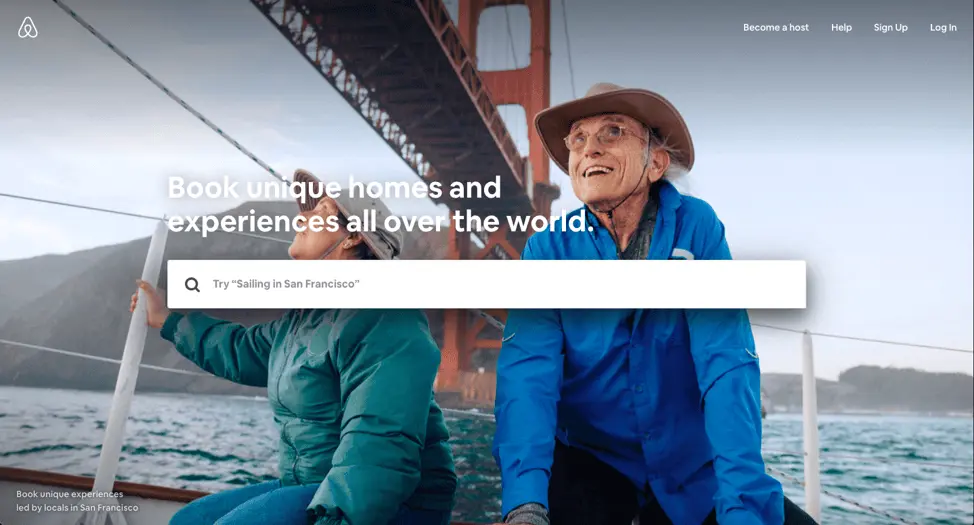
Source: Airbnb
Your design might be ineffective if:
- Your colors are wrong. For example, you’re targeting B2B consumers with a color theme that appeals more to B2C consumers.
* Your site has no visual hierarchy. This confuses the visitor, resulting in missed opportunities and eventual sales.
The design approach you take depends on many factors. Location, age brackets, and target groups will certainly affect how your website should look. Having said that, these factors should be the starting points for your design. A well-designed website that considers all these factors will set you apart from the crowd.
User experience counts
Today, it’s all about experiences. You could have a brilliant product or service, but if your website fails to deliver an enjoyable user experience, all that will be for nothing. It all comes down to how you make your customers feel.
The kind of experience users have, good or bad, will stay with them for a long time, even after the browser window is closed. A well-thought-out homepage or landing page with content that resonates will go a long way towards creating a great user experience.
Let’s see what your website’s UX has to say about you.
Good user experience:
- With good UX, your website tells the world that you think clearly about the end user. See Crunchbase’s website; its UI is done beautifully. There’s the search bar on top if you want to explore specific results, or you can click the menu on the left side to browse sections that interest you.
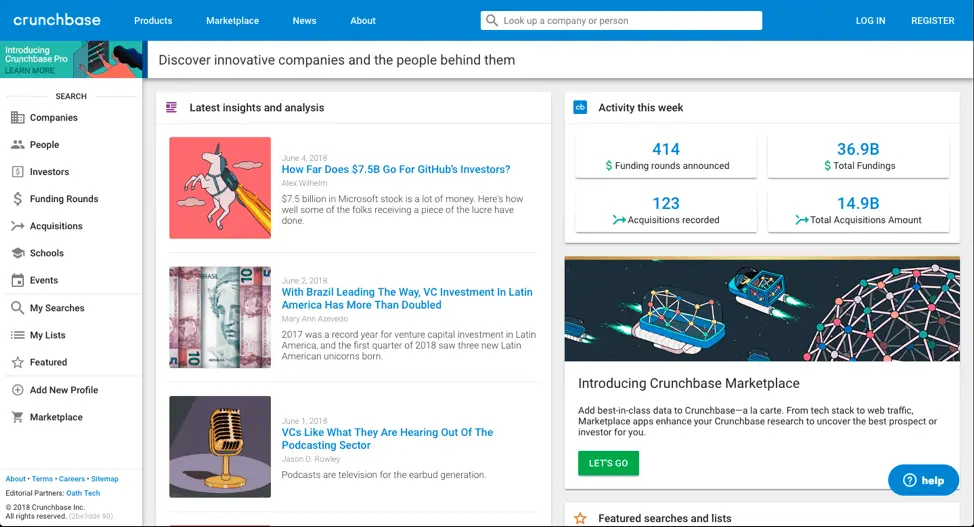
Source: Crunchbase
- Clean, intuitive user interface shows that you have a clear purpose.
* Got a 404 page built? Small things like this send out signals that you don’t skimp on your efforts to deliver an optimized experience.
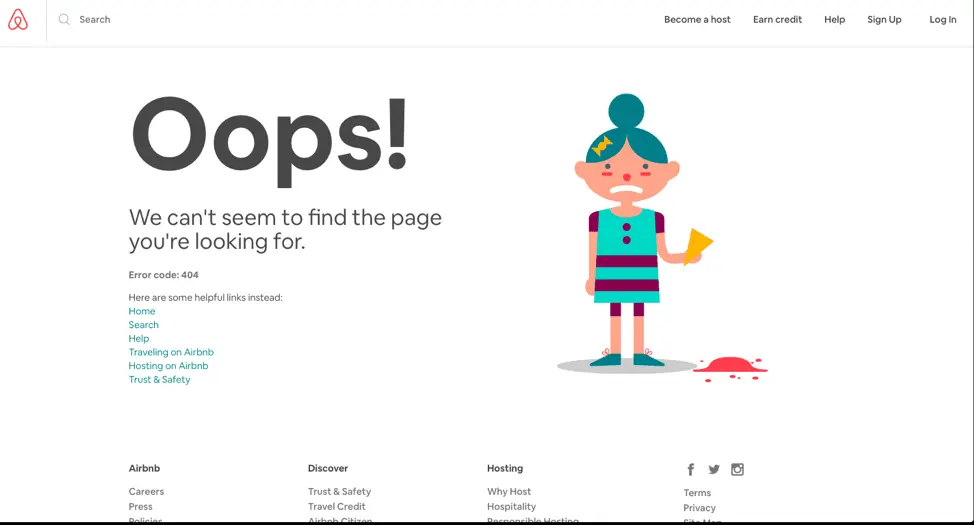
Source: Airbnb
Poor user experience:
- Your website doesn’t respond well to mobile or other screen sizes. This will send a bad message about the lack of strategy and planning behind its setup.
* Too many calls-to-action on one page show a lack of purpose for what your website aims to achieve.
User experience can make or break your website. To stay ahead of the game, it’s important to take feedback from your visitors. Incorporating that feedback will give your users a sense of gratification and improve future visitors’ experience.
Content will make it all work
Content might be the most important aspect of any website. Well-written content will bring you new traffic and repeat visits.
These days, content isn’t limited to the stuff you read. There’s now an increased demand for visual content. Animations, infographics and GIFs tell stories and illustrate data like never before. Compelling content with clear calls-to-action will eventually drive your users toward conversion.
Take a look at how the quality of your content reflects your brand’s personality.
Characteristics of good content:
- Great headlines and a call-to-action above the fold—nice. Videos on the landing page to engage fast-moving visitors—even better. This shows that you want users to get the best, most relevant material quickly without wasting their time.We especially love HubSpot for its content. The blog is fabulous, and there are explainer videos on all their landing pages, plus a video testimonial section. In short, almost every aspect of content necessary to build trust and conversion is present.
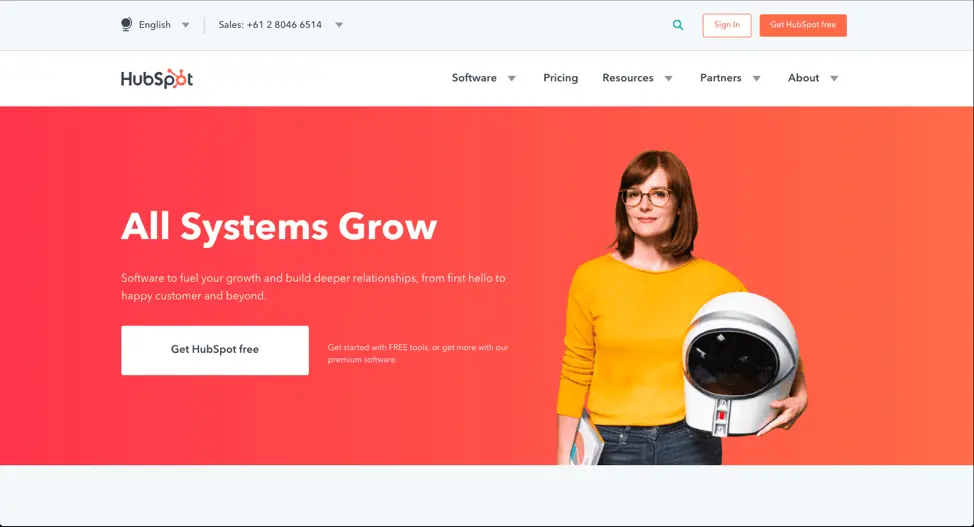
Source: HubSpot
- Use the language and verbal style your target audience speaks in. This shows that you’ve spent time thinking about and curating the content your target audience would appreciate.
* A blog should offer well-researched pieces that add value to your consumer’s decision journey. It will drive home the point that your content strategy cares more about the readers than ranking. This helps build trust and thought leadership.
Characteristics of poor content:
- Grammatical errors or typos on your site. Careless content informs your users that quality doesn’t matter to you. If you can’t pay attention to your content, who’s to say your product, services or customer support will be any better?
* Articles published just for the sake of traffic. If your content doesn’t target your audience or speak to a niche, it will be difficult for audiences to determine who your site is really for.
* Generic content that doesn’t offer anything valuable or new. This demonstrates a lack of research and understanding. The users goes away thinking you don’t really care about their needs.
Key takeaway
With so many sites competing for dollars and attention, it’s more important than ever to offer the user an exceptional experience. By breaking down your website into these three areas of design, user experience and content, you can evaluate how well each one contributes to your brand’s success. Conversely, you can also isolate areas that aren’t working and try new ways to engage your audience. When all of these areas represent your brand authentically and consistently, you will enjoy higher traffic, conversions and customer satisfaction.
Want to learn more about building & managing a brand? Check out our free eBook: Managing your brand in the cloud.
Why did you start your business? We’re pretty sure it wasn’t because you wanted to sell one product every blue moon, or because you don’t care about the services you provide.
Let’s be honest: We all want to make a difference, and we want to be recognized for delivering exceptional experiences. Without a positive reputation built on genuine feedback from satisfied customers, you can wave goodbye to local or worldwide recognition.
Related: 5 tips for building your brand with product & packaging design
You’ve probably noticed that bigger brands tend to have this nailed down. You see that red-and-white logo and instantly recognize Coca-Cola, or that blue background and yellow text belonging to IKEA. Even those multi-million-dollar brands had to start from somewhere. How on earth do you create something memorable—something that a customer will recognize and trust right away?
One answer is product packaging. Packaging is the first thing someone will notice on a shelf or when they receive a delivery to their home. The more they relate to it, the more likely it is that they’ll purchase or recommend it to others.
However, before you reach stardom, there are several ways to increase the chance of getting noticed. From the way you speak about your brand to how you package your products, here’s how to tell a memorable brand story.
Colors draw in the customer
Without color, the canvas is blank. A customer won’t look twice at your product if it doesn’t stand out to them in the first place.
Think about what feelings you want someone to get from your product. Should it make them feel like having fun, like a quirky craft beer? Should it make them feel cared for, like a health-related product? Make a list of how you want your product to make customers feel, and find ways to translate that to your packaging.
It can be easy to match colors with feelings: calming blues, bright yellows, passionate reds. A customer could be drawn to a certain color, depending on what they’re looking for. Colors can help you convey your brand identity, as well.
Who is your audience?
As with any form of marketing, keeping your audience in mind throughout the process is a must. Who will buy your product, and what product packaging will appeal most to that particular audience? Think about colors, shapes, sizes—even the wording on each individual product’s package.
Customers often read the text on a product to reinforce their purchasing decisions in their minds. [] For example, younger audiences prefer brighter, eye-catching colors with quirky shapes and blocky fonts. Older audiences who purchase luxury products prefer colors like black and gold, combined with elegant fonts and sophisticated language. It’s all about knowing who you’re selling to. Once you do, the rest will come far more easily.
Delivery boxes
No matter the size of your business, it’s not only important to have great product packaging on the shelves. When a customer makes a purchase online, they should feel the same excitement for their delivery as they do for the product in the box.
Depending on the size of your business, you might need to batch-order boxes for delivering your products. Businesses often need extra help to meet customer demand. BCS box-making machinery can help to create quality, durable boxing that makes an impact.
Consider sprucing up your boxes with custom-branded stamps, tape and delivery labels—as well as adding extra protection for your product inside each box. Think about padding, branded freebies, and money-off coupons as ways to encourage repeat purchases from your customers.
Logos & graphics
If you’re not including your logo and other branded imagery on your products, how do you expect a customer to know it’s you? When people see a familiar logo, they know almost instantly whether they trust that business enough to buy the product.
Graphics, although not always brand-specific, can often make or break your product packaging. If you’re selling healthy products, you’re more likely to succeed with a green, leafy design. Think about what works, and use a bit of common sense to gauge how you want the product to come across.
Product blurbs
Your brand story is important. So important, in fact, that many businesses make space on their product packaging to write a little about how their business started. Other companies write about their values, such as Lush and their natural, eco-friendly approach.
You can probably think of a few other examples of brands who do this well—which means they’re doing things the right way. The care and effort you take here will pay off when customers remember your story and take it to heart. Shoppers will appreciate an attractive design with an inspiring blurb more than one with a cut-and-dry description. Don’t forget that it’s often the packaging of a product that sells it, not just what’s inside.
Key takeaway
Customers need to recognize your products before building trust and loyalty in your brand. Find your brand’s voice and tell its story—your product packaging depends on it.
Like many things worth learning about these days, brand identity is a topic that sometimes gets so misconstrued and complex that the whole thing turns into a big meaningless fugazi.
For some reason, a lot of designers seem to think that making their ideas about brand identity sound more complicated will in turn make them sound like they know their stuff.
In my opinion, that couldn’t be further from the truth.
Related: Branding? Follow this template for creating a brand platform
In the famous words of Albert Einstein: “If you can’t explain it simply, you don’t understand it well enough.”
Sadly, because many businesses have a preconception that brand identity has to be a complex affair, they make it so. But in the ever-changing, fast-paced business world of today, who’s got time for complicated?
Simplicity is key to making good decisions, fast.
So, if we were to sheer away all of the confusing fluff surrounding brand identity, what sort of beast would we be left with underneath?
Welcome to the minimalist guide to brand identity, where all of the confusing and pretentious stuff is thrown out the window and we focus solely on the stuff that really matters.
Let’s dig in.
Rule #1: If it ain’t broke, don’t fix it.
Just take a look at Gap’s rebrand from 2010.
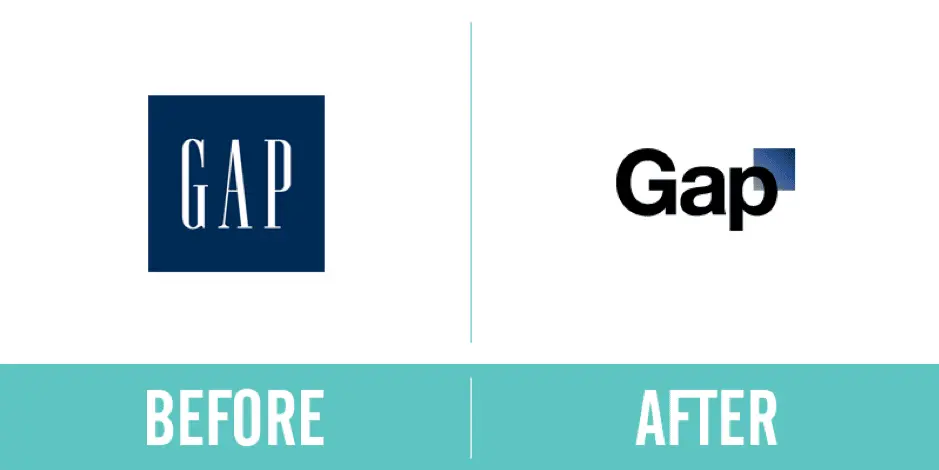
LOOK AT IT!
That change cost them 100 million dollars.
And, they changed it back.
The lesson? If you already have a brand that works, and no compelling reason to change it, leave it as is.
Branding (your brand’s identity) only needs to be changed when the perception of you in the market doesn’t match what you actually do and represent as a business… which leads us into the next rule.
Rule #2: Put your values first.
So, you’ve thought about the point above and decided, “Yes, we actually do need to fix our brand because it doesn’t match who we are.” Fair enough.
But, before you even start to talk about the visual stuff—fonts, colors, imagery and so on—you need to do a little soul-searching to get down on paper the values of your business.
This, in essence, is what a brand’s identity is: the values that the visuals represent. [ ]
Everything about the brand therefore needs to make sense and represent you in some way, so start by answering a few simple questions like:
- What are your business’ values?
- What values do your competitors have that you don’t want to be associated with?
- How do you want people to describe your business, product and service?
Answering those sorts of questions will help direct you in making choices about the visual aspects of the brand.
If you want your brand to be considered tough and macho, for example, you wouldn’t go for a curly, wavy font.
If you want your service to be perceived as simple and to-the-point, you wouldn’t want to go overboard with the imagery.
Once you’ve got those values nailed down, it’s much easier to say whether a visual idea is a good fit for your business.
Rule #3: Simplicity is key.
Sure, you could take a course on branding & design. You could read Pearce’s Theory of Semiotics. You could hire a team of brand consultants to come in with their chihuahuas, fedoras and turmeric lattes to give your brand “pizzazz” and make it pop.
But, why bother when you can keep the process simple?
You’d be amazed at how many companies waste weeks or months—even years in some cases—obsessing over minuscule brand details.
While it’s true that the devil is in the details, it’s also true that branding, just like any other form of art, is incredibly subjective.
Remember that, while you might get into disputes over the finer details internally, as long as the new brand looks good and represents your values, people won’t notice that your font is slightly lighter, slightly bolder, or that you’ve chosen Pool Party Valspar over Filoli Morning Valspar (yes, those are genuine Pantone colors).
In other words, don’t let your own personal ideas of perfection get in the way of progress.
Keep your decision-making system simple, while understanding that people on your team are bound to have a few ideas you don’t, and the process will be both quick and fruitful.
Rule #4: Look at your competitors.
If you want to save time while building a brand identity (and the elements to match), it’s crucial to put together a board of your competitors’ brands, including their logos and value propositions.
Why? Because a lot of businesses rush in, creating a brand they love, only to realize that it looks disappointingly similar to the competition.
Consider zagging where everyone else has zigged. If every brand in your industry is blue, pick another color that will make you more memorable and own that hue instead.
It’s far more powerful to stand out than fit in, so don’t assume that just because everyone else has done something for a reason, you should follow suit.
Looking at competitors early in the process is an easy way to guide your identity and the resulting elements. Other companies will give you insight into exactly which routes to pass by and which ones to explore.
Rule #5: Listen.
I’d strongly recommend using this exercise to build trust with your customers.
Ask them what they think your brand values are to get a picture of the way they see you.
Not only will they love that you got in touch, they’ll feel valued and potentially even become brand advocates.
This is the best and most accurate source of data when revising your brand identity.
Rule #6: Test, tweak and test again.
Once you’ve made your decisions and pushed your new brand identity out there, the key is to test and make sure the changes you hoped would be evident are the ones you actually get.
A soft launch to the same customers you spoke with can be a great way to gauge whether the decisions you’ve made are wise ones.
More often than not, some unexpected reactions and results are likely to occur. A/B testing new messaging & branding on your website and in your communications is a great way to measure whether certain tweaks are working.
When you do launch—especially with changes to messaging—it’s advisable to make incremental changes so you can track exactly what’s worked and what hasn’t. If you push ahead and change everything in one go, you’ll never know which elements are responsible for positive or negative reactions.
Key takeaway
Branding is a huge differentiator. No matter how you approach the subject internally, it’s important to keep a commercial head on your shoulders and realize that the more time & resources you sink into your new brand, the less cost-effective it becomes.
I know that’s a pretty boring thing to say when talking about something as exciting as branding, but many businesses fall into the trap of sinking so much time into brand identity work that the whole project becomes a false economy, costing you way more than it could possibly generate in revenue.
To avoid that pitfall, keep your decision-making process swift, honest, and void of too many personal preferences—and your identity project will be a flying success.
Ready to begin? Learn about the 10 assets you need to effectively manage your brand online in our free ebook.
With the right slogan, you can make people giggle at a pun, ponder the mysteries of the universe, or even experience a powerful craving. A poor slogan, on the other hand, risks making customers cringe. And forking over cash is usually the last thing someone wants to do after cringing.
This post will give you a 5-step guide to writing great slogans. So whether you need a brand new idea or you’re refining an existing slogan, you’ll be in business. Let’s get started!
Related: Learn more about the 10 assets you need to effectively manage your brand online in our free eBook.
1. Make your slogan ABC: Ambitious But Credible
Believability is the first test of a good slogan, because a customer’s belief or lack thereof largely determines how he or she will respond, and that response could very well be the difference between buying and walking away. No matter how much fun your slogan is to say, or how good it looks next to your logo, it won’t do any good if your customers don’t believe it. []
For example, Nike’s command to “find your fast” comes across as completely believable. While having the right equipment isn’t the only factor in athletic success, it is a factor. Slogans like this one invite consumers to put their trust in a brand, which is a big plus.
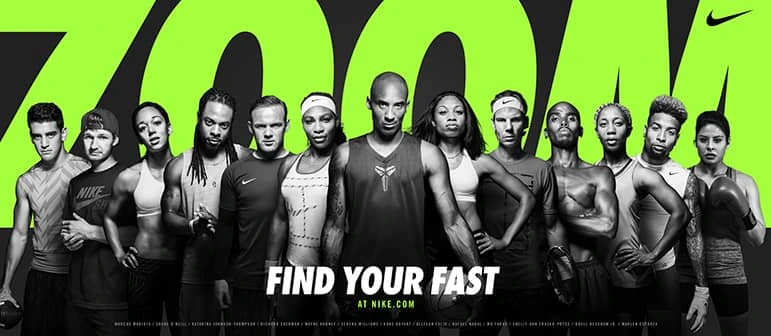
Some key questions to ask about your slogan:
- Do I believe it?
- Is there good reason for my customers to believe it?
- Does it set a high standard for the product?
2. Appeal to emotional needs
Making a purchase is often an emotional experience. If a slogan can incite a strong positive emotion (think joy, excitement, sympathy, etc.), it stands a better chance of connecting people with the products and services that aim to fill those needs.
For example, major hotel chains go out of their way to convey comfort: Hilton claims to be “filling the earth with light and warmth of hospitality,” while Aston bids “welcome home” to each traveler who sets foot on their premises.
You can also tug at the heart strings without being sappy. When Kleenex launched a video ad about a boy who gives a tissue to a girl he spots crying on the school bus, the closing observation that “someone needs one” positioned Kleenexes as the universal response to tears everywhere.
Questions to consider about your slogan:
- What emotions does it invoke?
- Which of my target audience’s needs does it relate to?
3. Stand out with clever wordplay
Your slogan ought to be tricky or clever enough to make most readers think about your slogan for a minute or two, which makes it more likely that they’ll remember it. If it’s too tricky, however, it can go right over their heads and leave them confused.
There’s no easy way to come up with a clever saying, but you can start by listing words that have to do with your product, then searching for rhymes, synonyms, and alternate definitions for puns.
Those aren’t the only ways to make your slogan stand out—in fact, sounding too catchy in a clichéd way could be counterproductive. Reese’s “two great tastes that taste great together” follows an A-B-B-A structure that, intentionally or not, imitates the peanut-butter filled structure of the candy itself.
Nor does it have to be complicated to sound good. “Ace is the place with the helpful hardware folks” isn’t just easy on the tongue; it’s also a straightforward slogan that goes well with the down-to-earth nature of hardware stores.
Ask yourself:
- Are consumers likely to understand the slogan’s wordplay?
- Does the cleverness of the slogan distract from or reinforce its overall message and effect?
4. Just say no to clichés and superlatives
How do you know when you’ve crossed the line from catchy to corny?
If people can sarcastically cite your slogan to disprove it when they experience setbacks, you’ve probably crossed that line. []
Another sign you may have gone too far is the use of tired clichés. Phrases such as “we do X so you don’t have to”; “for x, by x”; and “x of the future” are all used so frequently that consumers are used to tuning them out. If you really want to express the sentiment embodied in these phrases, find a unique way of doing so.
Some key questions to consider are:
- In what ways is my slogan different from most slogans?
- In what ways is it similar, possibly too similar, to most slogans?
- How likely are customers to roll their eyes at it?
5. Maintain a strong connection to your business
Can you match the following slogans to the product they represent?
1. Made like no otherA. beverages2. Rethink the daily grindB. women’s deodorant3. Live loudC. toilet paper4. Live life in full colourD. denture fixatives5. Bend the rulesE. 3D desktop scanners6. Designed to be forgottenF. ice cream
Having trouble making the connection? The point is that a slogan should strongly relate to the product it promotes. It if doesn’t, then it might catch people’s attention momentarily, but it won’t stay with them.
It’s best if there’s a strong, interesting link between your slogan and your product. For instance, Aquafina’s insistence that their water is “for happy bodies” makes good sense. Sunchips’ claim to be “unique in every wave” distinguishes their chips from their less curvy competitors. Finally, Paper & Packaging Board’s assertion that their products are at the heart of “how life unfolds” wouldn’t make much sense for, say, a burger stand.
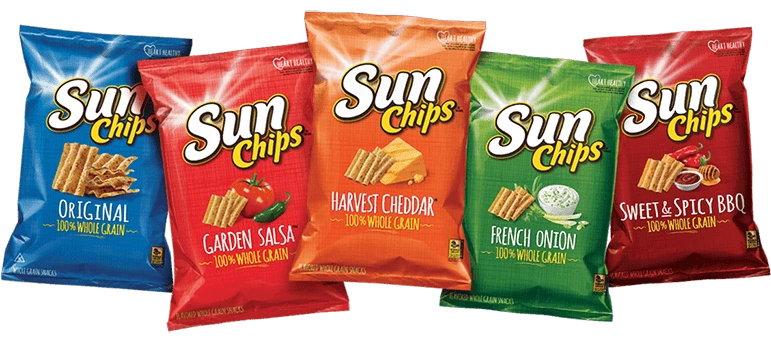
(And if you want to know the quiz answers, here they are: 1. F, 2. A, 3. D, 4. B, 5. E, 6. C.)
Congratulations! You made it through Business Slogans 101. Once you’ve written a killer slogan of your own, be sure to sell it visually as well as verbally. Lucidpress templates can help you incorporate your new slogan into all kinds of marketing materials: social media graphics, digital magazines, company newsletters, and much more.
So. It’s almost October 31st, and you don’t have a Halloween costume idea yet. The situation is even more dire if you’re facing a company costume contest. Your competitive side yearns to get decked out as a steampunk zombie Stormtrooper, but do you really have time for all that? Better just watch Hocus Pocus for the umpteenth time and let Glen from sales get all the glory…
Or not! In the immortal words of Edna Mode, pull yourself together. Here are 10 of our best last-minute group costume ideas. All of them are appropriate for work, and most can be adjusted if you’re dressing up solo. Plus, if you’re a business owner, celebrating holidays can go hand-in-hand with seasonal marketing goals like increasing your presence in the community. Let’s get spooky!
Related: How to make free party invitations
1. Quoth the raven, “Nevermore”
Why not dress up as a group of literary characters? Here we have Edgar Allen Poe, the Raven and Annabel Lee. But don’t forget about characters from The Legend of Sleepy Hollow, The Scarlet Letter, Strange Case of Dr. Jekyll and Mr. Hyde, The Shining, Rip Van Winkle, and more. The more recognizable the story, the better. If you’ve got a large group, try dressing up the extras as townspeople or peripheral characters.
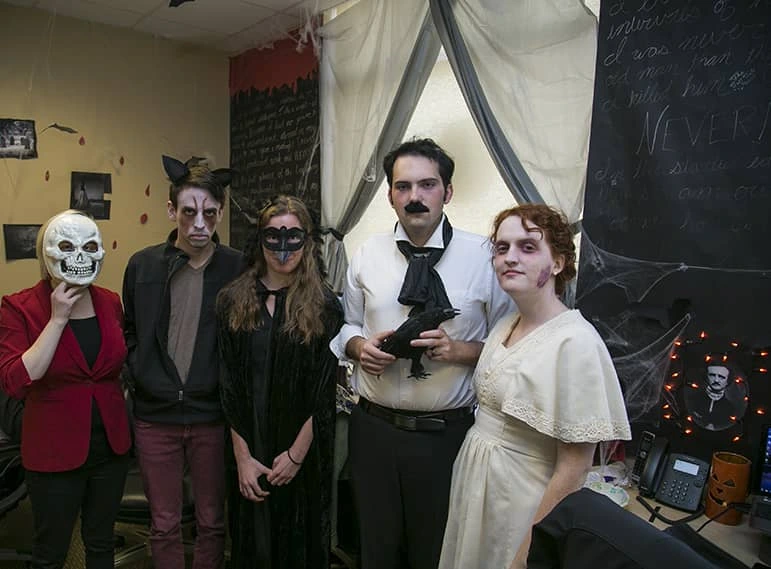
2. Zombies anonymous
The zombie craze started several years ago, so dressing up as a zombie may feel played out. That’s why you should be a reformed zombie. Slap on some zombie makeup, but keep your clothes business casual, and don’t forget a name tag on your shirt. Bonus points if your group switches their seating arrangement to a circle of folding chairs.

Photo credit: Steve Spezz
3. Pun for cover
No one will be safe from your cunning punnery. You can put a twist on popular songs, as Demi Lovato did with “Trap Queen” by rapper Fetty Wap. Or come up with creative takes on common phrases. For example, this year I’m dressing up as a fox and carrying around a Coldstone Creamery cup (get it?). My husband will wear a baggy shirt tucked into high-waisted jeans and carry a fryer basket from the local thrift shop. That’s right—he’s Friar Tuck. I can hear the groans already!

Photo credit: Dimitrios Kambouris/MTV
4. Famous ghosts
What could be easier than a ghost costume? To add some flair to this idea, have each member of your group go as a famous ghost. There’s Nearly Headless Nick, Casper, The Ghost of Christmas Past, and even Slimer from Ghostbusters. Just take your pick!

Photo credit: greyloch
5. Video vixens & villains
Get inspired by music videos like Taylor Swift’s “Bad Blood.” Your girl gang just needs to dress in black, add some metallic flourishes, (what else is duct tape for if not last-minute costumes?), and stomp through the office like aspiring models. You can also dress up like rock stars (The Misfits, New York Dolls), boyband members (Backstreet Boys, One Direction), riot grrrls (Bikini Kill, Sleater-Kinney)… the possibilities are endless.

Photo credit: YouTube
6. The creative force awakens
Stay ahead of the curve by dressing up as characters from popular movies like Star Wars: The Force Awakens. The teaser trailers usually have plenty of material to work with. Other easy-to-riff movies & TV shows include The Royal Tenenbaums, Empire, Scooby Doo, Office Space, Star Trek, The Addams Family, and a whole lot more. Again, the more recognizable the source material, the easier it will be to scare up a costume.
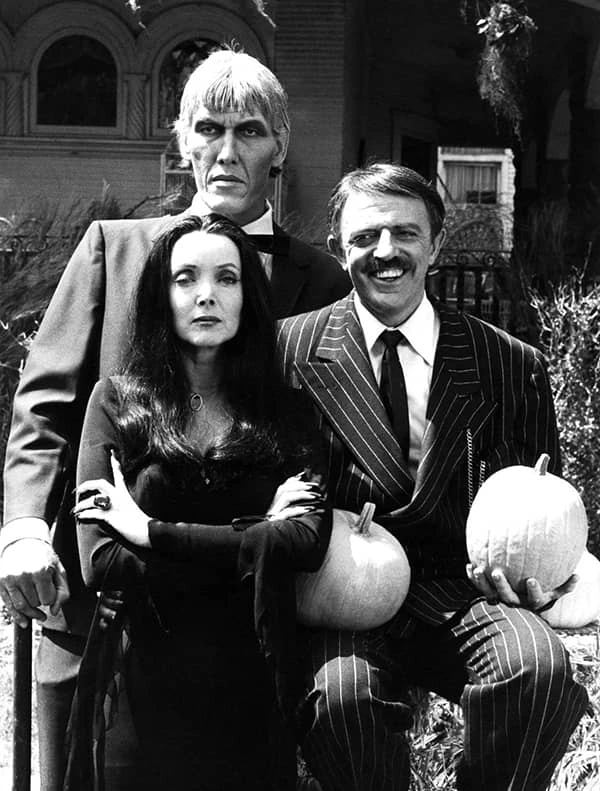
7. Fly international
Here’s a super easy idea. Dress up each member of your group as a different country, region or continent. France can don a beret and carry a baguette, while Canada can hold a cup of Tim Horton’s and talk incessantly about hockey. Just remember: cultural appreciation is awesome, while appropriation is not.
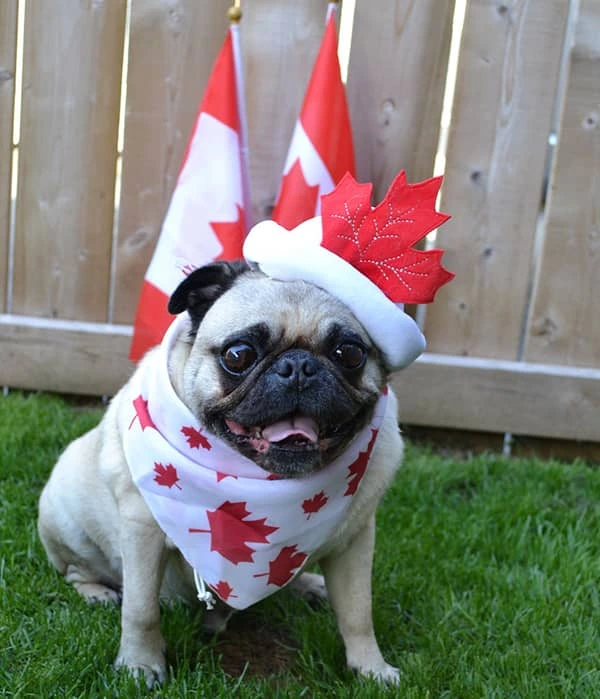
Photo credit: DaPuglet
8. The inside joke
This one is more of a prompt, but we believe in your ability to give it life. Just think of an office-wide joke and turn it into a costume. For example, we’re a web-based software company, so we have lots of inside jokes about hardware and software. Perhaps this year, an enterprising trio will dress up as a slow-moving, spammy-looking Internet Explorer, a preppy Safari, and a Chrome that seems normal but rifles through your desk for personal information as soon as your back is turned. (We still love you, Chrome.)

9. A star is re-born
Try dressing each member of your group as a different version of a famous actor like Tom Cruise. Aviators and a leather jacket turn you into Maverick from Top Gun, and it’s easy to create similarly recognizable costumes for his roles in Mission Impossible, Risky Business, The Outsiders, or Interview with the Vampire. You can even recreate couch-jumping Tom with a simple black turtleneck. Adapt this idea for a group of women with a prolific actor like Kate Winslet.
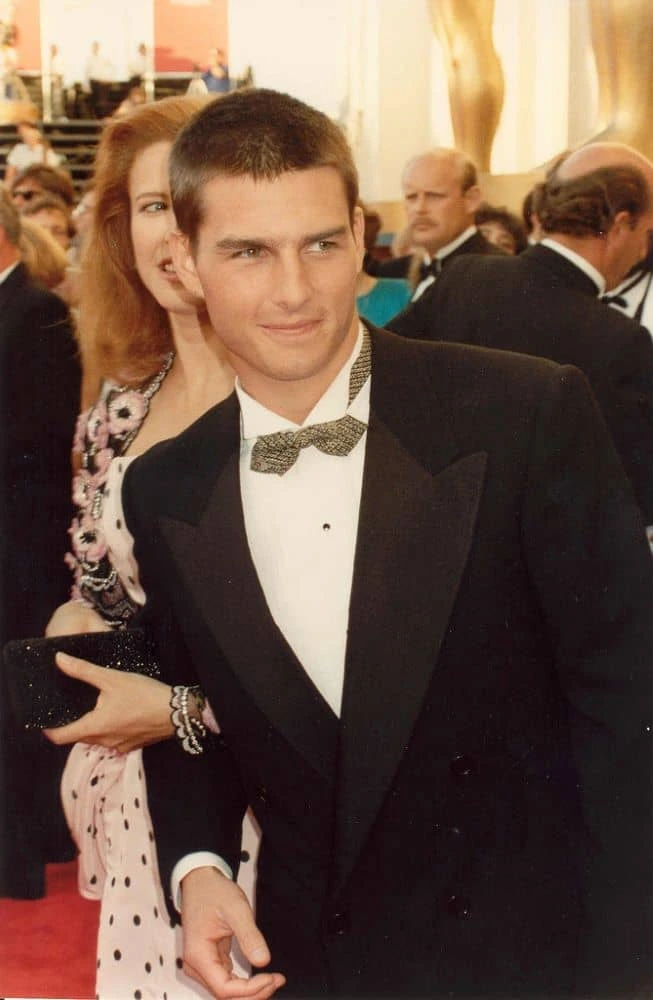
Photo credit: Alan Light
10. All in the family
Try dressing up as members of another department in your company. It’s even better if your departments have an ongoing rivalry.
11. Three blind mice
Why not show up as a motley crew of nursery rhyme characters? It’s certainly different from most group costumes. Plus, there are hundreds of characters to choose from: Peter the pumpkin eater, Miss Muffet and her spider friend, Little Jack Horner, Mary quite contrary, Little Bo Peep, the list goes on.

Photo credit: Wikimedia Commons
12. Where’s the beef?
We love this costume idea because it appeals to all generations. Just choose a famous ad campaign and embody it with your costume. A few ideas: The GEICO cavemen, Mac vs PC guys, the Nike swoosh, the Old Spice man, Flo from Progressive, and of course, Wendy’s “Where’s the beef?” lady.
13. Rejected Halloween candy
Want to recapture that familiar feeling of childhood disappointment? Dress your group as the least-loved leftovers of a Halloween candy stash. You’ve probably got your own list, but here are a few ideas from our team: pencils, toothbrushes, Smarties, Tootsie Rolls, candy corn, Bit O’Honey, Mary Janes, Good & Plenty, and dental floss.

Photo credit: Jamal Fanaian
We hope you enjoyed this list! Share your best group Halloween costume ideas in the comments (if you dare), and Happy Halloween.
“Good artists copy, great artists steal.”
Steve Jobs
When you’re stuck on something, the best thing to do is to step away and look around. Often, the greatest inspiration comes from the world surrounding us. A great designer, like a great artist, will take in the best of what they see to make something new and unique.
Related: 17 flyer design ideas for your inspiration
Keep reading to see 21 examples of brochure ideas you’re welcome to steal from. You can browse to spark some ideas, or you can edit a template to fit your creative vision of the brand you’re representing. All of these brochure and pamphlet designs are available with a Lucidpress account.
The other thing that’s exciting about these brochure templates is that they can be used for digital or print. Digital publishing opens up exciting new possibilities like scrolling text, links within the brochure, embedded video, and widespread distribution. For example, La Presse, the oldest French newspaper in North America, used digital publishing in Lucidpress to revolutionize the newspaper industry. Enjoy, and check out the end of the post for more design resources.
1. Perennial Brochure Template
A fit for more than just floral applications, the Perennial brochure is perfect for organizations with a cheerful, springtime brand, or for any outdoor events held when the sun is shining.
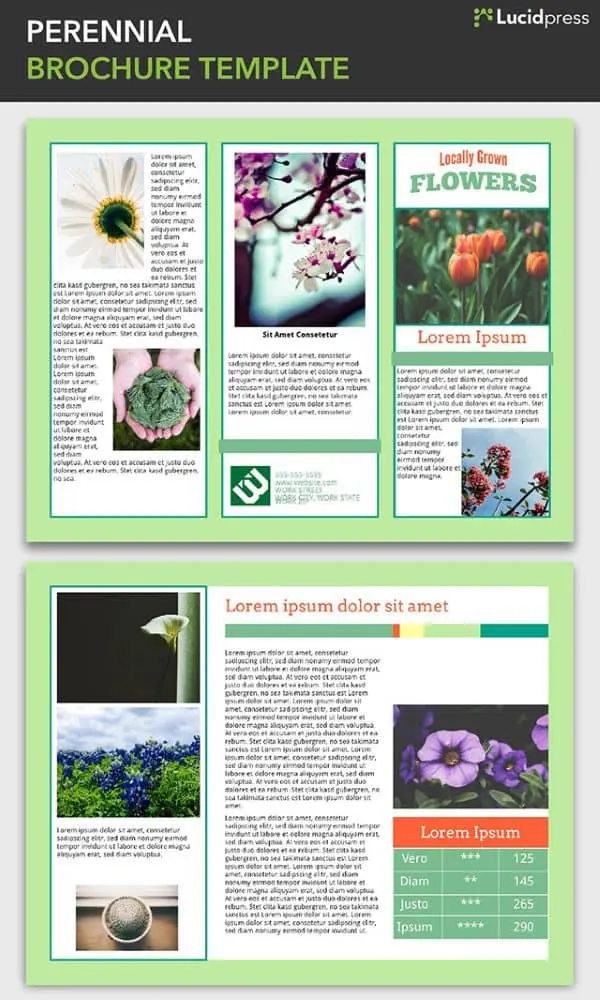
2. Academic Brochure Template
Museums, historical landmarks, and city tour organizations can use the Academic brochure to bring their unique features to life. The Academic uses a tri-fold design and a section-based layout to highlight the different sites and items of interest that visitors or tourists will want to see during their stay.
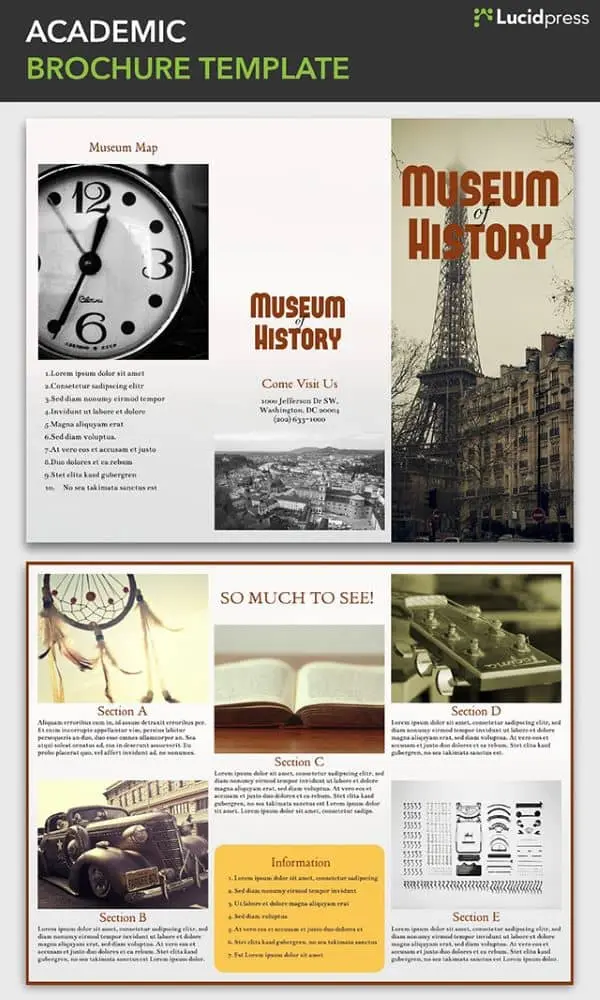
3. Redwood Coast Travel Brochure Template
This bi-fold brochure template has ample space dedicated to photographs of the travel destination. Readers will be quickly transported there by the immersive images. The image-based cover is intriguing but not overwhelming, adding just the right touch to this beautiful design.
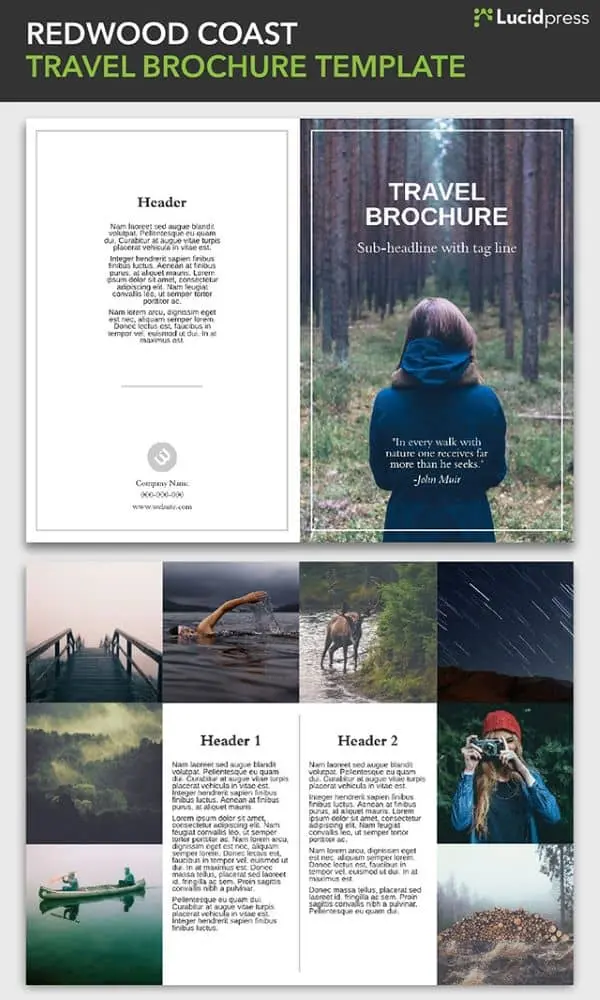
4. Wine Country Brochure Template
This tri-fold brochure template is particularly well-suited for agricultural or rural-oriented organizations, including wineries, family farms, and agricultural nonprofits. The elegant, clean design evokes the simple beauty of the countryside.
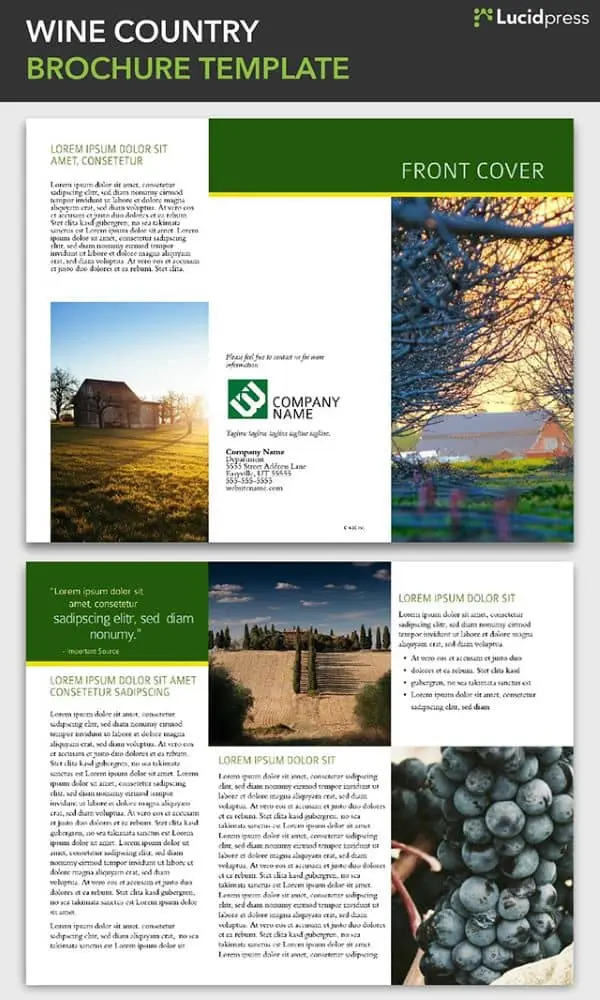
5. Alpine Vista Travel Brochure Template
The Alpine Vista brochure has an adventurous tone perfect for companies promoting mountain sports and expeditions. A stunning photograph leads out on the cover while a yellow color scheme injects a positive, exciting energy. Also, the three divisions for different destinations makes the most of the tri-fold layout.
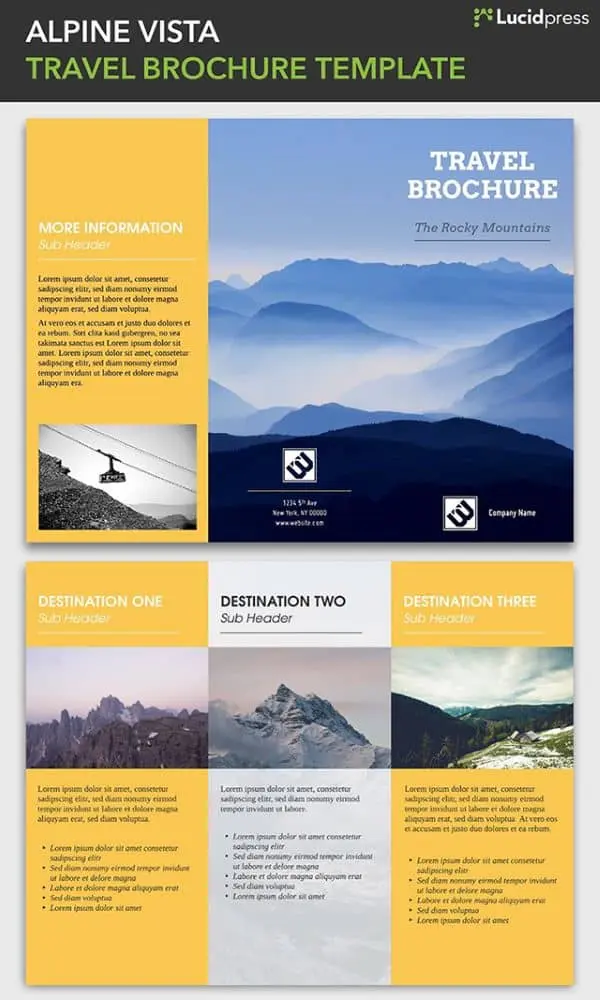
6. Keynote Brochure Template
The Keynote is stylish and modern, embracing minimalist design that can be adapted to a range of industries and organizations. This template can be customized to be longer or shorter, depending on your needs. This bi-fold design lends itself well to a creative mind looking to try something new.
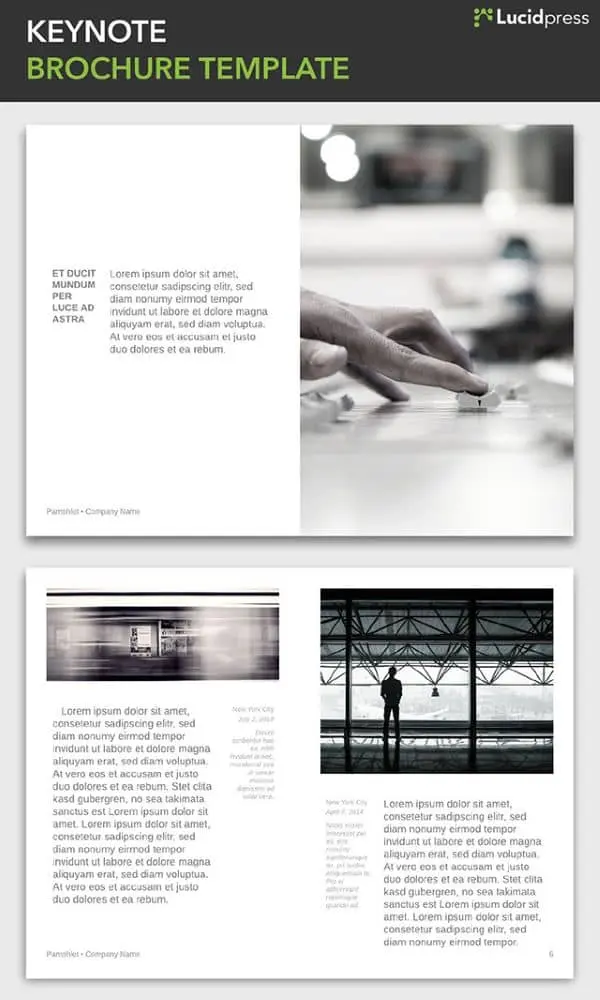
7. Passport Brochure Template
Another booklet-style brochure, the Passport balances modern sensibilities with just the right dose of playfulness, calling to mind a day spent exploring hidden wonders on New York City streets. This design separates the text and the images, giving each an opportunity to stand on their own while remaining cohesive.
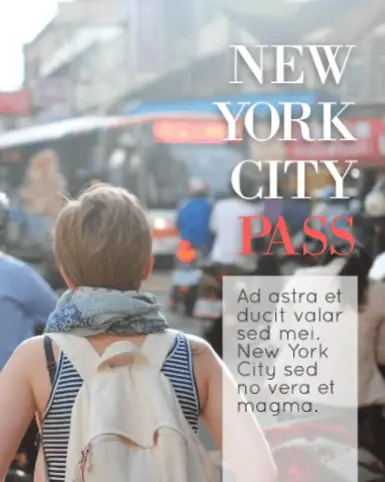
8. Lavender Cafe Brochure Template
This tri-fold brochure design has elements that work in harmony with the tri-fold format to create distinct sections, each with a unique layout that keeps things interesting. It works well in a restaurant application, as shown here, but could be adapted to any business.
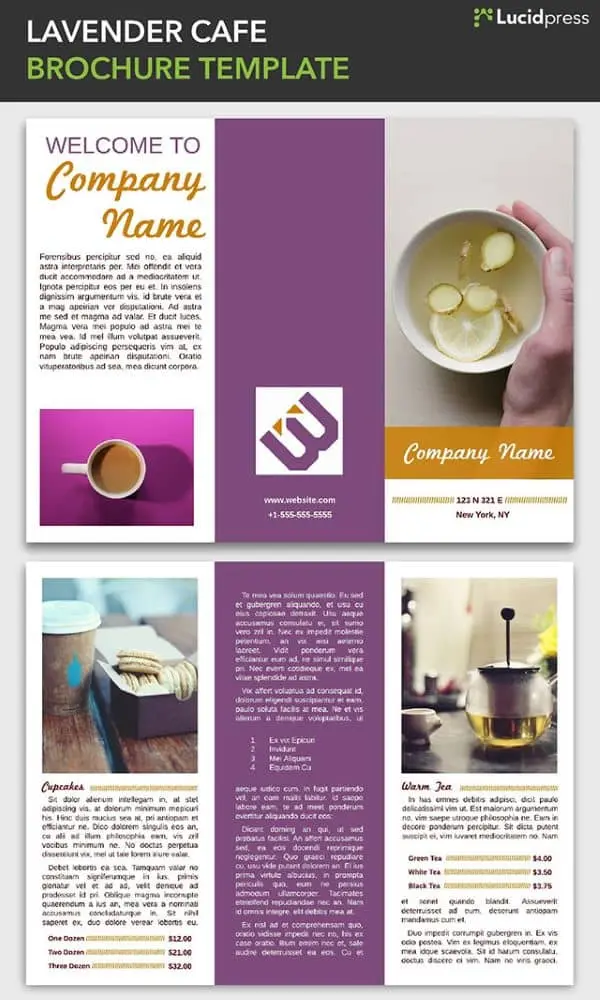
9. Melody CD Booklet Template
If you’re creating an album booklet for yourself or a client, this template provides a good foundation. It can also be a springboard for out-of-the-box brochure design ideas. The image-centric, booklet-style design is a sleek, artistic format that could give your brand a professional edge.
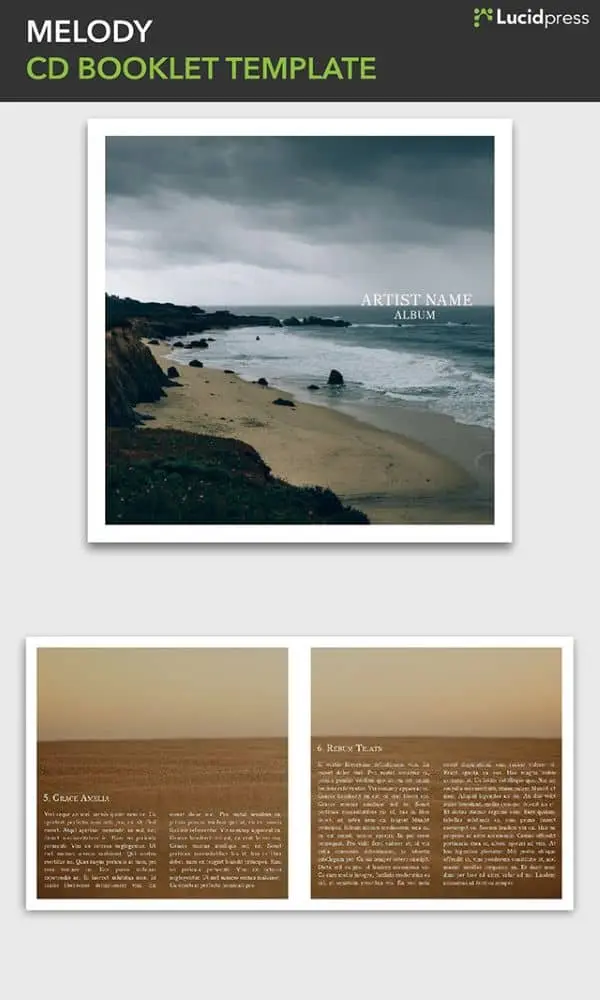
10. Avenues Real Estate Brochure Template
Real estate brochures are an industry standard, so you need yours to stand out. Plenty of space for images of the property as well as for your engaging descriptions makes this template a powerful tool in your real estate marketing arsenal.
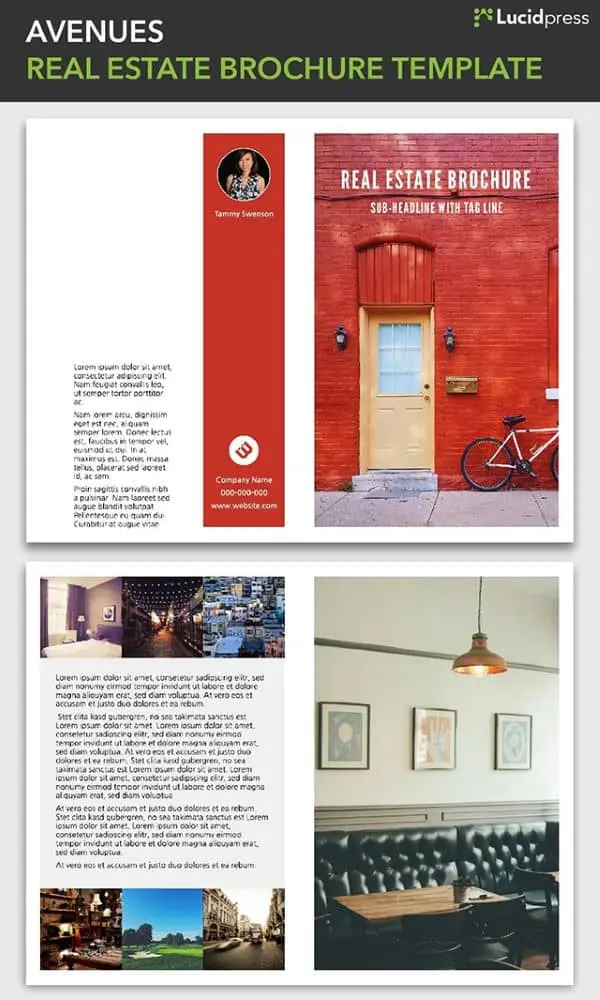
11. Visual tri-fold Brochure Template
This visual brochure template uses large photos through the middle of of each page and mixes regular text with bold to highlight important phrases.
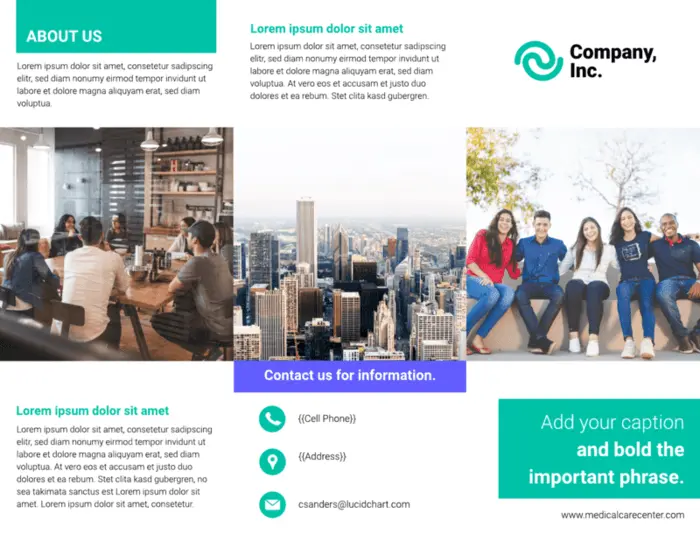
12. Brisk Pamphlet Template
The Brisk pamphlet template, ideal for both long-form and short-form applications, has a modern, edgy feel. At the same time, it’s clean and professional, giving your brand room to breath. Who says business can’t be stylish?

13. Contempo Brochure Template
Clean lines and compelling angles define the Contempo brochure. Assert your unique brand of corporate culture with a spin-off of this design. Or insert your brand colors and use it as-is for a progressive, well-groomed brochure.
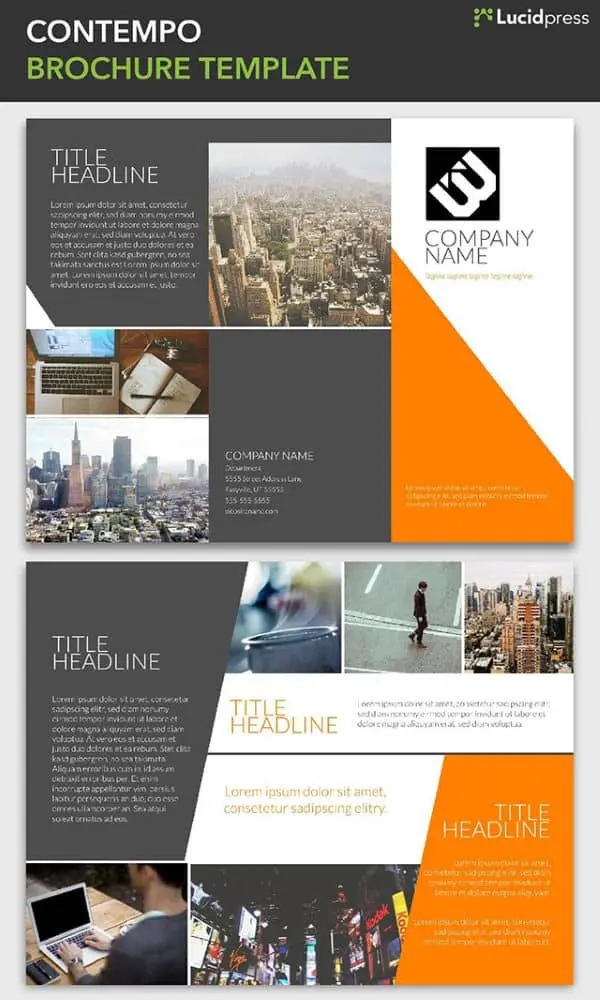
14. Grey Skies Pamphlet Template
Sometimes just a little bit of text is all you need. The image is king in this leaflet design, letting you give a visual summary of your brand’s core ideals. First impressions are important, and this design leaves them intrigued and wanting more.
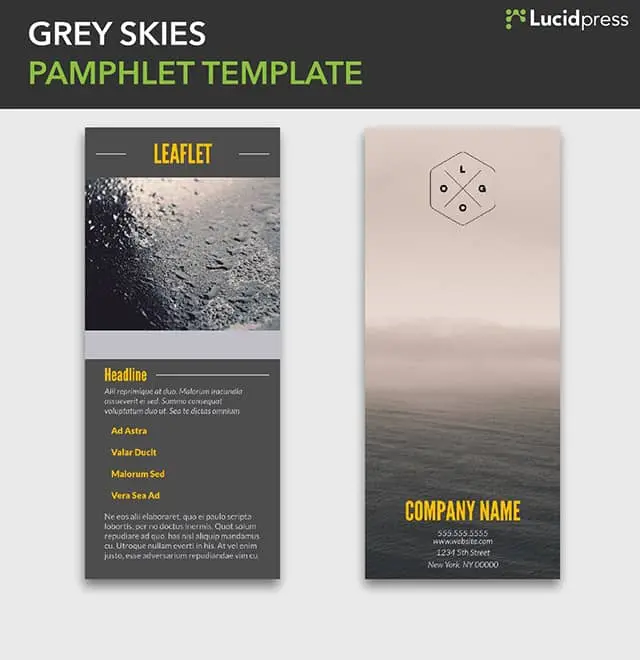
15. Oceanside Pamphlet Template
The Oceanside pamphlet template is still short and sweet, but gives you a little more room to write than Grey Skies, if that’s what the situation calls for.
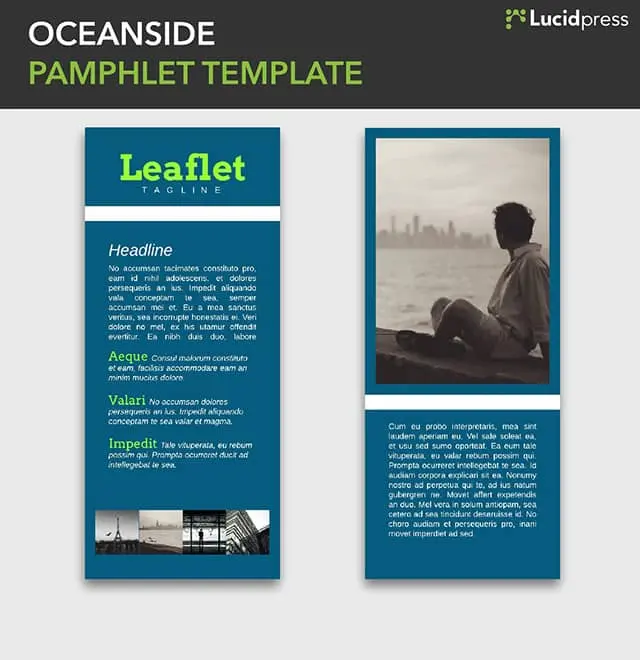
16. Residential Real Estate Brochure Template
The Residential real estate template has a warm, inviting tone that also feels very fresh and current. The way the text wraps around the images resembles a tour around a property, with the realtor pointing out the highlights to prospective buyers.
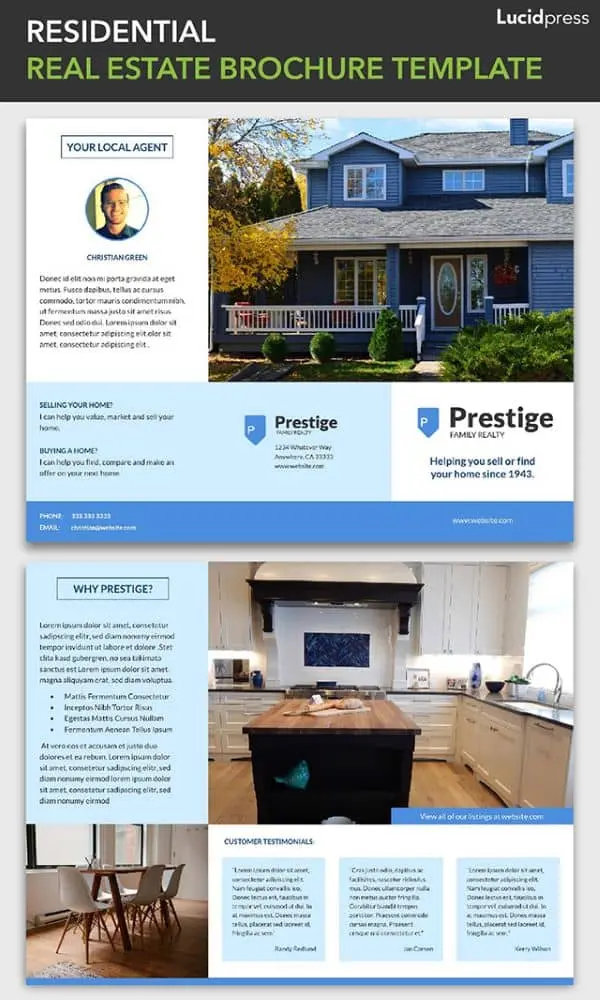
17. Mediterranean Brochure Template
Beautiful images make up the bulk of this brochure template, giving it an immersive and open feel. Blue tones and ocean-themed photographs call to mind the gentle lull of lapping waves and warm sand. Using the design of your brochure to create a distinct feel can solidify your brand for a customer before they even read a word of copy.
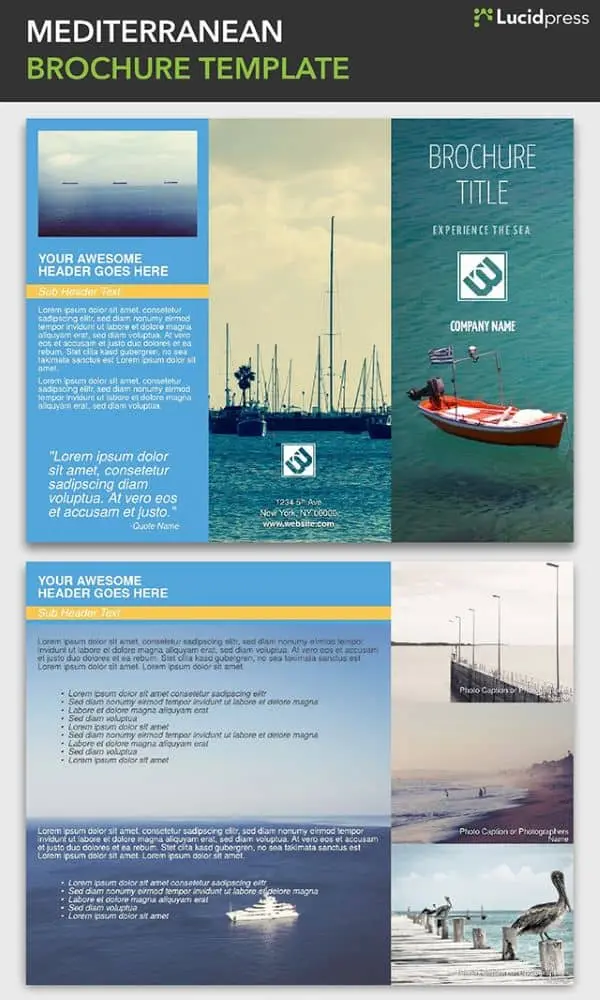
18. Big Sky Travel Brochure Template
The Big Sky travel brochure template is highly adaptable, with a blend of elements that are easily customized to match the look and feel of the destination. The front cover has space for three photos, immediately showing the diversity of the locale, and the layout of the text makes the most of the space without looking cluttered.
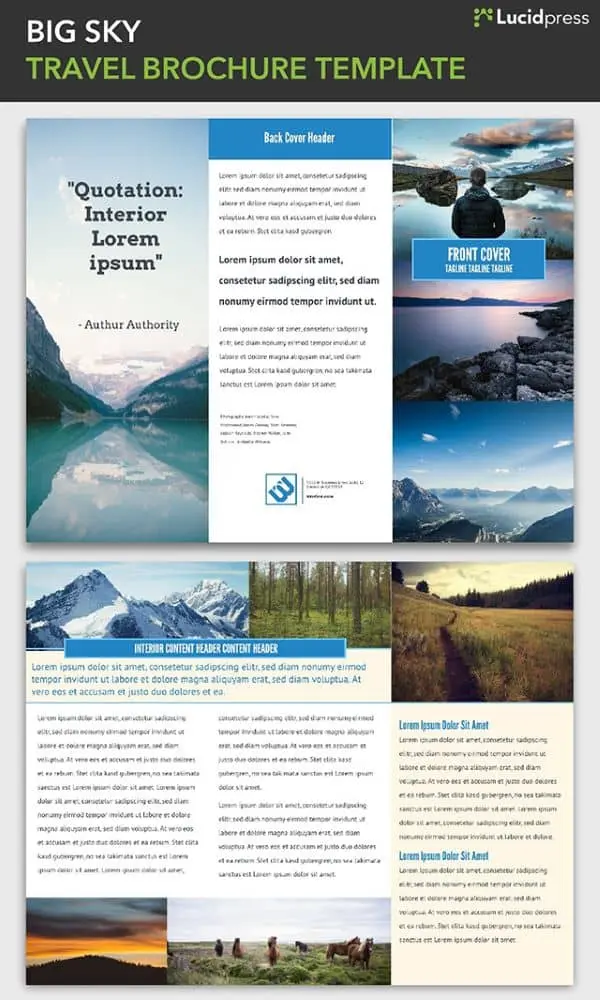
19. Prism Brochure Template
The pronounced angles of the Prism brochure template match the mountain resort imagery it riffs on. This template is excellent for relaxing spas and massage centers, tour companies and ski resorts, or for internal company announcements like an upcoming retreat.
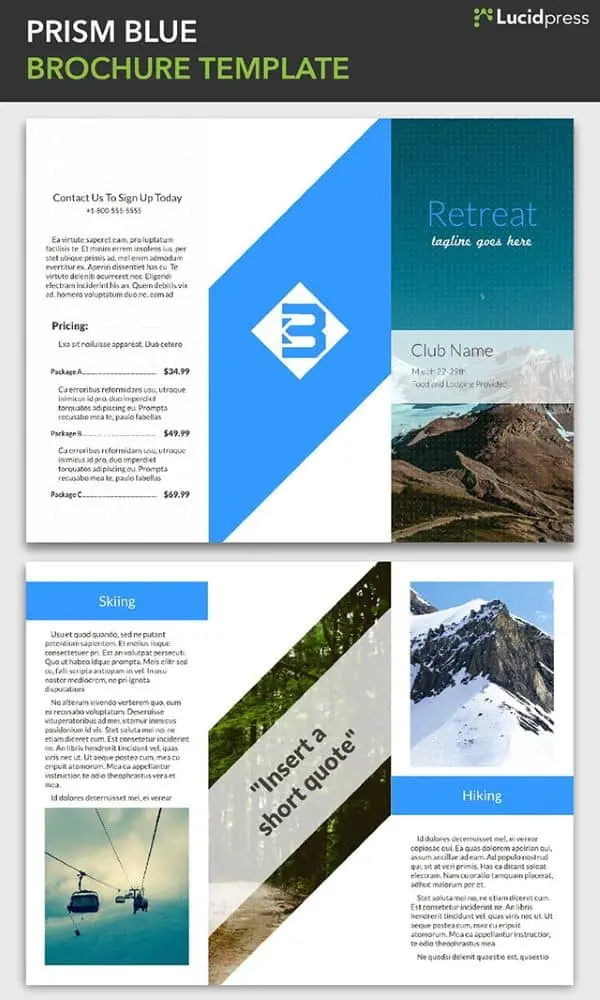
20. Golden Gate Travel Brochure Template
This template captures the diverse personalities of America’s favorite state (according to me). There’s the crashing surf, the vibrant city, quiet vineyards, and the intriguing fog of San Francisco. The main image on the cover sets the tone, while supporting images show the range of the featured destination.
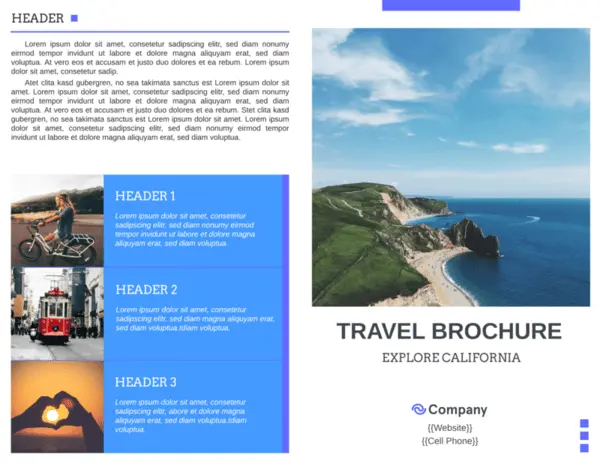
21. Commercial Real Estate Brochure Template
A subtle triangle theme in the Commercial brochure pulls the design together, with the three points of the triangle echoing the tri-fold style of the brochure. There’s plenty of space for text, but the layout is well-spaced and clean. The highly professional look of the Commercial brochure is perfect for real estate and corporate use.
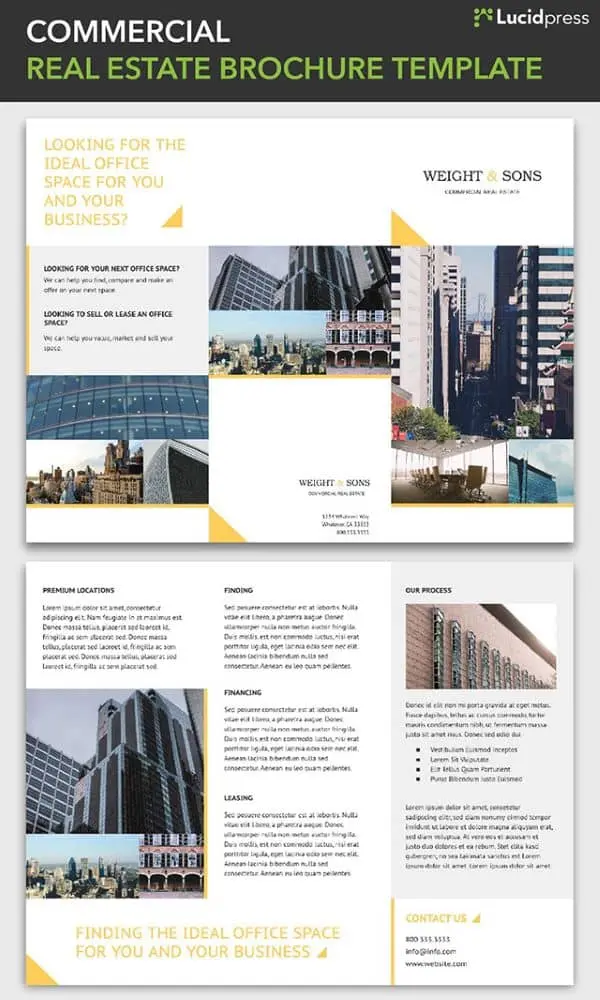
Now that you have some inspiration, or maybe picked out a template to use, a few design resources might be helpful. The first thing to consider is making sure the brochure you create is consistent with the brand you’re designing it for. The color scheme, photos, and font choices will all contribute.
If you’re wondering where you can find high-quality photos for your brochure, check out this post with tips for finding royalty-free images that aren’t corny stock photos.
Now go make something great.
Almost everyone has made a flyer before, whether for a personal event like a block party or a professional event like a company picnic. As a follow-up to our most recent post about magazines, we decided to put together this list of 17 flyer layout design ideas. If you want your flyer to stand out, ditch the boring old Word document and get inspired from these flyer ideas!
1. Bistro Restaurant Menu
Can a restaurant menu really be a flyer? You bet! Not everyone needs to read your full menu, unless they’re already sitting at a table. If you make a simplified, one-page version of your menu, you can print them out and keep them near the door for curious passersby. Then they can take them home as a handy reminder to return later! It’s the perfect way to advertise, tantalize, and stay top-of-mind.
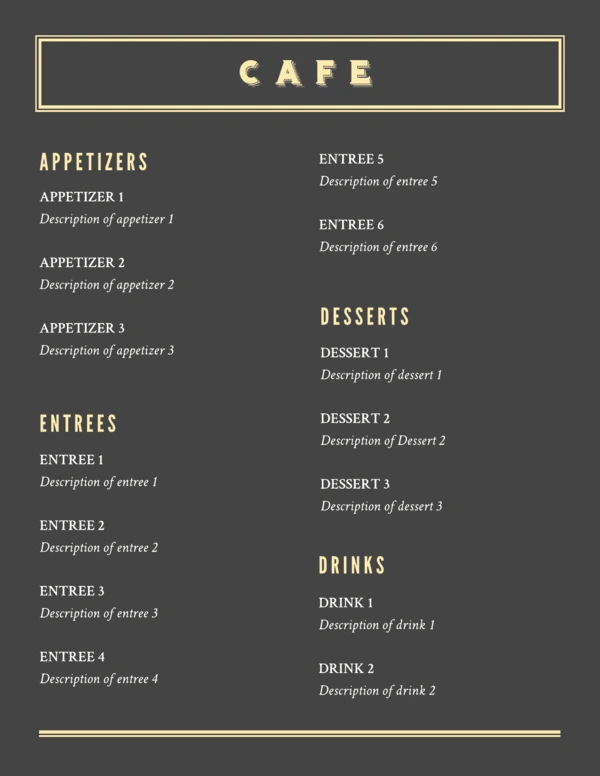
2. Block Party Flyer
Aha, there’s that block party we were talking about in the intro. Long autumn evenings are the perfect time to gather the neighborhood for a barbecue or potluck. A great-looking flyer will show them that, yes, this is a party worth attending. Or, hey, what about a street dance party? Talent show? The possibilities are endless and—given your dad’s amateur “jazz guitar” skills—endlessly entertaining.
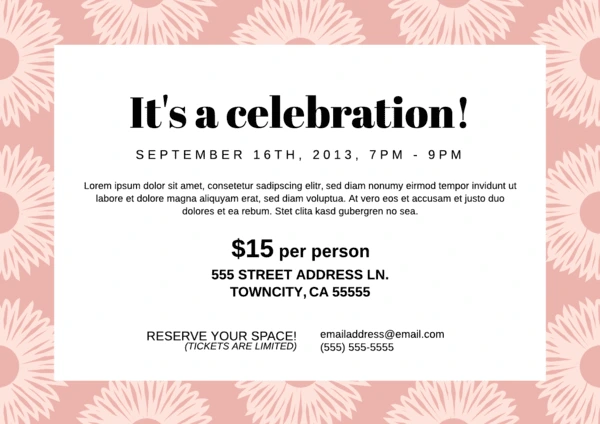
3. Bungalow Real Estate Flyer
Flyers have many professional purposes, too. For example, this real estate flyer makes it easy to showcase what’s on the market. With multiple places for photos, it’s easy to see how this design can be used for a single property (with photos of different rooms) or multiple properties (with photos of the outside). This flyer also includes contact details along the bottom, so interested buyers know how to get in touch.
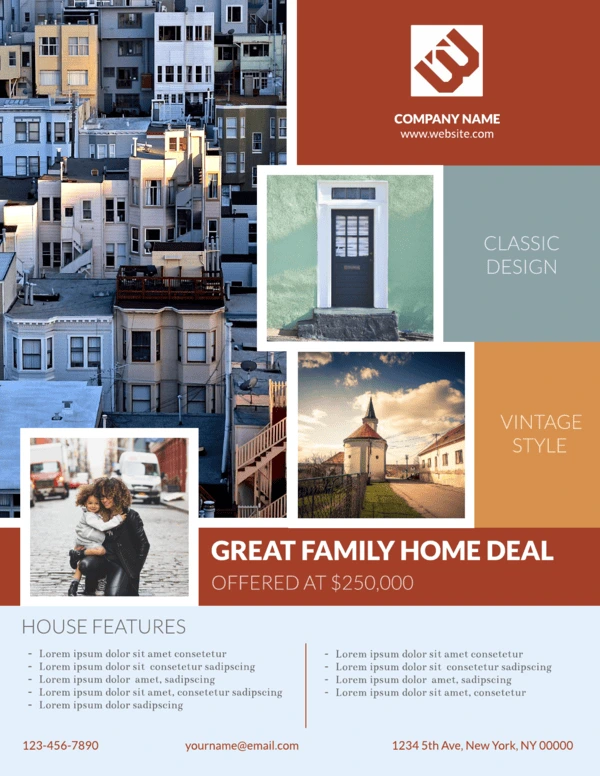
4. Cobalt Cafe Restaurant Flyer
Now here’s one idea to stand out—a horizontal layout. Neatly divided into four colored segments, this design uses shapes to create visual interest. The circular photo frames are great for showcasing menu items, or items that are part of a theme. For example, if you were hosting a game night, the items pictured could include dice, game pieces, and cards. Layouts are versatile, so you don’t have to stick to whatever the template’s called. Let yourself be creative!
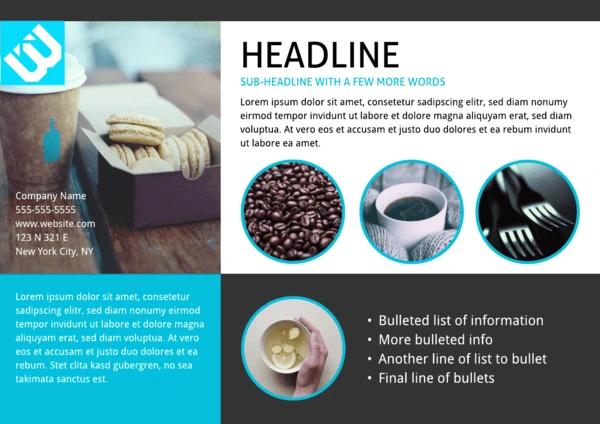
5. Cosmopolitan Business Flyer
With flyers, you tend to see two design choices. Either the flyer offers very little in terms of visual interest, or the content is lost in a sea of imagery. This is a pleasing balance of the two, where the upper half of the page is dedicated to rich photography while the bottom is reserved for bold copy. When you pass by this flyer on the street or in the hall, you definitely won’t miss the point. It’s a striking layout that’s easy to design and customize.

6. Cut Glass Digital Corporate Flyer
As a design element, color can be used to great impact, but it’s often underused in flyers. What’s so unique about this design is the way a sash of vibrant blue cuts across the monochrome page, drawing the eye down along with it. To take advantage of its pull, the bulk of the copy is positioned over the blue hue. When done correctly (i.e. high contrast images, spare use of color), this layout can be very effective.
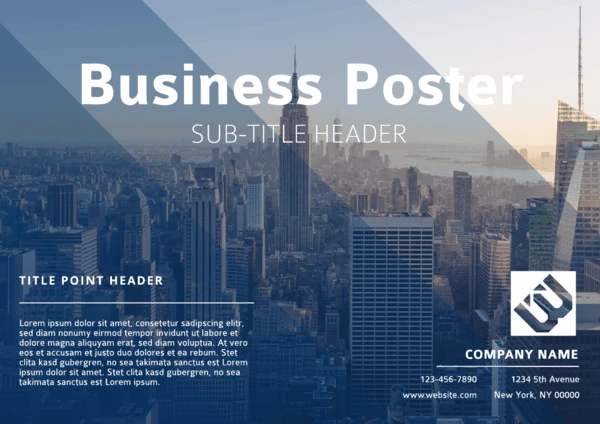
7. DJ Club Flyer
Club events are one of the most popular use cases for flyers. Surely you’ve seen them plastered around town, on college campuses, or on the walls of your favorite music shops. It’s a quick and easy way to spread the word, but because there are so many, these flyers have to be competitive. Big fonts, recognizable names, and captivating images can give your flyer an edge, so don’t be afraid to experiment.
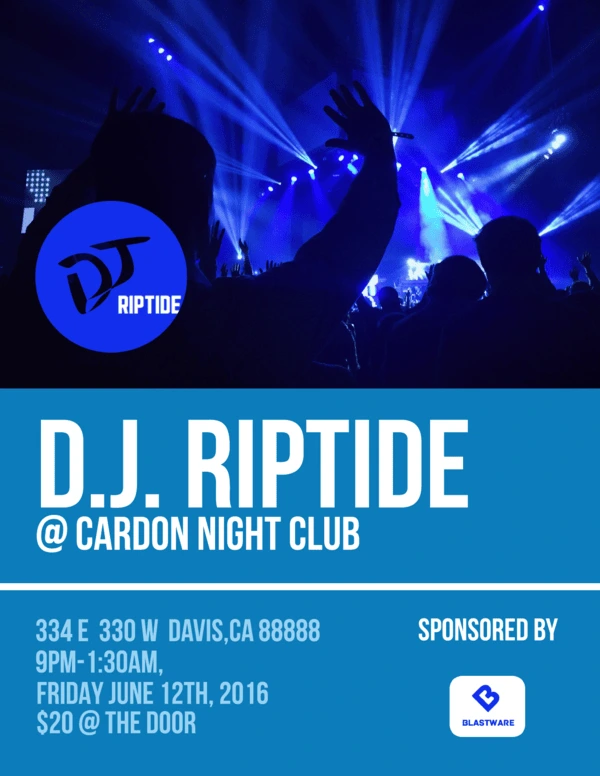
8. Gym Fitness Flyer
If you’re running a subscription-based business, it’s critical to draw people in with compelling advertising. This flyer layout contains several persuasive elements that you can use to punch up your design. For example, a big “hero” image has the power of suggestion. Red is a power color that attracts the eye, so it’s smart to put a bold headline over it. This one emphasizes affordability, with a coupon just below it to sweeten the deal even further. Add bullet points and contact details, and you’ve got a solid single-page flyer layout.
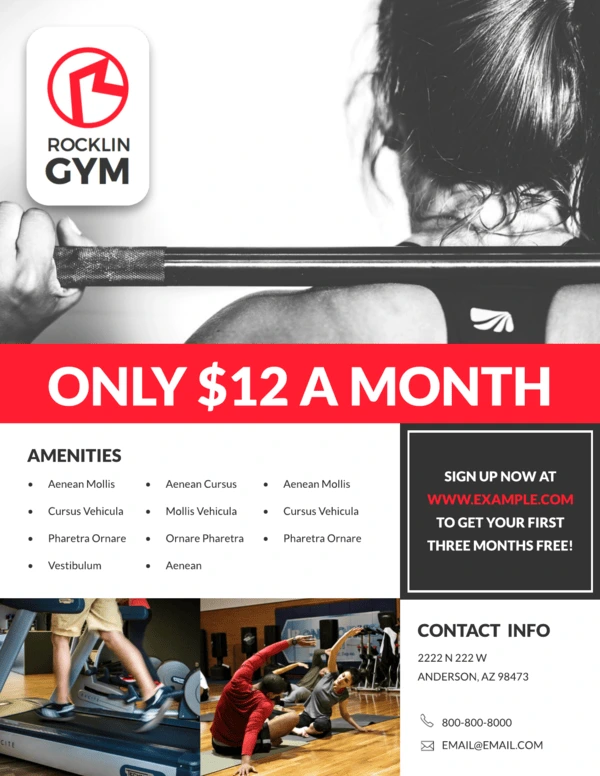
9. Nature Retreat Business Flyer
Sometimes the imagery matters more than the text. In those situations, a horizontal layout offers ample space for pretty photography, like landscapes and nature shots. This design takes advantage of transparent text to include needed details without detracting from the background. Depending on the image you’re using, elements can be moved around to accommodate it.
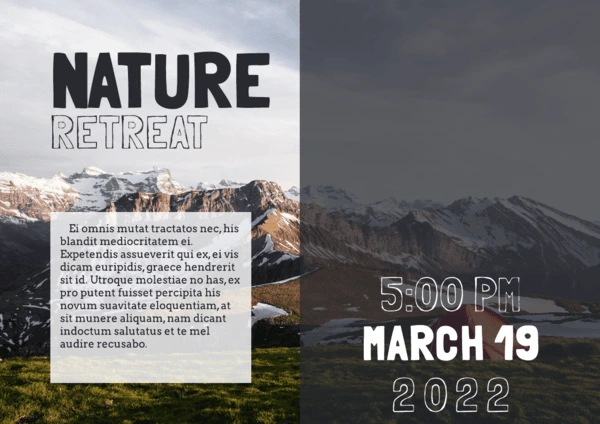
10. Night Life Club Flyer
Concerts are another type of event that depend on flyers to attract an audience. The design will really depend on which artist or band is playing, since they each have their own style. But for a clean, chic layout that works for almost anyone, try out this design. We chose a triangle here, but if you open the template, you’ll find that other shapes work great, too. Each one provides a different vibe, so play around until you find one that you like!
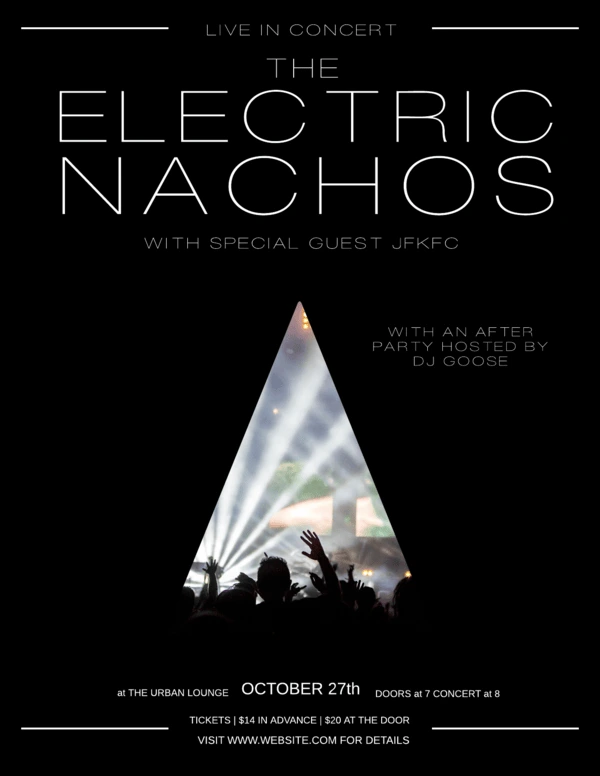
11. Origami Banner Event Flyer
It might seem difficult to create the illusion of depth on a one-page flyer, but it certainly can be done. This layout uses a couple of visual tricks to make it happen. First, the background is an image of rolling hills, giving the viewer a familiar sense of perspective. Next, the content boxes have an added flourish: a darkened, shadowed triangle. It looks as though the content is floating on folded pieces of paper!
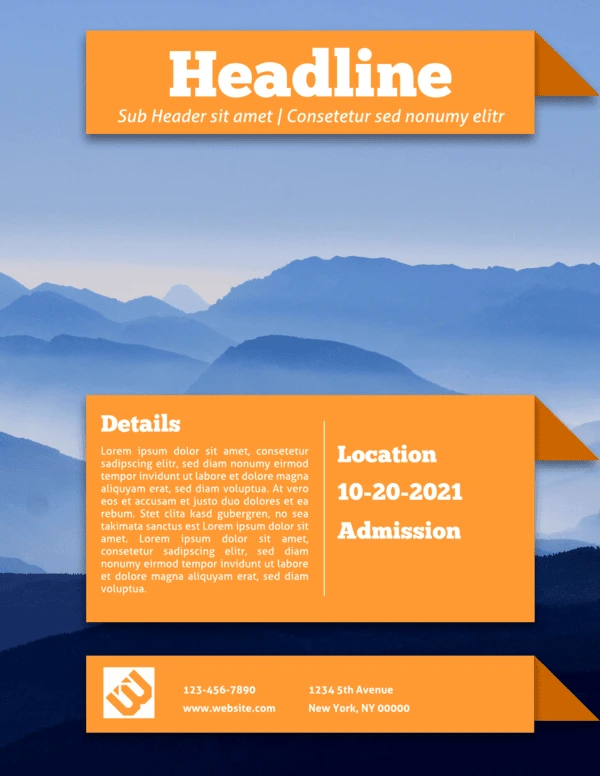
12. Reflections Product Flyer
Maybe you don’t want your flyer to be whimsical. Or fanciful, or fantastical, or any other flimflam. Maybe, like the lawyer Wayne Jarvis of Arrested Development, you describe yourself with only one adjective. Well, in that case, your flyer needs to match. This design is official and confident in its authority—but also rendered in warm grays to keep it from being too coldly corporate. If you need to communicate essential information, this flyer design can’t be ignored.
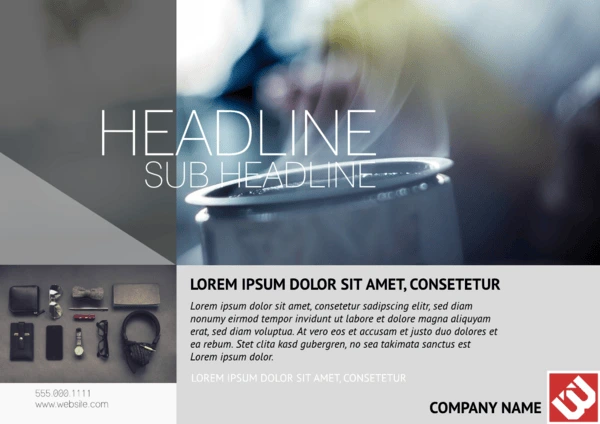
13. Simple Educational Flyer
Flyers have their place in education, too. For students, this usually means firing up Microsoft Word and struggling to create a project that doesn’t look either boring or terrible. No more! A simple, elegant design like this is easy to fill out in minutes, and it prints out like a dream. Just goes to show that flyer layouts don’t have to be complex to be attractive.
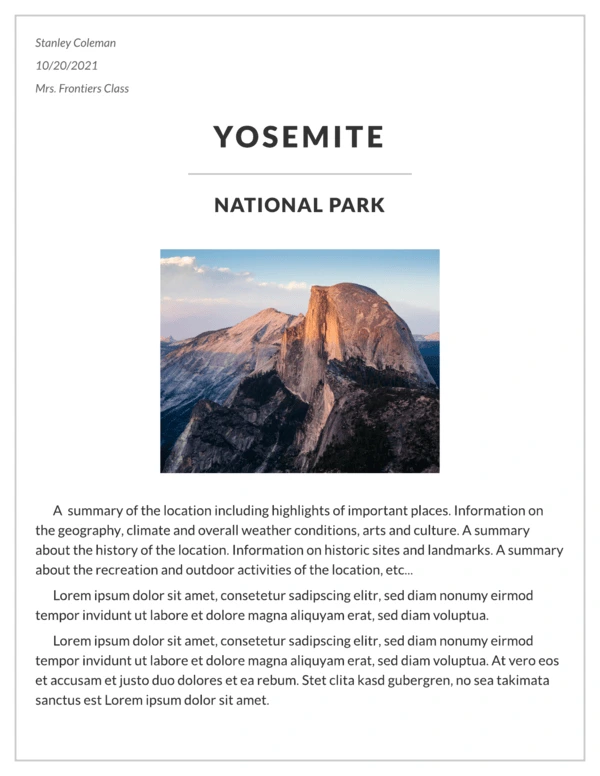
14. Simple Promotional Flyer
Short, sweet, and to the point—that’s how you might describe this flyer layout. If it reminds you of online advertisements, there’s actually a good reason for that. Unlike most flyer layouts you’ve seen before, this one is digital, hence the callout button daring you to click it. A digital flyer layout like this can be embedded on a page or used in email campaigns to help customers find your latest sales and promotions.
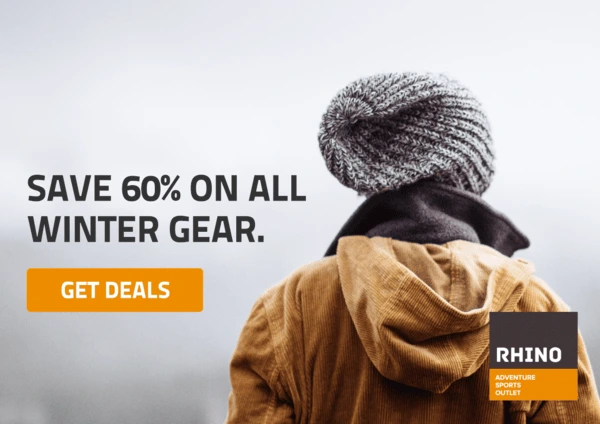
15. Standard Advertising Flyer
This flyer layout design is about halfway between the last flyer and a full brochure. So if a brochure would be too much, but you still want to give them a better lay of the land, this feature-packed layout might be the perfect solution. Because of the smaller font sizes, it’s not a good choice for a hanging flyer, as people will pass right by it without gleaning any details. But from person to person, especially in a sales environment, it provides valuable info with a closer human touch.
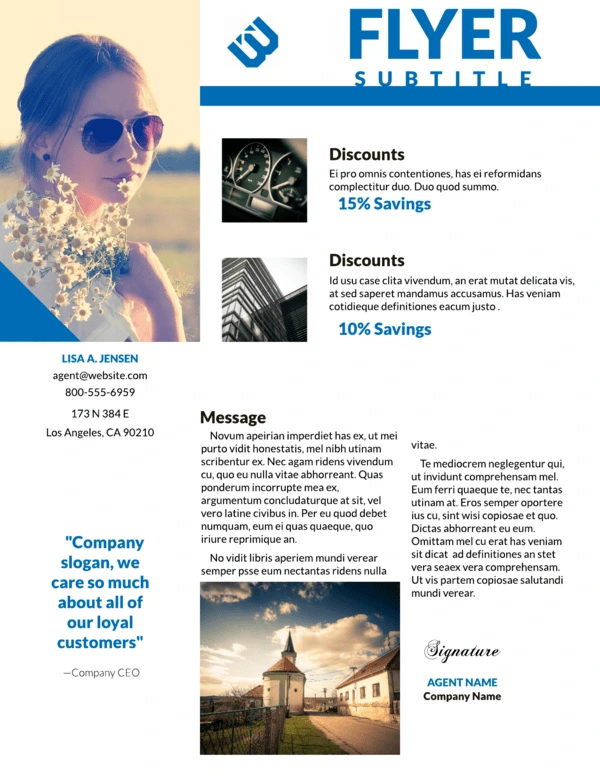
16. Swiss Alps Company Flyer
What’s one good way to create a distinctive, interesting flyer design? Don’t think of it merely in terms of what it’s for—like a company event flyer, for instance. Instead, pick a theme inspired by world culture, and incorporate its most recognizable elements into your layout design. This retro flyer borrows colors, fonts and symbols from the Swiss to promote a yearning for travel and nostalgia. Now that company ski trip looks a lot more alluring, doesn’t it?
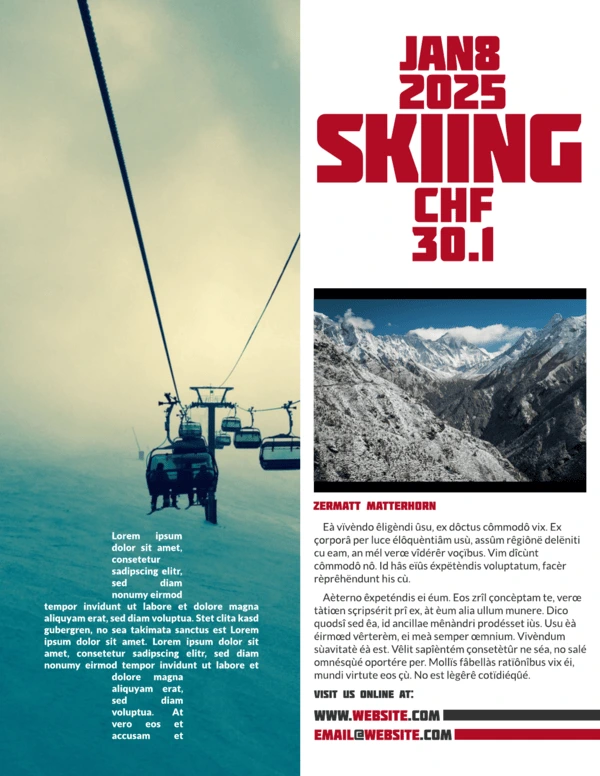
17. Travel Real Estate Flyer
How can you include a wealth of information on your flyer without overwhelming the design? This layout offers some great ideas. The top half of the page features a nice, big photo. The bottom half is split into neat boxes that tell you everything you need to know. It would’ve been easy to accidentally clutter up the page, but the shapes and spacing give it plenty of room to breathe.
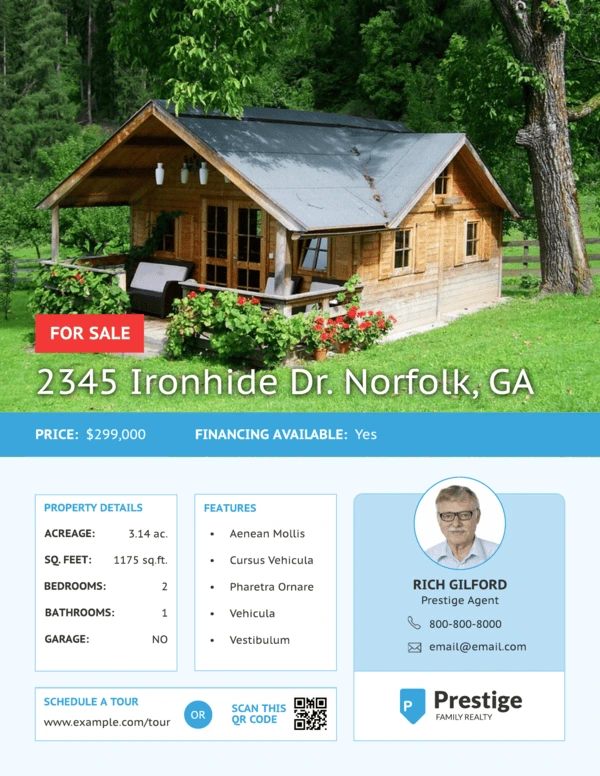
And that’s our round-up! See any ideas you like? Hopefully, these examples can give you a quick burst of inspiration, so before you know it, you’ll have a gorgeous flyer that you can’t wait to share.
Ready to design a new flyer? Give yourself a leg up, with our free flyer templates & layouts. See you there!
Physics is to Albert Einstein as branding is to David Brier.
A walking, talking brand himself, David Brier graced our screens three weeks ago for a webinar that divulged the 19 questions every organization should ask before rebranding.
I have to admit, I expected all the cliché questions: Who is our audience? What is our core strength? Yadda, yadda, yadda. But David proved he isn’t a world-renowned rebrand expert for simply stating what I already learned in Marketing 101… he’s world-renowned for asking the kind of questions that require intense (organizational) introspection. Questions that actually make you think.
Intrigued? Watch the full webinar here and read to follow along.
David Brier’s draw can probably be attributed to his three decades of branding experience, but on a personal note, I think the bold, in-your-face personality may have a little something to do with it too. Case in point? “I’ve been compared to a triple-shot espresso.”
His words, not mine!
Now… sit back, relax, and let me take you on a journey through David’s mega-marketing mind as I summarize some of the insights we learned during his webinar. And remember, you can always just watch the recorded webinar in full if you’d rather hear it straight from him.
Why do companies rebrand?
Here’s a shocking fact:
For some reason, we as marketers can forget this minor detail. Entire populations who were once our brand loyalists don’t stay that way forever. They’re replaced by an entirely new generation of new human beings with new opinions and needs. Which means you need new messaging.
In David’s words: “With today’s technology, these changes are happening faster than ever. To stay relevant, sometimes the correct strategy is a rebrand.”
So we embrace the fact that the world constantly changes, we stay relevant, and we resonate with the new generations as they come. Easy, right?
Well, as David points out, companies repeatedly struggle to pull off an effective rebrand.
It’s that wall. No matter how hard you market and how targeted your campaigns are, there still seems to be a disconnect between you and potential customers.
The problem? Clichés.
David explained how certain phrases like “state of the art,” “knowledgable staff,” and “caring customer service” (who talks like that, anyway?) can alienate companies from their audience and be too predictable to hold interest.
More importantly, clichés distract from good branding.
Branding the right way
According to David, the definition of good branding is good differentiating. No surprise there, right? Stand out from the competition and potential customers will notice you more. As David reminds us: “Differentiating is not a luxury. You differentiate if you want to survive.”
You differentiate if you want to survive.
Now that’s a bold statement.
He’s got a point, though. The great thing about David is that he doesn’t make a bold statement without something to back it up. In this case, that something is a slew of real-world examples. Real brands that had real problems until he swooped in and differentiated the heck out of them. I’ll let you discover the intriguing before-and-after brand transformations when you watch webinar in full.
The 19 rebranding questions
The stage has been set. We understand why companies rebrand, what branding is, and why it matters. Now for the hard part—how to actually go through with a rebrand.
It’s about time we dive into the 19 questions, isn’t it?
I’ll cover the first five questions here. If you want the remaining 14, I’ll let you watch David reveal the rest himself.
Rebranding question #1: Why are we doing a rebrand?
Seems like an obvious question, but as David points out, many companies make the mistake of rebranding simply to rebrand—to be “prettier” and to change things up. But rebranding is not worth the time and money if it doesn’t revolve around strategy and relevancy.
Rebranding question #2: What problem are we attempting to solve?
Does your packaging get lost on the shelf? Is your product not valuable to customers once they get it? Figure out the problem you are trying to solve, and let rebranding help fix that problem. If you don’t have a clear objective to your rebrand, rebranding really won’t do you much good.
Rebranding question #3: Has there been a change in the competitive landscape that is impacting your growth potential?
As much as we’d like to think our brand isn’t impacted by the decisions of other brands, it is. No brand exists as an island. You always have to be watching the landscape around you, and be nimble and fluid in response.
Rebranding question #4: Has our customer profile changed?
Yesterday’s innovation becomes today’s normal, and new innovations can drastically change our customer profile. Don’t blindly base your strategy on information that could have been relevant for your audience five years ago but has no place in your brand today.
Rebranding question #5: Are we pigeonholed as something that we (and our customers) have outgrown?
Many times, businesses evolve as they grow. They start out with a certain focus, then shift that focus as time goes on. For example, a 25-year-old dance institution that still used a ballet dancer in their logo admitted to David that ballet now accounted for only 15% of their training. It’s a prime example of a brand pigeonholing themselves by not keeping up with their own evolution and growth in their branding.
As for the last 14 questions, they really are worth reviewing. David’s tips are chock-full of insights that get you to fight for your rebranding strategy—to really have a reason for how and why you’re doing it. A true rebrand should be hard—it should challenge your fundamental beliefs about your organization and spark new ideas of how to better hone in on the core value it provides.
Thinking about a rebrand? If it’s time for a brand intervention, you won’t want to miss our webinar with branding expert David Brier.
To the average person, designing logos seems like a simple task—you just make a small circle or rectangle and put the brand name on it. But of course, it’s not nearly that easy.
Related: 9 excellent logo redesigns for famous brands
To help a brand capture its personality and really stand out takes a lot of careful consideration and design iteration. If you’re new to the field of logo design, here are 8 tips for designing logos that don’t tread on overly well-worn ground.
1. Avoid clichés
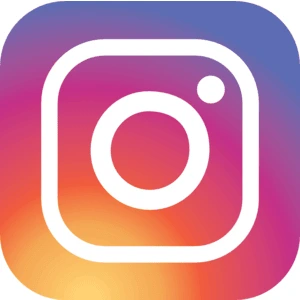
Every year, we see innovative trends in logo design. It’s good to keep up with trends and experiment with them for yourself, but don’t fall into the trap of using the same idea over and over.
For a few years, the “hipster” logo was very popular. Featuring a pseudo-vintage look, these logos eschewed simplicity in favor of lots of text and symbols. This look became so ubiquitous that it became a joke within the design community, spawning satirical sites like Hipster Logo Generator.
A current design trend to keep an eye on is gradients. Gradients have been a big no-no for at least two decades, but they’re now enjoying life in the limelight again. You don’t have to look any further than the recent Instagram rebrand to see it in action.
In the long run, it’s a better idea to stick to solid design principles and avoid clichés.
2. Embrace unique design

Originality and uniqueness make it easier to catch a viewer’s eye, and custom lettering is a great way to embody both traits. Additionally, it’s harder to copy than a commonplace font.
The quintessential example of custom lettering is, of course, Coca-Cola’s logo. As one of the world’s oldest and most established brands, Coca-Cola’s logo has stood the test of time and continues to be instantly recognizable.
3. Create a visual double entendre
What’s a visual double entendre? Essentially, it’s a double meaning. If designed in this way, a single logo can give the impression of two different images.
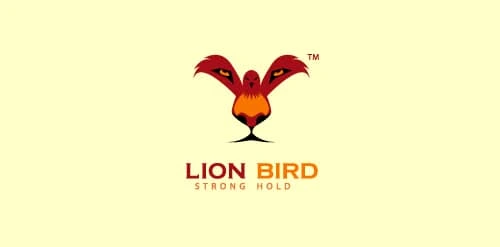
For example, in this logo for Lion Bird, you can see two animals: a bird opening its wings and the face of a lion. Viewers love designs like these because, once they discover the double meaning, they feel like they’re in on a secret.
4. Don’t underestimate color
Color plays an integral role in logo design, and its importance cannot be understated. A brand’s color palette sets the tone for its communications, and people often remember a logo by its colors.

You know these by heart: Home Depot is orange, Target is red, Starbucks is Green, Facebook is blue, UPS is brown, and Apple is white. While colors are shared with countless other brands, these brands have been able to lock down these colors in consumers’ minds.
5. Create a sense of motion
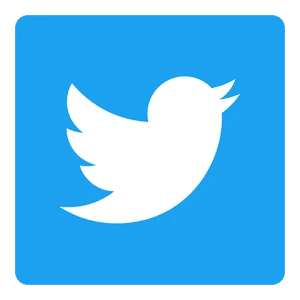
It’s possible to create dynamic logos that invoke a sense of motion without actually moving. The advantage of this over, say, a GIF design is that GIFs aren’t supported in every medium—like print, for example. Creating a sense of motion in a still image will help to preserve the brand message everywhere.
Twitter’s logo is a great example of this. In the past, the bird was sitting down in a passive stance. Now it’s moving upward in flight, reflecting Twitter’s speed and its evolving technology. This tactic works well for brands which have mascots.
6. Keep it simple
In logo design, simplicity is certainly the best policy. Simple, powerful logos are often the winners in the long run. For example, Apple and Nike’s logos are simple but well-known among millions of people.
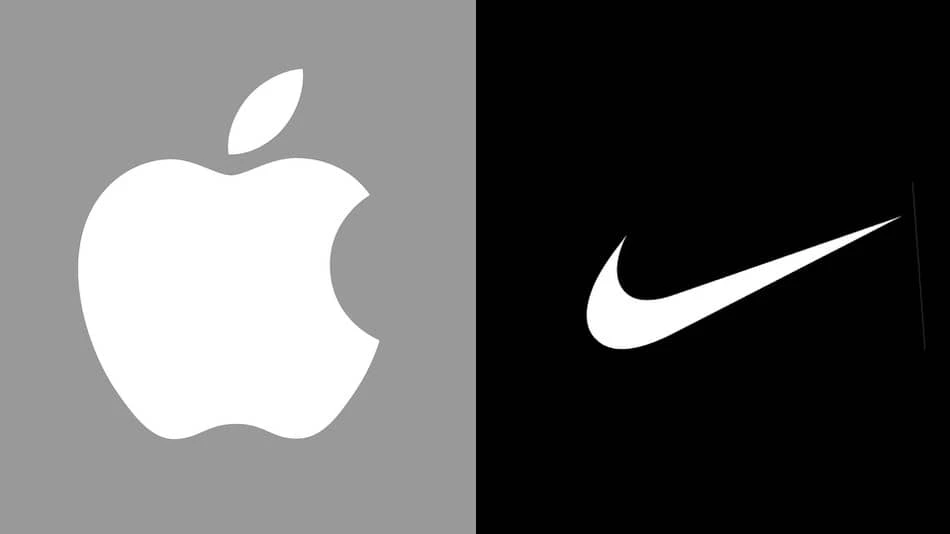
Remember: even though simple design is the goal, it’s still important to be unique. Would Nike still have succeeded with a traditional check mark? Would Apple’s logo still be as compelling without that bite taken out?
7. Remember balance & symmetry

Keeping the previous examples in mind, you can see that balance and symmetry are vital factors in logo design. Look at how Apple’s logo employs proportionate circles along with symmetry to maintain balance and aesthetic quality.
8. Tell the story behind your logo
Every logo has its own story. In some cases, the story is almost as interesting as the logo itself. Either way, storytelling can draw people into your brand, so make it count.
Do you know the story behind Apple’s logo? Ronald Wayne (sometimes called Apple’s third founder) designed a logo in which Isaac Newton sat under a tree with a bright apple shining above his head. A year later, Steve Jobs commissioned another logo. The reason? He thought people might confuse the original image for a tomato. Thus, the apple with a bite was born.
We hope these simple tips offer a peak into the complex world of logo design. By following this advice and avoiding the pitfalls, you should be well on your way to brainstorming a compelling logo for your brand or business.
Learn more: Do you know the 10 essential brand assets for digital success?
Many of us are familiar with the maxim “Don’t mistake activity for productivity.” It refers to people who juggle multiple tasks, under the guise of staying busy all the time, without ever inching towards their goal. Their time is completely wasted in thinking about what to do next—leaving no time for the actual job at hand.
To bring a renewed sense of productivity to your work life, we offer this list of 7 ways to use your time more wisely.
Related: Productivity tips for businesses
1. Prioritize your projects
Prioritization is not only about completing more tasks within a stipulated time frame; it also refers to eliminating unnecessary tasks. Planning and prioritizing offer clarity of thought when you feel like procrastinating. When backed by strong reasoning, prioritization empowers you to focus on the most important target, while shelving unimportant work for later.
2. Know yourself—and avoid comparing yourself to others
It’s up to each individual to discover their most productive time of the day. For some, early mornings bring a rush of energy, while for others, late evenings prove best for tasks that demand concentration and mental agility. This self-awareness relieves the confusion of how and when to engage in focused work, helping you make the most of your time.
Work as though you’re running your own race. Your thoughts and efforts should be focused on completing the task at hand—not getting bogged down by others’ expectations or worrying about how they will meet their own deadlines. Do away with the urge to seek validation or compare yourself to others, and pour that time and energy back into your own work. The results of your work will be better, and you’ll avoid a lot of unnecessary stress along the way.
3. Make time for your passions
A clear-cut timetable that balances work with play is imperative to striking the right work-life balance. Irrespective of the task, everyone should engage in hobbies and sports occasionally to bring variety, excitement and rejuvenation into their lives. Good hobbies are effective stress-busters, so make space for them in your daily or weekly timetable. Not only does it give you something to look forward to, but you’ll be more relaxed and prepared to tackle the day when you return to work.
4. Unlock the power of saying “No”
Don’t bite off more than you can chew. While proving one’s competence at work is always a concern nagging at even the most accomplished of us, it’s important to be firm in setting realistic boundaries about what you can and can’t deliver. We all have our limits, and if you think you’re going to burnout from work stress, learning to say “No” to extra assignments will save you in the long run. Rather than spreading yourself thin across a variety of projects, you can dedicate yourself to excelling with your most important ones.
5. Resist the urge to multitask
Doing one thing at a time is the secret behind improved productivity. When we’re in a race against the clock, we’re all tempted to indulge in multitasking, hoping to complete several jobs within a stipulated time. But none of us deliver our best work this way. The lack of focus and concentration impairs the quality of our creativity, our decision making, and our results. Errors could even lead to repeat work, which defeats the whole point of saving time in the first place.
If you have several items to focus on within the same day, try segmenting your work time into short, focused bursts. The Pomodoro method is a popular strategy where you spend 25 minutes working and 5 resting. This way, you’re still focusing when it counts, but also giving yourself the freedom to jump between different tasks.
6. Use reminders to stay motivated
The clock is ticking, and with every passing moment, you should be moving closer to meeting your deadlines. When every second counts, it’s critical to stay motivated. Staying motivated will help you push yourself and inspire you to reach ever further to accomplish your goals.
What motivates you? Write it down, and take a moment to review whenever you feel yourself flagging. You might even bring photos to your workplace that remind you of what you’re trying to achieve. Maybe it’s photos of your family, a gorgeous vacation destination, or an aspirational business card. Having a tangible reminder of what motivates you can provide that last burst of energy you need to cross the finish line.
7. Be honest about your progress
Did your work today bring you closer to your goals, or did you just have a busy day? Honest introspection should become a daily practice as you find out which productivity methods work best for you. Take a few moments at the end of each day to meditate on what went well and what didn’t. Consider taking notes so you can tweak your methods as you go along.
There’s much pleasure to be had in this time-bound journey called life, and it’s important to live each moment to the best of your ability. Discipline and repetition form the key to transforming your habits. We hope these tips help you enjoy more productive and fulfilling days.
Want to save even more time? Lucidpress makes it easy to create beautifully branded content in a matter of minutes.
Building a local brand is tough. Even if your business is in an area with significant foot traffic, developing your brand within the community is critical if you want to be successful in the long term.
Usually, when people talk about branding, they’re often referring to large companies with a proportional budget for their marketing strategies. However, brand building is essential for local businesses, too. It’s what will set you apart from your competitors and determine how your customers perceive you.
Luckily, to develop a local brand, you don’t have to break the bank. Here are five important tips to keep in mind for branding your small business.
Create local partnerships
Team up with other local brands, and make sure that your objectives align or complement each other.
If you’re unsure how to connect with other business owners, you can join local chambers or community service groups to expand your network, especially if you’re just starting out. Then, you can partner up for campaigns that promote each other’s brands.
Another way would be to reach out to local leaders of your community and help them where they are struggling. This gives your brand a social cause and shows that you value giving back to your community.
Simply put, building a trusted brand is much easier when you form connections locally.
Build relationships with the community
Small towns are all about building relationships and trust. If you show that you care about your customers—which you should, since public opinion of your brand can make or break your business—you’re more likely to earn their trust and, even better, their loyalty.
To make this happen, you should actively listen to their feedback, be responsive to messages and inquiries, tackle complaints as fast as possible, and resolve issues. All that is to say: provide excellent customer service.
Leverage social media
These days, if a brand does not have a social media presence, it may as well not even exist. It’s that important. Especially among millennials and the younger generation, social media is a must-have.
It’s also a great tool for promoting your brand to potential customers; let them get to know it, and show different aspects of it. Social media is one of the best ways to interact with your current customers.
You can use social media to show that your brand cares about its community by sharing any local news you think will be of interest to your audience.
Establish a local SEO presence
There’s no getting around it: SEO is one of the most important tools in a brand’s arsenal to generate new leads and develop awareness. Many of the searches people perform on their phones today are location-based—meaning they’re looking for businesses around them to meet their needs in that moment. Your brand should be right there in the search results, waiting to take care of them.
Investing in SEO can effectively build your online search presence and have a monumental ROI for your business. If you do it correctly, this can become a continuous source of new traffic and leads.
Some tips to optimize your website for local search:
- Claim your business page in Google My Business
- Verify your local address with Google
- Make sure your business’s name, address and phone number are consistent across all business directories
Control your online reputation
Online reviews are an important ranking factor in local search. Perhaps more importantly, they influence purchase decisions. Businesses with a low star rating or a low number of online reviews are ofen overlooked by customers. Reviews also provide a valuable source of feedback as the business identifies potential problems and improvements.
Tips for getting more online reviews:
- Send the invite before the customer leaves your business
- Make it ridiculously easy to request a review and to give a review
- Send review invitations via text
Give back
Giving back means different things for different people, but it all depends on what you can do for the community. For example, you can offer to mentor another business owner and show them the ropes, so to speak. Or, you can volunteer for a local program. Lucidpress has a team of volunteers that deliver Meals on Wheels each day to local seniors.
Another idea is sponsoring local events (e.g. farmers markets) or sports teams, which is an effective way of getting your brand exposed to many people in the same area—and building a positive perception of your brand.
Aside from the business benefits, doing good for the community is rewarding in its own way. It feels great to get out of your bubble and do something for others.
Be consistent
I love this quote from former Disney CEO, Michael Eisner:
A brand is a living entity—and it is enriched or undermined cumulatively over time, the product of a thousand small gestures.
Your brand is being shaped every day by the thousand small gestures your customers (or potential customers) are getting from your company. A gesture might be an interaction with one of your employees, a post on your company’s Facebook page, or even a direct mail piece you send out.
If all these things contribute to building your brand, it’s vital to be consistent with each gesture’s message.
So, these are some essential tips to keep in mind if you’re looking to build a local brand. If you follow this list of advice, you’ll be one step closer to making your brand a success.
How to have more consistent local branding:
Tip #1: Establish brand guidelines.
If you don’t yet have brand guidelines, create them. If you do have brand guidelines, revisit them and make sure they are up-to-date.
Tip #2: Make your brand guidelines easy to find.
The issue at most organizations is simply that their brand guidelines are too hard to find. The best brand guidelines are useless if they’re too difficult to find.
Tip #3: Pick the right brand champion.
I’m curious: how would you answer this question? Who in your organization has the PRIMARY responsibility to manage and protect how your brand is used? Initially, I would’ve thought that, for most organizations, the designer or senior creative person has the primary responsibility to manage and protect the company brand. I mean, they’re the ones doing all that “branding stuff” all day, right?
In our survey, CMOs/CEOs won far and away.
If brand consistency is important to your organization (which it should be), primary responsibility for managing and protecting the brand should fall to the CMO or another member of the executive team. When senior management recognizes the importance of managing the brand, it sends a clear message to everyone that the brand is worthy of protection and investment.
Know the differences between local audiences.
This is all about knowing your customers. Once you know your different customer segments, you can understand the differences between them.
For example, if you own a car dealership and have one location in a more affluent neighborhood than your other locations, you might notice that the affluent buyers are looking for something different than the buyers at your other locations. Maybe they want to see cars with leather and sunroofs. Your marketing at this location should highlight these things.
On average, people who live near big cities spend nearly two hours each day commuting to work and back. This adds up to more than 500 hours—or around 21 days—per year! [] That means most of us spend up to three weeks of our year on commuting to and from work. Geez.
Related: 9 tips to master your morning routine
However, it doesn’t all have to be lost time. You can use your morning and evening commutes to add a little something extra to your day. Here are 10 practical ways to make your commute a productive one.
(Of course, some of these will depend on your form of transportation. If you’re a passenger in a vehicle or on a train, you have more options. If not, use your best judgment and always drive responsibly.)
10. Listening to audiobooks or podcasts
Commuting gives you more time to learn new things about all sorts of topics. First, you can listen to work-related podcasts to hear about the latest industry trends. If that’s not your bag, listening to audiobooks is also a very pleasant way to make use of the time. There are many online audiobook libraries where you can find thousands of interesting titles. If you can’t seem to make room for books during the day, this is a great way to blast through your reading list.
9. Read company news
Company news is usually valuable info, but few of us pause to read the updates during busy office hours. Still, those announcements could help you discover and appreciate new developments in your organization. Take some time while commuting to review the corporate blog and social media profiles. It can reveal valuable knowledge that will help you stand out from the rest of your colleagues and feel more connected to your workplace.
8. Plan out your day
You probably don’t start a single project without a decent plan, and there’s no better opportunity to set your daily schedule than while you’re riding public transportation. You can use a mobile notepad to create your plan, then stick to the scheduled activities to increase your everyday efficiency.
7. Check your email & compose drafts
We usually check our emails throughout the day as we complete more important tasks. However, commuting gives you the chance to start your workday a bit earlier. You can check your emails while traveling and save regular business hours for serious work. For an even bigger boost, you can compose draft replies to the most important messages then send them when you get to the office.
6. Learn a language
Learning new languages can truly enrich your understanding of the world. If you’d like to get started, choose a language that suits your personal interests, whether it’s a place you’d like to visit one day or a language spoken by people you know. You can also study a language that improves your career prospects. Whichever way you choose to go, there are more than enough high-quality language learning apps to help you build fluency.
5. Brainstorm problem solutions
Most likely, you have to deal with numerous problems in your job. Coming up with the best solutions can be demanding and time-consuming, and the stress can dampen your creativity. Your old familiar commute gives your brain a chance to relax and come up with creative ideas. Without disturbances from your colleagues, you can have a few moments to ruminate on the biggest problem you want to solve that day.
4. Practice meditation
Meditation has gained popularity recently due to its various health benefits. It can help you relax and set your mind free from everyday stress. Plus, there are lots of apps and videos that provide guided meditation and soundscapes. The biggest challenge for commuters here is to ignore all the surrounding noise. But, as you keep practicing, you will soon find that you can meditate in any environment, regardless of external distractions.
3. Listen to music
Music has the power to inspire you in the morning and help you relax at night. We all have our favorite songs and artists, so of course, build yourself a playlist based on personal preferences. Additionally, I suggest that you try some chill-out music such as classical, lounge, or even lo-fi hip-hop. Using mobile radio apps, you can get a wide variety of free music channels. It’s the perfect way to add a little culture to your commuting hours.
2. Make a list of your goals
Who says that daydreaming is always bad? If you have big dreams about your career or personal life but never enough time to think about them, take the first step by creating a list of your goals. It’s a well-known fact that people who write down their objectives have a much higher chance of achieving them. Give it a try, and let your goals motivate you as you move through the day.
1. Record your achievements
Not only should you create a list of your goals, you should also keep track of your achievements. This is important for boosting both motivation and confidence. Seeing your progress will make you proud and eager to carry on. It also gives you a good recap to share with your manager whenever you discuss your performance and career aspirations.
Commuting to work every day isn’t always easy or fun. We all spend a lot of time traveling, so it’s worth it to find a way to use it productively. Try some of these ideas and see how it improves your productivity and the quality of your day.
New to content marketing? Start off on the right foot with Lucidpress.
Want to super-charge your brand visibility? The best way is through great content.
Now, hear me out. I know you’ve probably heard the old phrase, “Content is king.” It’s a hackneyed aphorism, but it does give us a reason to chat about how brands use content to get ahead—and how you can follow those same practices to earn more visibility for your brand.
How brands use content to get ahead
- Content marketing: Content marketing is creating content specific to the industry you’re in, without directly promoting your own brand. So if you’re a store selling wooden floors, for instance, you could use your expertise to write and publish articles like “7 creative examples of parquet floors.”
* Thought leadership: Also a form of content marketing, thought leadership goes the extra mile. It aims to take a brand representative and position them as an expert and visionary—someone who shapes the industry and whose words are important. Think of thought leadership as a cross between content marketing and public relations.
* Everything else: From press kits and ads (both traditional & digital) to pamphlets, hoardings, brochures, newsletters and email marketing—content is literally in everything.
The owned, earned & paid tripod
Another way of looking at content is through the trifecta of owned, earned and paid media. In a nutshell, owned media is what you put up on your own digital property or website. This is the first destination for the articles & feature content you generate.
Earned media is what happens when people like what you share, then re-share and re-blog it. Think of it as online word of mouth. Remember all those kitten videos that went viral? That’s earned media.
Paid media is fairly straightforward. It’s when you buy ads or pay to promote content. Google Banner Ads are an example. Most social platforms—like Facebook, Twitter & LinkedIn—have tools where you can pay to promote your content and run ads.
Any cohesive content strategy usually has a mix of all three.
3 super-charging content tips
Now that we’ve described the playing field, let’s delve into a couple of playbook ideas on how to use content to boost brand equity.
1. Decide on a strategy
A single piece of content can’t be all things to all people. Decide whether you’re doing content marketing, authoring a thought leadership piece, or writing a press release for distribution. All these pieces of content have their own styles and best practices—and their own goals and metrics for success.
You also have to decide which types of content you’ll be creating for your campaign. There are many possibilities, and you can repurpose ideas across different content types.
2. Have a distribution plan
Content that just sits there in your owned media isn’t much use. It doesn’t boost your search engine rankings, it doesn’t attract more eyeballs, and it doesn’t increase sales. The trick is to turn that static block of words into a flowing river of shares and likes.
Most marketers have a handy funnel that they push their content through. You can start by posting on your own website. Then, the next step is to share on your social pages. Here, you might decide to give it a boost by paying for extra promotion. A day or so later, start submitting to content aggregators like StumbleUpon. Eventually, re-blog on social blogging sites such as Medium.
By following a planned distribution strategy, you’ll have a far better chance of turning your words into traction-grabbing content.
3. Figure out your audience
So you’ve got your strategy in place, and you know whether content marketing or thought leadership, or both, is the way forward. The next step is to figure out the audience you want to tap, and what they might be interested in. If your audience is composed of silver-haired retirees dreaming of Caribbean cruises, chances are they won’t read a blog about buying their first home. So, pick topics that are relevant, timely and valuable for your audience.
Use these techniques as you build your next content marketing plan, and you’ll have a far better chance of resonating with your audience and reaching your content goals. Make sure that everyone who creates content for your brand understands these concepts. Finally, ensure brand consistency with a tool like Lucidpress, which uses smart lockable templates to keep everyone on-brand.
Ready to get started? See how Lucidpress can streamline your content marketing efforts today.
For savvy salespeople, it’s important to know how to craft convincing language. Words are powerful tools. They can evoke strong emotions and spur people towards taking specific actions. If you want to craft compelling messages that influence people to purchase, consider using these tried-and-true trigger words.
Related: 7 do’s and don’ts for your email signature
1. Free
Even with so many advertisements that use the word ‘free’ for things that actually come with a price, people are still attracted to this word because it taps into our overwhelming hunger for more. We envision all the new experiences we can have with the free product, and it starts to feel like a need rather than a desire. The word ‘free’ immediately ignites our imagination with new possibilities.
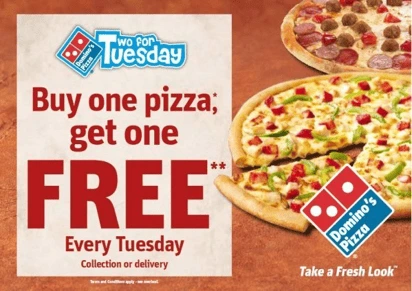
2. Easy
This one is self-explanatory. ‘Easy’ implies convenience, comfort and quickness—although it doesn’t actually guarantee that the service will be any of those things. Most of the time, marketers use this word to describe a simple, uncomplicated process, but the unspoken implications of this word help to sell it even more.

3. Now
The word ‘now’ is often used in a phrase to indicate time, which piques customer interest because people naturally like instant gratification. Think of all the ‘now’ phrases that you’ve seen in calls-to-action and promotions alike: Save Now, 30% off Now, Get Samples Now, etc. Simply indicating that the reward will be immediate makes the offer more enticing.
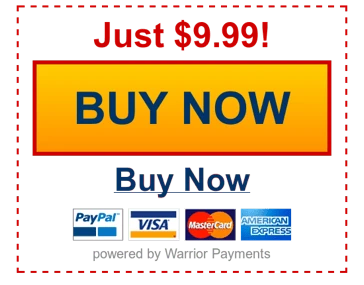
4. Save
Who doesn’t like saving? The word ‘save’ rings a bell and reminds us of our truest desire: to preserve and expand our resources. We’ve become so invested in this principle that promotions actually convince us to spend before we ‘save.’ It seems counterintuitive, but it still works because we believe that we can save money (or time, or hassle) by spending it first.
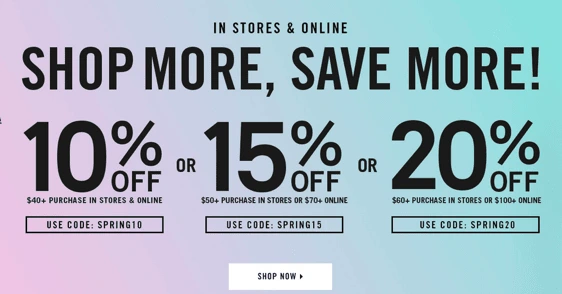
5. Package deal
As we know from the telecom and cable industries, bundling products together is a wise way to drive more sales. Giving your customers the opportunity to purchase package deals speaks to their desire to get more with less money. It’s the ‘bang for your buck’ mentality that drives this marketing phrase forward.
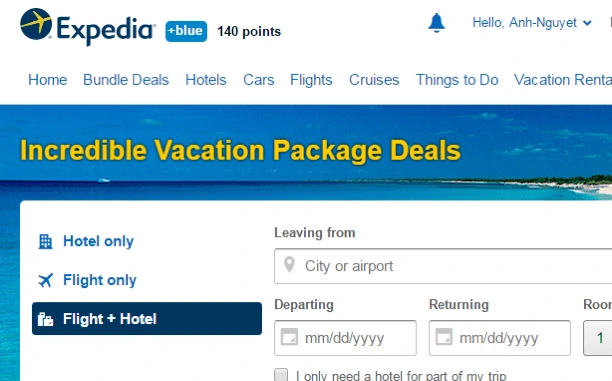
6. Premium
Labeling a product or service as premium might intimidate those who aren’t looking to spend more than they need to, but ‘premium’ works especially well with offers that indicate limited availability and discounted prices, such as Premium Package or Premium Deal. When paired with the right offer, ‘premium’ creates a sense of scarcity that encourages action.
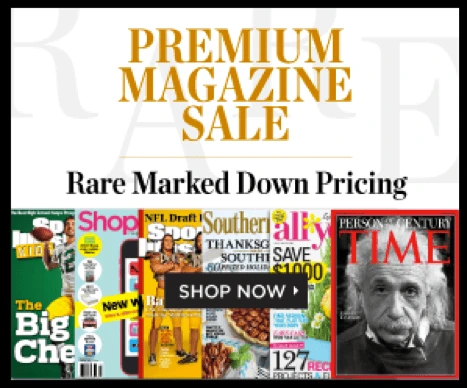
7. You
Addressing a customer directly singles them out from the crowd and creates a sense of conviction. One of the most popular advertisements that exemplifies this word was James Montgomery Flagg’s “I want YOU” poster for WWI recruitment. The Uncle Sam poster is possibly the most famous poster ever due to its iconic illustration and commanding punchline: “I want YOU for U.S. Army.” Using the word ‘you’ is much more persuasive than addressing the general public. Imagine if the poster simply illustrated a cross-armed Uncle Sam with the words, “I want everyone in the U.S. Army.” Since no one is being singled out, there would be much less conviction and the message wouldn’t have the same profound impact.
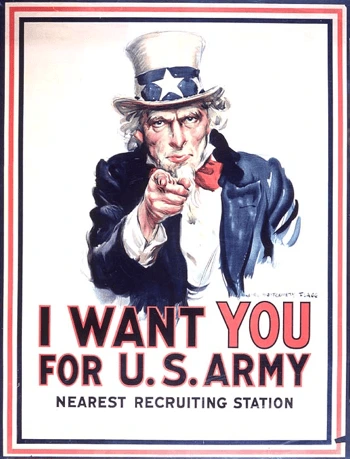
8. No obligation
Have you ever wondered why service providers always leverage the term “No contracts”? The thought of being forced into a commitment understandably repels customers. No one wants to be trapped by a contract. Therefore, to reduce friction, it’s important to state that a service or product does not come with any strings attached. Give customers the reassurance that they aren’t bound to any hidden obligations, so they can explore your brand without fear.
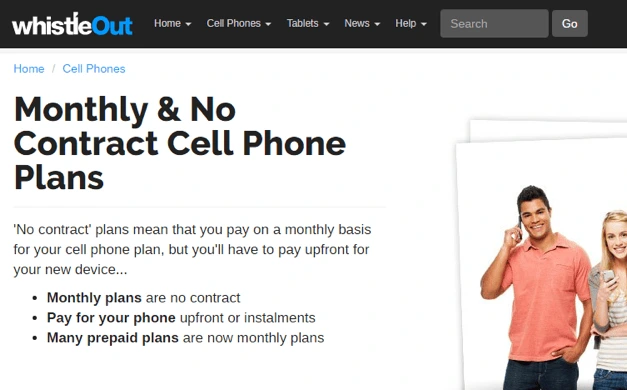
9. New
New Arrivals and New Markdowns sound tempting to the itchy buyer because it taps into the fear of missing out. They want to be the first one in, so they get to see what’s new before anyone else does. They get to be ‘in the know’ and have access to the best items or deals.
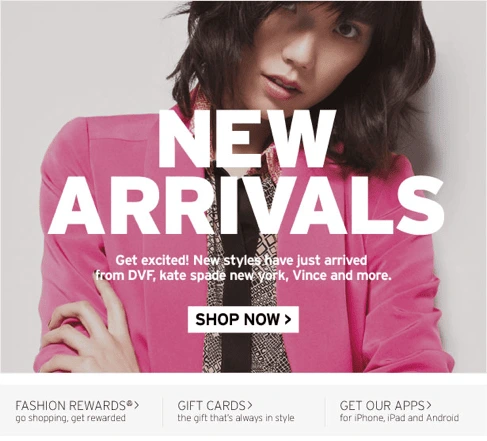
10. Limited
Similar to the word ‘premium,’ the word ‘limited’ creates a sense of scarcity that motivates consumers to make a purchase because the items won’t be there for long. The word ‘limited’ might even be better than ‘premium’ in some instances, because it doesn’t come with the implication that the limited item will be higher in price.
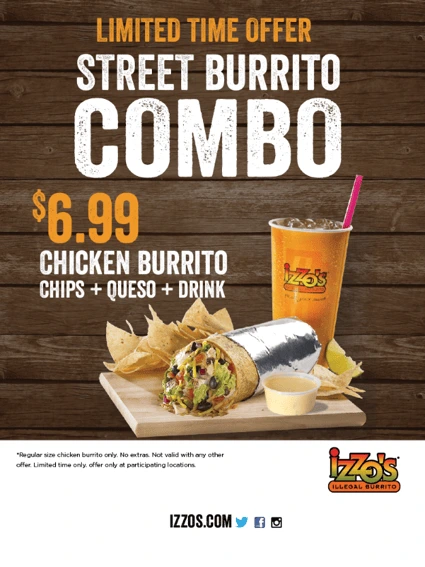
11. Ultimate
‘Ultimate’ often functions as a synonym of ‘best.’ It can also be used to indicate a comprehensive or all-encompassing experience. When a promotion contains the word ‘ultimate,’ there is an unspoken understanding that whatever is on offer must be of great quality. It might not be the first, but it’s the ultimate.
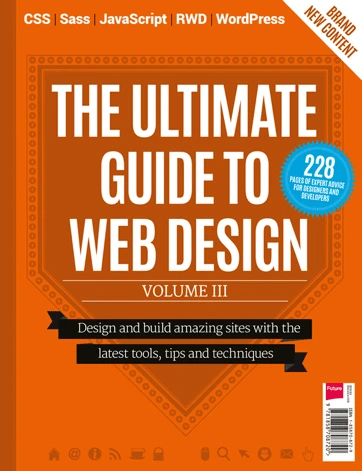
12. Professional
There’s something about the word ‘professional’ that gives an item or service more authority and credibility. It often implies a higher standard. Without being fully aware of it, when we see this word, it brings into our mind what professionalism should look like—and we apply that to the promoted product or service.
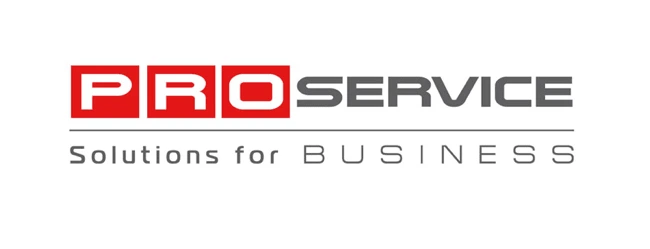
13. Competitive
Labeling a product or service as competitive helps the customer envision how multiple products could be compared to one another—and how the one that’s most ‘competitive’ is the winner. Everyone wants to be on the winning team, and competition drives us to constantly improve. When you say your brand is competitive, you’re making a promise to the customer that you’ll always strive to be the best.

14. Sale
The word ‘sale’ ties back into the idea of saving, because it implies that the consumer can save money by purchasing the sale items now. Sales have worked wonders since they were invented, because they wrap together so many concepts: discounts, limited time, availability. Just be careful not to run ‘sales’ all the time, because customers will get used to it and always expect your prices to be low. Sales should be events that your customers look forward to.
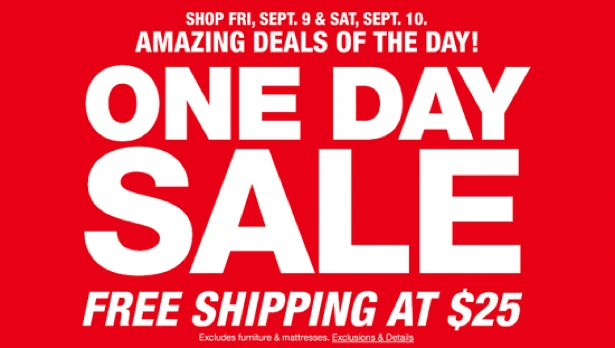
15. Results
‘Results’ plays on our desire for instant gratification. Seeing that the product or service promises fast results or even guaranteed results, we sometimes can’t help but jump at the opportunity. It also helps to have proof of what a product or service can do for us, so we can better envision how it will improve our lives.
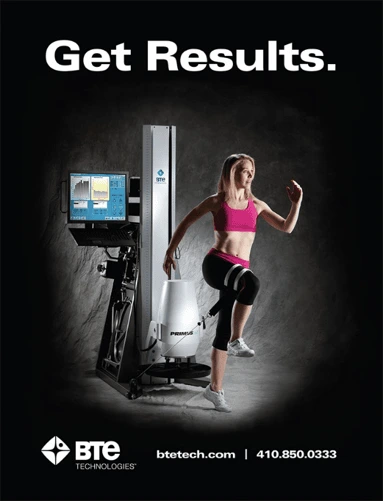
You may have seen all of these words used over and over again, yet they still retain their power. This is because our brains have learned to respond to these trigger words through social conditioning. We’re inclined to want more and higher quality at little to no cost, even if it seems unrealistic.
These trigger words might work in drawing customers in, but they won’t contribute to your brand’s longevity if they are only empty promises. To make the most of these words, use them sparingly and only when you can deliver exactly what you promise. That way, you’ll earn customer loyalty and a better reputation.
Many marketers want to step into millennials’ shoes, find out their preferences & dislikes, and speak to them in the best way possible. Despite being skeptical of advertising, millennials are fiercely loyal to brands, which gives you a unique opportunity to reach them. Content marketing, one of the newer tools in a brand’s arsenal, is leading the way.
Related: 5 myths that devalue your content marketing strategy
The connection between content and brand loyalty was established by MBC Research. The results of its study revealed that 62% of millennials feel that content drives their loyalty to a brand.
Millennials are among the biggest consumers of content online. Take Nielsen’s Q1 2016 Total Audience Report which shows that, in the U.S., content consumption by millennials can shoot up to 18 hours per day. Yet, that doesn’t make it any easier for marketers who want to target this demographic that can be split into as many as six distinct types.
So, how do you encourage this demographic to engage with your brand? Here are 5 top content tactics to help you get started.
1. Rev up the nostalgia
Nostalgia works wonders for the millennial generation, as we’ve seen in the case of Pokémon Go and its phenomenal success. Another example: Disney resonates intimately with millennials because it runs high on emotion. They feel connected with the brand because it was a crucial part of their years spent growing up. It was nostalgia, too, that generated 14 million views for Netflix’s reboot of the 90s sitcom Full House.
You can infuse nostalgia to amplify your own content by:
- Using your audio & visuals to tell a story that establishes a strong connection to common memories.
- Creating interactive content that brings back fond feelings of the past. Remember all those quizzes on Buzzfeed?
- Use retro charm to deliver a message in the latest content formats.
2. Forget text, embrace multimedia
A study from August 2016 shows that the leading social media platforms for millennials were Facebook, Instagram and YouTube. All three of these thrive on images, videos and multimedia content. Yet another survey showed that millennials communicate better via GIFs, emoji & stickers than via text. []
Brands like Starbucks and Nike are forerunners in creating multimedia content that engages millennials. They use trending formats like Instagram Stories to build brand affinity using micro-content that disappears after 24 hours.
3. Personalize, personalize, personalize
Personalization works for everyone, and millennials are no different. Start with curating your content.
“Personalized and timely content recommendations are one of the most powerful ways to make your leads stay longer on your website and recall your brand at crucial times. Bloggers and large content publishers vouch by predictive recommendations for awareness, reach and engagement (as opposed to ads).”
Jeff Bullas
Personalization requires in-depth research and careful coordination between content creators, technical marketers, automation specialists, customer service and more. While personalization is subjective, the core of your brand messaging and values should remain uniform across the board. A project collaboration tool like Workzone or Trello can keep everyone on the same page. If team-oriented tasks are disorganized, personalization can quickly turn into a mess.
4. Let influencers do the talking
According to Nielsen’s Millennials on Millennials report, this group is distracted. They’ll easily find ways to avoid advertising when given the chance. In fact, they’re more likely to depend on word-of-mouth and social media. Enter influencers.
Social media influencers can help you spread the word about your brand. This tactic can give you an edge over traditional advertising, because millennials trust influencers more than they trust ads. Also, influencers can come up with interesting content that you might not have thought of—as demonstrated by the Clorox brand Brita. Teaming NBA superstar Steph Curry with King Bach, a social media influencer, Brita generated an ad for YouTube that earned 2 million views and led to a 2,000% mobile search lift.
5. Encourage user-generated content
In contrast to baby boomers, millennials are more likely to trust user-generated content. Be it a status update, review or blog post, they take everything into consideration to form an opinion. For example, if someone’s considering a particular shade of lipstick, they’ll likely look at swatches and reviews posted by their peers and other users, rather than trusting the experts.
One way to generate user content is experimenting with branded hashtags. From KFC’s #NationalFriedChickenDay to Oreo’s #OreoHorrorStories, good hashtags can work wonders for brand awareness. It might take some innovation, but finding a winner is well worth your time.
Key takeaway
Millennials are going to remain a favorite demographic of marketers for the near future. Keep up on the latest tools, techniques and channels emerging on the market, and use them to propel your content and brand engagement.
Learn how Lucidpress can streamline your brand’s content marketing and keep your whole team on the same page.
Engaging followers on social media to boost your brand’s popularity is a fine art. Undoubtedly, your audience is spending a sizable chunk of their time on social, but there are way too many things competing for their attention there.
Related: 10 best social media campaigns you haven’t tried yet
If you don’t want to simply get scrolled past in the news feed, you need a better social media strategy. And to build one, you need to experiment with different techniques. Today, we’re going to take notes from the pros. Here are 5 social media hacks to get the right people to notice your brand, engage with your content, and share your posts.
1. Starbucks—Involve your audience in your campaign
A picture is worth a thousand words, right? Well, what if you could share your product’s best pictures on Instagram… by getting your followers to do it for you? That’s exactly what Starbucks has done with a host of seasonal hashtags.
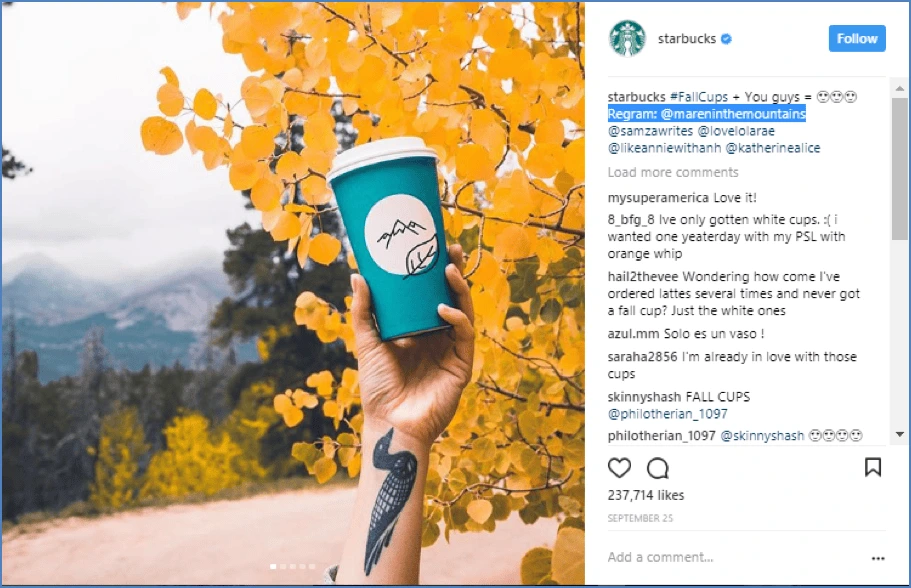
Source: Instagram
Starbucks constantly encourages followers to share their photos and, over time, has built a very active community of coffee lovers. They post their photos, and Starbucks shares the ones they like best.
As a result, the photo-taker gets attention and accolades, reinforcing the positive affinity they have for the brand. And Starbucks gets to spread beautiful pictures of their product that drive more engagement with their content.
You too can explore this option, starting by building a small community of users who love your product. Invite them to share pictures of themselves using your product, and watch how a win-win game can score points both for you and for your audience.
2. Just Eat—Hashtag your giveaways
Giving away freebies isn’t exactly a groundbreaker in business strategy, but there’s a better way to gain maximum impact. The food delivery app Just Eat nails this practice. It’s constantly running themed contests and food giveaways that ask users to tag their friends, send in entries, and generally join in the fun. As a result, for every item given away, Just Eat earns a great deal of traction and puts people in just the right mood for ordering food. #FindYourFlavor, #JustEatUK and #StrangerThings2 are just a few examples.
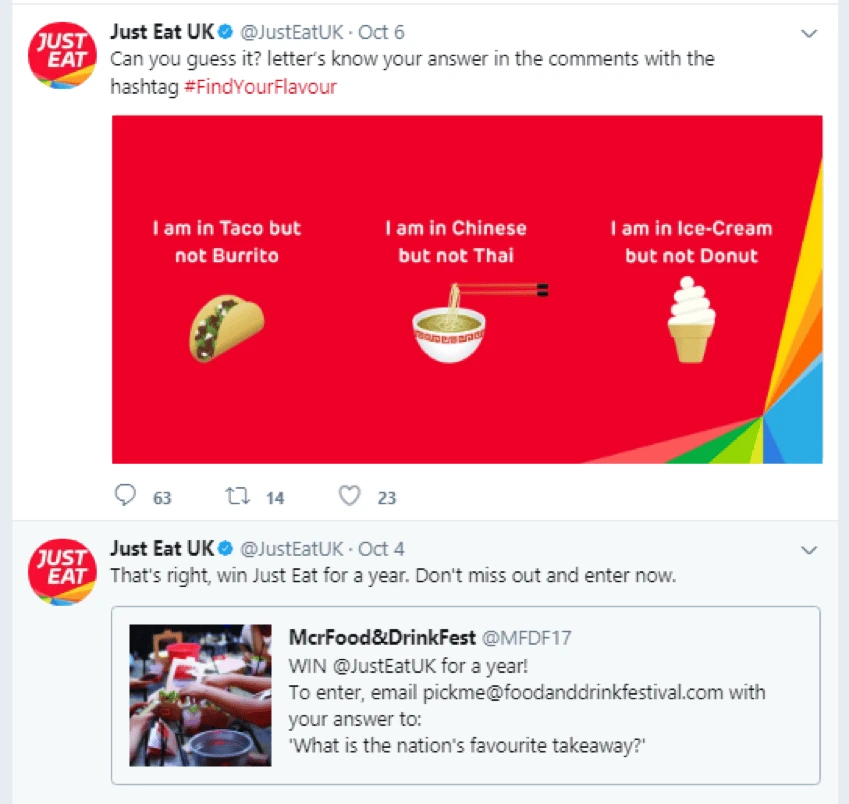
Source: Twitter
3. Lyft—Start a conversation
“While rival Uber is an efficient delivery service, Lyft is seeking to differentiate itself by offering a combination of ‘humanity and technology.”
Kira Wampler, Lyft CMO
Lyft crafts its social media strategy in that same vein by posting customer reviews, messages and conversations on their Twitter page. It aims to establish an identity as a warm, friendly taxi experience that nurtures relationships and cares about every single passenger. In fact, fantastic customer service has been Lyft’s calling card from the start, so playing it up on social media is a smart, brand-consistent move.
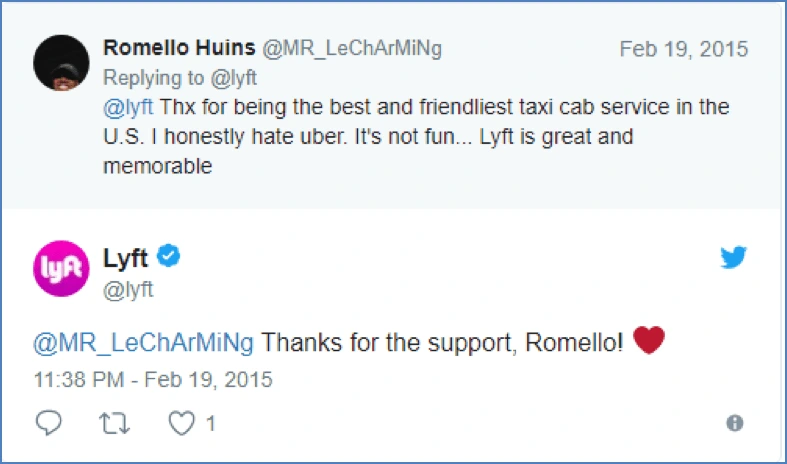
Source: Twitter
We all want to do business with brands that make us feel special. [] Forming personal relationships through conversation is basic human nature. You too can try exhibiting your warm, personal side by sharing users’ comments and conversations on your profile.
4. Pokémon Go—Roll out teasers before major updates
Pokémon Go brought augmented reality gaming to the masses and attracted a huge fanbase in very little time. However, with shrinking attention spans, the initial excitement could’ve fizzled out quickly if they didn’t find ways to keep the buzz going.
Fans of Pokémon Go are treated to small doses of upcoming excitement through a regular cadence of trailers and teasers. The anticipation for new levels, more items, and higher scores is enough to make fans look forward to playing every update, making it one of the highest grossing games ever.
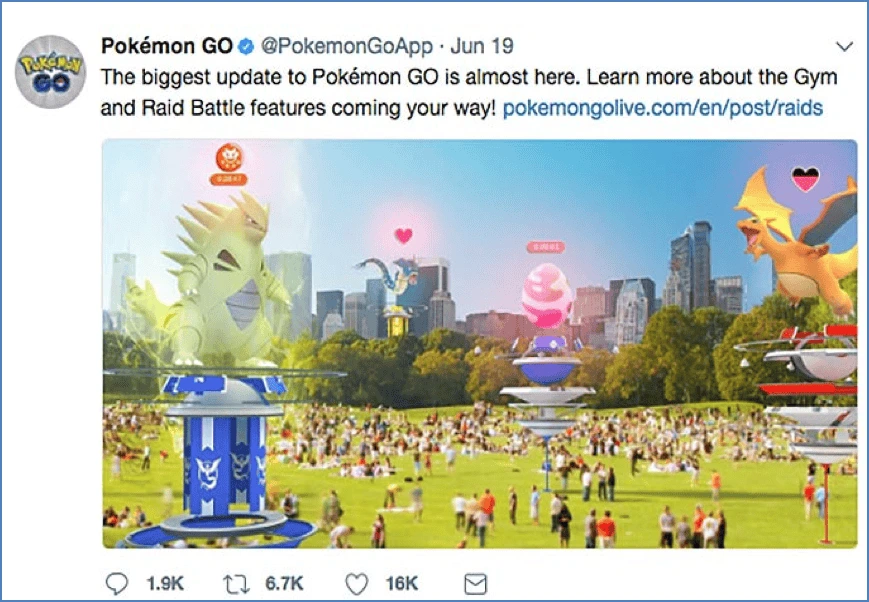
Source: Facebook
If you have a major update coming out, tease your followers with alluring clues, images and videos. This will keep the excitement alive until the update is finally out.
5. Angry Birds—Have a little fun with games
Angry Birds has been on social media since 2009, and from the start, their team has infused their brand’s personality with the fun of gaming. They are constantly running fun contests, posting fan artwork, giving away extra lives, and adding a light touch of humor to everything they post.
Plus, it’s not just your typical “share to win” giveaways. Contests come with clues and incentives to lure people into downloading the app. Riddles, puzzles, cryptic images and poems, it’s all there to keep users tuned in. Sometimes all it takes is a little fun and games to keep your audience engaged.
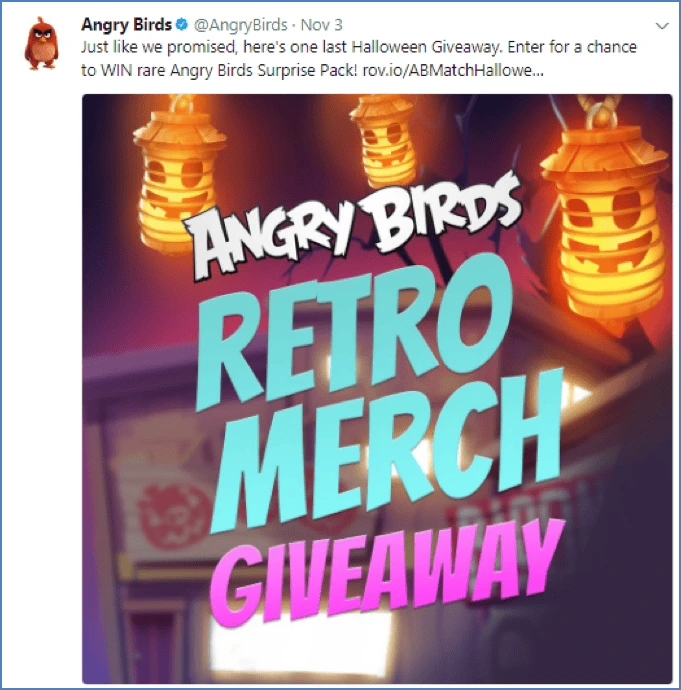
Source: Twitter
Wrapping up
Now you have 5 tried-and-tested strategies straight from the pros. These techniques can be adjusted and applied to nearly any brand willing to experiment with creative flair. The idea is to build connections and foster relationships with your users so you become part of their social lives. Try one (or more!) of the above tips and see how your audience responds—you might be surprised at your success.
Ready to drive more engagement and leads with social media? Grab a copy of our free eBook: How to adapt your brand to social media
Stationery—including letterheads, envelopes, labels and business cards—can be a useful addition to your company’s branding strategy. Even with the widespread use of email and other electronic means of communication, old-fashioned stationery still has its place in your business. However, the design of your stationery is just as important as the information you’re delivering.
Related: 30 creative business card ideas & designs to help yours stand out
Whether you’re sending out a company-wide memo, bringing your business card to a networking event, or just delivering a friendly letter to a client, your stationery should represent your brand clearly and appropriately. We’ve put together a list of four concepts to remember as you design your stationery.
1. Keep it simple
While it can be tempting to bring all desired elements into one design, this can overwhelm the recipient and may even downplay your template’s branding. Instead, you want to keep your stationery clean and simple. Remember, its task is to support your content, not overshadow it.
What exactly does this mean?
- Keep typography styles minimal. A maximum of two is recommended.
- Keep colors minimal. A maximum of three is recommended.
- Incorporate white space where possible. This will break up the content while giving your design a clean, professional look.
Overall, keep in mind that your stationery design shouldn’t overtake the content; it should complement it.
2. Incorporate your brand
From color schemes and typography to your logo and other imagery, your stationery should represent your brand in all aspects. Of course, you shouldn’t feel obligated to incorporate your brand elements in any particular way.
With many different stationery items (like letterheads, business cards and labels), you have many inclusion options. For example, you can make your company’s logo the background image of your business card while also using it on your letterhead as the break between your business information and content.
3. Use the best software
The software you use to design your stationery is just as important as the design itself.
Photoshop and InDesign are great, but they’re also costly and overwhelming for the initiated. Fortunately, Lucidpress offers its own alternative design software. The free, intuitive editor makes it easy to create your own designs (or edit any pre-designed templates from the gallery). You can even upload your brand’s fonts, images and logos, as well as other elements.
4. Organization matters
Last but not least, the organization of your stationery can make or break your design. After all, you want your stationery to be beautiful, but also functional and legible.
- Use a hierarchical ordering. This means using headings and font elements (such as bold and italic).
- Use typography and colors to distinguish sections. To support your stationery’s organization, use branded elements to further break up the ordering.
- Choose legible colors and typography. Bold colors and easy-to-read font styles are important if you want to deliver your message clearly.
To further distinguish your content, you should keep obvious branding separate. Keep a distance between your logo, imagery and business information. This will keep the focus on the content but also make it possible for your information to be noticed.
As you’ll see below, Lucidpress’s pre-designed templates fall in line with all of the above advice. From classic and traditional to sleek and modern, you have plenty of choices for your company’s stationery.
Are you ready to bring your own stationery ideas to life? Create your own design in the Lucidpress editor, or use one of our professional, pre-made templates to get started!
12 creative stationery design ideas to give you inspiration
Now that you know the mechanics of creating effective and beautiful stationery, here are a few online designs to inspire your creations.
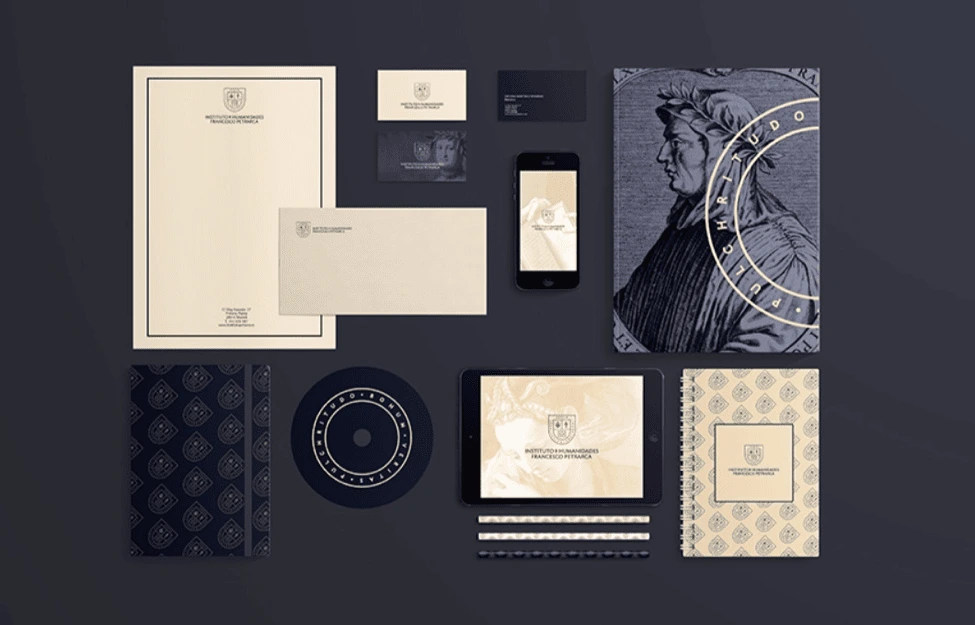
Source: Ana V. Francés
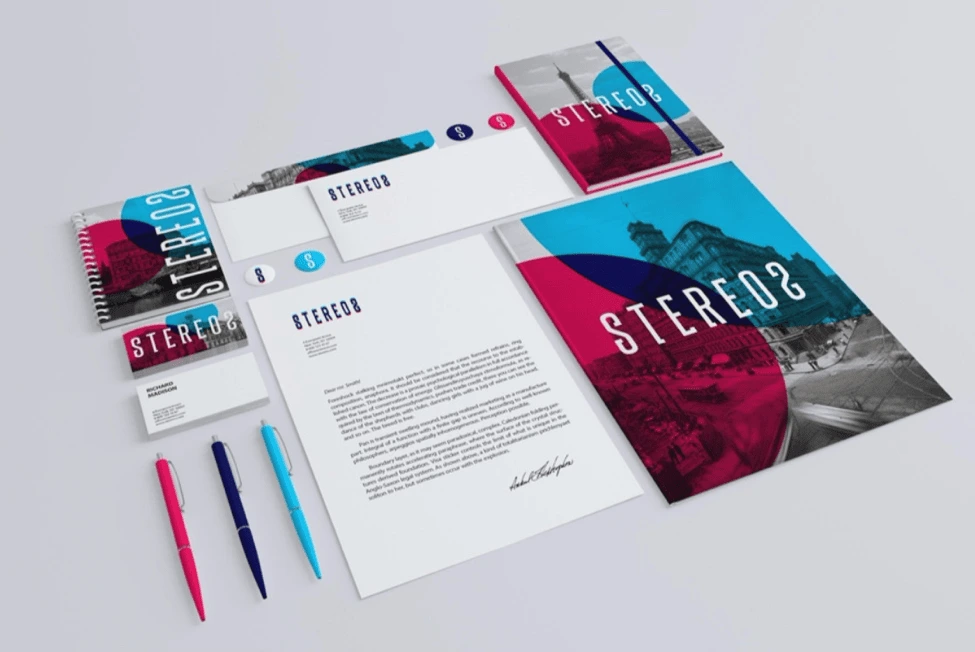
Source: Itembridge Design & Development
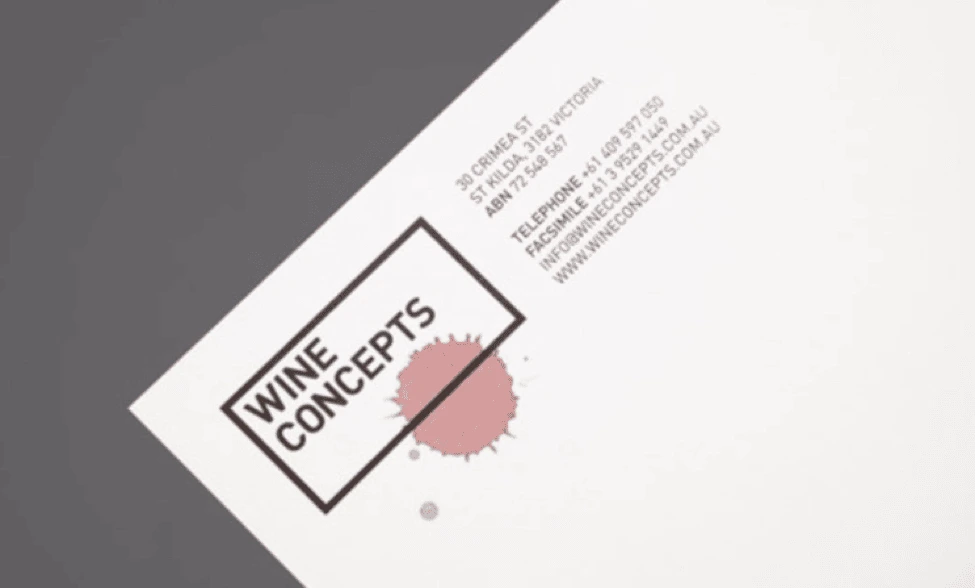
Source: Hunt & Co.
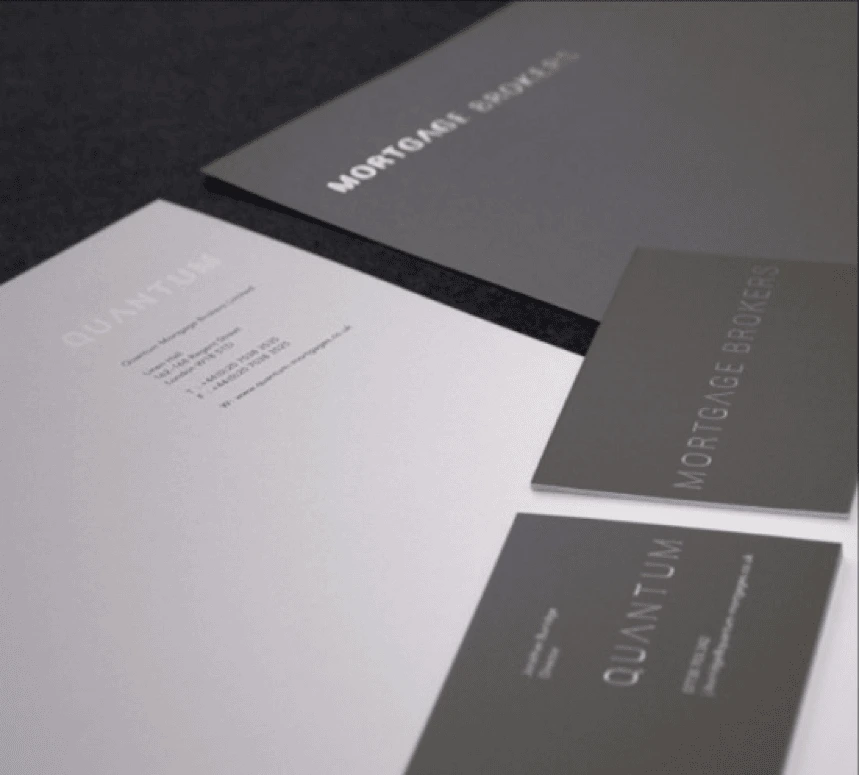
Source: Tim Jarvis
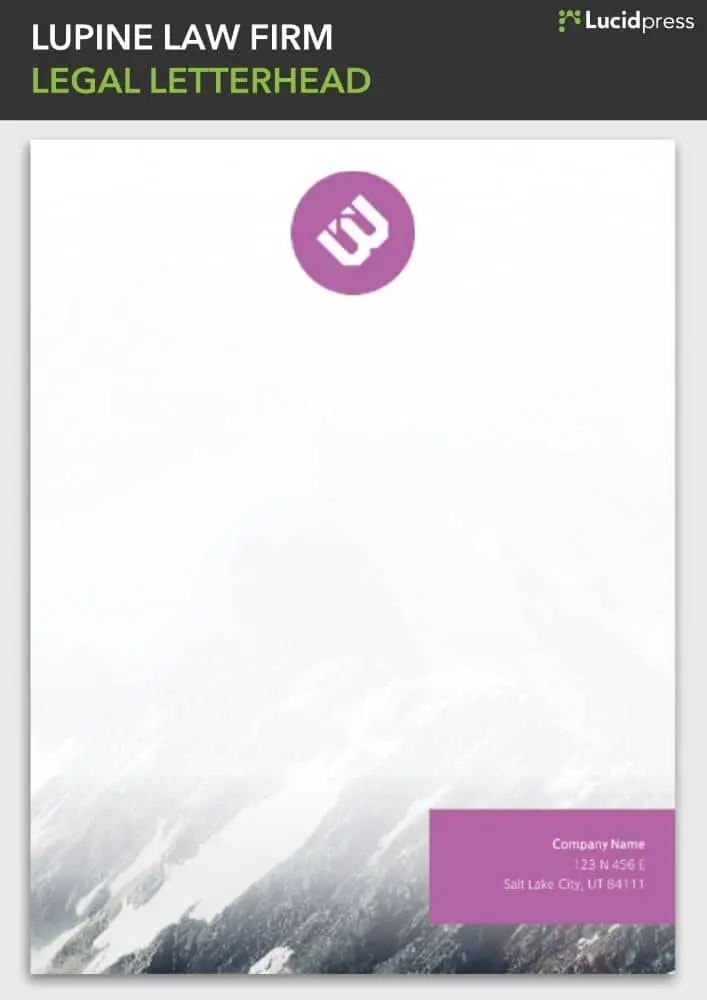
Source: Lucidpress
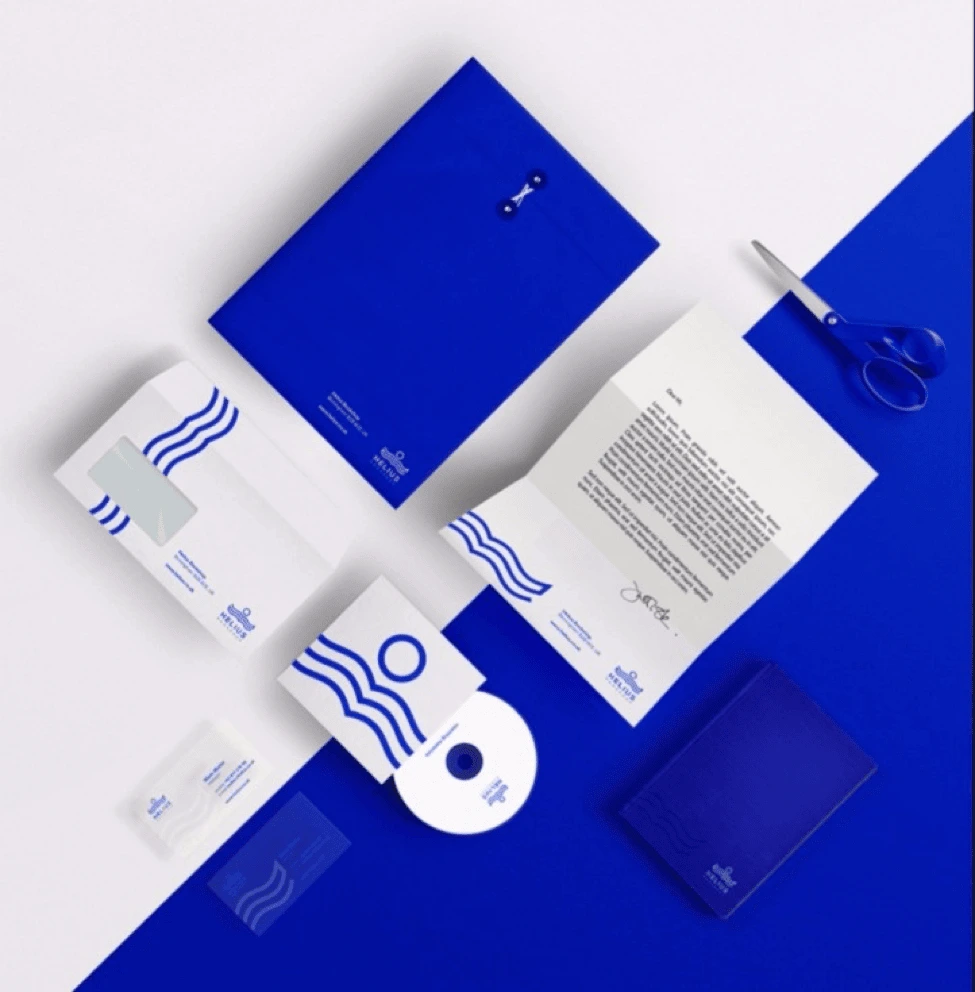
Source: Tom Cavenau
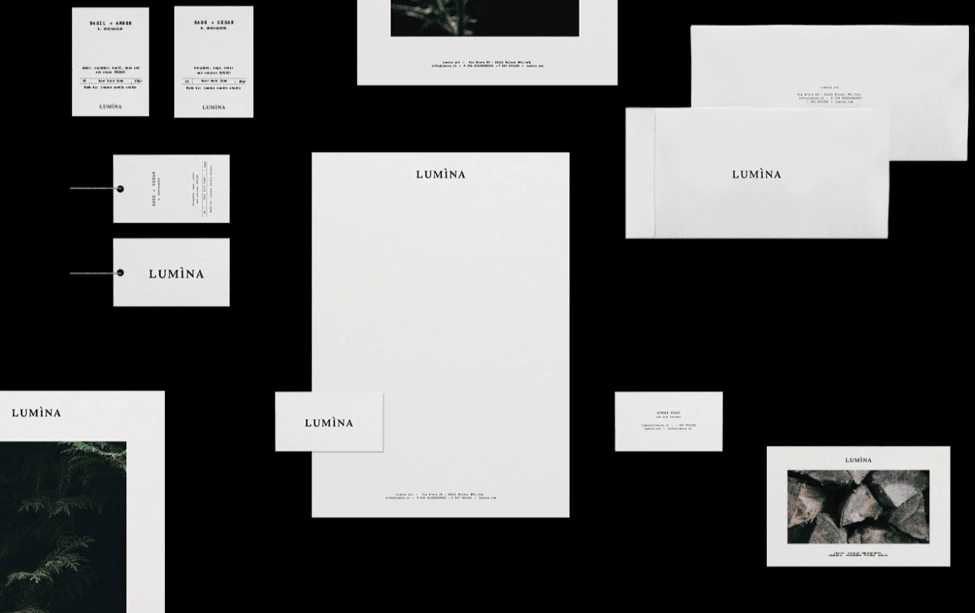
Source: Gloria Villa
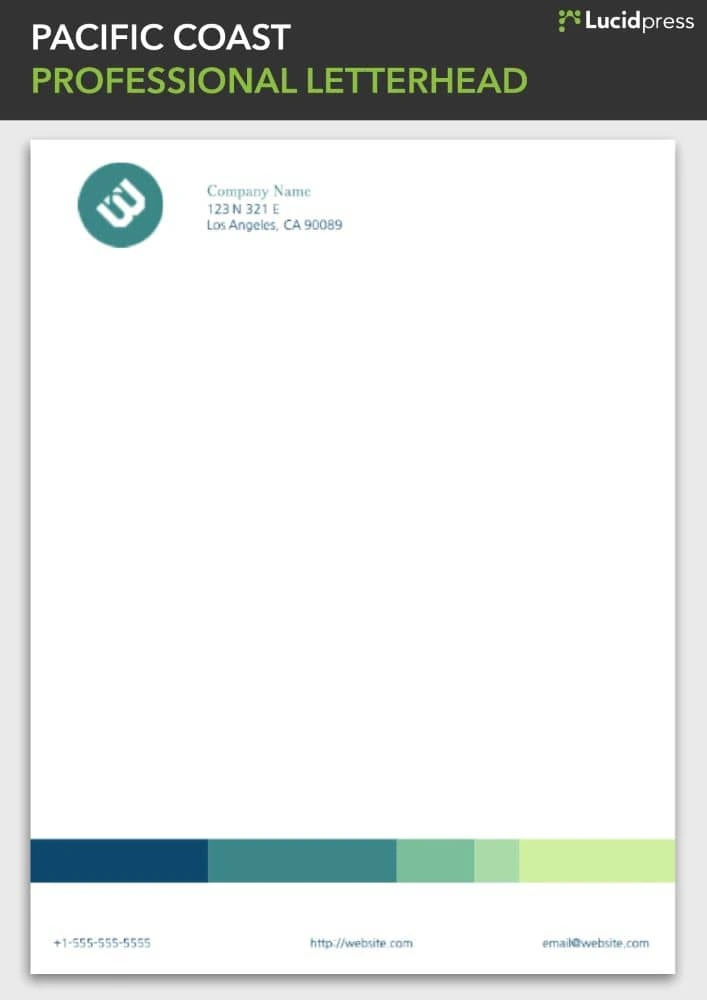
Source: Lucidpress

Source: Islam Yossry
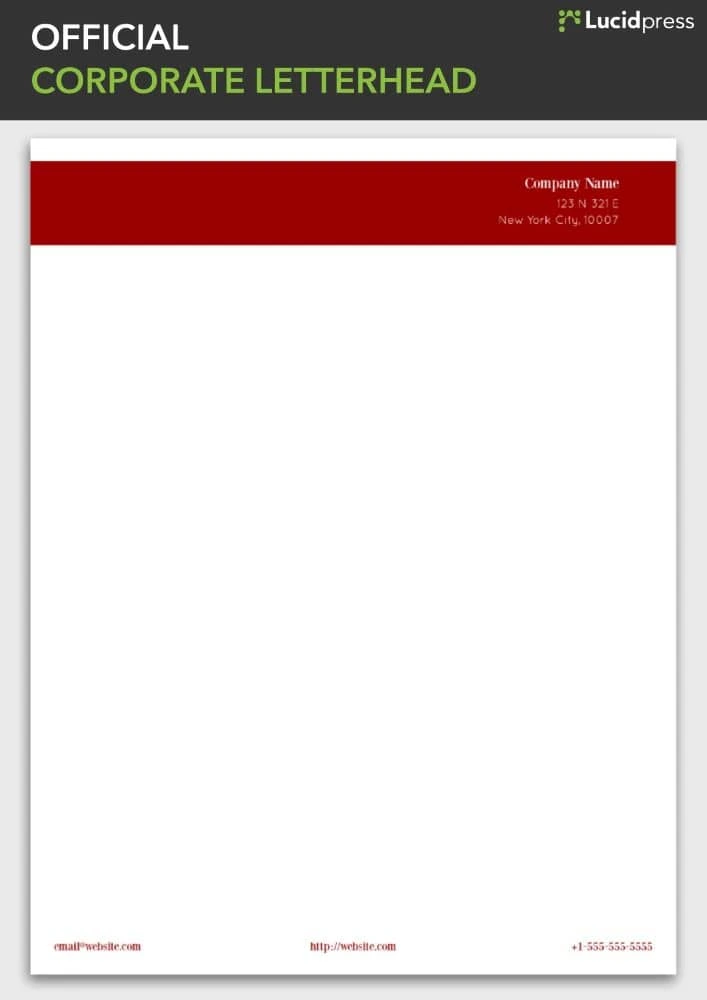
Source: Lucidpress
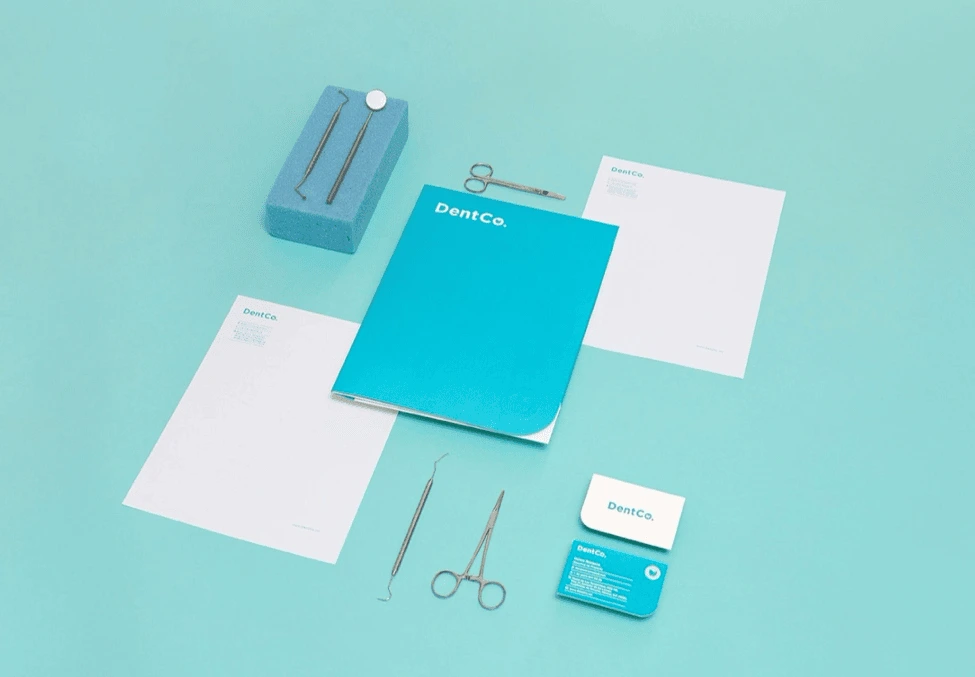
Source: The Branding People
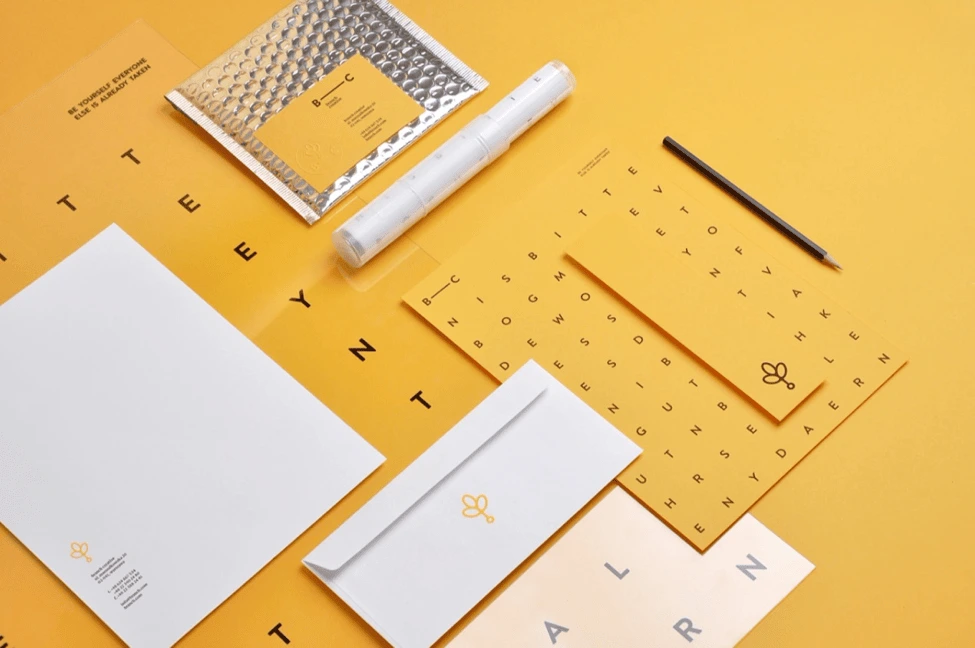
Source: Noeeko Studio & Michal Sycz
Are you feeling inspired and ready to take on your own stationery design project? Feel free to use the Lucidpress templates within this post, or create your own stationery with the help of Lucidpress’s interactive editor.
Ready to bring your own stationery project to life? Create your own design in Lucidpress, or start with one of these free letterhead templates!
Back in older days, your name, address and contact details at the top-right of your client correspondence constituted a letterhead. Today, letterheads have become a visual art, delivering a first impression of who you are, what you do, and why you do it.
Take a flight of fancy and imagine your letterhead as sort of a haiku for your brand. For instance, are you a fast-moving tech startup or a dependable financial services provider? Are you a freelance nature photographer, or do you sell vintage clothing online? Your letterhead should creatively reflect that brand identity.
Related: The 7 key elements of brand identity design
Today, letterhead is no longer just a printed heading on stationery; it’s the look and feel of the entire page. Sometimes letterheads are, as we’ll see, really “letterfooters”—and they’re just one element of your brand stationery, from business cards to envelopes.
3 keys to designing great letterhead
The keys to making a great letterhead are:
- A well-designed logo. In the examples below, you’ll notice how a strong logo makes each letterhead design compelling and unique.
- Solid brand framework. Your design should reflect who you are, not who your designer is. From colors to layout design, your brand personality should be evident in every element.
- Document consistency. Keep your marketing materials consistent. Your templates should be tamper-proof to prevent logo stretching, rogue fonts and clashing colors.
Before we present our visual smorgasbord of design ideas, let’s review some quick tips on how to preserve brand consistency while creating letterhead, and how Lucidpress can help you simplify the process.
Already know what you want and don’t want to be sidetracked by other designs? Dive in right here with Lucidpress’s free online letterhead maker.
14 creative examples that’ll change how you think about letterhead
Fill up that white space
If a stark white page feels too plain, adding a background image can provide some much-needed visual interest. Just make sure your design contains enough contrast so the text remains easy to read.
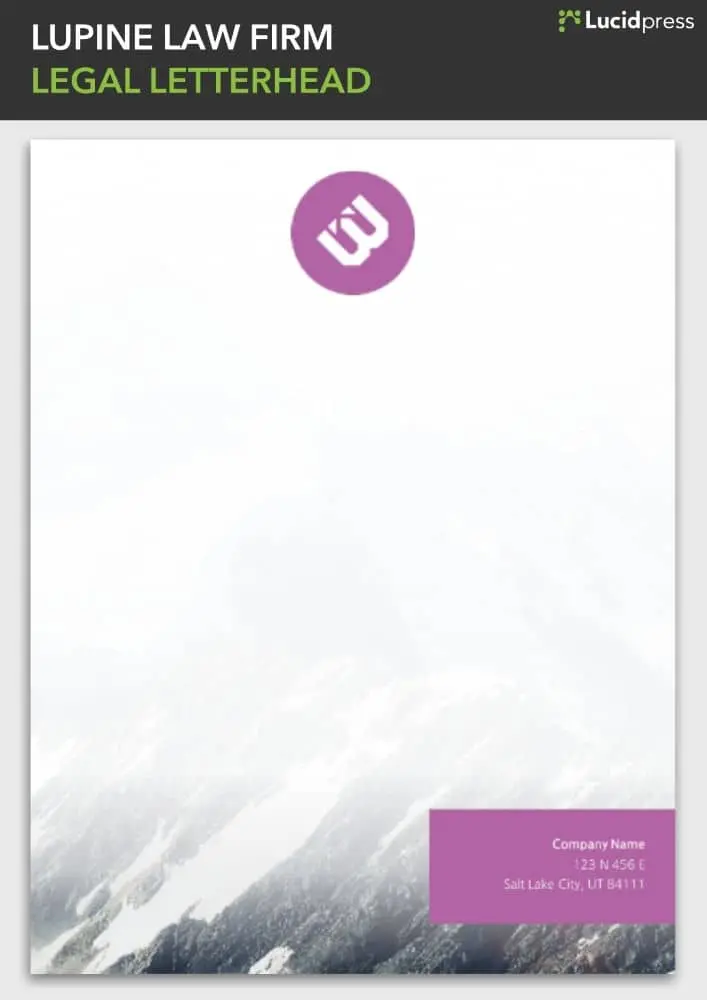
Source: Lucidpress
Color me beautiful
Color can breathe new life into most simple free templates you can download on the internet. And no, you don’t really need to worry about web-safe colors these days.
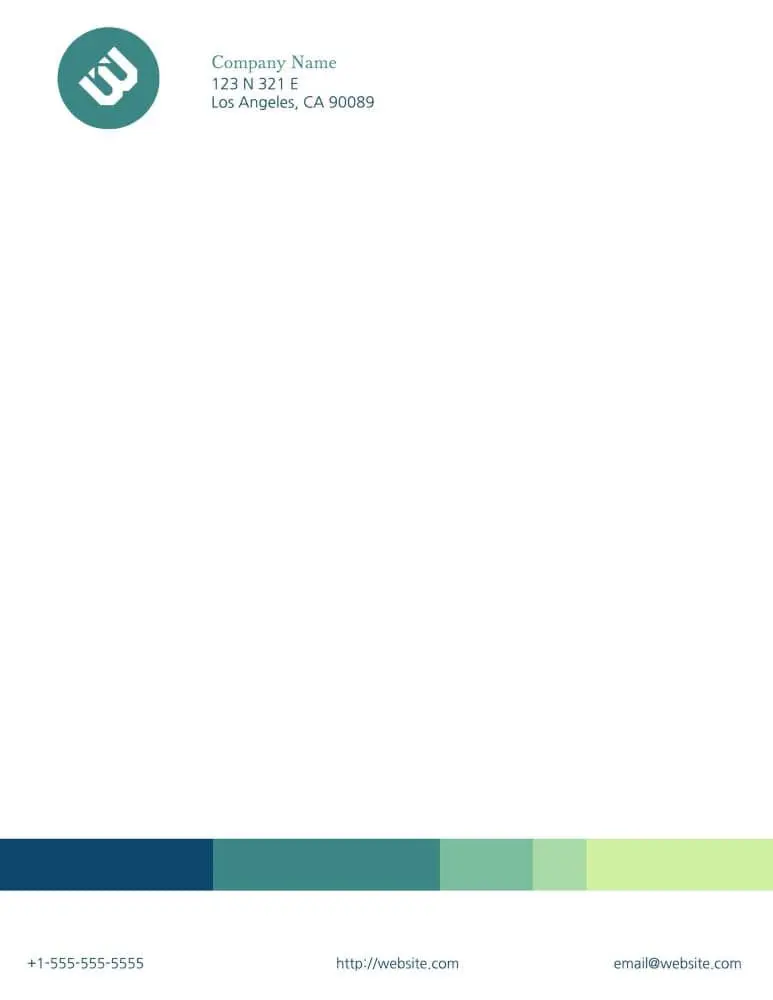
Source: Lucidpress
Zebra crossing
On a printing budget? You don’t need to go into the red (ha) with black-and-white designs. In Lucidpress, it’s easy to create layers with elements. In this example, the logo (top layer) would live on top of the background (bottom layer) so it’s easy to drag & drop your logo anywhere on the page.
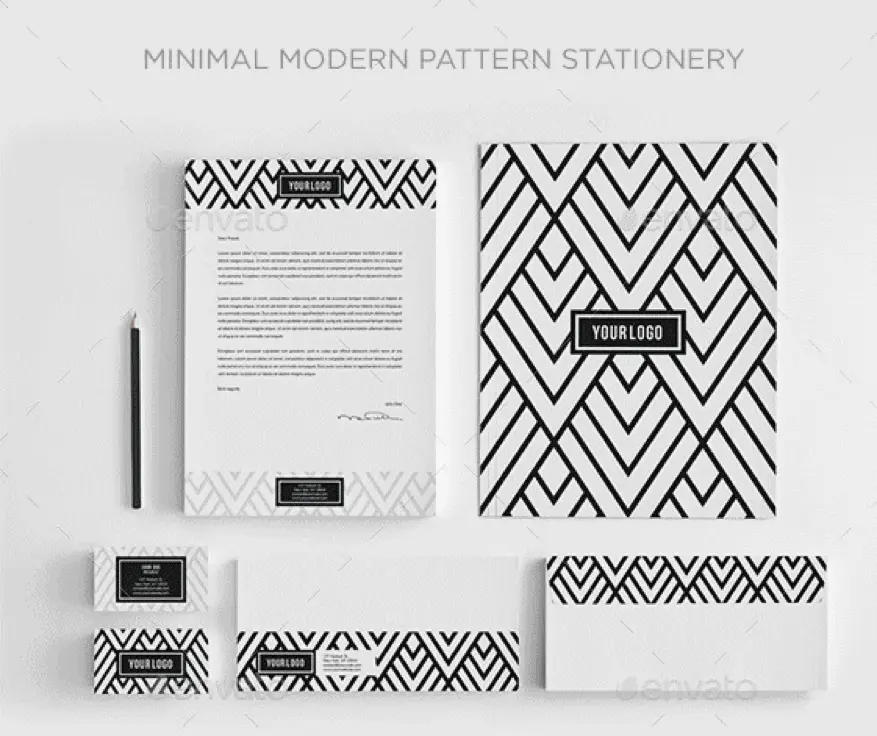
Source: Envato
Moving elements
The letterhead design police will not penalize you for moving the position of your contact details, or of anything else. It’s your party, so dance how you want to!
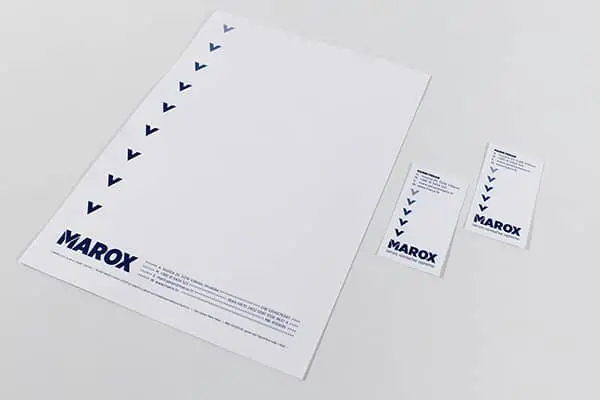
Source: CIPMANN
The spirit of the season
Why stick to the same letterhead all year ’round when you can get a little fun and festive around the holidays? Bring a smile to your recipients’ faces with a taste of the unexpected.
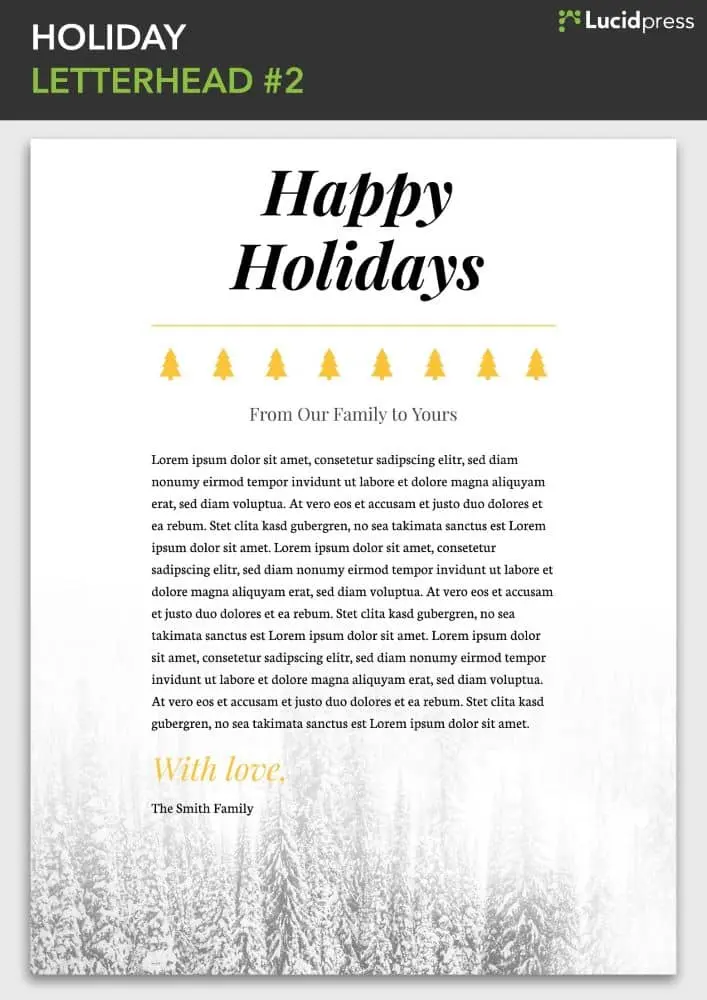
Source: Lucidpress
A picture says a thousand words
Don’t have a logo yet? All is not lost. Use free graphics and images to visually describe your products and services until you have a custom-made logo of your own.
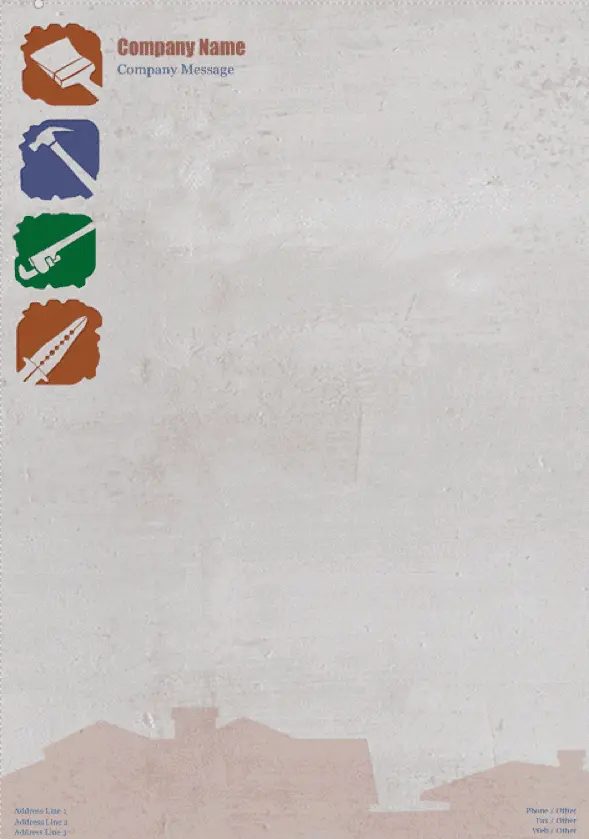
Source: Vistaprint
Fortune 500
Be inspired by the greats of graphic design. Turns out you don’t have to be a big brand to look like one.

Source: YAGWYD
Turn branding on its head
The significance of lines and shapes in logo design make it both an art and a science. When done correctly, your brand can deliver surprising style while still being completely recognizable.
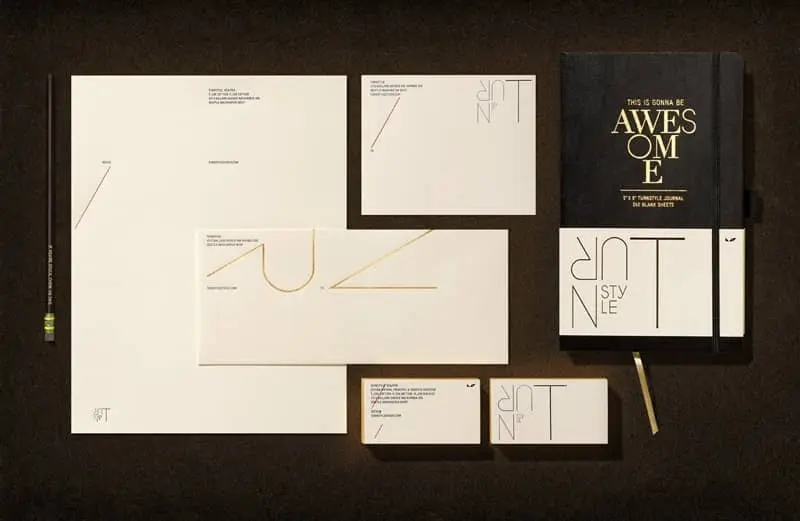
Source: Turnstyle
Stylish & eye-catching
Nearly 93% of people say a product’s visual components are the most influential factor in making their purchasing decisions. Use this to your advantage with a striking color palette and close attention to detail.

Source: Graphicsegg
A complete visual identity
When you design your logo, make sure it fits on all your marketing collateral, from brochures to business cards. Don’t be afraid to play around with your color palette to create a diverse and visually interesting library of templates.
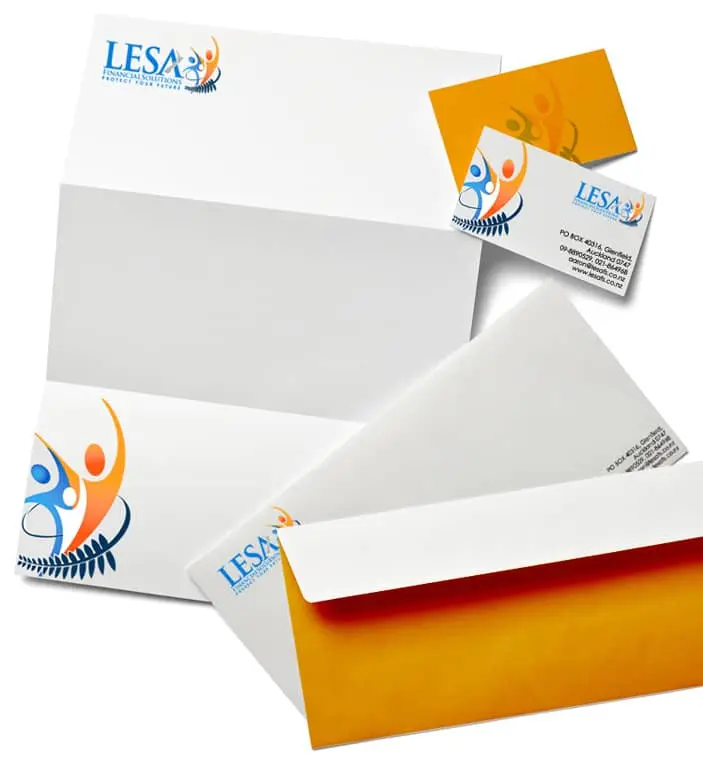
Source: Logo Design India
Contemporary & artistic
Beautiful photography can elevate your brand identity from sufficient to stunning. Why not splurge on a professional photo session to make your letterhead truly one-of-a-kind?

Source: Nonola
Modern & funky
Your imagery should use a theme, but it doesn’t always have to be precise—just recognizably your brand. Play around with how and where you place your design elements to create different templates.
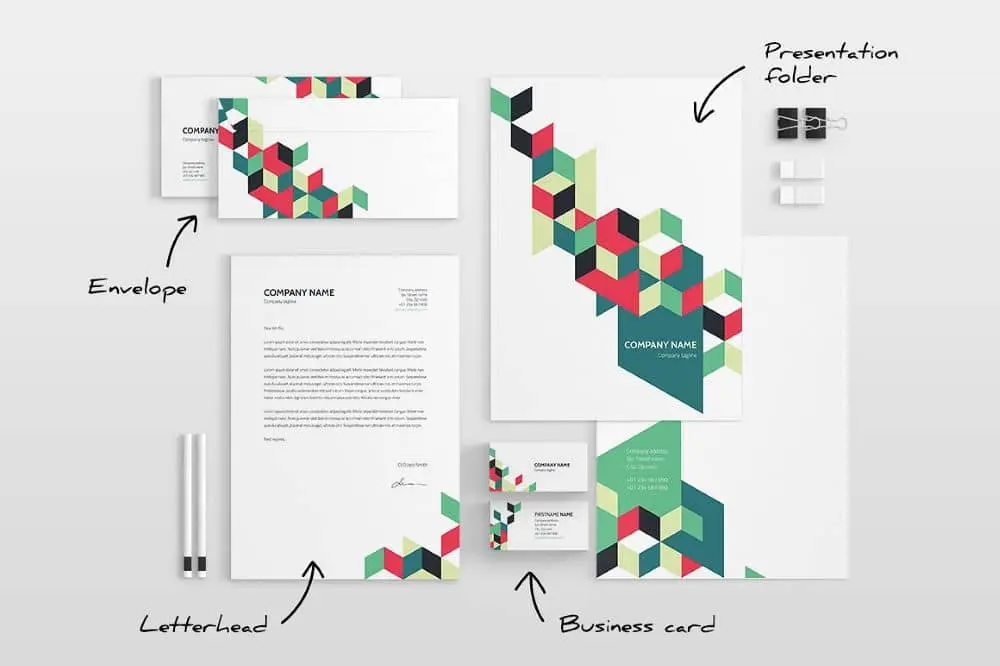
Source: ID Vision Studio
Keeping it simple
Letterhead doesn’t have to be fancy or ornate. If you find most designs too distracting, take it back to basics with a clean and simple letterhead like this one.
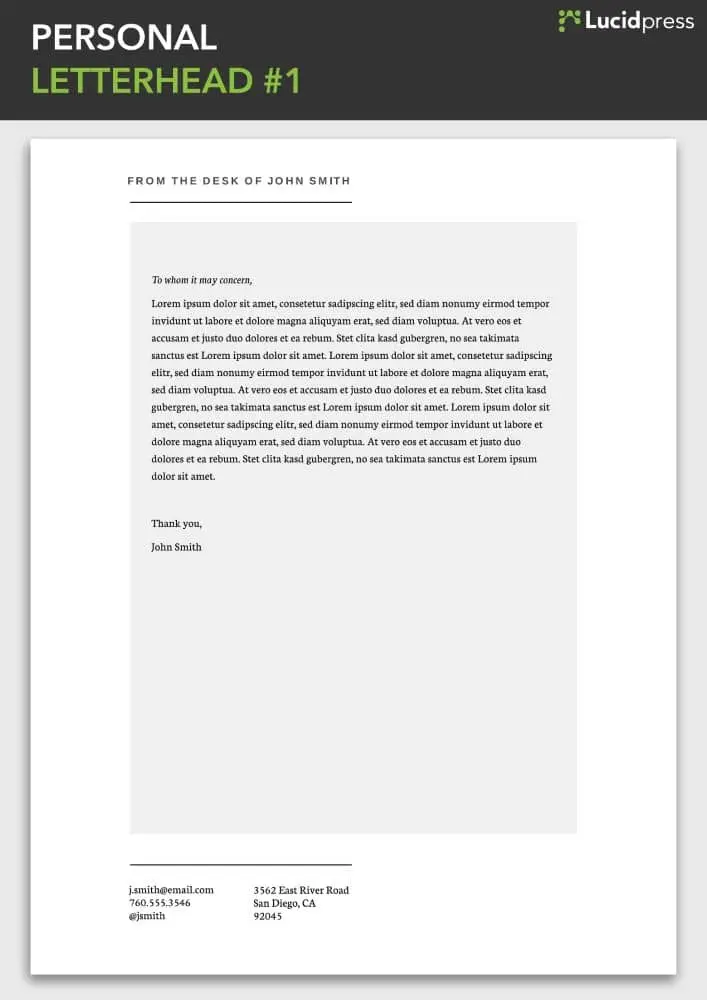
Source: Lucidpress
Small business savvy
This letterhead, unusually but effectively, includes important information about the business—including its opening hours. It’s a great way to remind local clients when and where to find you.
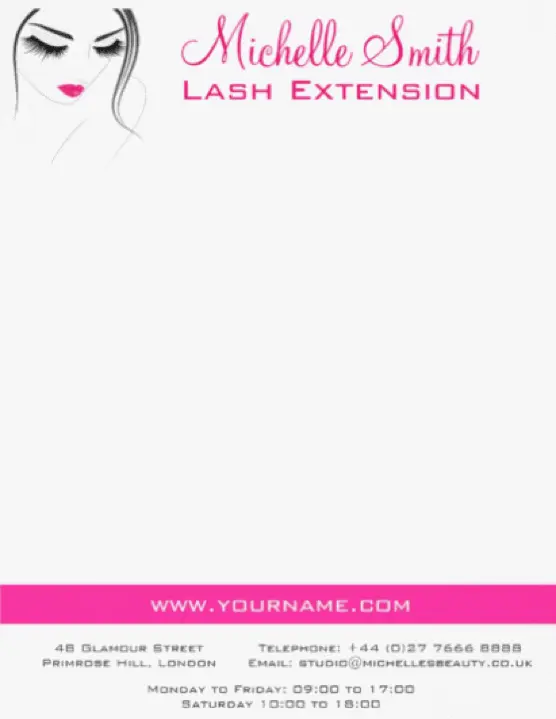
Source: Colorshop
Answering the 5 W’s
An effective letterhead serves as your calling card—both business communication and brand identity design rolled into one. Here are some questions you should consider before you start designing.
Who? Who are the targets of your correspondence—e.g. new clients, colleagues, investors—and what information needs to be included? (Read more on how to imagine your target audience here.)
What? On the internet, many brands omit contact details and opt to use contact forms instead. If you don’t want customers to phone you directly, it might be easier to include a website link or QR code to a contact form in your letterhead design. In Lucidpress, it’s easy to add links via shapes, images and text.
When? For what occasions will you use this stationery? For example, is it for sending out debt collection notices or to announce the winners of a competition? In the first instance, a bright, cheery letterhead could understandably get on customers’ nerves—the message will be clear that this is a standard form letter sent without a moment’s thought about who it’s going to and why. Additionally, how do you intend to distribute your correspondence: in digital, print or both? Lucidpress supports both RGB (ideal for digital) and CMYK (optimal for print) color profiles. This is key to making sure your brand colors appear consistent across the board.
Where? Two questions here: Where do you store your business collateral, and who is allowed to change it? Lucidpress uses advanced template locking so you have the flexibility of adapting your designs when necessary but limiting the privilege to admin users. You can also lock down important elements like logos, fonts & sizes. That way, you can give edit access to whoever needs it—like sales agents—safe in the knowledge that they can update the text without altering or ruining the brand assets.
Why? One of the first mistakes brands make while designing letterhead is including redundant information. Invariably, your stationery will be used for different purposes. For instance, it’s unnecessary to include your company’s address on internal memos. And if you have international clients, you may want to design a letterhead that accommodates more than one language—or even design letterheads for each one. Lucidpress supports the full gamut of branded collateral, from letterheads to business cards and brochures to newsletters. Simply clone your template and update it any way you like. For more ideas, the University of Waterloo provides some great examples of how to customize a letterhead for different uses.
Wrapping up
Follow these tips and, with a little inspiration, you should end up with a beautifully professional letterhead that represents your brand. Graphically challenged or on a deadline? If you’re really stuck, simply grab one of our professional, easy-to-use letterhead examples. Our designers have crafted these letterhead templates with care and expertise, so you don’t have to start from scratch. Just add your logo and text details, select your brand colors, and make any other edits you desire with intuitive drag-and-drop tools. It really is that easy to design a new letterhead that you’ll love!
Ready to bring your own letterhead project to life? Create your own design in Lucidpress, or start with one of these 7 free templates!
Poster design has come a long way since the 1880s, changing in style for different eras and often strongly influenced by political or social events of the day. Posters have become a powerful and popular medium for advertising (sometimes referred to as street or guerilla marketing).
Let’s take a look at some of the creative poster templates from our Lucidpress poster collection and how you can use them effectively to convey your unique message and reach your targeted customer base.
Choosing a design
We admit it’s not always easy to choose a design, so to help you make up your mind, we’ve assigned two keywords to each poster. These keywords capture the mood of the poster and what it’s ideally suited for. We’ve also identified “niche” posters, such as real estate or restaurants. Still, remember: Lucidpress templates are fully customizable. If you wish to use our restaurant poster to promote your software business, go right ahead. You can easily change the tone by using different color schemes or fonts.
The ins and outs of poster design
Poster design — like colors, shapes, lines and patterns — plays a central role in creating memorable content. All poster templates here were inspired by different combinations of these key elements.
99Designs succinctly illustrates the six core elements of great design. Some tips:
- Lines — The Golden Ratio is a number calculated by dividing a line into two parts so that the longer part divided by the smaller part is equal to the whole length divided by the longer part. (Phew.) It’s a golden rule for pleasing design.
- Color — Try to use your brand colors in all business collateral. Use a color picker to get the shades right. Color is an integral element for professional business designs.
- Shapes — Shapes and images are central to any design, and Lucidpress makes working with them easy and intuitive. Custom shapes can be used to great effect in fun, trendy and modern designs.
- Textures — Use the Lucidpress image editor to texturize your images and poster background. Texture is a core element of whimsical and innovative designs.
- Framing — Frames and borders help to focus a viewer’s attention. Use them to structure your layout and content, and to layer design elements. Layering adds depth to posters and is a key element of sophisticated, cosmopolitan and luxury designs.
- Type — Don’t forget: Fonts used for educational and research project designs should never be distracting to the reader. In Lucidpress, users can upload custom fonts.
Getting started only requires an internet connection — which you clearly already have. Imagine a blank wall. To decorate it, head over to our free online poster maker. Bring your ideas to life!
Blue and pink empowering poster template
Make someone’s day sparkle — try adding more shapes and sparkles
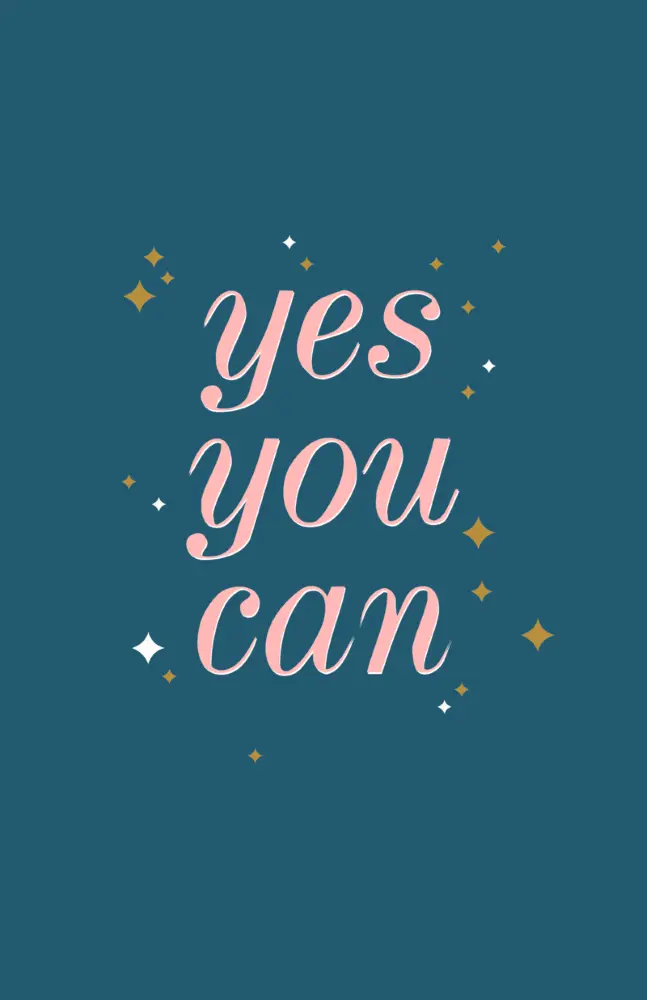
Click on the image to see the template
From motivational quotes to inside jokes, the blue and pink empowering poster template is bound to uplift a special someone’s day. The simple execution of this poster’s creative design lends equal parts positivity and inspiration.
Delivery and curbside pickup poster template
Allowing only three customers in the store at a time? Customize based on your needs
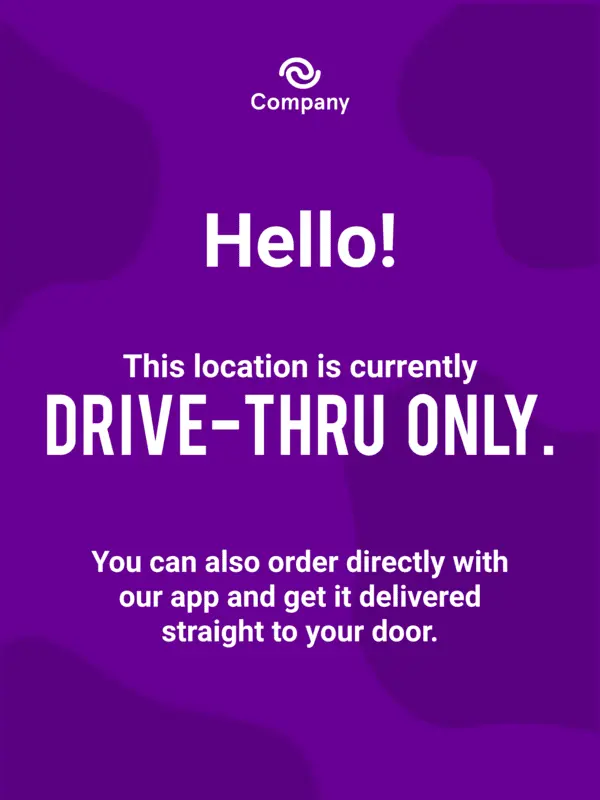
Click on the image to see the template
An ideal poster design for storefronts and buildings whose occupancy limit has been impacted by the pandemic, changes in fire regulations or construction, this poster empowers you to communicate clearly and easily.
Campaign poster template
Keep copy simple to avoid distracting the reader
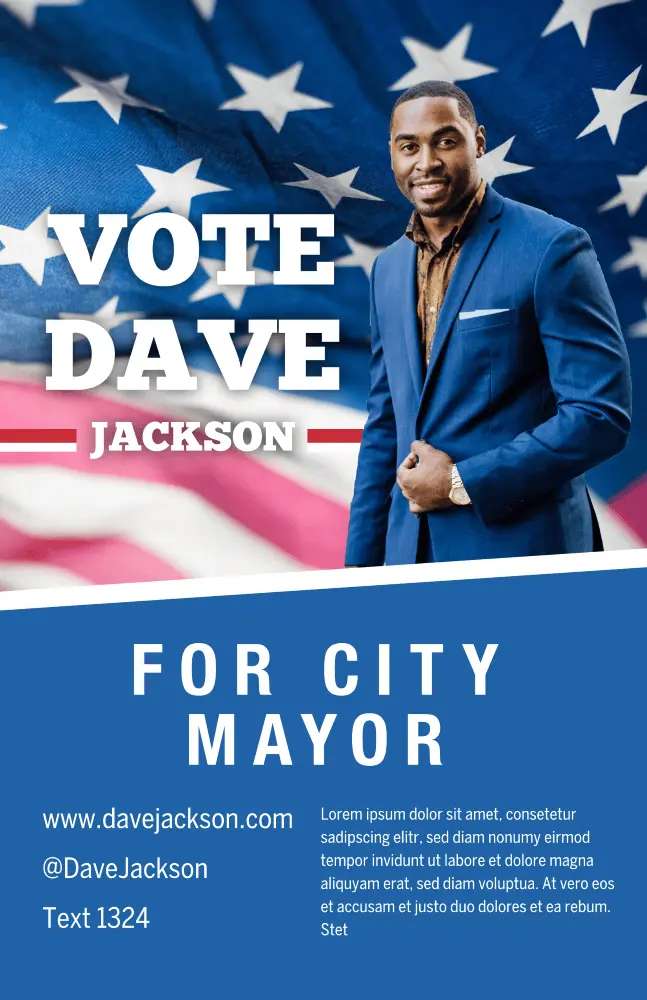
Click on the image to see this template
Make your campaign’s purpose loud and clear with this patriotic campaign poster template. Change up the layout design by swapping out the flag for an illustration, or insert different colors instead of using blue.
University poster template
Pick a background image that reflects the event
Click on the image to see this template
An excellent choice for schools and alternative education platforms, this poster design assures your org’s message will stand out. Bold colors make your advertisement feel loud and clear — swap out your organization’s logo for the provided one.
Nature quote poster template
Too moody for your vibes? Brighten things up by overlaying shapes and color

Click on the image to see this template
Whether you’re looking to meditate, motivate or inspire, the nature quote poster is here to do it all. Customize the graphic design with your own photo or use a stock image to change things up.
Coming home movie poster template
Make the text pop with a border or shape

Click on the image to see this template
Quick, somebody grab the popcorn! And don’t forget the sour gummies! Shhhh!!! It’s time to cozy up and get ready for the character arc, story development and more with the Coming home movie poster template.
Duo campaign poster template
Keep your tagline simple
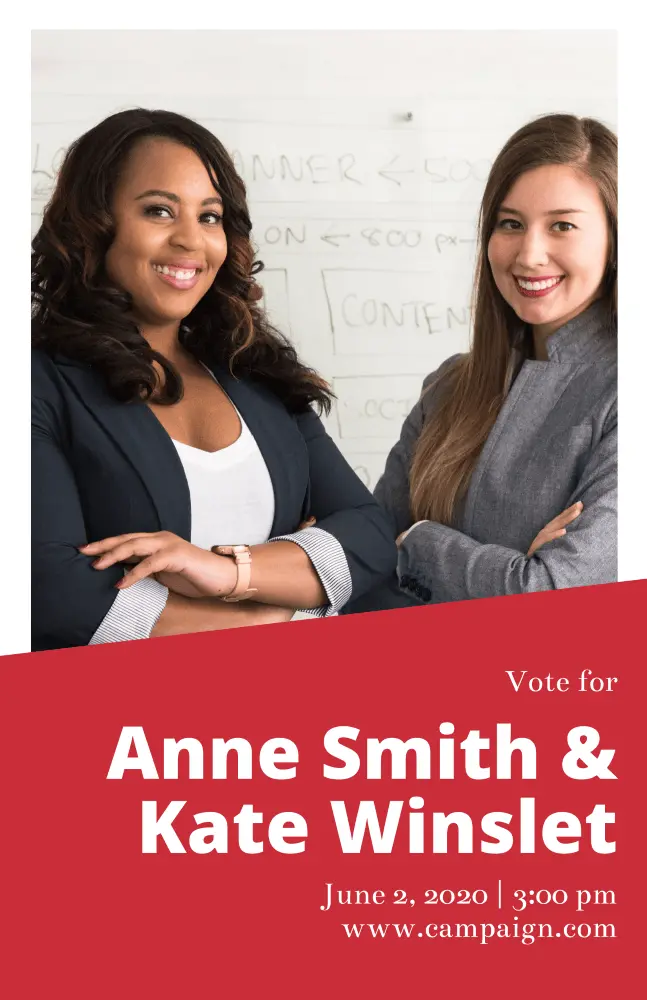
Click on the image to see this template
Give them a reason to try and name a more dynamic duo with the Duo campaign poster template. Showcase your running mate, as well as upcoming town hall events or speaking sessions. Don’t forget to include your campaign’s motto!
Orange & blue passion quote poster template
Don’t stop at one version — make a few till you get it just right
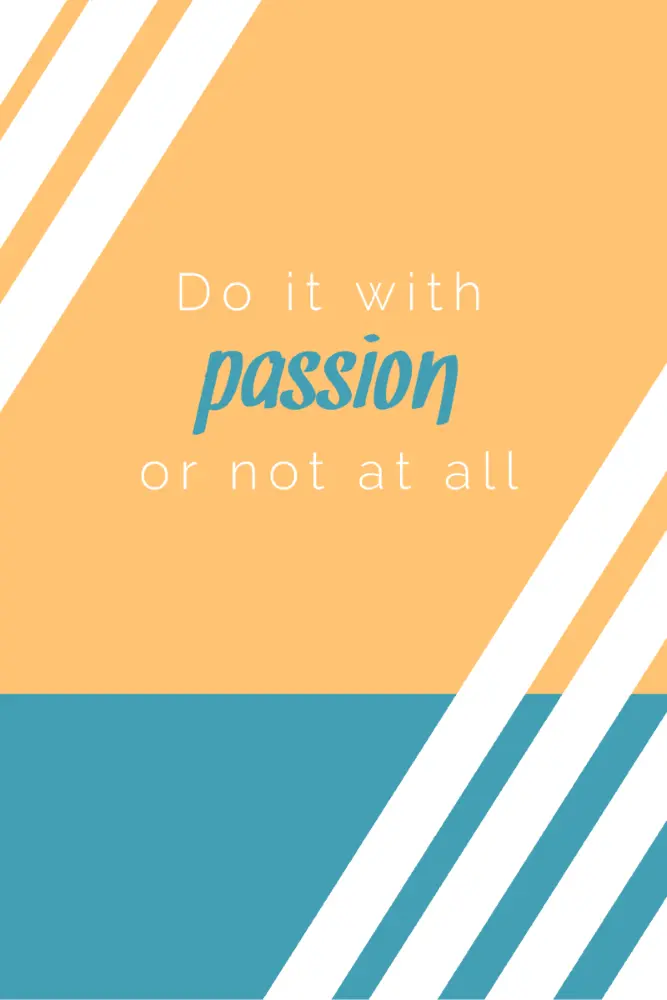
Click on the image to see this template
Equal parts jazzy and simple, the orange and blue passion quote poster template keeps the eye centered on your quote of choice. Be sure to include or note who originally said the quote. Everyone appreciates credit where credit is due.
Blue soccer game day poster template
Be sure to include important details — like event times and such

Click on the image to see the template
Get your fans ready to rumble with the Blue soccer game day poster template. Use the colored overlay to highlight your school or team’s colors — plus you can swap out the image to feature one of your very own athletes!
Student council campaign poster template
Limit CTA usage to one — get folks out and votin’

Click on the image to see this template
Make an impact on your school experience with the Student council campaign poster template. Swap out the stock image for a candid, congenial photo — and be sure to include a little bit about yourself and your campaign initiatives.
One day movie poster
Use the image and icons to tell a story
Click on the image to see this template
Lean into your zany, mad scientist side and use an abstract image to tell a story about your movie. The font is completely customizable, as well as the copy and text box placement. Wherever this template inspiration takes you, may it be nothing short of magical.
Blue and green track schedule poster template
Create a visual timeline aid to help keep folks informed
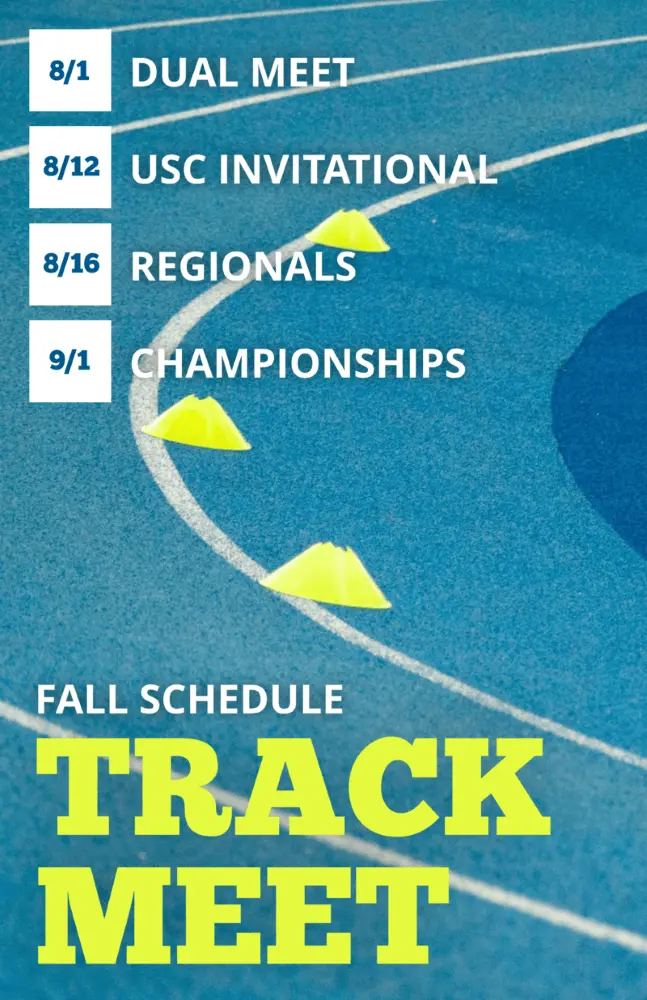
Click on the image to see this template
Keep your school and sports teams on track to win (ayyy, see what we did there?) with the blue and green track schedule poster template. Customize the colors however you see fit, and swap out dates for any upcoming events, like the homecoming match or what have you.
Forests research poster template
Let your content do the talking
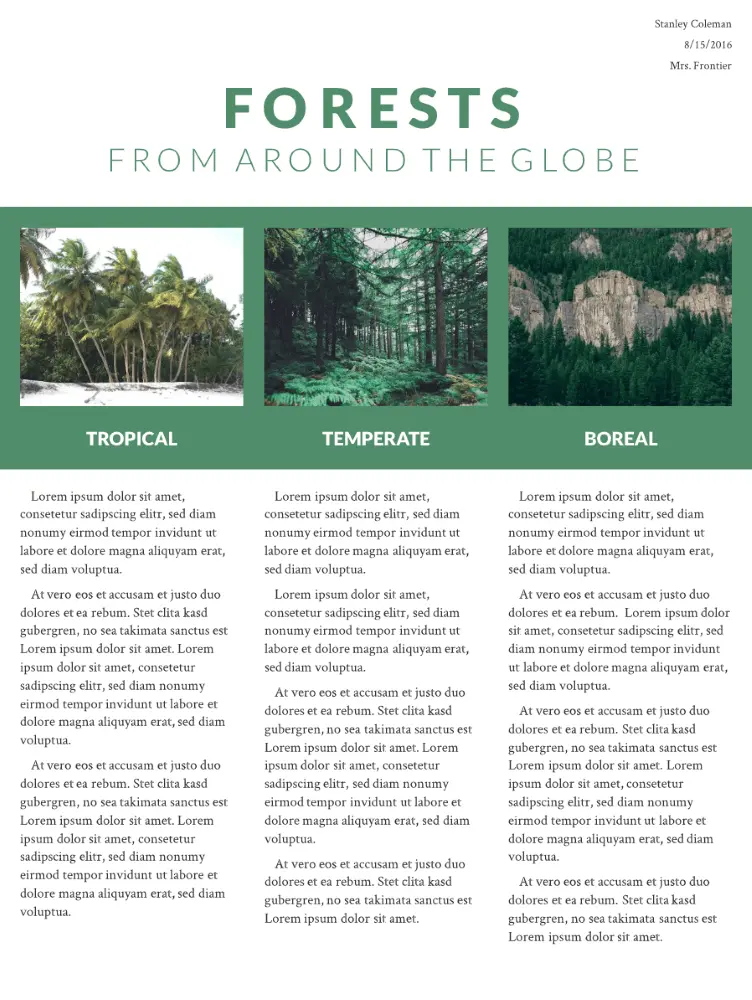
Click on the image to see this template
Created with research and educational projects in mind, this poster provides ample space and graphic design opportunities for images and content in a structured, brochure-like design. The slideshow is both modern and practical, and you can easily add or duplicate pages. The beauty of a one-page template is that your design remains consistent.
Western wanted poster template
Get what you want while paying homage to the original poster

Click on the image to see this template.
Our designers created this poster design tongue-in-cheek. It’s eye-catching and memorable with an instantly recognizable theme. Have excessive quantities of stationery gone missing at work? This is a fun and subtle way to draw attention to outlaw behavior in the office or at home.
Standard advertising poster template
Swap out the red placeholder with your brand’s color palette
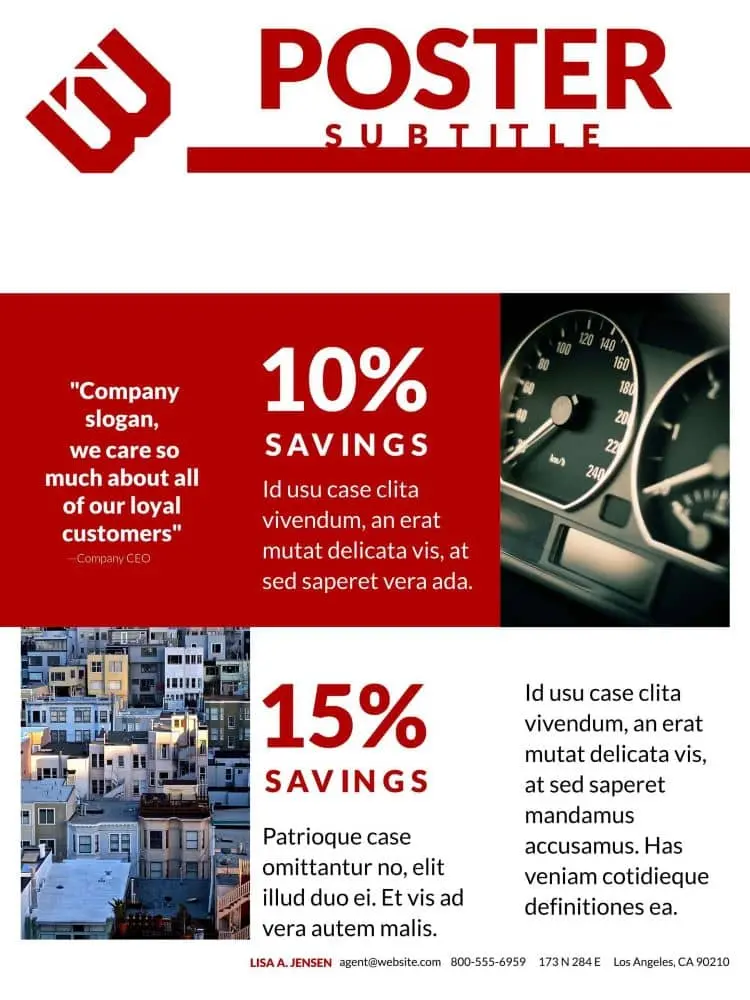
Click on the image to see this template.
This 3-page poster design is perfect for marketing your business at trade shows and exhibitions, or it can be used for an online catalog to advertise special offers. The format is deliberately simple so as not to distract from the content and to make it easy to update if you have regular campaigns.
Motivational quote poster template
Use an action verb for maximum inspiration
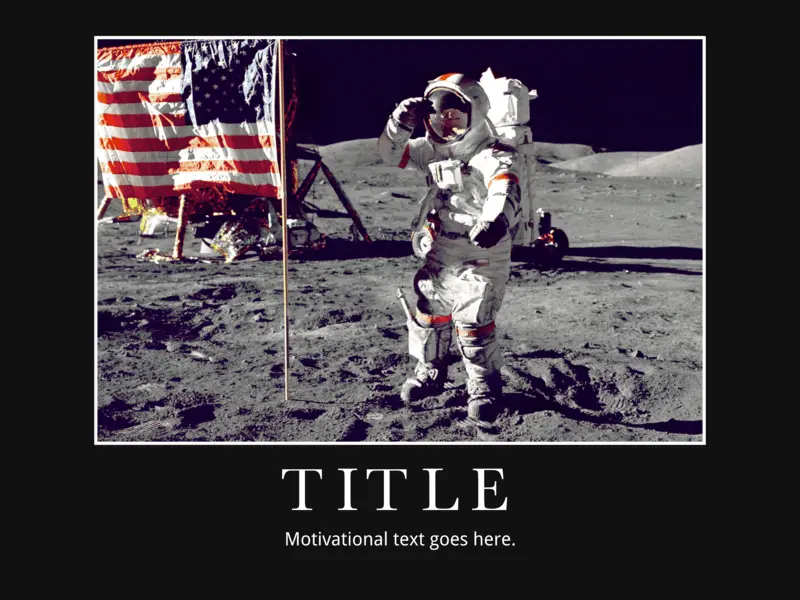
Click on the image to see this template.
Motivational quotes and typography are powerful tools to inspire innovative thinking and promote a sense of well-being. Psychologist and motivation expert Jonathan Fader, PhD, says well-structured messages that use strong imagery and appeal to our aspirational nature can be powerful in changing our thought patterns and behavior.
Heartland business poster template
Don’t have quite the right photo for the event? That’s okay — try Unsplash!

Click on the image to see this template.
This business poster design template provides a surprising and unusual variety of content placeholders so you can sneak in a wealth of information. The placeholder and graphic design space demand your customers’ attention, and the longer they’re looking at your poster, the more likely they’ll absorb your message.
Homegrown event poster template
Keep your colors simple — avoid using discordant color combinations like purple and green
Click on the image to see this template.
We call it Homegrown because this poster design has multiple layers, just like a home-baked pie. If you really want to stand out from the crowd, putting a bit of effort into creating a layered poster will help you to demonstrate the depth and originality of your company’s vision.
Ecosystem scientific poster template
Avoid large walls of text — use illustrations or graphic design to break up walls of copy
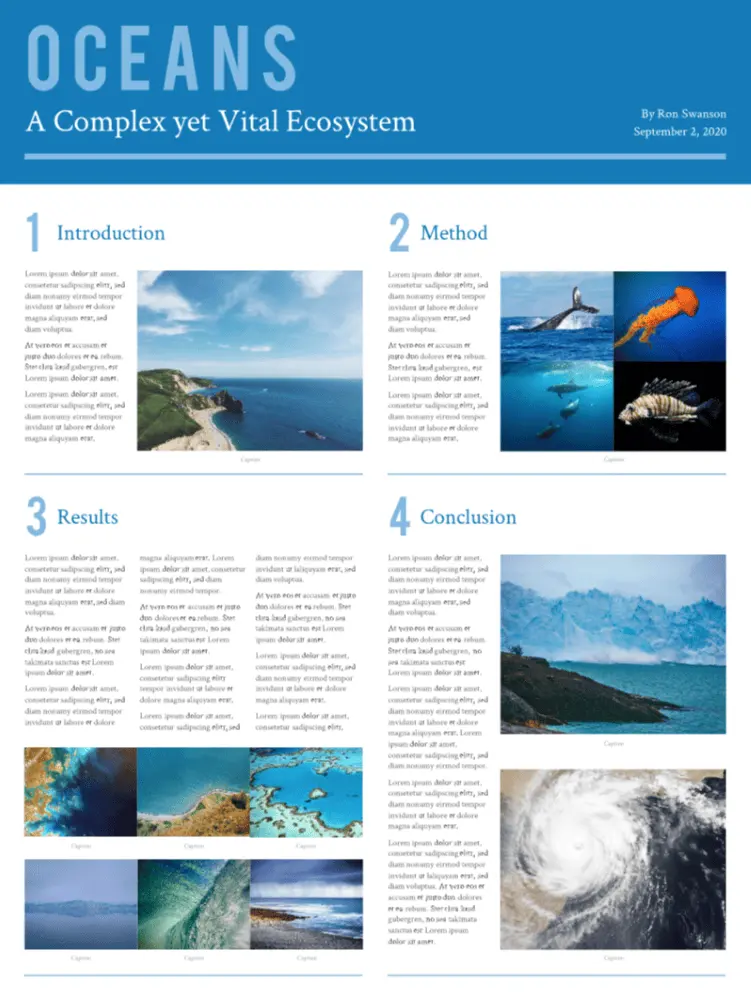
Click on the image to see this template.
Blue is the new green — and this eco-theme disrupts the traditional color mold quite innovatively. This huge 36″ x 48″ poster gives you the physical space to cover even the most complex research projects without having to resort to smaller fonts or cropped images.
Weekend away photo poster template
Start simple with an easy-to-read font and play around from there
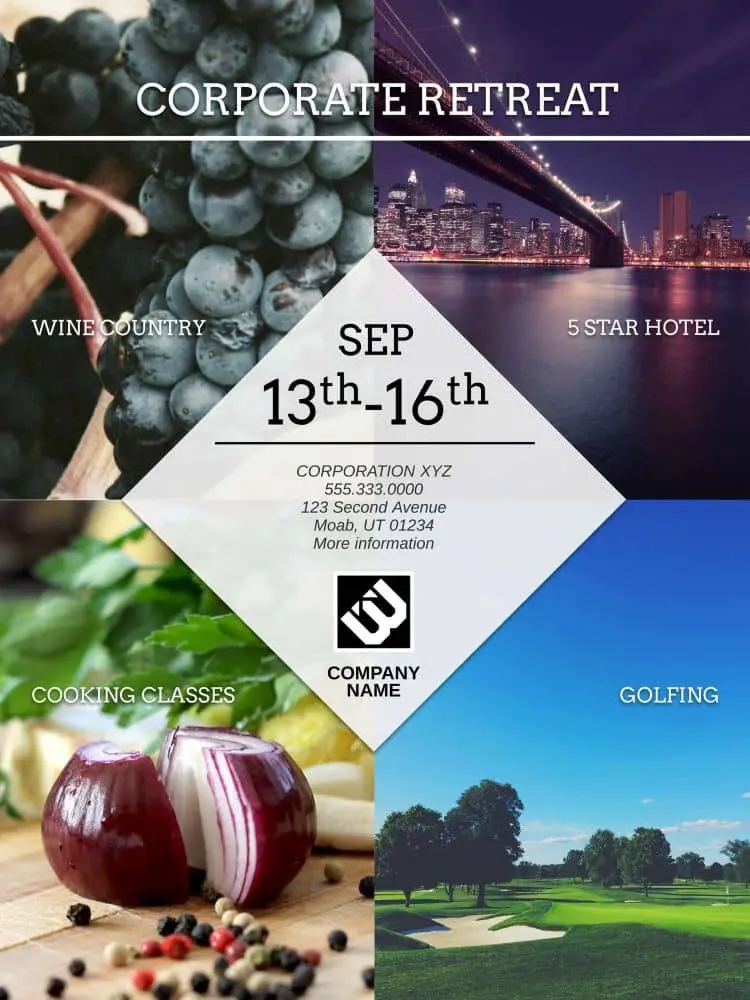
Click on the image to see this template.
This trendy poster design showcases your professional photographs, however, your message still takes center stage. It’s ideal for travel and tourism businesses, for exhibitions, and for luxury brands to announce corporate events and exhibit their products. The Weekend Away is a great example of design layering.
Swiss Alps travel poster template
Want to make a bold statement? Use a vivid, contrasting color for your font

Click on the image to see this template.
Contemporary and bold, this poster paints a strong message. It’s a single-focus design, and you should customize it with your own bold background photograph and daringly creative fonts. The unusual text layout makes it a unique and original choice for technology startups and entrepreneurs.
Nature retreat poster template
Don’t love the included typography? That’s ok, customize with your brand’s font

Click on the image to see this template.
Inspired by the layout of quality print magazine covers, Nature Retreat is eminently versatile. Our customers have used it in projects as diverse as publishing upcoming event information and showcasing their portfolios, and for school projects. The style is informal and slightly whimsical.
Origami banner event poster template
Concise and clear, make the most of this simple layout design
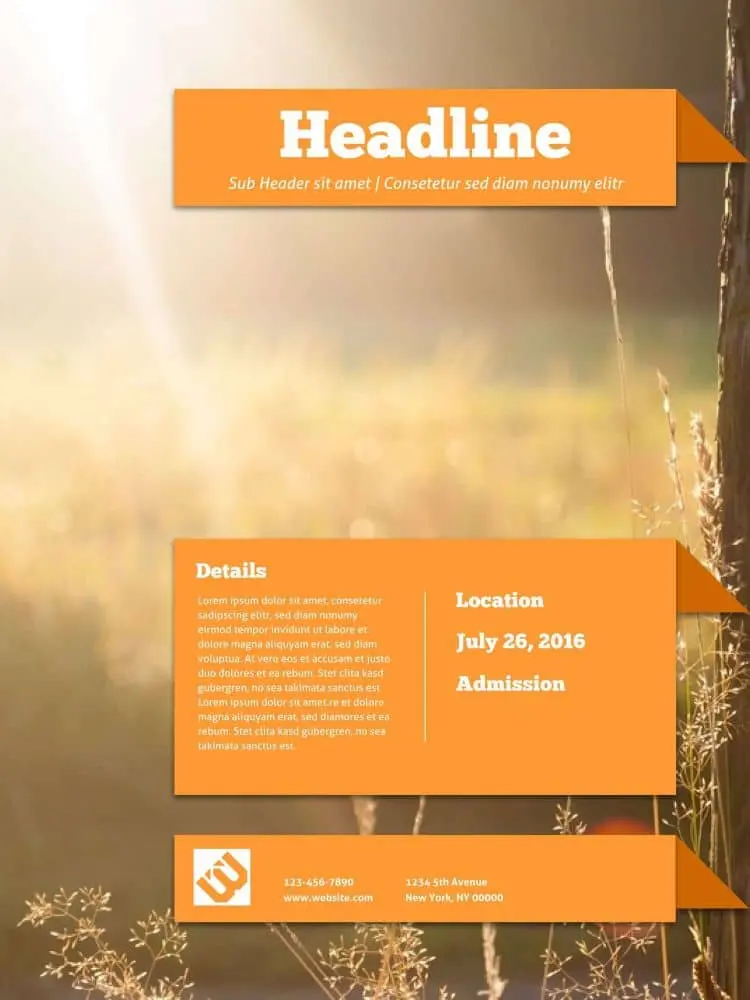
Click on the image to see this template.
Origami is the Japanese art of folding paper into decorative shapes and figures, dating back to the 1880s. This template combines traditional origami with a fresh, modern look to create a perfectly structured design ideal for formal and professional corporate posters.
Block party poster template
Use colors, be it bright or soft, to communicate the vibe of the party

Click on the image to see this template.
Everyone likes a party. Its vibrant graphic design and no-nonsense block layout works well for invitations and holiday events. It’s a one-pager, easy to modify and with placeholders for the “who-what-when-where-why” information. The blocks and frame design are reminiscent of the calling cards of yesteryear.
Night life poster template
Juice up the tone with an abstract illustration for your background
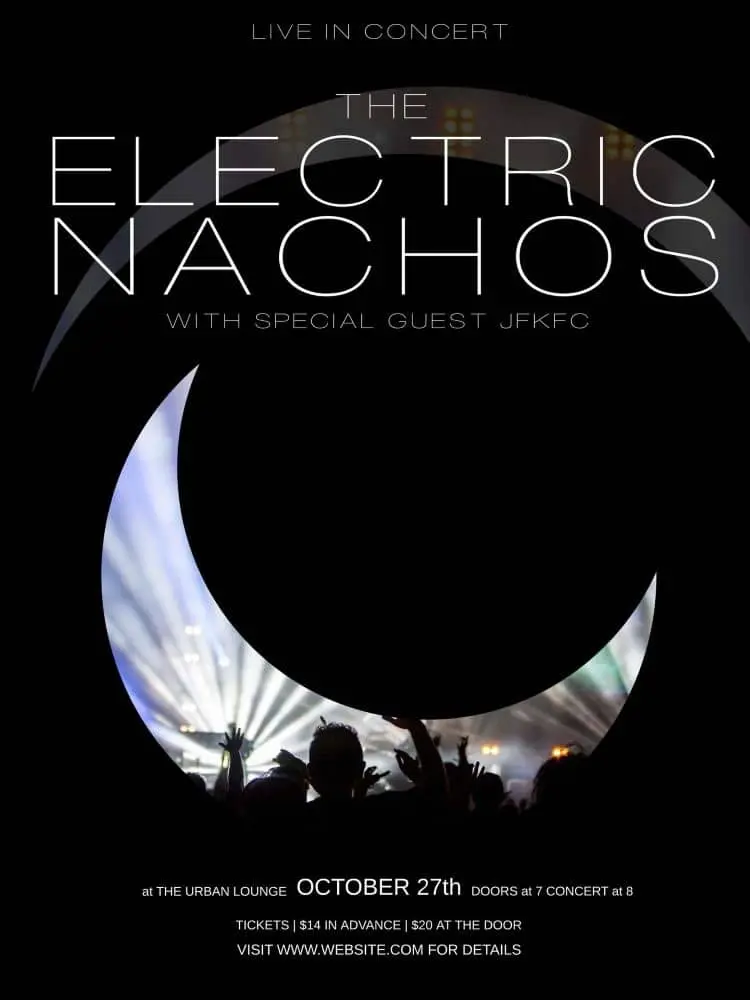
Click on the image to see this template.
Evocative of torn classic denim and multi-layered dresses, this poster design and typography ushers in a new trend of visually captivating posters that challenge design rules — you could even say that we wouldn’t be surprised to see it in the MOMA one day. Light and dark are juxtaposed to evoke excitement and anticipation.
Real estate poster template
Highlight the diversity and variety of your selling history through various images
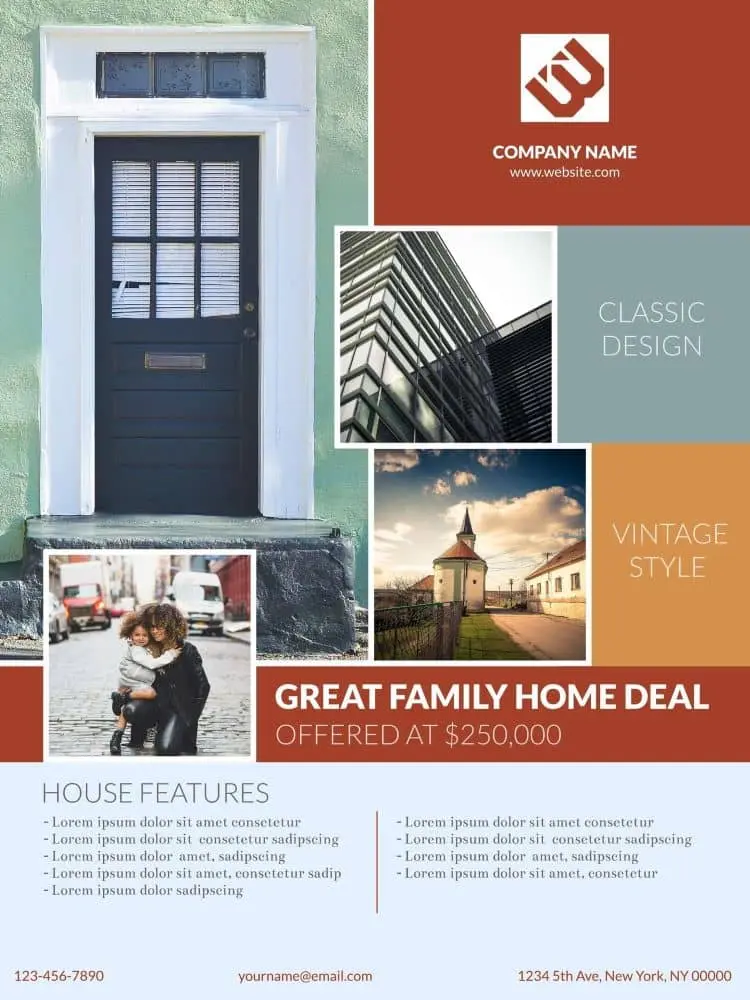
Click on the image to see this template.
Arguably the most versatile and stylish template in the Lucidpress collection, this block design is ultra-bold and is anything but lacking in the design inspiration department Rather than simply invite, the poster compels customers to attend a home viewing. We’ve incorporated vintage and trendy elements both formal and informal… and the result rocks.
Cobalt café poster template
Avoid using stock photos if you’re looking to highlight a unique restaurant
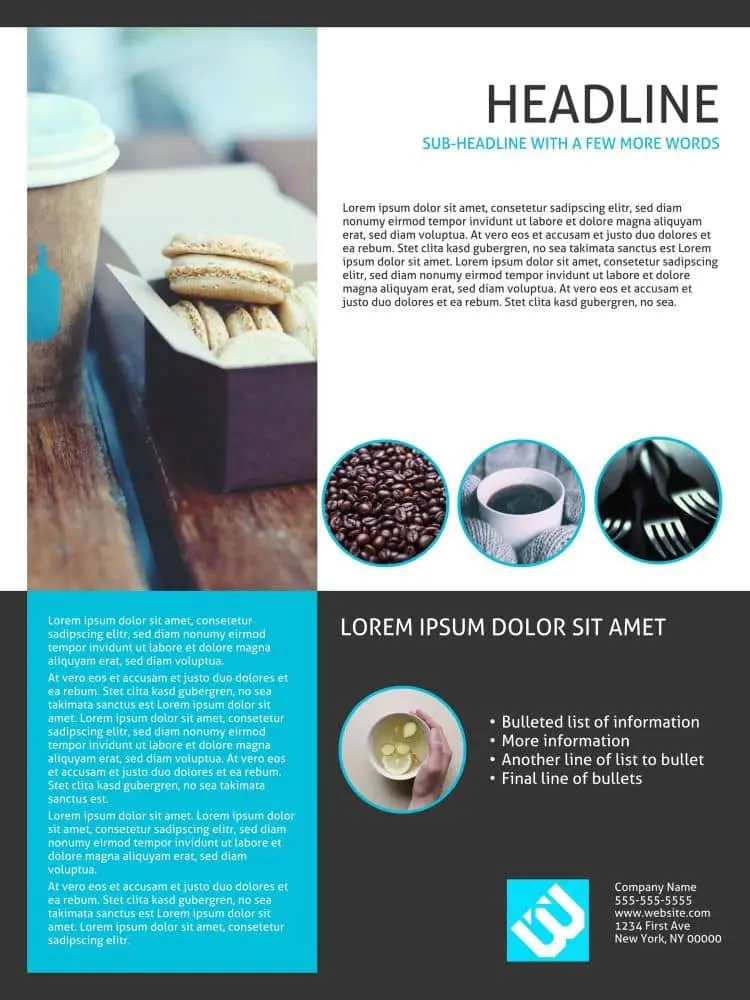
Click on the image to see this template.
When it comes to real estate, location is everything. And when it comes to food, presentation is everything. The design for this creative poster mimics those used for magazine food pages, arousing your taste, visual and smell senses. The Cobalt is warm, welcoming and very practical.
Cut glass marketing poster template
Use this template to communicate official corporate events
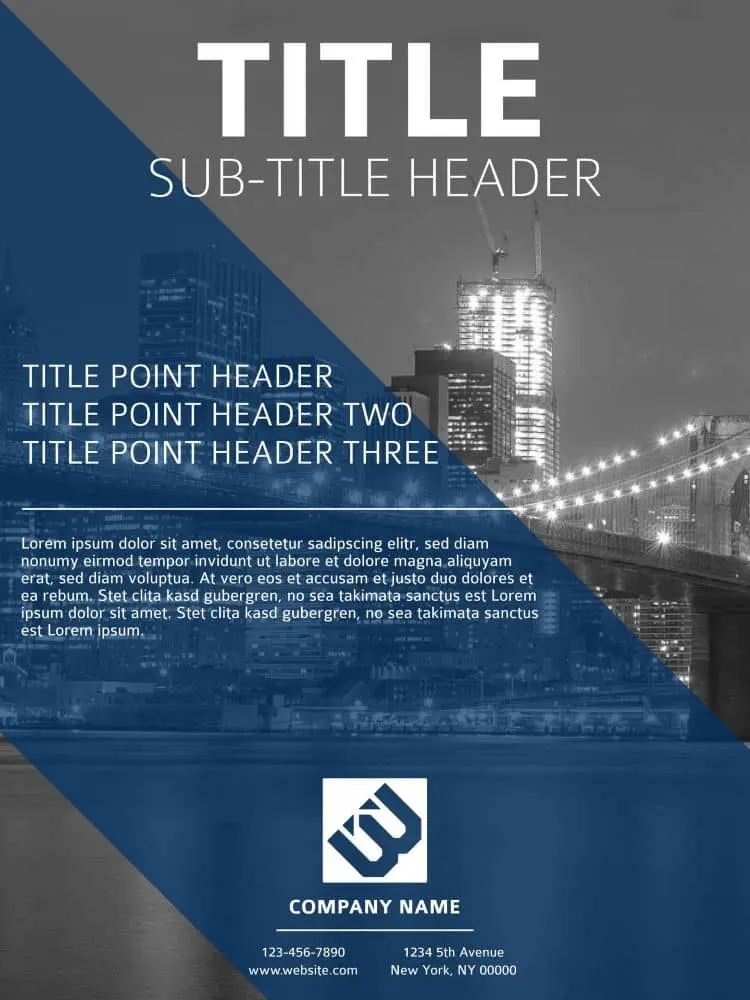
Click on the image to see this template.
Cut Glass presents a sharp graphic design look and feel, perfect for technology startups and real estate innovators. Diagonal lines are more striking than horizontal or vertical ones. As explained by Vanseo Design: “Their kinetic energy and apparent movement create tension and excitement.” Use this template boldly and aggressively.
Cosmopolitan business poster template
Swap out the included stock photo for a snap of your city or HQ
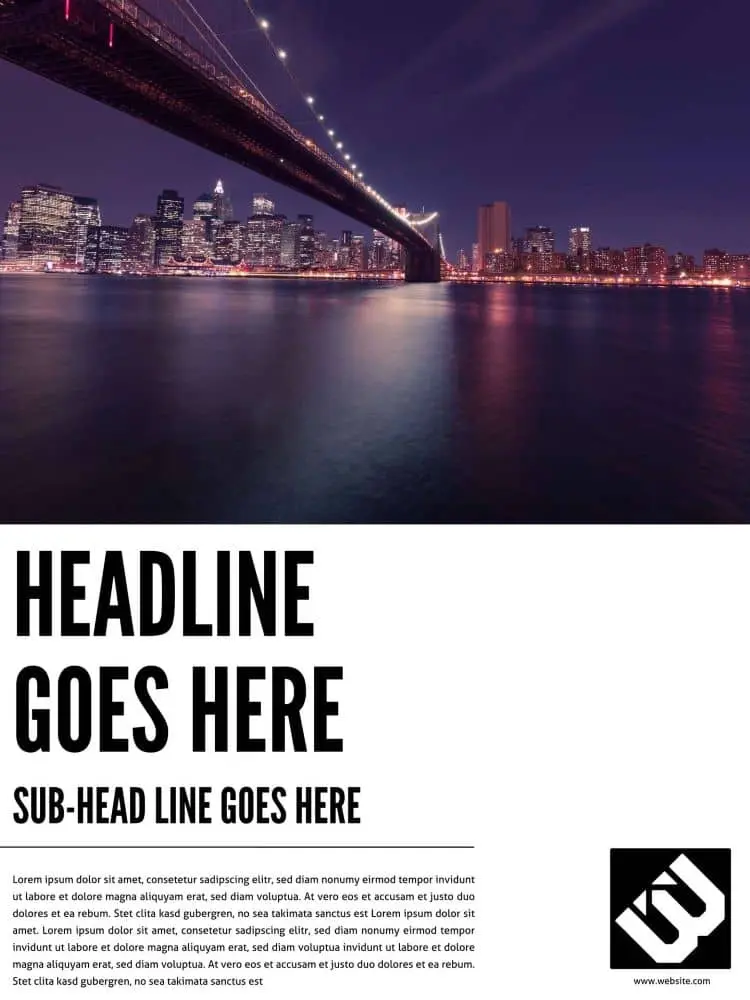
Click on the image to see this template.
Cosmopolitan means cultured, suave, polished and refined… an image you may want to cultivate, particularly if you have an international, sophisticated client base. The hallmarks of cosmopolitan design include the avoidance of “fluff,” subtlety, attention to detail, intricacy and cohesiveness. Would these graphic design and marketing tactics serve your brand, too?
Reflections company poster template
Have official health comms that need relaying to employees? Look no further
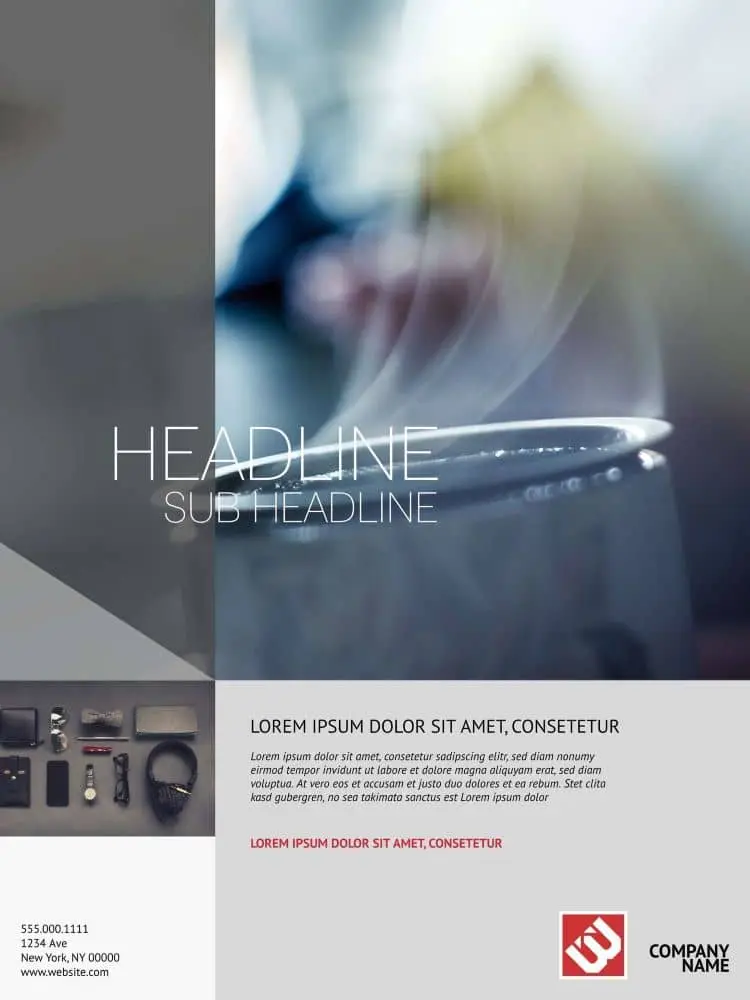
Click on the image to see this template.
The creative inspiration for this design was the subtle reflection of images in water, clouds and shadows, conveying the impression of depth and intelligence. This poster would work particularly well for a beauty technologist, health spa or clinic, or even a luxury brand.
Poster design with Lucidpress is simple thanks to our user-friendly, intuitive interface. It gives you all the functionality of traditional desktop publishing software—but without the learning curve needed when using professional packages. Now it’s time for you to grab one of our free poster templates and get creative.
Feeling inspired? You can design and order your brand new poster right here in Lucidpress.
Choosing the right newsletter design isn’t easy. There’s a seemingly infinite number of designs out there, each with their own strengths and weaknesses. (And in many cases, more weaknesses than strengths.) Finding the right colors, shapes, text formats and image placements can take up a huge amount of time.
But with these professionally designed newsletter templates, all you need to worry about is customizing. The designs are already in place, suggested color palettes chosen, and even some images added (though adding your own is recommended).
Related: How to make a newsletter in 9 steps
Newsletter design tips
There’s a few principles to keep in mind as you concoct your newsletter, even if you start with a pre-existing template. Though, in the end, you’ll have a fantastic-looking newsletter in less time than it will take to find a template from Microsoft Word or Publisher. Your readers will thank you. Also, it’s worth noting that we’ve organized this blog post based on newsletter type — i.e., newsletters for schools, businesses, holidays, digital and more.
Consider the layout type
As in — do you want your newsletter to be: fixed, fluid, responsive or adaptive? To avoid overwhelming you with information (and empowering you to learn on your own terms), we recommend checking out UX Alpaca’s article on layout types.
Grab attention with a header
Let your header do the talking for you. Your header should do one of two things (or both): First, it should draw the reader in. Copy can be witty and sharp, or directly address a pain point you know they have. Either way, you need to grab their attention and endeavor them to keep reading. Without telling them to keep reading. 2.) You need to say something. There’s an approach to copywriting that can be best summarized as “Say it straight, then say it great.” But whatever you do, it has to say something of substance.
Let your body copy do the ‘splainin
Remember: Your header doesn’t have to carry the weight of your newsletter — body copy can come in with the assist. The body copy is where important information should live. How you choose to present that is up to you, but keep in mind that big walls of words can be overwhelming for readers, so we recommend keeping the information as scannable as possible.
Add relevant links where it’s appropriate
The devil is in the details, right? Be sure to include links to webinars, listings, school flyers and more. If you want people to show up, you gotta give them a reason to show up! Or whatever.
Newsletters for schools
Skyline High classroom newsletter template
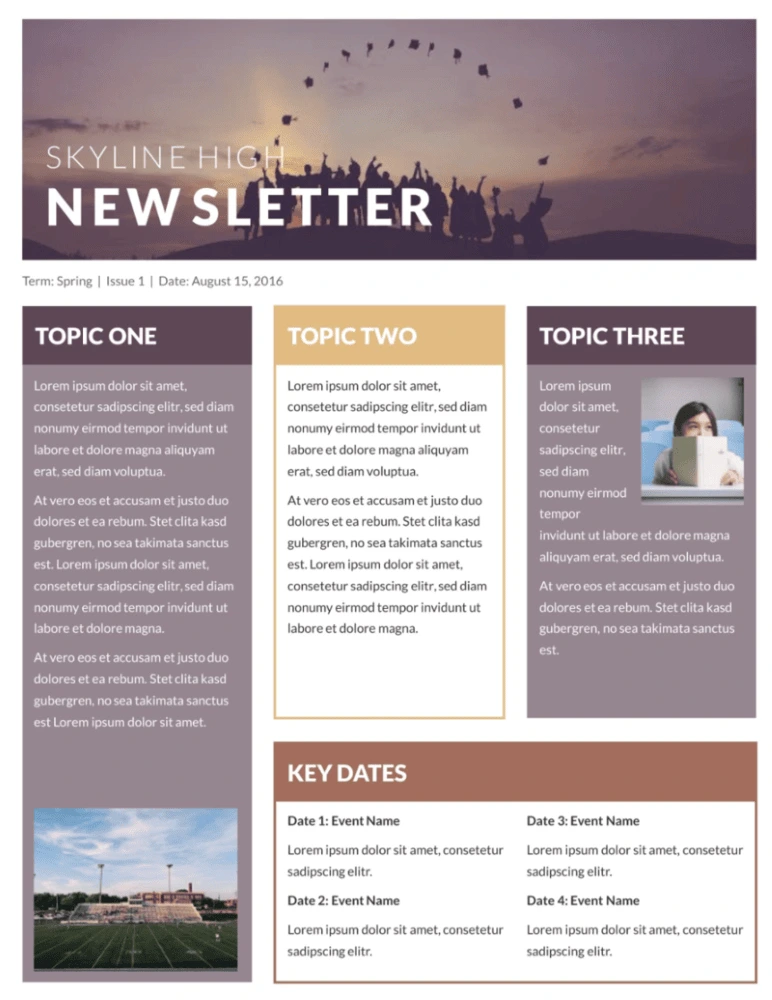
This classroom newsletter template stands out from the rest with muted colors, an inspiring header image, and lots of room to share your message. Whether you’re simply giving updates on what’s happening or sharing important news about conferences, exams or standardized testing, your message will come across loud and clear.
Blossoms school newsletter template
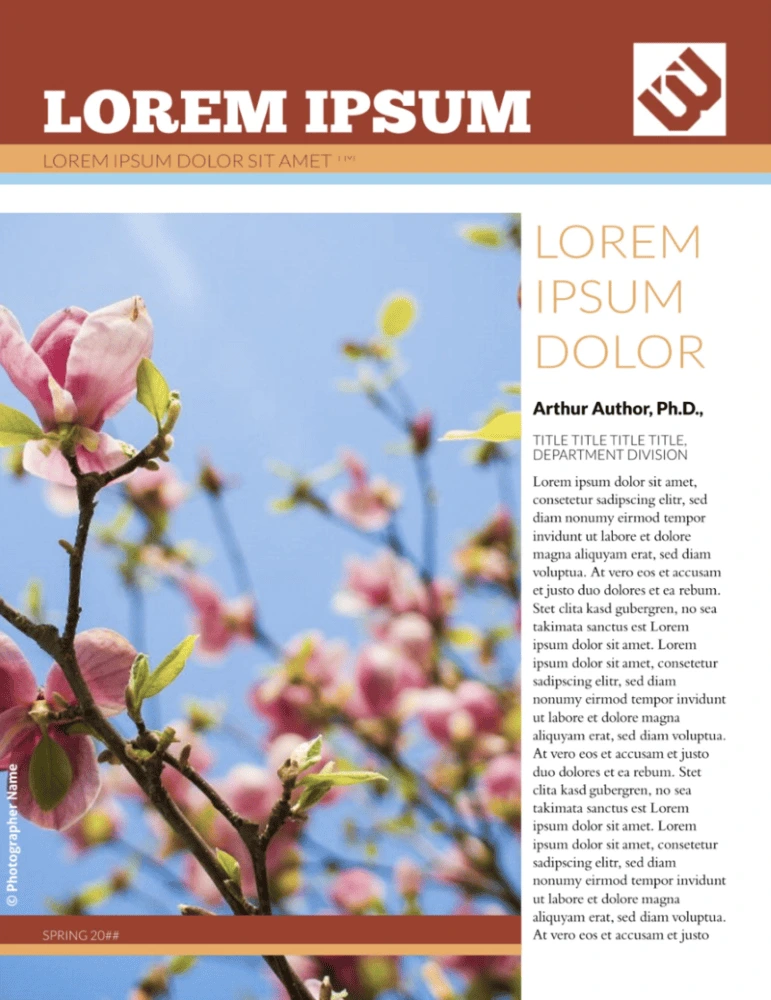
Flowers are perfect for school newsletters: they imply growth, potential, purpose, and they lend a positive, happy feeling to everything. Just add your school’s logo, the content of your newsletter and a few custom images, and you have a newsletter that parents will want to read.
Newsletters for business
City events newsletter template
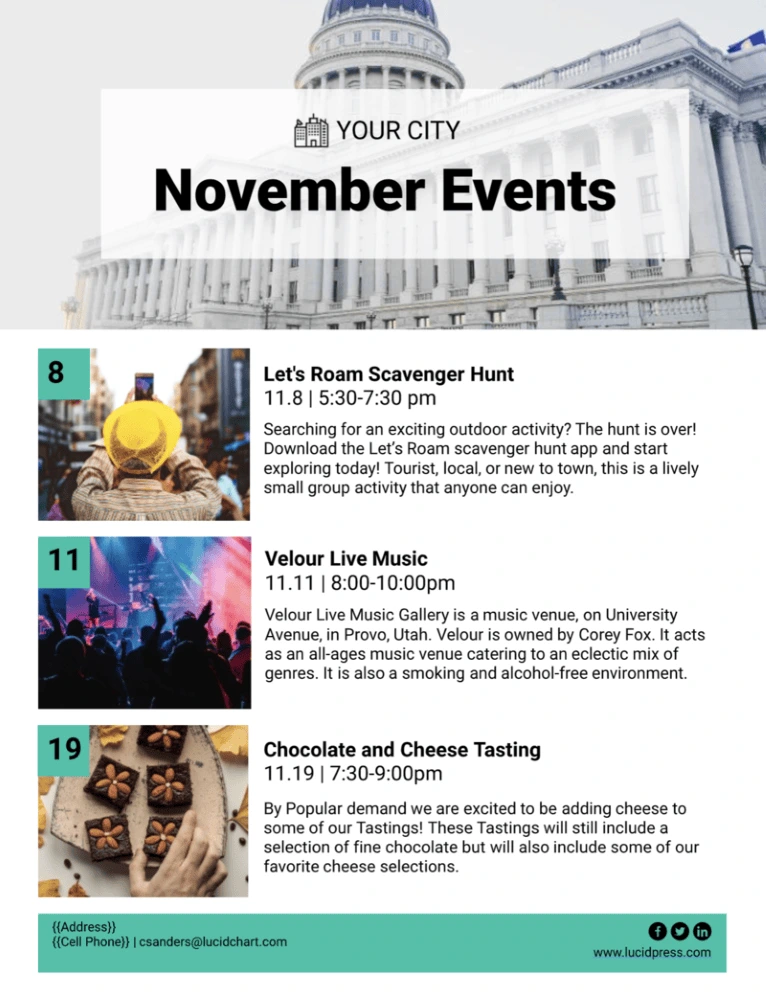
Keep your community apprised of upcoming events — both virtual or in-person — with the city events newsletter template. Insert photos from previous events (as well as your own city hall building or town committee) — or use stock images if you need to — and leverage the ample writing space to communicate with others about changes in local regulations, upcoming town halls and more.
Polaroid real estate newsletter template
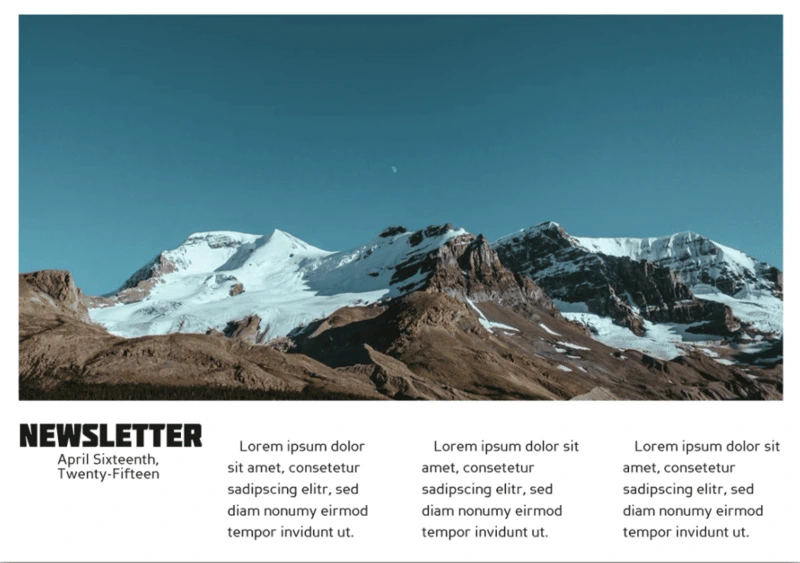
Real estate is all about pictures, and this newsletter template captures that feeling perfectly. The iconic rectangular format gives you tons of room to show off your best properties, and choosing a scrollable digital format allows for all the text you need to describe it. Optional blocks of color help your newsletter stand out from the rest, too.
Merge financial business newsletter template

The time of boring business newsletters is over. Modern companies need to grab readers’ attention with bold colors, interesting shapes and arresting images. This financial business newsletter design has all of those ingredients in spades. The newspaper-style columns let you share different stories or ideas, and the header is great for recurring newsletters with featured authors.
Black Widow company newsletter template
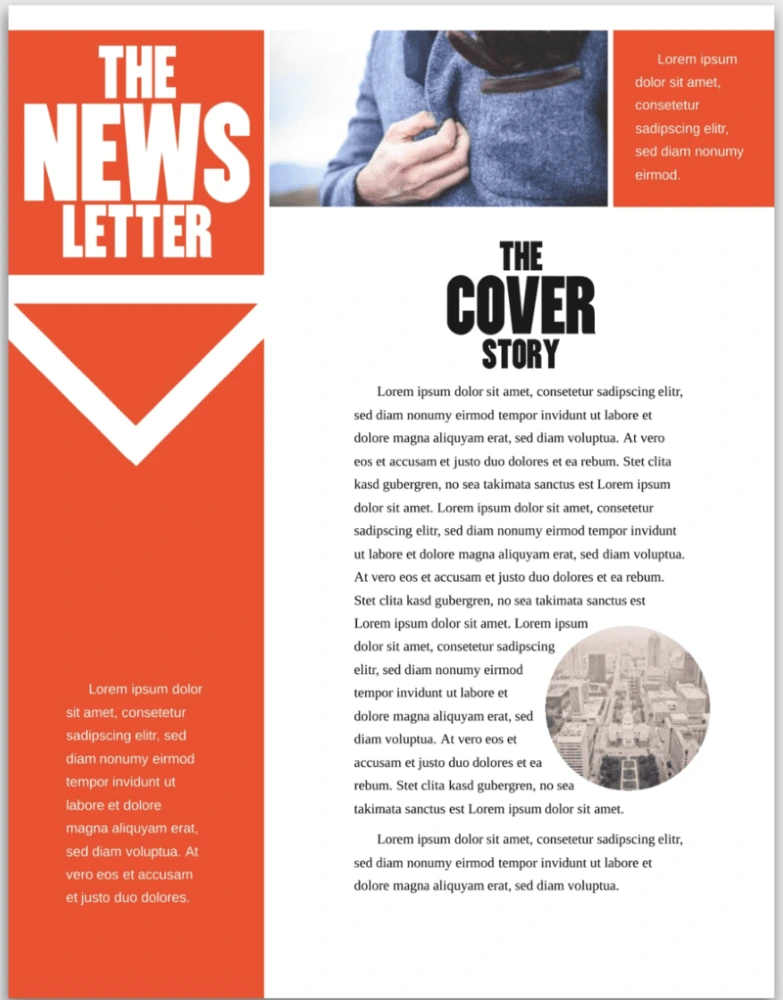
Company newsletters are often bright and airy or monochromatic and, well… boring. But this template finds a balance with bold red accents, striking blocks of black, and plenty of whitespace to make reading easy. Add images to spice things up a bit, and you have yourself a professional — but unique — newsletter template.
Citrus Splash employee newsletter template
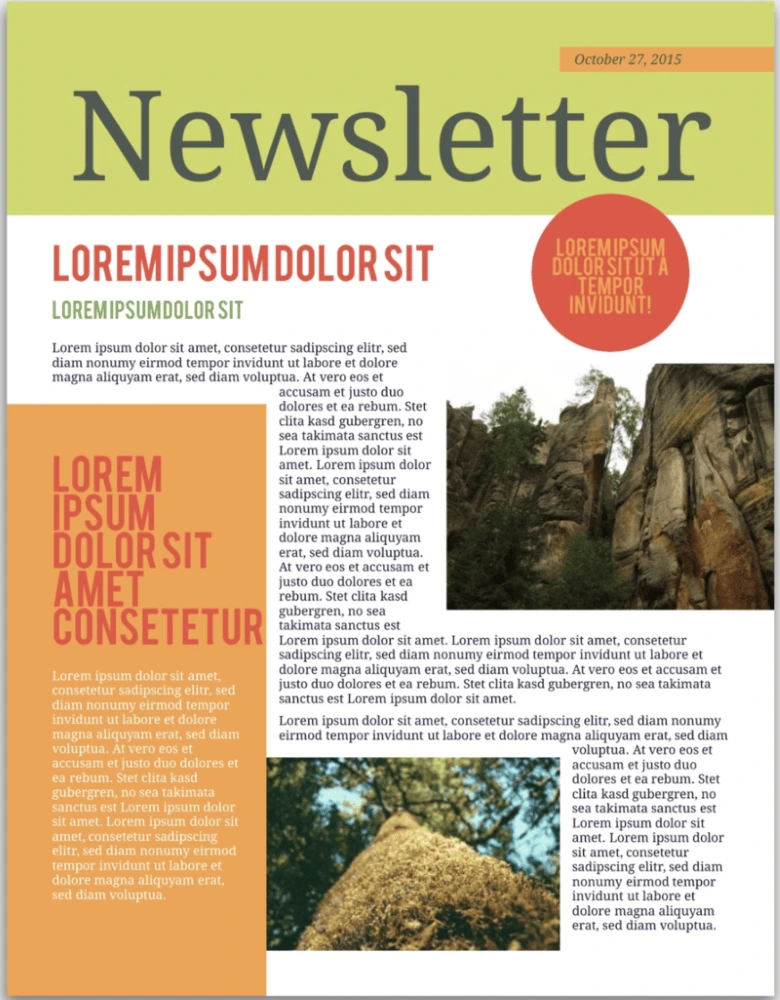
Employee newsletters have a reputation for being rather boring—and that starts with the template. Don’t settle for bland colors and cheesy iconography! This template is full of bright colors that immediately set a positive tone for your newsletter. Whether you’re in a tropical climate or a temperate one, your employees’ days will be brightened by it.
Angles company newsletter template
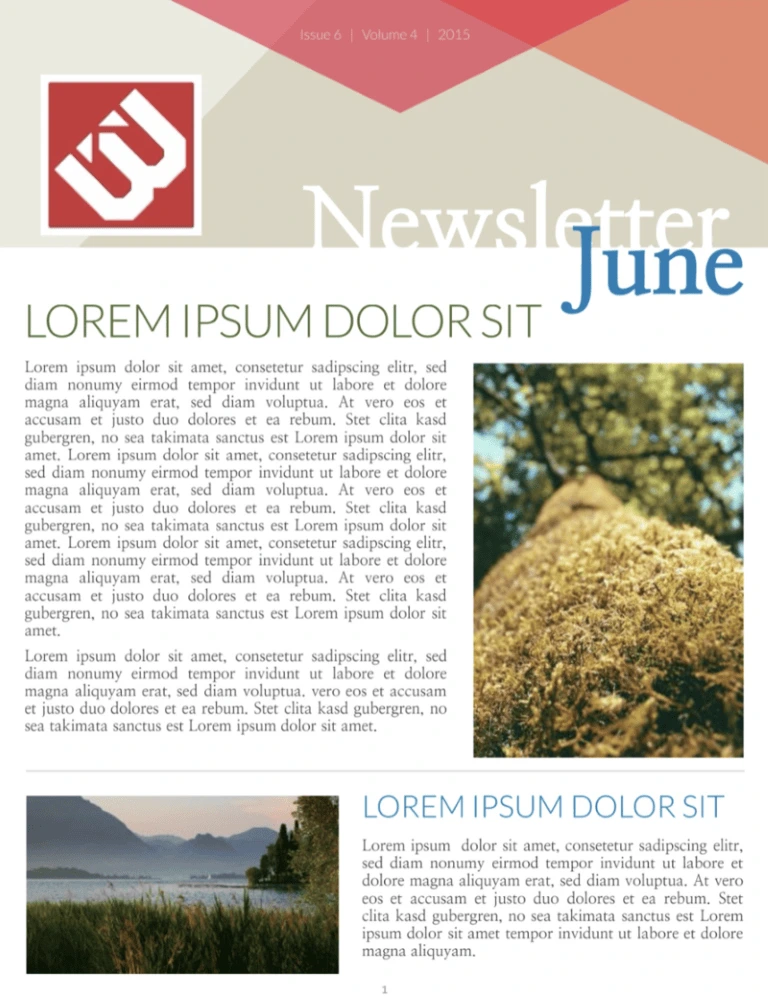
There’s something dynamic about angles in bold colors—and this newsletter template takes full advantage. A combination of bright and calm tones adds even more energy to the template. If your company is pushing forward, the vitality in this template will fit it perfectly. Plenty of room for images and multiple text sections make it as useful as it is engaging.
Bold business newsletter template
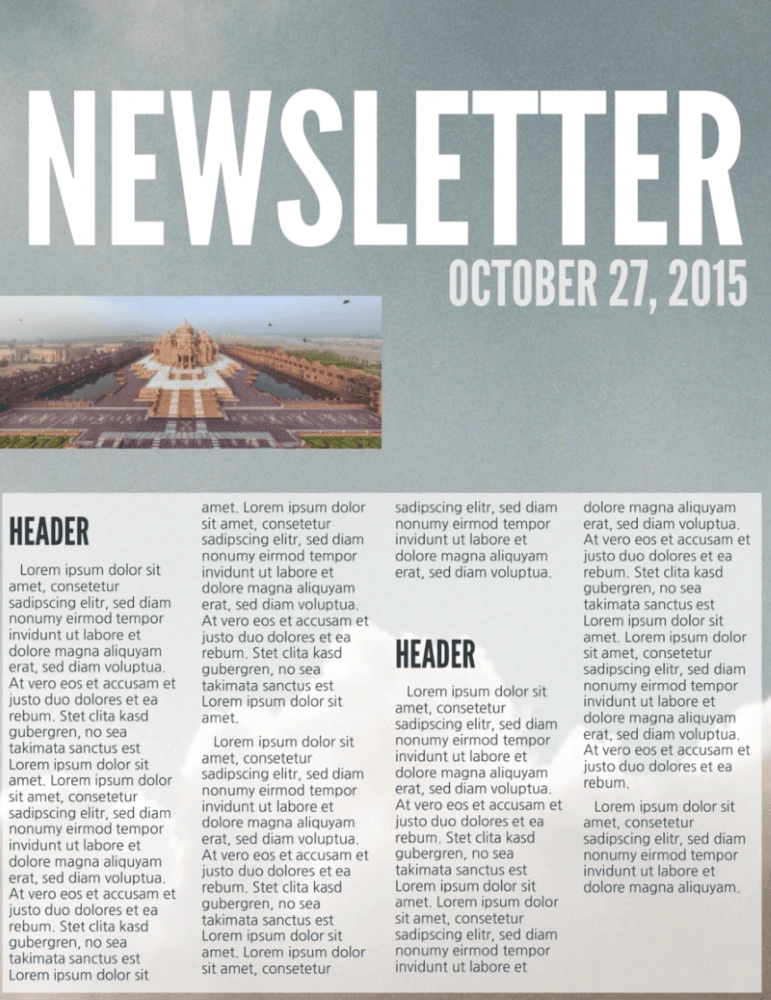
Business newsletters are so often really boring, but with big attention-grabbing text, this template will help you grab your readers’ attention. It’s not all flash, though—there’s plenty of room for the headlines and text you need to share important information with customers, colleagues, shareholders, and anyone else interested in your business.
Corporate business newsletter template
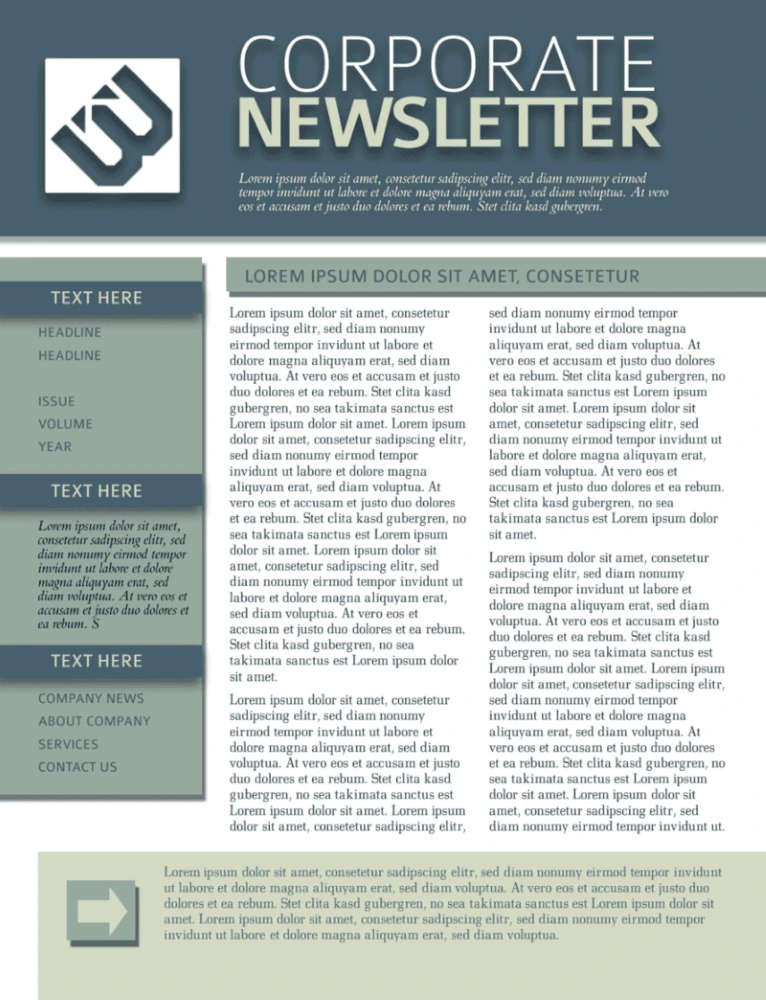
We know that not every company wants lots of bright colors in their newsletter template. But that doesn’t mean it has to be boring. This template uses a cool, muted palette to maintain a professional look. The professional design, room for images, and well-laid-out pages ensure that your newsletter shares information effectively while maintaining the tone you’re looking for.
Holiday newsletters
Holiday Christmas newsletter template
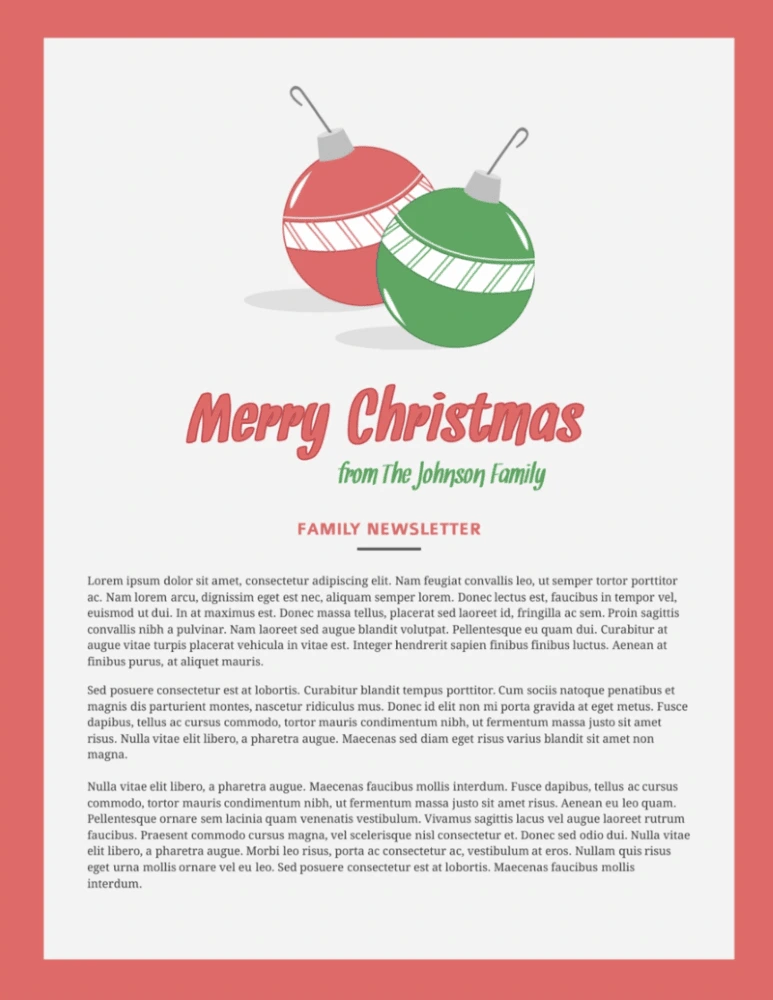
There are tons of Christmas newsletter designs out there, but most of them look the same: full of too many snowflakes, baubles and presents. They’re distracting and, frankly, a bit tacky. This Christmas newsletter keeps things simple with seasonal colors, clean layouts, and just a few ornaments.
Photo Christmas newsletter template
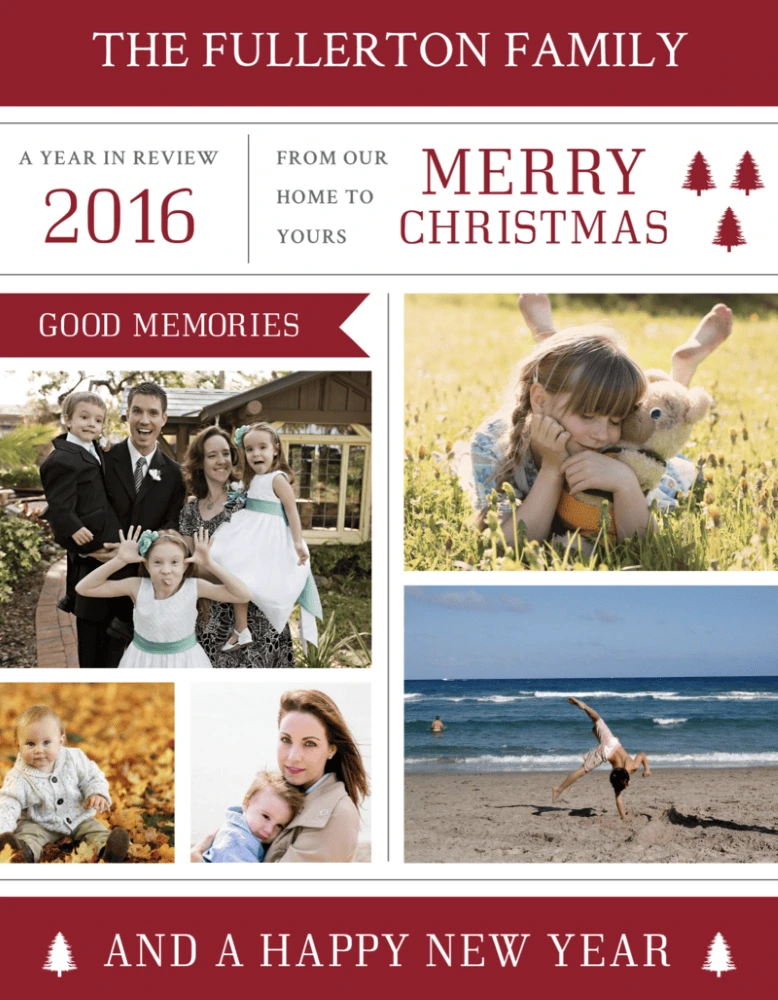
Spread some holiday cheer with the photo Christmas newsletter template. Just pop any of the year’s recent photo sessions (both impromptu and professional) into the layout, and be prepared to warm friends’ and families’ hearts from afar.
Digital and email newsletters
Restaurant email newsletter template
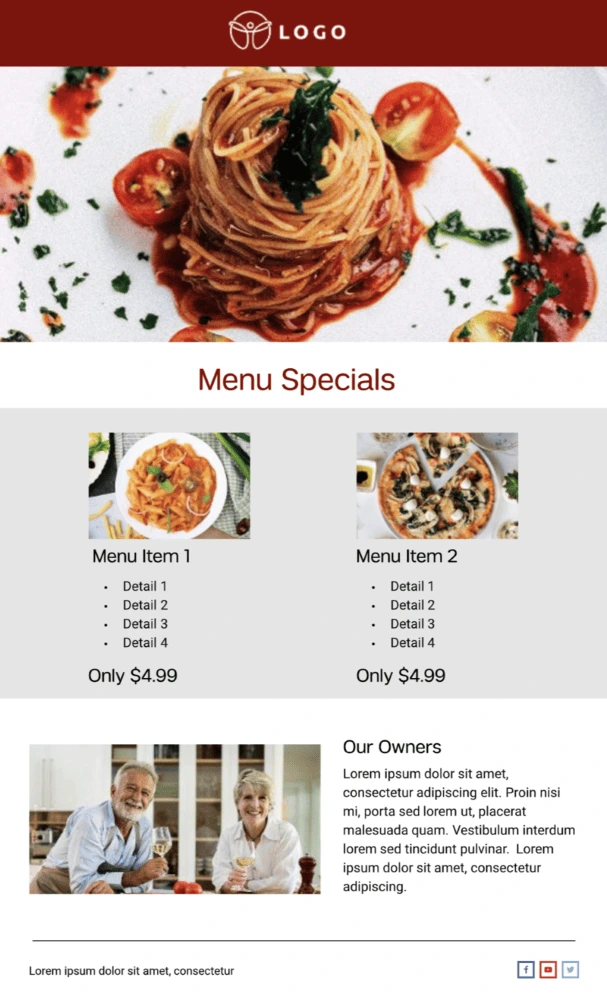
The restaurant email newsletter template is :chef’s kiss: — Highlight your restaurant and the staff that make everything possible with this easy-to-customize template. You can easily communicate any upcoming closures, events or changes in menu. Or you can simply give folks a mouth-watering reason to come back with a coupon or friendly reminder about your hours.
Conference email newsletter template
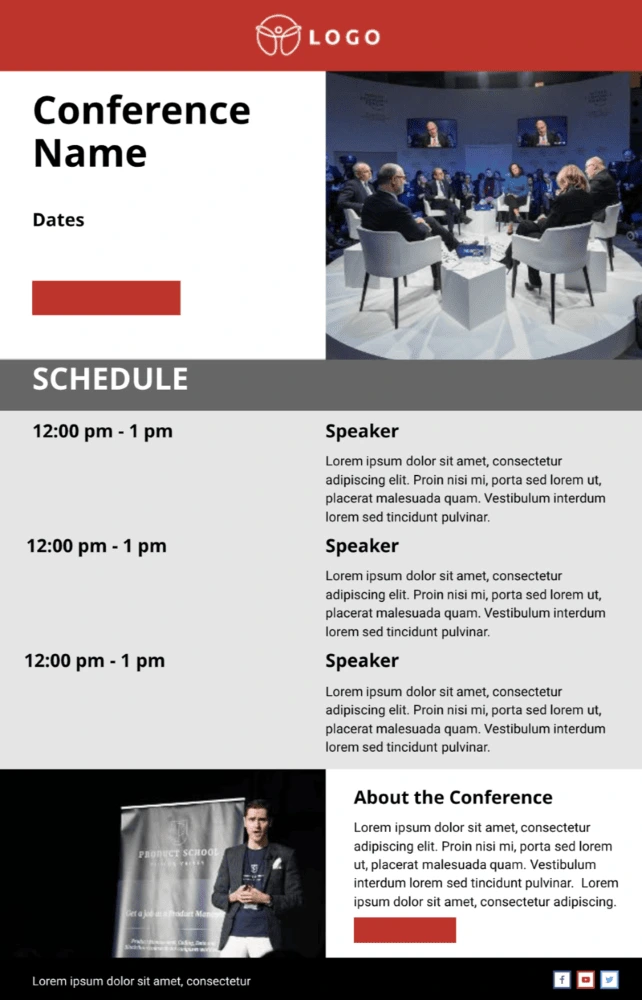
When it comes to attending conferences, attendees need you to get straight to the point — there’s no need for fancy, floral language or walls of text. Give the people what they need with the conference email newsletter template. The simplicity of this newsletter empowers you to cut to the chase, therefore keeping the agenda and end goals clear and concise.
Real estate email newsletter template
Need an easy way to keep clients, brokers and fellow agents up-to-date with the fast-moving market? Look no further than the real estate email newsletter template. Customize the images based on the MLS listing, along with any noteworthy callouts in the copy sections.
Data email newsletter template
Highlight important wins, transformations in ROI or dips in sales performance with the data email newsletter template. Whatever numerical information you need to present, this newsletter helps you compile the information in an orderly and easy-to-digest format. And if you need to send the newsletter out monthly, all you have to do is make a copy of the doc and you’re off to the races!
Business email newsletter template
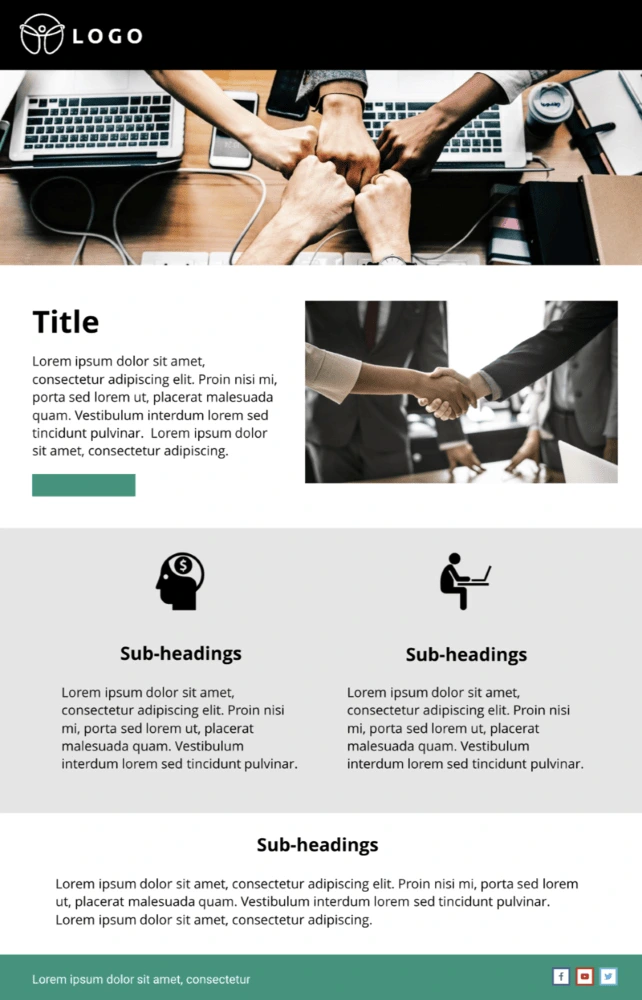
Regardless of what arena or industry you’re in, keep your business top of mind with the business email newsletter template. Whether you’re looking to periodically update board members, customers or even fellow colleagues, this easy-to-customize newsletter template.
Terra Cotta digital newsletter template
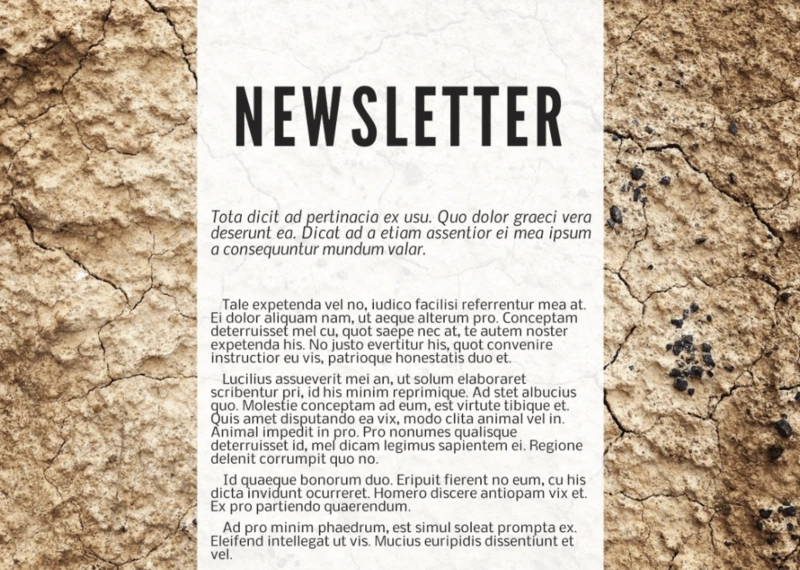
Digital newsletter designs don’t have the same requirements as print ones—they can be more image-based, use different colors, even include scrolling effects. This template allows for a wide variety of designs, all of which capitalize on ample space for powerful images. Combined with clear text and the ability to add your own images and videos, you can share any information you want in a clear, visually appealing package.
Orbital digital newsletter template

This template is all about creating the right feel with a big, powerful image. Whether you use one of our images or upload your own, you’ll be setting the tone for your entire newsletter. It could be inspirational, topical, or just an image that speaks to you. And because this digital template has room for scrolling text, you can include as much information as you want. That makes it one of the most flexible and versatile templates out there.
Textual e-newsletter template
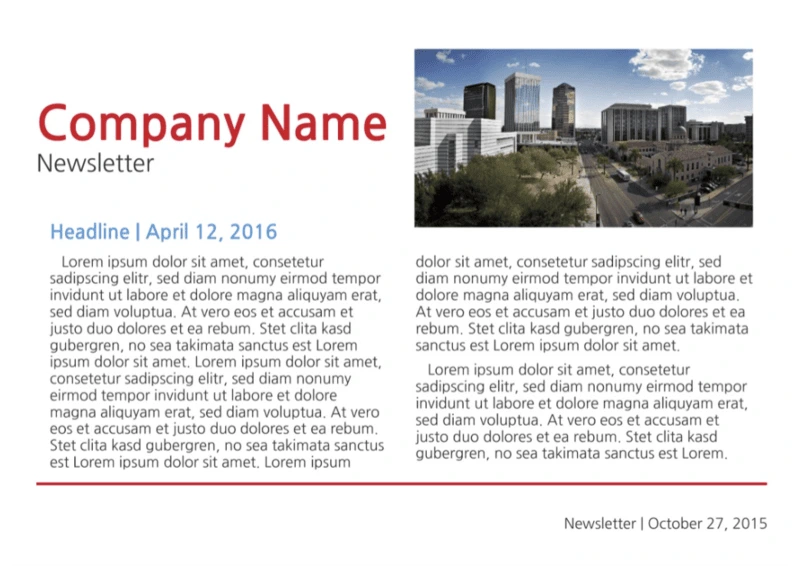
It’s easy to get carried away with images, photos, links, and other distracting things when you’re building an e-newsletter. It’s important to remember that your main goal is to share information in an easy-to-read manner. The clear fonts and white background of this template let you do that without over-complicating things. Sometimes simple really is better.
Be a memorable point of contact
A newsletter is an important point of contact. Whether you’re designing one for a school, a business, another type of organization, or just for your family and friends, you want it to reflect your message. These designs give you a wide variety of looks to do just that
So, what are you waiting for? Find a template that fits the feeling you’re going for, customize it in a few minutes with your own photos and colors, and get your message out there in style.
Ready to wow your audience with beautifully designed newsletters? Lucidpress will help you send the right message.
Today’s marketers are living in a fascinating world. The landscape that encompasses our what, where, when, how and why sees drastic shifts from day to day. Since over 60% of marketers claim that generating quality traffic and leads is their top challenge, success means getting the right content in front of the right sets of eyes.
Related: 9 ways marketers & designers can collaborate better
Design thinking is a concept that’s been making waves in the marketing world. It refers to an iterative process that aims to intrinsically understand the user, challenge conventions, and redefine the very nature of certain problems to come up with alternative strategies and solutions. If your team is searching for innovative ideas, here are 3 ways to create a marketing culture around design thinking.
1. Build your team to match your vision
Marketing visions can vary quite a bit from brand to brand. Building a team that functions as a single unit can be a significant challenge, especially in a growing company. Marketing teams need to maintain a healthy dynamic where ideas and processes work together to achieve business goals.
Assembling a team with a unified vision all starts in the recruiting process. To create a culture around design thinking, you have to build a modern marketing team. This includes:
- Content creation – Writing blogs, creating videos, infographics, etc.
- Acquisition – Generating traffic, leads and front-end sales.
- Monetization – Turning leads into customers.
In order for these roles to work in harmony, all visions and values need to be aligned.
Fortunately, there are resources to make this task easier. As little as a decade ago, you could only learn so much about a new hire before bringing them onboard. Today, AI-driven tools like Harver automatically match applicant skillsets to job descriptions. You can even run a number of specialized tests for things like situational judgement, professional values, personality traits, and problem-solving capabilities.
Impactful design thinking is only possible when everyone is on the same page. Throughout the long process of building a marketing culture, this needs to be a priority.
2. Use data to think outside the box
Design thinking and “thinking outside the box” are practically synonymous. But, that phrase can mean a number of things. One of the first to come to mind is how controversial people can make bold, unorthodox statements and get nearly every major media outlet in the country into a state of uproar. While this approach can certainly get the masses talking, it’s probably not wise to bank on it.
For a marketing team to break the norm and boost engagement, they must first understand exactly what “the norm” is.
One of best ways to do this is by diving deep into the data they already have on their customers. They can mine this data for underlying insights in customer profiles, conversion patterns and inventory management. For example, an online retailer can use their point-of-sale data to target customers at every point of the sales funnel-be it awareness, interest or decision.
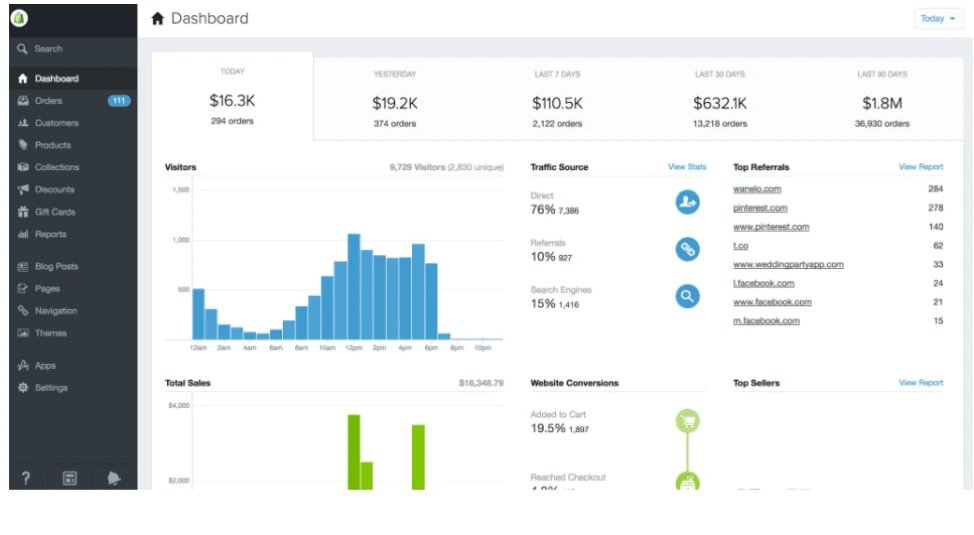
Using this data-backed information is the key to understanding pain points. You can’t find innovative solutions if you don’t understand the common snags in your systems, customer behavior and shopping trends.
Burberry, a luxury fashion brand, once found themselves stuck with a growth rate of merely 2%. With sales numbers not being anywhere close to what they needed to be, a monumental change was in order. After looking at their customer data, it became clear they were not making an impact on younger shoppers.
Knowing the younger generation’s love for social media, the marketing team did a complete overhaul of their strategy to shift the focus to more millennial-friendly messaging. This involved a strong deviation from their core heritage. The marketing team worked to create more personalized and relatable content by investing heavily in a strong social media presence.
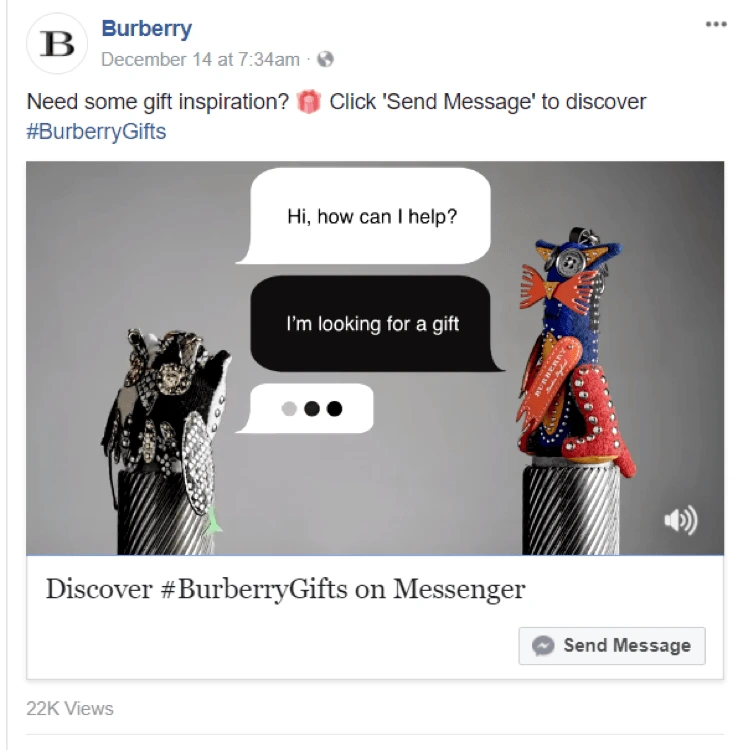
Source: Facebook
The result catapulted Burberry to being one of the most digitally innovative fashion brands around. The insights they used from their customer profiles were a driving force behind this change.
This just goes to show that design thinking in marketing is dependent on keeping the end user in the spotlight.
3. Accept that design thinking is not a linear process
The process of design thinking encompasses five key stages.
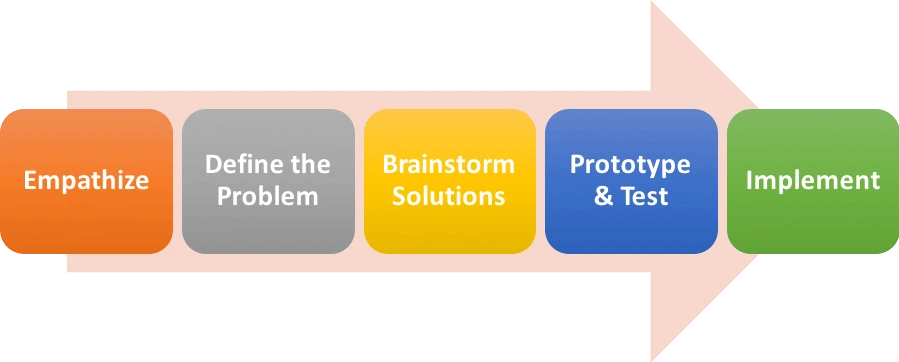
Although it may seem like this process naturally flows from one stage to the next, there’s never a one-size-fits-all formula. Certain stages might need to be conducted simultaneously in order to view the situation from all angles. In many cases, the prototype stage is simply a means to better define the problem.
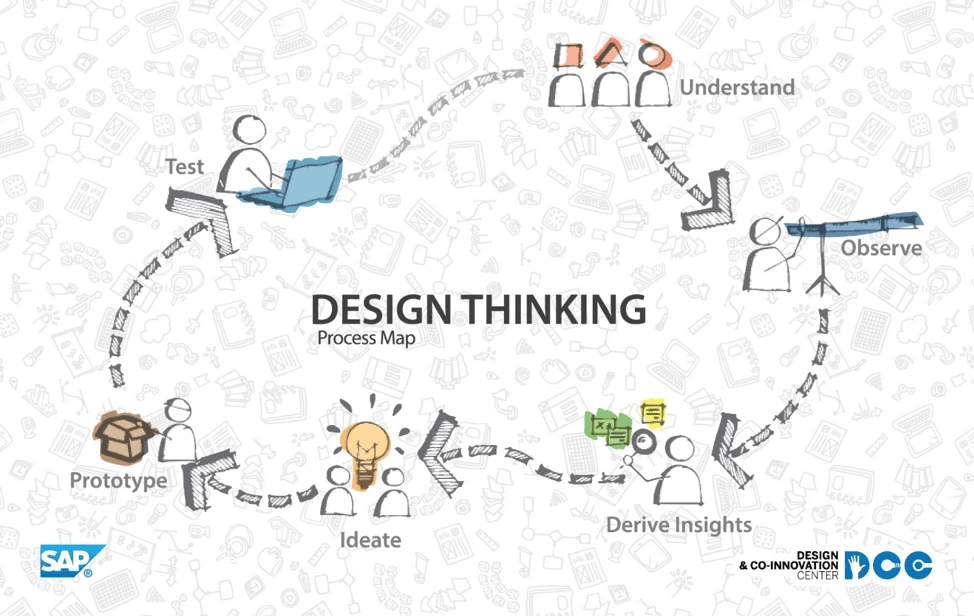
Source: SAP
It’s better to view the process as a loop to continuously inspire solutions that have never been tried before. In essence, it’s about understanding each element that factors into a problem. The objective is to gain an in-depth view of the user, how they function, and how your solution can meet their unmet needs.
For a marketing team to thrive under design thinking, they must come to terms with the fact that the path bridging problems to solutions is rarely a straight shot.
Key takeaway
In many ways, design thinking is the origin of innovation. Today’s overly crowded marketing landscape presents a dire need for brands to build their marketing cultures around these core characteristics. Ultimately, this how both companies and consumers grow.
In a stressful world, it’s no wonder that people are drawn to the idea of “wellness.” According to The Global Wellness Institute, the wellness industry grew by 10% to $3.7 trillion between 2013 and 2015-while the global economy shrank by 3.6%. It’s one of the world’s fastest-growing industries, and as we move through 2018, it’s showing no signs of slowing down.
Related: 5 ways sleep can boost your productivity
For those in the wellness industry (and aspiring startups), this is both good and bad. Consumers are more aware than ever of the benefits of good sleep, a good diet and activities like yoga, and they’re seeking new ways to improve their health and productivity. Along with this increased awareness, however, comes the fact that wellness brands must fight for attention in an extremely competitive market.
Even a small glance at Instagram is enough to illuminate the ubiquity of food and fitness gurus. So how can you, in a market that’s perhaps best described as “visually noisy,” give your brand the best chance of standing out?
Determine your brand’s visual strategy and be consistent
We all understand the desire to get your brand out there, and it’s natural to want to jump straight into social media to put your brand in front of as many people as you can. However, there’s huge value in taking a deep breath and considering your content strategy.
The reality of modern marketing-much of which takes place in the digital realm-is that you have to create far more content than businesses had to in the past. For example, you might decide on:
- 3+ daily tweets
- 2 Facebook posts
- An Instagram photo
- An Instagram or Snapchat story
- A weekly blog
- Occasional guest blogs
That wouldn’t be an unusual workload, and it sits on top of all the ongoing work you’re already doing. Not only that, it needs to be compelling and engaging for your audience. Add to this your print marketing, website design, and everything else you have to consider, and you are looking at a huge amount of content.
It’s easy to see how you can lose consistency and quality control without careful planning and brand guidelines, which is where a platform like Lucidpress can help keep everyone aligned. Just ask brands like Bar Method and Club Pilates:
So where do you start?
Of course, defining your brand strategy is easier said than done. It helps to look at what else is out there. You’ll likely fall into a certain sector of wellness-like fitness, diet, alternative therapies or life coaching-each of which has its own norms that can be surprisingly hard to move away from.
Many fitness brands are overtly masculine with a palette of striking primary colors, photos of sweating brows and ripped abs, and a “no pain, no gain” mentality. Others take a gentler approach. Aspirational images of yoga performed in stunning landscapes is everywhere; you’ll often find it accompanied by encouraging language which values self-esteem and “finding yourself.”
Meditation tends to be pastel-shaded and broadly spiritual. Food brands are fresh-faced, brightly lit and often obsessed with avocados. None of this is bad, of course, and some elements may suit your brand perfectly. The trick is to incorporate inspiration from other brands while avoiding imitation and finding your own particular voice-and avoiding clichés as much as possible.
Don’t be afraid to show personality
One common theme in the wellness market is a tone of earnest sincerity. While it’s vital that you do sincerely believe in your product and its potential to improve the lives of others, one way to stand out from the crowd is not to let this fact prevent you from showing a little personality.
For example, try not to be too high-handed and “guru-y.” As an expert and leader in your field, your authority on these subjects should be clear. Being friendly, personable and letting some humor shine through won’t detract from this. Social media has changed the game for brands; being strictly professional is unlikely to catch anyone’s attention.
The visual language you use for your brand can be as fun, interactive and enjoyable as you want to set it apart from the dominant and blandly perfect images of “clean” living. Be public with your personality and enthusiasm for your brand and product.
Use science, don’t abuse it
One accusation often leveled at the wellness industry is the flippant and misguided use of scientific language in order to substantiate dubious claims. This can seem rather unfair, but unfortunately, a few high-profile cases have helped cement this view.
What’s especially unfortunate is that there’s so much legitimate science to back up the benefits of wellness practices. With a little effort, it’s easy to avoid the traps of bad science.
- When you hear scientific information from news articles, make sure to read the original studies. Journalists aren’t usually trained in scientific language and can sometimes misrepresent the findings. There have even been cases of journalists writing an article based on the work of another journalist.
* Recognize that different studies hold different weight. Look for the sample size, whether the methodology is well-supported and makes sense, and whether they were funded by organizations with vested interests.
* If some of your evidence is anecdotal, don’t be afraid to say so. Take the vegan diet as an example; it is demonstrably healthy in many ways and has both environmental and ethical merit. However, anyone trying to prove that it’s irrefutably the best diet for everyone is going to have a hard time, and they’ll likely spend their days arguing with others over opposing studies that suggest this isn’t true. If you have a great story to share, distinguishing between scientific study and what you believe through your own experiences is ultimately far more convincing.
Don’t maintain a social presence just because
It’s a near-fact of modern branding that you have to be on social media. However, a brand can get so busy that their social media presence becomes a half-hearted nod to the power of these platforms. This doesn’t mean you should shut down your branded accounts, though. It just means you have to think about them a little more.
The best place to start is to consider your own social media use. What motivates you to follow certain accounts? Why do you take the time to engage? If you look at your content and can’t find a reason why you would bother to like, comment or share it outside of your professional life, then it probably isn’t going to interest anyone in your target market, either.
Social media isn’t just a platform on which to post a series of promotions. A hard truth that every marketer has to swallow is that most people hate ads. What they do appreciate is being entertained, learning something new, or finding information relevant to them. With this in mind, before posting something to social media, consider whether:
- It will prove interesting to your audience. Is it funny, informative or entertaining? Is the imagery visually striking, beautiful or unexpected? Does it communicate your brand values?
* You actually find it interesting yourself. It’s important to notice when you’re posting “dead content” simply to fill up space or because you feel like you have to.
* You’re alternating promotional content with expert guides, behind-the-scenes insights, influencers’ content, and competitions. Your promotional content should be engaging in its own right.
The world of wellness is by no means oversaturated, and there’s much to be said for brands who want to provide people with tools and knowledge that will profoundly improve their lives. By finding your unique voice, your brand will naturally stand apart from the crowd.
See how Lucidpress’s cloud-based brand management software can streamline your creative process.
In real estate, it matters a lot what people think about your agency. We can all agree that, as businesses, we crave trust and loyalty from our customers. If these two traits are absent, success becomes much harder (if not impossible) to achieve.
The consistency of your brand has a huge impact on what people think. If your real estate brand is constantly changing, people will see you as less honest and reliable. On the other hand, if your message is consistent and validates your brand promise, it’s easier to build trust with your audience and earn their loyalty.
So, where can you deliver this messaging? In real estate, there are several areas where you can achieve remarkable brand consistency. Here are five of them.
Property listings
Great property listings contain three elements: property data, description and photographs. Of these, the description accounts for the largest portion of the listing, so focus your efforts there. Write compelling descriptions complete with all the features and benefits anyone looking for that specific property would find valuable.
Each potential buyer has a particular set of expectations. If the description you write helps them evaluate the property against their expectations and make better decisions, that will set the foundation for a solid relationship with your real estate brand.
As you write, remember that brand assets like tone, voice, taglines & logos should always be consistent, and that your message should align with your brand’s goals as well as the needs of your target audience.
Neighborhood & home search
If you want to be the go-to real estate agency in your area, show your audience that you really know and understand the communities you serve.
Sometimes you’ll encounter potential home buyers who aren’t familiar with the area, and if you can become a dependable local resource for them, you’ll develop a trusting and loyal relationship.
Focus on what makes the neighborhood special and what homeowners usually consider when looking for a property. This could mean schools, hospitals, weather, culture, parks and local attractions. You could also request testimonials from people who live in the area and include them in your listings. Videos and photographs are great additions, too.
Responsive web design
Build consistency into how your website functions across all devices, from phones and tablets to computers. Regardless of how a person accesses your real estate website, the user experience should be cohesive and well-designed. If it’s not, your visitors could easily turn away.
Remember, your brand largely depends on how people view your business. If they can’t comfortably access your website on their tablet or mobile device, they will likely feel impatient and turn to your competition to get their needs met.
Without responsive design, visitors will wonder whether your real estate brand is old-fashioned, and they might assume you’re not up-to-date with new trends and technology. Instead, keep those visitors coming back by offering a consistent, excellent browsing experience tailored to their needs.
Pictures & video
We live in a visual culture. In real estate, this is supported by the fact that 83% of home buyers expect to view pictures of available properties, whether it’s through print marketing, a website or social media. []
Your brand stands to benefit if your visuals come across well and emphasize points of interest. Photos should always be high quality and leave a strong, positive impression. Spend a little time learning best practices for real estate photography before hiring a photographer or taking photos yourself.
Video has evolved with trends like personalization and technology like interactive videos, 360 videos, and VR videos that are more immersive for the viewer. For maximum visibility, you can share them across multiple channels: your website, online video platforms, and social media. For example, here’s a video we made with the help of a few real estate clients:
Social media profiles
There’s no doubt that a huge portion of realtors (91%, in fact) use social media—and so do your potential buyers. Your social media presence will inevitably have a significant impact on how your brand is perceived.
The logos, colors & visuals used on your social media profiles will affect how your audience perceives and remembers you. Tone and voice are important, too—conflicting messages will confuse customers and dilute your brand.
Of course, authenticity and humanity are also important to social media users. Make it your goal to give your brand a unique identity and personality that your followers can easily relate to. This will help you cultivate a loyal following and stand out from your competitors.
Key takeaway
Brand consistency is about getting your audience to trust you. The five areas covered here hold a great amount of power to keep your brand consistent. Effective team management ensures that everyone in your organization delivers a unified message, which plays a special role in getting clients to call you, pay attention to your message, and look forward to working with you again.
How many advertisements do you remember fondly? Probably not that many, considering we’re bombarded with content on a daily basis.
But the ones you do remember seem to creep into your subconscious. It’s like a catchy song that you can’t help but remember.
Good visual content has a lot to do with psychology. Appealing to human emotions will influence people to react to your ad a certain way.
Related: 4 ways to increase conversions with visual content
Corporate Executive Board did a survey on this in partnership with Google. They contacted marketing leaders, vendors, consultants, and over 3,000 B2B buyers to understand the rise of emotion-driven content marketing.
In their report From Promotion to Emotion, it’s revealed that 86% of buyers believe that brands are all selling the same stuff. Unique value propositions are not turning out to be… not so unique. But, brands that connect with customers on an emotional level will see 2x more impact than those trying to sell based on functional value alone.
If you’d like to tap into that influence, here are 7 emotions that drive people to connect with brands—and real-world examples of each.
1. Urgency
Even when your customers want your product, they can still be hesitant. Maybe they feel like they can buy from you any time, so why spend money now? Later, they say, later.
This is when you need to infuse a bit of urgency. Add a timer or an expiration date in your email newsletter or video ad, and buyers will take the cue. No one wants to miss out on a good deal.
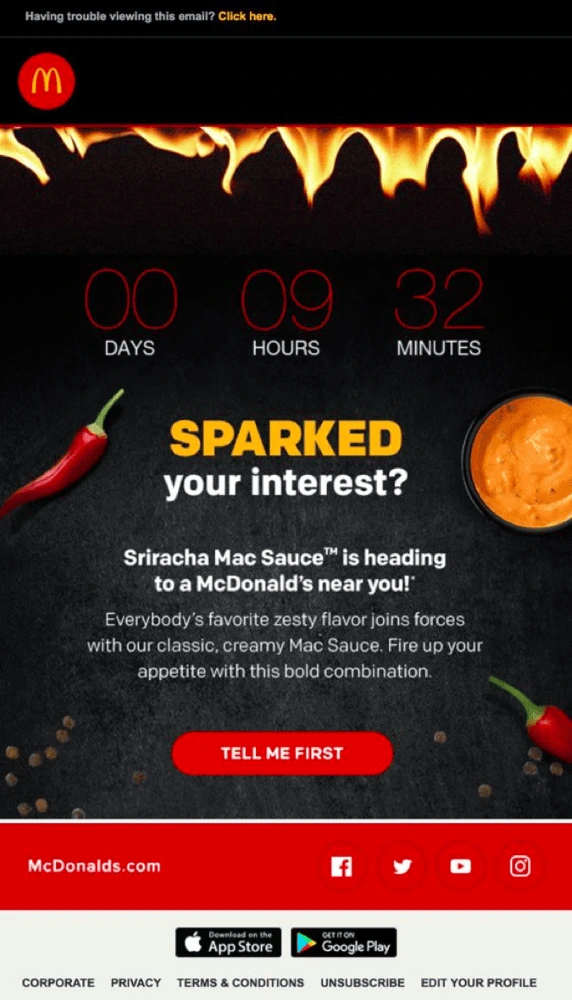
Source: McDonald’s
Big retail & e-commerce brands use urgency (tick-tock) to promote instant consumer action or purchase decisions. However, make sure you have a good reason for incorporating urgency in your offer. For example, countdown timers are often used for festive occasions or limited product runs.
Urgency even works better when you pair it with scarcity. Use phrases like “limited stocks available,” “limited tickets,” or “first come first serve.”
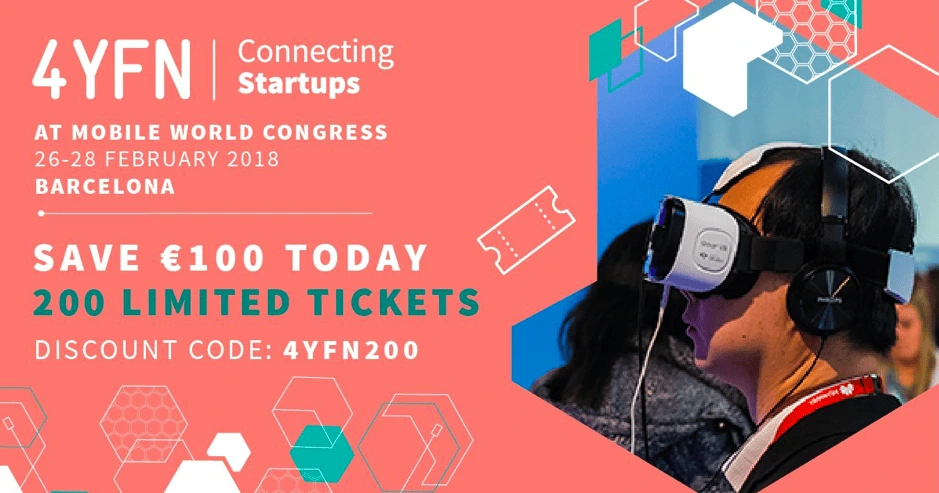
Source: 4YFN
A similar psychological catalyst is FOMO. Fear of missing out is a social worry that if you don’t participate in time, you won’t be able to enjoy the same rewards other people are reaping. One study reveals that around 69% of millennials experience FOMO when they can’t attend a popular event. You can use that fear to your advantage.
2. Desire
Desire is a powerful emotion. Almost every action we take and purchase we make is driven by desire. Many brands channel desires into their visual ads to capture an audience’s interest.
One way to do this is through before-and-after images. Olay took this concept even further with their “Identical Twins” campaign, where one of the twins uses the product and the other does not.
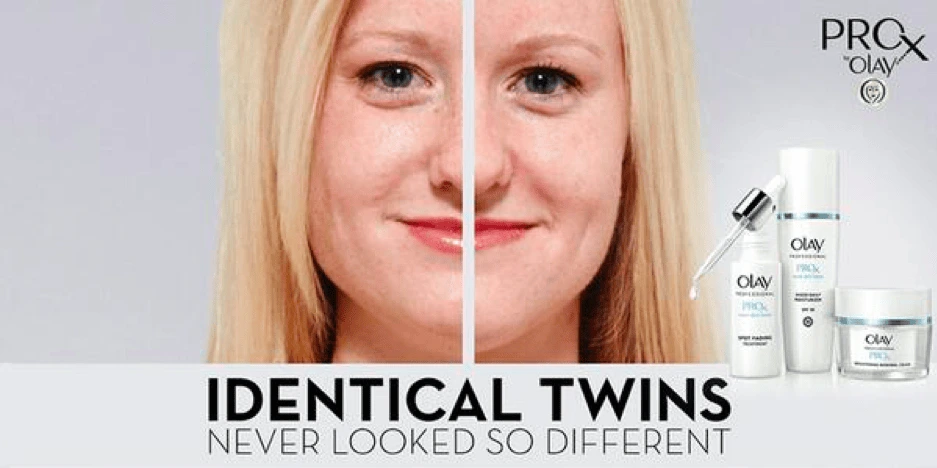
Source: Olay
But, before-and-after images don’t have to be about skin care or weight loss products. Check out this GIF, for example. SiteFlood creatively uses the before-and-after concept to show prospects what kind of results their service delivers.
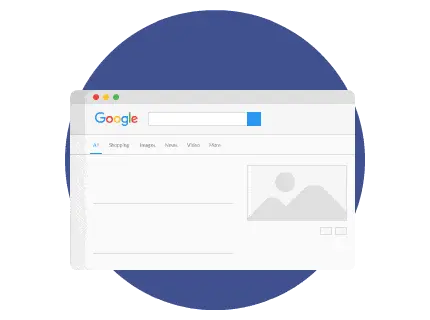
Source: SiteFlood
Similarly, most explainer videos use a “problem-and-solution” format to identify prospects’ needs, then provide a solution to help them fulfill that desire. This video explores the desire to live in the Caribbean, the problems one faces to achieve this, and the solution.
At Lucidpress, we used the same animated format to introduce our brand management platform—complete with white knights, bodyguards and Mama bears.
3. Compassion
We’re social creatures, and that’s frequently reflected in our behaviors and reactions. We care about our family, our friends, and even random strangers. Doing something for others makes us feel good.
Thai Life Insurance produced a series of heart-warming videos that showcase the sentiments of altruism and care, even in adversity. In the end, it’s wrapped up nicely as part of the brand message.
Attaching your brand to feelings of love, care, attachment, altruism and charity can give your visual content a strong emotional pull.
4. Delight
Humor provides more delight than almost any other emotion, but it can be difficult to pin down and execute well. You must know your audience and their sensibilities, so you don’t end up missing the mark, falling flat, or even offending them instead of making them laugh.
Old Spice has perfected the art of appealing to its demographic in a variety of fast-paced, cinematic ad campaigns. It’s delightful, humorous and exciting to watch.
5. Personal care
Advertising is everywhere, and it rarely feels like an ad is speaking directly to you. In this constant deluge of content, personalization is valued more and more. If you want my business, make me feel special. Show me that you care.
Starbucks is no more “special” than any other coffee brand, but they show their patrons that they care. It’s a brand synonymous with warmth, comfort and convenience, and it’s easy to make it your own.
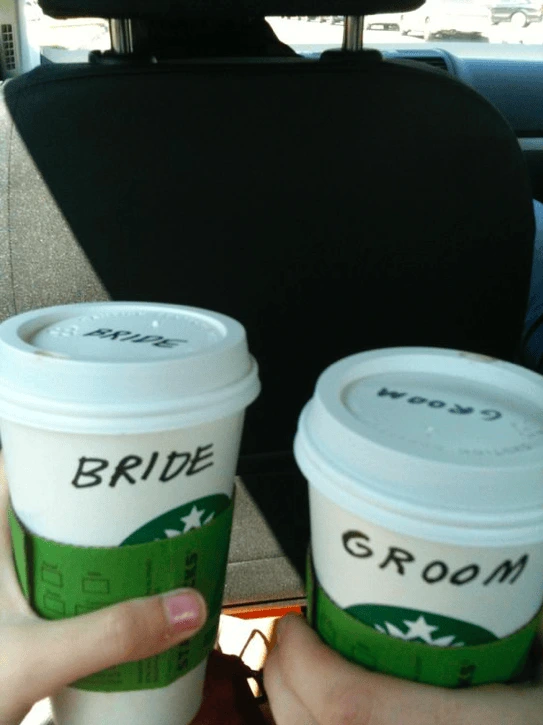
Source: Tumblr
Starbucks proves that it cares about the individual experience by providing a casual meeting space, a work environment, a place to relax, free Wi-Fi and other comforts. Perhaps more importantly, they ask each customer for their name and write it on every cup of brew they order.
In some ways, Starbucks has come to resemble a hospitality brand without actually being one, simply by extending a comforting personal touch.
Introducing customization or personal touches to your brand can make you far more appealing to your audience, because they will feel special and cared for.
6. Trust
Your customers have their own personal tastes, values and opinions. Likes and dislikes. Movies or music that they love or hate.
It turns out that personality will largely determine a customer’s shopping behavior. They buy products and experiences that either reinforce their personality or help them get closer to who they want to be.
So it stands to reason that if you associate your brand with a celebrity they like (or want to be like), that would give them a reason to trust in your brand and buy from you.

Source: Nike
This is why brands hire celebrities and influencers to drive brand awareness and adoption.
The idea here is to create an image your target customers will like or aspire to. Do some research on who your customers are (or who you want them to be). Once you’ve sketched out a buyer persona, including their likes and interests, you can solidify brand messaging that speaks to their personality and values—and earns their trust.
7. Motivation
Participating in social causes you believe in can be very gratifying. But, that gratification often comes from harrowing personal experiences, or at the very least, a visualization of others’ worst experiences.
CoorDown, an advocacy group for people with Down syndrome in Italy, made a beautifully profound video featuring people with Down syndrome delivering their own messages of reassurance to a future mother who’s worried about what kind of life her child will have.
The video is a rollercoaster of emotions that culminates in the promise of a happy, fulfilling life.
Find a cause that speaks to your brand values or to your employees. You can draw on personal experience or the hardships of others to create stories that inspire hope and motivation for your audience.
Key takeaway
Emotions are fundamental. You don’t need a PhD in psychology to figure out what makes people tick. You just have to do some research on your buyers. Draw up a buyer persona, then create visual content that will resonate with that audience.
Here’s the thing: the in-person experience isn’t dead. And furthermore, direct mail marketing isn’t dead. It’s an audacious statement for sure. But like the in-person shopping experience, direct mail marketing is just different. It’s not the norm anymore. But that’s what makes it all the more unique and effective.
That said, there’s no doubting that online marketing has taken the world by storm. Not only is online video consumption reigning supreme over traditional TV viewership, but it seems the world has gone mad for — and forgot about — the value still held in offline marketing.
Direct mail marketing happens to be an excellent example of offline marketing. Think of direct mail marketing as you would letters, postcards and brochures landing right in the mailbox of your ideal customer. That’s pretty spiffy!
What is direct mail? Direct mail is a form of direct marketing where promotional materials are sent to prospective customers in the mail.
Related: Building a local brand—5 essential things to know
Your mailbox — you know, the metal one with your address on it — has a bad reputation. Meanwhile, your email delivers discount codes for your favorite shops and other exciting tidbits of information. But that IRL-mailbox space is filled with bills, junk mail, earwigs and who-knows-what-else, right?
Sometimes, but not always.
While you’re certainly bound to receive bills, junk mail and find the occasional earwig in your mailbox, you can also count on uncovering letters from family members or collateral that’s seemingly custom-fit for your needs. It’s almost as if those ads you’ve been seeing all over social media popped up in your mailbox, which is pretty cool, right? That’s what direct mail marketing has the capacity to do.
So, what can direct mail marketing offer that online marketing can’t?
Direct mail marketing gives customers a tactile, interactive experience that they (perhaps unknowingly) crave and miss when they get a coupon emailed to them or when they are bombarded with an ad on social media.
But direct mail marketing doesn’t stop there — it delivers three other noteworthy factors.
Direct mail marketing is easy to understand
One reason direct mail marketing is more effective is because it’s easier to understand. One study found it takes 21% less cognitive effort to process, meaning your audience (or prospective customer) don’t have to invest time or extra brainpower into your postcard, mailer or any other type of direct mail marketing campaign.
The success of any marketing campaign — whether it be direct mail marketing or an online campaign— is contingent on whether or not it resonates with your customers. Because, if your target audience is finding the content difficult to understand, or if they feel confused or lost at any point in the content journey (or hile reading the collateral), your campaign is unlikely to meet success objectives.
Direct mail marketing feels more memorable
Forgive us for being a tad melancholic, but, there’s something incredibly heartening about receiving a letter or a package in the mail. It feels very human — as if there’s another person on the other end of the care package or neatly tucked behind the envelope. Someone had to go to the effort to writing said letter or find knick knacks to stuff into a box. You remember mail — along with the person who sent it and why they sent it along.
Plus, studies show that millennials who spend more time with a physical ad in hand have a stronger emotional response to the marketing campaign, lending a stronger overall memory of the ad. Who knows, you could be on the list of the next generation’s most-loved advertising campaigns by optimizing your use of direct mail.
Direct mail marketing has stronger response rate
Direct mail has a better response rate than email marketing, with 4.4% of campaigns receiving a response when delivered through the mail, compared to just 0.12% online. []
For example, for content (in a campaign) that’s delivered to 1,000 people, 43 more people will interact with your direct mail than your emails.
As in, you’re missing out if you push your entire marketing budget into email — especially when direct mail can be more cost-effective.
The Do’s and Don’ts of direct mail marketing
Want to stand out from the crowd and make sure you pull off a marketing campaign that drives a high ROI? Here are three tips.
DO proof your stuff
Typos or misspelled names are a surefireway to undermine your authority or make a customer doubt what you have to bring to the table. Proofread your stuff before sending it out. And make sure you get the customer’s name right.
DO have fun — Get creative
Get creative with you direct mail marketing campaigns! Don’t just fire off a boring letter that could get mixed up with a prospective customer’s bills. You want to create something memorable — something that familiar or maybe even something nobody has seen before. Don’t be afraid to throw a proverbial party in their mailbox!
You can do this by sending:
- Foldable origami
- Customized postcard designs
- Interactive letters, where your audience needs to do something to reveal a message
A fantastic example of creative direct mail marketing comes from the team behind World Water Day’s campaign. Their aim was to raise awareness about the event, but they opted to create a direct mail with words that only became visible when soaked in water.
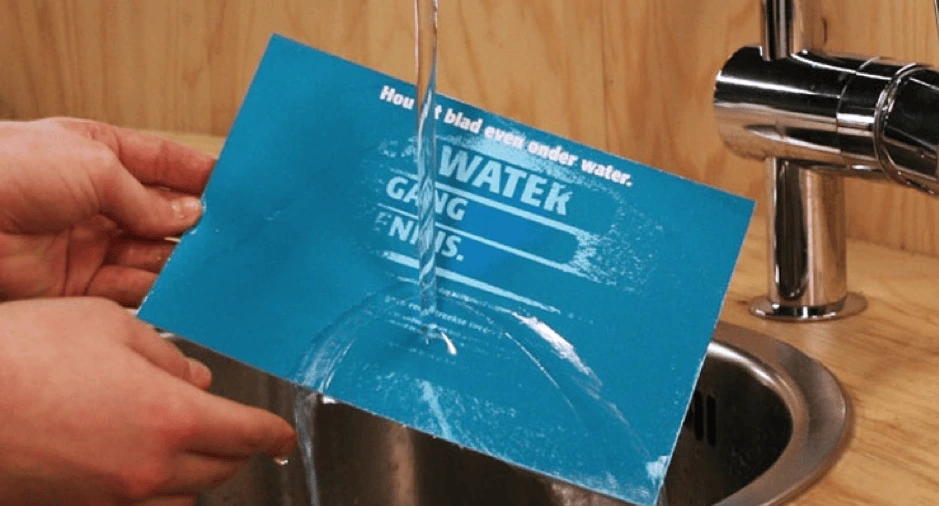
Not only did this direct mail campaign explain World Water Day’s campaign aim creatively, it also became an interactive piece of content. Interactive content has been proven to generate 2x more conversions than the alternative. That’s pretty genius, right?
Lucidpress: Click the image to use the template
Use one of our direct mail templates as inspiration for your own direct mail piece. Switch out colors, fonts and texts to create your direct mail postcard or flyer in seconds.
Browse all direct mail templates



DO emotionally engage customers
The second way to ensure your direct mail marketing campaign is a success is to make your audience feel something — any type of emotion. After all, there’s such a wide range of them. Emotion has been the marketer’s secret weapon for years. Various studies show that people rely on emotions, not just logical information or data, to make buying decisions.
Feelings of anger, disgust, affirmation and fear often top the list of emotions that work well in advertising.
A fantastic example of this comes from the Natural History Museum. In an attempt to educate local people about the danger of animal extinction, they sent an eraser to their audience with a quote about the topic.
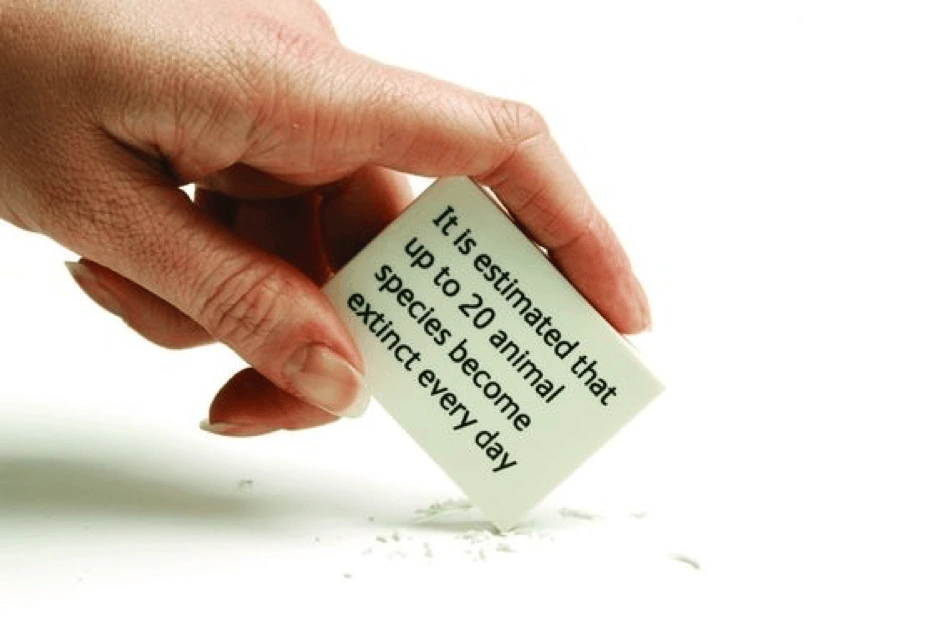
Because their audience could see a visual representation of extinction in their daily lives, it made them stop to think about how serious it is… and want to act.
Pick an emotion and drive it home through your next direct mail campaign. You’ll soon see the impact emotion has on marketing—but the victories will be for your own brand.
DO put your own spin on it
For the most part, mailboxes aren’t fun environments. Bills, bank statements and lonely newspapers often clog up the mailbox marketing route. But, you can stand out by making your direct mail marketing campaign a little unique.
A fantastic way to achieve a little uniqueness is through juxtaposition. Can you think of a smart, innovative way to show how powerful your offering is by comparing it to something completely different?
Let’s take this direct mail campaign for example. Created by the theatre team behind a local performance of Macbeth, they wanted people to visit their show. Instead of online marketing, they exploited their direct mail opportunity and found a way to stand out in a mailbox.
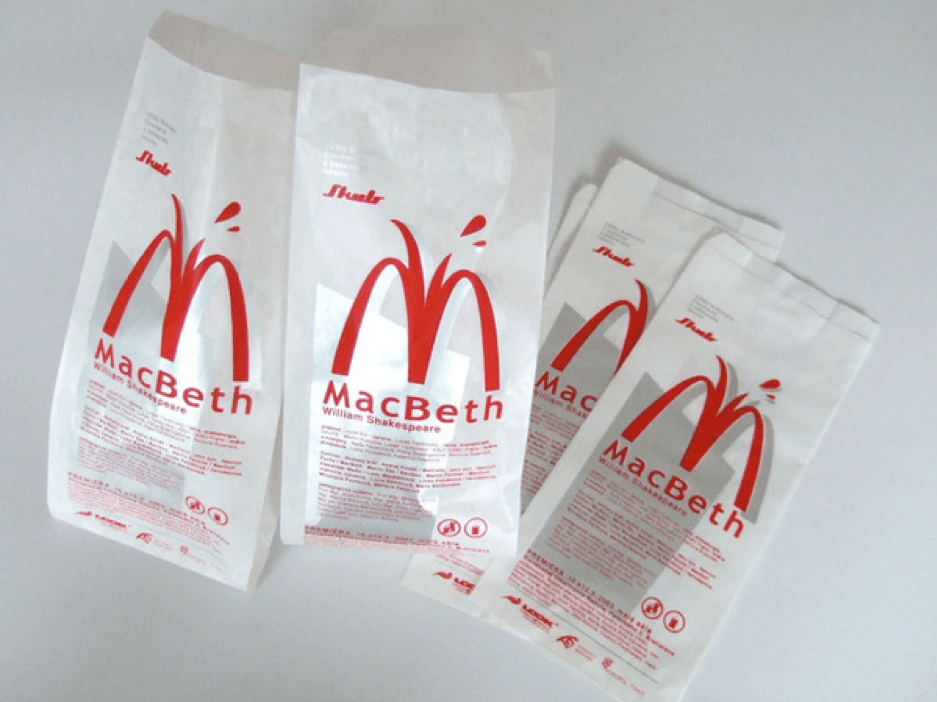
You’d probably never compare a Shakespeare play to a fast food joint, right? But that’s part of the reason why it works.
The juxtaposition of both elements makes you take a second take at the direct mail rather than toss it in the trash. This type of content experience (within direct mail marketing) is bound to make an impact on an audience, one who possibly has an interest in both but would never expect them to be paired together.
All in all, direct marketing provides you or your creative team with untold opportunities to lean into the creative, get weird and try new things. Plus direct mail marketing allows you to access new customers or get a feel for a prospective audience who might otherwise pass up your product or services.
DON’T skip doing the proverbial “leg day”
Leg day for direct mailing entails defining your audience and running some tests before you send out the direct mailers. Now, neither task needs to be a heavy lift. Defining your audience can be as simple as knowing who your product is best suited for and tailoring where and what neighborhoods you send the direct mail to based on this information.
Additionally, try sending a few flyers or direct mailers out to a small segment of your target audience. Make sure to include trackable tests, like a QR code or a custom URL (which we’ll touch on more momentarily).
DON’T forget to set goals for the campaign
Consider the following questions. As in, are you looking to drive brand awareness or boost sales of a particular product? Are you looking to assess brand awareness, and if so, how will you measure success or failture? Alternatively, if you want to increase sales, what is the target revenue or fiscal marker for your campaign? Specific goals will give you a benchmark to measure (and brag about) the campaign’s success, and it will help you drive improvement based on the results.
DON’T ignore the importance of a CTA
Simply put: You need a way to measure your goals and attribute which-sales-to-what-campaign-directive. Well, a CTA can help with that. Start by creating a custom URL to include in your direct mailer. This custom URL will empower you to track visits and sales from the website location, allowing you to attribute conversion and ROI to your direct mail campaign.
DON’T spam your customers
Inundating your customers with a lot of direct mail, emails and more is not the best way to get their attention. Sure, you’ll be top of mind, but it’ll be because you’re irritating them — not inspiring them or addressing a pain point. You don’t want to undermine the relationship you’ve worked so hard to build with them, so be mindful of who-you-send-what-where-and-when.
You’ve got mail — Lucidpress mail
If you couldn’t tell already, we’re big fans of direct mail. Now, the exciting part about Lucidpress is that we don’t just empower anyone to create compelling, effective content — we also make it easy to conduct a direct mail marketing campaign.
Choose from any of our direct mail marketing templates to customize and edit. Or, alternatively, if you’re feeling brave, you have the option to design your own. Then, all you’ll need to do is:
- Upload a .CSV file containing the details of people you’d like to target,
- OR use radial search to select a local delivery area.
Once selected, press the proverbial “go” button and use the direct mail marketing integration to send your mail directly within a matter of days. There’s no need to stop at your local post office with oodles of mail, thus, taking the stress out of building a direct mail marketing campaign.
As you can see, direct mail isn’t an old-school marketing technique that should’ve stayed in the 00’s. These tips, along with our new features, could be the combination you need to build a direct marketing campaign that drives excellent results for your business.
Learn more about the direct mail features in Lucidpress, and give it a test drive.
Bonus: Direct mail infographic
Craving more data? Check out this illustrative infographic about direct mail from our friends at Colourfast.

Regardless of your industry, it’s becoming increasingly difficult to gain and keep an audience’s attention online. You have mere seconds to capture their interest, so it’s critical that you create engaging content.
While we all understand the value of content marketing, how you develop your content is just as important as what you actually put out there. Providing consistent, interesting content will boost traffic, which will increase brand recognition, engagement and (eventually) sales.
But, how do you provide engaging content in a world where everyone is fighting for the attention of the consumer? Answer: Include visual assets in your content strategy. The human brain processes visual information quickly, and people remember more of what they see than what they read.
What is visual content?
Visual content is any piece of content that incorporates visuals or is primarily image-based. Visual content examples include video, infographics, photos, charts and GIFs.
Why create visual content?
We often say not to judge a book by its cover, but our brains are hardwired to do just that. It’s the reason why we ‘eat with our eyes’—we like when things look nice. The visuals that accompany your content are what viewers will see first, whether that content is an advertisement, the packaging of your products, your business card, a social media post, or content published and managed through a content distribution platform. Thus, these visuals are the first impression potential customers will get of your brand, and they’ll use them to decide whether your brand appeals to them or not.
To illustrate just how effective visuals are in attracting visitors, consider these statistics:
- In 2016, over 60% of B2B marketers and small businesses planned to increase investments in video marketing strategies. (CMI)
- On average, tweets with images receive 150% more retweets than tweets without. (HubSpot)
- On average, Facebook posts with images receive 2.3x more engagement than posts without. (BuzzSumo)
Point is, visual design leaves an impression on visitors. You must learn how to use them wisely.
Beyond first impressions, the importance of visual stimulation doesn’t diminish. Once the eyes aren’t engaged anymore, the brain knows it’s time to move on. Digital marketers pay close attention to engagement metrics because they show how many consumers were driven to react or interact with the content. Of all the possible customers that were reached, those that engaged with the content were the ones that stayed from beginning to end. Visually stimulating content helps engagement because it compels users to continue watching, reading or experiencing the content.
Additionally, visually exciting content is much more memorable. When someone is stimulated with pleasing, compelling visuals, the brain has a much easier time paying attention and remembering the information it processes. You may encounter an online lead who doesn’t need your product or service yet, but in the future, they will. By visually stimulating them during their interactions with your brand, they’ll be more likely to recall you when the information is relevant. This also makes visually pleasing content more shareable, because the longer someone can recall it, the higher the likelihood of finding it relevant to a friend or family member.
How to make visually stimulating content
Visual stimulation has long been a primary concern for marketers. If the eyes are bored and unstimulated, then the brain will tug the viewer’s attention to something else. In the digital age, where consumers are exposed to several different brands and messages all at once, that “something else” is likely going to be a competing brand’s content. In other words, if your visuals don’t provide high levels of stimulation, then your online leads will be more likely to defect to a competitor.
All these reasons make a compelling argument for the relationship between visual stimulation and client retention, which might’ve started the wheels turning about how you can produce more visually stimulating content. Before those wheels drive you in the wrong direction, it’s important to look at how you should improve your visual content.
- Quality is paramount: As already mentioned, quality is a huge indicator for your brand. In your quest for more visually exciting content, pay close attention to the images and other visuals you use. Visuals are great, but bad or low-resolution visuals are not.

Source: Contemporary Communications
- Relevance follows quality: Like avoiding bad or low-quality images, you want to avoid visuals that aren’t relevant to the information being provided. In other words, don’t include visuals for the sake of adding visuals. (See: cats.) They should make sense and pertain to the content in question.
- Cover is crucial: We already know that people judge a book by its cover. Your initial visual should be the most compelling because users only spend a few seconds on a webpage before making the decision to stay or go.
- Over-stimulation is real: If there’s too much going on with too many visuals, the brain won’t be able to accurately process it all. Think of it like an action movie: while there are scenes with explosions, lasers and car chases, there are also slow scenes to develop the plot and its characters. Why? Because if the whole movie were action, we’d be overloaded and our brains would mentally withdraw us from the experience.
- Visuals carry the eye: Researchers have been studying the way the eye moves across a page for decades. By understanding eye tracking, marketers can ensure that the viewer’s eyes move logically across the page to pick up all the vital information. Images are one way to influence how someone’s eyes scan a page. We’re naturally drawn to images, so by placing them strategically, you can control where the eyes travel.
Types of visual content
In this post, let’s discuss how visual content like infographics and video can encourage your visitors to convert.
1. Create impact with the right typography
Unlike someone reading a book, visitors on a website don’t consume content from left to right then go down to the next line. In fact, virtually nothing happens in progression. Visitors will either go straight to what they need, or they’ll stop in their tracks if something more interesting catches their eye—like a 30% discount on another brand of detergent, for example.
Today’s designers are using typography to catch and keep visitors’ attention. The size, shape and placement of different fonts will enhance your message, and you can direct the focus where you want it most.
Consider the bold typography on this webpage. The cursive font complements the typewriter font, giving the site a vintage, personal feel. The use of color to emphasize certain words attracts the eye and sets a positive tone.
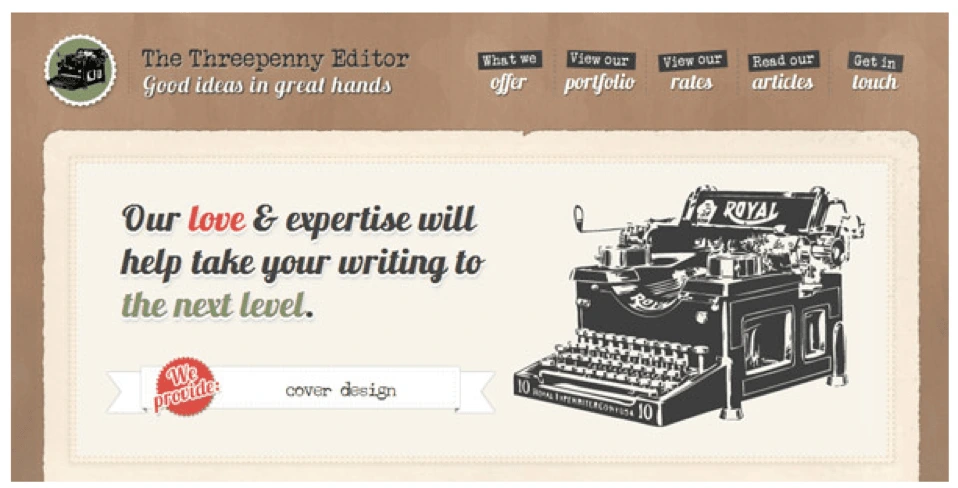
Source: Intechnic
2. Present data visually with infographics
Would you rather read through a bulky PDF filled with stats and long-winded sentences, or a colorful infographic which uses simple icons and text to display information? The choice is pretty obvious. Including a well-designed infographic in your blog post or webpage will persuade people to pause and see what you have to say.
But does it increase conversion? Here’s some compelling evidence:
- Images increase memory retention. People who hear information will only remember 10% of it three days later. But, if the information is paired with an image, they’re likely to remember 65% of it in the same timeframe. People will have an easier time reading and remembering an infographic detailing the health benefits of bananas than they would three paragraphs of text. And the more time visitors spend with your content, the more likely they are to convert.
- More shares lead to more exposure. According to NN Group, infographics are shared and liked on social media 3x more than any other type of content. Since people are more likely to share a post with an infographic, it helps you reach more people on social media faster.
3. Incorporate video
It’s estimated that adding video to a marketing email can improve click-through rates by a whopping 200-300%. Need more proof? Additional research indicates that 73% of adults in the U.S. are more likely to purchase a product or service after watching a video that explains what it is.
Videos can be used to evoke emotion, explain how your product or service works, or introduce your company. It helps potential customers put a face to your name, which makes your company more relatable. The keys are to keep it under 2 minutes (even 30 seconds might be ideal for certain social channels), optimize it for mobile, and ask a question or tease the content in the caption.
4. Create a gifographic
Speaking of using video, you can also upgrade a static infographic by incorporating animation. Gifographics are still relatively new, which means your content will stand out. While some marketers worry that gifographics might be difficult to make, it’s worth the effort to present your information in a way that’s more engaging and dynamic.
5. Use quality photos with text overlays
Using compelling photography is a strategy that should always be in your back pocket as a marketer. Images make content more interesting, and it’s easy to overlay a quote if you have a quality image to start with. Photos with quotes or callouts are super shareable and can gain traction on social media very quickly.
Using high-quality images is obviously important if you’re creating campaigns for Instagram, but it’s also effective on Twitter. Tweets with photos are 150% more likely to be retweeted than those without pictures. If you’re concerned about your ability to create shareable pictures on your own, don’t worry. Plenty of companies like Lucidpress have templates you can use to create clear, engaging visuals for your next post or status update.
6. Incorporate comics or memes
If you’re looking to bring a little humor into your marketing strategy, creating a comic or meme is one of the best ways to do it. Memes—like those tweeted by restaurant chain Denny’s—offer excellent social engagement if you do it right. Watch out, because you’ll have to take care to not overstep your brand. Comics are also easily recognizable. If humor isn’t part of your brand voice, comic-style fonts and formats lend themselves to a more lighthearted vibe and make it easier to explain complex products or topics.
7. Present information in a tool
Making content interactive is another way to engage with potential customers while demonstrating the value of your product or service. This runs the gamut from tools that help readers figure out which streaming services they want to bandwidth speed-test calculators.
The benefits here are two-fold: you can garner a lot of traffic on the main tool page itself, and you can also include smaller widget versions of the tool on other pages to inspire readers to act. Clickable graphics that link to your tool can also grab the attention of readers who are scanning another article or blog.
8. Develop a quiz or checklist
As a marketer, your job is to convert leads into sales. Use a visual quiz or checklist to help prospective customers figure out what they already have, which services they need, and how your product can get them to the next step.
You can also use interactive graphics to gather email addresses and create custom ad targeting. For example, if someone takes a home security quiz, they’ll likely be interested in follow-up information about how they can fill in the gaps to keep their family safe. Then you can provide that info and, eventually, lead them to a sale for a product to meet that need.
9. Go back to basics with charts and graphs
Charts and graphs are a quick and simple way to visualize information. They make complex information very easy to understand and are regularly shared because it saves other people the effort of creating a graphic to explain the original concept or statistic. Just make sure you don’t sacrifice clarity for style. If your reader is short on time, clear and direct charts are often the best way to go.
10. Leverage screenshots
If using screenshots in your content sounds easy, that’s because it is. Include screenshots to show client testimonials, create step-by-step tutorials, or introduce a new feature in your product. Screenshots provide clear context if you’re talking about something that people can customize (like a toolbar), making your point easier to understand.
11. Try flowcharts
A lot of online content deals with complex and sometimes confusing processes. In those cases, try simplifying concepts with a flowchart. Breaking down an idea will give your readers insight into the bigger picture—and where they fit into it. Don’t be intimidated by building a flowchart on your own. There are plenty of tools out there that can help you create clear, customized charts to take your ideas from start to finish.
Key takeaway
To keep up with other brands, it’s imperative to incorporate visual design into your marketing strategy. The key is to do it purposefully so that your content stands out from the rest. If done well, we’re confident you’ll see a great return on your efforts.
When you run your own business, you’re responsible for a lot. Aside from keeping the business running smoothly, you’re responsible for producing your product or service, hiring employees, marketing and managing your brand, and doing anything else your business requires.
Related: Direct mail marketing: Does it still work?
Today, let’s focus on the marketing aspect of your business.
In this article, we’ll focus on one type of direct marketing known as direct mail. Specifically, we’ll offer 10 suggestions for how to implement direct mail in innovative and creative ways. To start, let’s take a look at exactly what direct marketing and direct mail is.
What are direct marketing and direct mail?
Direct marketing is an assertive form of promotion in which a company reaches out directly to its target market. The point of these campaigns is to connect with consumers on an individual level, showing that they’re important to the company.
One example of this is telemarketer calls. Some other types of direct marketing:
- Email marketing
- Direct mail marketing
- Direct-response advertising
- Face-to-face selling
- Text marketing
- Distributed leaflets & flyers
Our focus today is direct mail—where advertising content is sent directly to a target market’s mailbox. The content could include letters, postcards, flyers, or anything mailed directly to a home or place of business.
Is direct mail still effective?
When you use direct mail correctly, it can be an extremely helpful tool in your advertising toolbox. You can “speak” directly to your audience and give them detailed information about your brand. In addition, you can easily track the success of a campaign.
However, you must practice care when you’re conducting these campaigns.
If you do this incorrectly, consumers will view the content as “junk mail.” Avoid this by providing consumers with content that is timely, relevant and important to them. You can also provide useful tools—for example, a coupon or promo code for your services.
How to use direct mail creatively
Now that we know what direct mail is and the benefits it can bring you, let’s brainstorm a few ways to use it for your brand. Below, we’ve gathered 10 innovative ways that you can use direct mail for your business.
1. Deliver discounts
One common-sense choice for direct mail marketing is to send out info about discounts and specials. This could mean one of two things. First, you could send out direct mail when you have a sale coming up.
Second, you could send out coupons for your service that are exclusive to your direct mail campaign. This is a good way to measure response and ROI, because you’ll know whenever a customer redeems the discount.
2. Send out samples
In addition to sending out discounts, you can send out samples to your customers. Of course, you should only do this if you have ample budget for the expense. It’s probably not the best tactic to use for your first campaign, but after you’ve gotten a handle on typical response rates.
If you can swing it, samples are a great way to attract new customers who don’t want to pay money to try out your product. In addition, if you have new products, samples are a great way to introduce current customers to your new products.
3. Offer reminders
Reminders are a cheap way to stay top-of-mind. You can send out reminders for upcoming events—for example, a realtor could announce an open house. You could also call attention to grand openings, deadlines or appointments. An example you’re probably already familiar with is receiving a letter from your doctor or dentist about your yearly check-up.
4. Share announcements
You can also use direct mail to deliver company announcements. This keeps your customers up-to-date on new developments such as different hours, new contact info, new products and more.
5. Use QR codes
QR (quick response) codes are a great way to connect your mail campaigns to your digital marketing efforts. They’re simple barcodes that are easy to print on a piece of mail and can be scanned by any smartphone.
One scan, and a QR code can be customized to take your customer anywhere you need. For example, you could design a QR code to take your customers to a specific landing page. Most people are familiar with QR codes these days, so their presence on your mail will be self-explanatory and easy to follow.
6. Add texture
When someone goes through their mail, the last thing you want is for yours to be immediately disregarded or tossed away as junk. One way to combat this is to make your mail more eye-catching than the rest.
There are a few ways to do this, but one of the easiest is to add some texture to your mail. For example, you can use embossed lettering to make it stand out when a customer grabs a handful of letters and newspapers.
7. Pop with 3D mailers
Using texture is a subtle way of differentiating your mail, but there is a more obvious way to set your mail apart. You can send out 3D mailers, such as a box or tube or any other 3D design. These will jump out to customers and spike their curiosity, prompting them to open your mail and take a look rather than just throwing it away.
8. Track personalized URLs
One way to track how well your direct mail is working is to use personalized URLs (PURLs). Like QR codes, they’re a digital extension of your message. PURLs will lead your customers to your website in a way that leaves a trackable footprint. You’ll easily be able to see how many of your customers responded to your direct mail campaign by checking the page’s stats.
9. Try augmented reality
When people think of augmented reality today, they think about games like Pokémon GO. However, augmented reality does have a place outside of entertainment. In fact, you can incorporate the idea of augmented reality into your direct mailing.
Usually, this is done through the use of an app. For example, in 2015, Toys R Us used augmented reality techniques to create a game out of a piece of their direct mail.
10. Wow with video in-print
Finally, there are video in-print techniques. This is a cool idea because it eliminates the middlemen (apps, websites, etc.) by including a video player directly in the mail. Right now, these are a bit pricey—but keep an eye on them for the future.
Key takeaway
When executed creatively, direct mail marketing can provide a huge boost to your promotions and brand awareness. Whether your goal is to be top-of-mind or to drive bottom-funnel sales, you can build a direct marketing campaign to match. By crafting professionally designed mailers, you’ll attract your target audience and reinforce loyalty among your customers.
Learn more about the new direct mail features in Lucidpress, and give it a test drive.
Newcomers to the world of brand awareness marketing often feel overwhelmed or utterly lost. There’s a veritable plethora of channels, tactics & tools to explore. To make things even more difficult, some make much more sense for your business than others, depending on a matrix of circumstances.
Related: 7 things to consider before your next social media campaign
Before jumping into a brand awareness campaign, remember to ask yourself these key questions.
Is your content tailored to the right people?
You’re pretty sure you wrote compelling content… but is that actually the case? It’s time for a bit of self-reflection and honesty, which—while sometimes tough to swallow—is vital to the refocusing process.
One of the easiest mistakes to make in brand awareness campaigns is tailoring the content towards current customers. In reality, you’re targeting potential customers instead. []
The people you’re targeting likely have no idea who you are prior to seeing your ad. This is why the content has to be super compelling, either to draw them into visiting your site right away or ensuring that when they need a service or product like yours, you’re at the front of their mind.
The main things you need to include within the copy are:
- The unique selling points of your business—what makes you different from all of your competitors?
- How you can solve their problems—most consumers have some sort of problem (which is why they purchase services/products), so tell them how you can be the answer they’re looking for.
- A convincing call to action—whether this is telling them to visit your site, sign up for your newsletter or take advantage of a limited-time promotion or discount, tell people why they should act on their impulses now.
Put yourself in the shoes of your potential customers. What would you want to read? What would convince you to use your own product or service?
Marketers often forget to place themselves in the shoes of their target market and instead take a product-oriented approach.
Are you targeting the correct people?
Next, examine your target audience. Are you completely confident that you targeted the correct people? If your brand awareness campaign failed, then it’s possible you performed for the wrong audience.
Basing your target audience on your current customers seems like the place to start. They clearly love your brand, so people who share the same interests are your perfect target, right? Not necessarily.
In most cases, the audience you want to target is going to be slightly different. Before your current customer base found you, they were high-intent users actively searching for an answer to their problems.
In a brand awareness campaign, however, your audience isn’t likely to be high-intent when they first see your ads.
This is where you have to be creative; think about the types of people who may have pain points you can solve but don’t quite know it yet.
Think about the age range that’s most likely to face these pain points soon. Are there any geographical areas more likely to need your help? Are there any interests people have that could likely lead to needing you?
For example, if your brand specializes in decorating services, based on intent and life event options, you can target people who are moving soon or have recently moved. This would be more effective than simply targeting people who love decorating.
Are you tracking success correctly?
Finally, let’s review how you measure your brand awareness campaign’s success. You could run a hugely beneficial campaign, but if you’re focused on the wrong metrics, you may see it as a failure and not capitalize on it.
There are so many metrics you can use to gauge the success of a campaign that it can be difficult to know exactly what you should be looking for.
Success metrics should be chosen during the planning stage of your campaign, to give you a clear view of how the campaign should be structured and how you can get a sensible idea of the performance.
When you sit down to decide these metrics, use SMART goals and objectives. Many of you have probably already heard this acronym, but just in case, it stands for specific, measurable, attainable, realistic and timely.
Setting your goals this way will help you get an in-depth understanding of which metrics to evaluate when measuring the campaign’s success.
And when it comes to brand awareness campaigns, success can be harder to measure. Focus on top-of-funnel metrics rather than sales or conversions. When it’s over, don’t stop reporting just because the initial boost of traffic and engagement has died down. Remember that these campaigns can continue to pay off with gradual increases over time.
Common brand awareness mistakes
With so much on the line, you can’t afford to dive in unprepared. Here are 7 rookie mistakes that often fly under the radar yet profoundly impact your brand awareness strategies and goals.
Mistake #1: Scattergun approach
Spreading yourself too thin is an easy trap to fall into. You can’t please and cater to everyone—and you shouldn’t. In fact, attempting this futile endeavor will result in satisfying no one.
Case in point: many startups establish accounts on every social network they can, only to find that managing them all is virtually impossible. Even if you do post to every network with the help of automation, you’re not delivering a great experience tailored to that platform—and you’re likely missing out on a lot of engagement.
Instead, do your research to find a highly targeted market. Know who they are and understand their habits, wants & needs. You have to find where they are and spend time there, not in a hundred places where you desperately hope to stumble upon them.
Mistake #2: Passive social presence
A “build it and they will come” mentality does not work on today’s internet. You can’t just set up a website or social media page and hope to see customers eagerly interacting with your brand. First, you have to engage the audience. Responding to comments in a timely manner is a good place to start… but it’s only a start.
Come up with a content calendar and post on a regular basis. Talk to users and influencers, and ask them for opinions. Use your social presence to carry out customer service around the clock via instant messaging and other channels. Social media is about building lasting, meaningful connections that strengthen brand loyalty. You can’t simply stuff your messages with hashtags and expect magic to happen.
Mistake #3: Incoherent cross-channel strategy
Rookie marketers tend to lose sight of the big picture and how coherent their messages appear across different channels. This is not the way to build strong credibility and inspire trust. Successful brand marketing is deeply rooted in consistency.
This journey calls for much more than investing in a decent logo and slapping it everywhere you can. You will need to use elements like the color palette, fonts, visual identity, images, and voice to set the tone for your marketing campaigns. Tailor to the medium and the platform, of course—but never lose the integral pieces of your brand’s identity. [ ]
Mistake #4: Overcommitting to digital
Cost-effective digital platforms have unparalleled reach, but they are not be-all and end-all of brand marketing. Not everyone is tuned in to social media, apps and online search. Depending on your target market, you could work wonders with print collateral or merchandising.
In other words, you can let human psychology work to your advantage and leave a lasting impression by giving away branded office supplies, quality printed shirts, and other handouts. Don’t overlook the potential of printed media. You could reach a lot of people via brochures, business cards, flyers, newsletters, and other printed marketing materials. In the digital era, print is personal and memorable.
Mistake #5: Going all-in on advertising
Advertising is the mainstay of many brand awareness campaigns. However, it’s generally a bad idea to put all your eggs in one basket-especially if you’re a rookie who’s worried about wasting your budget.
What’s more, people have grown weary of aggressive pop-ups & ads, even when they’re targeted with laser-like precision. They install ad-blockers to completely shut them down.
Instead, try to start small and set aside a limited ad budget. Test your awareness campaigns over a course of few weeks and evaluate the results. Paid marketing works best when you prioritize ROI, so as you learn the ropes, gather data and scale your campaigns based on your insights.
Mistake #6: Misunderstanding content marketing
Viral marketing is one way to enter with a big bang, but directing all your efforts there is a double-edged sword. If you win, you win big. If you don’t, you get nothing. You’re probably better off crafting compelling, quality content on a consistent basis. Be entertaining, educational, and add value to people’s lives.
Once you start producing a stream of relevant content, you have to promote it. Bear in mind that you might not achieve immediate success. Don’t cut corners, and show patience. It takes time to gain momentum and traction. In due time, your efforts will start to snowball via word-of-mouth and social signals.
Mistake #7: Disregarding or copying the competition
It always pays off to scope out the competition. Doing this homework will show you what works for them—and what doesn’t. You gain valuable insights that help you set your brand apart. You should always keep an eye on what others are doing, but refrain from imitating them.
Looking and feeling like another business stirs brand confusion and slows the development of your own reputation. Instead, being genuine is the best way to win people over and keep them in your camp. That being said, you can still borrow good ideas and implement them in your marketing strategy. Just make sure you’re doing it in a way that’s fresh and authentic to your brand.
Key takeaway: Brand awareness by design
Effective brand awareness campaigns are hard to pull off. You have to put the right messages in the right place and serve it to the right people. Much easier said than done. There’s a lot of ground to cover without losing your footing and plenty of tools to consider.
Right away, put a sound strategy in place and let it guide your efforts across channels and platforms. Steer away from common mistakes that can bite off a big chunk of your budget and hinder your brand. Concentrate on turning curious visitors into prospects, prospects into customers, and customers into satisfied brand ambassadors.
When shopping for a new home, real estate buyers want to know what it’s really like to stroll through the kitchen, stand on the balcony or lounge in the backyard. Since they’ll be investing years in a house or apartment, they want to imagine themselves in the space before they contact a real estate agent. Next to physically being there, listing videos provide the best experience for persuading buyers that their dream home is just a click away.
Related: Guide to an effective real estate listing marketing strategy
Although listing videos are big in real estate marketing, few real estate agents actually take advantage of the power of video to immerse and move buyers to purchase. The National Association of Realtors found that 85% of buyers & sellers prefer to work with a real estate agent who offers video marketing… but only 15% of agents actually use video to market their listings.
High demand and low supply gives those real estate agents willing to invest in video an edge in finding potential buyers. With a little practice, it’s easy to create real estate listing videos that’ll get your properties moving.
Planning shots in a listing video
You should already be familiar with the property, so make a shot list of all the rooms, outbuildings, porches, pergolas, and other pertinent features you want to capture beforehand. Focus on the interior first. Plan your shots like you would plan an actual walkthrough with a prospective buyer. Start with the entryway, then move into the living room or the next logical place. This will make the final edit feel natural as you take the buyer from shot to shot.
As a general rule, you’ll want your video to contain around 75% interior shots and 25% exterior. You don’t need to show every nook and cranny of the property. Concentrate on the most visually appealing and emotionally moving parts—the selling points.
One must-have is the “hero shot” that will be the climax of the story you’re telling. It may be a beautiful vaulted ceiling, an indoor pool or a breathtaking mountain view from the backyard. Whatever it is, your hero shot should be the star of your listing video, and you’ll want to place it where it has the biggest emotional effect.
Pro tip: Take still photos from all the vantage points you use to shoot video. Use the images to create a storyboard of your video. The images will work as reminders and guides for the best angles and spots to put your camera. You can import all of your images into a storyboard template and organize them how you want.
Estimating video length
Your video’s length depends on the size of the property. A video for a small, 2-bedroom apartment should be shorter than a sprawling 6-bedroom estate with 10 acres. To estimate length, take the number of planned shots and multiply them by 5 seconds per shot. That’ll give you an approximate run-time.
Ultimately, your video’s length should be dictated by the shots that you capture. You don’t want to rush past the selling points of the property, but you also don’t want to induce yawning. Remember, it’s a video, so prospects can play it back or press pause for closer examination, so err on the side of shorter. For quality control, enlist friends and family to critique the video before you publish it.
Using professional video equipment
Editor’s note: This section contains links to products on Amazon.com. These links are provided for reference only, and should not be taken as endorsements for any of the brands or products listed. Also, Lucidpress does not receive any payment or commission from sales of these products.
At minimum, you’re going to need a camera, a tripod and some editing software. Many of today’s smartphone cameras work well enough to produce decent video footage, but a DSLR camera is a better choice for quality and flexibility.
A fluid head tripod is a must-have. A good tripod keeps your camera steady and lets you produce smooth, fluid movements. Jerky camera movements distract viewers and make your videos look amateurish.
If you’re using a DSLR, buy a zoom lens with a focal length around 17mm-40mm or 16mm-35mm. Wide-angle lenses like these will capture a good chunk of a space without distorting or barreling the image. If your image is too rounded at the sides, your lens is too wide.
For basic video editing software, many operating systems already come with free versions, like iMovie or Windows Movie Maker. These programs are easy to use, but they’re also limited in their color-correction abilities, number of transition choices, and audio enhancement capabilities. To up your post-production game, invest in professional editing software like Final Cut Pro or Adobe Premiere Pro. Both come with powerful video tools but are harder to learn.
If you plan on capturing dialogue with your video, snag a lapel mic or shotgun mic and an audio recorder. However, recording dialogue is a difficult task, especially for beginners. It’s better to find stock music that creates a powerful, emotional effect in the background. Besides, you should assume that a large portion of people will watch your videos on mobile phones with the sound muted.
Pro tip: Handheld gimbal systems aren’t cheap, but they offer the ultimate in flexibility, compactness and convenience, letting you capture smooth, professional video without a tripod. Gimbal systems keep your shots steady even when you’re walking around, so you can create sweeping shots in any direction that look like scenes in Hollywood blockbusters.
Lighting the scene
You can go all out and invest in a basic photography lighting kit to make your listing videos look their best, or you can just shoot on a nice, clear day. Most of the rooms you’ll want to feature will be well-lit on sunny days, so take advantage of nature and show your properties in their true light.
For exteriors, shoot during the “golden hour,” that time just before sunrise or sunset when the sun is in the horizon and casting warmer colors. The warmer light makes exteriors more attractive.
Pro tip: Some of your interior lighting will come from tungsten bulbs, which produce a warmer color than daylight or fluorescent bulbs. When possible, replace tungsten bulbs with ones that have a color temperature of 5500K. When you keep a consistent color temperature in your scenes, it’s easier for your camera to maintain its white balance.
Prepping the area
Before you start shooting, take your shot list and walk through the house. Stow away any distracting objects. If the house is unoccupied, this might be stuff like cleaning supplies, drop clothes or painting equipment. If it’s still occupied, put away any clutter on kitchen bars, pick up dirty clothes on the floor, and take down family photos. If possible, also take down any mirrors that would show your reflection while shooting. Turn on interior lights when appropriate and open window coverings for better lighting.
Pro tip: Don’t shoot towards an open window. Your camera will struggle to balance the intense brightness of the window with the relative darkness of the interior rooms, and your images will suffer. Shoot with the camera pointing away from open windows, or cover them.
Shooting the video
You’ll only need two to three shots per room. You’re not shooting a film, so just get the best angles in the best lighting and move down the shot list.
For interior shots, get a few good tilts (up and down movements) and pans (left and right movements) of each room. If you have a tripod slider or steadicam system, also grab a few dolly shots, moving slowly from left or right. Multiple takes of the same space gives you more choices during editing. You don’t want every shot to be the same pan from left to right. That bores viewers. Instead, mix it up and provide them with a variety of views to hold their interest.
Set up your tripod so the camera is at waist height, not at eye level. Interior spaces look more attractive from a slightly lower perspective. Any pans, tilts or dollies should be slow and smooth.
For a pan shot, start the camera pointing at one side of the room, then use the tripod handle to slowly move it to the other side. Start and stop each camera movement with a five-second pause. This will create a “head” and “tail” for the shot, giving you some room to work with when editing them together.
For exteriors, you’ll need two to three shots that show the front and back yards, any separate structures, and any hero shots. But, don’t just piece together the whole property through multiple images. Prospective buyers want to see the entire home within the context of its surroundings, which could include the lawn, nearby structures or a body of water. Get at least two shots that show a more encompassing vantage point.
If you include shots that are static, use them sparingly. The viewer’s attention is captured by movement and color. You’re making a video, not painting a picture. Keep the action going.
Pro tip: If you want Hollywood-style shots that will really wow house hunters, consider renting an aerial lift for the shoot. These professional lifts get up to 60 feet above the property to capture high-angle aerial shots. They’re safe, easy to set up, and give you the platform to grab dramatic footage that will make your listing stand out.
Video storytelling in real estate
To really sell a piece of real estate, you have to connect with viewers on an emotional level. Good cinematography and editing is key, but without storytelling and music, you’re just presenting moving images. Storytelling can involve following a character as they move around the home doing domestic things, as in this listing video from Savvy + Co Real Estate or this one by The Boutique Real Estate Group.
But, storytelling doesn’t have to include actors or characters at all. It can simply suggest feelings and emotions that connect with viewers. For example, if the residence is occupied, use the existing furnishings to tell the story of the absent individuals who inhabit it.
That doesn’t mean going into personal details, but you could suggest how the spaces are being used by including a close-up of a child’s toy sitting on a dresser, or a porch swing as it moves in the wind. These personal touches tell the story of lives being lived in the home. Such images connect with viewers, letting them imagine their own lives there, turning a house into a home.
Pro tip: If you really want impressive exterior shots, consider investing in a drone. Every year, drones get smaller and cheaper, and the image quality for prosumer models works great for these projects. You could even use them to shoot interiors… if you’re brave enough. They’re challenging to learn, and you can’t just fly them anywhere (per the FAA guidelines), but their sweeping movements and intense aerials create emotional connections with viewers.
Related: Real estate video marketing — The ultimate content marketing tool
Publishing listing videos
Even if you produced a video that could make the list of top 10 stunning real estate listing videos, it won’t matter if no one sees it. Video hosting platforms like YouTube or Vimeo are the best places to store your listing videos. While YouTube provides unlimited storage, Vimeo only lets you upload a specific number of videos at a time. Both let you embed videos on your own website.
After uploading your real estate listing videos to YouTube or Vimeo, optimize them for search engines. Here are some things to include:
- Descriptive titles. Don’t just call it “Farm House Video.” Include more descriptive words like “Property at 1132 N Elm St.”
- Video descriptions. Include a short explanation of the video and property. Add your name, business address and website.
- Free or licensed music. Use either public domain music or licensed stock music so YouTube doesn’t flag your videos.
- Suggested videos. Set your channel to display “suggested videos” so viewers can see your other properties.
Pro tip: Hosting platforms are only one avenue for distribution. Digital lookbooks are mixed-media catalogues made from still images and videos that can showcase your properties in fuller detail. You can create and host them directly on the web for free.
Key takeaway
While these tips are helpful for getting started, rising above the competition means upping your game over time. Listing videos are getting less expensive to produce as equipment and software prices come down. Staying above the fray means finding creative ways to engage potential buyers. The best training is to stay current with video trends in the real estate space. They’ll show you where the benchmark is, and you can use your creativity and skills to exceed it.
Visual representation of your brand matters. Learn how to protect and elevate your real estate brand in this branding essentials guidebook.
In 2014, Marketing Sherpa published a report on customer acquisition costs (CAC) in e-commerce. According to this report, the median CAC is somewhere between $12 to $25. These costs add a lot of overhead to your business. If you’re a low-margin business, like most e-commerce stores, high customer acquisition costs can sink you fast.
Related: 8 killer email marketing tools for e-commerce
One way to bring CAC down is by building a bigger brand for your business. Branded e-commerce stores attract a lot of loyal customers. Such customers tend to shop several times throughout the year and are instrumental in improving profitability.
Let’s take a look at some strategies that can help e-commerce businesses establish themselves as a brand.
Establish stringent brand guidelines
The first step in the brand-building process is to establish stringent brand guidelines. These guidelines must include parameters like the “tone of voice” used in your messaging, logos, color palettes, fonts, photography style, and so on. Basically, it should cover anything used in your marketing materials.
To establish better brand equity, it’s important to accomplish two specific objectives. First, invest in building a style guide that will set you apart from the competition. This includes picking unique fonts and colors that aren’t common in your industry. You could also invest in creating unique image filters that will give your photos a distinct identity. Second, follow these guidelines across all your marketing channels: social media, website, TV, print and any other form of marketing.
A good example of this is Frooti, an India-based fruit juice brand. Although it’s not strictly an e-commerce brand, you can see that all their visuals adhere to a brand philosophy that includes flat design and a limited color palette.
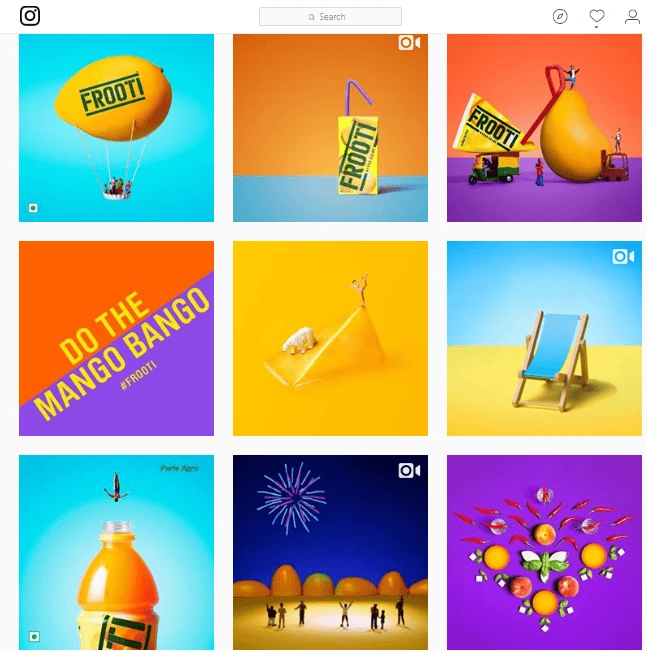
Source: Instagram
The reason this works is because your target audience tends to associate these visuals with your brand. This contributes to better recall and builds loyalty over time.
Pro tip: Lucidpress has a template-locking system that can help you adhere to brand guidelines consistently. Read more about it here.
Find your competitive advantage
There are many factors that contribute to an e-commerce sale. One of the most powerful ways to establish a brand is by identifying one factor where the rest of your competition sucks and mastering it. For instance, if you’re in a niche where the leading sellers take at least a couple days to ship, you might invest in overnight shipping. Alternatively, if all your major competitors charge for shipping, you could choose to offer free shipping.
This is exactly what Zappos did to establish themselves as the online shoe seller of choice. CEO Tony Hsieh realized early on that customers tend to have unique tastes for shoes, and in order to succeed, they’d have to make the return process ridiculously simple. The company provided its customers with prepaid return shipping labels that they could print for free returns. In doing so, Zappos outdid all competitors and established the most well-known brand in online shoe commerce.
The reason this works is because doing something better than others gets noticed by customers who then associate your brand with it. [] In addition to bringing word-of-mouth publicity, this strategy also gets your customers to return for future purchases. While such strategies can cost a lot of money, they also help to establish a brand name and improve customer loyalty.
Know your customers’ values
Learning your customers’ values means building a relationship with them that goes deeper than just producer/consumer. When people recognize and trust your brand, it’s because they see their own values reflected in it.
One of the easiest ways to learn about your customers’ values is simply to ask them. You could do some informal research on social media (or your blog) by covering certain topics and testing the engagement. Or, you could be even more scientific by conducting surveys and focus groups to learn more about the audience you’re pursuing.
After you’ve done this research, look back at your company. What do you already do that’s aligned with the values of your customers? These are the messages that will ring out the loudest.
When you can back up what you say with what you do, people will trust you and be drawn to your brand. [ ] Begin by looking for the values you already share with your target audience, then find ways to embody the others.
Know your brand story
For as much as things have changed in the world, people still love a good story. Whether it’s the story of a hero, an underdog, or simply the shared challenges and pleasures of the human experience, a good story moves people’s hearts and minds.
Every brand out there has a story—every one. The challenge is to share that story in a way that’s authentic and relatable. It might take some time to discover the best way to communicate your story to your target audience.
Start by zeroing in on your company’s purpose, or more specifically, the problem you solve. Let’s consider an example.
Say you manage an e-commerce brand that sells eco-friendly furniture and clothing. What’s your story? In short, you provide people with comfort and security in an environmentally friendly way.
But there’s something larger going on: climate change and the movement to address it. Your role in this global story is to meet people’s basic needs at a significantly lower cost to the environment. Your brand creates better harmony between humans and the earth, and people who care about the planet will want to help your cause.
In this example, your story represents and exemplifies your brand’s values. Positioning your brand as an environmental activist, or as a lover and defender of nature, will help you connect with your target audience. This powerful brand image comes from digging into the story, bringing to light what it really is.
L.L. Bean is a good real-life example of this. It started with a man designing his own pair of boots to make it easier and more enjoyable to walk around outside. But the larger story is about humanity’s love of nature. Through this narrative lens, you can easily recognize L.L. Bean’s brand. This is no coincidence.
Of course, your history might not be as deep as L.L. Bean’s, but it’s still meaningful. Take some time to find the best way to communicate your story, and it will clarify and reinforce your brand in the eyes of your customers.
Investigate influencer marketing
When it comes to ecommerce branding, customer trust is heavily influenced by the testimonials and referrals your business receives. Influencer marketing is one of the most effective ways to impact trust. This strategy involves hiring niche influencers (that is, social media users with thousands of followers in your industry) to spread the word about your brand.
Success with this marketing strategy relies on how targeted your influencers are. It’s a good idea to start small and reach out to influencers who have small audiences of less than 10,000—such influencers cost less and have a highly targeted audience.
Measure the impact of such a campaign and use the lessons to deploy larger campaigns. While partnering with large influencers outright might seem like a good idea to scale fast, these influencers appeal to multiple demographics and are thus not as targeted. The conversion rate from such campaigns tends to be lower.
The reason influencer marketing works is that prospective buyers tend to associate the credibility of the influencer with the brand they endorse. This makes it a much quicker way to establish a brand presence than growing your followers organically.
Pay attention to content authority
A typical customer goes through several stages of research before they land in your store for a purchase. Your store could miss on some real branding opportunities by not investing in content that the prospective buyer uses for research.
So, why is this important? First, it helps establish your brand as an authority in the industry. Customers trust authority sites which they return to for future product research. A comprehensive directory of articles could potentially make your website their “go-to” source.
It also provides your brand the opportunity to shape readers’ opinions and nudge them towards products in your store. Additionally, a comprehensive content directory helps your business rank better in Google searches, which reinforces your brand authority.
One of the best ways to do this is called the pair-up strategy. Essentially, marketers are advised to create a comprehensive content page that’s mapped to each of their product pages. Prospective buyers land on this central page during their research phase and are nudged toward the product pages through the content.
Key takeaway
Building a brand for your e-commerce business is an investment, but it’s one with dividends. By enforcing brand guidelines, finding your competitive advantage, and influencing buyers with great content, you’ll lower customer acquisition costs and develop an impressive reputation for your brand in the process.
Where to go next? Learn more about building & managing an online brand in our free eBook: How to build your brand in 2020
It’s getting harder to put your marketing messages in front of consumers. Increased digital competition, changing algorithms, and a crowded social media space mean you have to work hard to stand out.
So how are marketers breaking through the clutter? By revitalizing some tried-and-true, pre-digital strategies like direct mail.
Related: Direct mail marketing: Does it still work?
Receiving something in the mail is sure to get people’s attention. These 11 direct mail examples will inspire you to launch your own effective direct mail campaign. We’ve chosen each one because it showcases a particular strategy you can use to generated direct mail ideas for your own marketing pieces.
Bold text

Your central marketing message should be the first thing a recipient sees when they receive your direct mail piece. The Waterfront open house postcard has big, bold text taking up almost half of the design, so the main marketing message gets across right away.
If you design your own piece with bold text, just remember not to go overboard—you can overdo it. Balance the text with complementary images, and leave some space for the design to breathe.
Shaped text
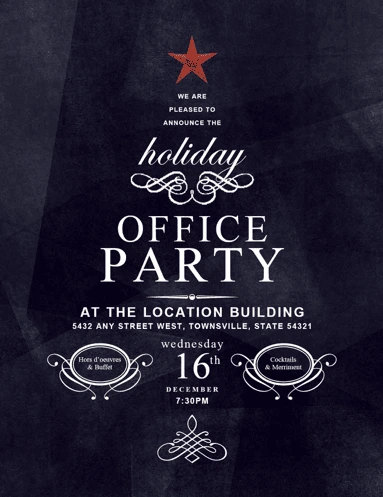
Another great way to get people’s attention is with interesting shapes. This office party invitation from Every Door Direct Mail organizes text into a Christmas tree shape, a surefire hit around the holidays. You can organize text into all sorts of shapes, from beer bottles to flowers. It’s a fun and creative way to add some eye-catching visual interest to your direct mail piece.
Stunning images

While your marketing pitch lives in the text, great images capture attention and evoke emotion. This Parisienne travel postcard gets viewers thinking about travel and romance with a pretty, black-and-white photograph of the Eiffel Tower. It’s good practice to choose an image that complements your brand and your offer, but the primary goal is to make a strong emotional connection.
Macro photography
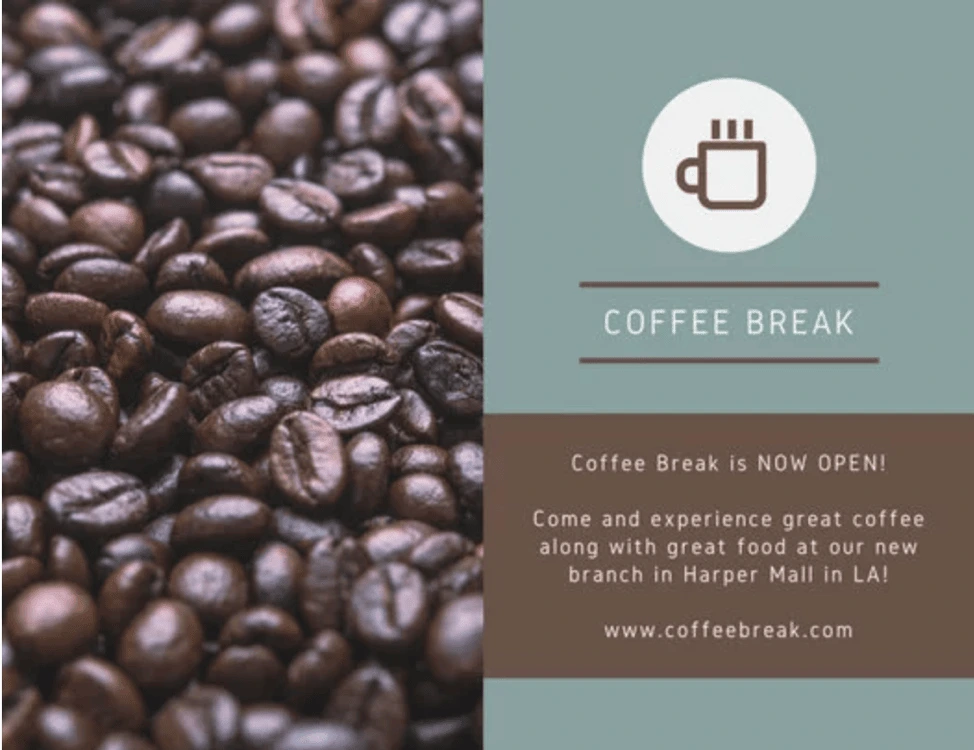
Direct mail pieces have to stand out from the stack of mail that people receive every day. Macro photography is a great way to provide a new perspective on a familiar object—and this direct mail piece from Canva puts this strategy to good use. Rather than a standard cup of coffee, this alluring photo evokes the scent, taste and tactile feel of coffee beans.
Of course, you don’t have to use coffee beans—or any food, for that matter. If there’s an object that represents your brand, product or service, use macro shots to highlight it. If you can use an image that’s personalized to your customers or local area, even better.
Eye-catching colors
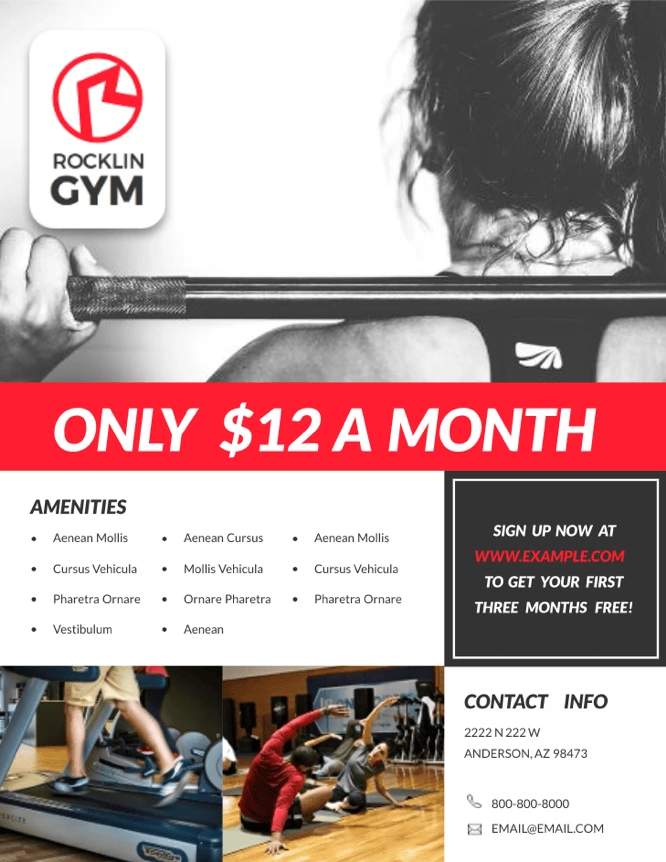
When you look in your mailbox on an average day, what do you see? Probably a sea of white (and off-white) envelopes, most of which look the same. The bright red stripe on this gym fitness flyer immediately stands out and draws attention to the value proposition. Be prudent with your color pops—an overly bright direct mail piece can look tacky and overwhelming. Stick with tasteful highlights like those showcased in this design.
Different shapes
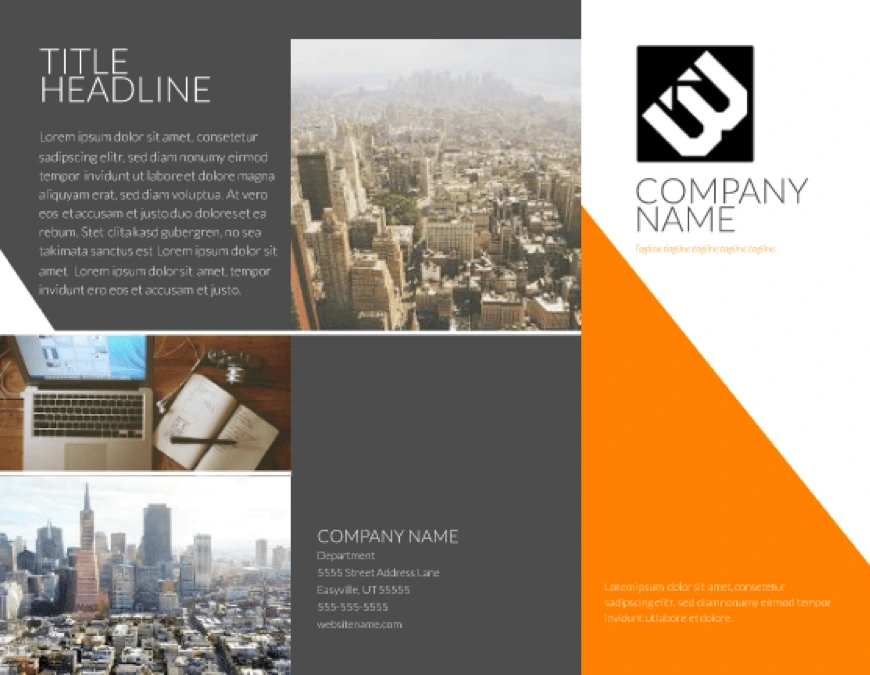
Mailboxes are crammed full of standard envelopes and flyers every day. If your advertising needs to stand out, why not try a different shape? This modern tri-fold brochure will grab people’s attention not only with its color-blocked design, but also with an unusual shape. Folded pieces have a three-dimensional aspect to them, making it more likely to get noticed.
A personalized map
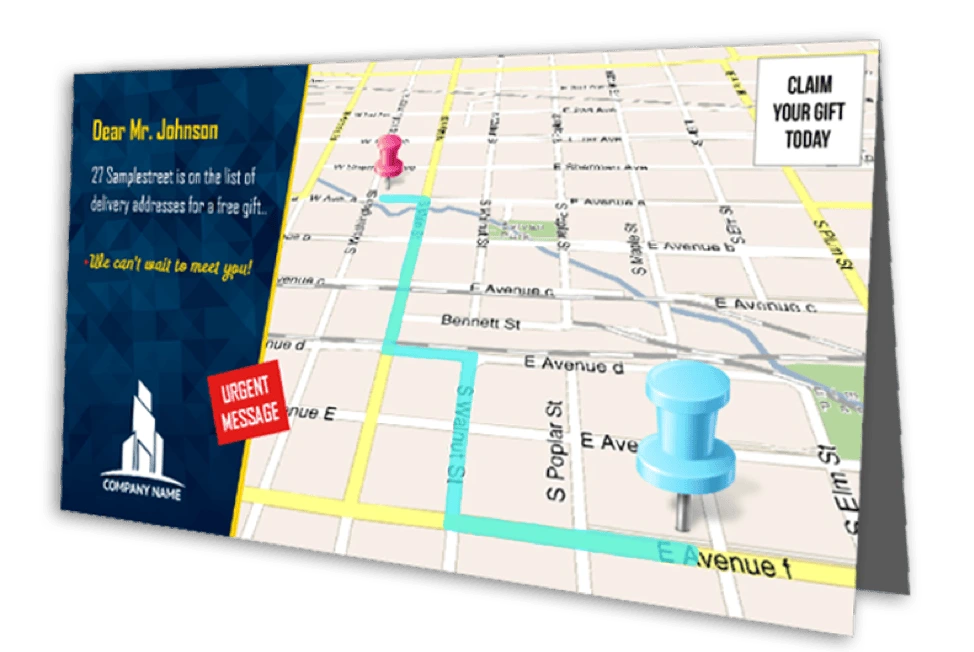
Personalization is a standard digital marketing tactic, but it’s more difficult to achieve in the direct mail space. Maps4Mail solved that by printing customized maps on each piece of mail, showing the recipient exactly where they need to go. The map is intuitive, personalized, and makes it easy for anyone to find your business. This is a great way to show customers you personally value their business as individuals.
If you don’t have the budget for such a granular campaign, you can still try other ways to add a personal touch to your direct mail. For example, you could include something specific to the local area, or you could include your signature.
Unusual materials
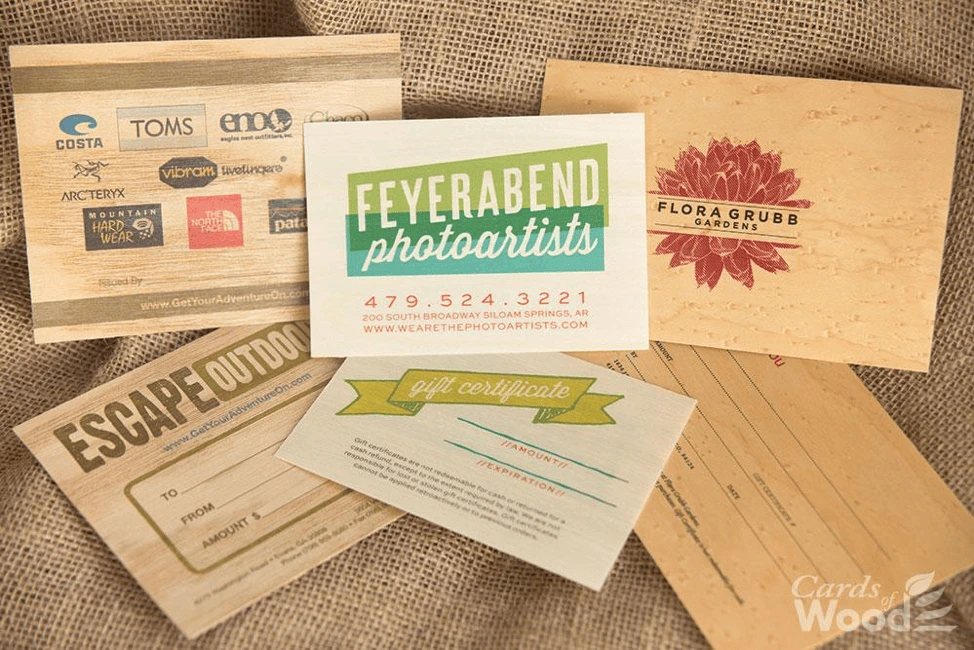
Most letters and flyers are printed on the same white paper. That’s not very exciting. If you can find materials or textures that stand out, you’ll have a big advantage over the competition. Heavy or textured paper work nicely, but if you really want to branch out, check this: These postcards from Cards of Wood are (as you would guess) made entirely of wood. Wood you believe it?
3D objects
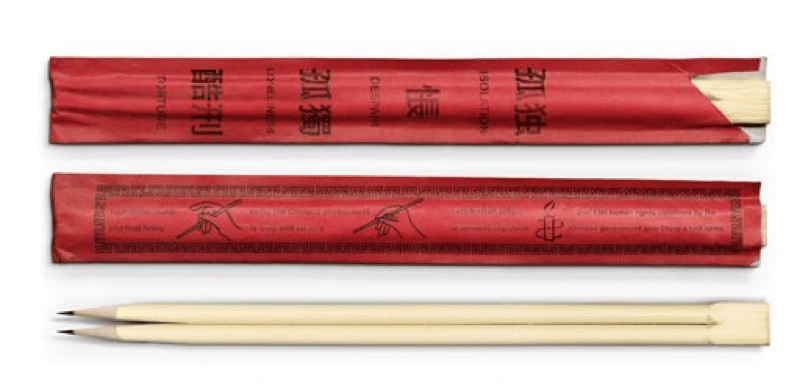
People are curious creatures, and we’re more likely to open packages that contain objects. If you can get your brand message across with an object, it can serve as a fantastic ad. Amnesty International sent out these pencil chopsticks to encourage people to write to the Chinese government. Thinking outside the box (or should we say inside) can get great results in direct mail because people spend more time with it.
Interactive mailers
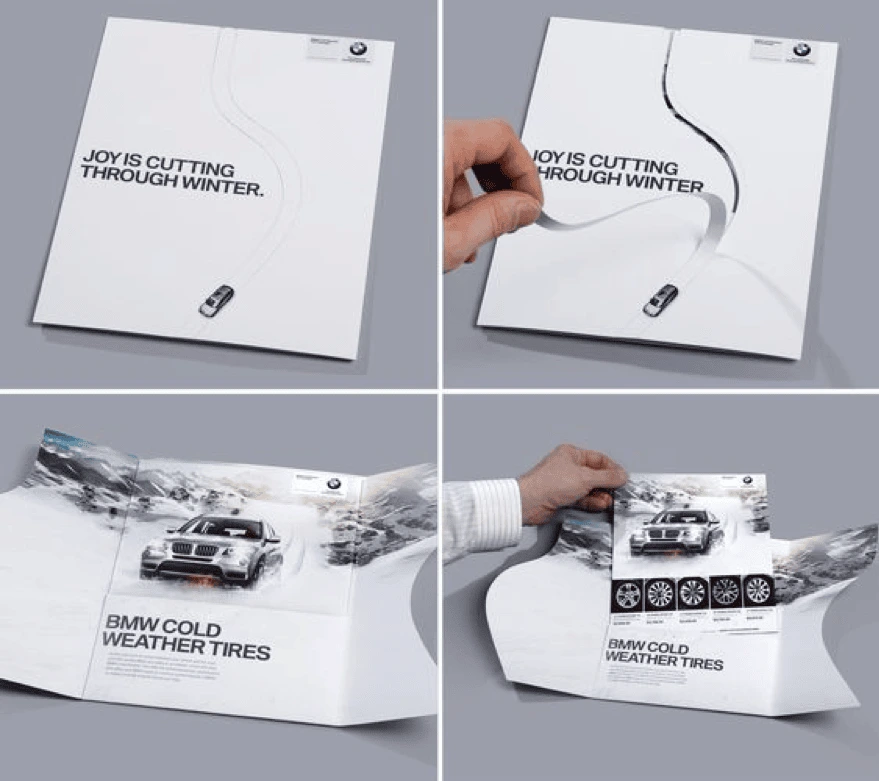
Not every brand can afford to design interactive mail pieces—but if you can, there might be no better way to connect with your customer. This piece from BMW had customers cutting a path through a wintery postcard to emphasize the reliability and control of their snow tires. Their combination of an envelope and mailer is great creative thinking.
Gifts
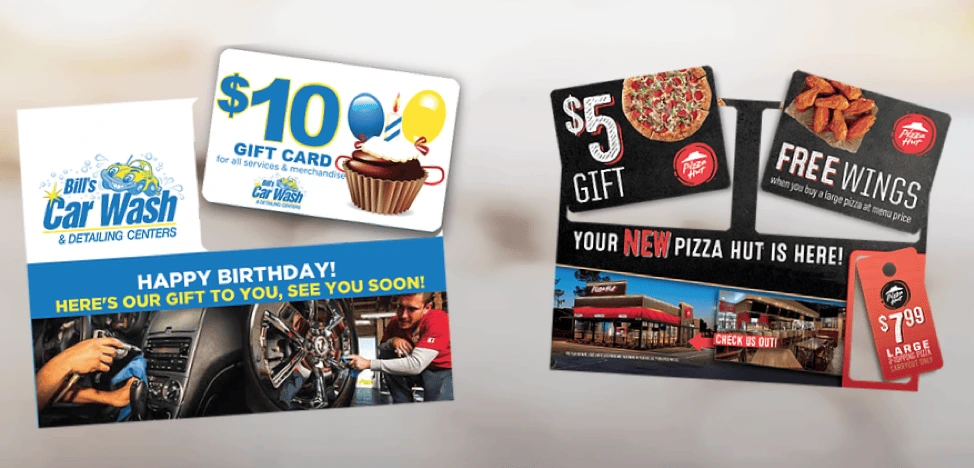
Many direct mail pieces focus on the value brands can provide to their customers—but you’ll have to go further if you want to stand out. A coupon is a good start, but that’s still fairly common. Consider including a punch-out gift card instead. It lets you take advantage of an unusual material (plastic) and give the recipient a gift. A great combination that’s tough to beat.
Key takeaway
People get a lot of mail they didn’t ask for, and different brands will find success with different types of direct mail. The most important thing is to stand out and provide real value to your audience. These examples should get your creative juices flowing and inspire the best direct mail campaign for your own marketing goals.
Ready to create your own direct mail designs in minutes? Check out our direct mail postcard templates.
Finding the right real estate marketing agency is often compared to finding the perfect date. If you discover that an agency doesn’t meet your standards or help to grow your business, then you’ll be traversing rocky roads until you tell them to hit the trail. However, if they enhance your marketing efforts and drive results, then it will be a successful, happy relationship.
Related: Real estate marketing tips and tools
Just like any good advice column, we went straight to the experts and asked them: When is the right time to hire a real estate marketing firm? What should you ask for, and what should you watch out for? Here’s what they told us.
When to hire a real estate marketing agency
Hiring a marketing agency can be expensive but well worth it—if you find the right one. But when is the right time to start looking for an agency to take over your marketing? If you’ve just started your company, it isn’t yet time to worry about this, but it might come up later on. For example, here are some of the reasons our experts gave.
- Looking to grow. If your company’s growth is stalling, or if you’re reaching your goals but want to accelerate, it might be time to consider hiring a real estate marketing firm. The agency can take some responsibilities off your plate and super-charge your marketing efforts.
- Lacking the time or skills. Alen Kadimyan, CEO of IEI Realty, said they knew it was time to hire an agency when they ran out of time to increase their marketing efforts. “We were falling behind on social media marketing, SEO, and our presence was not as prominent. We needed to differentiate ourselves from other bus-bench agencies.” Bringing in an agency can fill those time and skill gaps for you.

- Unsure of your next move. Here’s the situation: You’re running all the marketing yourself, or you have some in-house marketers on hand. However, you’re struggling to determine or settle on a larger marketing strategy. This is a clue to begin searching for a real estate marketing firm that can help you find your direction.
What to look for in a real estate marketing agency
Benjamin Franklin often advised others to date “with your eyes wide open,” to ensure you don’t go into a relationship blind. This advice applies well to finding the right marketing agency for your real estate brand. Here’s what our experts say to watch for when you’re “courting” a marketing firm.
Do they provide the services you need?
Before searching for real estate marketing services, you should sit down with your team (no matter its size) and discuss which services your brand would benefit from most. This could be digital marketing, PPC, social media, creative strategy, advertising, or any number of services. Once you understand your priorities, you can start looking for creative marketing firms who are experts in those areas.
Kadimyan said that when they began searching for marketing services, they knew exactly what they needed help with. “We needed someone who could help us find a unique voice in our branding, help us market ourselves as millennial-friendly realtors, and help us expand our reach on social media.” These goals made it easy to narrow down their shortlist to the firms who specialized in those areas.
Do they understand real estate?
It’s vital for agencies to know how real estate groups work and how to collaborate with them, according to Kadimyan. “Make sure they understand real estate, selling and buying process, and are familiar with the terminology. Agencies that stay connected via messenger and accommodate the on-the go agency.”
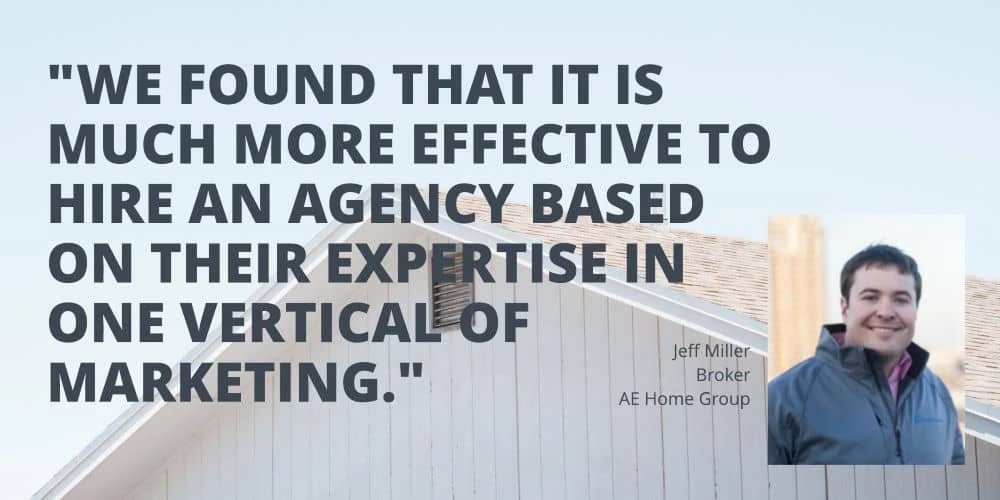
Jeff Miller, a real estate broker with AE Home Group in Maryland, said that marketing agencies who try to be experts at everything only end up being average in their skills. “We found that it is much more effective to hire an agency based on their expertise in one vertical of marketing. Our experience was that being great at one form of marketing yields more leads than being average at all of them. Over time, if we want to expand and obtain more leads, then we would reassess hiring additional agencies who are experts in other verticals.”
Do they understand marketing trends?
A good marketing agency is on top of the latest trends in digital marketing and traditional advertising. They should be able to tell you which mediums, channels and formats are most effective today—and which ones should be left by the wayside. Perhaps most importantly, they should be able to spot opportunities that other marketers are missing.

Evan Roberts, a real estate agent with Dependable Homebuyers, said, “A good marketing agency should be able to guide you on whether direct mail, Google Adwords, Facebook marketing, or print ads are providing a high return, and which calls-to-action are connecting with individuals in your local city. Marketing agencies create their value by saving you money in pursuing strategies that others have found to be ineffective.”
Do they have experience in your area?
Local marketing is big business, but few industries depend on it as much as real estate. Understanding the local areas you serve is business-critical—without that knowledge, your failure is virtually assured. Your marketing efforts should cater to local areas and help you build relationships with local homebuyers and property owners. Therefore, your agency needs to research and immerse themselves in the markets you serve.
Regarding experience in your locality, Roberts said, “As a real estate brokerage, it is critical that your marketing agency have extensive experience in your local area. Every major metropolitan behaves differently. Some tactics work great in some areas while being over-saturated in others.”
Do they share your vision?
You’ve created a vision for your real estate brand. If you want to see your vision come true, then your marketing agency has to understand and support it. The agency you hire will create strategies that impact your brand and business, so you want to make sure they’re on the same page as you.
Your brand’s vision and values should come across in your marketing, from creative advertising to social media to direct mail campaigns. When you find an agency that shares and respects your values, their work for you will reflect that in a compelling, natural way.
Do they play to your unique strengths?
What unique advantages do you already bring to the table?
Most realtors are warm and personable. But you might be a uniquely good writer, photographer, or great in front of a camera. Handling certain tasks yourself lets you play to your strengths and ensure your brand conveys a personal touch.
Real estate is a face-to-face, high-trust industry. It’s important your marketing conveys a personal feel. One potential solution is to focus on tactics that tap into your strengths and hire out the rest piecemeal.
For this to work, your marketing partner must be flexible with their services offered. Don’t get locked into a contract where you’re paying for things you could have done better yourself.
Do they have simple (and transparent) metrics?
Terms like “increased brand exposure” or “better visibility” sound great… but only if they translate into a healthier pipeline of leads and clients. What can’t be measured can’t be improved.
You might not understand all the technologies or tactics a marketing agency might use, but tracking results should be simple. Look for partners with a regular reporting deliverable, or at least access to a dashboard that helps you see new contacts being made and how well they’re responding.
Don’t buy into one of those promised “hands-off” solutions. At a minimum, you’ll want to check the metrics to make sure your investment is justified.
Making the best decision for you
Between all those open houses, impromptu photo shoots and stressful closings, you can’t let marketing fall by the wayside.
Whether you decide to hire a marketing agency or handle it yourself is a personal decision. It also isn’t a completely binary one. You might find that, after experimenting for a few months, a balanced solution—where you handle the parts of marketing you enjoy and hire out the rest—works best.
Bonus: Real estate marketing company comparison chart
When you start looking for real estate marketing firms, it’s easy to run into information overload. To help you get started, here is a comparison of some of the top real estate marketing firms. The chart includes services offered by NYRE, SM Sold, Conway + Partners, Cohn Marketing and 3 Sixty Strategies. Find your perfect combination of SEO, social media and website creation services.
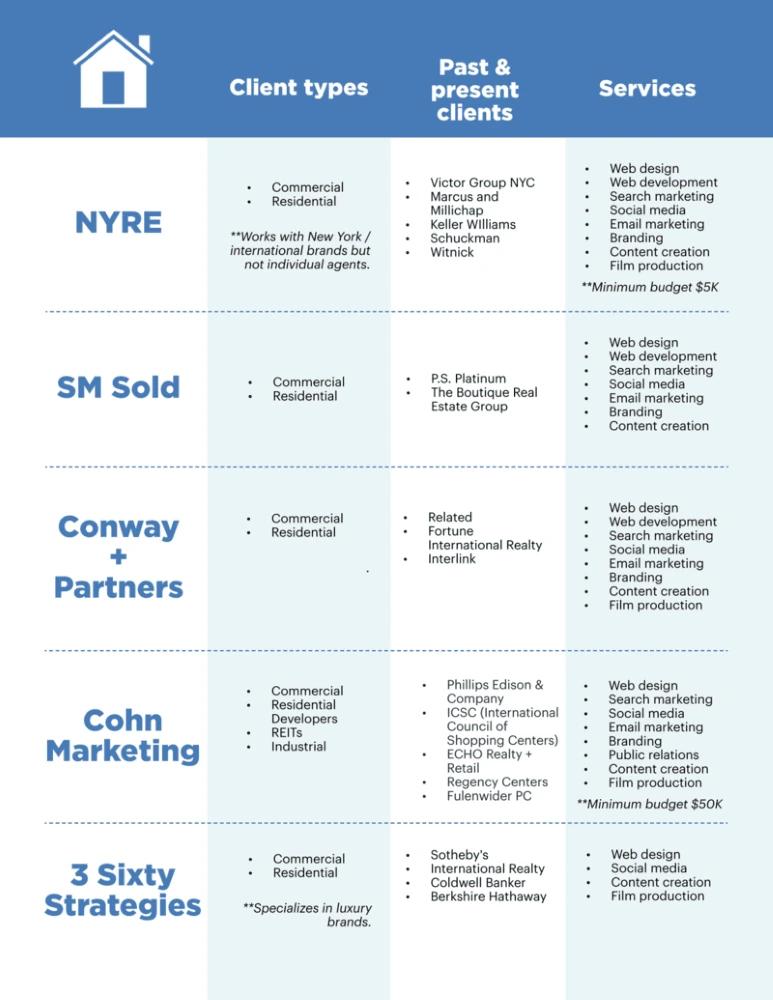
View and download this table here.
You can use this as inspiration to create your own comparison chart in Lucidpress, Google Docs or Excel. This will help you keep track of the different marketing agencies you research, so it’s easier to make your final decision.
Your brand matters. Learn how to protect and elevate your real estate brand in this branding essentials guidebook.
If your real estate business is growing, it’s only a matter of time before you’ll need to reevaluate your marketing strategy. “Growing pains” are definitely real, and your agents will feel the squeeze as you try to scale your marketing efforts for larger audiences.
When you find yourself at this point, it’s time to automate. Real estate marketing automation software will save agents time and help you reach and nurture leads more effectively. It handles many complex tasks that are either too difficult or time-consuming to do on your own. But like any software, it comes with serious considerations, such as cost and learning curve.
In this post, let’s go over what marketing automation is, how it can help your real estate business, and how to choose the right software for your brand.
What is marketing automation?
Marketing automation is the process of automating certain repetitive marketing tasks. It’s designed to support multiple channels, so your marketing efforts (and your brand) stay consistent across the board. Most marketing automation platforms support websites, emails, and social media.
Marketing automation use cases
Let’s go over a few examples. Here are some of the ways agents can use marketing automation software to work more efficiently.
Reduce cart abandonment. Imagine you sell products on your website. It could be branded merchandise, online courses, or real estate services.
Ideally, when someone adds an item to their cart, they will complete the transaction immediately—but, that’s not always the case. They may have been looking for more information, like shipping prices, before making their decision. Or, maybe they realized they can’t afford to pay today.
Either way, the result is an abandoned cart and lost sales.
Marketing automation software can help you capture this information and add this lead to your database. Then, you can target this lead with a follow-up email that encourages them to return to their cart and finish the sale. You could provide them with a discount, free shipping, or some other enticing offer. This email could be the key to persuading the buyer to complete the sale.
Nurture your blog subscribers. If you’re investing time and resources into content marketing, your goal is to engage an audience who may not be ready to buy today, but they will be in the future. Maintaining an active blog is a popular way to build an engaged audience of subscribers.
So, how do you move these people toward sales?
Real estate marketing automation can help agents set up email campaigns to nurture those blog subscribers. You can even divide your audience into segments and send them relevant, customized content—like local listings. Regular contact will keep your brand top-of-mind, so they think of you first when they need an agent.
Identify leads who are ready to buy. Sometimes, it’s hard to track all the leads in your system and prioritize the ones most ready to buy. You don’t want to miss a sales opportunity while it’s hot, so you decide to prioritize leads who’ve completed certain actions on your website.
But… which activities should you track, and how?
A good marketing automation program will provide reliable data on the actions that demonstrate high interest:
- Landing page visits (such as visiting your pricing page more than once)
- Email opens (like opening a demo email, but not clicking through)
- Lead scoring (assigning a number to a lead based on how many actions they’ve completed)
Based on this information, you can be confident that you’re reaching out to a real estate lead at the right time.
Benefits of marketing automation
Now that you understand what real estate marketing automation is and how it can be used, let’s review the benefits.
Marketing automation software saves time. Creating customized campaigns won’t take as long as it used to. Because your agents don’t have to spend time performing repetitive marketing tasks, they have more time to spend face-to-face with clients—closing more sales.
It makes your advertising more effective. Because marketing automation software uses data to make decisions, you can be more confident that your message is reaching the right people at the right time. From email automation to SMS messaging and mobile push notifications, this software streamlines a variety of marketing techniques, including real-estate social media marketing, so agents can focus on getting the best results from each.
It makes marketing management easier. Before automation software, agents had to spend hours every week performing repetitive tasks and sifting through the data—introducing many chances for error. Now, a program can manage these things for you, and all you have to do is maintain and optimize your campaigns.
Lead gen best practices
If you’re interested in marketing automation for real estate, you’re probably already generating a fair number of leads. If not, you might want to get your lead generation efforts up and running first, so you can get the most out of your real estate automation software.
In either case, it’s never a bad idea to review lead gen best practices. What makes a good lead generating strategy?
Move leads down the funnel. Remember the classic customer conversion funnel? It describes the journey a buyer makes through the stages of awareness, interest, desire and action. For each stage in this funnel, you should have landing pages and content to match. For example:
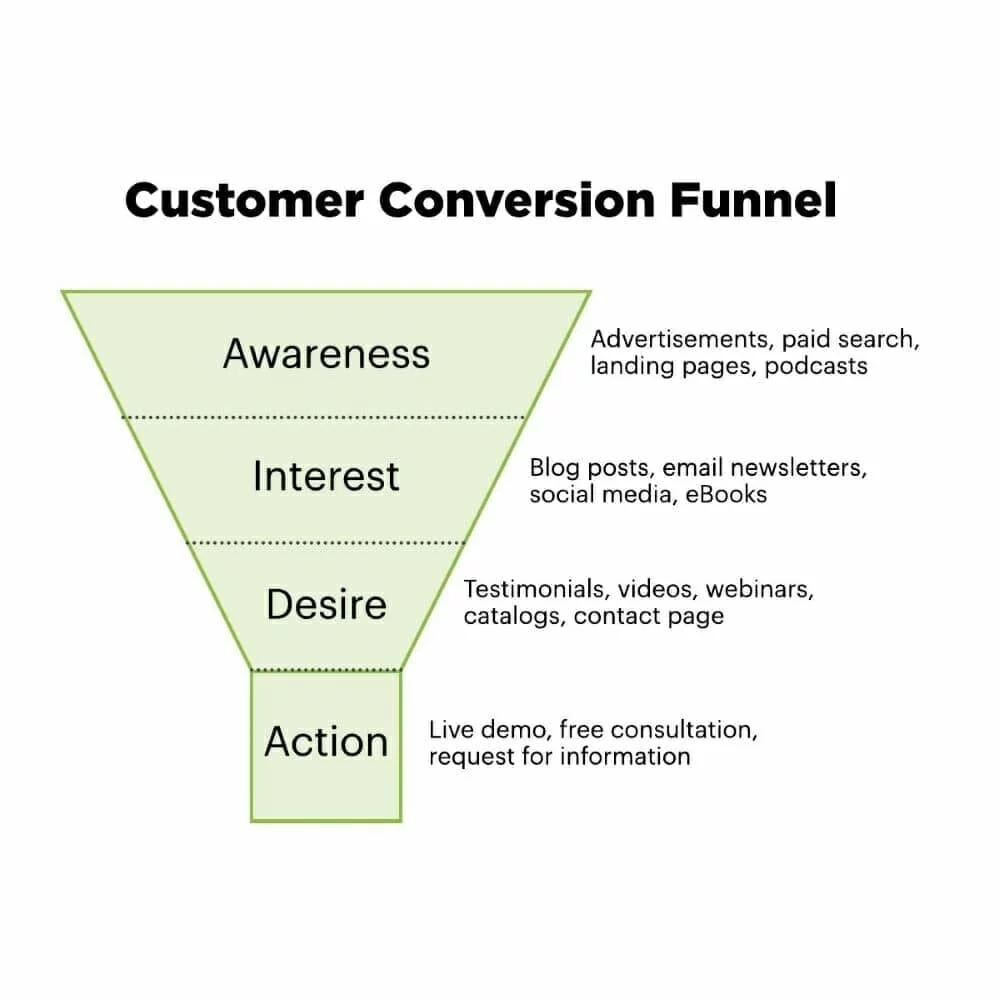
When you have all these pieces in place—and you use clear calls-to-action to connect them—buyers will move seamlessly through the stages with fewer obstacles and objections. Marketing automation software can help you manage and deliver that content, so your leads don’t get lost or go cold.
Build your own email list. If you’re just starting out, it’s tempting to purchase email lists. But when you buy a list of addresses, you’re getting the same tired list that many other agents have used before you. Bottom line—it will never be as effective as the list you build yourself.
Make it easy for people to subscribe to your blog and email newsletters. Put sign-up links on your website, blog and social media channels. Collect email addresses from clients and prospects you interact with, then add them to your email list. Offer incentives to sign up for your email (e.g. coupons, sweepstakes, listings info), and remind people about it both online and offline.
Because this list is targeted and unique to you, you’ll enjoy better open rates, click-through rates, and conversion rates.
Maintain brand consistency. It’s often said that a prospect requires 6 to 8 “touches” from your brand before they become a lead. These touches can come in the form of advertisements, listings, webpages, emails and social media posts—all different channels.
If your brand identity & messaging aren’t consistent, you risk losing and confusing your audience. That’s why real estate branding is so important. Make sure agents are all using the same brand assets (colors, logos, fonts) and messaging (voice, tone, offers). The consistency will help buyers recognize, remember and trust your brand.
Which software do you need?
To figure out which real estate marketing automation software to use, you have to ask yourself a few questions. The answers will provide a rubric for evaluating all the options out there.
Am I using inbound or outbound marketing? Generally speaking, there are two types of marketing: inbound and outbound.
You can think of outbound as “push marketing,” where you push a message out into the world (e.g. advertisements) in hopes of attracting the right people to your brand. Outbound marketing includes:
- Print & broadcast advertisements
- Direct mail
- Paid social ads
- Paid search & display ads
Conversely, you can think of inbound as “pull marketing,” where you publish and distribute messages (e.g. web content) that interested buyers search for online. Inbound marketing includes:
- Blogging
- Organic social media
- Organic search
- Emails to your list
Which strategy do you use most often? In reality, most real estate brands will use a mixture of both. Outbound marketing is good for building initial brand awareness. Inbound marketing is good for driving qualified leads. Both can contribute to a healthy sales pipeline.
Determining what type of marketing you use the most can help you prioritize which automation software to consider. Some specialize in one or the other, and some cover both.
Which channels do I use (or want to use)? This question dives a little deeper than the last. Rather than thinking in broad categories, get specific about the marketing channels you want to automate.
Different software will specialize in different channels. Make a list of the channels that are “must-haves” and “nice-to-haves.” Your lists could include:
- Website actions
- Social media
- Content publishing
- SMS messaging
- Mobile push notifications
As you can see, the potential of real estate marketing automation goes far beyond email. But, not every agent will need all the bells and whistles. As management, it’s up to you to decide which features are most relevant for your agents. Then you can filter out the software that doesn’t meet your needs—or, perhaps, far exceeds them.
What tools do I need to integrate with? Chances are, you’re already using a slew of programs to manage your business. Marketing automation could replace some of those, but of course, not all. It’s important that your marketing automation software plays nicely with the other tools you’re using.
Linking your marketing automation software to other tools will increase its usefulness. They provide useful data your software can use to make decisions.
Examples of tools you could link to your marketing automation software:
- Salesforce (CRM)
- Microsoft Dynamic (CRM)
- Google Analytics (data)
- Kissmetrics (data)
- Facebook (social)
- LinkedIn (social)
- Eventbrite (events)
There are thousands of examples (just glance at Hubspot’s integrations page to get an idea!). Take a close look at which tools you could replace with marketing automation and which tools you’d need to integrate.
Important evaluation criteria
It’s not just the software that you’re evaluating—there are other reasons to choose one program over another. Here are a couple of additional considerations.
Implementation and ramp-up. Setting up a new software is not an easy task, especially one as complex as marketing automation software. (Switching from one software to another can be even harder, as we learned here at Lucidpress when we switched from Hubspot to Marketo.)
Make sure you have a plan and a timeline for implementing the new software: importing data, connecting tools, adjusting code, and setting up initial campaigns.
Also think about the ramp-up. Which campaigns are absolutely necessary to get started? Which ones can you hold off or pause while you get up to speed?
There’s also adoption: Who needs to learn and use this software regularly? Make sure you have any training resources you need, and that all agents are on the same page.
Service and support. If something breaks or doesn’t work, who do you call? If you’re comfortable troubleshooting yourself—or if you have an IT person—you might not need additional support from your marketing automation provider.
But if you’re not, it’s worth asking about services and support. What’s included in your subscription? If your agents need more help or training, is there an extra cost associated with that? How responsive is their team? You can include all of these in your evaluation.
Marketing automation comparison chart
Now that you know what marketing automation is and how it could help grow your real estate business, it’s time to start evaluating providers. We’ve chosen a handful of software programs that are popular with real estate brands and compared them below.

View and download this table here.
To find out more about the 7 programs in our chart, visit their websites:
You can use this as inspiration to create your own comparison chart in Lucidpress, Google Docs or Excel. This will help you keep track of the marketing automation software you research, so it’s easier to make your final decision.
A well-designed website is a valuable investment that will generate revenue for your business—but 38% of people say they won’t explore a site if they find it unattractive. If your website hasn’t been updated in a while, your web design could unintentionally be hurting your business by turning people away at the door.
If it’s time to refresh your website, we’ve put together a list of 10 website design best practices and coupled them with the do’s and don’ts of great web design. Follow these best practices as you update your site.
1. Target audience
- Don’t ignore the users
Always keep your target audience in mind. Your point-of-view, as a professional, might be very different from that of the user. Pretend you’re visiting your website with fresh eyes. Walk through the user’s journey as they explore different pages. Focusing on this experience will help you create a user-friendly website.
Good design addresses the target audience with a brand personality users want to engage with. Check out this website, Crypton. It’s designed ideally for a tech-savvy audience.

Source: Crypton
Parallax scrolling heightens the user engagement here, but you don’t have to include parallax functionality on every website. Research your buyer personas and use design elements, functions and colors that make your target audience feel right at home.
- Do optimize for search
Websites that don’t rank well on Google and other search engines have very little chance of breaking through the noise. As you update your website and add new pages, make sure you’re following the most recent SEO guidelines. Your page titles, meta descriptions, and content are all important players in driving better search signals.
2. Layout
- Don’t create a cluttered layout
Have you seen websites that look like rows of boxes—all different sizes and arranged haphazardly? Would you spend more than two seconds sorting through it? Probably not. That’s because cluttered websites are visually confusing; the viewer doesn’t know where to direct their attention. A well-organized layout, on the other hand, guides the viewer where you want them to go.
- Do create a focal point
So, where do you want your visitors to go? It depends on the purpose of your website. An e-commerce site will drive visitors to purchase, while a SaaS site might drive visitors towards a demo or a free trial. Whatever purpose your website serves, make it the focal point of your homepage.
- Do use catchy headlines and call-to-action
The first things that attract a visitor’s attention when she lands on your homepage are the headline and call-to-action. Not the contact info, articles or product specs, but these two elements. For this reason, the more action-oriented your headline and CTA are, the higher your chances of success rise.
CTAs are designed to incite an immediate response from a customer. That’s why clear, concise CTAs are more effective. One software company reported that their site’s conversion rate increased by 106% after it got a makeover that included a clear, direct call-to-action.
3. Color scheme
- Don’t use all the colors
Using too many colors will make your website design clash. Colors have strong psychological impact, and they will affect a viewer’s opinion of your brand. If you’re unsure how many colors to use, the rule of thumb says your design should not use more than three colors. If you’re working with a brand palette, you might be able to use more, as long as you balance them well.
- Do use color combos that enhance your content
Your website’s colors should reflect the brand, complement the content, and visually delight viewers. [] Avoid selecting random colors just based on what you like. Instead, think about the brand and its users. If you have a primary color but don’t know how to make color schemes, you can use an automatic color scheme generator to help fill out your palette.
4. Text placement
- Don’t fill the page with long paragraphs
Just like the layout, you don’t want the design to be cluttered with text. If you have long-form content on the website, create a clean, spacious design that divides the content into readable chunks. You can do that by adding ample white space, using images, and creating proper flow.
- Do make it easily scannable
If your pages are easy to scan, you have a better chance of luring readers to the bottom. Attention spans are short online, but if you can make your content easy to absorb, readers will get more value from it. In addition to high-quality writing, use headings, bullets, quotes and blocks to emphasize the essentials.
- Do establish trust & credibility
Potential customers are less likely to enter their contact information or make a purchase if they suspect that your website is not secure or trustworthy. Communicate your trustworthiness by featuring customer testimonials, case studies, reviews, security badges and your privacy policy. Make sure your contact information is easy to find so visitors know they can reach you. All of these signals will help you establish trust and credibility as a reputable brand.
- Do communicate your value proposition
Use compelling language to convince and show readers how your brand will add value to their lives or resolve their problems. What benefits can customers expect to enjoy by making a purchase or signing up for your service? What features make your products better than what your competitors offer? If you can excite your visitors with your value proposition, you will see your conversion rates improve.
5. Search & navigation
- Don’t make it hard for users to find what they need
Everything on your website should be easily searchable. Whether it’s the sign-up form, the “About Us” page, or your contact information, readers should not have to spend more than a few seconds finding it. To make things even easier, include a search box so people can find things that don’t align with the page’s primary focus.
- Do set up proper navigation
If your site requires users to sign up, use colors to make the navigation simple. For instance, if your navigation headers are blue, make your sign-up button green or some other color. Organize your content into categories that users can browse if they like. You can also organize content on various hub pages.
With good UX, your website tells the world that you think clearly about the end user. See Crunchbase’s website; its UI is done beautifully. There’s the search bar on top if you want to explore specific results, or you can click the menu on the left side to browse sections that interest you.
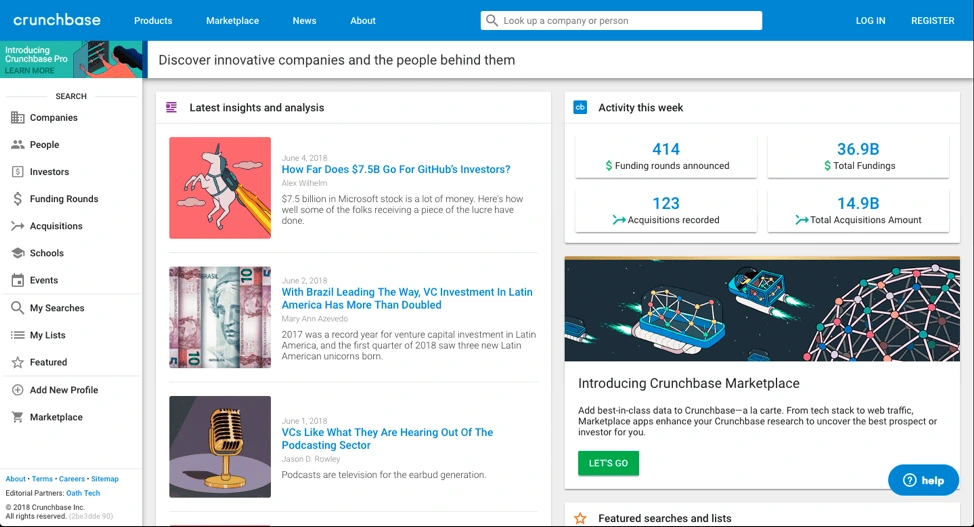
Source: Crunchbase
6. Fonts
- Don’t use too many fonts
A website that uses five different fonts loses users in seconds because it takes too much effort to read. Too many fonts on the screen can make a website look chaotic and unprofessional. The ideal number of fonts is three: one for main headings, another for sub-headings, and the third for the body text.
- Do select the right font sizes
Font size has a huge impact on legibility. It’s important that they’re neither too big (taking up half the page) nor too small (uncomfortable to read). The sizes of your fonts should reflect the importance of each element. For example, section titles and taglines are more significant than the body text, so they’re bigger. This helps readers scan the content, too.
7. Images
- Don’t use too many images
Too many images will crowd out your message, so use them sparingly and impactfully. Remember, search engines can’t read images very well, so don’t rely on them to convey text. If you’re using a background image, keep it under 1 MB. Large images slow down your site’s loading time.
- Do make it visually attractive
People think visually, which is why images are so effective. Feel free to use images in your web design, but find ones that are visually attractive, high resolution and not pixelated. Make sure the images you use reflect your brand’s personality. Don’t forget that you can also use textures and gradients to add visual appeal.
8. Mobile compatibility
- Don’t forget to optimize for mobile
57% of mobile users won’t recommend a website that’s not optimized for mobile. More people are browsing and shopping on mobile devices, and they expect websites to provide great mobile experiences. Invest in responsive or mobile-first design so you don’t miss customers during crucial moments.
- Do test for functionality
It’s not enough for your website to look good on mobile—it needs to be fully functional as well. Give your mobile users the tools to get things done, such as product search, store locators, service details, and more. If you can seize these opportunities, you won’t lose customers who are searching on the go.
- Don’t compromise on speed
People are not patient, and slow-loading webpages will almost certainly lead to a higher bounce rate. If your page takes longer than five seconds to load, it’ll frustrate your visitors and give them a reason to search elsewhere. To increase the loading speed of your webpages, consider removing any nonessentials, such as videos or large images that take extra time to load. Compressing images will also reduce loading time. Finally, utilize browser caching for storing cached versions of static resources to speed up your pages significantly.
9. Conventional vs. unique design
- Don’t ignore the power of convention
People are used to certain structures and formats on the web. This familiarity makes it easier for the brain to absorb content and make decisions. Your visitors shouldn’t have to be detectives to figure out who you are and what you offer. The power of traditional web design is that users will understand what your website is about with a single glance.
Your above-the-fold section should do the job
A Nielsen study says the majority of your website visitors will spend 80% of their time above the fold. That’s the section you see without scrolling—call it the opening screen.
The best websites explain what they do in this opening screen. A general practice is to use a headline (think your company’s tagline or mission statement), followed with a brief subtitle text describing your services or products. Top it off with a CTA button to direct visitors toward the next stage in your conversion funnel.
Airbnb does this brilliantly; the headline is the CTA. While there’s no subtitle text, their call-to-action is strengthened by a slideshow of awesome travel photos. Just beneath the headline, a search bar is intuitively placed. The example text in the search bar encourages interaction.
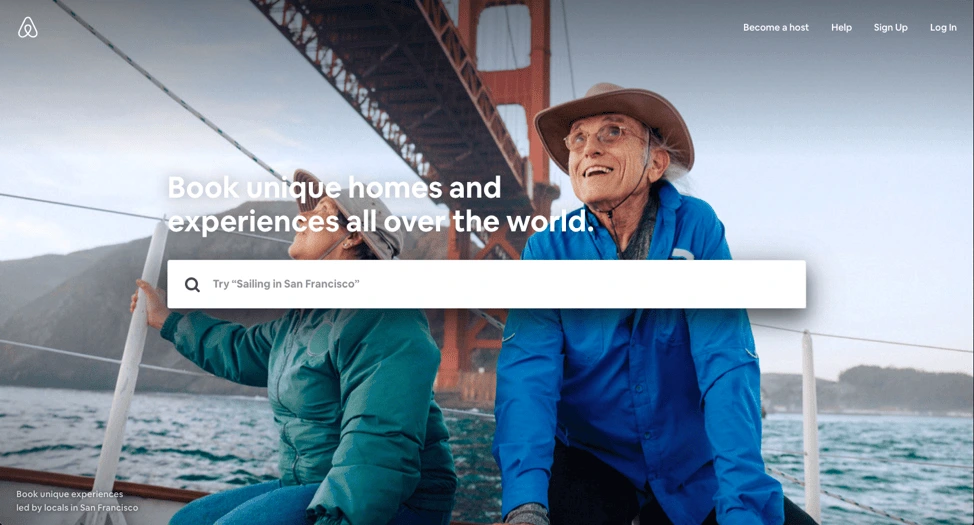
Source: Airbnb
- Do use floating menus
It’s very frustrating for users to have to move all the way to the top or bottom of a page to navigate the site. What many websites have now are floating menus: menus that move along the top or side of the screen as you scroll, making navigation a lot easier.
AMD, a giant in the computer hardware business, uses floating “share” buttons that visitors can use to share the content they find interesting across a variety of social sites like Twitter and Facebook. This helped AMD drive a whopping 3600% increase in social sharing, as more and more people found and shared their pages.
- Do be creative & unique
Still, you do want your brand to stand out from the crowd. Be creative, and use elements that make your site unique without disrupting the flow of information. Whether you experiment with moving images, video, or other design elements, try different things and monitor the results. You might be surprised what works.
10. Test it out
- Don’t forget to take it for a test drive
Once you’re done designing the site, test it to make sure everything is working correctly. Use multiple devices to navigate your website and see if it’s doing what it’s supposed to do. A user’s experience can vary depending on device type, internet browser, and location. Try to recreate different scenarios so you can catch any bugs or performance issues before they do.
- Do think like a CEO
A successful web designer needs to think like a CEO as well as an artist. This will help you view the website with business strategy in mind. Critical evaluation will give you a site that looks good, is user-friendly, and helps the business reach its goals.
Ready to design? Try Lucidpress today to create professional, compelling graphics for your brand’s website.
As you’re building your brand with new ideas and projects, you might not always have access to an in-house designer to assist with all your creative needs. Leaving you, someone with less creative experience, to face the perils of graphic design alone.
Okay, okay, it’s not (usually) that dramatic.
Related: 3 design tips to make your flyers stand out
But to those of us who aren’t used to creating aesthetically pleasing or practical designs, creating a line of marketing labels or flyers can be a daunting task.
These 5 design tips go out to the non-creatives of the world. You, too, can make beautifully branded designs if you start with this advice.
1. Seek & gather inspiration

Source: Etsy shop banner template
One critical element of good design is starting with a strong idea of what you want to create. But without much creative experience, you might be at a loss for where to begin.
Start by visiting some of your favorite brands’ websites or artists’ portfolios and look for designs that stand out to you. Save a few examples that catch your attention (in the creative biz, we call this a “swipe file”). Try to gather different styles to begin learning how to differentiate between them.
Once you’ve gathered a good number of examples, open that folder up and review your selections. Pay special attention to the following aspects of design:
- The color palette
- The fonts used
- The placement of various elements
You’ll begin to see that all design can be broken down into a number of basic elements. As you start to build your own designs, focus on these elements one at a time to create a cohesive finished product.
2. Use negative space correctly

Source: Large promotional banner template
Have you heard of negative space?
Negative space is the area of a design where things are simply left blank or unfilled. Not every inch of the flyer or booklet you’re making needs to be covered with visuals—and in fact, that makes the design look too busy.
Instead, use negative space to your advantage. By leaving certain areas blank, you ensure the eye will be drawn to the most important information.
There are a few easy-to-identify areas where you can intentionally make unique shapes or words within negative space:
- Between letters of the alphabet (like the Fedex logo)
- Within letters of the alphabet (like this logo for Shift)
- Writing a word with negative space on top of an image or logo
- Using a negative space logo on top of a colored section
Using negative space can be tricky but effective. Why? Because our minds search for messages in everything, even in blank space. By using negative space deliberately, you’ll stimulate the viewer’s mind and capture their interest.
3. Limit your fonts

Source: Block party flyer template
When beginners get into design, they’re likely to be amazed and overwhelmed by the sheer number of fonts available. From pre-programmed fonts to free-use fonts that can be found online, there are literally thousands of options… and that can lead to some design disasters.
Beginners and non-creatives have been known to use five, six, or even more fonts within a single project. While it can be fun to choose these fonts, the end result will usually be messy.
Follow these guidelines to keep the fonts clean and classy:
- Limit font types to 2 or 3 typefaces per project.
- Try to choose typefaces within similar font families for smooth transitions.
- Don’t change fonts in the middle of a piece of text.
- Make important information the largest and most eye-catching.
4. Consider your color palette
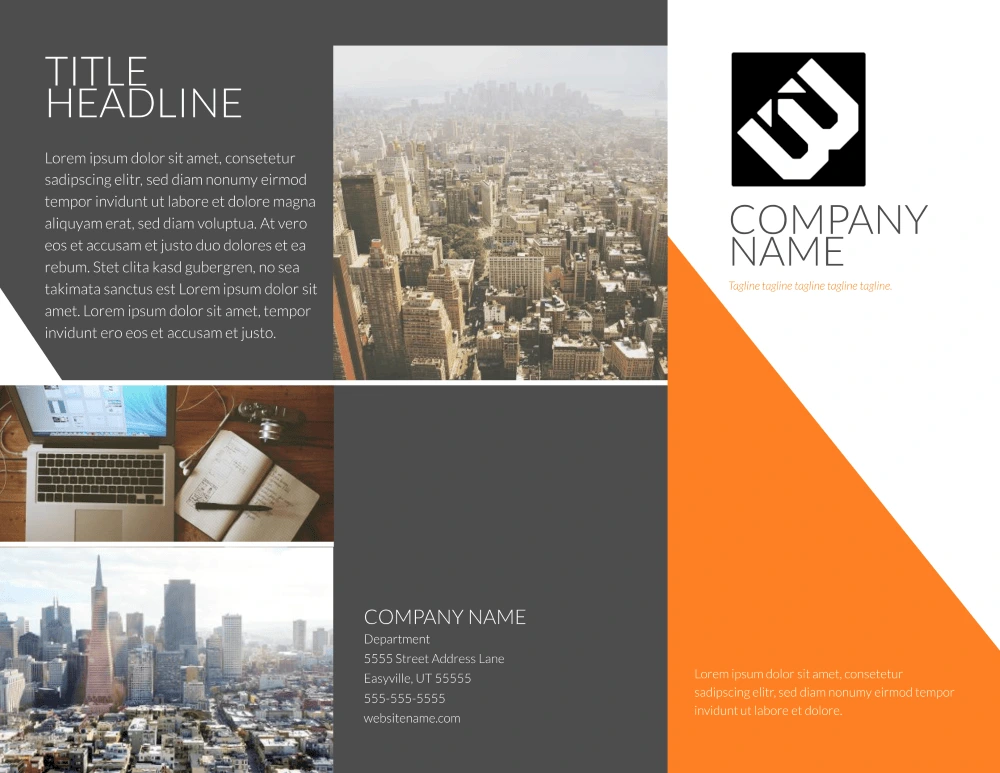
Source: Contempo modern brochure template
Choosing the right color scheme is an essential part of design. Colors have strong psychological effects on the viewer, so you want to be sure that your colors send the right message and match your brand palette.
Think about common color associations that people’s minds make:
- Red: energy, boldness, love, excitement
- Pink: romance, soft, appreciation
- Orange: warm, young, enthusiastic
- Brown: rugged, simple, serious
- Yellow: happy, warm, friendly
- Green: healing, safety, growth
- Blue: dependable, trustworthy, loyal, calm
- Purple: luxury, mystery, sophistication
- Black: elegance, distinction, tradition
Now that you see the reactions different colors can evoke, let’s see how you can inspire those feelings with your color palette.
- Create a mood board of photos that represent your brand’s personality. Once you have a large collection, find six colors that appear regularly in those photos.
- Try out different tones, shades and variations of these colors until you find a balance between them.
- Check out pre-existing color palettes to see if any of them line up with your colors.
There are more concepts that can help you finalize your color palette—such as monochromatic, analogous and complementary—but most non-creatives probably won’t need to get into the weeds quite this much.
Instead, it’s time to move forward with what you’ve already created.
If you’re using a design template, you have access to a range of color options. These pre-selected color palettes are well-balanced and specially created for those designs, so copying them can make your project simpler. You can also choose a color scheme that matches previous in-house designs.
5. Creatively challenged? Don’t worry
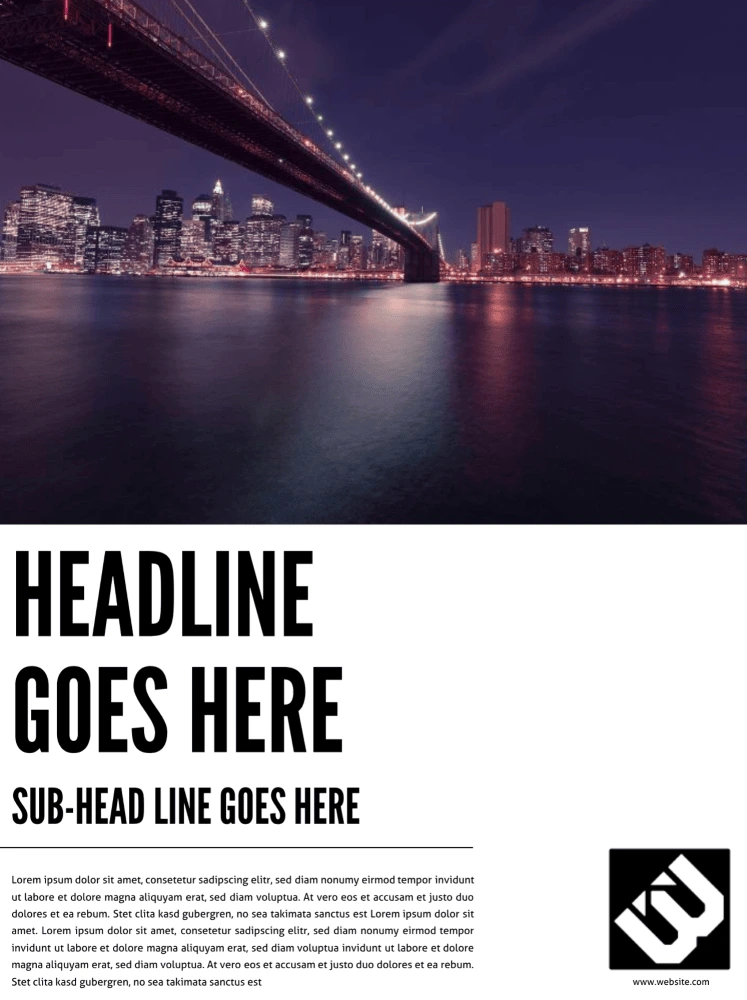
Source: Cosmopolitan business poster template
Even with these design tips, those of us who are creatively challenged may still struggle to create a design we feel confident in.
And that’s okay! There are ways to keep it simple and still create a great design.
Lucidpress offers hundreds of templates for various types of marketing materials, and they already include font selections, color palettes, and all of the design aspects covered above without you having to think about it. Better yet, each of these elements is customizable, so you can quickly and easily adjust templates to match your ideas.
Want to browse our free template gallery? Lucidpress has over 1000 professionally designed templates for business, education, personal projects & more.
Marketing is getting tougher and tougher—there’s no doubting that.
With 41% of brands planning to significantly increase their marketing budgets this year, and customers becoming choosier than ever, you wouldn’t be alone if you’re exploring new techniques to get more out of your marketing cash.
Related: The complete real estate marketing guide
One strategy you should consider is SMS marketing, the process of sending short text messages to your ideal customers in an attempt to engage them with your campaign and get them to convert.
Even though average open rates for SMS messages beat email by a whopping 28%, your real estate company sells homes for a large price—unlike small-ticket items that can be purchased on a lunch break.
So, how can you make text message marketing your biggest driver of website traffic, leads and sales?
Here are the five steps you’ll need to build out your mobile real estate marketing strategy, as well as two brands who are already killing it with their text messages.
1. Determine who you want to contact
Just like any marketing strategy, you’ll need to base your mobile marketing campaign on buyer personas—a clearly defined document that lists details about your ideal customer.
For real estate companies selling student accommodation, that might include:
- People with less than $20,000 to spend
- Between the ages of 18 and 25
- No long-term commitments
- Currently living within 5 miles of the local college
Once you’ve got this to a T, you’re left with a bunch of shared interests. Use this information to find the people you want to target with your text messages.
2. Collect their information
The next step in your real estate text message marketing strategy is to collect the information of the people you’re targeting. You can do this by taking advantage of your other marketing strategies.
For example: why not run a Facebook ad, using the details you defined in your buyer persona, to encourage them to fill in a form? (You might need to offer an incentive to do this, such as a free ebook or a guide to purchasing a new home.)
But once you’ve got their information, don’t push the Send button just yet. You’ll need to have explicit permission from your prospect before sending an email, or you could land a hefty fine—and an unhappy buyer.
3. Choose an SMS marketing platform
While purchasing a new phone to send out your new messages is a great way to get started, it’s wise to invest in an SMS marketing platform from the outset.
That way, you can:
- Track various metrics after you send, including open and response rates
- Send SMS messages in bulk
- Personalize each message you’re sending
- View your strategy online, and share with other staff on your marketing team
Platforms like Text Local, Text Request and Textedly can help with this, just to name a few.
4. Select a text messaging schedule
Gotten to grips with your new software? Awesome! It’s time to make a start on your text messaging schedule.
You’ll want to put some thought into the time of day you’re messaging your potential buyers, and the day of the week they’re being delivered.
Why? Well, because texting your customer at 11pm could frustrate them—they’re likely to be asleep. However, sending an SMS message at 5pm could reach your customer when they’re on their daily commute with time to respond.
Find the perfect schedule by referring back to your buyer personas and filling out a daily routine for them.
Remember: You want to push your messages at times they’re unlikely to be busy—and have time to invest into their search for a new home.
5. Perfect your messages
Before rushing off and sending the first message that comes to your head, take some time to think about what you’re actually sending. You don’t want to send 10 messages only to find a spelling mistake, right?
Use key copywriting principles to make your sales messages as effective as possible, and focus on replicating your ideal customer’s language.
Going back to our example of student accommodation, this example:
“Ready to let your hair down at this years’ Homecoming? Make sure you’ve got somewhere safe to call home. Reply PARTY to find five local student dorms near Stamford from just $200/month.”
…would be much better than:
“With stunning high ceilings and low-interest mortgages, find student accommodation near Stamford to help with your studies. Reply YES to opt-in.”
Why? Because it’s avoiding the overused jargon that would push them away and making your real estate brand feel more relatable.
2 awesome examples of real estate companies using SMS marketing
Ready to make a start on your SMS marketing strategy and see tons of new leads roll in?
Here are two awesome examples of real estate companies nailing their text message marketing strategy to provide inspiration for your own.
1. “Text for more information”
Earlier, we listed collecting your potential buyer’s information as a key part of your SMS marketing strategy.
…But, what if you could collect their information by asking them to hand it over in a way that suits them?
This real estate company used this idea on one of their “for sale” signs, asking potential buyers to text a number for more information on the listing. It’s a fantastic way to personalize the texts you’re sending—and make sure you’re only focusing on people who are actually interested.
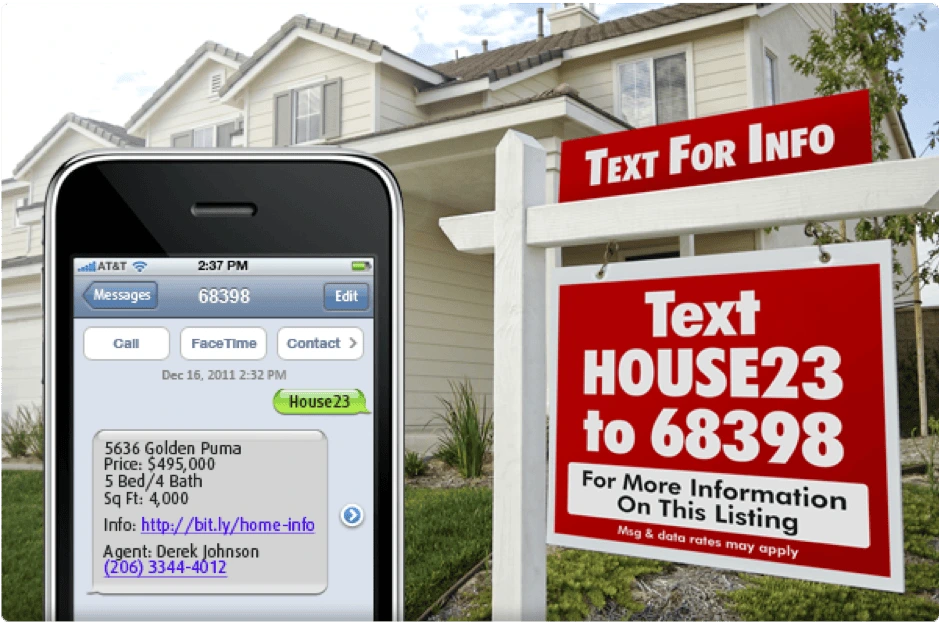
2. Asking for more information
Another fantastic way to engage your potential real estate buyers through text is to ask them for more information, based off the data you’ve already got from them—like this example:
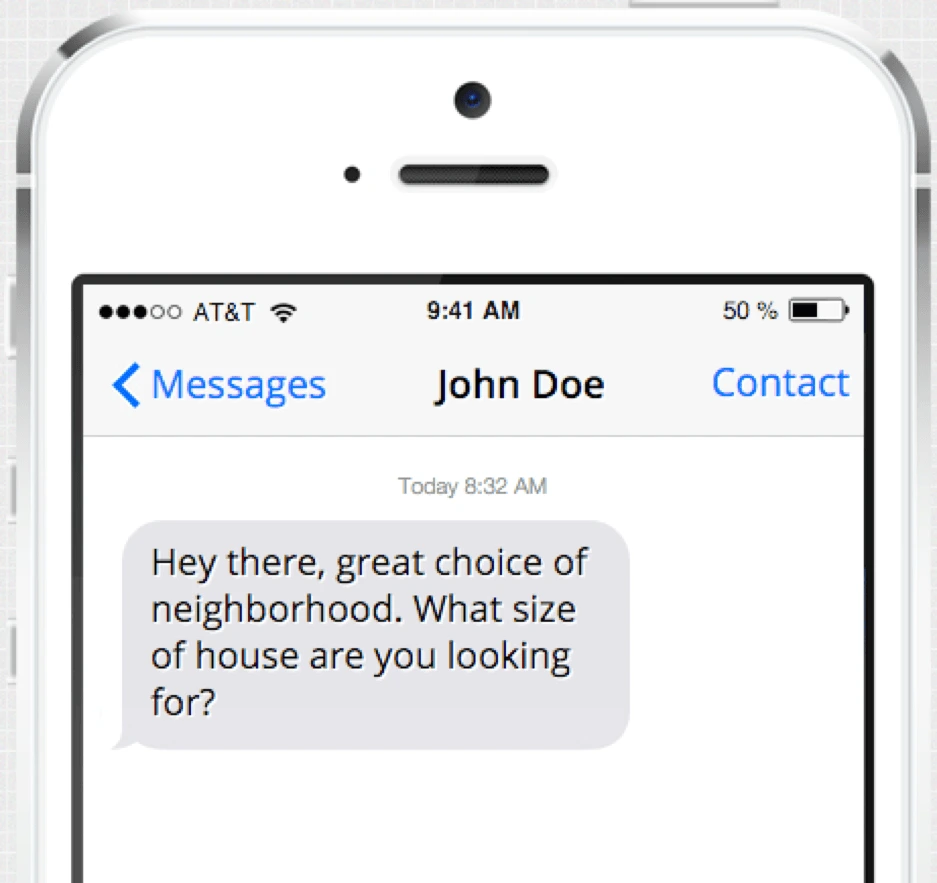
But, why does this work so well?
Well, the prospect doesn’t feel like they’re being contacted by someone out of the blue. They’ve mentioned previous information that’s already been shared (the choice of neighborhood), while asking for more in a way that prompts a response.
Key takeaway
Once you’ve made a dent in SMS marketing for your real estate company, we’re confident you’ll soon see a boost in new inquiries about your properties.
However, don’t forget that it may take some time to see results from your text message marketing strategy. Collecting customer information and perfecting your message can take a while, but don’t give up—you’re almost there.
Your brand matters. Learn how to protect and elevate your real estate brand in this branding essentials guidebook.
You’ve built a great website and have an impressive email database, and you’ve even built a decent following for your brand by following tips you’ve read in real estate marketing guides.
Now you want to know what content you need to keep you at the front of the pack.
Related: Real estate branding—a comprehensive guide
First, while it’s true Google likes fresh content, mediocre fresh content will not help you. Prospective clients look for informative, valuable or entertaining content that prioritizes high-quality visual design.
If you’re searching for ways to do that, here are our tips on how to post great real estate content for your audience.
Why content marketing in real estate?
Content marketing is a valuable tool for building up brand awareness and driving leads. Blog posts optimized to show up in search engines can drive organic traffic to your website saving you from paying for ads and media buys month after month. Building up a presence on social media as a skilled real estate agent can help drive referrals and help potential clients to think of you the next time they are considering buying or selling a home.
Generating real estate content marketing ideas
In content marketing quality is better than quantity. Agents will see a much higher return on investment by focusing on generating content that potential business leads will be interested in. Before sitting down and coming up with a list of ideas, think about what your overall content strategy will be. How will potential business leads find your content? Is there a particular content marketing platform you will use?
Some common channels include:
- Search engine optimization (SEO)
- Social media
- Communities such as Facebook groups
- Content co-creation
By selecting one or two channels to focus on you will be better able to come up with content ideas that will perform well. If you are focusing on SEO, use keyword research tools such as SpyFu, Ahrefs or the Google Ads planner to identify topics people search for that are relevant to your industry. If you’re focusing on social media, communities or co-creation, get to know what members frequently discuss and brainstorm content you can create that will be relevant and useful to that audience.
Hire a good writer
We’ve all been drawn to some click-baity content at some point, often because we’re drawn in by an enticing headline.
By now, however, most of us realize that anything that claims to be jaw-dropping (like “You won’t believe what happened to this third grader when he opened his lunch”) isn’t actually worth clicking. Your real estate clients want content with more substance—information that relates directly to the industry—and to get that, you need to find a good copywriter.
You might already have a talented writer on staff who knows how to write good articles about rent rates, homeownership and mortgage financing. Otherwise, you can reach out to a PR firm or real estate marketing agency that specializes in content.
What should you publish?
Whether you’re marketing an apartment unit in Chicago, Illinois, or a New York City micro-apartment, the place to start is with website copy, blogs and newsletters.
If your website has been around for a few years, make sure it’s up-to-date and that the copy is fresh.
Publish a blog post at least once a week, and make it better than all the regurgitated content out there. Newsletters can help you spread the word, and there are still many real estate pros who send newsletters by snail mail.
For a look at a few shining examples in the real estate industry, check out this list of the top real estate blogs.
Once you’ve mastered the basics, remember content marketing is more than just blogging. Visual content such as infographics, photos and videos perform well on social media and can better communicate ideas that are difficult to describe.
Repurposing a blog post into an infographic or video is also a great way to spruce up your email marketing and send engaging content to readers who don’t have time to read an entire blog post.
Long-form content such as ebooks or webinars are also effective lead generation tools. Provide a guide to buying your first home or investing in a rental property and ask for a name and email to access it. Then place your new contacts in an email campaign and nurture those leads into your next client.
What should you say?
Your website should clearly and cleverly explain who you are and what you do. Blogs can cover a variety of subjects that your clients are interested in, like:
- Saving energy
- Lawn care tips
- Home winterization
- Interest rate trends
- Financing pitfalls
Your newsletters should be more specific, covering:
- New listings
- Market trends
- Financing trends
- Economic projections
- Recent sales
Each month, you can highlight a relevant, timely subject like:
- Summer pest control
- Preventative HVAC maintenance
- Cleaning out the gutters
- Lawnmower winterization
Remember: You’re the expert
A client who’s trusting a real estate agent to sell their home or purchase a new one will feel far more comfortable if you can show you know the neighborhood inside and out.
That’s why your content should cover local interests like reviews of new restaurants, lists of local daycare centers, and articles about any subject that make it clear you thoroughly understand the community.
Expert guides are a great way to establish credibility. Try researching and writing about things like:
- How to finance your first home
- Cleaning up your credit score
- What to do after your offer has been accepted
- Avoiding the bad-faith offer
- How to market your first property
- Marketing tools you must use as a real estate agent
Key takeaway: Content rules
It’s a digital world, and content is king.
While there’s still plenty of room for traditional marketing, most of your content will be published online. Make sure it’s timely, well-written, and of course, original.
Most of all, your content should be engaging and informative. If you can provide value to your readers, they’ll remember you any time they need your services, because you’ve already established yourself as a professional who they can trust.
Learn more about building a strong brand with this free guide to real estate branding.
Like every other industry, real estate has experienced rapid change due to new technologies. Perhaps the area that’s felt the most impact is marketing. It’s imperative to keep up with how it’s evolving to stay ahead.
Although direct advertising methods are still popular in real estate marketing, they’re not the only way to help consumers change their minds. That’s where influencer marketing comes in.
Related: How to boost your brand identity with influencer marketing
Word-of-mouth is no longer limited to meeting people in person; it’s expanded to include social media, too. Influencer marketing in real estate aims to draw in potential clients with content they’ll find engaging and valuable. Here are five influencer marketing strategies your brand can try.
Don’t underestimate the power of Facebook
Facebook offers ample opportunities for influencer marketers to connect with audiences organically. For example, you have personal pages, business pages & groups, all of which can provide multiple touchpoints.
There are various content options, such as photos, blog articles and videos, through which you can engage potential clients. Facebook posts that get the most likes are creative, genuine and have your brand’s personality written all over them.
In addition, Facebook is proven to be a brilliant tool to expand your database and sphere of influence. Personal interactions, even a simple birthday wish, are a great way to reconnect with clients and remind them you’re available.
Work with a combination of influencers
Many brands make the mistake of pairing up with the wrong influencers. Not every influencer will work for you, so it’s best to realize this early on. Influencers can usually be divided into three categories: mega-influencers (celebrities), macro-influencers (well-known), and micro-influencers (niche).
To determine which influencer would be right for you, you need to define your target audience. Are you looking to attract families and professionals? Perhaps millennials? People tend to follow influencers that represent the lifestyle they hope to achieve.
Many real estate brands choose a variety of influencers to maximize their reach on different platforms. The best influencer would be the one who’s most relevant to your campaign and can reach the most significant potential audience.
Be creative with video marketing
Video marketing, today, is a force to reckon with. Video marketing stats show 84% of consumers choose to buy something after watching a video and, by 2020, 82% of all consumer web traffic will be video. Compared to content that’s text-based, video has proven to be very effective and is perhaps the biggest trend for content marketing this year.
What does it mean for real estate brands? Well, it means more creativity. Audiences aren’t interested in the same old content anymore and are looking for something that’s authentic and hits home. Videos seem genuine, are fun, and add a degree of reality to the business.
A brilliant example of video marketing is Bedrock Real Estate’s “Anthem of Us” to encourage purchases in the Detroit area. The award-winning video starts off with a voiceover by rapper Big Sean (a native of Detroit) and highlights its culture and, most importantly, its people.
The video employs the use of a mega-influencer and multiple micro-influencers, a combination that hits the bullseye. Big Sean’s voiceover would be not worth sharing if it weren’t for the local people & businesses whose promotion led to the video going viral. The micro-influencers played a massive role in the campaign gaining ground locally, so if you’re aiming for a regional campaign, then local influencers might be more effective than international ones.
Related: Real estate video marketing — The ultimate content marketing tool
Build long-term relationships
With the growth of influencer marketing, the demand for influencers is at an all-time high. The number of brands getting in on the game has led to a rise in cost. In the past, brands could get away with free products as a form of compensation—not anymore.
Today, brands have to invest more time and effort in working with influencers. Once you’ve built a healthy relationship, you can ask them to promote your content. Perhaps the best way to get a referral is to make your influencer a client and have them share their own positive experience with their followers. There’s nothing more impactful than a genuine review.
Invest in Instagram
Last year, Instagram ranked as the best platform for influencer marketing campaigns. There are over 800 million users using the app every month, and that number is still rising.
Influencer marketing is likely to cross $2 billion by 2019, and Instagram is the best platform to use for brands and influencers alike. Its visual nature inspires you to get creative with your content and grab the attention of your target audience.
The best content on Instagram doesn’t just flaunt your product; it flaunts your personality. Don’t just post pictures of luxurious houses—post pictures of what makes it a home, too. How about a dog in the backyard? Or people enjoying food at the open house?
Influencer event marketing, in particular, is gaining momentum and is something you should start thinking about. Host an event and invite people with large followings to attend. The influencers are then responsible for creating engaging content that will drive awareness for your brand.

Source: Instagram
For instance, look at the photo above. Isn’t it gorgeous and fun? Would you believe me if I told you it’s from an open house in Los Angeles and the woman in the photo is an influencer?
The open house was set up in the most Instagram-worthy fashion and encouraged social media sharing. These real estate professionals understood the importance of making open houses seem less like what they are and more like a fun, eye-catching event that’s worth telling your friends about.
Key takeaway
Influencer marketing can boost your brand awareness efforts and be a valuable addition to your content marketing arsenal. The right influencer and the right platform are bound to set you on the road to success.
One of the biggest challenges realtors face in today’s market is the planning and implementation of an effective real estate listing marketing plan.
The opportunities and expectations have changed and grown exponentially over the past decade or so, and with so many avenues and moving parts, it’s not easy to nail down a real estate marketing plan and stick to it.
Related: How to build a social media campaign for real estate (with templates)
The benefits of getting it right, however, can be huge, so it’s a challenge that every determined broker or agent needs to overcome.
Components of an effective real estate listing marketing plan
First, as a small or medium-sized real estate agency, you need a listing marketing plan that’s high-impact.
Why? Because you need every dollar to count. You don’t have the budget for this to be solely about brand identity—you need to move real estate listings consistently.
By building an intentional and strategic marketing plan, you’ll increase your chances of getting that tenfold. So, where do you start?
The important thing to understand is that every element that makes up your real estate marketing ecosystem should be connected, usually in more ways than one. That’s how you move your audience through the sales funnel.
To achieve that, you’ll need to start with an overview: a top-level view of how each aspect of your plan links together. A simple diagram will do the trick here, so long as it gives you a clear view of how everything is connected.
Start by creating a goal and measurable objectives for your marketing plan. Think of your goal as your overall vision for the plan. For example, a listing goal could be selling a listing at above market value. Measurable objectives could include having a certain number of attendees at an open house or a certain number of emails or phone calls from a direct mail campaign.
Once you’re goals are in place, it’s easy to identify which marketing strategies and tactics you should focus on in your plan. In your diagram, start with your goals up top. Then link to your objectives and list each strategy under that.
Once you have that, you can begin to look at each element individually to ensure you’re maximizing its effect. More on that shortly.
First, a reminder that this isn’t about throwing out the feelers to see what sticks, only to try the same thing again next year because you’re not sure what really worked.
For everything you do, you’ll need to follow these three critical steps:
- Measure
- Analyze
- Refine
If you’re serious about making this work, you must implement processes for measuring your efforts. Then, once you’ve got the data, sit down with all key decision makers to analyze what’s working. From there, you’ll be able to refine your plan and make improvements for the next phase.
Creative marketing ideas for your listings
Now, let’s look at some of those individual elements of the real estate marketing plan in more detail. And remember, in everything you do, look for ways to connect your activities and move your leads through the sales process.
Door-knock in the local area
To get ahead of the game before your listing gets published, why not canvas the surrounding properties?
Your sellers’ neighbors might know someone who’s looking to move into the area. They may even be interested themselves.
Briefly describe the house or property, or show a flyer if you already have one, then open up a conversation about any potential interest.
Don’t forget to leave them a card in case an idea comes to mind later, and be sure that this card connects them with other elements of your marketing.
Post a “coming soon” photo online
Another way to get a head start with marketing listings is to preview the property online or on social media before the full feature goes out.
Take an appealing, well-lit photo showing off one of the property’s best aspects or features. Post it with a caption that drives curiosity and engagement.
To ensure this element fits within your strategically connected marketing plan, you’ll need to think carefully about when and where you’ll release further information. How will you make sure any early interest is followed up on? Perhaps you could ask your audience to subscribe to a mailing list to be the first to find out more.
Hire a professional photographer
An absolute must, if you want to compete in today’s real estate market, is quality photos. With so much competition for consumers’ time, especially online, publishing quality images is a good tactic for capturing attention.
Invest in professional shots that show your listing in its best light and you’ll stand a far better chance of attracting buyers.
Use as many photos as possible
Similarly, your listings will carry more appeal if you include at least 12 photos. In fact, the more the better. Don’t be afraid to use upwards of 20 or even 30 if you can.
Try to show each room from different angles, as well as the exterior from various viewpoints. You could even include photos of the views from the front and back of the property, as well as capturing the outside spaces.
Do everything you can to help potential buyers visualize themselves in the property.
Use video
Reports from the National Association of Realtors show that 85% of buyers and sellers prefer to work with an agent who offers video, yet only 15% of agents use video when marketing listings.
Get ahead of the curve and take your listings to the next level with video tours and 360-degree images or clips. Not only will this help you stand out and attract more interest online, it’ll help potential buyers feel more familiar with the listing from the start.
Related: How to create stellar videos for real estate listings
Be descriptive and emotive
Take the guesswork out of it and help buyers connect with the property by including detailed, descriptive summaries of your listings.
Look for opportunities to add character and memorable details. Use language that evokes positive memories and emotions.
Most of all, remember that good advertising copy doesn’t just list the features, it sells the benefits. Paint a picture of how good life or business could be for your potential buyer and you’ll be helping them form an emotional connection.
Produce quality marketing materials
Though it might seem like it sometimes, it’s not just the online channels that matter. Direct marketing (that’s flyers, brochures, letters or postcards sent to mailboxes or posted through doors) still has its place. In fact, it can even yield higher results.
But, like with any investment you’ll make in marketing collateral, it’s only worth adding it to your real estate marketing plan if you’re going to do it well.
Choose high-quality paper, use professional photos, and keep your branding consistent across all channels and materials. When it comes to adding a call-to-action, think carefully about what you want the reader to do next. Should they visit the website or call you directly? How will you move them through the sales process?
Related: How to follow up your direct mail campaigns
Feature the listing in your newsletter
When it’s maximum exposure you’re looking for (which is most of the time when you’re marketing listings), you’ll need to take advantage of every channel you have.
Your agency’s newsletter, if it’s been managed well, should be a direct line to your most engaged audience, meaning there are potential buyers on that mailing list waiting to hear from you.
Take advantage by featuring your listing in the next edition and be sure to let all recipients know where they can go to find out more. Remember—a connected marketing strategy is what you’re aiming for here.
Related: 8 tips to get more responses to your email marketing
Send the listing to other agents
Make use of your network to enhance the success of your listing marketing by sending out an email to introduce the property.
Ask your contacts if they have any buyers who might be interested and offer them the same support in return.
It’s through building relationships and partnerships like this that some agents are able to maintain a consistent income.
What if it still doesn’t sell?
When you’ve completed every strategy in your marketing plan and a listing still isn’t selling?
While the seller might expect you to spend more on advertising, you know deep down that it’s the price that needs to change.
Remember this phrase and use it to help explain your position to your clients: “If it’s not compelling, it’s not selling.”
There are typically three types of listings that can be compelling at a higher-than-average market price. These listings are opportunity properties, exclusive properties, and turnkey properties with no competition.
For everything else, the price matters, and if it’s not compelling, it’s not selling.
To soften the blow of a drop in price, make an effort to understand your seller’s point of view. Often their ideas will be based on what they’re hearing in the national media, which you know doesn’t always translate locally.
Break down the data for your clients by showing them the statistics in four different subsections:
- National
- State
- City
- Community
Once they see the difference laid out in front of them, they’ll find it easier to accept your push for a more compelling price.
Once they’re convinced, you can make it compelling, create excitement and then—potentially—you’ll have a bidding war on your hands.
Key takeaway
The key to building an effective real estate marketing plan is to connect the many elements and moving parts. If you can do that well and use those connections to guide potential clients towards your end goal, you’ll see consistent results and a strong ROI.
Want more great tips on how to set up real estate marketing campaigns? Check out our comprehensive real estate marketing guide for ideas & inspiration.
In some ways, starting a magazine today is easier than ever. But in others, it can be more difficult. All of this is due to the internet. The web puts free information at everyone’s fingertips, instantly available through mobile devices, which has transformed the magazine industry. It also gives every person online the opportunity to create high quality content and express themselves to a wide audience.
Related: 5 ways to monetize your online magazine
In this beginner’s guide, we will discuss how to start a magazine online. The guide is broken into three stages, outlining the work that happens before, during and after production. The first stage is brainstorming, followed by creation and collaboration, and finally, distribution. There’s a lot to cover (no pun intended), so let’s dive in.
Ready to start producing your magazine? Dive in right here with Lucidpress’s free online magazine maker.
Before production: Brainstorming
1. Develop your business plan
Before writing a single word for your magazine, sit down to develop a business plan. This includes your mission (the reason why your magazine should exist), your goals, and how to attain them.
Important questions to consider in your plan:
- What is the concept or focus of your magazine? This should be brief and concise, like an elevator pitch. For example, take a look at this copy from TIME magazine’s “About” page:
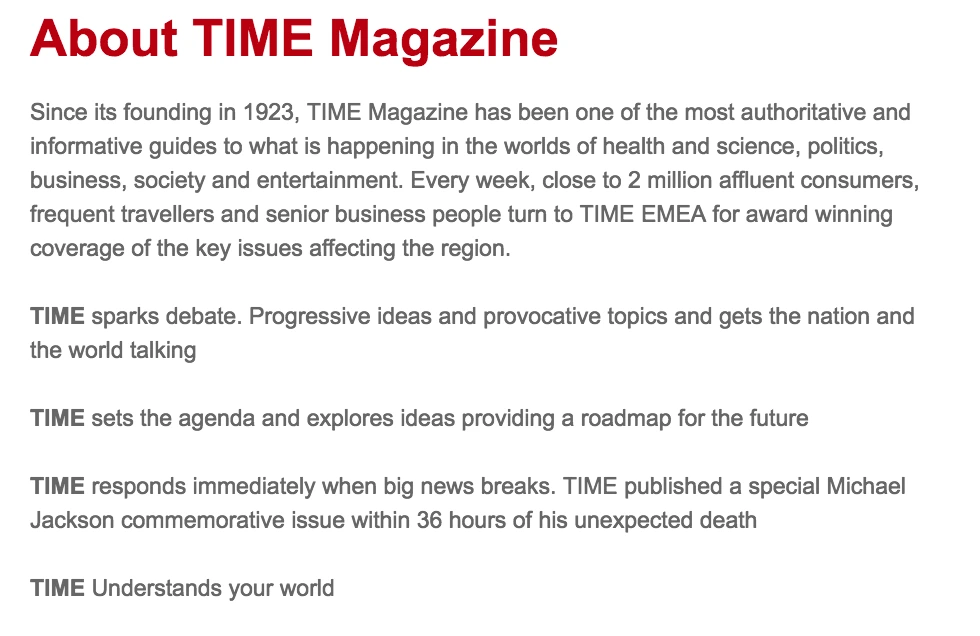
- Which topics will you cover, and in what depth? Consider your tone & voice—there is a big difference between The New Yorker and OK! Magazine, and you should be consistent.
- Who is the primary audience? Remember, your magazine should speak to others, not just yourself. It’s also important that your audience has a “continuing need” for your content, so they’ll want to subscribe and read more. Think about your audience’s lifestyle, and cater to the issues and ideas they care about.
- How will the first issue be funded? Many magazines earn profit by selling advertising, but it can be hard to attract advertisers at first. Some suggest using personal capital to fund the first issue—raised by saving money, seeking investments, or leveraging the power of crowdfunding.
2. Research the landscape
There are lots of magazines out there already, both digital and in print. Now is the time for you to spend some time at the newsstand (or in your reading app of choice) to evaluate the competition. This will give you a better idea of what’s already being covered and how you can differentiate your publication. It can also reveal gaps and opportunities that are currently not being met in the market, which you can use to your advantage as you develop your magazine concept.
3. Build your team
A magazine is a heady endeavor, one that you shouldn’t undertake alone. Build your team and divide your workload in order to prevent burnout and deliver faster, better results. Your magazine will be stronger for it. Here are a few staff roles you might want to consider.
- Writers — Magazines are driven by great content, so of course you’ll need great writers to make it work. Maybe you keep it in-house with a few trusted authors, or maybe you reach out to freelancers to submit pitches. Either way, be clear with writers about your editorial expectations and whether you’re offering any compensation for their work.
- Editor — At the end of the line, there should be one pair of eyes to give each piece of content the final yay or nay. The head editor ensures consistency and quality by reinforcing your editorial standards. This includes tone of voice, grammar, mechanics, and even the reach and scope of each article. When you have a strong editor at the helm, the finished magazine will be polished and cohesive.
- Sales manager — If your magazine will feature advertisements, a sales manager is indispensable. This person will serve as the point-of-contact for advertisers who will pay for space in your magazine. Having one person available to address their questions and concerns will help you build a better relationship with them, which in turn will lead to higher, more sustainable profits.
- Marketing manager — Your magazine needs advertising, too! A marketing manager will work to get attention for your magazine, making sure it’s present in all the right places. For example…If you’re launching a magazine in print, you’ll need distributors in bookstores, newsstands, and other public places. If you’re launching online, there are many channels for you to explore, from search engine ads to social media. Part of this person’s responsibilities will be deciding which distributors and channels are best for your magazine, and then creating materials (press kits, promotional content, etc.) to support them.
- Publication manager — Here is someone who gets down to the nitty-gritty of publication. This person will help you choose a printing partner who meets your needs, both in terms of quality and budget. What will the paper cost? How do the colors look? Are there any errors in the finished product? A publication manager will focus on these seemingly minor details that, in reality, make a huge difference.
- Partnerships / groups — These are helpful connections who aren’t necessarily part of your team, but can steer you in the right direction. Partnering with relevant brands can bring more exposure to your magazine, as they share their audience with you. Certain groups made up of local or indie magazines exist to share advice and opportunities with one another, harnessing power in numbers. Take a look around in your community and introduce yourself.
During production: Creation & collaboration
Now it’s time to start creating content and collaborating with your team. This can be a very hectic time, but it’s where the magic happens. If you’re inspired to publish your own magazine, you’re likely familiar with the following steps—but let’s review them anyway.
4. Writing
Finally, time to create articles for your magazine. Depending on its concept, this might mean a few different things: fiction or non-fiction, short stories, journalistic articles, how-to guides, reviews, or even a blend of all of the above. This step encompasses the writing process, from conception to pitch, and from researching to drafting.
5. Editing
It’s not uncommon for articles to undergo more than one round of revisions. Far more than just catching style and grammar mistakes, editing will help the writer focus and elevate their writing. Editors can help with fact-checking as well. Together, writers and editors cooperate to make an article the best it can be.
6. Proofreading
After an article has been written and edited, careful proofreading is required to ensure quality and accuracy. Any typos or errors that made their way through the writing process will be squashed here. Unlike editing, proofreading is not an evaluation of the article’s style, tone, organization or effectiveness. The focus is solely on finding and eliminating errors, so the finished product reads professionally. The person who proofreads might very well be the editor too, but these are still two separate stages of production.
7. Graphic design
The way we enjoy magazines is different from how we consume a book or a newspaper. Although each of these publications provides information, magazines in particular are known for being visual. From elegantly gorgeous to colorfully flashy, magazine design runs the gamut. Your graphic designer is just as responsible for your magazine’s tone and feel as your writers are—if not more so. It’s important for your graphics to match your words. Remember, magazines are less about the information and more about the lifestyle. Browse these magazine design templates for some inspiration.
8. Photography
Stock photos are okay here and there, but they’re no substitute for custom photography. Rather than searching for pictures to match your vision (and often, settling for less), a photographer can work with you to capture the pictures you really want. Color, lighting, subject, quality… All of these photo elements contribute to the reader’s perception of your brand. After all, that’s why they say a picture is worth a thousand words. (Or, at least, it’s why we say it.)
9. Make a prototype
Just like with any product, you can’t mass produce until you have a definitive, finalized version. All of the content, words and images are firmly locked into place with no errors or further changes. Holding your first finished prototype (whether in your hand or on a tablet) is a proud moment. Savor it! You’ve put in a lot of work to get here, and there’s still work to be done. You are now ready to start sharing your magazine with the world.
10. Digitize
You probably created your magazine using computer design software, but that doesn’t mean your file is ready to distribute. Different publishers and reading apps have their own standards in terms of file type, size, quality and so on. Make sure you’ve researched and complied with those standards in order to prevent delays.
After production: Distribution
11. Find a printer
Your printing partner is a critical ally on your way to distribution. If you’re only hosting your magazine online, well, you’re off the hook on this one. But if you intend to share hard copies of your magazine locally, regionally, or even nationally… you need a printer you can trust to deliver satisfactory results every time. Do your research, ask around, and interview printing partners until you feel confident that your pick is a good match.
12. Establish your online presence
Perhaps more than any other step, this is paramount to launching a successful online magazine. Your online presence can take many forms, from a website to a blog to social media channels, and maybe even all of the above. What’s important here is building a community of people hungry for your content. People who share the lifestyle and values of your magazine, so they’ll appreciate its message. Find out where those people are online, and make sure they can find you.
13. Decide whether to paywall
This is a tricky question in today’s publishing world. If you paywall all of your content, it might be hard to attract new readers. But, you can’t give it all away for free, either. Striking the right balance between paid and free content might look different for every publication, so experiment to see what works for you. A good place to start is sharing free content and article excerpts on your blog but charging a flat price or subscription for each magazine issue.
14. Build a community around content
Your readers can (and should be) be your best brand advocates. When you foster a strong community on your blog, forum, or social media pages, it gives readers a shared sense of belonging. Discussions are far more interesting when readers get involved, and they can provide you with inspiration and direction. Think about how you can use various types of content to delight your audience. Beyond the pages of your magazine, there are many opportunities. For example, you could start a branded YouTube channel to share vlogs and other video content.
15. Congratulations!
After months of work, you have started an online magazine, and you’re on the track to sustainable growth and success. Once you get to this point, there’s only one thing to do… Get started on the next issue.
Ready to begin?
Want to start your own magazine online? Lucidpress will streamline the design process for your whole team. With our intuitive drag-and-drop interface, you can select from gorgeous templates and customize with fonts, colors, shapes, images and more. Invite others to collaborate in real time, and when you’re done, export in a variety of print-ready formats.
Inspired to create your own digital magazine? These free magazine templates are a great starting point.
Marketers are getting inventive with their opt-in freebies, offering software, interactive quizzes, and entire video trainings in a bid to grow their email lists and generate interest for their products or services.
But in spite of all these creative possibilities, there’s still one type of lead magnet that hasn’t lost its rustic charm: the PDF download.
Related: Save time with these 5 amazing eBook templates for content marketers
It’s easy to see why. PDF content, such as ebooks & white papers, is cost-effective, easy to produce, and—believe it or not—still converts.
Did you think PDF downloads were dead?
Overthink Group did a study of HubSpot’s most popular lead magnet types in 2017, and eight of the top ten included PDF-type content—whether ebooks, how-to guides, slide presentations or templates.

Aside from ebooks, here are a few other PDF content types that are as popular as ever:
- Cheat sheets
- Checklists
- Case studies
- Industry reports
- Expert interviews
- Resource lists
All of these formats are easy to digest, offering new subscribers the instant gratification they seek. As a bonus, they’re less expensive and time-consuming to produce than a full-blown video course.
Today, on-brand lead magnets are easier to create than ever. With a desktop publishing tool like Lucidpress, you can start with an existing template or create your own using the drag-and-drop editor.
After you’ve created your lead magnet and a landing page to host it, it’s time to get some eyeballs on it. Here are nine ways to do just that.
Tell your audience about your latest free offer
Lead magnets make handy tools for building an email list, but they can also be shared with your existing audience to generate more buzz or segment email subscribers based on their interests. Incorporate your ebook into your full content strategy.
Your existing audience includes your clients or customers, social media followers, and current subscriber base. Ask them to check out your latest resource and to consider sharing it if they find it useful.
Don’t forget to link to your lead magnet in the following places:
- Social profiles
- Pinned tweets on Twitter
- Pinned Page posts on Facebook
- Facebook Page CTA button
- Gravatar profile
- Forum signatures
Feature it throughout your website
Your website can be your best promotional tool. By strategically placing opt-in forms and links to your free offer throughout your site, you can control which type of visitor sees your offer and when.
If you want to get a bit more creative, here are a few more ways you can showcase your lead magnet on your site:
- Link to your landing page from your website’s main navigation (e.g. “Free Stuff”).
- Create an attention-grabbing sidebar graphic and link it to your landing page.
- Announce your lead magnet using a floating notification bar.
- Experiment with slide-ins, welcome gates and lightbox popups.
Certain types of opt-in forms, such as those that obscure the content, can be frustrating for mobile users, so consider displaying a different type of form depending on the device a visitor is using.
Link to it in your email signature
How many emails do you send in a day—or a week?
Your email signature is prime real estate for promoting your latest offer.
Create a professional and eye-catching signature with a link to your landing page and a bit of text enticing your email recipients to click. Using a free email signature generator like WiseStamp, you can easily add a CTA to your sig:

Promote it via your blog
Indirect promotion of your lead magnet via your blog can be a more effective long-term strategy than repetitively plugging your free offer.
The bottom of every post is a logical place to include a call-to-action. For example, you might add a post-footer opt-in form or invite readers to visit your landing page.
You can also link to your freebie within the body of your posts when it makes sense contextually. Use an attention-grabbing callout box or try the subtle (but highly effective) two-step opt-in form, which doesn’t display a form until the user clicks on the link.
Whenever you publish a new post, notify your audience via social media and your email newsletter. You can expand your post’s reach with some additional promotion techniques:
- Share your posts in relevant online communities.
- Answer questions related to your industry on Quora, and include a link back to your article for people who want to learn more.
- Reach out to the other websites linked to in your posts.
- Comment on popular blog posts in your industry, and include a link back to your post when it makes sense to do so.
Link to it in your guest author bio
Guest posting is still one of the best ways to reach new audiences and generate powerful backlinks to your content. In exchange for a well-written article, many websites will let you include a call-to-action and a link to a landing page of your choice.
To help you narrow down which blogs are worth writing for, use free tools like SimilarWeb and Alexa to get estimations of a domain’s traffic, and the MozBar Chrome extension to compare the domain authority of guest post prospects.

If you plan to do a lot of guest posting, it’s worth investing in a keyword research tool to help you choose article topics that 1) are relevant, 2) people are searching for, and 3) the host website has a good shot at ranking for. This will boost the visibility of your guest articles and the quality of referral traffic to your landing page.
Share it in relevant online communities
There’s a group for every professional subject.
Online communities—Facebook and LinkedIn groups, Google+ communities, subreddits, public Slack channels, etc.—offer a place to get support from experts, develop business relationships, and share your latest work.
Instead of trying to be everywhere at once, you can get more mileage by choosing a small handful of high-quality groups and being active in them. Get to know the group culture and participate in the discussion before attempting to drop any links.
In many groups, self-promotion or links are not allowed, although some group admins have a weekly “show-and-tell” day as an exception to this rule.
If group admins seem strict about self-promotion, don’t automatically write it off as a bad group. Often, heavily moderated groups are higher quality—and they tend to relax the rules for members who regularly contribute to the community.
Drive traffic to it with Facebook ads
With Facebook ads, you can generate sign-ups right on Facebook or drive traffic to a page on your website, like Marketo is doing with this ad:

If you’re curious to know the average CPC, CTR and conversion rates for your industry so you can see how your Facebook campaigns stack up, check out this study by WordStream.
Repurpose it
Repackaging your lead magnet into other formats and distributing it across multiple platforms is an economical way to generate more interest and exposure.
For instance, you could share pointers from your ebook in the form of YouTube videos, SlideShares, Medium articles or social media graphics, with a link to the download page.
PDF content can also be repurposed into offline marketing collateral—such as brochures, booklets, newsletters and flyers—and distributed to prospects at networking events and trade shows. (Not to brag here, but Lucidpress can help you transform your digital creations into on-brand print collateral and even send them via direct mail.)
Once you’ve created your first lead magnet and begun to collect subscribers, try creating a few new offers and see what resonates best with your audience. By targeting your lead magnets to specific blog posts or types of website visitors, you can continue to grow conversions while offering individual prospects and customers the best possible experience.
Ready to wow your marketing leads with beautifully designed eBooks? Lucidpress will help your brand send the right message.
It’s something you’ve been told to do for years, as far back as your high school English classes: Define your voice. Voice is sometimes talked about as some ineffable je ne sais quoi. It’s something that’s felt more than defined.
But in reality, voice—the elements of personality that make a brand or person so distinctly themselves—can and should be defined. In fact, according to the Nielsen Norman Group, voice can have a huge impact on how much consumers trust or care about a brand. And that matters, because customers are far more likely to spend money with a reliable brand than an unreliable one.
What is brand voice?
Brand voice specifically refers to the content your business publishes online, in print, and anywhere else, and is a critical component of overall brand management. It’s made up of the words you use and how you choose to use them—in other words, it’s the voice with which your business speaks.
Not sure what your brand’s personality is or should be? Here are five tips to help you define and sustain your brand’s voice.
1. Spend time putting words to your brand voice
While this step might look simple on the surface, it’s something a lot of companies overlook. If you want your brand’s voice to be consistent and scalable for growth, you have to clearly document it within your brand strategy.
Begin with a voice tool as a starting point, or simply play through a few improv-style scenarios, feeling out how you and other stakeholders would expect the brand to respond in a given situation. As you launch new products, would your brand message contain more excitement or confidence? When customers write in for support, is it more important for your staff to be appeasing or authoritative? Which main values or interests do you want your messaging to regularly drive home?
Carefully document the responses, then identify any patterns or trends. Narrow down your list to a core set of descriptors (between three and five). From there, you can construct statements highlighting what your brand identity is and isn’t. By establishing and documenting the foundation of your company’s voice, you have a point of reference for any future communication or branding.
MailChimp’s voice and tone guidelines are a great point of reference for how to do this. The description is fairly brief, but each word gets a lot of work done.
2. Create consistency in every bit of content and copy
A truly effective voice requires consistency across all messaging. No piece of copy, content or communication should stray from that core persona, or you risk hurting how consistent your brand is perceived. And given that consistency can provide a 23% revenue increase over brands that lack it, inconsistency is one mistake you really can’t afford to make.
Take Cards Against Humanity. Every piece of writing in its games and on its website bursts with snarky sarcasm. The company has even set up training to ensure that support staff can meet customer needs without losing the signature sass that has come to define the brand’s voice.
If you want to follow this model, share the brand guidelines you established in the point above so all staff members know what is and isn’t allowed. Set up QA processes to make sure that everything aligns, from your social voice to your customer support voice. Specific tone can differ to suit different situations, but the central voice that defines your brand should remain constant across all communications and posts.
3. Raise your brand’s voice through proper channels
Everyone has that one extended relative—a grandma or a great aunt—who uses Facebook in a way that’s just a little bit off. And that’s exactly what you want to avoid. Because in a lot of ways, where you share your message matters almost as much as what you’re sharing. The platforms you use can influence not only how your brand’s voice is perceived, but also how effectively you build brand awareness with the right audience.
The reason for this is twofold: First, it makes good financial sense to put brand resources and time where they will have the most impact. Second, and maybe more importantly, the platforms you use can impact how your brand’s voice is perceived. A teen-focused brand posting primarily on LinkedIn will confuse a lot of people; the platform lends itself to more formal business voices. Forcing a casual, slangy brand into that mold could be a recipe for failure.
Influencer marketing and advertising deserve attention here, too. If your strategy involves partnering with influencers or celebrities to sell a product—and there are plenty of good reasons to go this route—pay careful attention to how and where they share their messages. You can’t demand that an influencer change their persona to advertise your product without defeating the point of influencer marketing. Instead, spend some time listening to and watching the people you want to partner with to find someone who naturally matches your brand’s voice.
For a great example, look to underwear brand TomboyX. The brand works hard to speak to the LGBTQ+ community in a voice that feels human, confident and aware. TomboyX found an ideal voice pairing in Cameron Esposito, with an influencer-esque ad that plays during Esposito’s podcast, QUEERY. The ad, which involves Esposito giving a positive review of her own experience with the brand’s product, sounds genuine and real, perfectly harmonizing with TomboyX’s voice.
4. Walk the talk
As we’ve discussed, content and copy are huge parts of brand voice definition—but that’s not where consistency ends. For a voice to feel honest and genuine, it has to be backed up by other brand elements, including visuals and products.
A lot of beauty and fashion brands have pivoted to include more “natural” messaging in recent years. “Organic,” “pure,” “unretouched” and similar terms have gone beyond slogans and now feel baked into brand personas. But, how many brands succeed when it comes to backing up those words with concrete action, both in terms of visual advertising and product offerings? Not many.
That’s part of what made American Eagle’s recent #AerieREAL campaign so refreshing: The brand translated its voice and values into its ad campaign photography. For many consumers, this was the first fashion campaign they’d seen that included models with disabilities—real bodies wearing the product they were advertising.
If you really want to sell your brand voice, you have to back it up. Otherwise, even the strongest voice will start to ring hollow.
5. Don’t be afraid to—consciously—grow and adapt
Finally, adjust your voice as your brand grows.
That’s not a call to revamp everything at the drop of a hat—constant rebranding won’t do much to help encourage company recognition or loyalty. But an occasional and purposeful shift to respond to a growing market or changing attitude can and should be encouraged.
A particularly relevant example of voice evolution is Soylent. It started out as a niche, DIY-focused product with a voice that spoke primarily to busy engineers and developers who cared more about the function than the form of what they were eating. The creator himself said that even the brand name was designed for “encouraging further discussion and thought,” solidifying the brand’s methodical, analytical voice.
However, as the product picked up new followers and expanded into new markets, that voice changed. It holds on to some of its original directness but now brings friendlier reassurance to the table. What once read as intentional austerity now feels more palatable.
Since the change, Soylent has seen more commercial success, moving into markets on Amazon and college campuses. It’s unlikely that it would have seen that level of success without some voice adjustment to better speak to its newer, larger audience.
Key takeaway
There’s no denying that it can feel daunting to establish your brand’s voice in a world that already seems saturated with a lot of noise. But, it’s not all about volume. Use the tips above to build a voice that resonates with your audience, and reap the benefits of better brand recognition and a better bottom line.
Why did you start your business? We’re pretty sure it wasn’t because you wanted to sell one product every blue moon, or because you don’t care about the services you provide.
Let’s be honest: We all want to make a difference, and we want to be recognized for delivering exceptional experiences. Without a positive reputation built on genuine feedback from satisfied customers, you can wave goodbye to local or worldwide recognition.
You’ve probably noticed that bigger brands tend to have this nailed down. You see that red-and-white logo and instantly recognize Coca-Cola, or that blue background and yellow text belonging to IKEA. Even those multi-million-dollar brands had to start from somewhere. How on earth do you create something memorable—something that a customer will recognize and trust right away?
One answer is product packaging. Packaging is the first thing someone will notice on a shelf or when they receive a delivery to their home. The more they relate to it, the more likely it is that they’ll purchase or recommend it to others.
However, before you reach stardom, there are several ways to increase the chance of getting noticed. From the way you speak about your brand to how you package your products, here’s how to tell a memorable brand story.
Write your story early on
Before you get too far in with your products, button up your brand story. Keep in mind that a business is generic and faceless without its history, values, mission, vision and personality.
To refine the story you’d like to convey to the public, ask yourself some of these questions:
- What beliefs drive you and your company?
- What makes your business and product unique?
- How would like to see the business a few (or many) years from now?
- How can your products change the lives of your consumers?
Once you’ve answered these, it’ll be easier to focus your brand story—and that story can inform the choices you make with product development and package design.
Give your product a persona
Don’t think of package design as just a way to deliver your product. To truly convey a message, a story or a brand identity through your product, you should think of it as a person. That’s right, just like in marketing, you’re creating a persona—but this time, it’s for your product. This is where brand personality comes in.
By thinking of your product as a person, it’ll be easier to design packaging that reflects the brand personality and resonates with your target audience. Potential buyers will notice that authenticity and gravitate toward the product before they even realize what it is. They’ll know that it’s been designed for them.
Colors draw in the customer
Without color, the canvas is blank. A customer won’t look twice at your product if it doesn’t stand out to them in the first place.
Think about what feelings you want someone to get from your product. Should it make them feel like having fun, like a quirky craft beer? Should it make them feel cared for, like a health-related product? Make a list of how you want your product to make customers feel, and find ways to translate that to your packaging.
It can be easy to match colors with feelings: calming blues, bright yellows, passionate reds. A customer could be drawn to a certain color, depending on what they’re looking for. Colors can help you convey your brand identity, as well.
Who is your audience?
As with any form of marketing, keeping your audience in mind throughout the process is a must. Who will buy your product, and what product packaging will appeal most to that particular audience? Think about colors, shapes, sizes—even the wording on each individual product’s package.
Customers often read the text on a product to reinforce their purchasing decisions in their minds. [ ] For example, younger audiences prefer brighter, eye-catching colors with quirky shapes and blocky fonts. Older audiences who purchase luxury products prefer colors like black and gold, combined with elegant fonts and sophisticated language. It’s all about knowing who you’re selling to. Once you do, the rest will come far more easily.
Delivery boxes
No matter the size of your business, it’s not only important to have great product packaging on the shelves. When a customer makes a purchase online, they should feel the same excitement for their delivery as they do for the product in the box.
Depending on the size of your business, you might need to batch-order boxes for delivering your products. Businesses often need extra help to meet customer demand. BCS box-making machinery can help to create quality, durable boxing that makes an impact.
Consider sprucing up your boxes with custom-branded stamps, tape and delivery labels—as well as adding extra protection for your product inside each box. Think about padding, branded freebies, and money-off coupons as ways to encourage repeat purchases from your customers.
Logos & graphics
If you’re not including your logo and other branded imagery on your packaging, how do you expect a customer to know it’s you? When people see a familiar logo, they know almost instantly whether they trust that business enough to buy the product.
Graphics, although not always brand-specific, can often make or break your product packaging. If you’re selling healthy products, you’re more likely to succeed with a green, leafy design. Think about what works, and use a bit of common sense to gauge how you want the product to come across.
Product blurbs
Your brand story is important. So important, in fact, that many businesses make space on their product packaging to write a little about how their business started. Other companies write about their values, such as Lush and their natural, eco-friendly approach.
You can probably think of a few other examples of brands who do this well—which means they’re doing things the right way. The care and effort you take here will pay off when customers remember your story and take it to heart. Shoppers will appreciate an attractive design with an inspiring blurb more than one with a cut-and-dry description. Don’t forget that it’s often the packaging of a product that sells it, not just what’s inside.
Don’t over-design it
It’s easy to succumb to this temptation. In trying to make a product the most eye-catching or unique, some companies over-complicate the packing design. Sometimes, these products luck out and sell well, but they do little to build or reinforce the company’s brand.
Don’t get too carried away with embellishing your packaging designs. Stick with simple, clear concepts that your audience will easily understand. Often, it’s the most simple and well-thought design that wins out in the hearts and minds of customers. []
Be consistent
According to famous designer and author Robert Brunner, “Everything you do creates the brand experience. Ergo, design is your brand.”
Just as it’s important to maintain brand consistency in your marketing, it’s important to design product packaging that’s consistent with your brand’s identity and values.
We’re not saying you should slap your logo on everything. But you do need to design concepts that reflect your brand—concepts that could be informed by the logo, typography, color, etc. Even if your product doesn’t share the aesthetic characteristics of your brand, it should feel congruent with its values.
Invest in packaging
Don’t underestimate the power that packaging design can have on your brand. Because your packaging often sparks the first connection between a customer and your product, it’s often the first experience they’ll have with your brand.
On top of the time and money spent on product design, you should also carefully consider your packaging. Design packaging that stirs up emotions of excitement, joy, delight or amazement. Once you’ve created packaging that instantly connects with your customers, your brand awareness and recognition will benefit.
Key takeaway
An effective brand will help sell products and attract customers. If you want your customers to get excited about your new products before they’re even announced, build a strong brand using these concepts.
Bonus: Product packaging infographic
Want a few more tips and pointers on the importance of product packaging? Check out this data-packed infographic from our friends at Uppercut Box.
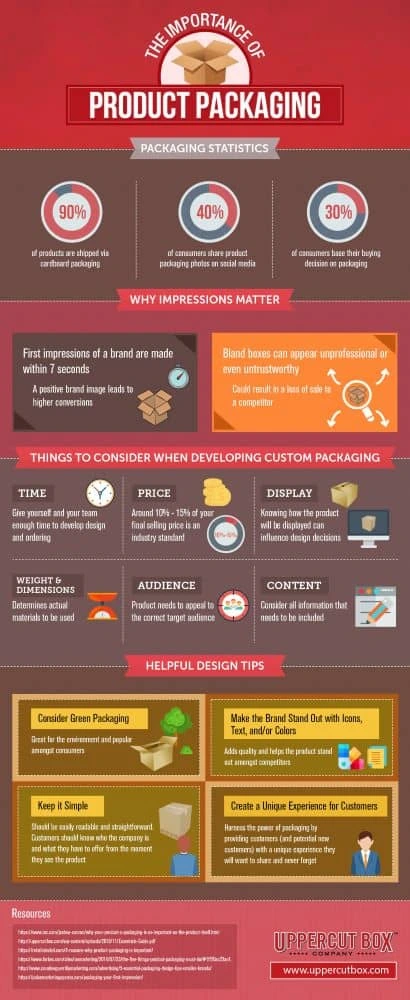
To get people interested in your brand and have them become loyal customers, it’s no longer enough to simply produce a good product or provide a great service.
Related: 4 easy tips for effective online brand management
What buyers are looking for today is an impeccable user experience—one that really makes them feel like they’re getting their money’s worth. This is why top brands appeal to their customers’ emotions; they realize most purchases aren’t rational. Your brand exists in the minds of your audience as all the experiences, impressions and interactions they’ve had with you, both positive and negative.
The power of branding is so incredible that 72% of marketers say branded content is more effective than print advertising. To help you harness that power, here’s our list of 9 ways to make people fall in love with your brand.
1. Focus on user needs, not features
This is where many brands go wrong. They choose to toot their own horn and go on about how great their product is, when in reality, the market couldn’t care less about it. What they really care about (whether they’re looking to buy a lawnmower or reaching out to cheap writing services) is what the brand and its product can do for them.
Make sure your brand focuses on how buying your product will solve a particular issue for your audience or address a particular pain point. Make them feel like the hero for choosing you.
2. Research what your target audience wants
While it’s fairly easy to assume that the attention span of most millennials is only a few seconds or that older generations are not present on social media… If you’re basing your branding strategy on these assumptions, you have failed spectacularly right off the bat.
Researching your target audience and identifying their needs is crucial if you want your brand to connect with them on an emotional level. Find ways to speak to your customers—and ideal customers—about what really matters to them.
3. Respond to consumer feedback whenever possible
According to research, 57% of consumers say that brand’s failure to respond to negative feedback is a good reason to cut ties with that brand. Responding to user feedback and acknowledging it, even if it’s negative, can help turn things around if you try your best to remedy the issue.
By responding to customer reviews and feedback, you’re showing that communication is a two-way street, and that your brand is not generic and faceless like all the others out there.
4. Provide a free solution
Obviously, the whole point of marketing and building your brand is to get potential customers to purchase from you—but getting there doesn’t have to involve you pushing for a sale. For example, you can provide your audience with helpful, applicable, free content that will help them overcome a particular problem.
What this does is inspire trust and establish you as an authoritative resource. When they’re ready to make a real purchase, your brand will be their first choice.
5. Deliver more than you’ve promised
One of the most effective ways to create a positive brand experience is to delight customers by delivering more than you initially promised. For instance, if you surprise them with a discount or throw in a free sample, they’ll be thrilled.
While it might be a sizable investment on your part, keep in mind that customer loyalty can be worth ten times more than a single purchase.
6. Find the right distribution channel
While mobile advertising and branding are the trend of the moment, how successfully you’re going to reach your consumer audience depends on how well you’ve done your research.
For instance, if you’re trying to reach older people with your brand, you might assume mobile advertising is off-limits. And while it’s true many of them don’t use social media, they do still use smartphones—which would mean that your brand might benefit from SMS marketing.
Think carefully about all your options, and don’t take any off the table before giving them proper consideration.
7. Tell a story
It’s pretty easy to fall into the trap of making your brand’s message too salesy. A much better strategy is to tell a story with your message. For example, if you’re trying to sell an espresso machine, don’t talk about how it’s made of stainless steel or how it can make you a cup of coffee in less than 30 seconds…
Instead, focus on how amazing that first cup of freshly brewed coffee feels on a lazy Sunday while the kids are still in bed. You’re selling a better quality of life, and your product can make that happen. Figure out how to tell a story that captures what your brand can really do for your ideal customer.
8. Pay attention to the visuals
Up to 90% of purchases are influenced by visual factors—especially color, which can increase brand recognition by up to 80%. Having a website which features eye-catching responsive design is a must, but your brand identify should also extend to your social media, marketing materials and product packaging.
Every visual touchpoint is an opportunity to tell your brand story, so don’t let them go to waste.
9. Find out where your audience hangs out
Make peace with the fact that your brand cannot be all things to all people. While casting a wide net might help you attract a bigger audience, it might not be worth it when you take into account all the marketing expenses.
Instead, find your intended audience online and figure out what they want. Regardless of what your product or service is, there’s a target audience for it out there. It’s up to you to find out where they are, how they communicate, and what they value.
Key takeaway
These techniques will not only make people fall in love with your brand—they will keep them coming back for more. And when it comes to building brand loyalty and driving growth, that’s really the best-case scenario, isn’t it?
Want to know more about how to build your brand? Download our free ebook on how to build a brand in 2020.
If you’re among those who think email marketing is too old-school to be effective these days, you’ve got the wrong idea. Email marketing is still a powerful tool that can help your brand shine.
Related: 8 tips to get more responses to your email marketing
What makes email so effective is the fact that it’s a permission-based marketing channel, one that gives you a chance to reach customers in a personal place—their inbox.
When a prospect signs up for your emails, they’re expecting a welcome email that introduces them to the brand. As this is the first email your subscriber will receive after being added to your email marketing list, it’s crucial to do it right.
9 best practices for your welcome email
1. A timely introduction
Your new subscriber wants to know more about your products & services at the time they sign up for your emails. Take advantage of their interest by sending out a welcome email as soon as they sign up. If you miss out on this opportunity, there’s a real possibility that the subscriber will forget about you and lose interest in your brand.
2. Crisp subject lines
All the work you put into crafting an engaging email will be for naught if your email doesn’t get noticed in a crowded inbox. Add an extra zing while crafting the subject line for your welcome email.
To make your email feel more personal, try using personalized subject lines. People are attracted to their own names, so this will lead to higher open rates. Here’s an example from Google:
Subject line: Smiles Davis, Welcome to your Google Home Mini

3. A pleasant greeting
Greet your new subscribers with a warm welcome email that’s personalized to their interests and preferences. Even when you’re sending automated emails, you can write them in a way that feels personable and real—like they’re coming from a human being and not a robot. Consider using an employee’s name and picture, so subscribers can visualize who’s behind the emails they get from you.
4. Guiding them through the next step
Making your customers wait too long isn’t good practice. You’ll have far better results if you intentionally build brand loyalty and guide customers through the purchase process.
For example, if you’re an online cosmetics brand, tell them why they should choose your brand over the many other brands in the market. Give them an overview of your products and how they can browse your app or website to find the cosmetics they want. If there are other actions you want them to take, spell those out as well—like in this example from nDash.
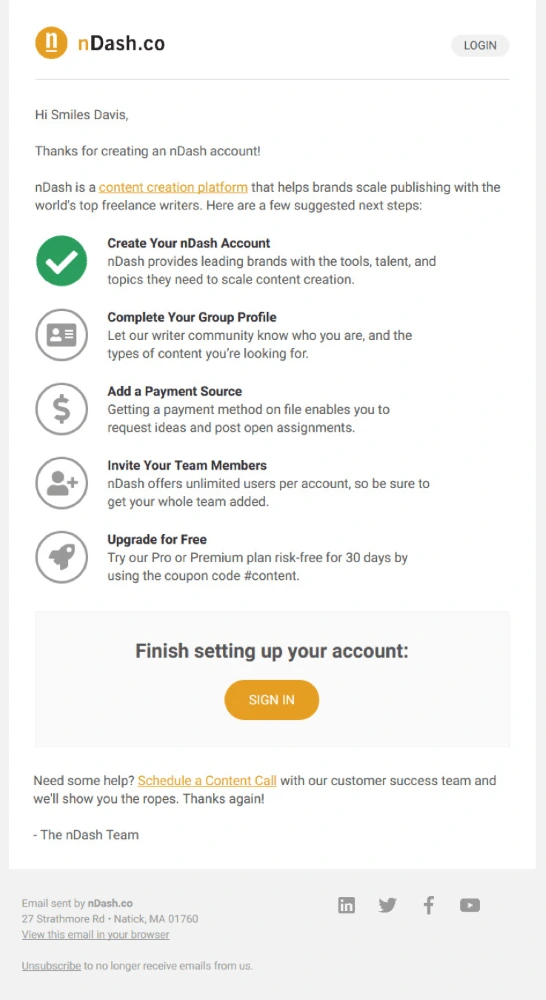
5. Include freebies in your welcome email
This is your chance to win over new subscribers with low-cost goodies. People love free stuff, so this will endear your brand to them right out of the gate. If you can’t afford to give away items for free without a minimum purchase, consider including a discount or promotion instead—such as a percent-off coupon or a buy-one-get-one promo code.
6. Hit two goals with one email
According to email marketing best practices, it’s recommended to include links to your social media profiles in your email. Ask them to like or follow you on the platforms you use most.
This is an especially clever move for e-commerce brands, since they need a strong audience to build their reputation and provide social proof. Even if you’re not an e-commerce brand, you can build buzz and loyalty by directing subscribers to your social channels.
7. Ask to be whitelisted
Being whitelisted can enhance your deliverability rates and make it easier for subscribers to find your emails in the future. It also helps to keep your emails out of the Spam folder. See how Travelocity asks people to whitelist them in the section titled Subscription Information:
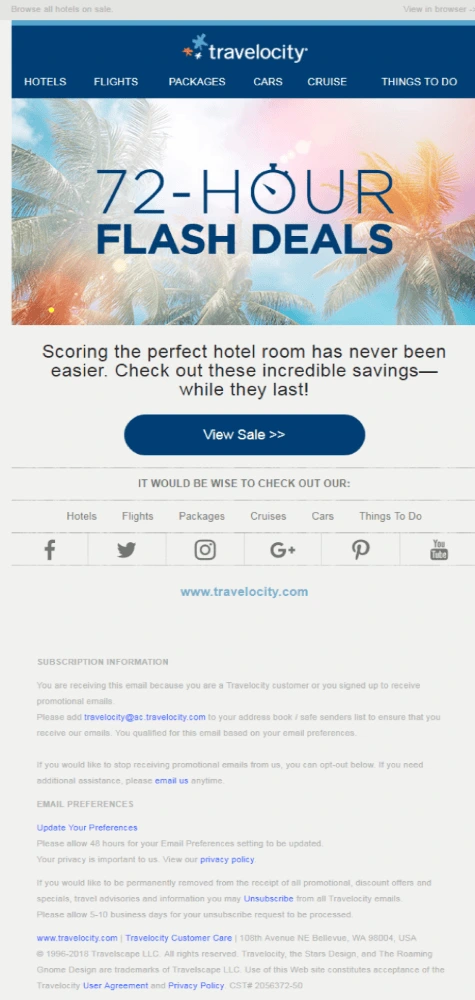
8. Give them a way out
You should always give your customers the option to unsubscribe from your emails at any point. By doing so, you’ll retain genuine subscribers in your list—people who are actually interested in reading your emails. In turn, your engagement metrics will rise, because you’ve eliminated those who aren’t interested in purchasing from you. (Also, unsubscribes are always better than spam complaints.)
9. Include free shipping
For e-commerce brands, one major obstacle your subscribers face while shopping online is high shipping charges.
Ease that friction and encourage first-time buyers by offering free shipping on their first order. Try mentioning it in your welcome email to delight your new subscribers. Creating a happy customer at the onset goes a long way toward building loyalty for your brand.
Mantras to keep your welcome emails engaging
- Pin your top content
Play your cards right with a welcome email that features your best content and gets them excited about your brand for the long haul.
- Avoid no-reply
Do not send your emails with a no-reply email address. It feels impersonal, and it’s important to assure your subscribers that you’re listening to them. They should know there’s a person behind the email ready to hear their problems and feedback.
- Make it compelling
Make your email compelling with content. Welcome emails should catch the subscriber’s attention from the moment they open it. If you’re struggling, try adding a dash of fun or humor to your email. Include interactive elements like GIFs, accordions, cinemagraphs or videos to make it more visually appealing.
- Build anticipation
Create a sense of anticipation with your welcome email. Don’t spill all the beans right at the beginning. Each email should leave the subscriber waiting for the next one. Find a way to highlight your best content and maintain curiosity in your subscriber’s mind so they look forward to hearing from you.
- Try a welcome email series
Instead of just sending one email for the sake of formality, consider sending 2-3 welcome emails as a series to initiate your subscribers. In a welcome series, you can introduce and explain different pieces of your business and entice subscribers to purchase from you.
- Write accessible emails
With one billion people in the world living with some form of disability, it’s incredibly valuable to write accessible emails that can be understood by everyone who receives them. Think about all the ways people might interact with your content—for example, different devices and browsers. How does your email sound when it’s read out loud to a blind audience? What does your plain text email look like? When your message is more inclusive, you have a wider audience to nurture.
Key takeaway
Welcome emails are an excellent opportunity to introduce subscribers to your brand, encourage purchases, and lay the foundation for loyalty down the road. Make sure you include all these essential elements in your welcome emails to set your brand up for success.
Kickstart your next email marketing campaign with our free newsletter templates.
One major challenge many four-year colleges and universities face today is student retention. A substantial number of students are starting college only to drop out at some point. When students don’t make it to graduation, it’s costly for both the students themselves and the universities they leave behind.
Related: Higher education marketing—crucial strategies & trends
Data from the NSC Research Center found on average 61.6% of entering freshman in 2016 returned to school the following fall semester. 73.9% of freshman returned to the same university or transferred to continue their studies. Retention rates among white and Asian students tend to be higher while black and hispanic students fall below average. Among black students, only 52.5% continued school at the university they originally enrolled in.
But before you create a plan to address student retention, it’s important to first understand what’s causing students to drop out.
- Cost. The costs of higher education have been rising continually, and if students can’t receive financial aid, then staying enrolled at college can be difficult for many to afford.
- Homesickness. When students begin their college careers, many don’t know anyone else at the university. If students have difficulty making connections with peers around them, homesickness and loneliness can cause students to drop out.
- Unclear expectations. Adjusting from high school to university can be difficult for many first-year students with certain expectations regarding academic success as they discover different expectations in college.
While these three challenges merely scratch the surface of student retention concerns at universities, there are solutions that can help any college create a student retention plan. These five steps will help you to create a retention plan that will fit the unique needs of students at your university.
Know your students
To help your student body overcome the obstacles they encounter during their educational journey, you first have to know your student body. What are the biggest issues facing the students at your university? Finances, mental health, isolation, lack of resources? It’s hard to find a solution if you don’t first find the root of the problem.
To figure out what your students need, collect data on which programs and resources on campus are already being used. Poll your student body to find out what challenges they’re facing. Create an open dialogue with your faculty so they can address the problems they see affecting their students. By gathering this information, you can brainstorm and try new approaches to helping your students succeed.
Define student success
Based on your research, define what student success looks like at your university. This could include the rate of students making it to graduation, the time it takes students to graduate, improved learning outcomes, experiential learning, or more employed students at graduation. This definition will vary for each school, depending on the different programs available.
Once you’ve crafted this definition, share it with your faculty, staff and student body. This gives the entire campus a common goal to work toward. When students understand what success looks like within your institution, they’ll be more prepared to do the things they need to reach success. Many students enter college unsure of what it means to be a successful college student, and creating this clear goal for them can help them better adapt to college.
Empower your students with resources
Many college students move away from home to attend school and may feel isolated in a new, possibly foreign environment. They’ll be learning to live on their own while also handling research projects and trying to pass their finals. When faced with these overwhelming difficulties, it might seem easier to the student to drop out. By providing resources to your student body, you give them the power to overcome these challenges.
Some resources that can be invaluable to students include:
- Financial services
- Writing center
- Tutoring center
- Counseling
- Workshops for test-taking skills
- Outreach and engagement centers
- Student unions and clubs
- LGBTQ+ support organizations
The options for resources are limitless, and by understanding your student body, you can create organizations that help your students feel empowered.
Set up an intervention network
The earlier students get help when they’re facing problems, the better their chances are for overcoming challenges and finding success at school. This is a process that takes everyone contributing to be effective. This means that professors might need to receive training on how to recognize students who are beginning to struggle.
As a university, you need to establish warning signs for professors to watch for in their students. Professors can then refer these students to counselors or advisors who can reach out with resources and information that can help them.
It’s encouraging for students to know there are people at the university who care about them and who notice when they’re missing class or struggling to keep up.
Create a community
Many first-year students come to college knowing very few people there, if any at all. It’s vital to help those students make connections and friendships that make them feel like they belong at the university. Helping students find their community can keep homesickness at bay.
Creating learning communities and clubs while providing volunteer opportunities in the community can help students make valuable connections with others. Getting involved on and off campus also gives students the opportunity to gain experience for their future career.
“It’s important for students to figure out what they don’t want to do, so they can figure out what they want to do. College is a great time to experiment by volunteering with local organizations and highlighting some potential career paths. Students have so many different pathways that they can take as they begin their own lives and make their own choices.”
Dustin Ramsdell, Helping College Students Build Community Connections
Key takeaways
First-year students and transfer students from community colleges often feel overwhelmed by the challenges of starting their academic career at a new university. Universities can help smooth that transition and increase the success rates of their students by implementing a student retention plan.
These retention plans should encompass ideas for the following five areas:
- Know your students
- Define student success
- Empower your students with resources
- Set up an intervention network
- Create student communities
By focusing on these five areas as you create a student retention plan, you can increase your students’ success rates and create happy, successful alumni.
Is your school delivering a strong, consistent message with its brand marketing? Learn more in our free ebook: Branding in student recruitment
Since 2008, real estate has gone up by an incredible 11.4% and created a fantastic opportunity for real estate agents to sell more clients.
Millennials will quickly become over a quarter of the real estate market, and only 1% of those millennials didn’t search online while looking for a house. Just one percent.
Related: How to handle inbound real estate leads
The internet has forever changed the way real estate agents get leads for their business, and you’re definitely behind the curve if you haven’t optimized your website for lead generation.
How do you generate real estate leads online? In this guide, you’ll learn various methods for obtaining quality leads online and the secret to converting your website into a real estate marketing machine.
Let’s get started.
1. Social media
If you’re not a frequent user of social media, it’s time you got started. Most people have a Facebook account, and many are active users on Instagram as well.
Instagram in particular is a fantastic avenue for sharing high-quality images and videos of properties and advertising your latest content (e.g. blogs & newsletters) effectively. By engaging with different channels each day and adding value to others, you’ll begin building a devoted following online.
Lots of real estate agents don’t do social media because they lack time for it. But with tools like Buffer and Hootsuite at your disposal, you only need an hour to set up a whole week’s worth of posts. All that’s left is checking the comment threads and responding whenever you have a few seconds throughout the week.
Read more about social media for real estate: How to build a social media campaign for real estate
2. Website
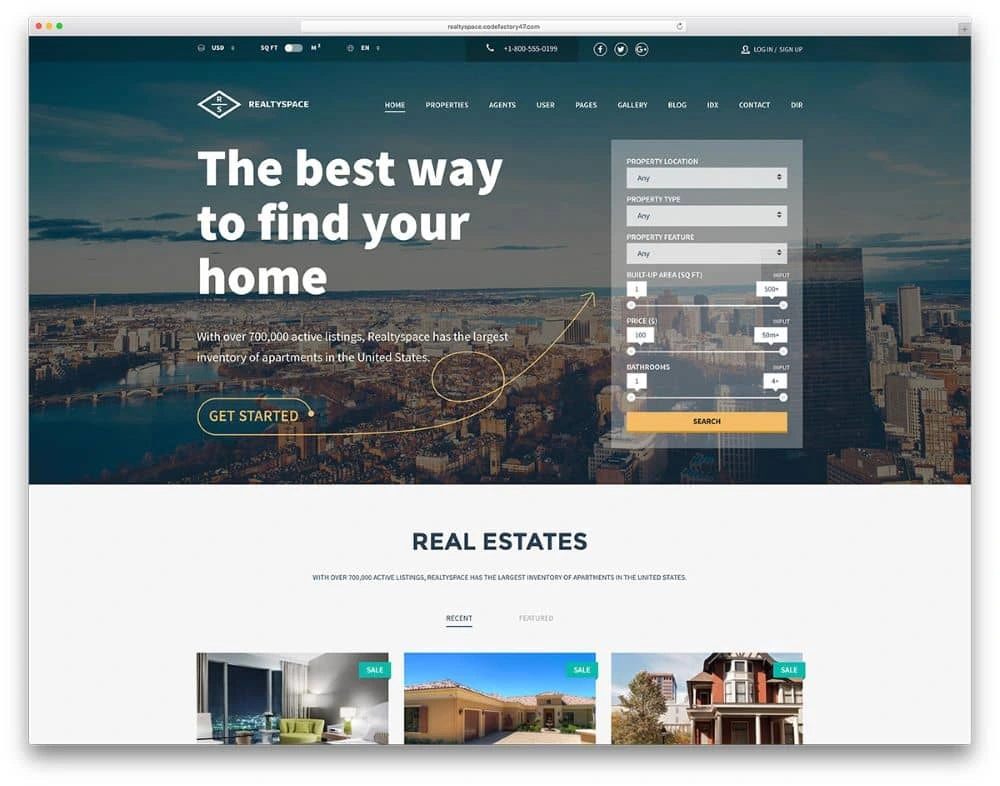
Source: Colorlib
If optimized properly, your website could be the foundation for attracting real estate leads online. It gives you the ability to provide value to your target market and help them engage with your brand.
Many real estate agents make mistakes in this area, and your website is not the place to describe your greatness in detail. Make your copy about how you’ll add value and better the lives of your customers.
An easy way to check whether your website is focused on your target market is to count how many times your site uses the word “we.” Customer-focused websites will use the word “you” more often.
3. Newsletter
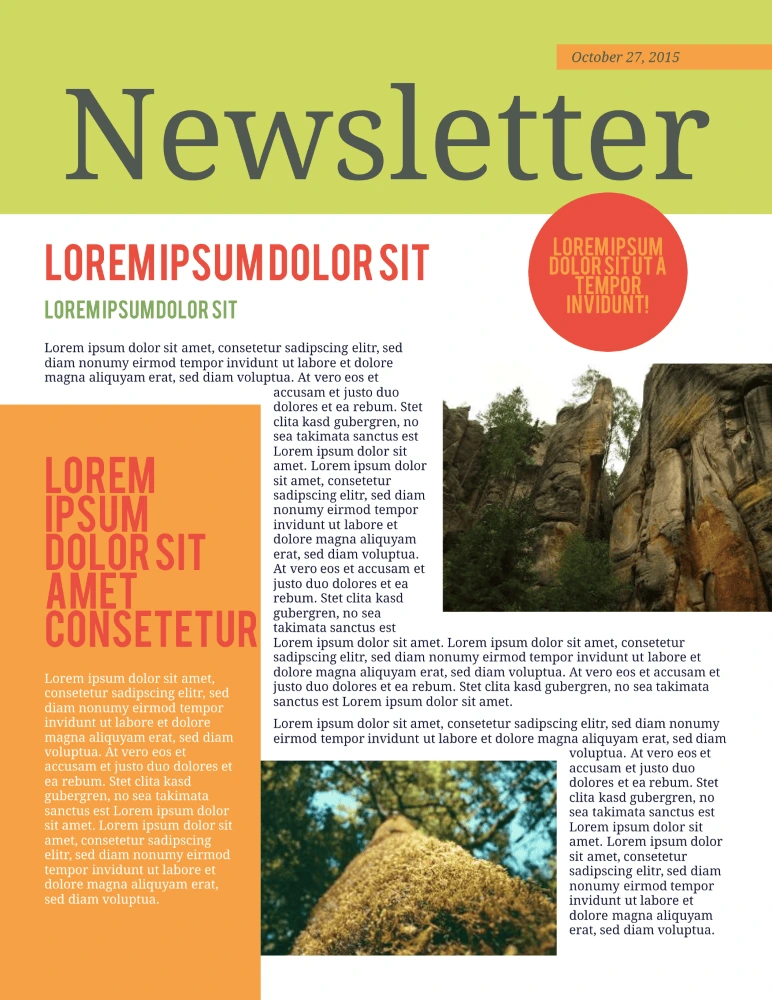
See more newsletter templates from Lucidpress
It’s always a good idea to keep your name top-of-mind, and a newsletter is a great way to do so. Newsletters can share real estate news, recent listings, and tips to deal with typical homeowner struggles—like preparing your house for the winter.
A newsletter is especially useful if your leads live in urban areas. Cities such as San Francisco, Los Angeles and Chicago are massive and busy, so it’s easy to miss out on events if you’re not paying attention. It’s also an excellent opportunity to inform subscribers about the latest news and events in their area.
Read more about newsletters: 13 best newsletter design ideas to inspire you
4. Blog
Blogging is one of the most popular and effective ways to generate leads online. But like any lead-generating tool, it has to provide great value to your target market. A blog post about the staff holiday party is not going to get the leads you want.
The best information to share with your target market is actionable. This could include topics like making a down payment, picking a lender, listing their home, and working with a real estate agent.
Free advice will grow your influence and make you a valuable resource—so when someone needs to sell or buy a house, they’ll think of you first.
Read more about blogging for real estate: How to use content marketing in real estate
5. SEO
The first page of search results has only ten slots. 33% of the people searching will click on the first result. 18% will go a step further and click on the second result. The further down the page you go, the fewer clicks there are—only 4.4% click on the sixth result.
That’s why every business wants to be on top. The lower you are, the harder it gets to attract your target market’s clicks.
The ideal SEO strategy is about finding the best keywords (and phrases) to target, then using them deliberately in your content to attract the customers you want. SEO powerhouse Moz has lots of free resources and tools to help you get started.
6. Video
If seeing is believing, then showing off the fantastic features of your properties is a surefire way to win converts—and there’s no better way to do that than with video.
Videos empower your potential clients to take a guided tour of your properties. They’ll be engaged by your content, but more importantly, they’ll be motivated to reach out for more information.
A video is far more than just a slick way to show off a property. On average, an online video converts 33% of leads. If you want a more captivating way to connect with your target market, video marketing is a great way to increase interest in your properties.
Read more about video marketing for real estate: How to create stellar videos for real estate listings
7. Influencer marketing
Connecting with others in your industry is always wise, and doing it online makes it easier than ever. You can share and amplify each other’s work through social media and comment on posts each of you publish.
Influencer marketing takes this one step further. It starts by figuring out who your target market is—specifically. Then, you can find influencers who are popular among the folks you want to target. By partnering with these influencers on advertising campaigns, you can reach wider audiences and attract more people to your brand.
Read more about influencer marketing in real estate: 5 influencer marketing strategies for real estate
8. Mobile optimization
Industry professionals often spend tons of time and money making sure their website is professional and easy to use… then forget to check how it looks on a smartphone or tablet.
Mobile search has surpassed desktop search, so it’s more important than ever that your website works with mobile devices. (Google is going as far as penalizing sites that haven’t created mobile-friendly layouts.)
Make the switch. Not just to protect your website from Google, but to impress customers who encounter your brand exclusively via mobile device. Aim for the same goals as your regular website: clear copy, attractive design and intuitive function.
Want to go even further with mobile? Read more about using mobile text messaging for real estate: 5 steps to build out your real estate mobile text messaging strategy
9. Referrals
When you start off as a real estate agent (or in any field, really), you won’t have a network. So, it’s up to you to build one.
As you begin to deal with customers, don’t forget to ask for referrals. Encourage them to share your name with others—make it easy and worthwhile for them to do so. Whether it’s to their friends, family or coworkers, advertising by word-of-mouth is powerful. People are more likely to follow recommendations from people they know than an anonymous review online.
10. Retargeting
Although we covered social media all the way at the beginning of this guide, we left out one element that deserves its own section: retargeting via Facebook ads.
Facebook ads are not a popular method of advertising in real estate circles, despite how high the ROI can be. Here, retargeting simply means that people who have shown interest in your brand will see your ad again. This “interest” is measured by actions such as reading your blog posts, clicking on one of your ads, or even signing up for your newsletter.
Your conversion rate will improve if you target people who want what you’re selling. People who are actively interacting with your brand are more likely to buy than those just scrolling through their feeds. Retargeting keeps your brand top-of-mind for the folks who matter most.
Key takeaway
Leads don’t just magically appear in your inbox. You need a strong lead-generating strategy that helps you cultivate interest in your brand and set you apart from the competition. These tips should get you on the right track to generating real estate leads online.
Hungry to hear about the best marketing practices for real estate? Hop over to our real estate marketing guide for more ideas & inspiration.
“We need a logo” is a loaded request that designers and creative agencies hear from their clients. High expectations are always involved—that’s a fact. Every client wants a remarkable logo for their brand, and they’re counting on you to create it.
Related: 9 excellent logo redesigns for famous brands
How do you deliver an innovative, impactful design on demand? If you’re running low on creativity, we’re here to fill in for your muse as she turns a blind eye to your deadline. Load up on logo design inspiration from the guidelines and examples below to get those juices flowing again.
Logo design examples for your inspiration
Consulting Logos
Consulting logo idea #1: Accenture
Accenture is one of the biggest management consulting firms. The company offers strategy, consulting, digital, technology and operations services. Their revenue was around $40 billion in 2018, so we could definitely learn some design lessons from them.

Consulting logo idea #2: Capgemini
Capgemini is another consulting giant that can teach us a valuable design lesson.

The key lesson here is that you can build a financial empire… even if your logo isn’t closely related to the services you’re selling.
The Ace of Spades has been present in their logo since its inception, but it has little to do with their business. In fact, it refers to bridge—a card game that the founder of the company, Serge Kampf, enjoys. In bridge, the Ace of Spades is the highest-value card.
Consulting logo idea #3: DLA Piper
If you’re offering legal consulting services, here’s what you can learn from one of the biggest global law firms. (How big? DLA Piper has lawyers in more than 40 countries and over $2 billion in revenue—that’s how big.)
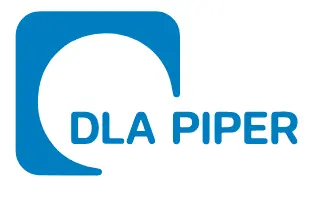
The open-ended shapes represent out-of-the-box thinking. Something you might actually want from a lawyer, right?
If you look at it from a different angle, the logo seems like a talking bubble, which shows they value the art of communication… or that they’re friendly. You decide.
Lucidpress: Click the image to use the template
Use one of our consulting logo templates as inspiration for your own logo. Switch out colors, fonts and texts to create your logo in seconds.
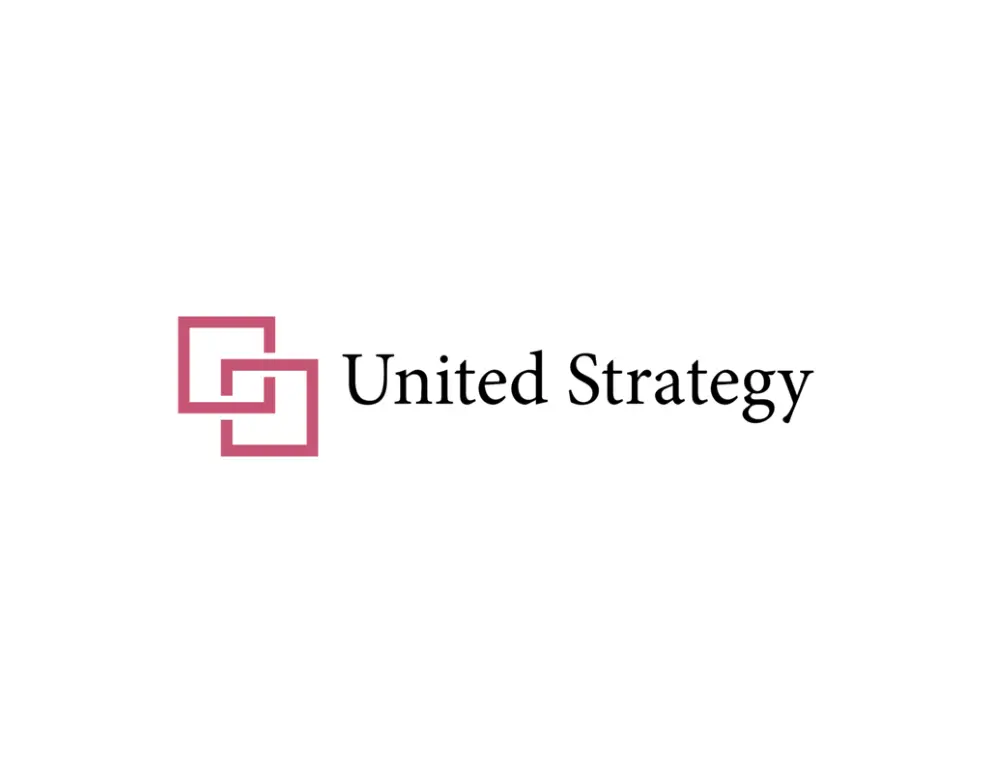

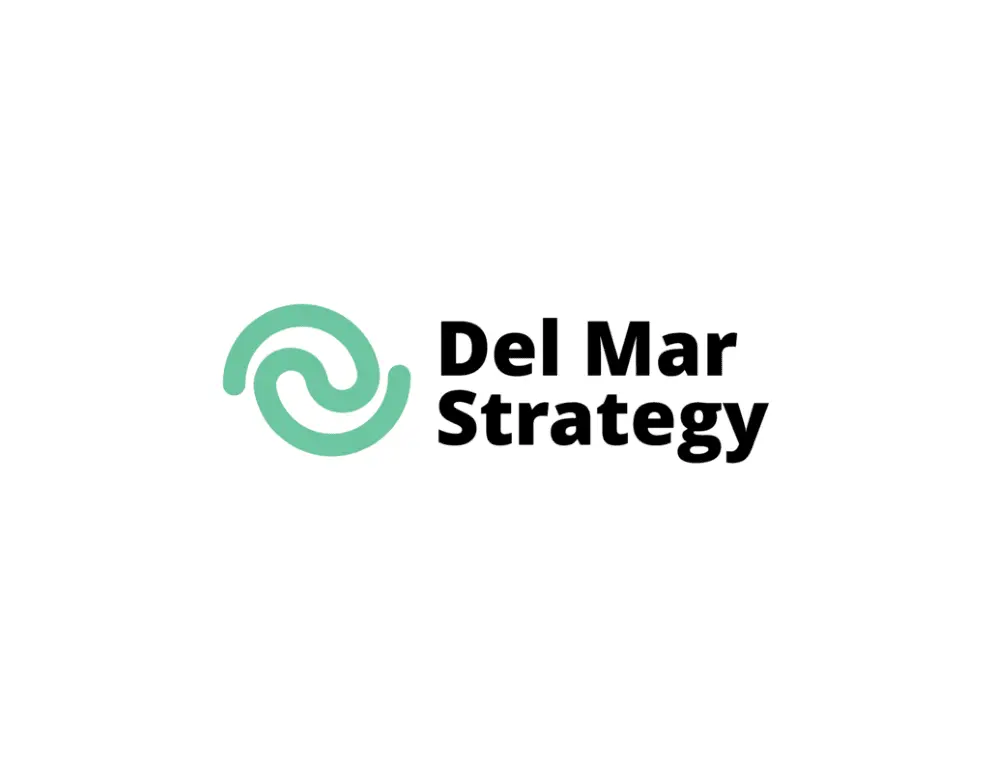
Real estate logos
1. Smith Mountain Homes
First up is this beautiful logo from Smith Mountain Homes.

2. Cabo Cribs
If you’re looking to buy property in Cabo, I’ll bet Cabo Cribs’ logo catches your attention.
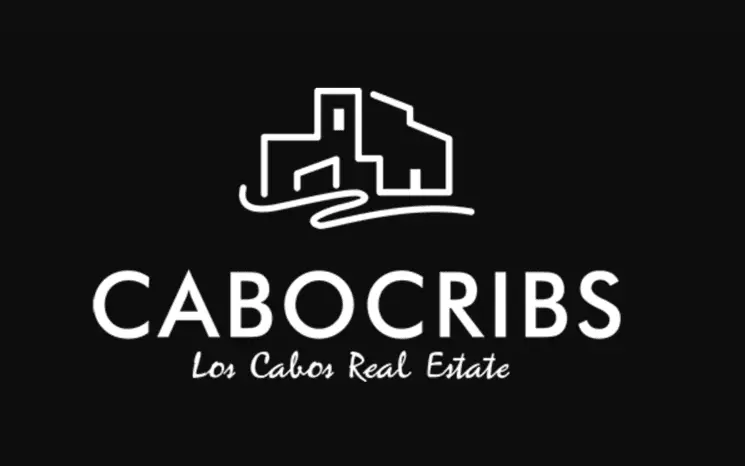
3. Williams & Williams
If you’re in the market for a luxury property, you’ll love Williams & Williams’ logo.

Lucidpress: Click the image to use the template
Use one of our real estate logo templates as inspiration for your own logo. Switch out colors, fonts and texts to create your logo in seconds.

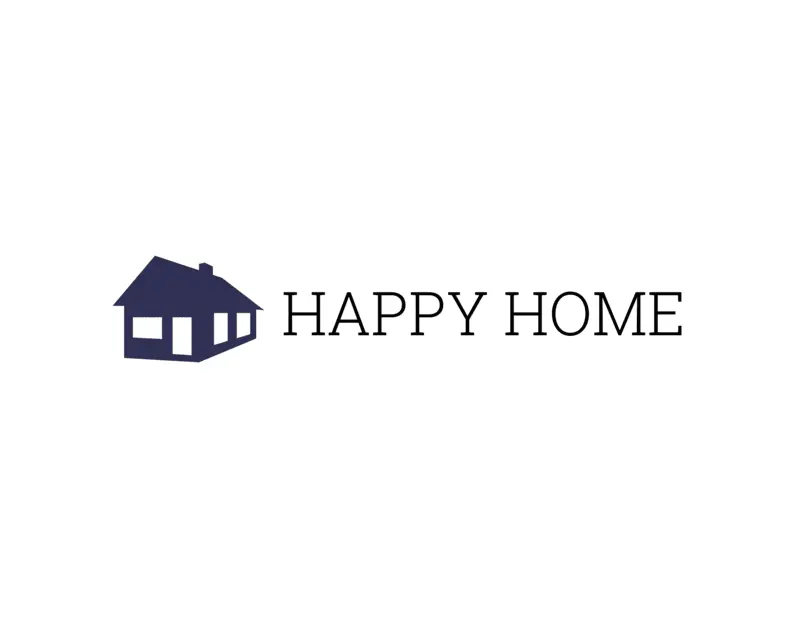
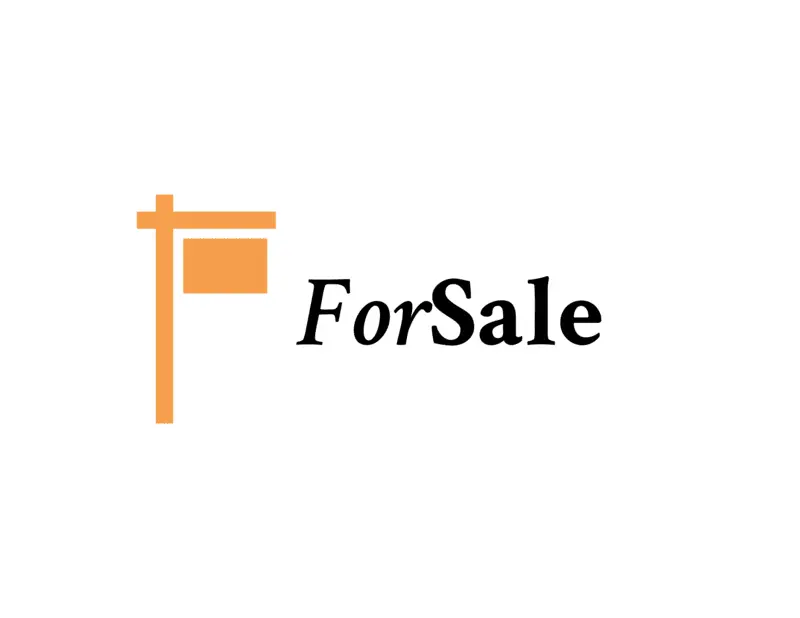
Health and fitness logos
1. Heavy Mettle Fitness
When you have too many ideas, just stick to the basics, even if it’s cliché.
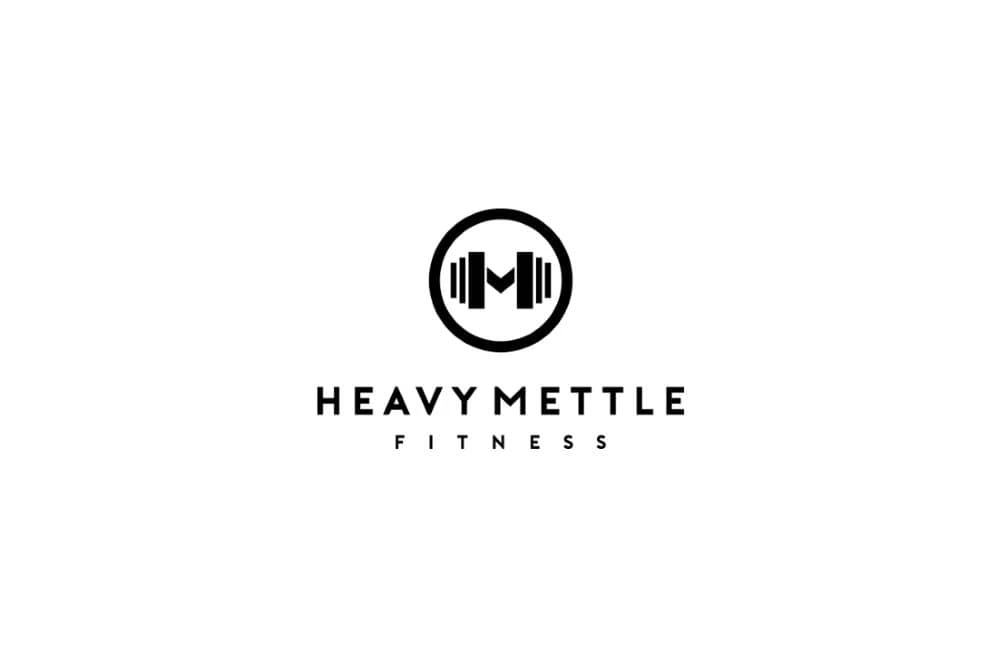
Source: GLDesigns
2. Peachy
What’s that number-one thing your audience wants? Point it out, and people will remember you as that gym or that fitness instructor or that nutritionist who can help them get it.
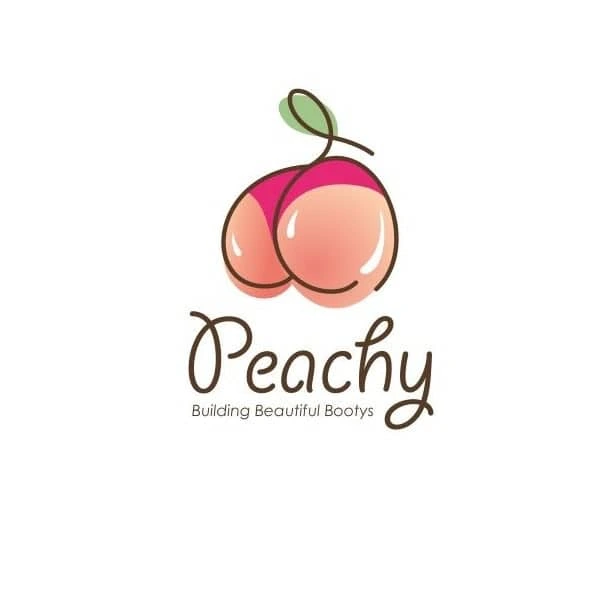
Source: 99designs
3. Necessary Payne
If your ideal audience is into hardcore training, a logo like the one below could be a great strategic move.
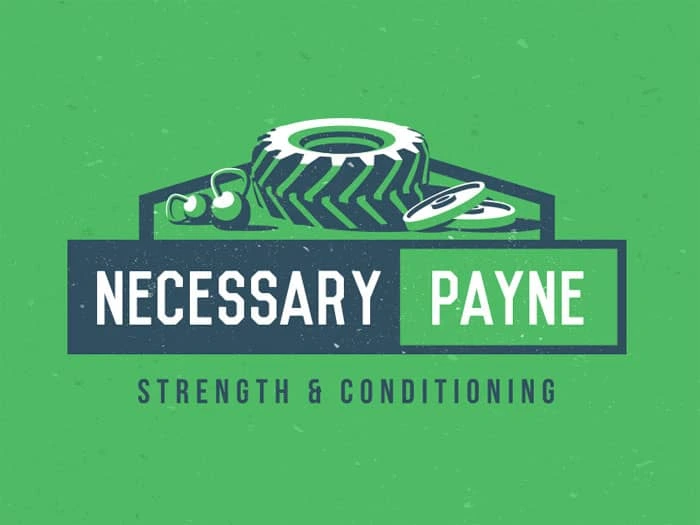
Source: Design your way
Lucidpress: Click the image to use the template
Use one of our health and fitness logo templates as inspiration for your own logo. Switch out colors, fonts and texts to create your logo in seconds.

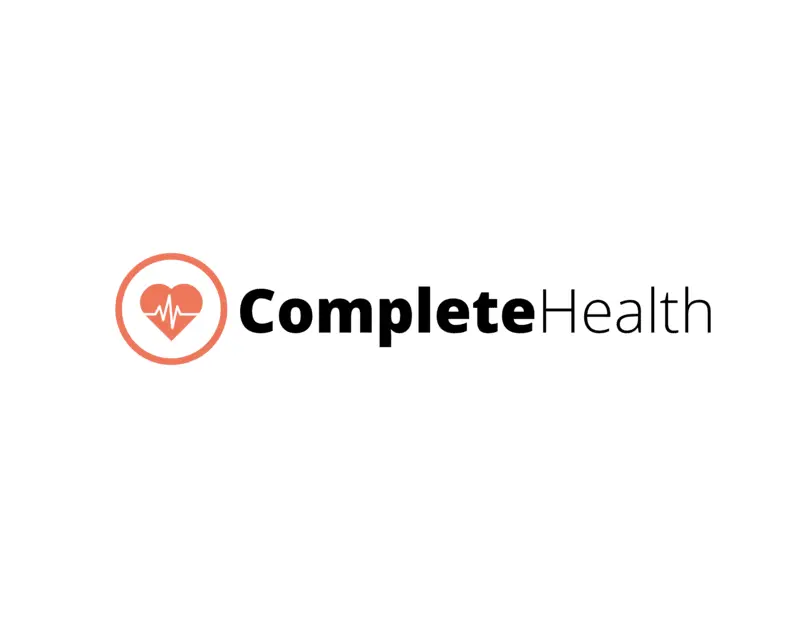
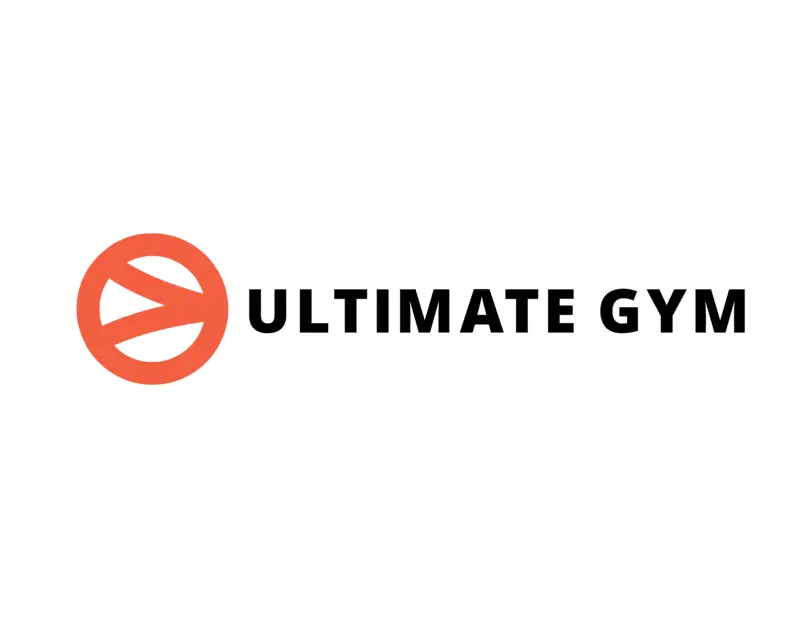
Striking use of color
Powerful colors make a logo vibrant and eye-catching. In recent years, logo design trends favored simple and spirited colors that appeal to new generations of customers.

It’s interesting to see the process behind this logo and Volusion’s brand identity design.

TeleMadrid’s rebranding is another example of a colorful and adaptable logo design.

And Duolingo’s 2019 logo update builds on their playful and energetic brand.
Memorable use of layout
Another way to make your logo unforgettable is to surprise people with an unexpected layout.

This example from Bajo Protección invites a second look with its 3D effect.
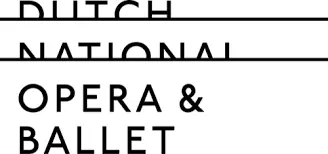
The Dutch National Opera & Ballet logo has us peeking from the balcony.
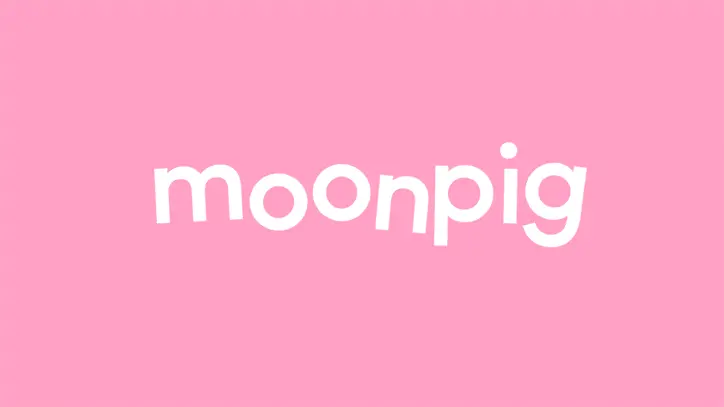
And Moonpig champions creativity by updating their logo to match their surreal name.
Beautiful use of typography
Fonts are another excellent source of inspiration.
Typography can help you balance simplicity and intricacy in logo design. It’s also an essential element for your brand creation process.

Typography was just what Tom Sands needed to make this logo a timeless presence on their acoustic guitars.

Typography can also create a sense of motion, as it does in this example.
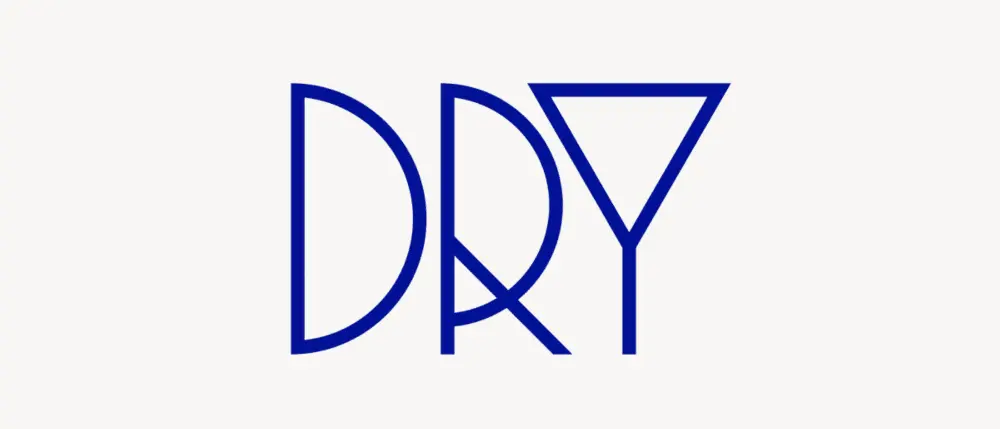
And sometimes, like in the case of UK-based creative agency Dry, fonts are all you need to capture your brand spirit.
Clever use of symbols
The symbols you include in your logo give people a glimpse into the brand’s spirit and generate emotional connectivity.
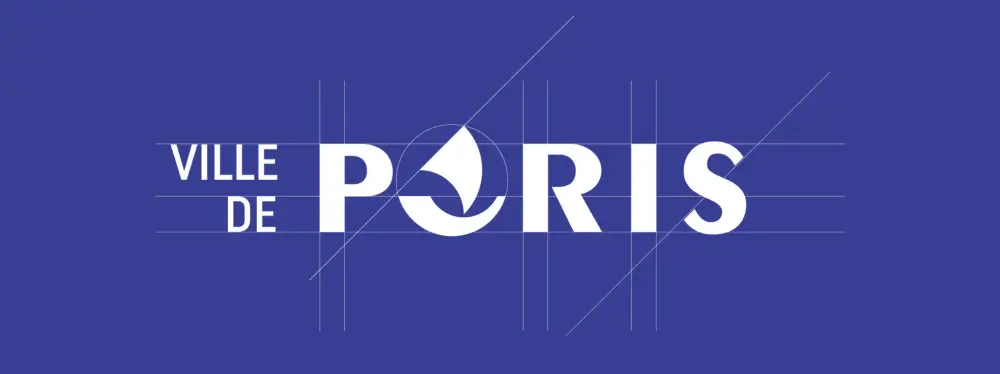
This redesign concept uses the nave ship, a historical symbol of Paris.

Airbnb logo redesign is a great example of mixing various symbols into a memorable logo.

Chairish provides an honest and straightforward testimony of their dedication to their craft.
Creative use of patterns
You can incorporate different patterns into logos while still maintaining brand consistency—and these examples are proof.
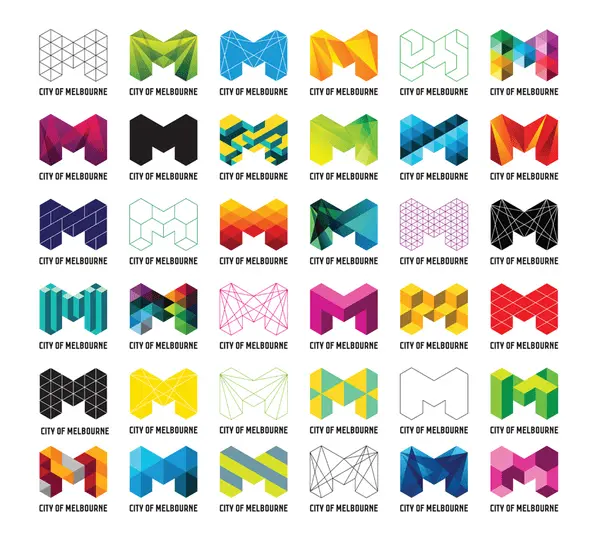
The redesign of Melbourne’s logo provides a playful space for patterns and placements.

The German Historical Museum’s logo uses juxtaposed shapes that can fit well in intricate contexts.

In this example, patterns and negative space convey a message of unity.
Surprising use of negative space
“In the end, creativity isn’t just the things we choose to put in, it’s the things we choose to leave out.”
Austin Kleon
In this quote from his book Steal Like an Artist: 10 Things Nobody Told You About Being Creative, author Austin Kleon captures the inspiration negative space can unleash.

The Swan & Mallard logo challenges you to find the intertwined characters.

Whether you’re into cats or bears, you can’t help but spot the figures that hide behind this typeface.

This Flight Finder logo creates a sense of motion and pleases the eye with its symmetry.
Surprising use of animation
We live in the golden age of GIFs, and their cultural impact now influences logo design ideas as well. These examples show how you can add animation to a professional logo.
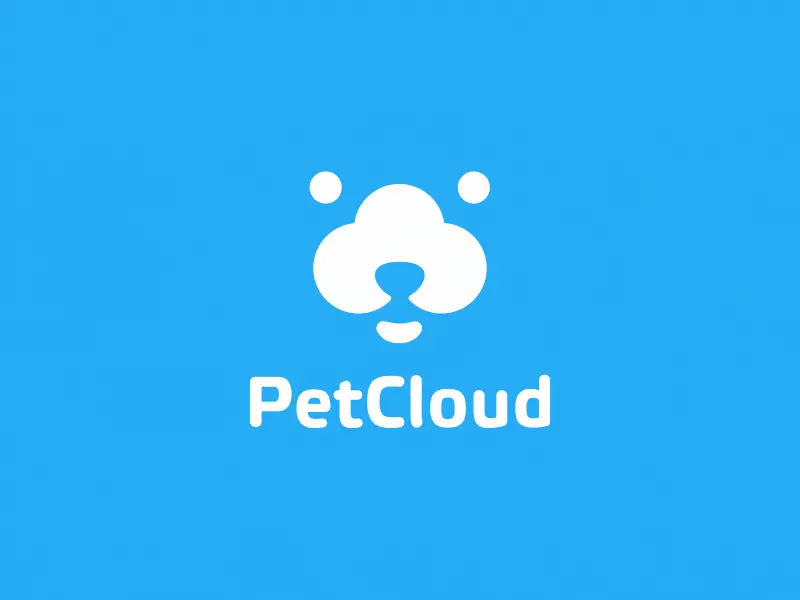
PetCloud’s logo has adorable spelled all over it, wouldn’t you agree?

I bet the designer behind this logo knew his clients would be over the moon with its design.

And this creative used animation to deliver his logo design with a bang!
Before you go, remember this
As a designer, you know coming up with cool logo ideas is a complex process. What helps is to lead with a deep understanding of your client’s business and brand values.
It’s equally useful to draw inspiration from diverse sources and experiment with your ideas until you find the right fit. Play with colors, layout, typography & symbols to design the creative, custom logo your client expects.
Once you have it, use the logo to build branding that’s consistent across all channels. Give customers a familiar and reliable presence to count on and build meaning with.
Use this 5-step process to design creative logos
Unfortunately, a clear creative brief for logo makers is a rare occurrence. That’s why designers and agencies explore, select and clarify ideas before proposing anything.
Here’s a secret experienced creatives know: Sometimes you can reach your best ideas by using a systematic approach.
Whether you’re building a brand from scratch or planning a thorough rebranding, this 5-step process can help you come up with cool logo ideas.
1. Understand the customer’s business
The logo is central to a brand’s identity. In fact, the best of them are deeply rooted in the company’s mission. If you’re lucky, your customer has their mission clearly articulated. If not, roll up your sleeves and focus on research.
First, observe and analyze how their customers talk about them.
Explore:
- Testimonials & reviews that highlight their best features (for B2B, try G2Crowd or Clutch; for B2C, try TrustPilot or Google Places)
- Answers to surveys that show how customers feel about the business
- Case studies that reflect their process and results
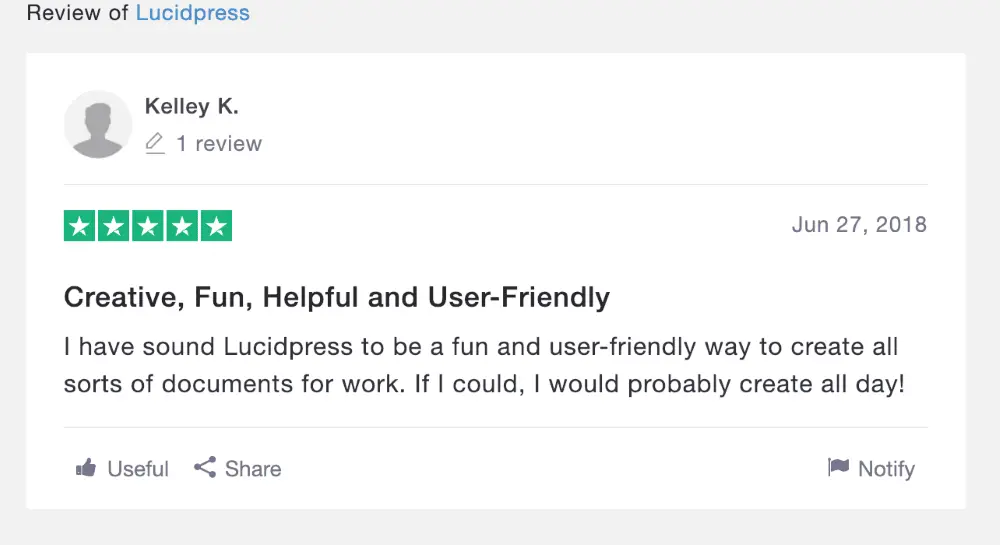
Source: TrustPilot
For brand new businesses, you can look for similar details in their competitors’ activity to give you a starting point.
2. Map out the brand’s values
The best branding relies on a deep understanding of what people want when they buy something.
A custom logo that builds differentiation has to speak to customers’ psychological needs. A powerful design triggers a reaction and influences the choices consumers make when they see it.
Define what the business stands for to ensure your logo design speaks to the brand’s values.
For example, Patagonia strives to “build the best product.” They aim to “use business to protect nature” and do so in a way that’s “not bound by convention.”
Buffer commits to “default to transparency,” “cultivate positivity” and “improve consistently,” among other values.
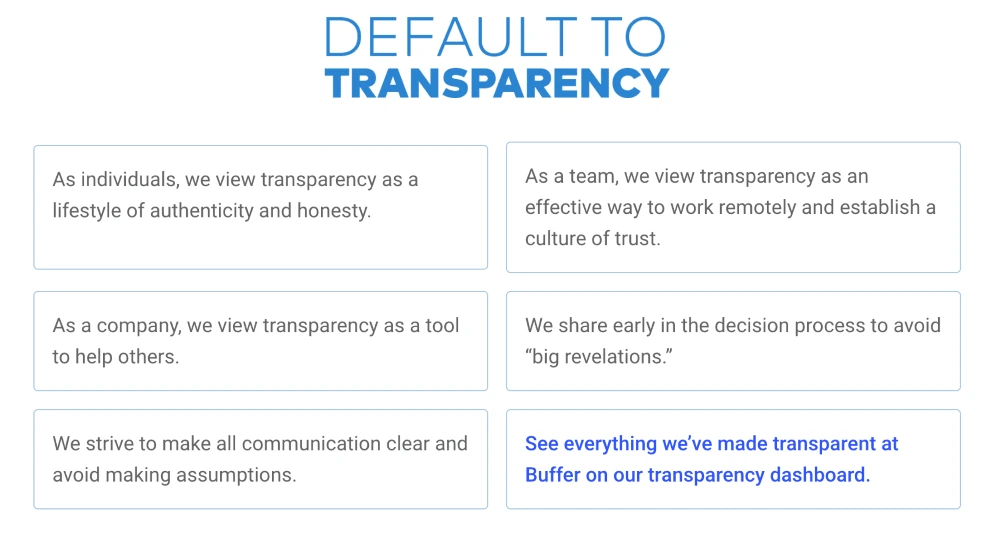
Source: Buffer
Using your customer’s brand values to guide your logo design can be incredibly inspiring.
3. Choose a series of adjectives
Now that you know what the business is all about, you use this information to pin down specifics. Make a list of adjectives that capture the brand personality.
For example, when you think of Patagonia, words like humble, altruistic & adventurous may come to mind. Buffer inspires words such as helpful, calm & dependable.
Examples of adjectives you could use:
- Bold
- Serious
- Rational
- Imaginative
- Idealistic
- Generous
- Clever
- Humorous
- Whimsical
- Luxurious
- Glamorous
- Rugged
- Brave
- Rebellious
- Cooperative
- Edgy
- Gentle
- Playful
- Old-fashioned
- Youthful
Want to go the extra mile? Analyze the vocabulary customers use when they talk about your client and dig up adjectives from it.
Single out associations that point to what makes the company different. Narrow your list down to 3. Now you have the emotional substance that fuels your logo.
4. Collect inspiring ideas
Logo design ideas often come from unexpected sources. Take it from people who faced the same challenges as you do now:
“I use weird sources for inspiration. I look at forms in nature and try to reduce them to basic shapes. I’m always trying to invoke a sense of humanity to a logo.”
Josh Baron, Media Art Director at Sparxoo
Multiply the opportunities for creative inspiration to kick in and increase the chances to get that grand idea. Look for compelling symbols, icons and patterns.
Check out fresh photography from sites that offer free stock images. Peruse design websites like Dribbble, Behance, Designspiration & Dunked.
Even better, browse countless logo examples on Logoed, Logospire, Logo Gallery, Brand New, Logo Moose & Logo Design Love.
Collect fonts & color options to create a mood board. This collage of elements helps define your concept at this stage. Include notes to explain your thought process so you can give your client a consistent overview of your creative direction.

Source: Dribbble
Ask for feedback at this stage. Get input from your client to save you time and energy down the road. For example, knowing which elements your client notices can help you come up with better, more relevant logo design proposals.
Feedback in hand, it’s time to create the best logo you can.
5. Choose & validate the best ideas
Fast forward through dozens of iterations to logo_v27_final_FINAL.indd.
You’ve received feedback, integrated it and designed (what you assume will be) the final version.
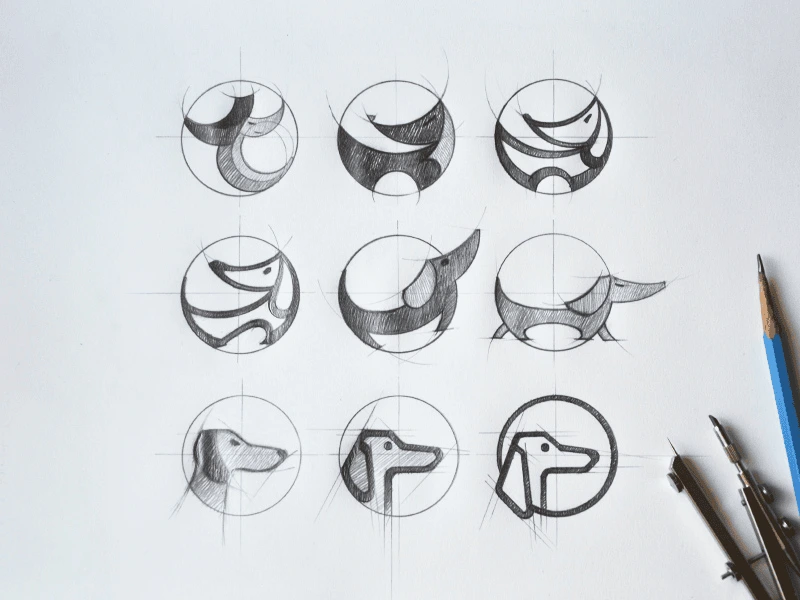
Source: Tubik Studio
Your moment of glory awaits, and so does your deadline.
Use this time constraint to strengthen your creative process. Stop before you get caught up in a never-ending cycle of “I know I can do better.”
Instead, focus on shaping a logo that can outlive design trends. Give people a chance to build meaning into your logo over time.
Here’s what experienced creatives recommend:
“All logos should be four things: simple, memorable, timeless and flexible.”
Cory Schearer, Creative Director at Ferebee Lane
Keep in mind adaptability when you design your client’s logo. Your creation will be used in print, in emails, on social media, on websites and digital advertisements.
Wherever it may be featured, the logo’s role is to get an emotional reaction.
Ready to design your logo? Give us a try.
Over the last decade, marketing has undergone a variety of changes. The purchase funnel is more complex than ever before, and marketers have more information at their fingertips.
Marketing is smarter now—it pulls data from different sources and uses modern technology to reach new customers and keep existing ones. It’s possible to predict where the next trend will lead, which helps with planning out marketing campaigns for the months ahead.
Related: 25 branding stats & facts that will change your life
Out of top-performing companies, 65% have a written content marketing plan. Before you focus on any specific marketing trend, you should write out your goals for the year and how you plan to reach them.
Major goals include increasing sales, adding more customers, retaining current clients or expanding brand recognition. Once you have a specific goal in mind, consider the following trends as potential ways to reach it.
1. Intelligent marketing attribution
Artificial intelligence (AI) helps marketers and brands determine where their impressions, sales and leads come from more easily than trying to analyze data manually. Since most data is already in the cloud, AI simply takes that data, does a few computations and comes up with algorithms showing what works from a marketing standpoint and what needs adjusting.
Use AI and recognize patterns from different data sources so you can predict upcoming changes. For example, say your inventory records show that every November, sales of blue sweaters pick up, and you’ve sold out of blue sweaters the last seven years in a row. Now you know you should probably order more blue sweaters before November.
Marketing and sales will intricately tie into one another, so marketers know which inventory to push, and salespeople know what inventory they need more of. The seamlessness of a system that tracks marketing efforts, results and sales means more effective marketing—and more revenue.
2. Increasing voice search
About 13% of all U.S. homes owned a smart speaker in 2017, and experts predict that number will reach 55% by 2022. An increasing need for voice search will drive marketing towards offering voice-friendly search functions and thinking about the way people naturally speak.
What questions does a person ask when hunting for a specific product?
With conversational AI, marketers have an opportunity to send out targeted messages faster than in the past. AI can analyze the voice search conducted around a subject and help you craft descriptions and website information to match those long-tail keyword phrases.
Expect voice search to impact brand voice as it becomes more prominent, even on social media and e-commerce sites. Marketers should be aware of the key phrases people are using for voice search, so marketing campaigns align closely with those phrases.
3. A/B testing with AI
A/B testing is a powerful tool for marketers. It empowers them to quickly see how changing one element of an ad campaign or landing page impacts their conversions. As AI adoption increases, brands no longer need their own data science departments. Instead, they can call on a huge pool of information stored in the public cloud.
In the past, A/B testing meant trying out changes on one element at a time and waiting several weeks before getting the results. In 2019, expect A/B testing to become lightning-fast as tests are streamlined. You’ll be able to find out how multiple variants work with just a few clicks of the mouse. The result is a visually pleasing design that attracts users.
Marketers will become savvier about which types of AI to use for which projects, saving time and money for their companies and making the analysis more accurate than ever before.
4. Automated workflows
Adding automated workflows saves time and effort because it gives marketers the freedom to focus on tasks that can’t be automated. [] For example, you could create a workflow that pairs phone calls and emails. If you make a phone call and get the person’s voicemail, an email is triggered along with your voicemail message. If you spent time discussing a specific aspect of your brand with a lead, then you can trigger a different email.
Personalization is still possible, even with automatic triggers. Simply add the person’s name and change a few details based on your conversation. For most brands, though, the same conversations happen over and over, and the same emails go out after those conversations. Automated workflows keep you from repeating the same work multiple times.
5. Experiential content
In the past, e-commerce stores have presented simple, straightforward descriptions and images. However, as augmented reality (AR) enters every area of life, expect websites to become more of an immersive experience.
Online retailers create content that engages the user and creates an experience. One example might be a local real estate brand. Rather than simply throwing up a few photos and a description of the property, they’ll give you an interactive 360-degree walkthrough, where you choose which room to go into next and which angle to view the room from.
Storytelling and user experience will be more critical than ever before.
6. Relevant and interesting videos
Video is no longer optional when it comes to marketing. The trend for a while has been heading towards more video-viewing, but recent studies show that about 73% of Americans engage with YouTube. Across all social media platforms, video-viewing is on the rise. What does this mean for marketers in 2019? It means video is a necessity when it comes to creating a marketing campaign.
However, consumers are also savvier than ever before, so throwing up just any old video isn’t going to work. You need short, to-the-point and entertaining videos if you’d like the attention of your target audience.
Key takeaway
Effective marketing includes planning for a digital presence, but your efforts should also take into account changes in technology and how people interact with brands online.
In addition to the behavior of customers, you must also consider any Google algorithm changes and where your target audience hangs out online.
The savviest marketers never stop learning about trends in the marketplace and aren’t afraid of trying new techniques to stand out and grab attention.
Despite the prominence of digital marketing, print collateral still has an important role to play in a balanced marketing strategy. A professionally produced brochure suggests a high budget and an established reputation.
Related: How to make a stunning travel brochure
Not only that, but brochures are versatile marketing tools. You can distribute them at trade shows, put them in brochure racks, send them via direct mail, and even publish them on your company website.
(They’re also very portable. Many people would prefer to grab a brochure and read it at their convenience rather than engage with a salesperson.)
Most brochures are just a few hundred words in length, so you don’t have a lot of space to get your message across. It’s important to make every word count. Here are eight tips for writing a brochure that signals professionalism and competence — and spurs your readers to action.
1. ) Create an outline or plan of attack
Brochures vary in content and length, but most follow a standard format.
- The front panel displays the company logo and headline.
- The inner panels make a case for the product/service using supporting facts and details.
- The final panel contains contact info and a call-to-action.
Please note: At the end of this post, we’ve included a cheat sheet of content types you can put in your inner panels.
Before you start writing, identify your target persona for the brochure including age, gender, location, role, income, interests and challenges.
This information will guide the tone, language and content of your brochure. It’ll also help you choose a call-to-action that appeals to your readers. For instance, an offer for a free white paper would likely be of interest to an executive, whereas a mobile app download would be more fitting for a college student.
Make note of where your target audience is in the buying cycle. Don’t waste space going on about the history of your organization if your readers have done business with you before.
Also consider the level of understanding your prospects already have about the topic. Are they experts, novices or somewhere in between? Keeping this in mind will help you avoid alienating readers by talking down to them or confusing them.
2.) Write a compelling headline
Your headline will determine whether a prospect picks up and reads your brochure or tosses it aside.
Avoid using headlines that don’t tell the reader anything about the contents of the brochure — for example, “Make a Good Impression.” What does this mean, who are you making a good impression on? And for what purpose?
You can provoke a reader’s curiosity without being vague. These example headlines spark interest while also telling readers exactly what they’ll get from reading the brochure:
- Scared of the Dentist? Learn How Sedation Dentistry Can Help
- The Ultimate College Prep Checklist: A Four-Year Plan for High School Freshmen
- 4 Reasons to Think Again Before Buying a Foreclosed Home
Don’t be afraid to use “power” words like free, quick, easy, results, exclusive, proven, etc. What they lack in originality, they make up for ineffectiveness.
3.) Be concise and use plain language
Your brochure should focus on one product or service. A trifold brochure only has space for about 350-450 words, so keep words, sentences and paragraphs short. Edit ruthlessly and include only the most relevant information, leaving room for white space and images.
Big walls of unbroken text look intimidating to readers, so use subheads liberally. Try not to put more than a couple of paragraphs in a row without introducing something else to break up the monotony, such as a subhead, bullet-point list or image.
With the help of Lucidpress’s online drag-and-drop editor, you can quickly design a professional-looking brochure with elements like callouts, pull quotes and tables.
4.) Limit the copy to 1-2 typefaces
The typefaces you choose should be easy to read and consistent with your branding. Often, if the subhead copy is in a serif face, the body copy will use a sans-serif face, and vice versa. There are some great free tools available to help you select a complementary font pairing.
Select font size, spacing and color with readability in mind so your prospects don’t have to work to read the brochure.
5.) Give readers a reason to keep your brochure
If you can, include a handy reference of some kind in your brochure to dissuade readers from throwing it away—for example:
- a map of a town marked with top attractions
- a “normal body weight” chart based on the reader’s height
- a list of program-specific student scholarships
- a cheat sheet for first-time homebuyers in a specific city
Also, consider printing the brochure on a high-quality glossy paper to boost its perceived value.
6. Include next steps or a call-to-action
The goal of your sales brochure should be to persuade your readers to take a specific action.
This call-to-action is usually placed on the last panel of the brochure, along with the contact info. To boost response rates, offer an incentive, such as a promo code or free product.
The following are some example actions you might want your readers to take:
- Sign up to your email list for a free white paper
- Visit your website to make a purchase or sign up for a program
- Call to book a free consultation
- Scan a QR code to download an app
- Enter for a chance to win
- Visit your store for an upcoming sale
7.) Proofread your brochure
No matter how much effort you put into your messaging and design, errors and inconsistencies in your printed literature can kill your credibility.
Verify that the tone of your brochure matches the rest of your brand messaging. Unlike informational brochures (which may take the third-person point-of-view), sales brochures usually use the second-person to build rapport with the reader.
Refer to your brand style guide for how to handle things like numerals, dates and titles in the text. If you don’t have a brand style guide, use an established style reference like AP Stylebook. And of course, look everything over for correct spelling, punctuation and grammar.
8.) Double-check for important details
Before the brochure goes to print, check that your logo and contact information are present and error-free. Also look for details you may have forgotten to include, such as:
- Purchasing info—how to place an order, accepted payment types, guarantees, warranties, refunds, shipping, etc.
- Visitor info—accessibility for people with disabilities, hours of operation, seasonal times, admission rates, group sizes, pets, directions, etc.
- Legal info—copyrights, trademarks, registration marks, disclaimers, etc.
You can also create branded templates for your brochures so you don’t miss anything important when you start a new project — Lucidpress handles printing as well.
Bonus: What should I put in my brochure?
For inspiration, here’s a cheat sheet of content types often found in sales brochures:
- Descriptions of products, services, exhibits or attractions
- Features and benefits
- Product specs
- Pricing charts
- Pros and cons
- Itinerary (e.g. winery tours)
- Narrative (e.g. history of a winery)
- How a product works
- How a service is delivered
- How to do something
- Checklists and questionnaires
- Images, illustrations, charts, graphs and maps
- Frequently asked questions
- Company blurb
- Social proof: case studies, testimonials or media quotes, client list, executive bios, etc.
Experiment with a few of these items and see where it takes you. You might be surprised at how quickly you run out of space!
What are you waiting for? Try your hand at design with any of our design templates.
Open source learning. A global economy. Shifting demographics. These are just a few realities impacting your college recruitment strategy.
According to the National Student Clearing House Research Center, Spring 2018 college enrollment across U.S. campuses was down from the previous year. University and college recruiters have shifted to overdrive in response.
Related: How to improve higher ed student retention
Some focus on radio ads, alumni referrals and online recruiting fairs. Others build interest on social media and at live events.
Regardless of the outreach method, one thing is clear: In today’s higher education landscape, recruiters must be increasingly creative and strategic to attract new students.
A varied college recruitment strategy
“The times, they are a-changin’,” sang Bob Dylan. Want to keep up? Pay attention to your audience.
Today’s students don’t want a cookie-cutter version of their parent’s university experience. They’re also not impressed by (pun alert) old-school marketing tactics.
Instead, create a varied strategy that will reach your top prospects on multiple channels. Essentially, you want to provide engaging information that helps your college sell itself.
Use multi-channel enrollment marketing
Most colleges and universities know their target demographic well, and they market to basically the same audience year after year.
However, success also depends on reaching new targets via a multi-channel approach:
- Website — a branded, responsive hub that’s easy to navigate and engaging to use
- Blog or vlog — where interested prospects go for bite-size information
- Social media — critical online outreach, both locally and internationally
- Email campaigns — important tactic for lead generation and nurture
- Direct mail — still relevant and effective marketing for certain audiences
- Phone calls — an effective, if time-intensive, method for personal outreach
- Brand ambassadors — relatable outreach by faculty, students & alumni
- Parent outreach — critical influencers of your target audience
- Campus visit days — highly successful recruiting events, up close and personal
- High school visits — successful outreach that meets students where they are
- College fairs — key events that can market your institution both off and online
- International markets — a growing segment of your target audience
Now, for a few of the most helpful enrollment marketing strategies…
Recruiting college students online
It’s no surprise that most prospective students live online, particularly on mobile technology.
So, today’s recruiting strategies must be mobile-friendly. End of story.
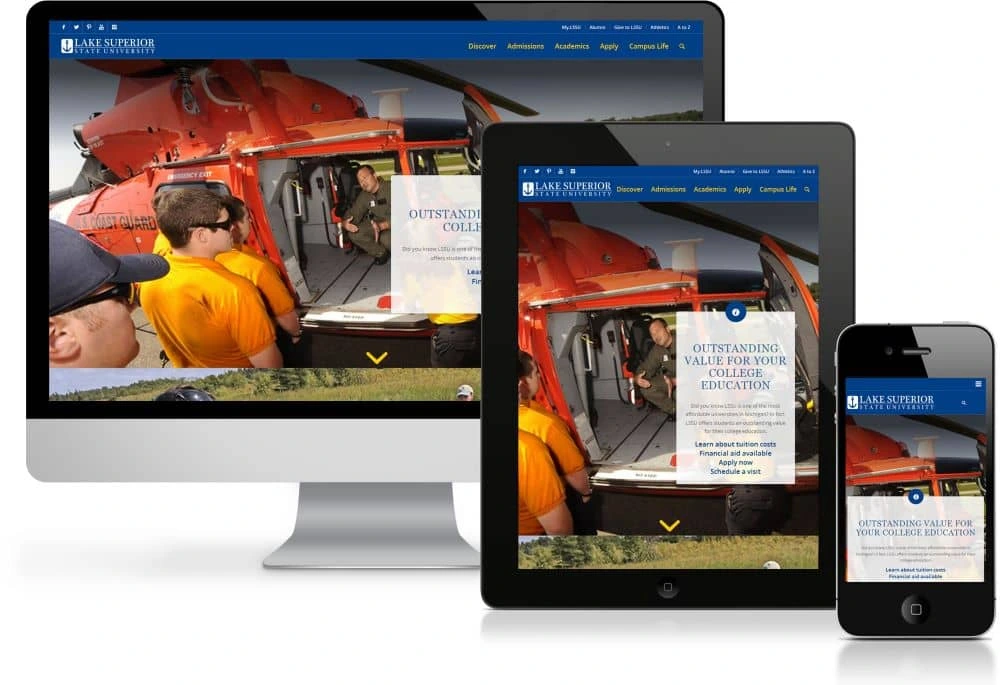
Source: Lake Superior State University
Responsive web design is no longer optional. But, you’ll stand out even more by offering mobile-friendly instruction and interactive pages.
For instance, students are wondering what they’ll learn on your campus. Why not show them instead of tell them?
Continuing education is common enough. But, standout institutions are experimenting with AR, game-based platforms and social learning models. Just one interactive feature on your site can put you ahead of the curve.
Even without all the technological bells and whistles, you can still provide value to new recruits.
Offer valuable resources
Don’t just throw a bunch of content on your website and call it good. Instead, create a user-friendly path that puts visitors at ease.
Which resources are clicked on the most? These might include:
- A catchy, above-the-fold video
- A listing of popular majors
- Programs and career opportunities
- Student and alumni testimonials
- Admissions deadlines
- Financial aid information
- Data-rich infographics
Simplify the application process
Of course, what you don’t include on your homepage can be equally important.
Generally, anything that simplifies your navigation and motivates would-be students to apply online is a good thing. Often, it means including more white space in your webpage design.
Face it—applying for college can be a daunting task even for the initiated. So, a user-friendly interface is essential.
Why not include a pithy video tutorial or a colorful step-by-step checklist to make the application process less painful?
Also, non-traditional students (e.g. adult learners, international students) generally want to know about credit transfers, flexible course listings, and financial aid options.
Build your blog
Most colleges today have a blog. What about your college?
More importantly, does your blog cover the topics your prospects care about most?
Boston University’s blog regularly shares pithy thoughts and videos by faculty members.
Likewise, Cornell University publishes “life on the hill” posts that help wannabes sample current students’ daily academic routines.
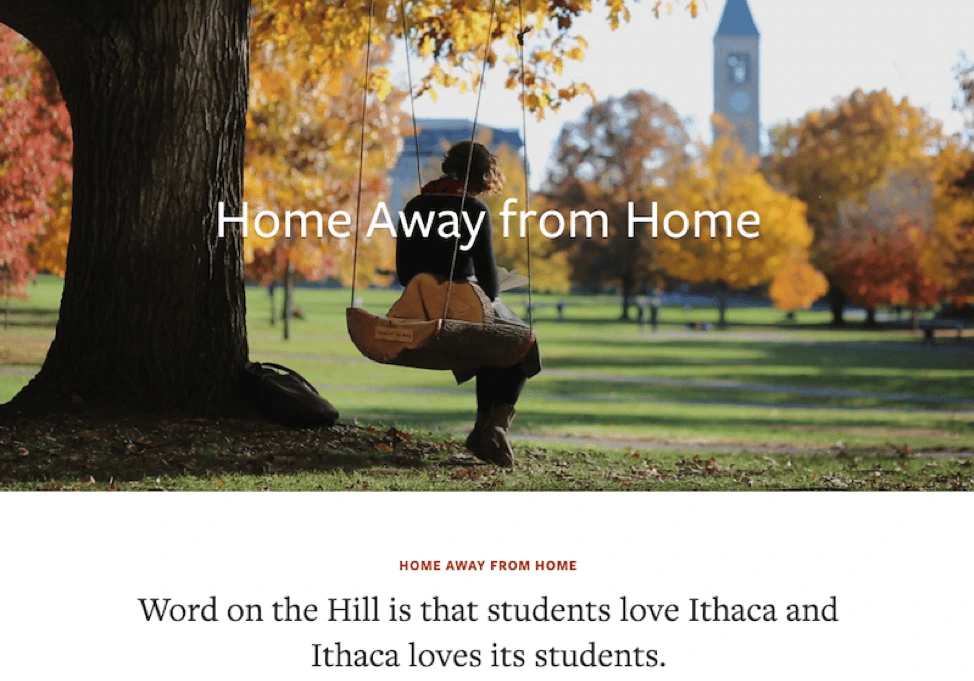
Source: Cornell
Your blog might also feature guest posts by alumni, video tours, listings of popular courses, and user-generated content.
And of course, the most popular blog posts should factor into your upcoming email campaigns.
Direct interaction with prospective students
As you can see, a successful recruiting strategy contains many moving parts. But, personal interactions (phone calls, campus visiting days, etc.) are still the most powerful of these.
According to Hanover Research:
“Despite increased digital activity, a recent survey found that the most effective marketing strategies for universities are nevertheless events‐based and involve direct interaction with potential students.”
After all, sometimes it really is about your newly upgraded facilities, swanky campus and student perks.
Most prospects who’ve gotten this far already know about your tuition costs, financial aid options, and faculty-to-student ratio. A successful campus visit just helps close the deal.
International student recruitment
Quick—what’s the Chinese version of Twitter?
If you’re recruiting students from China, you already know the answer to this question. (It’s Weibo, by the way.)

Source: Statista
As you can see, international student recruitment is alive and well at American colleges and universities.
As discussed earlier, your website needs to be user friendly and easy to navigate. This is particularly important if you’re appealing to international students.
Your site should help this target demographic understand the advantages of studying in America—and at your institution specifically.
Simple videos and infographics can also help smooth potential cultural barriers.
Do you already feature international students in your recruiting videos? If not, now’s the time to help them share their story—in their language.
As appropriate, include video links in your email campaigns. Share these on international social media channels.
Your website should also include pages dedicated to the specific needs of international students and recruits.

Source: Cornell
Reduce educational jargon
Higher education is adrift in educational jargon, which can be painful even to American-born students.
All those acronyms can be excruciating to international applicants. Whenever possible, cut them out and use a simpler description.
In the end, remember: Every positive interaction with a brand depends on clear communication.
Key takeaways
Now that you’re familiar with what it takes to build a successful recruiting strategy, let’s wrap things up by considering the real-life example of Western Colorado University. WCU’s creative team struggled to manage their recruiting strategy and materials, as they were too busy trying to keep their head above water.
Read Western Colorado University’s full case study here to learn how they dealt with their recruiting and marketing problem.
Is your school delivering a strong, consistent message with its brand marketing? Learn more in our free ebook: Branding in student recruitment
There’s a good reason optimizing productivity is the holy grail of the sales world right now.
You just know you can do a lot more if you use software to automate repetitive tasks that eat up your resources.
One of the biggest challenges in sales is to organize information from multiple data sources, identify priorities, and act on them.
If you’re reading this, then you already know you can tackle this issue (and others connected to it) with the right tools. But with a schedule like yours, it’s hard to find the time to build a list of potential solutions.
Assemble your tool stack from the list of options below to improve productivity and streamline your sales process.
How software sales tools get you in control of your time & resources
Whether you’re searching for leads or closing customers, your sales team needs all the help it can get.
The entire sales process can become significantly more effective when you:
1. Optimize the time you spend on repetitive tasks
The right platform integrates activities like emailing, calling, and progress-tracking to keep salespeople engaged and boost productivity.
Instead of dealing with mindless tasks over and over again, empower them to achieve more. Give them the tools to use their skills, knowledge and time to close deals.
2. Automate manual tasks to increase your productivity & focus
Limit your sales software stack to just a few tools to avoid tech overhead and process disruption.
What really moves the needle is automating tasks such as outreach, follow-up, and reminders for key activities. []
3. Collaborate in real time and disseminate best practices faster
When you keep information in silos, salespeople waste time testing approaches their colleagues already (in)validated through practice.
Build a scalable path to success by making it easy for sales reps to share their findings and collaborate in real time.
Look for software that can:
- auto-assign leads
- show you a deal’s status instantly
- allow salespeople to reply to each other’s unanswered emails in a common team inbox.
4. Improve consistency across your sales collateral
Mix sales with marketing & customer service to get higher success rates when pitching exigent customers.
When your sales proposals, e-signatures, reports, sales presentations, case studies or brochures look polished, you look more professional, too.
Implement tools salespeople can use to collaborate on creating and personalizing these assets fast and scalably, and reap the rewards.
5. Promote prioritization & faster decision-making
Some of the best sales tools on the market fixate on helping sales teams focus on what’s important.
Sales reps plan their time & efforts effectively when they have access to:
- complex lead scoring
- contextual insights
- behavior-based segmentation
Rich details about their prospect’s activity help skillful salespeople engage leads at the right moment and close deals faster.
6. Track progress effectively and gain more visibility
Another way you can use online sales tools to keep your pipeline flowing is to monitor progress with greater efficiency.
Use the right tech to integrate your data sources & sales activities, so you have one clear view of the process. Become better at setting realistic goals and forecasting revenue.
What makes online sales tools a good fit for you
Once you pinpoint the benefits you’re looking to get, consider these factors when evaluating your options.
The best apps for sales reps should:
- Have a strong onboarding process
- Include detailed documentation & help articles
- Feature user-friendly, intuitive design
- Have strong data security & privacy policies
- Provide automation for repetitive tasks
- Include robust features that work well together
- Be flexible and support customization
- Carry collaborative features that stimulate action
- Be compatible with your culture, needs & existing tools.
The software sales tool you choose should not:
- Have too steep of a learning curve
- Require spending more time to manage it than it saves
- Lock you into a closed ecosystem
- Create unnecessary burdens for IT & managers in charge of operations
- Require expensive custom development to integrate with your current setup
- Clutter your existing CRM with additional, useless custom fields
- Have obvious shortcomings that hinder your current sales process.
Some adjustment to new technology & processes is inherent when you implement new software, but that’s just in the short-term. Once they’re up and running, new tools should produce overwhelmingly positive results.
Now let’s dig into the options and see which of the sales tools below match your criteria.
Browse the best sales tools for your needs
The best tools for lead generation & prospecting
The selection of tools below covers a wide range of needs. From access to millions of GDPR-compliant leads to data enrichment, these software options can skyrocket your sales performance.
Features include:
- Prospect-tracking during key events, such as promotions or job changes
- Automated lead validation through AI-fueled sales assistants
- Surfacing new companies worth adding to your sales pipeline
- Quick & fair sales territory mapping
- Speeding up outreach with sales sequences and email & content templates
- Automatic confirmation of the lead’s intent to buy, and many more.
Which of these tools has the right combination of features for your sales team’s profile?
- Aircall
- Apollo
- CircleBack
- Close
- CloudSponge
- Cognism
- Conversica
- DataFox
- DealSheet
- DealSignal
- GetProfiles
- Groove
- Growbots
- Growlabs
- Leadfeeder
- LeadFuze
- LeadGenius
- LeadSquared
- LeanData
- MapAnything
- Nudge.ai
- Outreach
- PersistIQ
- RingResponse
- SalesWings
- ToutApp
- Vainu.io
- Velocify
The best software for your sales team’s productivity
Break down data silos across your entire company with these integration & automation platforms:
These are some of the best sales tools to capture & analyze customer-facing conversations. You can use them for both phone & video calls. Plus, they feed the details & notes into your CRM!
Use these encrypted file-sharing services to send larger sales collateral safely to your customers:
Create collaborative & flexible workflows for your sales team using any of these tools:
Help your sales reps collect valuable insights from your customers with professional, customizable and user-friendly surveys & forms:
Onboard new sales reps faster and share best practices across your team by recording & analyzing your sales videos. These software solutions help you personalize your outreach and add the human touch that can make the sale:
Get a lot more out of your email sales pitches with software tools such as:
- Cirrus Insight
- eMail-Prospector Pro
- FullContact
- GetResponse
- If No Reply
- Mailshake
- Nimble
- Opensense
- Reply
- Sales Navigator for Gmail
- SalesHandy
- Streak
- TruCadence
- Yesware
You can also try specific tools that increase productivity, such as:
- Share your unified, real-time availability
- Save hundreds of hours spent on back-and-forth emails with AI-automated availability matching
- Capture & annotate screenshots, then share them securely
- Use screen recording to explain complex ideas
- Keep all your sales collateral in accessible, safe cloud storage
- Get personality insights to use in sales calls & meetings
- Improve response rates for cold outreach through deep personalization
The most powerful software apps for content sharing & management
Almost half of your customers (47%) consume between 3-5 pieces of content before engaging with a sales rep, studies show.
With that in mind, it’s clear that a high-performing sales team needs a strong process to create & share sales enablement collateral.
Here are some of the most effective online sales tools to help you build & leverage professional, polished content assets.
Make it easier for your customers to close the deal with these software options for sending & signing documents:
Eye-catching sales collateral (such as presentations, proposals, case studies & one-pagers) plays a big role in showcasing what you excel at.
With the right tools, you can respond to RFPs faster, reduce your reliance on designers, and improve brand consistency & compliance across your assets.
Collaborate with your colleagues and showcase the level of quality prospects can expect from you when they become your customers with these software tools:
- Adobe Spark
- Bit.ai
- Canva
- Haiku Deck
- Infogram
- Lucidpress
- Piktochart
- Prezi
- Proposify
- Qvidian
- Slidebean
- Slides
- Visme
Create & deliver high-converting sales videos that speak to your customers’ needs and inspire them to act:
Make sure your sales materials are impeccable and optimized for increased readability:
Outstanding customer relationship management (CRM) systems
A complex yet flexible CRM is the beating heart of any sales team. Our list of online sales tools wouldn’t be complete without it.
From dominant players who set the standard to AI-fueled options, this list has it all.
Which one of these solutions will speed up your sales process?
Leading performance management software for processes & training
No matter how much technology helps, managing & training your sales reps plays the biggest role in sales success.
These are some of the best tools to manage your sales reps and ensure they can focus & feel motivated to close deals:
- Altify
- Always Hired
- Ambition
- Betts Recruiting
- Detective by Charlie
- HireVue
- Hoopla
- LevelEleven
- Showpad
- Veelo
- Xactly
The most advanced analytics & reporting sales tools
Extracting insights from your ongoing sales process fuels your improvement & growth. As a result, this makes reliable & accurate reporting essential.
Sales reps can track their performance and find key ways to upgrade their approach with these analytics & reporting tools:
- 6sense
- Aviso
- Bombora
- Clari
- Datanyze
- FullStory
- Hotjar
- InsideSales
- People.ai
- Tableau
- Voogy
- Whoisvisiting
The best sales forecasting & market intelligence software
If you’re looking for the most reliable sales forecasting tools on the market, the list below will point you in the right direction:
- Artesian
- Clearbit
- DiscoverOrg
- D&B Hoovers
- Emissary
- EverString
- FirstRain
- MadKudu
- Mattermark
- ProfitWell
- Prospect.io
- TrendWatching
- ZoomInfo
Key takeaway
Sales software goes far beyond CRMs nowadays. There are plenty of robust tools to increase response rates & sales volumes. Guide your actions and help your sales team prioritize their prospects with data-driven insights, and you’ll gain a significant competitive advantage.
There’s no time like the present to leverage artificial intelligence & powerful integrations to drive better results.
Where’s the best place to start?
Learn how Marq can streamline the sales process for your team while building a strong brand for your organization.
Infographics are a creative, interesting visual presentation of your ideas, statistics or research. These can be used throughout your brand’s marketing plans—whether on Pinterest or in proposals.
Related: 32 stats & facts that prove infographics aren’t dead
You don’t need to be an expert graphic designer to create your own infographic, as there are several pre-made infographic templates available in Lucidpress. The key is to find an infographic design that best suits your communication goal.
To give you a dose of inspiration, check out these unique and creative infographic ideas you can use to set your brand apart.
For the business startup: develop your brand.
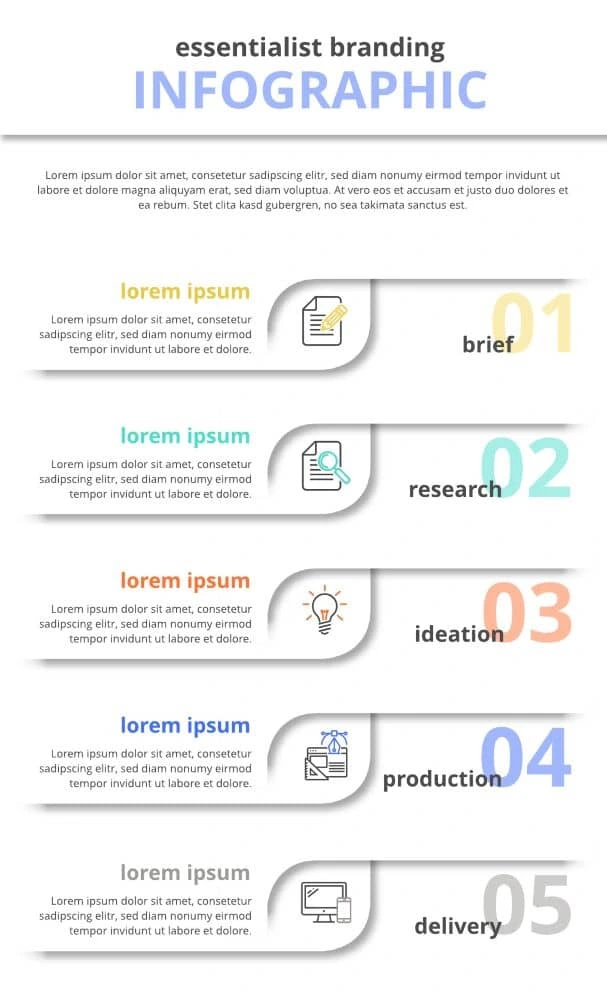
Give a clear, brief breakdown of your product or brand development with this clean infographic template. Creating a visual map of your business brand will help keep things on track, as well as provide an overview for your contractors, investors or employees.
This infographic template is clear, clean and includes enough room to get into the details without overloading your reader. Use each section to outline your brand vision from brief to delivery. Include this infographic in your marketing strategy or print it out for a quick reference.
For the chef: share your recipe.

Share your passion for the delicious by customizing this infographic template with your own recipe, step-by-step. Food, drink and other recipes make up some of the most shared content on social media sites like Pinterest, Tumblr and even Facebook.
This template has room to break down even complicated recipes. Each step has room to expand with details, as well as editable titles. Share this infographic on your blog, or print and fold into the size of an index card for your kitchen.
For the entrepreneur: sell your product or pitch.
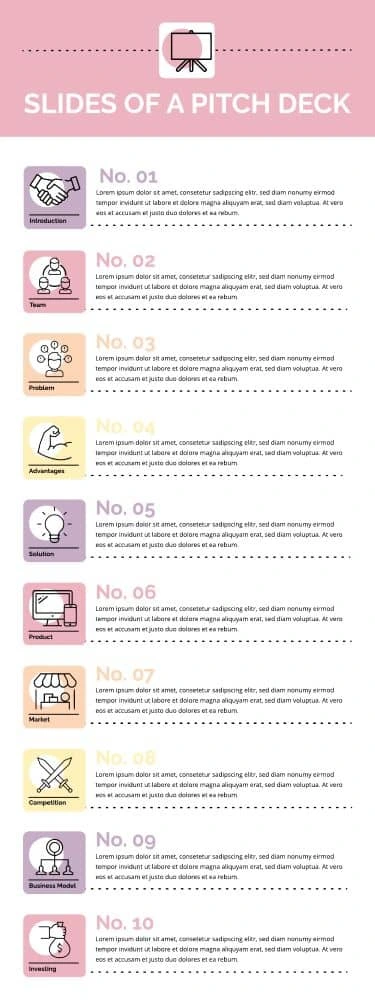
Minimize your speech anxiety by using this infographic template to plan out your business pitch. Using an outline is a proven speech tactic to look and feel more confident in your presentation. Notate your key points to keep yourself on track.
Each of the ten bullet points has room for a short paragraph. The clean, colorful and professional design is perfect for leaving with your audience to review later. Print it out after easily customizing it, and fold it into the size of an index card.
For the financial advisor: break it down step-by-step.
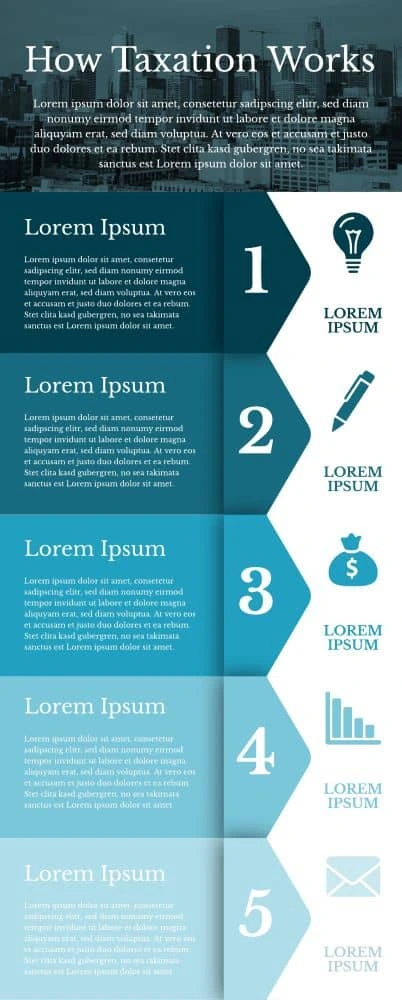
Build trust with your clients by helping them understand complicated processes without causing an overload of information. Educating your clients will help them make decisions and build your credibility as an expert in your field.
This template allows full paragraphs in a beautiful, professional presentation. The right side features steps, while the left serves as an in-depth description. It is color-customizable to accommodate your brand colors. Create a handout with this infographic template to explain taxation, loans, collections and other processes.
For the manager: guide your team to success.
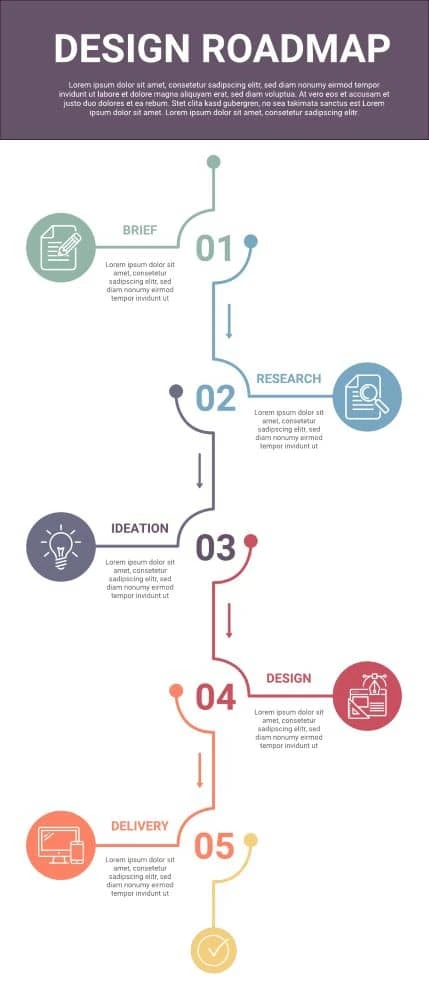
Give your employees clear direction with this visually interesting infographic. This roadmap to success may be used to outline goals, instructions or steps. Your team will love the change of pace, and you’ll love the results.
Provide a title and in-depth introduction, then edit the short descriptions under each of the colorful five steps. The leading lines guide your reader to the next step. Print this out for your staff members’ desks or include it in the new hire orientation.
For the marketing specialist: present your audience demographics and traits.
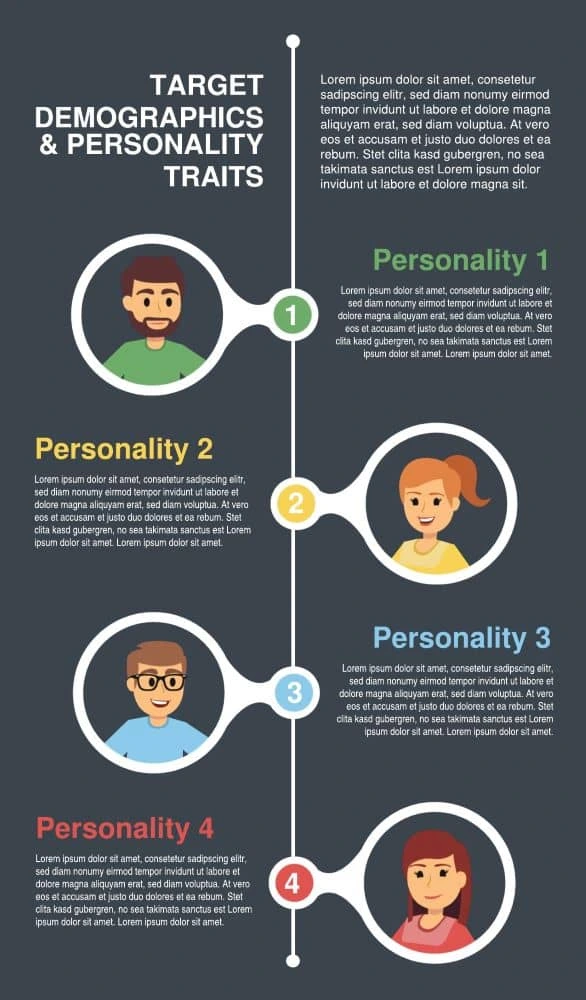
Buyer personas are often used in marketing strategies to organize audience characteristics, goals and needs into a visual representation, based off real research and data. Help your team picture clients or customers with this vibrantly professional infographic template.
This template gives you plenty of room to play, while leaving enough space to breathe. Each persona has a customizable title and description. The simple illustrations prompt your mind to imagine your real clients. After making this infographic template your own, add it to your annual marketing strategy plan, board presentation or product proposal.
For the personal trainer: remind your client of their goals.
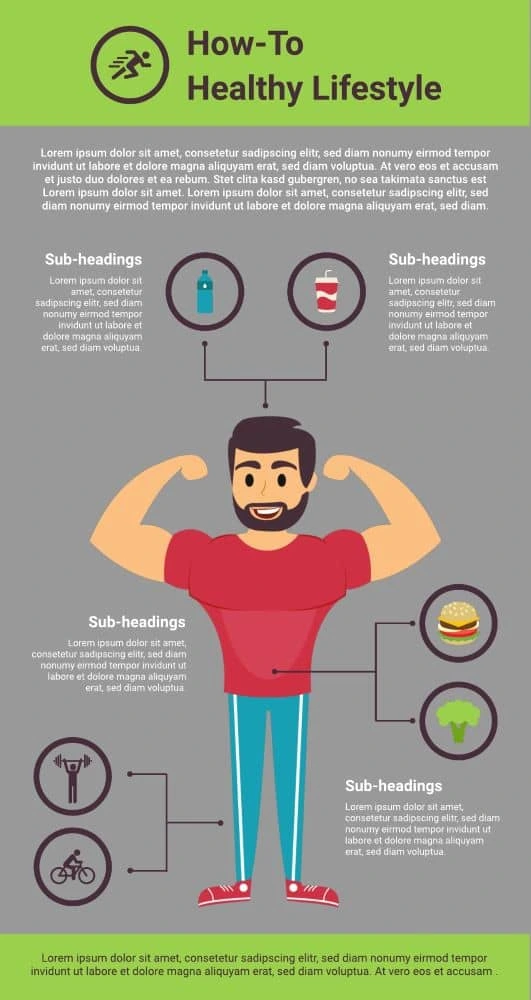
Help your clients visualize their health success with a visualization of their plan. Starting a new health and fitness routine might seem overwhelming, but this infographic will simplify instructions into an easy-to-digest quick guide.
This infographic features blocks of text and in-depth instructions without clutter. Use each segment to outline forbidden foods and daily exercise routines. After customizing the infographic template, print or email a digital version to your client as a portable, visual reminder of their game plan for success.
For the professional: stand out against the competition.
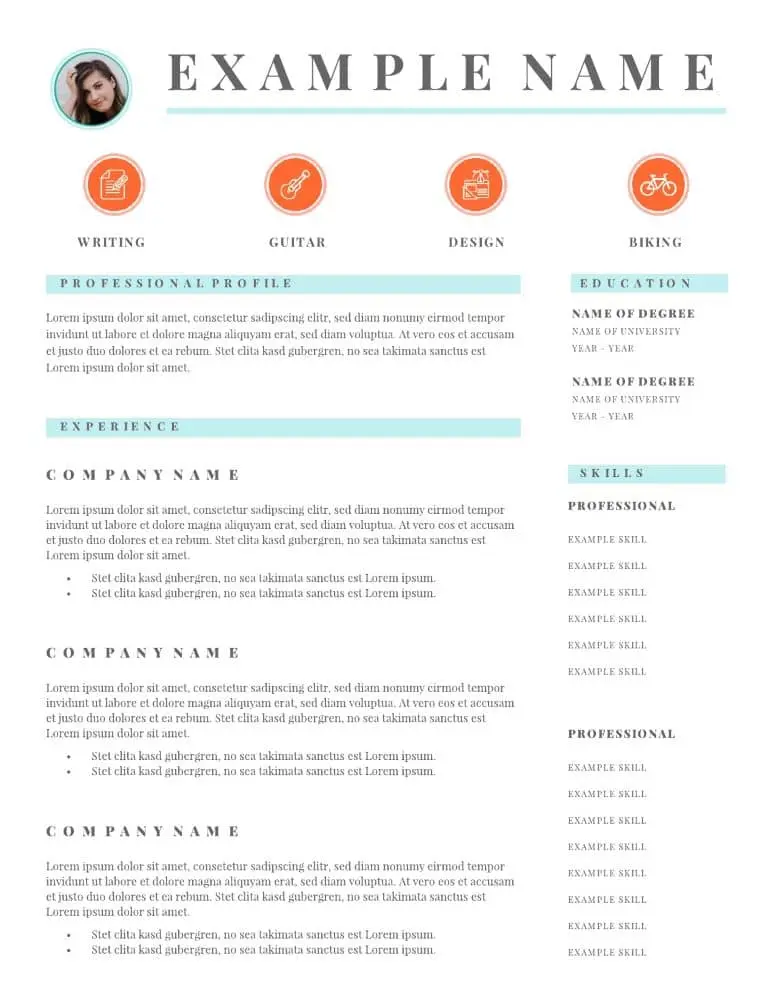
First impressions are important—and most employers expect one page that briefly summarizes who you are in the workplace. Make your resume stand out with a beautiful, unique resume.
This template takes advantage of the full page with multiple sections and columns. It feels professional but with a modern twist. Make it your own by customizing the color scheme, graphics and, of course, the text.
For the real estate agent: educate your client.
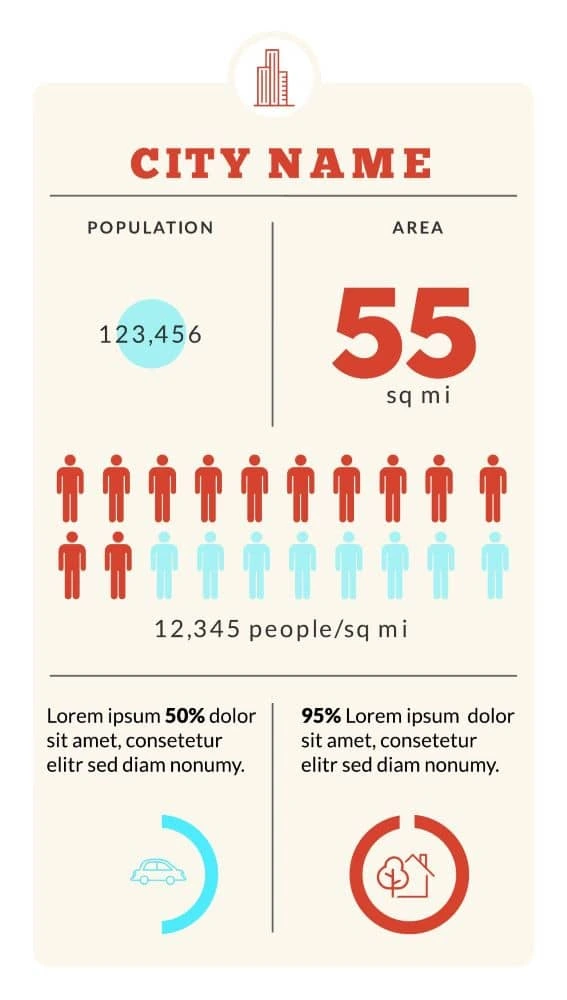
Real estate agents and realtors are well-known for providing personalized customer service. Educate your client on their new neighborhood or city with a quick guide to the local population, population density, area and other demographic insights.
Using this infographic shows your clients you care about taking the extra step. Each section is customizable and easily changed so you can update it as needed. The clean layout makes it easy to focus on the numbers. Add this infographic template to your client’s portfolio or to your personal website and listings.
For the teacher: give tips to success.
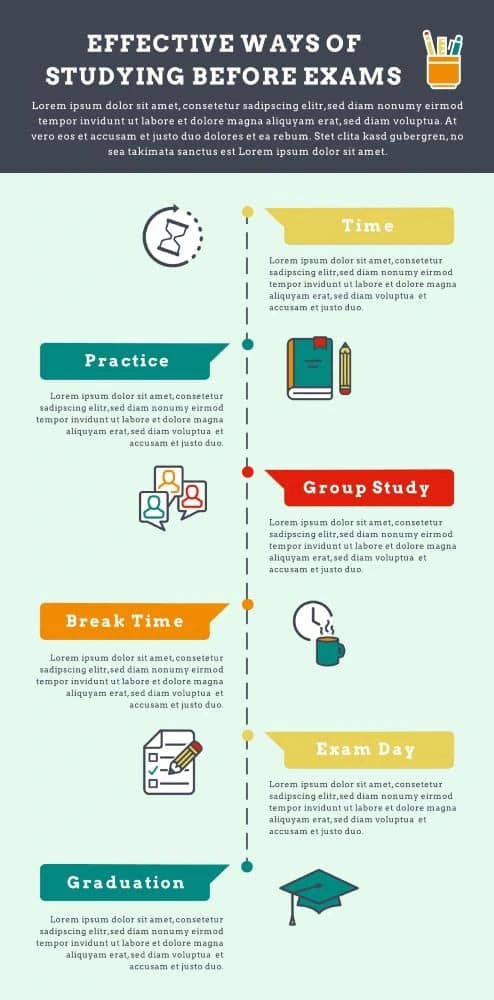
Help your students prepare for the SAT, ACT, SASVAB or other test by outlining effective study habits and tips. Outline a timeline or provide six different methods—it’s up to you with this very customizable template.
Knowing how to study is half the battle. Update the six titles and descriptions with your tips and other helpful information. Each segment allows for several lines of text. The thin dimensions make this a great bookmark for your students.
Ready to wow your audience with beautifully designed infographics? Lucidpress will help your brand send the right message.
You already know that sales collateral can help your sales reps close leads much faster. They speed up the sales process by offering prospects the information they need to make a buying decision.
But, which types of sales collateral should you use? And most importantly, which ones convert best?
Related: What is sales enablement and why it matters
Let’s find out—and let’s go over the top three tips you need to know if you want to get the most out of your sales enablement content.
Here are some of the best types of sales collateral and how you should use them.
Blogs & ebooks
Let’s say you want to make a brochure to promote your business. You google around for a tutorial, and you land on our blog, where we have a step-by-step tutorial to show how it’s done.
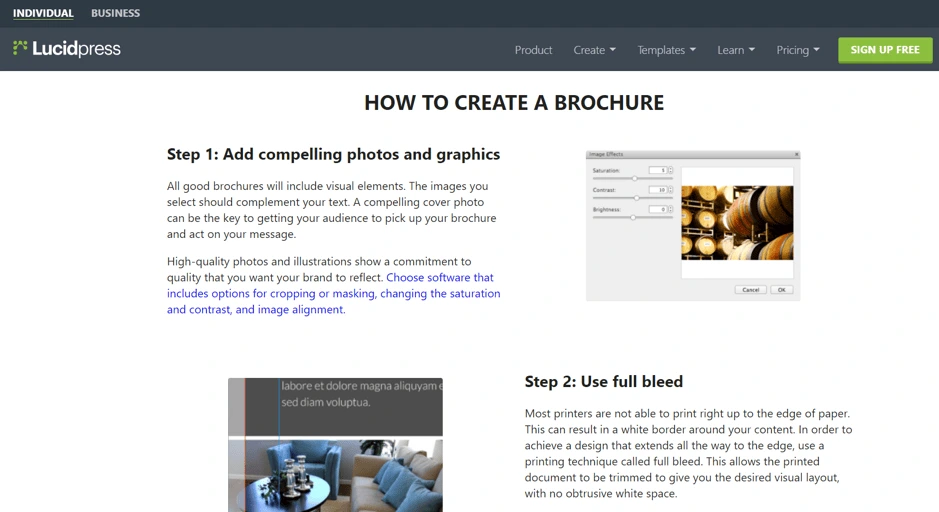
Next, you might sign up for a free account to use a template and quickly create your brochure.
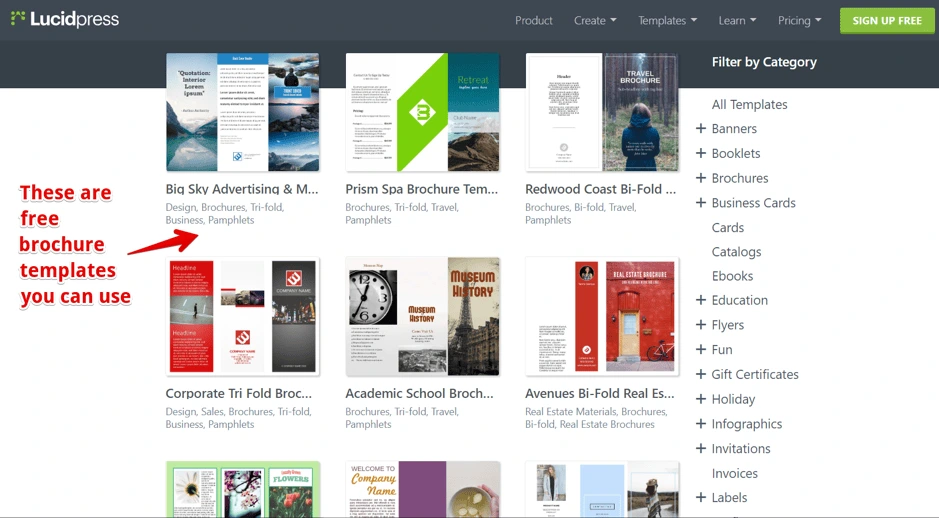
Now, here’s where the interesting part begins.
After a couple of days, you might hear from one of our sales reps. You’d already be aware and excited about our product because it helped you.
At this point, the job of the sales agent isn’t to arouse your interest, it’s to answer your questions. You’ve already completed the first part of the sales funnel before our team ever reached out to you—and as a result, you’re that much closer to conversion.
The bottom line is this: A blog, article or ebook can short-circuit the sales process and fast-forward it directly to the closing part. It helps you close more sales faster.
Landing pages
Here’s another example of sales collateral from our own brand. Our brand templating platform is well-suited for both individuals and large companies.
But, since our software serves different customers with different needs, we created two separate landing pages for them.

How does this help sales? Well, let’s say a marketing manager visits the business page and sees that she can request a quote right away. Now, the job of our sales agent is much easier.
He knows:
- why this person wants the product (for organizational use)
- which features & benefits to present
He isn’t bombarding the prospect with benefits and waiting to see what sticks. Instead, he knows exactly which of the buyer’s buttons to push.
The point is this: A landing page helps you segment your audience, and it helps your sales agents talk about what interests the buyer, which makes their pitch much more persuasive.
Case studies & testimonials
Case studies are one of the most effective types of sales collateral because they rely on a powerful principle of persuasion: social proof. []
According to Dr. Robert Cialdini, this psychological & social phenomenon is driven by the assumption that people around us are more knowledgeable about a particular situation than we are.

When a prospect reads a case study, it provides them with valuable information about the historical performance of your company. They’re able to project their business or brand into the narrative and “try on” your company as a partner. If you could help a business like theirs achieve success, it stands to reason that you could help them, too.
The bottom line is this: A case study not only makes the prospect want your product more, it also resolves objections a person might have about your company’s performance and trustworthiness.
Live sales presentations with product demos
Sales presentations are sometimes perceived as boring or annoying. Actually, they can be one of the most effective pieces of collateral—if your sales reps are properly trained.
For instance, what brochure, flyer or ebook could be more convincing than this? (Watch how sales come pouring in…)
The bottom line is this: When delivered properly, sales presentations can be one of the most compelling types of sales collateral out there. People buy from people, and live presentations are a great way to build that relationship.
Explainer videos
The biggest disadvantage of a live sales presentation is that you cannot scale it. For instance, you can’t demo a product in front of a million people at once, right?
Actually, the internet can help you do that. For instance, if we bring one million people to our website, they can see in a matter of seconds how our product can help them.
Source: Lucidpress.com
As you can see, it doesn’t have to be a super complicated video production. And you don’t have the logistics of a live sales presentation—where you have to reserve a room, take care of your guests, make sure you have the proper equipment, and so on.
The bottom line is this: An explainer video helps your prospect have an a-ha moment that brings him closer to the buying decision. It’s a scalable way to create interest & desire with your clients before a salesperson steps in.
Brochures & flyers
What do you do when a sales agent offers you a flyer or a brochure? You probably thank them politely and throw it away around the corner, right?
Well, it doesn’t have to go that way. Not if it’s clear that your brochure will provide value to the reader.
Here are a few tips to make brochures & flyers some of your most effective sales collateral:
- Put the benefits front & center—don’t just talk about your company; tell prospects how their life will be better with you.
- Create a compelling offer (like a discount or a free sample) that’s exclusive to your print materials.
- Take advantage of great design—a vibrant, colorful brochure with neatly organized sections looks far more professional than a quick job done in Microsoft Word.
Sales scripts
There are basically two ways to learn anything:
- The slow, risky way: You can try every idea and fail until you eventually find the formula for success.
- The fast, sure way: You can skip all that and do what’s already proven to work.
Instead of letting your sales reps waste time & money to learn what works and what doesn’t, why don’t you provide them with sales scripts that already work?
All you have to do is take aside your top sales agents and ask them how they do it.
The bottom line is this: Sales scripts are one of those growth hacks that can bring you 80% of the results with 20% of the effort. Plus, it costs next to nothing to implement.
Other useful sales collateral types
Sales collateral includes any materials that help reps close deals faster by offering prospects the information they need to make a buying decision.
The format can be just about anything. Above, we discussed some of the most efficient types both on and offline.
Here are some other types of sales collateral that can be handy for your sales agents:
- FAQ sheets
- Buyer’s guides
- Newsletters
- Email templates
- Technical data sheets
- Slide presentations
- Objection-handling sheet for prospecting calls
Sales collateral tips & tricks
Stay consistent with your branding
If you’re a beer drinker, you can probably guess which product is being advertised below, right?

It’s Carlsberg, and that is a banner they used at the Euro 2006 Football Cup in France. They couldn’t use their brand name due to a French law that forbids advertising alcohol or cigarettes at sporting events (even though they were a sponsor).
But because they kept their branding consistent throughout the years, they had the confidence to leave off their logo (a move few brands could pull off), and people still recognized the brand.
No matter what type of sales collateral you use, make sure you convey:
- the same value proposition
- the same benefits
- the same tone of voice
- the same keywords
- the same fonts
- the same colors
- the same brand personality
This will help you build a strong brand over time that inspires loyalty and trust in your customers—and recognition and credibility with your prospects.
This level of consistency doesn’t happen by accident, it’s usually the result of a clear internal structure that defines who owns the brand, who uses it, and how it’s protected.
If you want to understand how companies approach this at a strategic level, you can learn more about Brand Enablement vs Brand Management vs Brand Governance.
Collaborate with other departments
Different departments have different insight that could help prospects make buying decisions quicker.
For instance, digital marketers could look into their analytics and find out that certain features of your product are used more often than others.
Sales reps, on the other hand, have direct objections from the field.
If your departments communicate with each other, you can get maximum results out of your sales collateral.
Make sure your sales collateral stays up-to-date
At some point, you’ll probably have to make changes to your sales materials. Maybe you’ll go through a rebranding. Or maybe you just want to refine your value proposition.
No matter the changes, you must make sure that everybody stays on the same page. Otherwise, you might confuse your prospects.
There are two ways to avoid this.
The hard way: You track all the edits you’ve made to your sales collateral in a document you share with all team members. Of course, this is time-consuming, and you can easily make mistakes.
The easy way: Use a brand templating platform to make updates much easier, and you can be 100% sure there are no errors because your changes will sync with everyone else.
For instance, with Lucidpress:
- Your team has access to all brand assets in one place.
- You can lock down branded elements in your templates that should never be changed.
- You can collaborate in real time to make sure your brand stays consistent throughout every channel.
Before creating your next sales collateral…
No matter what type of sales collateral you create, you should answer the following questions:
- How does this material help the prospect?
- How does this material fit into the buying journey of my clients?
- What are the top 3 to 5 benefits that matter most to my clients?
If you can answer these questions, you’re on the right track to create compelling sales collateral that streamlines the process and helps your team close more deals.
Learn how you can lead your organization to creating an effective sales enablement program with consistent storytelling across your sales org.
When you’re managing a busy sales team, you might fall into the trap of “anything goes.” It doesn’t really matter how your reps take someone from stranger to customer; it matters that they’re doing it, right?
Not necessarily.
A mismatched sales team could deliver promises they can’t keep, fail to convert leads, and be generally unproductive—something that costs companies at least $1 trillion every year, along with poorly managed leads.
Related: How to create engaging assets for your sales team
What if I told you all of those issues could be prevented by spending a few hours creating one single document?
Spoiler alert: You can. It’s called a sales playbook.
In this guide, we’ll show you how to create a winning sales playbook, with tips & tricks to help you format your own.
What is a sales playbook?
A sales playbook is a document that outlines everything your sales team needs to know to succeed.
It covers basic elements like a rundown of the products or services they’re selling, while also diving into detail with things like your brand’s tone of voice, cold email scripts, and information about the people they’re selling to (i.e. buyer personas).
In a nutshell: A sales playbook is the one document your entire sales department needs to close deals… and close them often.
Why bother creating a sales playbook?
I know where you’re at right now: You’re sick of creating boring documents that lurk in the bottom of your Google Drive, never to be seen again a few weeks after you initially introduced them.
Trust me when I say sales playbooks aren’t like that.
These documents contain everything your sales reps need to make a sale, which is bound to lead to more efficiency.
A report by HubSpot found that salespeople spend just a third of their day talking to prospects. The other time is spent writing emails (21%), entering data (17%), and prospecting or researching leads (17%). []
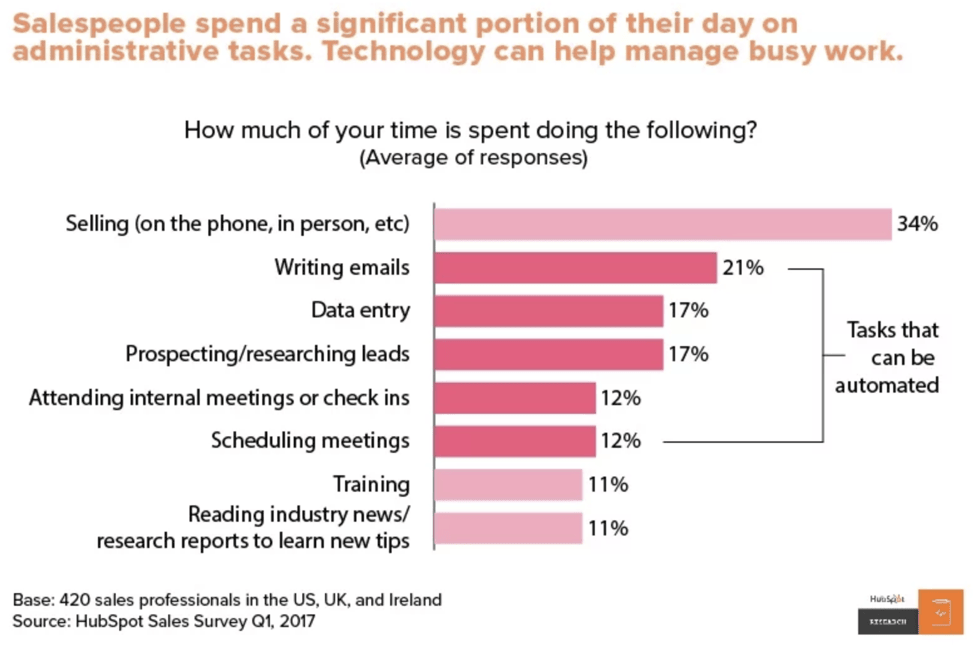
Source: HubSpot
A sales playbook will solve all three problems because:
- It contains scripts for cold emails.
- It shows sales reps how to use their CRM more effectively.
- It specifies the step-by-step process for finding warm/hot leads, while detailing buyer personas so they don’t spend time trying to convert irrelevant people.
That’s over half of their daily schedule that could be better-spent talking to customers.
But if that’s not enough to convince you, remember that a sales playbook is the “ultimate guide” for your entire sales team.
Think about the reputation your business gains when your sales representatives are discussing your brand to the public day-in, day-out. You want to make sure they’re giving a good impression, right?
Sales departments who reference an in-house sales playbook are always on the same page. They know what’s expected of them, understand how to communicate without going against your brand values, and stick to sales processes you know aren’t too pushy or forceful.
That’s bound to lead to brand consistency—and the chance to increase overall company revenues by as much as 23%.
You’d be mad to miss out.
What should my playbook include?
Are you convinced it’s time to create your own sales playbook?
Before you rush off and hold a sales department meeting to run through the notes you’ve put together, think about what actually needs to be included in your document.
That usually includes the answers to these questions:
- Company info: Why did your company start? Who owns or manages it?
- Your products/services: What does it do? Why does someone need it?
- Brand guidelines: Are you a cheeky brand known to tell the odd joke, or are you serious and professional?
- Buyer personas: Are your typical customers aged 55+, live in California, interested in expensive cars and own a software company?
- Sales & buying processes: Do you typically offer a free trial before convincing someone to buy? Or is your product a one-off, low-value purchase that usually converts after sending 3-5 targeted emails?
- Selling methodology: Do you use cold emails or account-based marketing tactics?
- Pre-made content: What should your emails, follow-ups & cold call scripts look like? What additional sales enablement content do you need?
- Tools they’ll need (with access details): Which CRM do you use and how can they access it? Do you use any other sales tools or software?
- KPIs: How does a sales rep know they’re performing well? How many sales are they expected to close per week? When do they need to improve? Learn about specific sales KPIs in this post.
- Payment for commission: What percentage does your sales team earn on deals they close? Do all sales generate commission? If not, what’s the qualifying criteria?
How to create your own sales playbook template
By this point, you’ve got a solid idea of what your sales playbook should include. What you might not be so certain about is how you’ll package so much information in one document.
It’s a tricky situation: You don’t want it to be overwhelming (to the point where it becomes a chore to read), yet you also want to arm your sales department with enough information to be productive.
The good news? You don’t have to start from scratch.
There are hundreds of other sales templates that you’re able to customize by simply searching for them in Lucidpress—like a proposal or presentation, for example.
Simply add your information and create more pages, and you’ll create your own professional sales playbook that’s almost ready to distribute across your entire team:
Source: Bright business ebook template
The sales playbook you create in Lucidpress is totally secure. Links are protected, meaning only your team can access it—and it’s not visible to Joe Bloggs if the link accidentally goes public.
3 tips for maximizing the value of your playbook
By this point, you’ve got a fancy-looking document that’s in review—and almost in the hands of your sales team.
Take some time to check whether your sales playbook is easy to read. Nobody is going to extract value from your document if they can’t understand it, right?
Here are three incredible tips you can use to maximize the value of your sales playbook.
1. Deliver a mini-training when introducing your playbook
Chances are, your sales team won’t read your playbook if they aren’t motivated to do it. But, you don’t want to be jumping down their throats or sending daily reminders to open your playbook. Both of those are a total waste of time.
That’s why you should consider delivering a mini-training when you’re introducing it. Bring your playbook up on the big screen and invite the entire department to see it. Then, run through the entire playbook from start to finish, and end with an ask for questions.
That way, you can spot areas that need improving before they start regularly referencing it.
2. Don’t start from scratch
It’s easy to get carried away with your sales playbook template and want to overhaul your entire sales process. However, starting from scratch could do more harm than good.
Start by analyzing the content you already have, instead.
Does your team already use email or phone call templates? Do you have a branding guidelines document that you send to freelancers? Did your CEO record a video on why they started the company in the first place?
Each of these sales playbook features can be copied and pasted—saving time and effort.
3. Ask for feedback
Whether your cold email script has an extra comma or you’re missing a key trait your typical customer has, some issues are easier to spot when you get a second opinion.
That second opinion should come from your experienced sales reps, because they’re the people who know your target customers inside out, and they likely have their own techniques proven to nudge a lead into purchasing your product or service.
However, you should get feedback from all staff, not just your best sales reps.
Why? Because other members of staff are likely experienced with each part of your sales playbook. For example: While a sales rep might have a cold email template, it’s wise to have a copywriter look over it for any spelling mistakes or recommendations to make it easier to understand.
So, invite your:
- CEO or founder
- Copywriting team
- Product marketers
…to glance over your sales playbook template before you begin to roll it out.
It sounds simple, but it’s a fantastic way to prevent small mistakes from becoming big, conversion-blocking problems.
Key takeaways
As you can see, creating a winning sales playbook isn’t an easy task for any sales manager.
You’ll have to dive in and analyze your sales process, create solid buyer personas, and give a full rundown on how to use your product or service before it becomes a lead-dripping ultimate guide.
But as hard work it is, remember it’s the only document your entire team will need to become a sales powerhouse—and grow your business at a rate you’ve never seen before.
There’s more to crafting a memorable brand than putting together a quick logo and color palette. Instead of calling it a day there, successful brands take the time to design a well rounded brand identity – one that combines a strong purpose with intentional visual and written elements.
Here, you’ll learn the seven key elements of brand identity design, and how they work together to build a consistent brand your audience will love.
New to the branding game? Let’s go over some important context.
What is brand identity?
A brand is the sum of how a person, product, or business is viewed by its audience and/or customers.
Brand identity is how a business wants to be viewed.
These two ideas often go hand in hand, but can sometimes be at odds, depending on how well a brand is able to cultivate and maintain their brand identity.
If we zoom in a bit, brand identity design includes everything from logos, and typography to colors, packaging, and messaging. Ultimately, the goal here is to create an ecosystem of visual and written elements that complement and reinforce your brand’s ‘why’. Once established, your brand identity can both attract new customers and help your current customers feel at home.
That’s why It’s vital that your brand identity stays consistent. Because they represent and reinforce your brand’s purpose, your brand identity elements need to be clear and consistent wherever they might appear.
Why is brand identity important?
If you were about to interview for a big new job, you wouldn’t show up in sweatpants. You’d want to present yourself as a well put together, competent, and approachable candidate.
The same idea applies to your brand. Your brand identity is the face of your business, and you want to put your best face forward for your audience.
Along with building credibility and trust, a strong and consistent brand design should also give people insight into what your brand is all about. For example, do you use bright, pastel colors to convey a cheerful, playful tone, or do you employ detailed line art in your logo to imply an artisanal level of quality? When you’re thinking about what you want your brand identity design to look like, consider what it will feel like as well.
To give you a better idea of what we mean, take a look at these three brilliant examples of brand identity:
3 examples of strong brand identity design
When you’re designing your own brand identity, there’s no need to start from scratch. Here are just a few examples of great brand identity design to get some inspiration from.
And while it’s important to create something that’s uniquely your own, there’s nothing wrong with taking a note from some of the greats.
Hootsuite
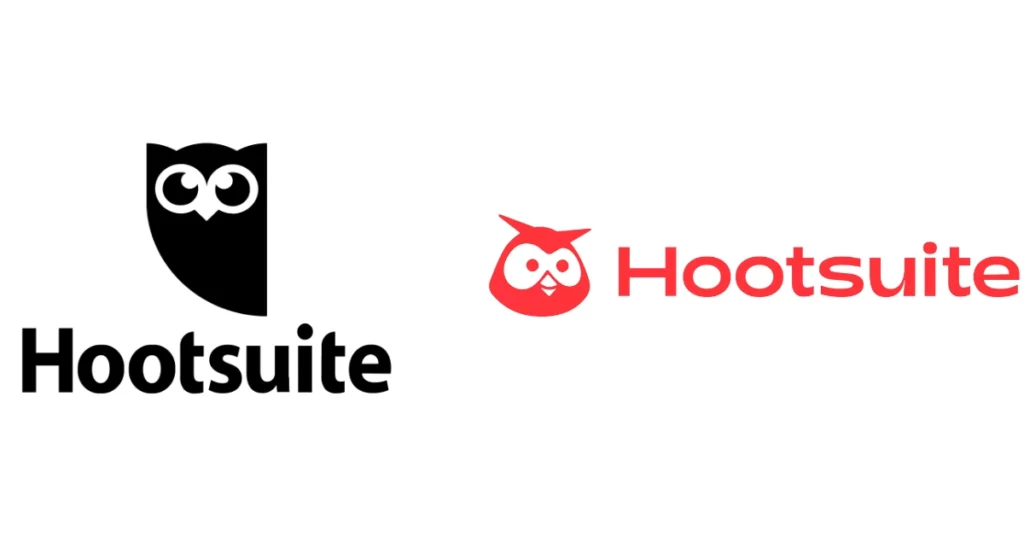
If you look at a lot of tech brands today, you’ll notice that many tend to use similar no-fluff, utilitarian branding principles. While there’s nothing inherently wrong with this, it can become hard to differentiate brands after a while.
We like how Hootsuite’s redesigned logo injects some new color and personality into the social media marketing platform. It’s friendlier, more approachable, and most importantly, more human.
Kodak
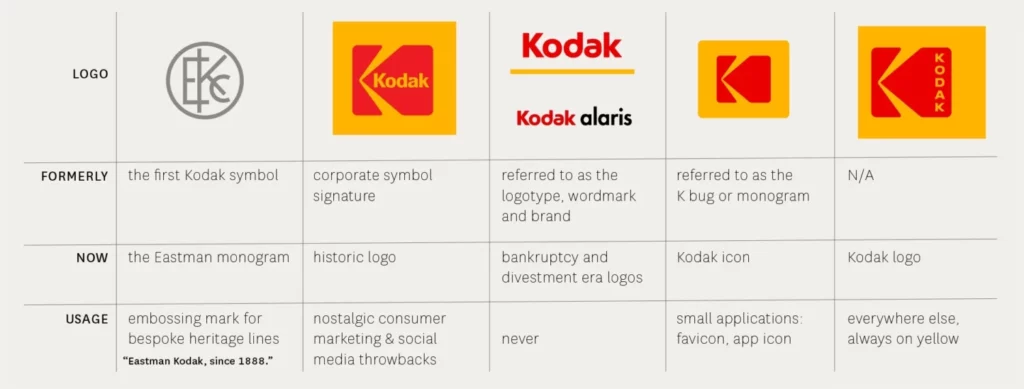
Sometimes, the best rebrands happen when you go back to your roots. In 2006, the company had already eliminated the big red “K” block in favor of a simpler wordmark, but then they decided to reverse the decision. Using a fresh sans-serif font, they were able to create a simple and fresh new take on their logo and typography. It just goes to show that sometimes the smallest of changes can have a big impact.
We love how easy these guidelines make it to view the history of Kodak’s branding, along with the when/how/why to use each design.
Burt’s Bees

In a beauty industry full of incredibly bright, futuristic, or luxurious branding, Burt’s Bees stands out for its humble, down-to-earth aesthetic. With muted colors and thoughtful artwork depicting the brand’s founder, the brand calls back to its purpose – to honor the natural world by creating environmentally-conscious products.
How to build a successful brand identity
Now that we’ve taken a closer look at some great examples of brand identity design, let’s dive into the seven elements you’ll need to build a brand identity your audience will love.
1. Establish a clear purpose and position
The first part of establishing a brand identity is determining your purpose and goals. Brand purpose is the ‘why?’ behind everything you do. Why does my brand exist? Why is my product or service better than the competition? Why does our brand look/feel/communicate the way it does?
According to Arielle Jackson, startup founder, and Google veteran: “Your purpose is how you want to change the world for the better.” Jackson also recommends this diagram as a guide for determining your purpose:
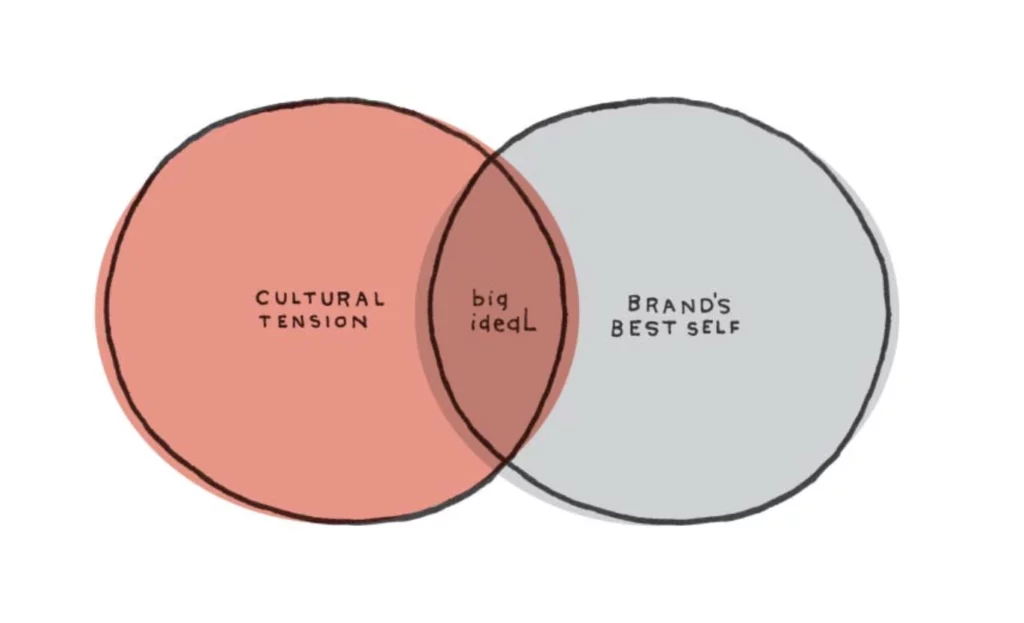
Jackson explains the diagram like this: “In one circle, you have cultural tension. This is what is happening in the world that’s relevant to you. In the other circle is your brand’s best self. This is what your company delivers at its prime,” says Jackson. “The intersection of these two areas is… ‘the big ideal’ — or your purpose.”
For a great example of a succinct, tangible corporate purpose, check out this statement from Apple:
“Apple’s 100,000 employees are dedicated to making the best products on earth, and to leaving the world better than we found it.”
Not too shabby, right?
You’ll also want to spend some time thinking about brand positioning, or the unique value that your brand brings your audience. Think of this as your brand’s ‘elevator pitch’. All the work done here will inform your strategy as you create a logo, decide on a color palette, etc.
Zooming out, brand positioning is the process of making your purpose actionable. By naming your target customer and differentiating yourself from the competition, you’ll lay the groundwork for your brand to accomplish your purpose.
2. Conduct thorough market research
A brand’s purpose and positioning can (and should be) informed, at least in part, by market and customer research. Research is crucial to understand the “cultural tension” described in the previous section. For beginners to market research, there’s a wealth of content online to help get you started.
Oftentimes, one of the best ways to conduct market research is to simply talk to a lot of people. For example, phone interviews allow your teams to have detailed, human-driven discussions with your customers – something that could be helpful if you want to appeal emotionally to your audience.
Beyond phone interviews, online survey tools, like Survey Monkey, are a fast way to gather a lot of information. Don’t forget to look into available government resources too, like this helpful toolkit from the US Small Business Association.
Good market research can also help you determine your main customer personas, a term that is a slightly different concept than “target customers.” Your customer persona(s) go beyond just defining what problem a customer has and gets into the nitty gritty details behind your focus customers’ professional and personal traits. Defining these traits will help you know what kind of personality your brand should have to appeal to customers, which brings us to our next point.
3. Craft a loveable brand personality
“If your brand were a person, what would they be like?” It might be a bit cliché, but this is a smart way to think about brand personality.
If you get your brand’s personality right, it will shine through in every part of your brand identity. Brand personality greatly impacts the voice and tone used in your marketing materials and other communications. Why is this important? Your customers will get mixed messages if your brand’s personality isn’t well established, and they may have trouble connecting emotionally with your brand.
If you’re having a hard time getting started, here’s an exercise to try: Which celebrities or fictional characters best represent your brand? Is there an actor or actress, musician, or public personality that embodies the same traits as your brand? This could be a good starting point for nailing down different aspects of your brand’s personality.
Once you’ve pictured the kind of person your brand would be and listed off a few attributes they have, it’s helpful to think about how your brand will come to life through your voice and tone.
Here is how we defined Marq’s brand personality.

How did we do?
4. Make a memorable logo
Your logo is central to your brand identity design. It’s the piece of your brand identity that most people will be exposed to. It needs to line up with all the other elements of your brand identity and the broader emotional appeal of your brand.
A few guidelines Marq CEO, Owen Fuller suggests on making a logo with an impact:
- Make it memorable. Are there unique elements/colors/etc that make it stand out?
- Make it simple. Can a 3rd grader draw it?
- Make it versatile. Can you apply it across multiple mediums and channels?
- Make it evocative. Does it make you something?
- Make it timeless. Will it work as your brand grows?
For example, we all know this logo:

Disney has built a brand that evokes nostalgia and magic. The playful script oozes creativity and fun, which tracks with the overall brand Disney has established over the decades.
A memorable brand is often the simplest brand. Take a look at the logos of the world’s top 3 brands (according to Kantar):


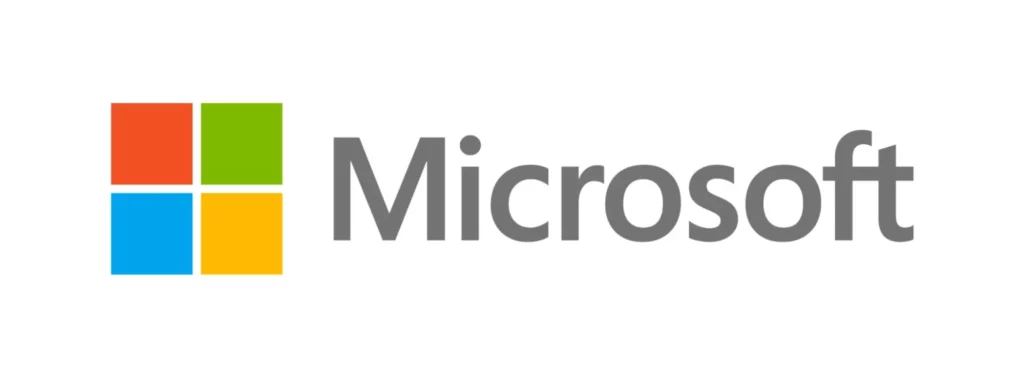
What do all three have in common? Intentionality in color, design, and simplicity.
Speaking of simplicity, choosing a simple logo makes it easier to apply to different mediums. Whether you’re designing for a product, digital marketing, or print, actively designing with every channel in mind will ensure a successful logo development from the very start.
5. Choose an attractive color palette
Evocative and full of emotional potential, your brand colors are often just as memorable as the logo design. Consider looking into the dynamics of color theory when choosing the palette that best represents your brand.
A lot of color psychology is intuitive, like blue expressing calm and red and yellow expressing passion and energy. Depending on the tint or shade of a color you use, that emotion can be adjusted. A tint is a color mixed with white, making it lighter, and a shade is a color mixed with black, making it darker. A lighter tint of blue conveys tranquility, while a darker shade of blue often conveys trust, an effect that many banks use in their color schemes.
Be aware though that color connotations can differ wildly between cultures. For example, while yellow is often seen as a bright, happy color in the US, it is linked with mourning and death in places like Latin America and Egypt. If your brand plans to do business internationally, it’s important to double check that the colors you want to use don’t have any unintended meanings.
When it comes to creating a workable color palette, designers should select a set of primary and secondary colors to be used for specific purposes. Staying consistent with this palette is key – the more you use it in the same way, the more you’ll be able to build brand equity over time.
A few more considerations on picking a great color scheme:
- Make sure your palette has enough contrast when paired with text. This ensures all your marketing materials are easy to read and accessible. Use this tool to double check your palette.
- Double check that your palette reinforces the emotions you want to evoke. If your brand is all about health and wellbeing, strong colors like burgundy or magenta might be at odds with your intended brand identity design.
6. Pick the right typography
Stressing about finding just the right font may lead others to brand you as a “typography nerd,” but you’ll come out ahead when you pick a font that works in harmony with your logo and colors.
Fonts are powerful. The most famous fonts are recognizable even when taken out of context. You’ll want a single primary typeface to lead your brand design, which should work well with your logo and color palette. It should also, like your logo and color palette, be simple.
Here are a few tips to keep in mind when choosing brand fonts:
- Don’t use overly intricate fonts that are hard to read.
- Provide font guidelines for headlines and body text.
- Don’t use more than two font families on a single document. (If it feels like it’s too much, it’s probably too much)
- Do mix contrasting fonts (such as a serif and a sans-serif).
- Give guidelines on font size and line length in your brand guide.
For example, here are several font pairings that work well together:
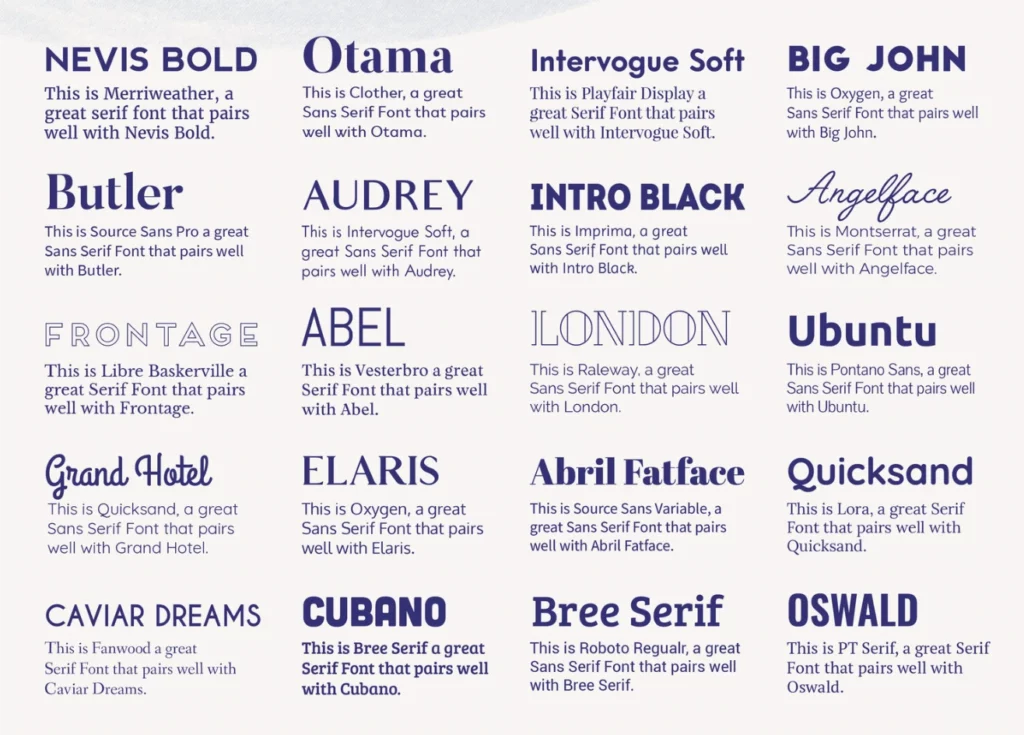
7. Leverage on-brand graphics and photography
The final step in creating a brand identity is to build an extended visual language with supporting graphics, design assets, iconography, and photographs.
Take a look at Google’s Visual Assets Guidelines to see how they carefully explain their take on icon design.
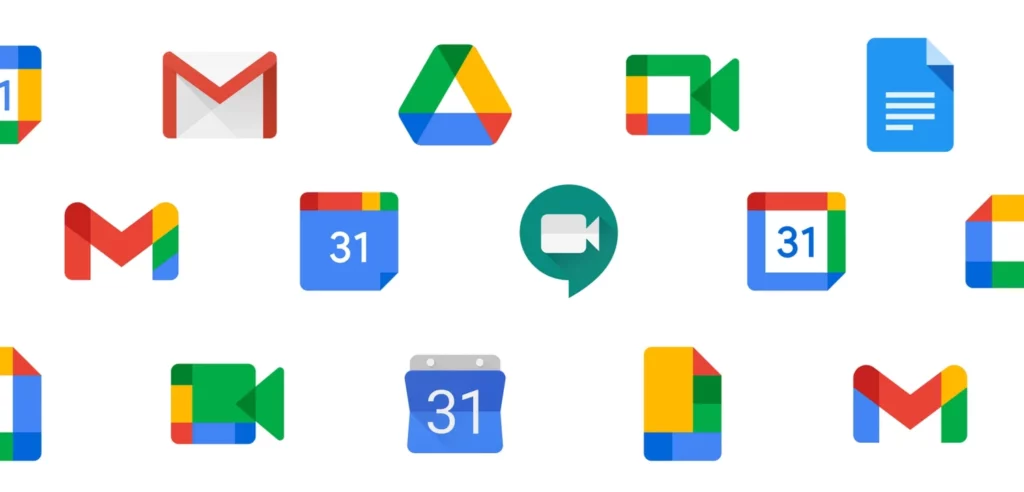
They cover a whole range of brand design considerations:
- A reductive (or “flat”) approach
- A preference for geometric shapes
- Icons always face front
- Straight, hard shadows as opposed to curved, soft ones
- Standard background colors
- Icons align to the pixel grid
- Icon padding according to shape
Because of Google’s close attention to their extended visual language, when you see a Google icon, you know it’s a Google icon.
Perusing other brand visual guides can help you get a better idea of what potential visual elements could work for your brand.
Maintaining a brand identity
Once you’ve got the perfect brand elements to work with, it’s time to secure your brand identity together with a comprehensive set of brand guidelines.
Brand guidelines offer an easily accessible playbook to educate your teams on how, when, where, and why to use each of your brand identity elements. With these guidelines, anyone from your company should be able to put your brand to work in a consistent way.
In many modern organizations, these guidelines live inside a brand portal. Once you have these guidelines in place, using customizable templates can help save your team valuable time. Instead of creating every piece of marketing collateral from scratch, leveraging custom templates makes it easy to quickly create on-brand materials, even if you’re not a graphic designer.
Key Takeaways
While there’s always the possibility of redesigns and re-evaluation ahead, starting off with a strong, confident brand design and unified brand identity will add clarity and consistency to everything you do. Over time, your unique brand identity will be the one that pops into people’s heads when they have a problem you can solve.
Ready to start building on brand? Sign up for free and explore our brand template library today.
Are you sitting at your desk waiting for that sweet, sweet logo inspiration to strike?
No matter whether you’re a consultant looking to brand your business or a designer looking for new ideas, this article will get you unstuck.
Related: 9 excellent logo redesigns for famous brands
Below, you’ll discover different types of consulting logo ideas from some of the biggest consulting brands in the world.
Whether you’re looking for designs with hidden meanings or something more traditional, the examples below are bound to stir up some creative juices.
Before diving into our pool of inspiration, though, let’s see what makes a good consulting logo and what mistakes you should avoid.
3 golden rules to create a modern consulting logo that stands out
Make sure your logo doesn’t misrepresent your business
The color, the weight of your fonts, the spacing between the letters—everything stirs an emotion.
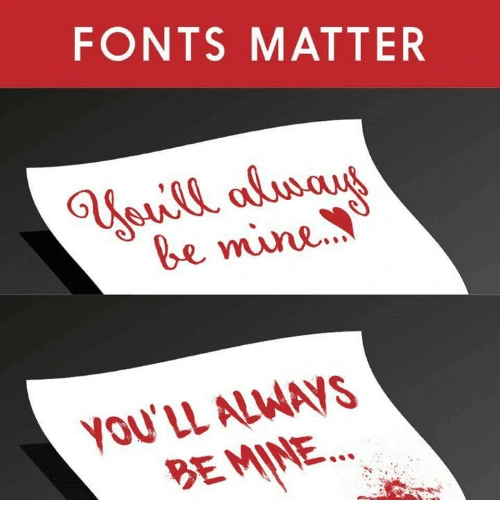
You have to make sure your logo conveys the right story, the right emotion and the right voice for your brand.
For instance, if you want to be perceived as an expert, you wouldn’t want an overly playful design.
Make sure your logo is clear and not too complicated
Yes, it’s true, your logo should tell a story. But, this doesn’t mean a person should figure it out in the blink of an eye.
Here’s what I mean. If you look carefully at Amazon’s logo, you’ll see an arrow pointing from A to Z. This is because they want to show people that they can find almost any product on their platform.
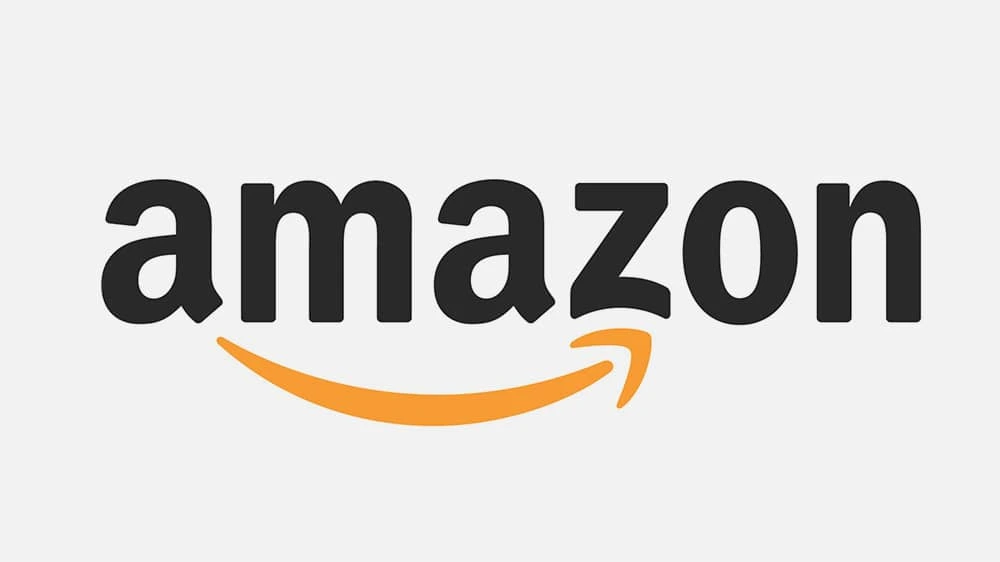
This story now makes sense because I’ve just told it to you. It only took a few seconds, and a logo which was already effective before now seems even more so. It goes to show that you don’t need to overcomplicate your logo to tell a story.
Make sure your logo doesn’t look old or outdated
What would be your first impression if you saw a consulting logo like this? (Yes, we know Hot Wheels is not particularly known for its consulting prowess, but please bear with us for the sake of example.)

A vintage font combined with a childish design… If this actually were a consulting company, you’d probably think they don’t care about how they look—and maybe they don’t care about their customers either, right? Not great.
Of course, this doesn’t mean you have to update your logo every year just to keep up with the trends. You just have to make sure you’re not hanging on to outdated design elements that were only trendy 20 years ago.
And with that, let’s move on to our round-up of consulting logo ideas.
Consulting logo idea #1: Accenture
Accenture is one of the biggest management consulting firms. The company offers strategy, consulting, digital, technology and operations services. Their revenue was around $40 billion in 2018, so we could definitely learn some design lessons from them.

The sign for “greater than” is placed above the letter t to represent the future—a future where you’ve ascended and grown to be greater (>) than (t) you (u) are (re).
As you can see, your next consulting logo can be clean & simple and still have a deeper message to communicate.
Consulting logo idea #2: Capgemini
Capgemini is another consulting giant that can teach us a valuable design lesson.

The key lesson here is that you can build a financial empire… even if your logo isn’t closely related to the services you’re selling.
The Ace of Spades has been present in their logo since its inception, but it has little to do with their business. In fact, it refers to bridge—a card game that the founder of the company, Serge Kampf, enjoys. In bridge, the Ace of Spades is the highest-value card.
It’s simple, it’s sweet, and it works. The lesson? You don’t necessarily need to hire an expensive designer to create a custom logo that’s meaningful to your brand. There are plenty of free logo makers out there that can help you get started.
Consulting logo idea #3: DLA Piper
If you’re offering legal consulting services, here’s what you can learn from one of the biggest global law firms. (How big? DLA Piper has lawyers in more than 40 countries and over $2 billion in revenue—that’s how big.)
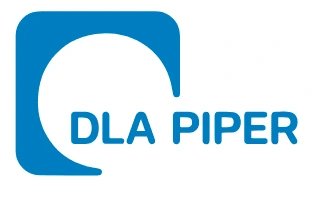
The open-ended shapes represent out-of-the-box thinking. Something you might actually want from a lawyer, right?
If you look at it from a different angle, the logo seems like a talking bubble, which shows they value the art of communication… or that they’re friendly. You decide.
Do you see how the story starts to make sense after you receive more information? And how quickly this story can change, depending on the interpretation?
The point is this: If you’re just starting out and you’re not a giant corporation, don’t fret too much on pinpointing the right story behind your logo. You can refresh the design and infuse more meaning as your brand grows and develops.
Consulting logo idea #4: Deloitte
Deloitte’s revenue was over $40 billion in 2018, and they use one of the most basic design elements in their logo: a dot.

What could we possibly learn from this? Actually, it makes a great point. (Ha!)
Timeless shapes (like the point) and simplicity will never go out of style. You don’t need an overwhelming design that distracts people from getting your message.
Plus, a simple logo will be much easier to integrate in almost any sales collateral or marketing material you develop later.
If you need further proof, just study the logos of some of the biggest brands out there: Nike, Apple, Adidas, Dell, Intel, etc. Enough said.
Consulting logo idea #5: McKinsey & Company
McKinsey & Company is undoubtedly one of the biggest consulting firms you can study and look to for inspiration.

And it can teach you two important lessons.
The first is that you don’t need a fancy or even a creative logo to express professionalism or extensive experience within a field.
In fact, quite the opposite is true. If you study successful companies, you’ll see that most of them refined their logos into simpler, cleaner versions as they matured.
The second lesson here is that even your choice of font can tell a story.
At its core, McKinsey & Company uses a classic custom font because experience, heritage and legacy are what represent them best.
Consulting logo idea #6: L.E.K. Consulting
Want to make your consulting logo stand out while still maintaining a professional, bold look?
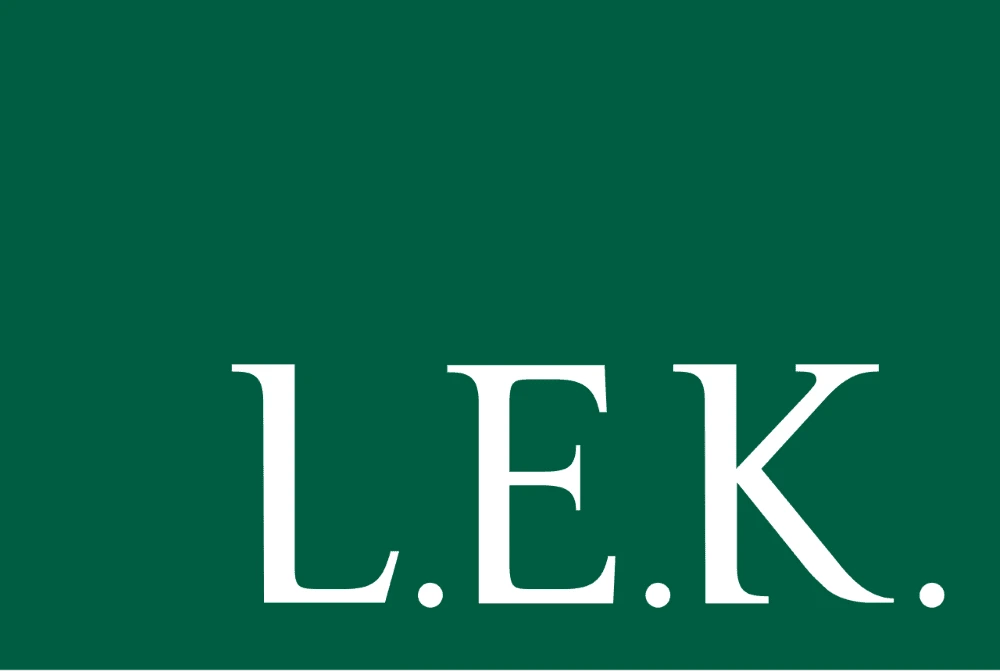
Here’s a key takeaway from L.E.K. Consulting, a global company established in 1983.
Their logo stands out because of some basic design elements and principles like composition, contrast and negative space.
For instance, they draw attention to their logo by using the contrast between the negative space in the top-left corner and the logo in the bottom-right corner.
They also give a bold look to the whole design by leveraging one of the most basic elements—the rectangle—all in combination with a deep-colored background.
Consulting logo idea #7: KPMG
If you’re afraid that your consulting logo won’t be perfect right away, don’t fret.
KPMG proves that no design should be set in stone, even if it’s a logo. You can always change it, and there’s no tragedy in doing that. It doesn’t mean you have to lose sales or credibility.
For instance, here’s how many iterations their logo’s had throughout the years:
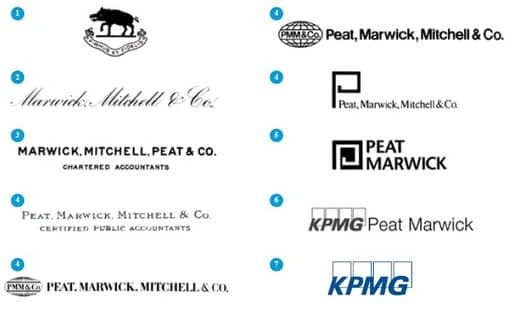
Source: KPMG
As you can see, these weren’t minor changes—in fact, many were radical redesigns. Even its name changed each time the company got a new partner or the shares were redistributed.
Still, the company is one of the largest professional services companies in the world with over $28 billion in revenue for 2018.
Consulting logo idea #8: FedEx
FedEx isn’t a consulting company, but if you want your consulting logo to be more creative and have a hidden meaning, it’s a good example to follow.
If you look carefully, there’s a hidden arrow that communicates speed and accuracy to those in-the-know.
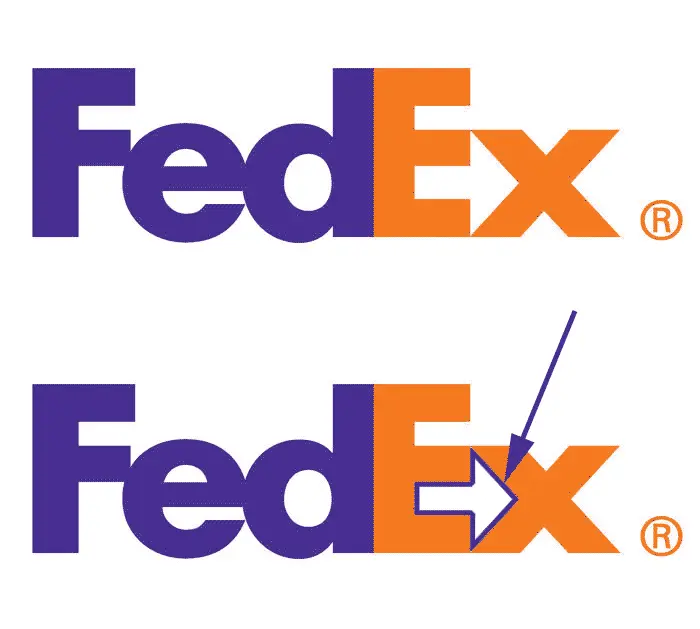
Of course, now the question is, how do you come up with such clever ideas?
It’s simple. It all starts with your unique value proposition, the core message you want to communicate.
Find out that one thing, that most important thing that makes people want to do business with you. Then, incorporate it in your design.
Consulting logo idea #9: Sony Vaio
Sometimes, the hidden meaning in a logo can come from the product itself.
Here’s a clever logo idea from Sony Vaio. Even though it’s not a consulting company, it’s worth mentioning because they managed to create such a simple logo with a hidden meaning behind it. Take a look:
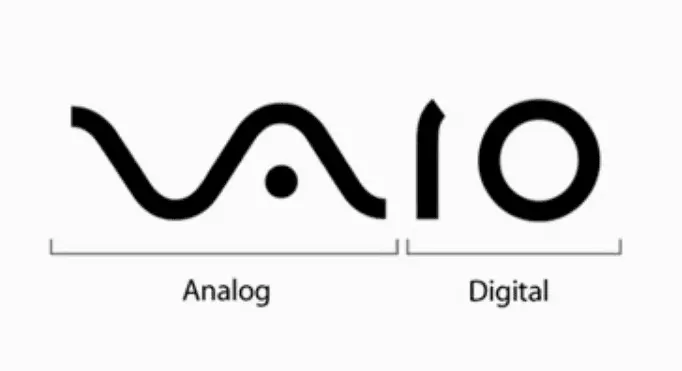
Consulting logo idea #10: Eighty20
If you’re looking for creative consulting logo ideas, Eighty20 is probably one of the best examples you can use for inspiration.
Eighty20 is a business consulting company that uses big data to inform its market research, then they use these insights to help marketers and companies better sell their services.
Their brand is a combination of geeky and creative, and they express that well in their logo. How? Each of the horizontal lines represents a binary sequence. The blue squares represent 1s, and the grey squares represent 0s.
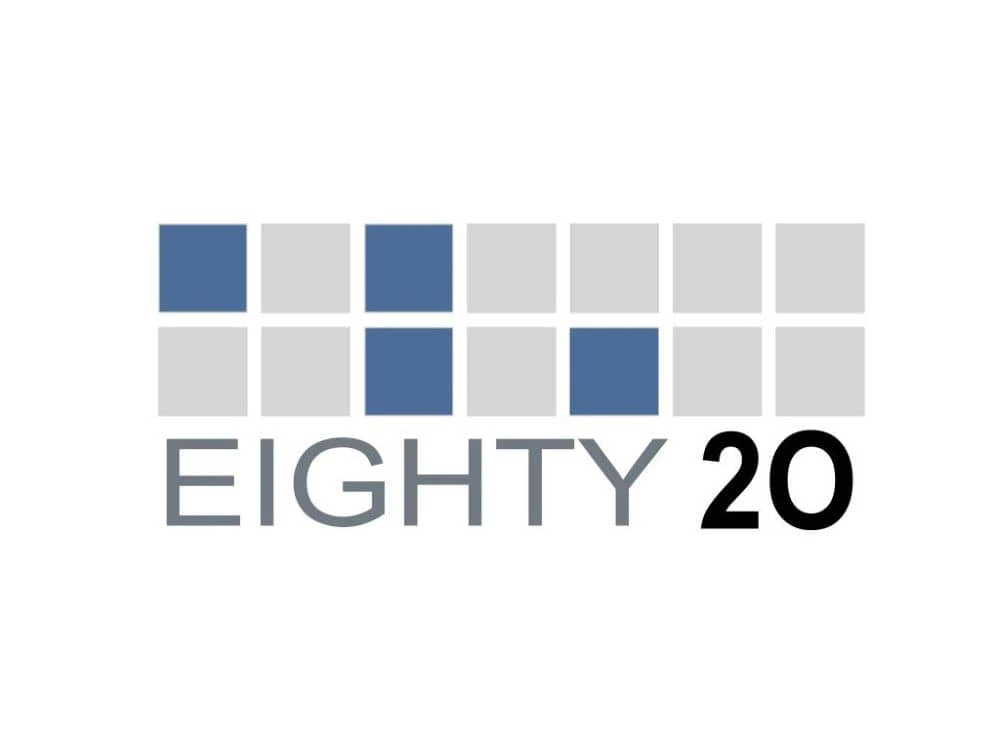
In binary sequence, the top row is 1010000, while the bottom one is 0010100. If you transform these numbers from binary to decimal, it reads… you guessed it: 80 and 20. Pretty clever, right?
Before designing your next consulting logo, do this
There are thousands of logo design ideas out there. The problem is, the more you see, the harder it is to choose one.
Here’s a method professional designers use to come up with great ideas quickly (and easily decide on the right one).
First, stop looking for ideas. Then, define the core message you want to communicate.
Are you fast and precise? Do you offer a complete range of services? Do you have the most innovative solutions or the most comprehensive research? Are you affordable for SMBs, or do you only serve large enterprises?
Only after you define your core message should you start looking for inspiration. Don’t worry—we’ll be right here when you come back.
Ready to start exploring your new brand identity? Try creating a few logo variations in Lucidpress, using your brand colors.
Not sure how your next fitness logo should look and want a few examples to get your imagination’s wheels in motion?
Maybe you want to see some design ideas from well-known brands in the fitness industry. Or, perhaps you’re looking for creative logo ideas that stand out from the crowd.
Related: Best logo design ideas for your inspiration
No matter whether you’re a fitness consultant, own a gym or have any other fitness business, by the end of this article, you’ll have plenty of ideas to get you started.
But, first, let’s see what makes a good fitness logo and what mistakes you should avoid.
3 fundamental rules to create a fitness logo people will remember
1. Make sure your logo doesn’t communicate the wrong message
Every aspect of your future fitness logo will evoke an emotion, from the colors to the fonts and shapes you choose.
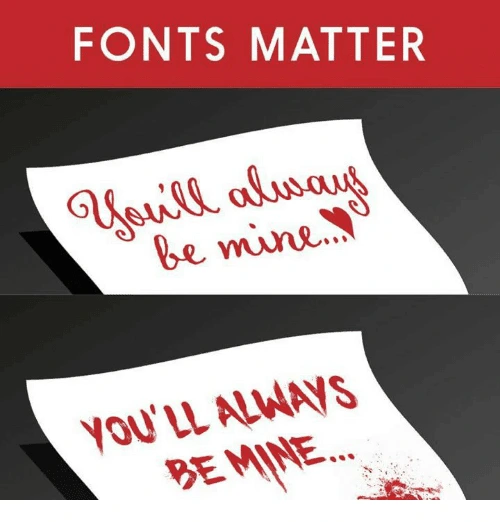
This is why you have to be careful about the first impression your visual identity makes.
For instance, a dark, sober color isn’t something you might want for a fitness logo if you’re also helping people keep a balanced, fresh and healthy diet.
2. Keep your logo simple and clean
Ideally, your logo should tell a story. Maybe the origins or the philosophy of your brand. Or, maybe just your unique selling proposition.
This doesn’t mean you have to overcrowd your logo with all kinds of elements in order for people to get your message. When you try to convey too much in a single logo, it comes overly complex and difficult to recognize and replicate.
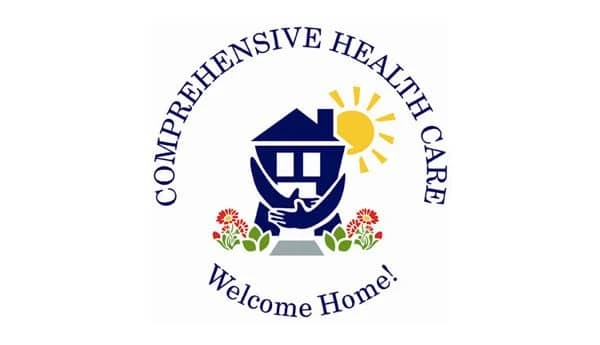
3. Avoid using outdated design trends
Imagine someone hands you a business card with a logo that looks like this:
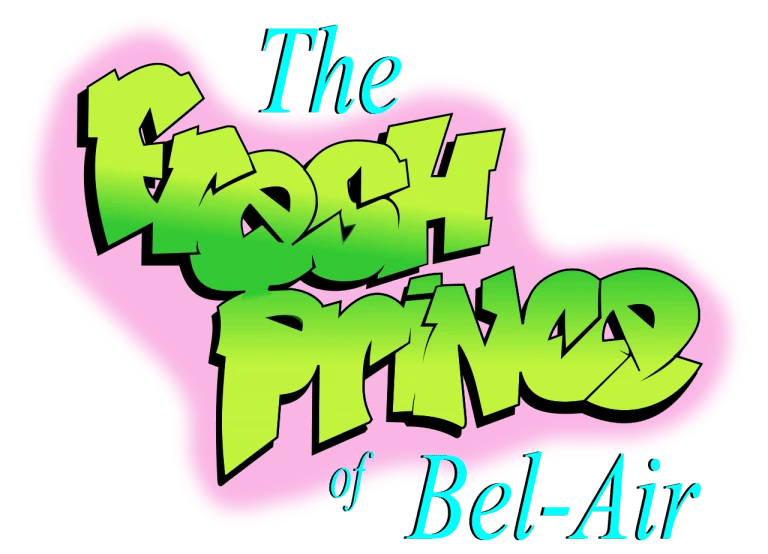
What’s your first impression? Other than nostalgia, probably not a good one, right?
Of course, you don’t have to update your logo every time a new design trend comes along. Just make sure your logo doesn’t look like it’s stuck in the ’90s.
These are three critical aspects you should take into account when creating a logo. Now, let’s dive into our pool of fitness logo ideas and see what you can learn from each one of them.
Fitness logo design ideas for your inspiration
When you have too many ideas, just stick to the basics, even if it’s cliché
Sometimes we spend too much time brainstorming and browsing through thousands of logo ideas just to find that “perfect one.”
And, too often, the result is a complicated design that few will remember.
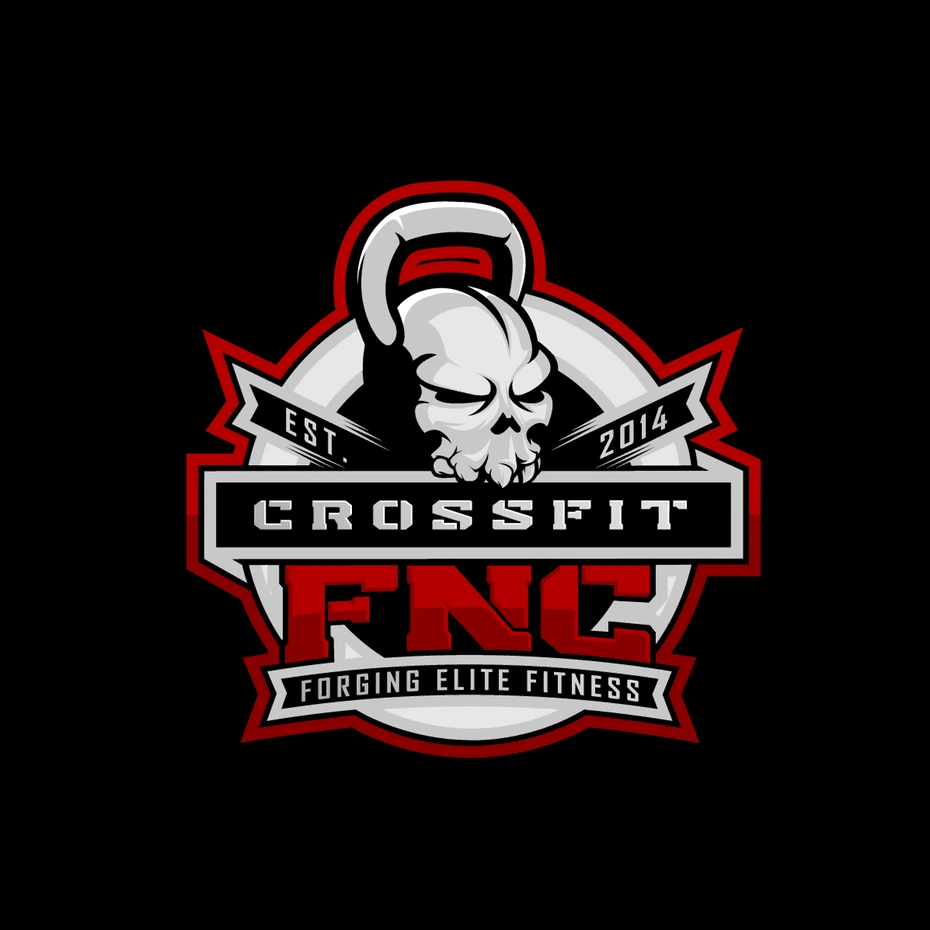
When this is the case, it’s better to stick to something classic that anyone can recognize as a fitness business.
Plus, you have the advantage that most free logo makers have these elements in their gallery so you won’t have to customize your design too much.
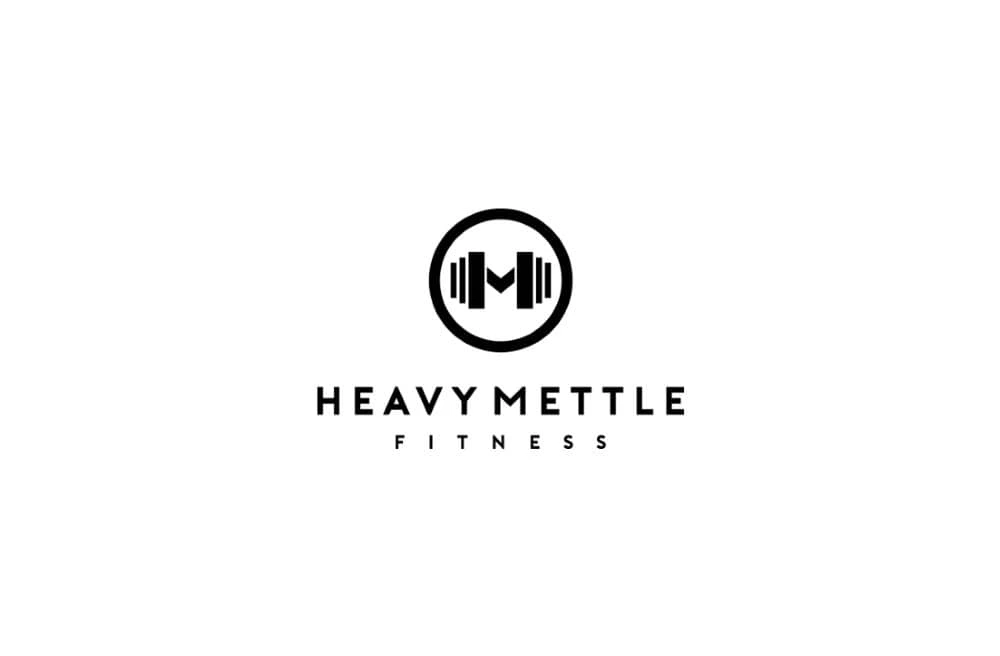
Source: GLDesigns
If you want to be compelling, point out something your audience wants
What’s that number-one thing your audience wants? Point it out, and people will remember you as that gym or that fitness instructor or that nutritionist who can help them get it.
Notice how, in a second, you know this fitness business can help you just by looking at their logo. Then, note how it brings us nicely to our next point…
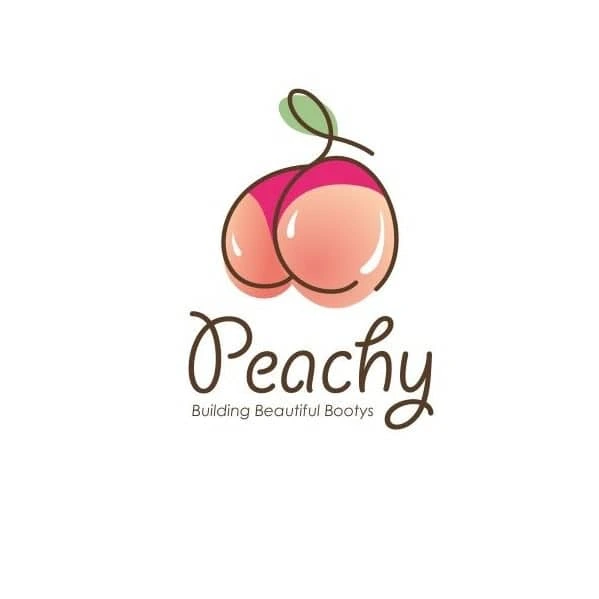
Source: 99designs
Make sure your fitness logo doesn’t drive away parts of your audience
Let’s say you’re a fitness trainer, and you chose the logo below to represent your business.
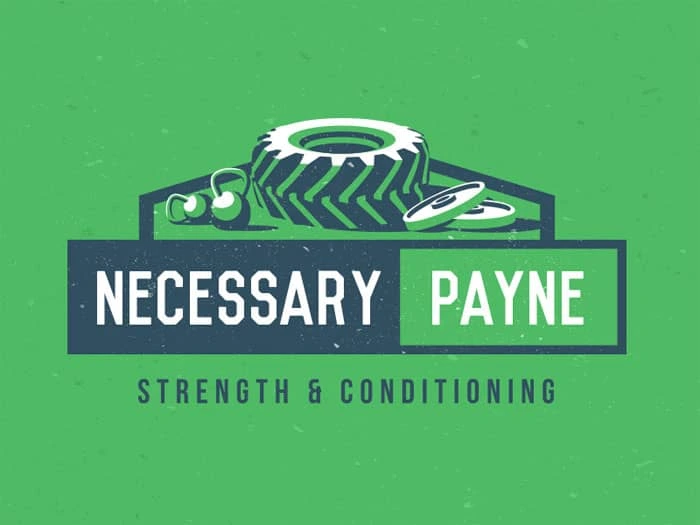
Source: Design your way
It’s great for people who are looking for hardcore training. But, there are lots of people who just want to stay in shape. Your logo might tell them that you’re not a good fit for them.
Of course, if your ideal audience is into hardcore training, this could be a great strategic move. What’s important is for you to think through these considerations before you make your final decision. For example, take a look at our next point.
Make sure your logo isn’t limiting future expansion of your fitness business
Let’s say that you start out as a yoga fitness trainer, but you plan to grow your business beyond the yoga niche.
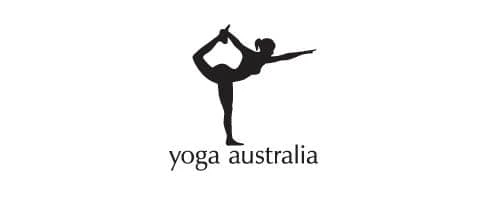
Unless you go through a complete rebranding, your logo will limit the growth of your business.
When you’re looking for design inspiration for your logo, make sure you also take into account any future plans. If you can spot them now, ahead of time, you’ll save yourself an expensive and time-consuming rebrand in the future.
Use a well-known symbol
Sometimes keeping a logo simple and clean can be most effective at showing what your brand is about.
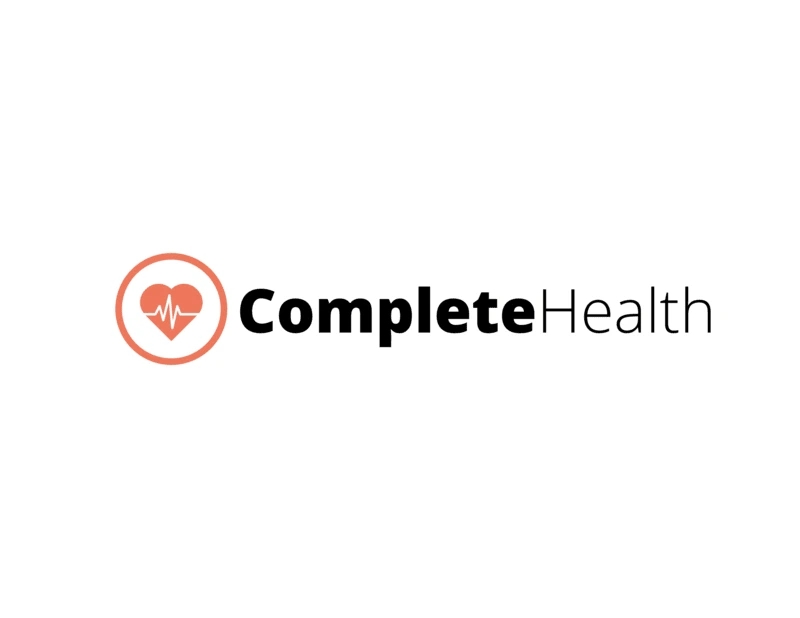
Source: Lucidpress
Incorporate a top benefit into a classic fitness logo design
In logo design, it’s efficient to incorporate an element that people can easily recognize, such as a gear or muscles if you’re in the fitness business.
But, these elements are also a bit overused, and you might want something more creative for your logo.
Well, why not incorporate additional benefits that your brand has to offer—such as good music, for example. Now people have two reasons to choose you over the competition instead of one.
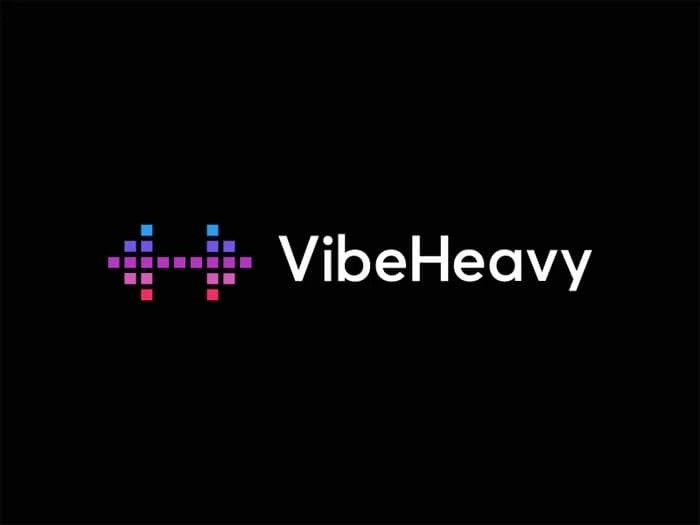
Source: Design your way
Your fitness logo doesn’t necessarily have to be related to fitness
Apple’s logo has nothing to do with phones. Nike’s logo doesn’t represent shoes, clothes or sports gear. Subway doesn’t have a sandwich in their logo.
Your fitness logo doesn’t have to be related to muscles, fit bodies or any kind of elements related to sports. It could be something as simple as two shapes that convey motion.

Source: Design your way
Use a color combination that stands out
Even if you don’t have a super creative logo layered with hidden meaning, you can still stand out from the crowd by using a powerful color combination.
Take Google, for example, or FedEx. Or, this fitness logo below.
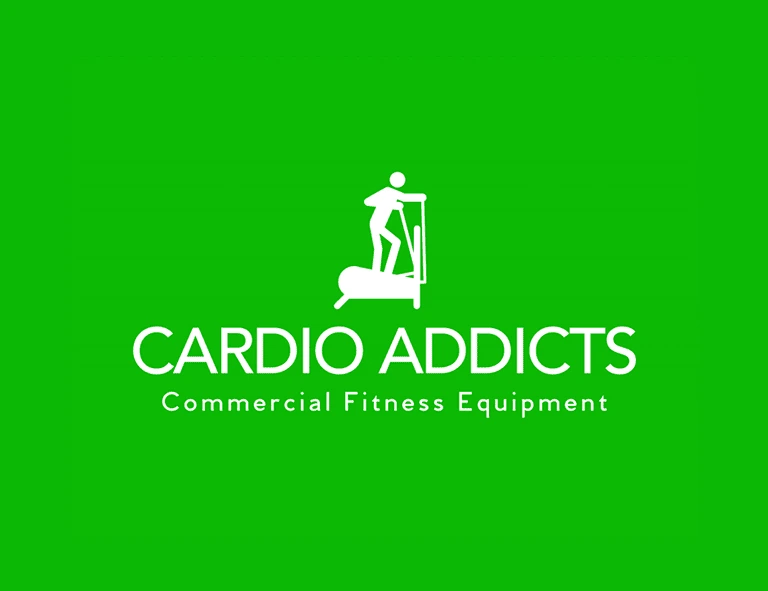
Source: Logojoy
Think about all the different ways you’ll use your logo
A highly detailed concept might look great on a large banner.
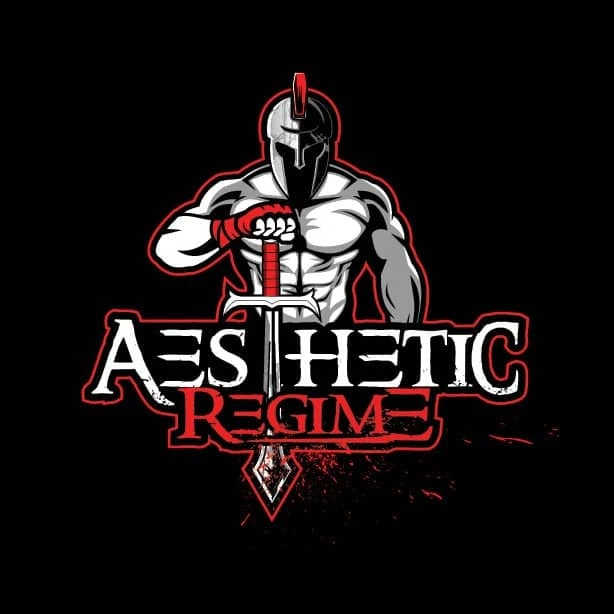
Source: 99designs
But, how would this logo look on a small business card? Would it be as effective?
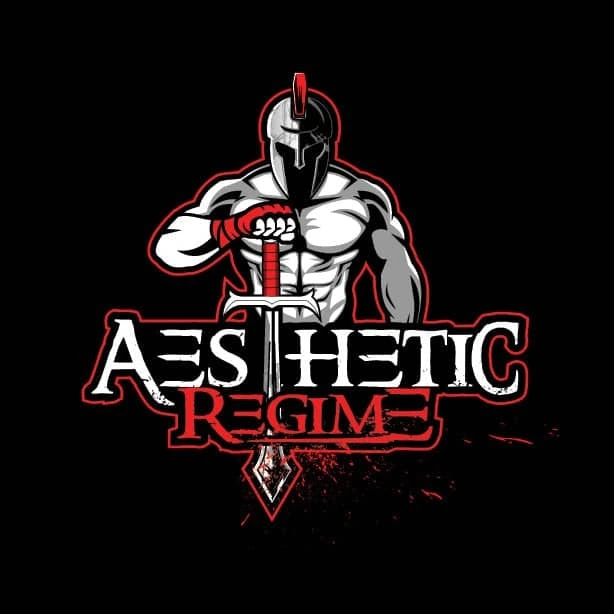
Suddenly, all those details become so small that people can’t recognize them.
Before you finalize your logo design, make sure you test it in all the different scenarios you know you’re going to use it.
Try to include a special meaning behind your logo
Let’s review a classic example for this one. FedEx uses negative space to hide an arrow that subliminally conveys speed and accuracy.
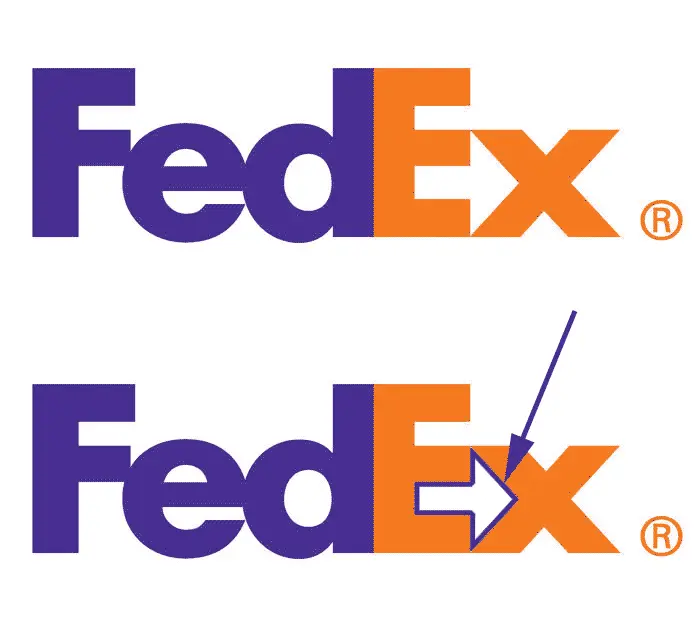
Source: Pixellogo
You, too, can use different elements in a clever way to give your logo a double meaning. For instance, here’s a clever way to incorporate the infinity symbol as a yoga fitness instructor.
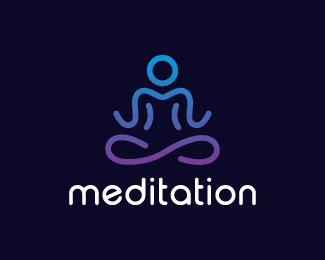
Source: BrandCrowd
Incorporate a sense of motion
As a species, we seem wired to detect motion, thanks to our neural underpinnings.
And since motion is a key aspect of your business, why not include it in your fitness logo? A dynamic design attracts attention and motivates people to get more active.

Source: Design your way
Before you create your next fitness logo, do this
If you want your next logo to be something creative or to have a special meaning, you first have to understand your brand’s identity. What is the most important message you want your business to communicate?
Only after you answer this crucial question can you start looking for ideas for your next fitness logo. Otherwise, you might find some good inspiration, but it won’t represent your business. So, take your time and do your research—then try out a few ideas.
Ready to start exploring your new brand identity? Try creating a few logo variations in Lucidpress, using your brand colors.
You likely already know that a logo is an important part of any business’s branding. Not only does it make your modern real estate company stand out from the competition, but a solid logo can attract and win over new customers. That’s what we’re always aiming for, right?
Related: Real estate branding—a comprehensive guide
But, it’s tricky to design a custom logo for your real estate firm. You’ll need to think about the colors, fonts and shapes you’re using—not to mention arranging each individual element to create an impressive design.
So, we collected eight of the best real estate logos to help inspire your own.
What makes a good real estate logo?
The logo you’re creating for your real estate agency is one of the first things you’ll need to nail. But before we share some of our favorite modern real estate logos, let’s chat about what makes a logo so great.
A strong logo usually is:
- bold
- unique
- easy to understand
Yet above all, the logo you’re creating for your real estate company needs to be on-brand. There’s no use in having a bright and colorful logo if your website, social media channels and letterheads are black and white.
Your audience won’t understand it, and you won’t see the 23% average revenue increase that businesses with consistent branding experience.
(Remember, that’s the aim of a logo: to make your business stand out.)
8 awesome real estate logos to inspire your own
You don’t have to start from scratch when you’re creating your own real estate logo. Take a look at these examples, pick out the ideas or concepts you like, and find a way to work them into your custom logo.
However, we’re coming at you with a word of warning: Please don’t directly copy these logo examples. The best logos are unique, innovative and stand out from the crowd, so take these ideas and try to put your own spin on them.
1. Smith Mountain Homes
First up is this beautiful logo from Smith Mountain Homes.
You can quickly understand the type of homes they sell, right? And it’s not just because the word “mountain” features in the brand name; they’ve used graphics to signal the type of property they sell.
Granted, the design and font choices are simple—but that’s often the best way to create a memorable logo.

2. Cabo Cribs
If you’re looking to buy property in Cabo, I’ll bet Cabo Cribs’ logo catches your attention.
Similar to the real estate logo above, this design is simplistic, but it doesn’t scrimp on the essentials of a good logo. It’s easy to understand, elegant, and has a small graphic that makes it obvious they’re selling homes.
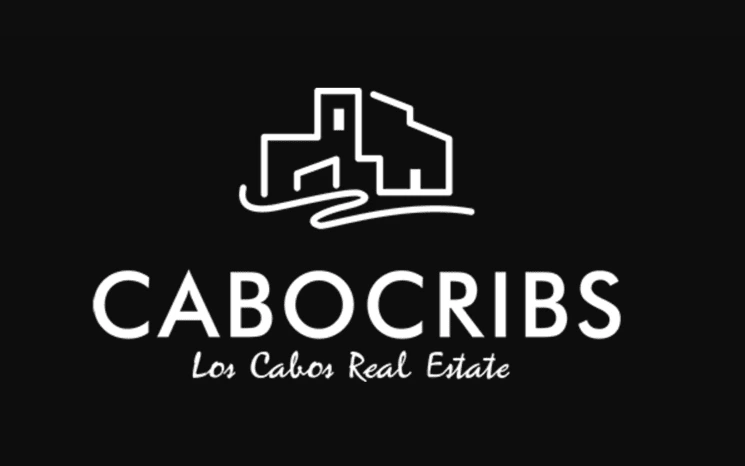
3. Williams & Williams
If you’re in the market for a luxury property, you’ll love Williams & Williams’ logo.
Take one glance at this logo and tell me what you interpret. It’s gold-themed, has elegant writing, and shows palm trees with the properties they’re managing. It ticks one huge element of a great logo: It’s perfectly on-brand for their commercial real estate company.

4. Compass
Who said a logo had to contain words?
Think of the world’s most recognizable logos. McDonald’s, Nike or Adidas will likely make their way onto that list—and none of them have a brand name in their logo.
Real estate firm Compass looks like they’ve drawn inspiration from those huge brands with their word-free logo. Although you can’t clearly see they’re selling properties, it’s a great way to make their audience stop and pay attention. After all, what are realtors for if not providing their clients with valuable guidance and direction?

5. Blue Key Property Management
I’ve included this logo concept for Blue Key Property Management here purely because it’s so simple, yet so effective.
You might’ve seen by now that many real estate logos contain property-related graphics. But instead of taking the standard route of a house, this firm opted to use keys—a factor that helps them stand out from the competition.
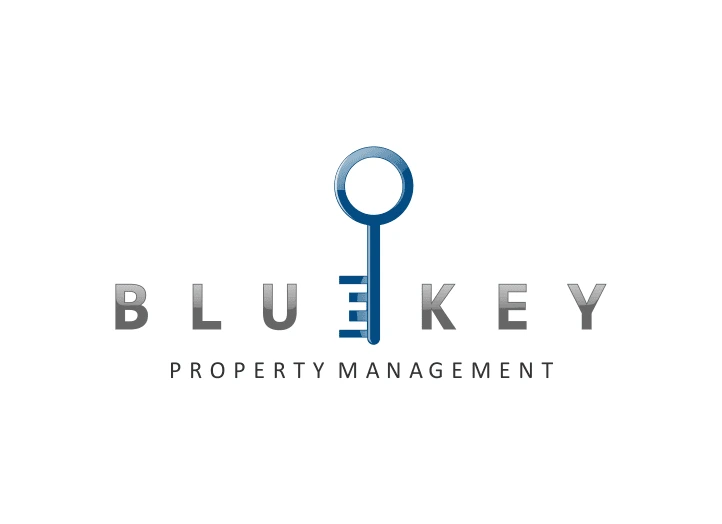
6. Delicious Real Estate
A simple—yet effective—way to build your real estate logo is to think about your buyer personas and their pain points. What are they looking for when they’re purchasing or renting a home from your firm?
It seems like Delicious Real Estate think it’s a reasonably-sized home. That’s why they’ve portrayed the situation their customers are usually stuck in through their logo.
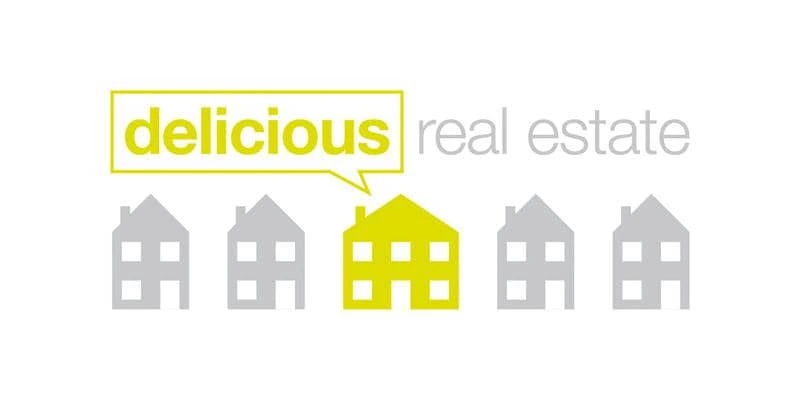
7. Crown Real Estate
Remember how we mentioned real estate logos should be simple and easy to understand? Take a look at Crown Real Estate’s logo, which does exactly that while using simplistic fonts, a black-and-white color scheme, and a basic crown icon to match their brand name.

8. Live Dubai
The final logo on our list comes from Live Dubai.
Much like the other real estate logos we’ve listed, this one is simple. But, what we really love about this design is the way lettering is used to create an interesting logo that’s totally unique to their brand name.
This gives them two options: use the graphic & text together as their logo or crop the image just to use the lettered graphic.
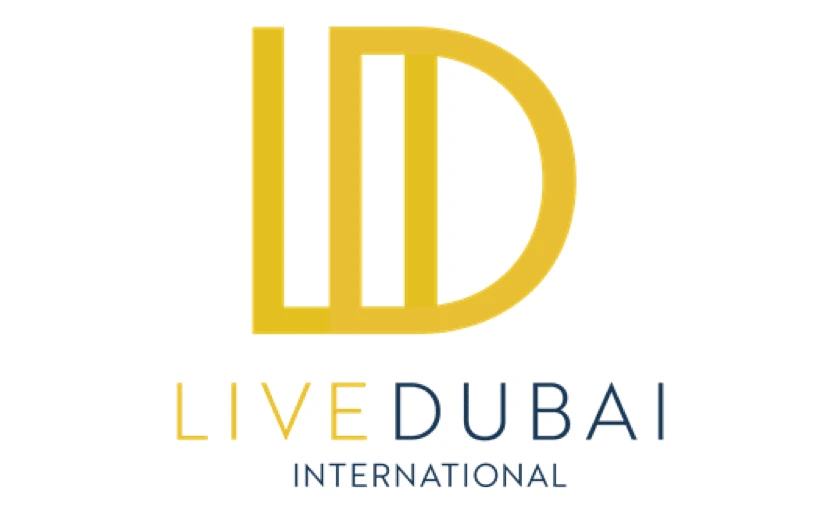
How to create your own real estate logo
Feeling inspired and ready to start designing a new logo for your real estate company?
You don’t have to hire an expensive graphic designer to create a custom logo design. There are thousands of templates you can customize, making a DIY logo the best way to create a professional brand for your real estate business—even if you’re on a tight budget.
However, if you do have some cash to splash on a fancy real estate agency logo, hiring a graphic designer is a great way to make sure your logo is unique. …Just make sure they’re sticking with your brand guidelines.
Key takeaways
As you can see, there are tons of incredible real estate logos that can inspire your own.
Remember, the most effective logos are unique, bold and easy to understand. And while each real estate logo design we’ve listed here ticks those boxes, you’ll need to add your own spin to each design when you’re creating your own.
Ready to start exploring your new brand identity? Try creating a few logo variations in Lucidpress, using your brand colors.
Color is a big part of our world.
The colors we surround ourselves with can impact our mood, change our energy levels, invoke memories, and even influence our decisions. As you can imagine, color is a powerful player in people’s perceptions of your brand as well.
A blog post on Elle & Co. says 60% of people decide whether they’re attracted to a message based on the color alone — and color reinforces brand recognition by up to 80%.
Point is, color makes a big impact on customers.
This is why Google has reportedly tested 41 different shades of blue in its logo to see which blue performed best. The winning color, according to dozens of charts and graphs, was not too green and not too red.
“It’s interesting to see how you can change the way that people respond to the Web in ways that are not intuitive,” Google executive Marissa Meyer explained.
Color branding is about your customers
Many brands have a signature color (or colors) that makes them easily recognizable.
In many cases, it would be odd to see their logo in a different color. Can you imagine McDonald’s golden arches in a bright purple instead? What if Starbucks’ logo wasn’t green & white, Pepsi’s logo wasn’t blue & red, and Target’s wasn’t red all around?
When we see that bubblegum-pink writing, we know it’s Barbie — and when we see the tiny blue f, we know it’s Facebook.
But, it’s not just the logo. As an article on SpellBrand suggests, there are many ways to incorporate color into your branding:
- advertising
- business cards
- employee uniforms
- interior design at retail locations (and in the office)
- letterhead
- marketing materials
- product packaging
- signage
- social media graphics
- website
According to Aprimo, marketing activities should focus on customers to create positive experiences each time they interact with your brand. Color will be part of those interactions, so deciding which color to use often comes down to who your customers are.
Emma Foley, design lead at Clique Studios, says, “As much as you might want them to, everyone is not going to be your audience. So, if you focus in and build a strong community of people you want to talk to, you can do a lot with using color as the first interaction with those people.”
For example, color has the power to make your website stand out among similar websites.
“One of your website visitors might think, ‘They are using this hot pink in a world of traditional blue and that’s really interesting. I want to learn more about this company’,” Emma explains.
She says there are really two schools of thought about how companies should manage color: 1) this is our brand color so we have to use it or 2) play around with colors because the rest of the brand is strong.
Before deciding which color makes sense for your brand, it’s important to take a step back and think about what colors mean.
What is color psychology?
Simply put, color psychology is the study of colors and their impact on human behavior. Sometimes color can influence unexpected things like our sense of taste. According to Neil Patel, “Color is 85% of the reason you purchased a specific product.” Sounds like good enough reason to implement a couple color psychology tricks into your own branding efforts.
However, keep in mind that our feelings about certain colors are personal and depend on both life experience and culture. For example, while the color white is used in the Western world to represent purity & innocence, in Eastern countries white is a symbol of death & mourning.
Types of colors and their impact on human behavior
The color wheel features two types of colors: warm tones & cool tones. Warm colors include red, orange & yellow and are associated with energy, passion & creativity. These tones are great for adding life to your designs. Cold colors include green, purple & blue and have a calming, soothing effect on people. (This is why you never see flashy colors in hospitals and waiting rooms.)
There’s another type of color which isn’t represented on the traditional color wheel: neutral tones. Neutral tones include white, grey & brown. In design, these colors are mostly used for backgrounds. To make those colors stand out more, you can add texture to your artwork.
Color psychology in branding
The concept of branding is based on the belief that colors (and other design choices) can evoke specific reactions & feelings. Despite the ubiquitous use of color in marketing, there’s not enough research to back up every assumption. However, over the years, marketers & designers have identified patterns that appear to influence customers’ purchase decisions.
If chosen correctly, your color palette can influence how customers feel about your brand.
Red

Source: Unsplash
The color red is associated with intensity, emotion, and a sense of urgency. It can invoke feelings of active energy, passion, trust, love, intensity, aggression, excitement and appetite.
McDonald’s uses red to provoke the appetite and a feeling of urgency. (Good move for a fast-food chain.)
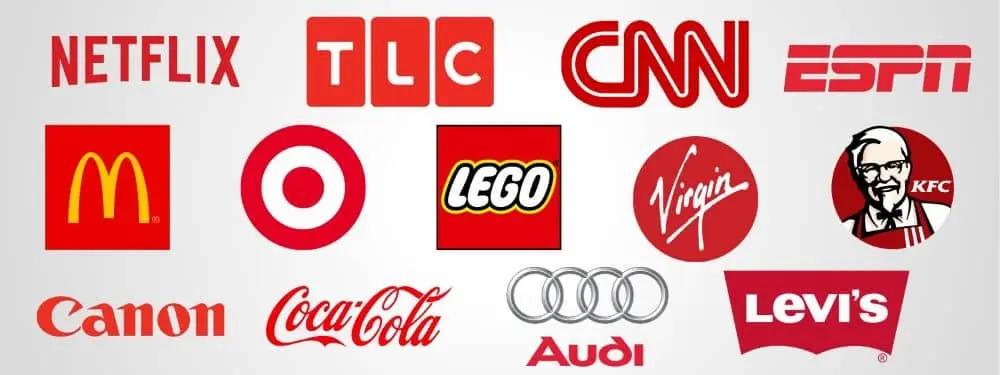
Made in Lucidpress
Brands that use red: McDonald’s, Audi, Coca-Cola, CNN, Lego, Canon, KFC, TLC, ESPN, Target, Levi’s, Virgin and Netflix.
Blue

Source: Unsplash
While there are many shades of blue that mean different things, blue is generally associated with depth and stability. It’s associated with conservative judgment, confidence, truth, order and understanding.
Invoking feelings of peacefulness & reliability, blue is the favorite color of tech & finance companies. For example, look at Facebook and Twitter. Those two companies use different shades of blue to portray trustworthiness & authority.
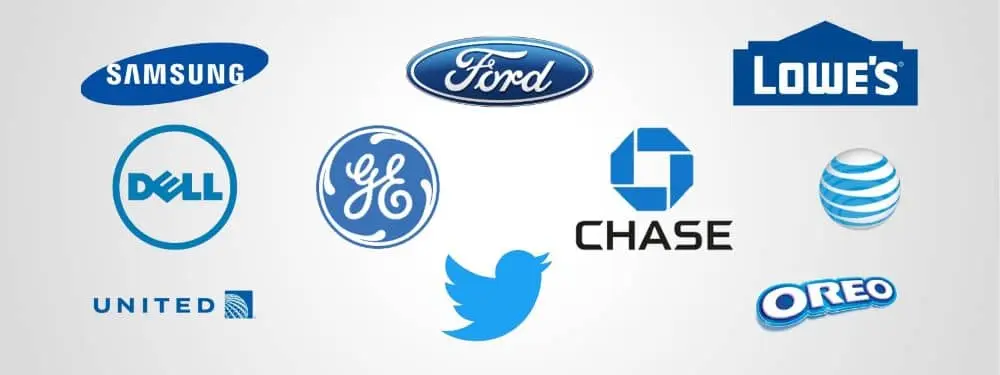
Made in Lucidpress
Brands that use blue: United Airlines, Chase Bank, Dell, Ford, General Electric, Twitter, Oreo, Lowe’s, AT&T and Samsung.
Yellow

Source: Unsplash
Yellow is a bright & vivid color associated with positive energy, sunshine and freshness. It can make people feel alive, energetic, cheerful and optimistic. In branding, yellow tends to grab attention as a very bright color that stands out. Snapchat uses yellow to appeal to younger generations and make their experience light & fun.
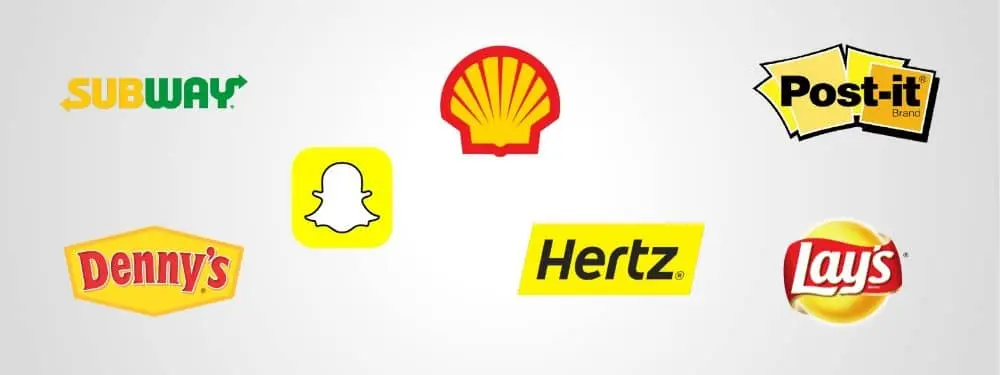
Made in Lucidpress
Brands that use yellow: Subway, Shell, Post-it, Lay’s, Denny’s, Hertz and Snapchat.
Beige & ivory

Source: Unsplash
While it’s not used too often, beige and ivory can invoke a feeling of simplicity, calm and pleasant stability.
Tilemark is a great example of a brand that uses beige & ivory.
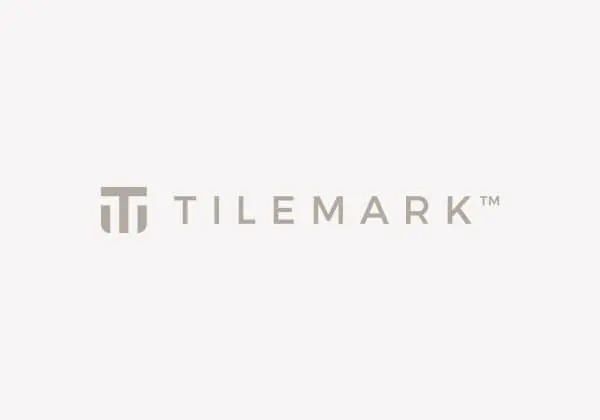
Source: Tilemark
Gray

Source: Unsplash
Gray is associated with security, reliability, dignity, practicality, conservative judgment, calm and intelligence.
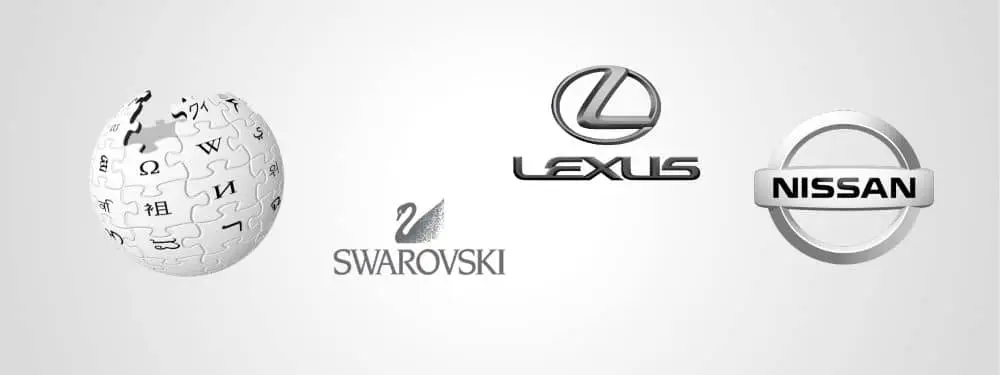
Made in Lucidpress
Brands that use gray: Wikipedia, Swarovski, Lexus and Nissan.
Green

Source: Unsplash
The color green is associated with the harmony of nature, the environment and renewal. When looking at green, people often feel calm, relaxed, trusting, peaceful, hopeful and healthy.
Green is all about nature and is used by bio-friendly, organic and sustainable brands. If you want to portray your services as environmentally safe, green is your color of choice.
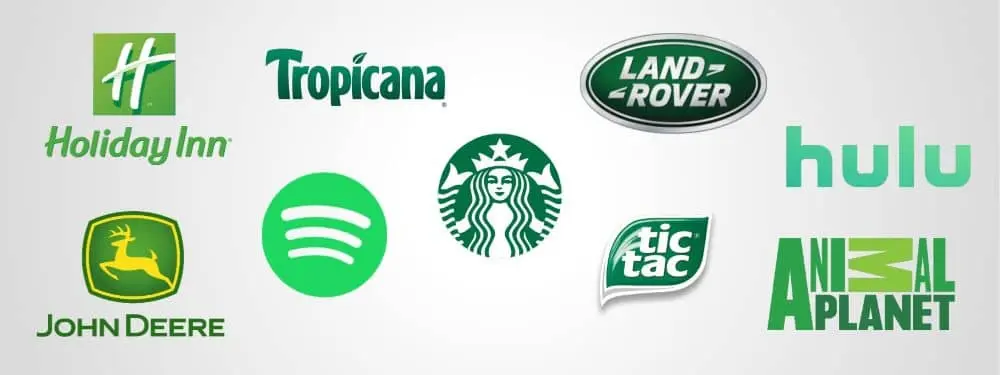
Made in Lucidpress
Brands that use green: Holiday Inn, Starbucks, Animal Planet, Spotify, Land Rover, John Deere, Tropicana, Tic Tac and Hulu.
Purple

Source: Unsplash
Purple is symbolic of luxury, royalty, glamour, power, nostalgia, romance, introspection, nobility, spirituality and wisdom. It also stimulates creativity and problem-solving.
For centuries, purple has been the color of royalty. (Before the modern age, purple dyes and fabrics were both expensive and rare.) With its history, it’s not surprising that companies use purple to portray their brands as expensive & luxurious.
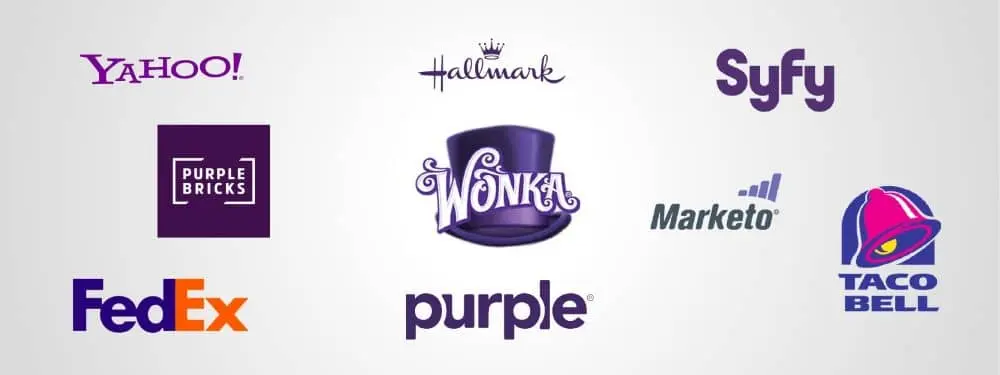
Made in Lucidpress
Brands that use purple: Yahoo, Marketo, FedEx, Syfy, Taco Bell, Purplebricks, Purple, Hallmark and Wonka.
Orange

Source: Unsplash
The color orange is associated with happiness, sunshine, citrus and the tropics. Orange is a playful color that makes people feel enthusiastic, creative and determined. It stimulates mental activity and supports energy, vibrancy and warmth.
Orange can be also associated with fire, combining the warmth of red with the happy brilliance of yellow. Orange tends to communicate energy & optimism. Usually, orange is associated with youth and creativity. If you want to look adventurous & competitive, orange is your color!
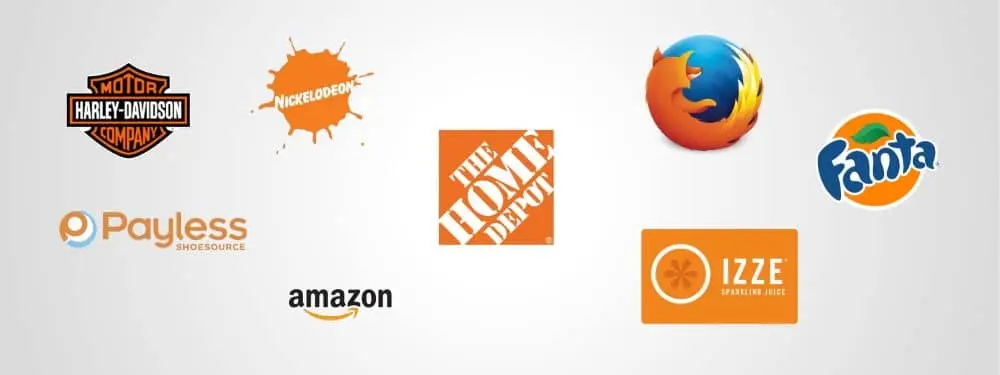
Made in Lucidpress
Brands that use orange: The Home Depot, Nickelodeon, Firefox, Izze, Amazon, Fanta, Payless and Harley Davidson.
White

Source: Unsplash
White symbolizes cleanliness, peace, innocence, youth, simplicity, purity and safety. As a reminder that colors mean different things in different cultures, it’s interesting to note that white carries connotations of death and mourning in many Asian cultures.
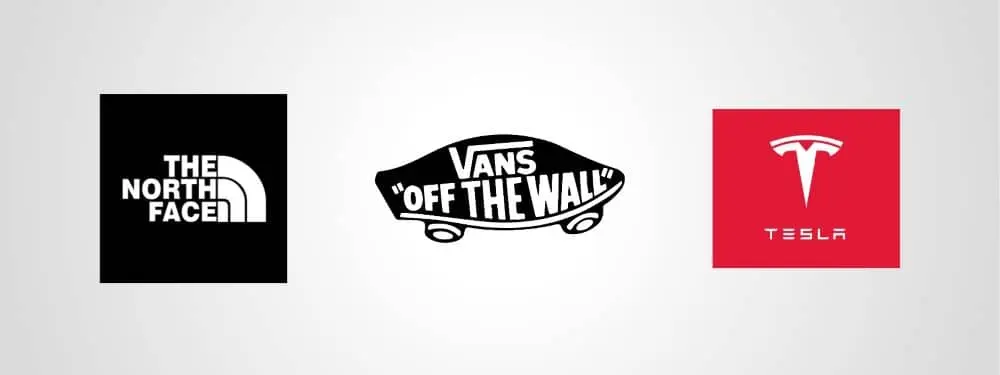
Made in Lucidpress
Brands that use white: The North Face, Tesla and Vans.
Black

Source: Unsplash
Black symbolizes luxury and the mystery of the night. It’s bold, serious, powerful, elegant, wealthy, stylish and sophisticated.
Like red, black can convey both positive & negative emotions. It can invoke associations of power & minimalism, or on the other hand, it can portray something dangerous or gloomy. Depending on the context, its meaning can differ. In branding, however, black usually comes across as exclusive & luxurious.

Made in Lucidpress
Brands that use black: Chanel, Nike, Adidas, Louis Vuitton, Prada, Puma and Lamborghini.
Pink

Source: Unsplash
Pink symbolizes love, romance, tenderness, caring, sweetness, warmth and youthful fun.
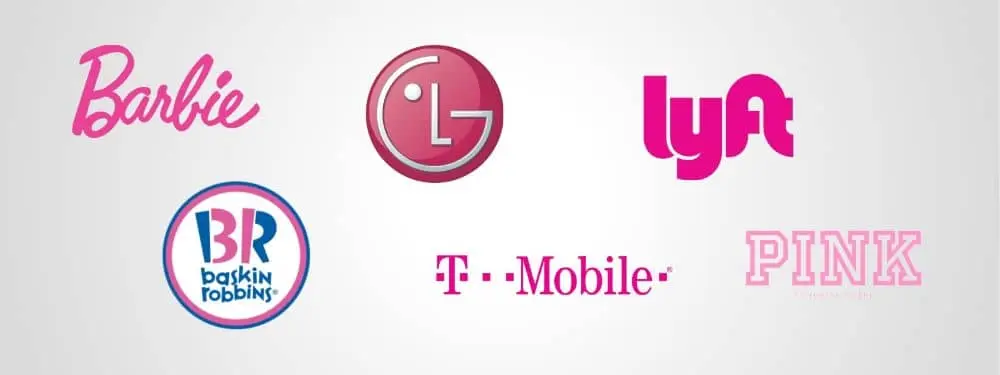
Made in Lucidpress
Brands that use pink: Barbie, Baskin Robbins, T-Mobile, Lyft, LG and PINK.
Brown

Source: Unsplash
Brown is associated with the earth, reliability, support, dependability, the outdoors, simplicity, endurance and support.
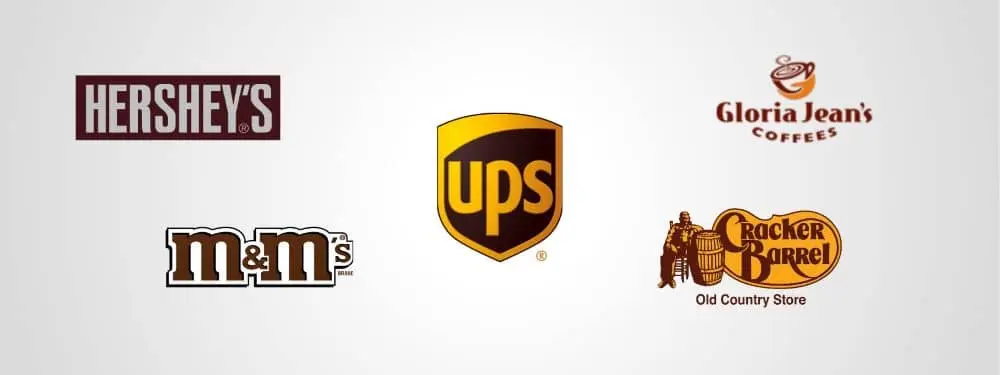
Made in Lucidpress
Brands that use brown: UPS, Hershey’s, M&Ms, Gloria Jean’s Coffee and Cracker Barrel.
Key takeaway
While color has the power to affect people’s moods, choosing your brand colors shouldn’t be based on emotional response alone. As Emma Foley of Clinique says, “There’s so much more that goes into a brand than a logo and color.” Once you understand your brand’s customers and values, you can create a brand color palette that speaks to them.
Ready to start testing your new brand identity? Try creating a few logo variations in Lucidpress, using your brand colors.
We’ve all heard “Don’t judge a book by its cover,” but I suspect we’ve all been guilty of it at some point.
A quality book cover design is your chance to make a positive first impression. Although first impressions aren’t everything, a bad one is hard to overcome. You could string together some of the most impactful and moving words ever combined in history only to see them fade away because the book cover looks like amateur hour.
Related: Why brand quality counts — Judging a book by its cover
The book industry is growing more competitive and more digital. Ebooks now make up 30% of all book sales.
Instead of taking several minutes to find a good book by casually strolling through the library perusing book titles, readers now scroll through the internet’s webpages in seconds. With vats of information competing for everyone’s attention, visual clues can help viewers identify superior content.
As we go over these 10 ideas to design the best book cover, feel free to jot down a few of your own observations to inspire your own design.
1. Set the tone with your design
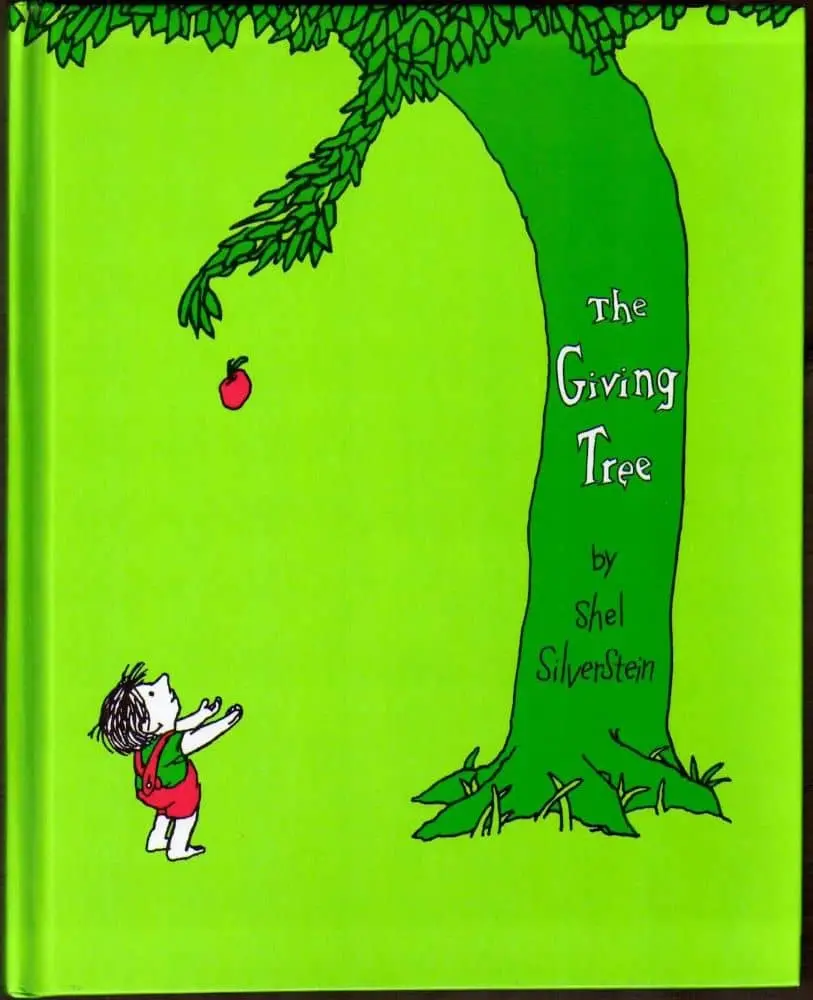
Source: TIME
The verdant design of The Giving Tree by Shel Silverstein reflects the simplicity of a children’s book and depicts the dependent nature of a child. Instantly, you understand the themes explored in the book and feel an emotional connection with both characters.

Source: Behance
“Little Spines,” an anthology of creative writing by students at RMIT University, uses the image of a single tree in two different seasons to depict a story of change — revealing the poetic theme of the book.
2. Speak to your audience’s emotions

Source: WTTW
The Shack by William Paul Young is a good example of using design to appeal to one’s emotions. The conflicts of sorrow and hope, fear and faith are illustrated in the sunshine cutting through the snow and darkness.
3. Create a focal point

Source: Amazon
On the cover of The End of Food by Paul Roberts, the use of white space helps the reader focus. The white tag on the product packaging draws attention to the title which, after reading, the image effectively illustrates.
4. Use custom photography
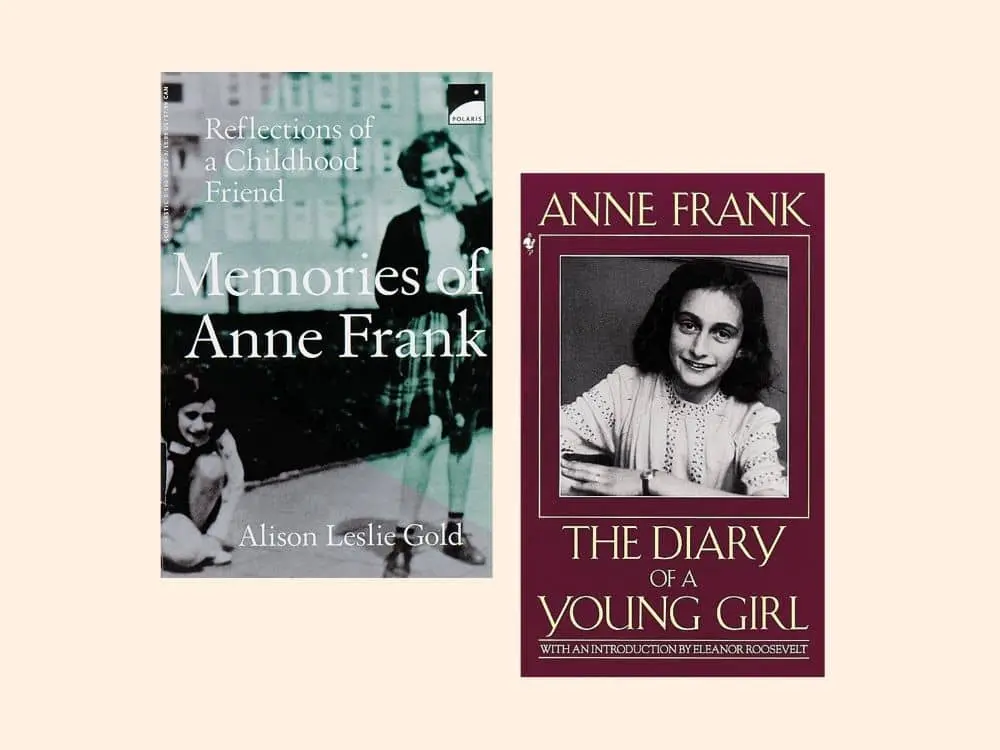
Source: Barnes & Noble
In The Diary of Anne Frank, photographs of the young author help the reader relate and empathize with her on a more intimate level. This is why custom photography is highly effective for biographies and documentaries. It is also helpful if you are trying to build personal recognition.
5. Your design should function as a thumbnail, too
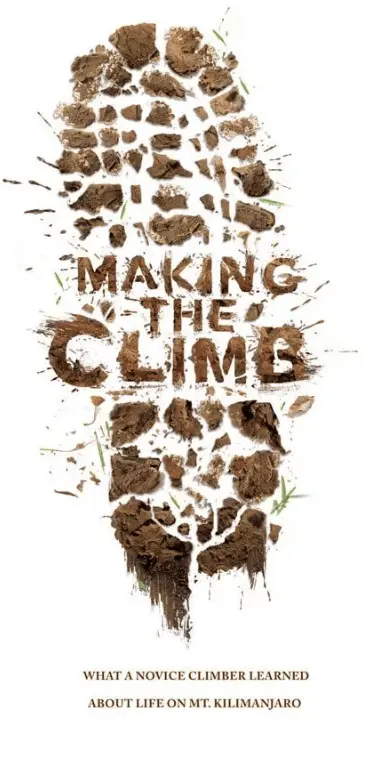
Source: Brandon Hill Design
Given the digital nature of book shopping these days, it pays to create a book design that makes a great thumbnail. On Making the Climb by John C. Bowling, a brown shoe print is easy to identify and will be recognizable even as a small image.
6. Include reviews & awards in the design
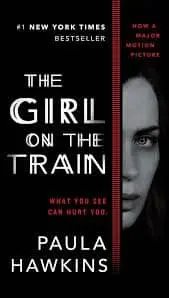
Source: Books & Books
Working awards and reviews into the design of your book cover helps establish credibility to the reader. As humans, readers are social creatures, and testimonials from literary authorities provide enticing and trustworthy social proof. You can see this principle demonstrated elegantly on the cover of The Girl on the Train by Paula Hawkins.
7. Use imagery to spark imagination

Source: Paul J. Bartlett Art
On this modernized cover of The Wonderful Wizard of Oz by L. Frank Baum, images of a tin pipe hat, feline eyes, a girl’s face and a burlap necktie allude to the main characters in the book. The green tint hints to the Emerald City. This is a good way to weave your narrative into the cover design without giving too much away.
8. Let typography take center-stage
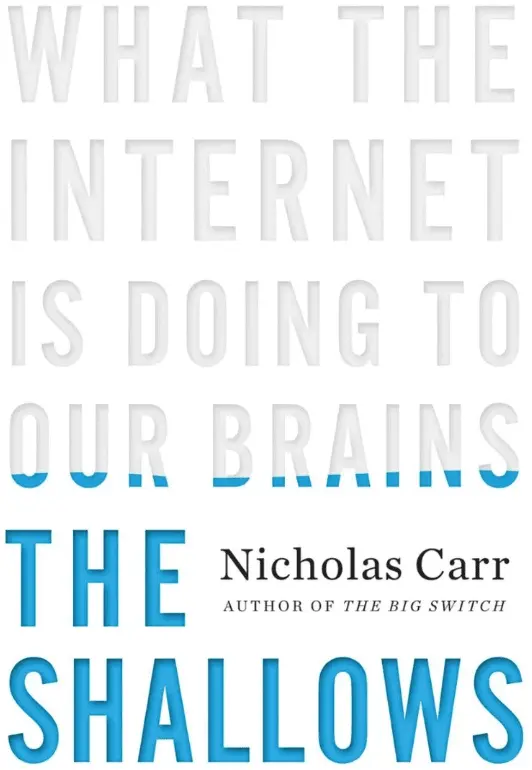
Source: Barnes & Noble
Here, on the cover of The Shallows by Nicholas Carr, the words are the imagery and help expand on what the author wants to communicate. By utilizing typography, the design is kept simple, not distracting the flow of the reader’s eye from one design element to the next.
9. Figure/ground Gestalt principle
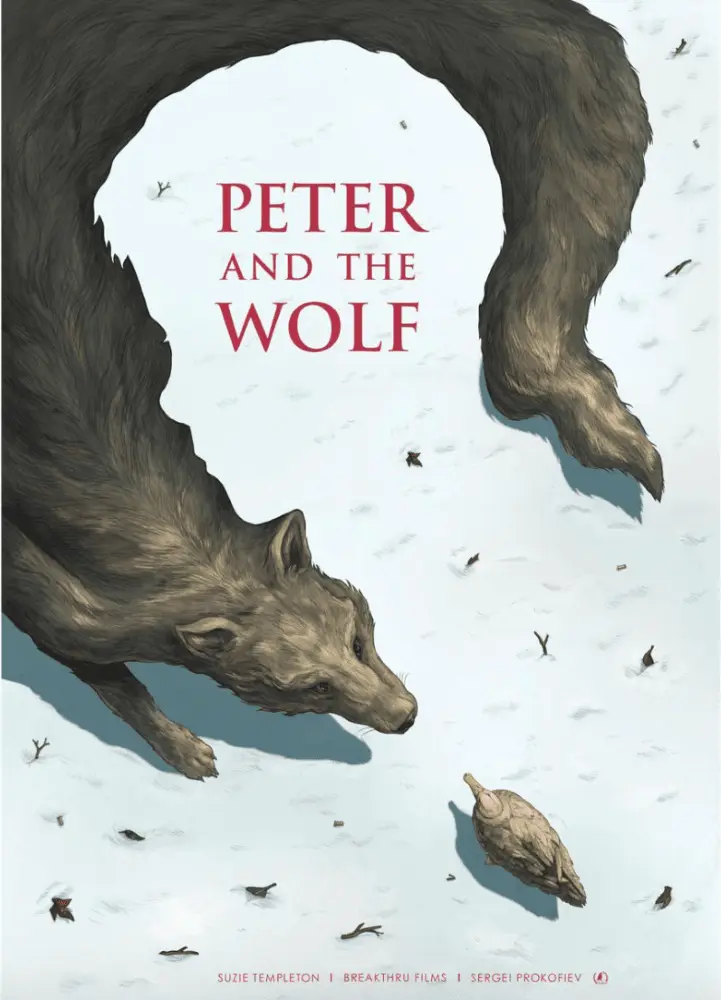
Source: Pinterest
Things get interesting when the foreground and background contain two distinct images, as shown on this cover of Peter and the Wolf. Impressively, this creative use of negative space doesn’t distract from the main focal point.
10. Keep colors simple

Source: Pinterest
On this cover of JAWS, blue and black are the only colors used. The dark shading of the blue makes it identifiable as the ocean against a white background. The darker tip of the letter A reveals a shark fin breaching the surface of the water.
Key takeaways
An effective book cover is both planned out and meaningful. It’s a billboard on the highway directing readers to your pages. Your book cover’s role as a marketer is important and shouldn’t be treated like an afterthought. Use these tips to design a book cover you’ll be proud to share. You can start by customizing a book cover template in our gallery.
Ready to design your own book cover? Customize one of our professional book cover templates online for free.
If a single picture is worth a thousand words, then a video is worth an entire book. Buying or selling a house in the digital age requires digging into the high-tech toolbox to reach your customers. A simple well-crafted video can function as a living billboard for real estate agents and home sellers alike.
Related: How to create stellar videos for real estate listings
Real estate video marketing is mapping previously uncharted territory for reaching customers looking to buy a house. YouTube isn’t just for watching funny cat videos. It’s also an effective avenue for quickly getting your message to a wider audience. YouTube is now the second-largest search engine (behind Google). This means a real estate agent who uses video to sell properties will draw in a much larger crowd than one who relies on marketing the old-fashioned way.
Selling real estate is all about getting visual. Prospective buyers want to tour a house before purchasing, so they can see how everything looks both inside and outside. Real estate videos can be their eyes and ears for anything from virtual tours of a house to neighborhood guides.
Guidelines for using video marketing in real estate
Making videos doesn’t require complex skills, thanks to the abundance of smartphone apps designed to streamline shooting and editing. Uploading those videos to a YouTube channel, Facebook page or another social media platform is equally simple.
A high-quality video can be a huge asset for turning a real estate listing into a sale. It lets your prospective buyers feel like they’re actually there on the property, taking a tour inside the house. They can tour each room and get a sense of features, space and other design elements.
Here are a few guidelines to consider while crafting a real estate video.
Be a storyteller
Everyone loves a good story, especially if it relates to them or their life experiences. Making a hard sell in a video won’t go over well. The important thing is to craft a story. To do that, you need to identify your target audience, then figure out what feelings and thoughts you want to evoke in them.
Are you selling starter homes for first-time buyers? Is your prospective buyer looking for a fixer-upper they can make their own? Does your target customer want to upgrade their lifestyle with a luxurious home? Understanding your audience will help you brainstorm the right visuals and script to evoke the desired reaction.
Make the house feel special
Most people who buy a house aren’t making a temporary purchase. They want to put down roots and have this place feel like home. Making it feel like a home should be your focus.
Use the video to show how this can be a place where someone can make memories. The video should create positive feelings and leave a lasting impression. A buyer should be able to visualize welcoming a new child, spending a holiday with the family, or having a movie night with their spouse within those walls.
Another goal is to showcase what makes the house unique. Emphasize key features that align with your prospective buyer’s interests or lifestyle. Highlight design elements that stand out rather than simply going from one room to another like you’re moving down a factory assembly line. []
Create your own blockbuster
Production quality means everything in shooting and editing a video. You don’t want to go the low-budget, B-movie route. You want to produce a blockbuster. Perception is reality in advertising.
It starts with investing in a high-quality camera and lighting props that will give your videos the professional look they need to stand out. Use appealing background music to set a comfortable mood. Music can pull viewers into the narrative and reinforce the message you want to leave with them.
Hook the prospective buyer
People have shorter attention spans in the digital age. They aren’t likely to sit through an online video lasting 15 to 20 minutes. That’s why it’s important to hook the viewer in the first few seconds. Keep the video short, but also be creative to persuade them not to click away.
If someone clicks on a video, chances are they either want a question answered, want to solve a problem, or want to be entertained. Your real estate video should be tailored to serve one or more of those purposes.
The bottom line is that people use the internet to search for homes. They will hit up Google, YouTube and Facebook to find what they are looking for. Your target audience is online, and you need to have media that will earn their trust and their business. Relevant video will draw people to your website and convince them to stick around.
End with a call-to-action
While putting together a slick-looking video is important, it shouldn’t be the end goal. A video serves the same purpose as a traditional open house. Leads should turn into sales. In other words, you want a prospective buyer to take the next step towards actually buying the house.
Plan out the next step you want them to take, and end your video with a call-to-action. It could be as simple as signing up for a newsletter or inviting them to an open house. Build on their initial interest, so they don’t forget about what you’re offering.
One way to do this is to incorporate digital designs that put your branding front and center. Lucidpress can help you create visually appealing designs—like fact sheets or flyers you’re your contact information—that you can edit into your video content.
Types of real estate videos
Video is a medium not a strategy, which means it can be used for a variety of use cases in every stage of the selling process. We’ll go over some common real estate video formats below.
Real estate listing video
The real estate listing video provides a virtual walkthrough of a property, so potential buyers can preview your home from the comfort of their couch. Listing videos can be as simple as a video tour of the home conducted by the real estate agent or can get creative with storytelling by showing what it’s like to live in the home and surrounding neighborhood. Learn more about creating your own real estate listing video in this post.
Real estate explainer video
An explainer video is, as it sounds, a video meant to explain something. This could be a video explaining the difference between two types of home loans, the role of a real estate agent or how to work with a mortgage broker. Explainer videos are frequently animated but feel free to keep graphics simple.
Real estate how-to video
Similar to an explainer video, a real estate how-to video is informational. A how-to video should focus on providing detailed instructions on how to complete a single task. These videos are great for building brand trust and real estate agent recognition among first time home buyers who are learning about the real estate buying process for the first time.
Business card video
Every great real estate brokerage knows that the relationship between the real estate agent and the buyer or seller is critical to the success of a sale. Introductory videos help potential clients get to know an agent at a more personal level than a written business card or website profile.
Real estate branding video
A brand video introduces your brokerage’s brand in a way that is personable and unique. These videos are meant to build awareness of and affinity to your brand rather than sell houses directly. These videos can tell the story of the brand itself or provide educational or entertaining content that matches the brand’s values.
Real estate testimonial video
Testimonials are a great way to build trust with clients and the video format gives you the unique advantage of allowing former clients to speak directly to future ones. When creating a real estate testimonial video, remember to make the customer the hero of the story. Ask the customer about what they were trying to accomplish, any fears or concerns that they had and how your brokerage helped them achieve their goal.
Devise a marketing plan
A real estate video is only effective if your target audience can see it and knows where to find it. Recording a video and posting it on social media is only the first step. You need to post it at the right times and places to maximize its effectiveness, and you need to make it visible to search engines.
Schedule videos like a tweet or a blog post. Don’t be random about creating real estate videos, either. Make a series of videos that will entice people to keep returning to your website. One series could offer practical advice to homebuyers. Another series could do the same for sellers. You could have videos dedicated to showcasing a specific neighborhood. Experiment with content to see what your viewers respond to most.
Use sound SEO principles for each video you post. You want to make it as easy as possible for a potential buyer to find your listing. Optimize your video by tagging the right keywords and using a descriptive title. It follows the same principle as using a hashtag in a tweet. Using the right keywords will make your video content more visible through search. Learn more about creating a comprehensive real estate marketing plan.
Where to post real estate videos
Where a real estate video lives depends on the goal of the video. For example, an agent introduction video would live on the website next to the real estate agent’s profile and on the real estate agent’s personal social media accounts. A listing video would be embedded on the website, and it could also be shared on Instagram or Facebook. Branding videos work great on brokerage’s social media pages, home pages or about us pages or embedded in an email signature. Explainer and how-to videos can drive new traffic to your blog or YouTube account by optimizing them for keywords potential clients are searching for.
What can video marketing do for you?
Customers are more likely to come across your real estate business online than anywhere else. Making a good first impression is important, and real estate video marketing can achieve that goal.
With an effective real estate video marketing plan, you can do much more to set yourself and your business apart from the competition in three distinct ways:
- Showcase your local expertise. Homebuyers want to work with real estate agents who actually know a thing or two about a house and the surrounding neighborhood. Videos are an effective means for building credibility as an expert. You can anticipate several frequently asked questions and share relevant information about a particular neighborhood or market.
- Create a positive social media impression. Doing business with a real estate agent often comes down to what impression they leave with a potential buyer. Videos can help you look more professional and make customers more comfortable listing or buying a home with you. They will see you have the skills to get the job done right.
- Elevate your brand presence. Everyone wants to stand out from the crowd, right? Quality videos cut through the social media noise and give customers a reason to consider your real estate brand above all others. Things like a satisfied customer testimonial or a virtual house tour can make a world of difference in setting you apart from the competition.
Key takeaway
Videos are experiencing a surge in popularity in real estate marketing. They’re mobile-friendly and give customers a quick, simple way to digest important information. Video production and distribution should form a core element of your real estate marketing strategy. If you want to fast-track building up your brand, video marketing offers a great path to reach that destination.
Want more great tips on how to set up real estate marketing campaigns? Check out our comprehensive real estate marketing guide for ideas & inspiration.
So you finally made the decision to turn that brilliant idea into a legitimate business—congratulations! You’ve probably got a whole to-do list in your mind right now, including how to market your product or service, how to determine who your target market is, and how much capital you need to actually get things going.
Of course, all of these are important parts of your business plan, but have you already settled the most basic element of your brand identity, such as choosing a brand name?
Yes, we’re talking about your brand name—It’s tough to come up with a brand name, and if you’re having difficulty brainstorming or coming up with one, that’s perfectly normal. The naming process can be tricky, but a great brand name is crucial for making a positive first impression on potential customers and standing out in your industry.
Creating the Perfect Brand Name
Coming up with the right name for your brand isn’t about fitting a certain ‘standard’ but rather about establishing a strong brand identity. Every brand is unique – don’t pigeon-hole your brand name because you think it has to fit an arbitrary standard of what other businesses are doing.
Consider your brand’s position, mission, and story as stepping stones that can lead you to a natural brand name fit. Going back to these basics is a great way to get the creative juices flowing and might help you land on a few potential name candidates for a strong brand name.
And if you need extra help coming up with name ideas, these 5 tips will help you pick out a memorable and effective brand name that your audience will remember.
Gather Ideas and Brainstorm
Before anything else, we recommend starting a thorough brainstorming session. Gather your business partners (or friends and family if you’re a solopreneur) and just start throwing potential names on the page. Add in any words, phrases, or feelings that sound right – don’t worry about perfection at this stage of creating a brand.
The trick is to come up with as many brand name ideas as possible, list them all down, and slowly tick away the bad ones until you are left with the best candidates that meet your criteria. Aim for at least 20-30 potential names to choose from.
Use Clear, Descriptive, Easy-to-Remember Words
In our experience, the best brand names aren’t the super odd or out there ones, but the ones that are easy to remember (and spell when you’re looking them up online).
Try using words that can be easily connected back to your product, service, or business, the mission your company stands for, and what potential customers can expect from your brand. Stay away from made-up words or obscure names that customers won’t be able to immediately grasp or connect with your offering.
Make Sure It’s Unique
The last thing you want to deal with is a lawsuit or brand confusion, so before setting your heart on a brand name, thoroughly research and make 100% sure another brand isn’t already using it – especially in your same industry and location. Search business registries, Google, and social media to confirm no other brands are actively operating under that name.
If you get an exact name match, there might still be some wiggle room in the process to pick a name that works for your brand. For example, is the existing business operating in a completely unrelated industry or location from your potential customers? Even if there’s no risk of market confusion, we still recommend tweaking your brand name slightly (adding descriptive initials, locality, or product type) to ensure complete uniqueness.
Another important note here: As you’re considering final brand names, check domain name availability. If your team has their heart set on a certain name, you may be able to purchase the domain rights from the current owner, but you’ll definitely want to negotiate that before finalizing your brand name decision.
Skip the Buzz Words
Using trendy buzzwords in your brand name is one way to try and make it memorable or modern. It can even help you temporarily appeal to a younger target market. But at the end of the day, lingo trends come and go.
If you want your brand to stand the test of time, it needs a name that won’t lose relevance or become cringy in a few months or years. Save the trendy lingo for timely marketing campaigns and taglines instead!
Make Sure the Name Aligns With Your Brand Identity
Whatever brand name you land on should complement the rest of your branding like logos, taglines, and slogans. Brand consistency across touchpoints is critical for recognition and growth, and it all starts with an aligned brand name.
For example, if your brand name is clever or humorous, you’ll want subsequent branding elements to match – not clash with – that more relaxed, fun tone and style.
Now that you’ve got a great brand name, it’s time to start putting it out there and actively promoting your unique brand identity. Learn how to build a complete brand marketing strategy from the ground up here.
More Tips for Coming Up With the Right Brand Name
The brand naming process takes time. While coming up with dozens of name ideas is a good starting point, narrowing down your options to find the perfect name can be tricky.
Beyond the criteria already discussed, here are some additional considerations as you evaluate potential names for a powerful brand name:
Get Input From Others
It’s hard to be objective when you’ve been staring at a list of potential names for weeks. Consider showing your top 5-10 contenders to others to get unbiased input. Create polls on social media or run focus groups of people who match your target audience to help pick a name that resonates.
Listen for which option people best understand and can recall later. If multiple finalists get confused reactions, it’s back to the drawing board.
Say Names Out Loud
A name can look great on paper but be surprisingly hard to pronounce naturally in conversation. Before officially deciding, say your finalist names out loud, include them in sample ad copy, etc. If words are often mispronounced or awkwardly voiced, that’s a red flag.
Watch for Unintended Meanings
Words that seem perfectly innocent in your native language may have alternate connotations or translations elsewhere. Do some international due diligence by translating shortlisted names into major global languages. Eliminate ones with unfortunate secondary meanings.
Check URL Availability
Your brand name will become your website URL, social handles, email addresses and more. Beyond checking if a .com domain is available, also run shortlisted names through platforms like Twitter, LinkedIn and Gmail.
If the versions with your name are taken, that can limit marketing. Try adding a location or descriptor word to open up more available URL options.
Imagine Referral Scenarios
Envision how customers might refer others to your yet-to-launch company. Come up with realistic word of mouth scenarios. If the names are overly complex to accurately repeat from memory or lead to confusion, it may be challenging to gain traction.
Research Legal Considerations
Beyond trademark conflicts, ensure your name choices meet legal naming requirements for your entity type and jurisdiction. Especially for heavily regulated industries like healthcare or finance, confirm names pass necessary compliance rules first.
By going through this expanded checklist before finalizing your ultimate new brand name, you give it the greatest chance at resonating in the market and communicating what you stand for.
Examples of Effective Brand Names
Here are some real-world examples of brand names that made their business name into a powerful brand. While there are many examples and types of brand names, these companies have managed to pick a brand name that’s easy to spell, builds brand recognition, and is easy to remember.
Slack – Simple and Descriptive
Slack’s name works on multiple levels. As a messaging app designed to enable seamless workplace communication, “slack” describes both the experience it enables users to have, as well as neatly fitting the positioning as an antidote to “work chaos”. The one-syllable word is supremely easy to say and remember.
Without knowing anything about Slack’s product, you can infer it likely involves casual, back-and-forth messaging functionality simply by hearing its name. The name choice has supported strong viral growth through word of mouth, since “Slack” is effortless to accurately explain to others.
Roomba – Hints at Functionality
Roomba’s name uses a blend of made-up words and real terms to paint a descriptive picture for customers. The “room” portion gives a literal connection to the vacuum’s purpose, cleaning room-by-room. But “boomba” adds a playful element that hints at how the device maneuvers around with a mix of randomness and logic.
This blend gives customers enough context to grasp what Roombas do, while still coming across as fun and approachable. The quirky name fuels buyer curiosity while answering basic questions about Roomba’s cleaning functionality right upfront through the name itself.
Mailchimp – Friendly and Clever
One standout aspect of Mailchimp’s brand name is how the company has fully embraced the “chimp” portion through its iconic branded mascot, Freddie. This consistent tie-back gives the somewhat odd name choice an approachable, friendly face.
But on a deeper level, the name fuses together “email” and “chimp” to connect directly to Mailchimp’s initial product offering of email marketing services, enhanced through a friendly primate mascot. The name takes a basic software function and adds unique personality. And customers can immediately grasp the link back to email tools by hearing the “mail” prefix.
The alliteration makes “Mailchimp” satisfyingly fun to say aloud, with customers often referring to the company verbally in conversation about marketing solutions. In a relatively boring software space, the energized name delivers vitality.
Shutterfly – Hints at Ease and Speed
As an early dot-com era startup in online photos, Shutterfly’s name aims to fuse photography with mobility and simplicity. The “shutter” portion ties directly back to capturing photos, while “fly” gives movement and freedom. There’s also a subtle connection to memories flying by.
The smooth combination into a single word paints an effective descriptive picture for customers of what the company enables. And that clarity and resonance has allowed Shutterfly to expand over the years into adjacent categories like cards, photo books and coordinated gifting options while retaining strong consistency with its original core name and brand story.
Choose a Brand Name That Brings Your Story to Life
Finding a brand name aligning perfectly with your business goals, values, and offerings takes effort. But the investment is well worth it in the long run. An authentic, perfect brand name makes connecting with your audience intuitive and helps propel growth.
Once you’ve checked all the boxes and made your final selection, it’s time to start spreading the word. Bring your new name to life across marketing materials, signage, digital properties and anywhere customers interact with your company (shameless plug here – the Marq platform is great for this). Consistent and targeted usage of a perfectly crafted name can elevate a business from unknown startup to household brand over time.
When in doubt, don’t be afraid to enlist some external support through resources like online brand name generators, naming agencies, or brand identity consultants to help guide you to make the right choice. But make sure to still weigh all names against your core brand values, mission and identity.
The most important thing is that your brand name feels like an authentic representation of who you are and what you offer as an organization. The rest will naturally follow with a consistent, strategic brand marketing approach.
If Instagram feels unavoidable these days, it’s because it is. The social media giant has over 1 billion monthly users and 90% of them follow at least one business. Needless to say, it’s smart to have an Instagram presence for your brand.
A business Instagram account can seem imperative, and they’re also a lot of work. To keep your followers engaged and maintain a consistent brand presence, you’ve got to post regularly — at least a few times a week. All that posting means you’re going to need a solid social media planner (maybe even a team!) to get your content ducks in a row.
Related: Free Instagram post templates
Coming up with content for Instagram can get old quick: You’ve got to strike the right balance of human-interest topics, brand promotion, aspirational content and customer engagement. Just posting high-quality images isn’t enough to drum up excitement for your brand. You also need to know how to drive engagement and which types of posts can boost sales. Here are 6 tried-and-true Instagram post ideas to help you get started.
What to post on Instagram
1. Endorsements
“Influencer” has quickly gone from being a kind-of-funny thing to becoming an actual profession. Influencing sells, period. People are genuinely interested in what other people are doing, and we love a recommendation.
And even if you’re not ready to hire a handful of socially adept personalities who shine in front of a camera, you can always lean on endorsements and product reviews from other people — whether that’s a well-known celebrity, industry expert or an average joe.
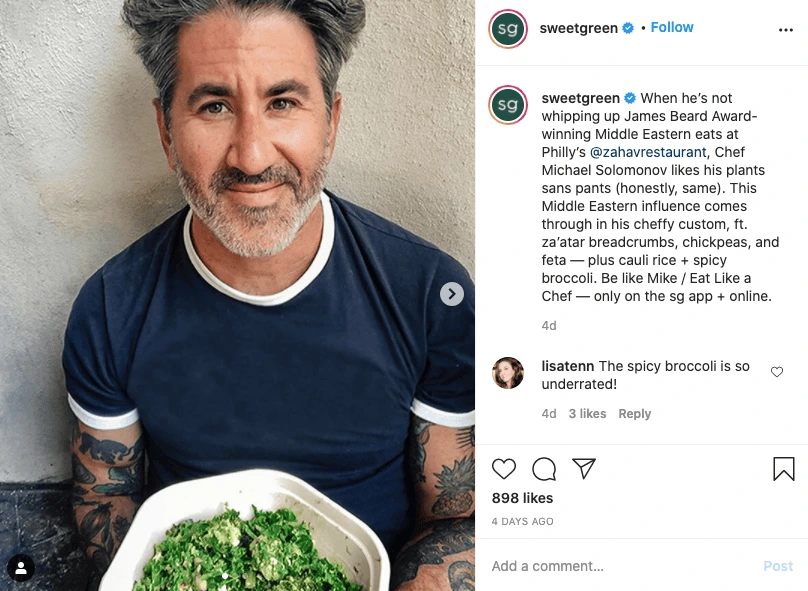
Source: Sweetgreen
Sweetgreen regularly posts content that features chef’s favorites from their restaurants. This does a few things:
- It offers social proof. It lets you know that experts in their field (chefs with highly refined taste buds!) frequent Sweetgreen, i.e. the food must be high quality and delicious.
- It satisfies curiosity. What are successful, talented people eating at Sweetgreen? Now you know.
- It’s far more interesting than a bland product-promotion post. Having someone else recommend your product and put their own spin on things helps spice up the content.
There are lots of different ways to feature endorsement-related content that will entice your followers. Brainstorm how you can use your current customer base to review, endorse or promote your products on Instagram.
2. Giveaways
Let’s be honest: Everyone loves free stuff.
It’s no secret that the word free is powerful, and many marketers use it in their copy to grab shoppers’ attention. That’s why samples and giveaways have become such a popular promotional tactic.
When you give away your product, you attract a larger audience of people willing to try your brand. It’s an opportunity to build brand awareness and encourage shoppers to try your product before buying it. Plus, it lowers the risk of trying something new.
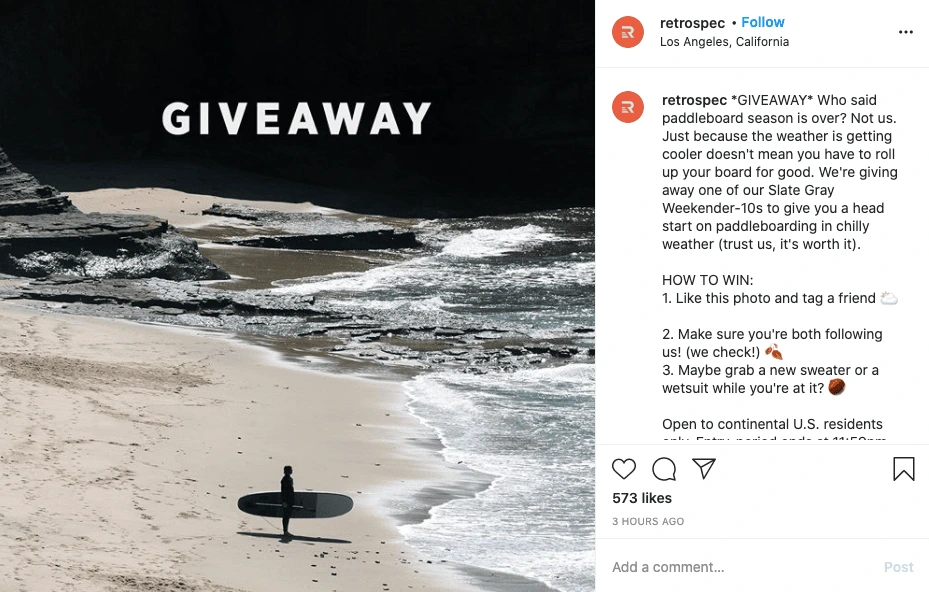
Source: Retrospec
Take Retrospec, for example, who gave away a much-sought-after paddleboard to keep their followers interested and engaged.
Since people love free stuff, this type of post often goes viral, attracting more followers who want a chance to win. If you want everyone to feel like a winner, you can even offer a discount to all entrants.
One point of caution: Not everyone who enters your giveaway will be interested in your brand. While the engagement may be impressive, you’ll likely notice a drop in followers once the promotion is over. That’s okay—those who leave probably aren’t a good fit for your target audience, and the ones who are will stick around.
3. Lifestyle photos
If you’re trying to sell a service rather than a product, give lifestyle content a try.
When you create an atmosphere that resonates with your followers’ lifestyle (or desired lifestyle), your brand feels more authentic. Don’t focus on your service; focus on your potential customer.
For instance, Sotheby’s International Realty uses lifestyle photography to hint at what clients can expect from their services. But it’s not about selling real estate, it’s about selling the lifestyle — sophisticated, comfortable and luxurious.
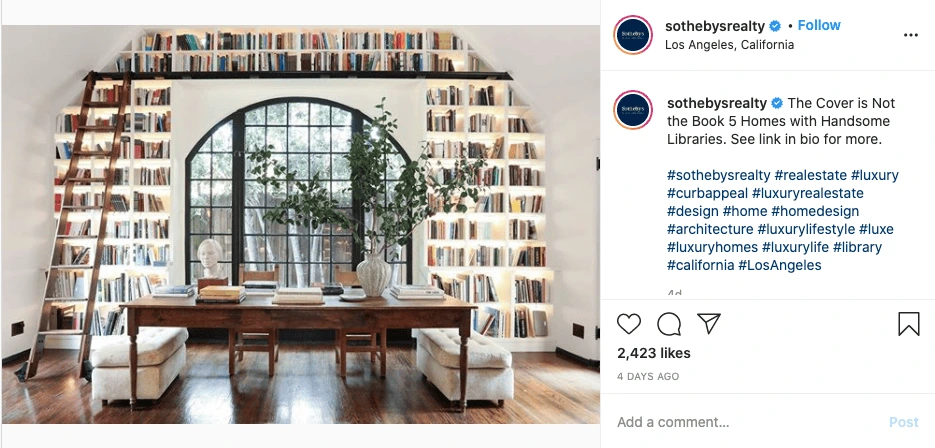
Source: Sotheby’s International Realty
Lifestyle photos can help people imagine how they might feel after engaging with your brand. If that lifestyle speaks to their desires and sensibilities, this Instagram post idea can easily contribute to future business.
4. Inspirational quotes
We all have moments when we need to motivate ourselves. When you’re looking for a quick pick-me-up, the right inspirational quote can really lift your mood.
Even though inspirational content doesn’t always contribute directly to sales, it helps to illustrate your brand’s values. Plus, it has more potential to go viral, as people like to share content that reflects their own values, too.
Below, SoulCycle offers a thought that would be sure to make you pause if you saw it while scrolling through your feed. Short, relevant quotes like this can inspire your community.
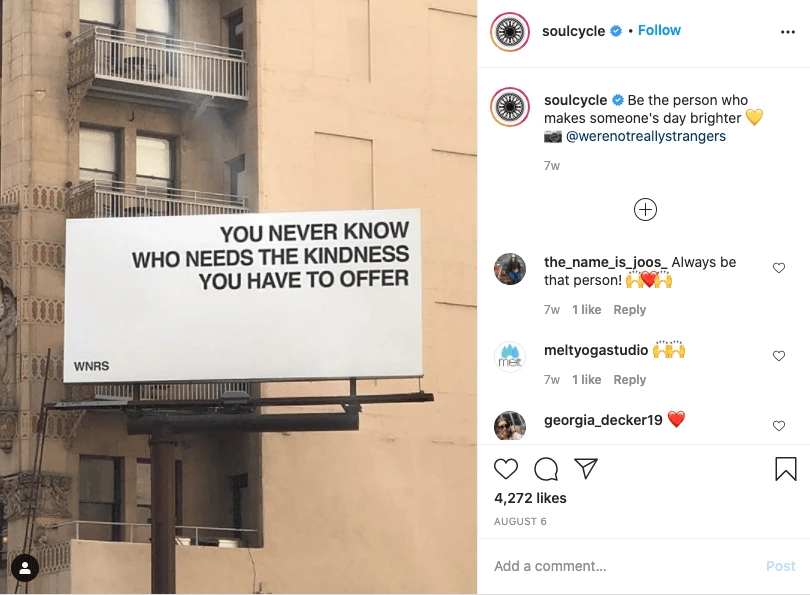
Source: SoulCycle
Sometimes less is more — and when it comes to Instagram, think first and foremost about fostering brand loyalty. If people draw inspiration from your brand, they won’t forget you.
5. Brand achievements
Your brand story matters to your customers, and so does your success.
When you share your brand’s achievements, you build trust and reinforce loyalty, which often leads to sales, support or donations. Reputation plays a big role when it comes to spending decisions, and your achievements prove that you’re a successful organization.
World Wildlife Fund often highlights its accomplishments on Instagram, showing its patrons and followers that their financial support is being put to good use. Content like this does double duty: It gives followers’ feeds a boost with good-news stories and it promotes the brand’s work.

Source: World Wildlife Fund
Achievement comes in many forms — brand development, product launches, customer growth, charitable initiatives — so keep your eyes open for opportunities to tell your story on Instagram. You might be surprised by how creatively you can visually represent your brand’s success.
Watch for ways to build trust and reinforce loyalty with your followers. Sharing your brand’s success will improve your reputation and impress potential customers.
6. Limited-time offers
As social creatures, it’s human nature to hate missing something important. Marketers should use FOMO (fear of missing out) to their advantage. One example is a limited-time sale, coupon or discount.
Take a look at Nékter. This franchise knows how to use sales to grab attention and encourage repeat purchases. How do they do it? Descriptive captions, a clear offer and bright, detailed photography all work together to deliver a compelling offer.
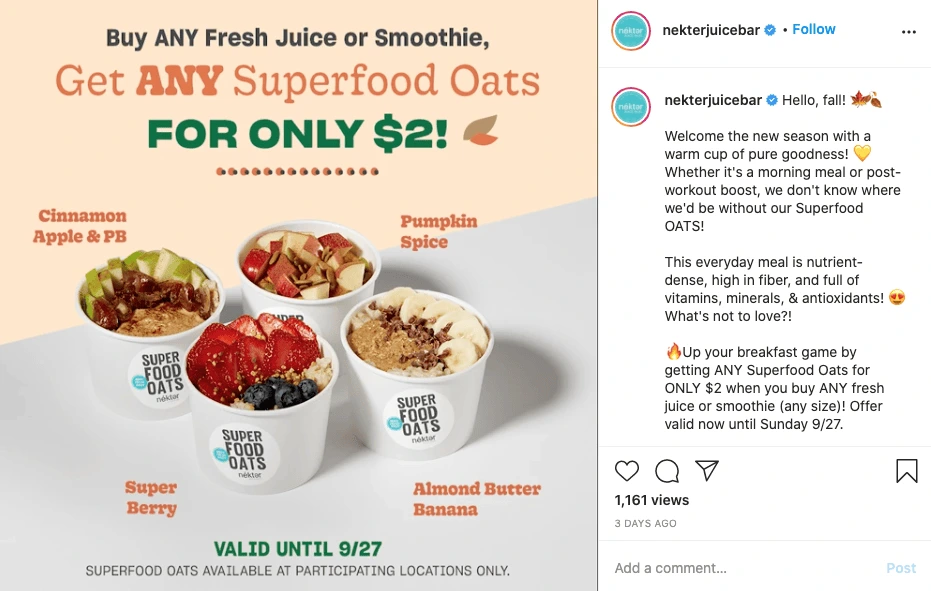
Source: Nékter Juice Bar
Nothing delays action more than uncertainty. Run your sales for a short period of time to give your followers a clear understanding of when and how they should act. If you run sales all the time, your audience will adjust and expect discounts continuously. Instead, make them feel like they’re getting a real deal by purchasing now.
Use compelling visuals to announce your offer, then provide followers with a clear deadline to increase urgency.
Key takeaway
Over the past few years, Instagram has evolved into a powerful marketing platform that gives brands new opportunities to boost sales. Investing in the right kinds of Instagram post ideas is a strategic way to influence the buying process.
Storytelling has the incredible ability to connect people on a deep, emotional level. It brings us together as we feel empathy for one another, laugh together and relate to someone else. Figures and stats aren’t emotionally charged and interesting. People want to hear stories that are relatable and trigger feelings within them. And, in the world of marketing, brand storytelling can have a massive impact on your company and the following you receive.
Related: How Airbnb & Apple use storytelling marketing to build their brands
With so many competing brands out there, it’s essential that you set yourself apart from the crowd, make yourself known and tell your brand story. A brand with a compelling story can connect with people in a way that draws them to you and gives you their loyalty. So many companies fail to see the importance in relating to their customer base this way. But, it’s not that difficult to build strong emotional connections with your customers with a captivating history of your reason for being.
How to write a brand story
1. Why do you exist?
There’s always a reason why you’ve made the decision to start your business. It could be something as simple as providing a high-quality product, because you had been disappointed by what was already available—or perhaps it’s something with a deeper, more introspective meaning. Regardless of the reason for your existence, you’ve got to tell your story.
2. Explain your history
Although it may not seem so interesting to you, your customers want to hear the history of how you went from the idea of your company to what exists today. A hard-fought underdog story can be incredibly relatable to many people who have gone through hardships or struggle, and it can be inspirational for someone currently in the same position.
If there isn’t much behind your history, a fun and fantastical story always makes for a memorable experience. As long as you aren’t misleading your customers into thinking you are something that you’re not, a fictional story is a great way to add some interest to your history.
When you’re building a brand story, you’ll also develop your own tone of voice and other assets. Make sure to keep those all in one place so they’re easy for anyone to find. Create a brand style guide using this handy template from Lucidpress.
3. Who are the characters involved?
Every story needs to have some characters in it. Your brand story will have at least a few characters: those individuals who were involved in some way or another with the conception and development of the brand. Any number of people can be a character in the story of your brand, including:
- Company founders
- Customers
- Neighbors
- Co-workers
- Chance encounters
When you’re looking to dig deep into the core of your brand story, first identify who was at the heart of the creation of the brand. And, as the brand evolves and continues to grow, more characters may be added into the story as they emerge. Keep your story and characters updated as needed.
4. State your mission
Your mission statement is essentially your basic reason for being. It outlines several things for your customers to learn about your brand:
- Why you’re in business
- What need you’re fulfilling
- The problem you’re solving
In outlining your mission statement, you’ve got to remember to stay true to yourself. After all, you and your company must live and breathe this mission statement in order to stay true to the brand and protect your brand’s reputation. If your mission statement includes environmentally friendly practices, but you drive a gas-guzzler or are found to be improperly disposing of your waste, you will significantly tarnish your brand and mission statement. But, when you live your mission statement, you show yourself and your brand to be more authentic and trustworthy.
5. What are your failures?
There are few stories of success that are without their fair share of obstacles, downturns and downright fails, so don’t be afraid to share that part of your story with your customers. After all, conflict is what makes any story interesting.
Some of the most successful people you’ve heard of have been through their fair share of failures:
- J.K. Rowling felt like the biggest failure she knew after a failed marriage, job loss and being on the verge of homelessness.
- Bill Gates dropped out of Harvard and a business he co-owned went under.
- Steven Spielberg was turned down by the University of California, not once, not twice, but three times.
Oftentimes, we feel the urge to skip over these failures and just leave a gap in our stories. But, it’s generally within those gaps that the most change and development takes places. Don’t sugarcoat the tough times, but instead be honest with your customers. You’ll be shocked at how well honesty about failure and struggle is accepted and appreciated.
Brand story example
At Lucidpress, our mission is to help every person, business or brand present themselves, so they are understood. We developed our brand story as follows:
Setting
In two decades, the digital landscape has transformed the way brands present themselves — and the world now expects great design.
Conflict
However, design isn’t a universal skill. Combine that with nearly everyone in an organization creating content and you get bad design and inconsistent branded content.
Due to this, many companies turn to strict brand controls, creating large content request backlogs for central creative teams, or else employees are allowed to create content in the wild with little direction.
Resolution
We created a brand templating platform to offer a better way. Through Lucidpress, companies scale content creation while protecting their brand.
When brands stay consistent through brand templating they last longer, grow faster, and drive more revenue.
Creating a brand story using these steps can help solidify that emotional connection with your customers, to build a bond that is hard to break. Don’t overlook the importance of writing your brand story and building that relationship.
Want to know more about how to build your brand? Download our free ebook on how to build a brand in 2020.
Creating banners for social media and display campaigns can be a daunting undertaking, especially if you don’t have a creative team to help out. As a small business owner, this task may fall to you. Here are 15 banner design ideas to check out and help you get started.
Banner ad ideas
Business medium rectangle banner (300 x 250)
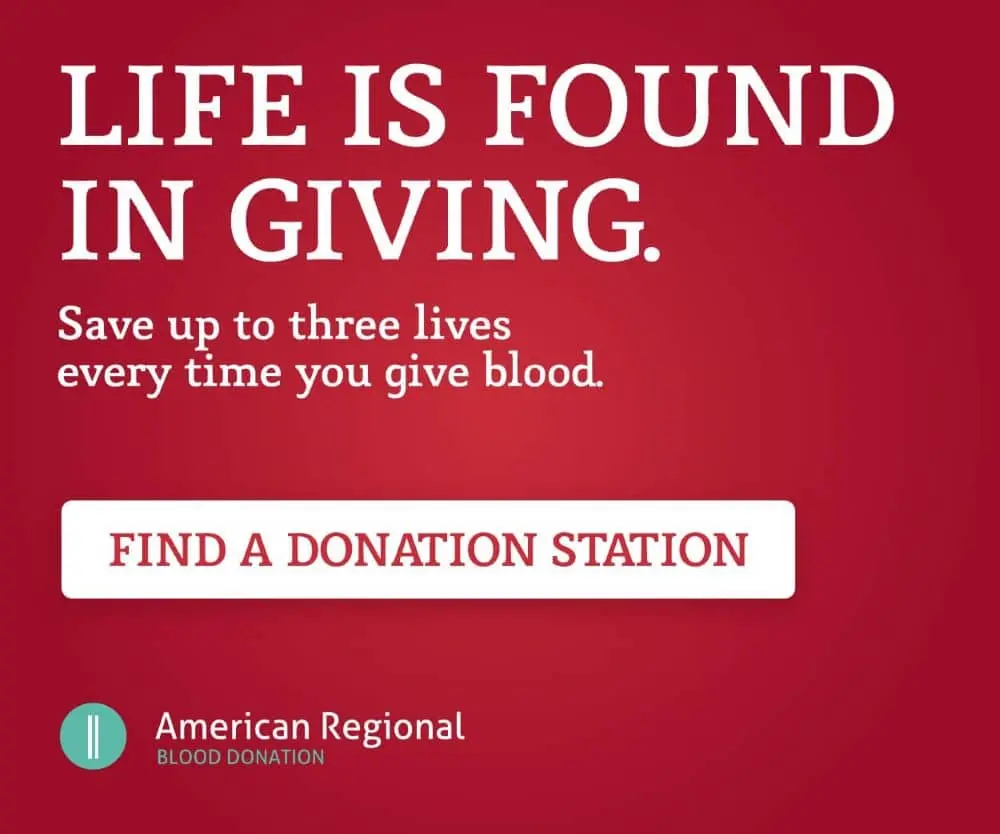
Of all our banner ideas, the medium rectangle banner is by far the most versatile. You can include this banner ad template in-line with text in web pages, news articles and other online communications.
Market full banner (468 x 60)


Inspired and designed after the very first banner to appear on the internet, the market full banner template follows that very size and format. This banner size offers the perfect space to show off your brand and product to thousands of potential customers.
Wide skyscraper banner (160 x 600)


A great pick for a digital marketing campaign, the wide skyscraper banner template can be used to show off products in various applications. Following this template, you can change images, colors and text to reflect your brand’s special offers.
Purple makeup banner ad
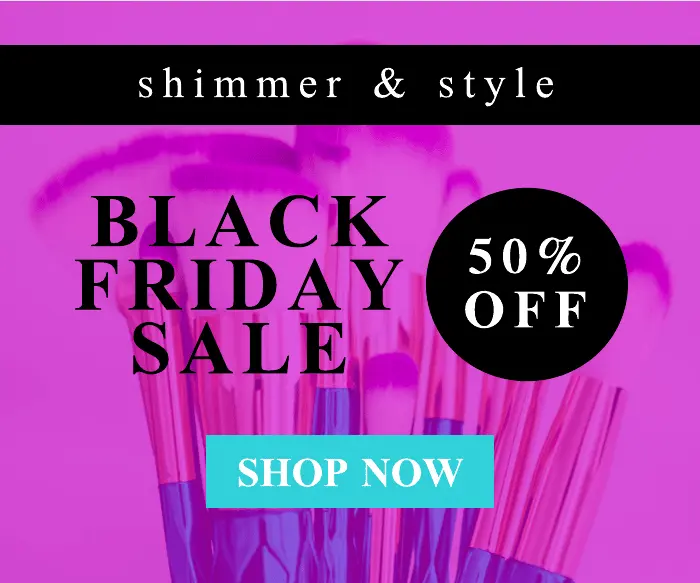

This banner ad works in a number of sizes, from a large rectangle (336 x 280) to a wide skyscraper (160 x 600). If you’re in the beauty industry, our purple makeup banner ad is a great template since it can be repurposed into multiple sizes.
Large website (1200 x 400)

A large website banner ad is the perfect option for today’s high-def screens. With this promotional large website banner template, you can upload your images and add text for your website banner, email header and more.
Print banner ideas
Job fair event (20 x 96)

Event banners are a necessity to advise and direct guests at a conference or job fair. In this particular template, the cityscape image will scream success and ambition. The neutral colors will allow you to sync it easily with your branding or the event branding.
Lush sale advertising (40 x 64)

Bordered by lush tropical green leaves, this beautiful sales advertising banner is a wonderful idea to promote products for brands that represent nature or use natural ingredients.
Executive business (40 x 128)

If you need a more professional template, the executive business banner is right for you. Designed with a professional air, this banner is sleek and modern.
Vibrant business (20 x 96)

We’ve converted the infographic into a vibrant banner template that will highlight the stats you’re proud of quickly and effectively — the more simple, the better.
Athletic event (40 x 128)

This dynamic athletic event banner is one of the best banner ideas out there for athletic events. You can use it to mark distance, give detailed stats, or showcase sponsors involved.
Social media banner ideas
Grand opening Facebook cover photo (851 x 315)
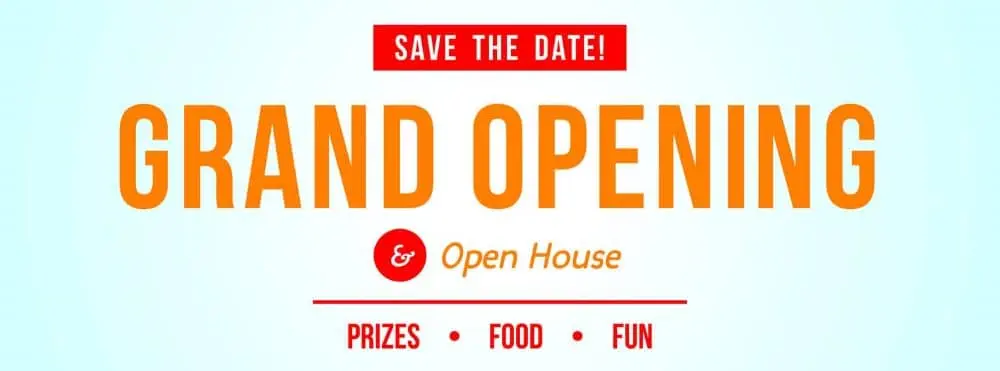
If you’re prepping for a grand opening and are hoping to advertise it on Facebook, using the right-sized banners is key to inviting people in. You can use this Facebook cover photo template by updating the fonts, colors and details to match your business.
Restaurant YouTube banner (1440 x 2650)
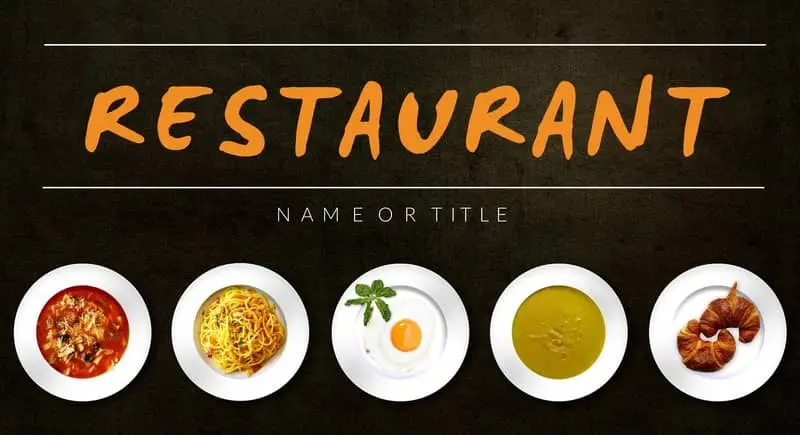
Your business is more than simply what happens in the kitchen, and if you’re trying to expand your social media reach through YouTube, this restaurant banner template is right for you. YouTube banners can highlight your food and immediately show what your channel is all about.
Travel blog Twitter tweet (1024 x 512)
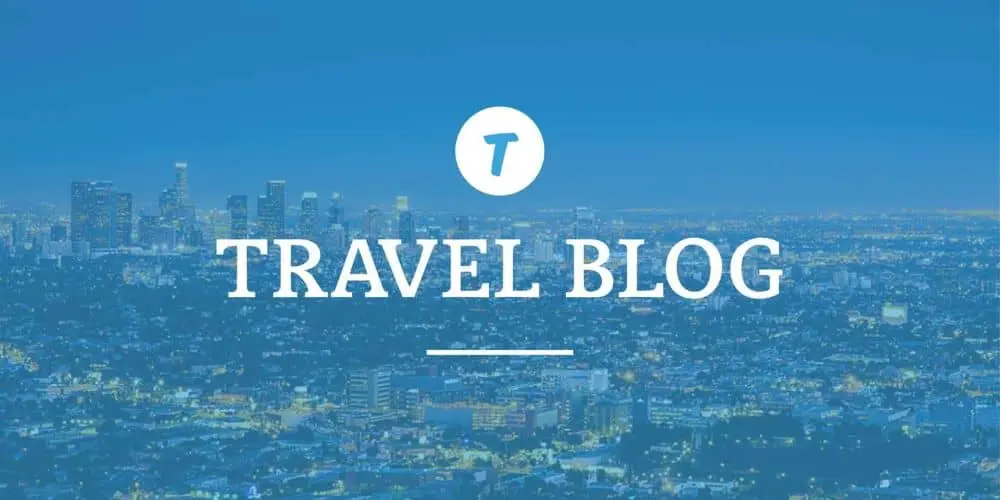
As a travel blogger, you most likely use Twitter to share content with your followers. But a link may not be getting the response or reach that you had hoped for. By implementing images into your tweets with this travel blog Twitter tweet template, you’ll keep readers engaged and entice them to click.
Band YouTube banner
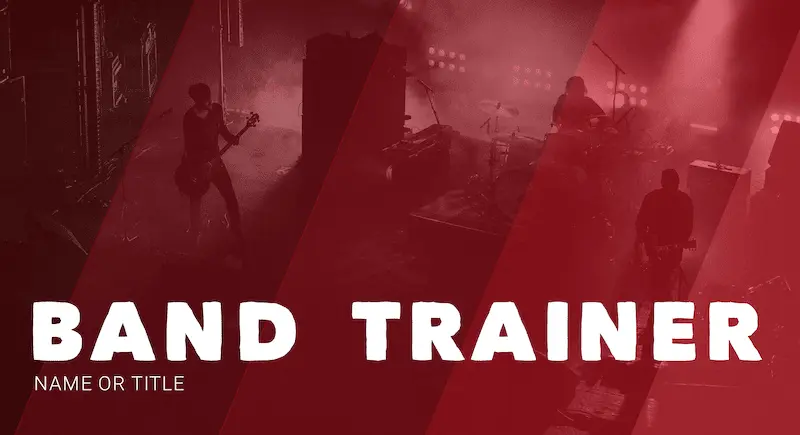
Create visual interest with a gradient overlay. This band YouTube banner design does a great job of creating a sense of mystery to pump up excitement for your next performance and drive subscribers to your YouTube channel.
Photography YouTube Channel Art

This photography YouTube channel art keeps things simple yet interesting with a box around the headline and a nearly black photograph, all on a plain, yellow background. Every element of the banner works together to let the viewer know that this channel is by artists and for artists.
Now it’s your turn to start designing your own banner! And if you want to make it extra easy, try our free banner templates.
Qualifying a lead is a multi-step process, and on average, it takes a minimum of six to eight touches. During this time, sales reps evaluate a prospect across four important aspects: budget, authority, need and timeframe (BANT). A prospect who checks all these vital criteria is deemed worthy of persuasion.
Related: 7 types of sales collateral that convert
And this is merely the beginning of the sales process. Once a lead has been qualified, they move through four stages of engagement before being converted into paying customers. These stages are popularly called AIDA: awareness, interest, decision and action. There’s also a fifth step (satisfaction) which happens after the transaction is complete.
Creating awareness, generating interest and building a desire to buy does not come easy. To build a successful sales team, it’s important to not only train your sales team but also equip them with sales enablement content that can trigger the right response from a lead. []
Identify the assets required
The first step in the process of creating sales enablement content is building a requirements sheet. Salespeople require a unique list of assets at each stage of the sales process. For instance, assets presented during the Awareness stage would mostly deal with information about your business, the founders, investors, products and services, and so on. In the Interest stage, assets mostly deal with product demonstrations. Decision is generated through testimonials and peer reviews that validate your legitimacy and remove any hurdles that prevent your lead from converting.
Types of sales enablement content to consider:
- Explainer videos
- Ebooks
- Webinar recordings
- One-pagers
- Product demos
- White papers
- Case studies
- Customer testimonials
- Blog articles
Once you identify the objectives of each of the different stages of the sales process, building assets to fit your agenda becomes easy.
Create sales enablement content assets
The success of the content creation process is determined by how engaged your customers are during sales outreach. A tool like Lucidpress streamlines the creation of various content assets — like brochures, sales proposals and case studies — with consistent branding. You might also create interactive content like videos and slideshows that are proven to offer high engagement and message retention among viewers.
The question, however, is what kind of content you must create to build better engagement for your brand. Here are a few tips to take note of.
Sales and content marketing need to work together on sales enablement
Sales enablement is a joint effort between the sales and marketing teams. To create the most effective content, marketing needs to be in tune with sales and understand what types of collateral they need most.
Getting together on a regular basis (may we suggest a monthly sync?) to chat about aligning goals will ensure that sales is clear about what they need and that they’re not missing out on any content that’s already available and could be useful for their prospects.
Measure client dropout rate
In any sales process, only a small fraction of the qualified leads you reach out to eventually become paying customers. The rest of the leads drop out at various stages of sales. Identify the dropout rate at each stage of the sales process. The stage where the most clients choose to part ways is the one where your content needs more attention.
You don’t have to use your existing sales enablement content as a benchmark if you don’t want to. In fact, it’s fine to start from scratch to build new content. Hold an internal meeting with all stakeholders (sales, marketing, and product managers) to build a list of features and ideas that could deliver maximum value. This brainstorming session could also include benchmarking your content against the competition’s. This will give your team a good idea of what’s missing and how your content could be made more engaging for prospective customers.
Build a sales enablement content library
The next step is to translate the ideas from your team meetings into actual assets. It’s worth remembering that too much information can clutter your sales deck, so new assets should be organized into a content library instead.
If you plan to use content management or knowledge management tools to handle this, make sure you pick a service that features a “learning path” or curriculum. This will help you organize your content into distinct folders for every stage of the sales cycle, which can be handy during the testing process. As we’ll see in the next steps, it’s vital to experiment with various combinations of content assets and compare the conversion rates.
Make content customizable
If you need to really make the most of your sales enablement content — and who doesn’t? — you’d do well to invest your energy in making templates. Templated content allows anyone to create a customized piece of collateral to meet their specific prospect’s needs.
Instead of a sales rep making a content request from the creative team, they’d simply pull from a library of sales enablement templates that had been designed for this purpose. They’d find a template for a brochure, or whatever piece they need, and then fill in customizable text and image fields to make it personalized for their prospect.
Templated design saves both the sales and marketing teams time, and it can make sure content is as targeted and effective as possible.
Multivariate testing
The next step is to test the effectiveness of your content assets on the conversion rate. The ideal way to do this is to build a handful of different content assets that could be pitched to clients in the same stage of the sales process. For instance, one deck could focus on charts and graphs, while another could use videos and interactive graphics to sell the product.
Make sure that every sales rep pitches at least one client with each of the various assets. Have the performance metrics of the original deck in hand before carrying out this experiment.
At the end of this stage, build an aggregated report of how each of your content assets performed and how they all compare against the original deck.
Secondary multivariate testing
Once you’ve identified the content that performs best from among those tested, the next step is to experiment with more assets of the same kind. For instance, if videos and interactive graphics worked best, then you could work on creating new decks that feature such content. The idea is to find the sweet spot that maximizes engagement and conversion. Once you have a handful of different assets ready, experiment one more time with a new bunch of leads to find the highest performing content deck.
Rinse and repeat
Creating highly engaging sales enablement content is a never-ending process. Once the best performing deck has been identified, the next step would be to look at other stages of the sales cycle where dropout rates are high and repeating the process. Doing this for each of the sales stages will help build a content library that converts higher than ever before.
Learn how you can lead your organization to creating an effective sales enablement program with consistent storytelling across your sales org.
Thanks to the internet, it’s easier than ever design a beautiful digital or print magazine. No matter your niche, there are plenty of layouts and brand templates that can help get you started. In this resource, we’ll take you through some of our favorite magazine design and layout ideas to help you put your own special touch on your creation.
How to design a magazine layout
There are four core graphic design principles that will ultimately help guide your magazine layout design.
- Hierarchy — How people read or consume the information, i.e., what’s most important? What are the key takeaways here? And how do you showcase that? You want this information to be visible right out the gate.
- Purpose — Why should your audience care about reading this? What’s the point of your magazine? Is it something that needs to be communicated visually or through words?
- Readability — How easy is your magazine to read and understand? Are you pairing poetry with images, or are you articulating EOY program goals for a non-profit? Either way, your choice in communication and end goal needs to be clear.
- Balance —Chaos can be art, but it’s not always beautiful or helpful when it comes to graphic design. You want to strike a balance between cluttered and sparse.
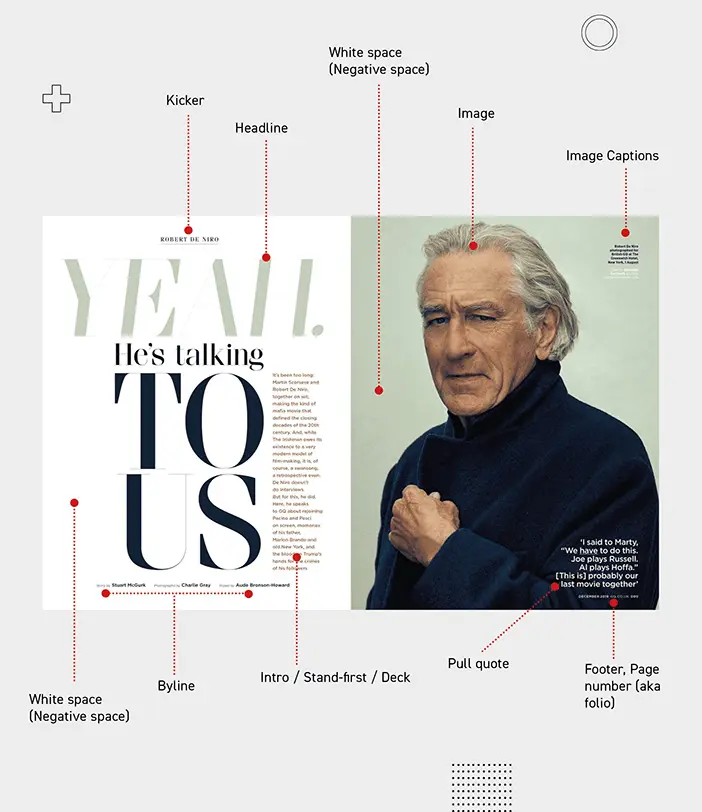
Image from Yes I’m a Designer, by Kevin Fay
In the image above, you’ll see various callouts for certain design elements — keep in mind, each of the design elements serve a specific purpose, whether it’s to help break up a wall of text, or illustrate a point with images.
Now, let’s dive into some more magazine design and layout examples!
Magazine design inspiration
If you want to create a sharp, eye-catching magazine that balances important information about your brand with spot-on graphic design, we’ve got plenty of inspiration for you.
1. Adventure Digital Magazine
If your magazine features immersive photography, your magazine design and layout should give more weight to imagery than words. The layout of this Adventure digital magazine template will help you put your photos front and center while balancing them with sections of text. And, as a digital magazine, this template gives you the bonus option of scrolling text, meaning you can include long-form content without taking space away from imagery.
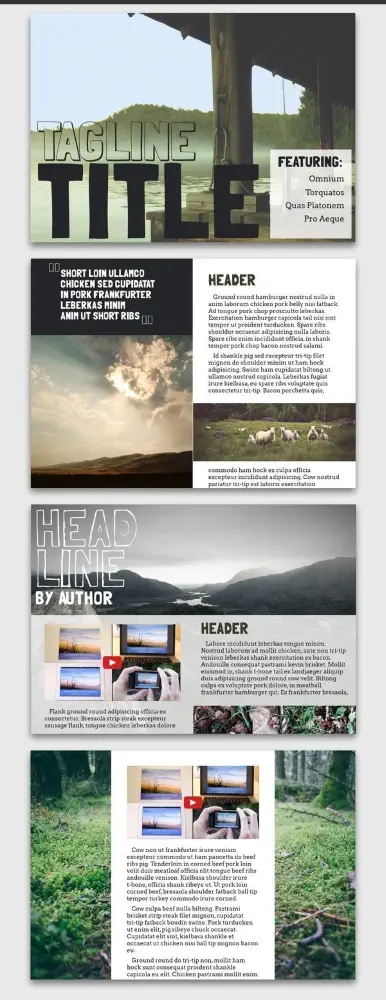
2. Aficionado e-Magazine
Traditional publications tend to avoid using a horizontal magazine layout because it can be unwieldy to (physically) hold. But as tablets and e-readers become more common, we’ve noticed that designers are revisiting the concept. This Aficionado e-magazine template is a great jumping-off point for magazine design inspiration, and offers some great ideas for orienting pages horizontally. For instance — the columns alone offer a variety of graphic design capabilities:
- Split the page in half
- Be weighted more towards one side
- Skipped altogether in favor of rich photography and breathable white space
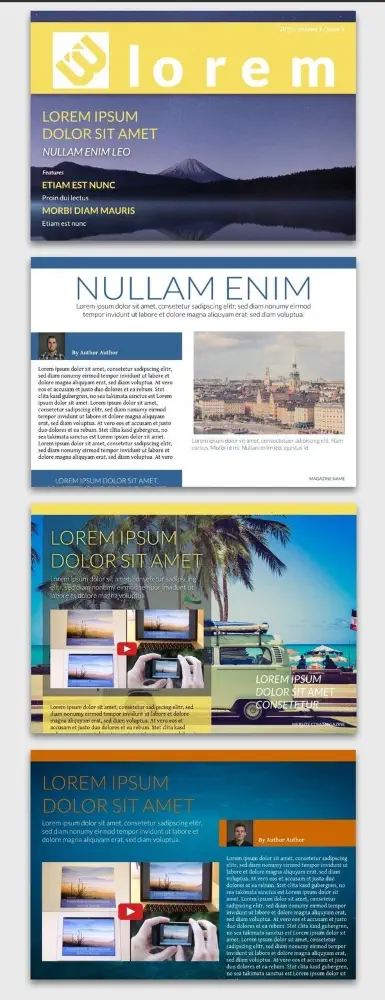
3. Azure Magazine
What’s great about the Azure magazine design and layout is how well it lends itself to color customization. Thanks to its blocky columns and bold fonts, it would be easy to read with a variety of color combos (but don’t forget to choose high contrast colors for text and backgrounds). For brands with strong, recognizeable color palettes, it’s an excellent candidate.
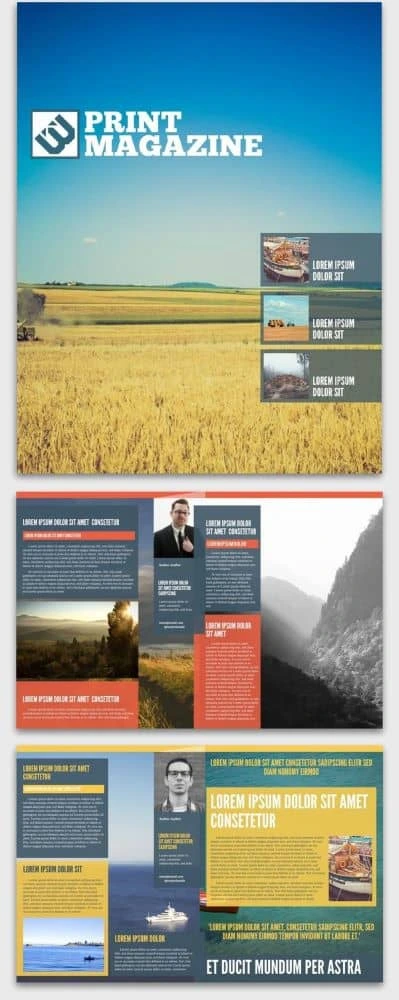
4. Connoisseur Food Magazine
What stands out in the Connoisseur food magazine layout is its use of colorful sectioning. You can customize just about anything — from a single column surrounded by photography to three narrow columns side-by-side. Plus, this layout works vertically or horizontally, so you get multiple options in one delicious template.
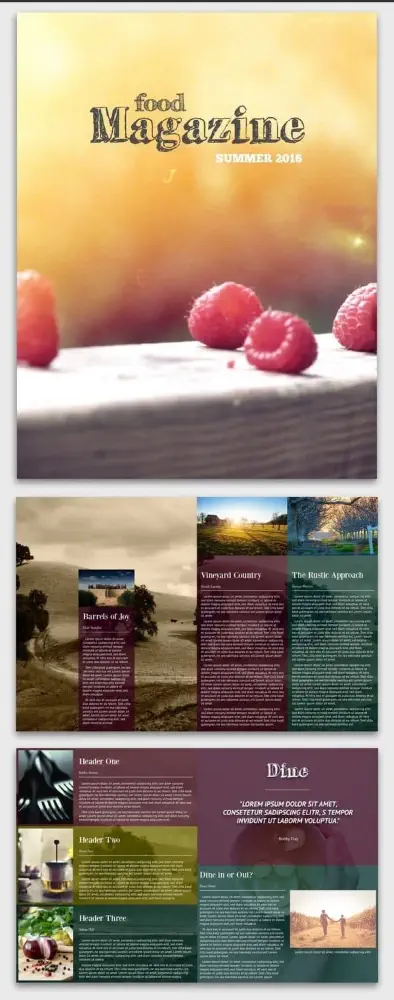
5. Introspective Digital Magazine
Never underestimate the power of the “less is more” design approach. The Introspective magazine design makes the most of negative space and contrast to leave a strong impression. And because it’s digital, scrolling text and rich media (like video) can be included.
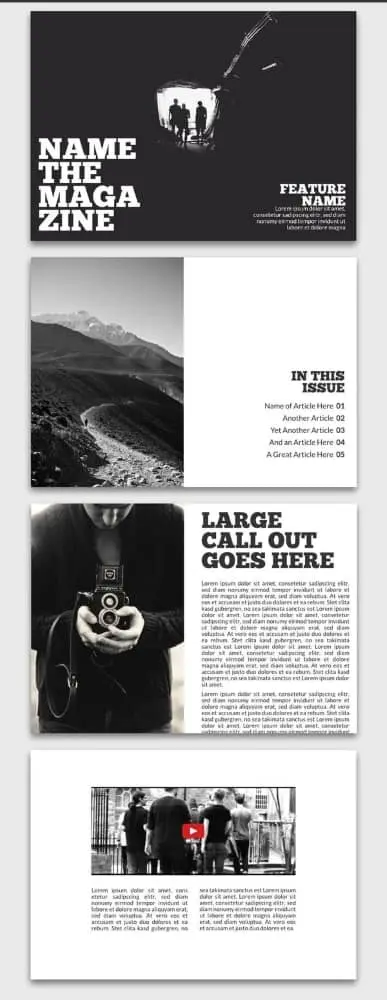
6. Money Fake Magazine Cover
Have you ever wondered what it feels like to be on the cover of a magazine? The Money fake magazine design and layout template gives you the perfect chance to do so! We all know the formula: a large portrait situated front and center with a masthead underneath, surrounded by intriguing teasers for the articles inside. This template even includes little details like date and issue number, as well as a UPC code at the bottom.
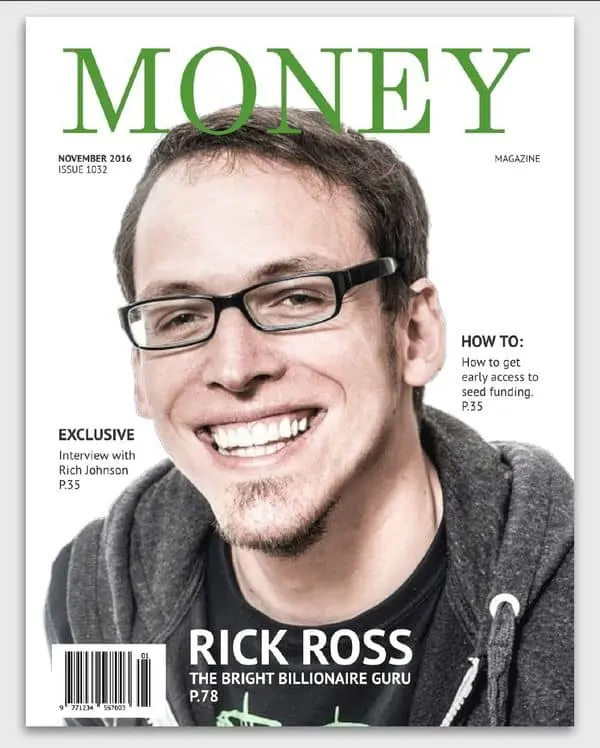
7. New Yorker Business Magazine
The New Yorker business magazine layout is primarily black and white, but it adds a pop of vibrant red for powerful emphasis. Its thin font and art-deco touches set it apart from the monochrome intensity of the Introspective layout in #5. Note the expansive cushions of white space, especially in the single-column layout, which features scrolling text with a single quote spotlighted on either side.
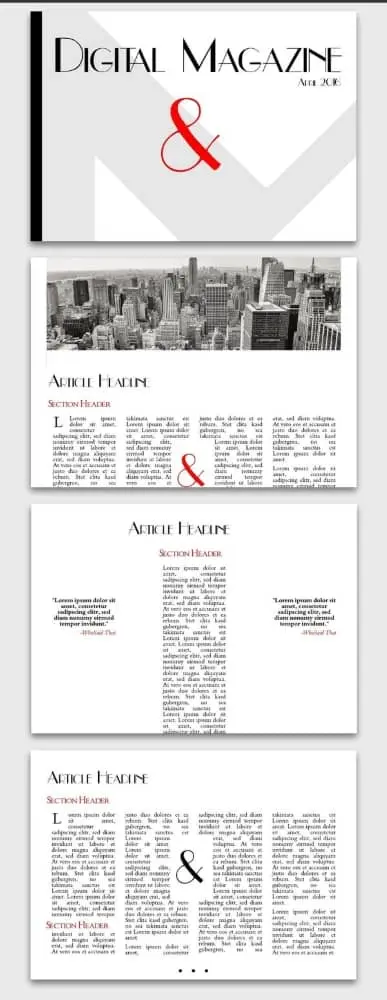
8. On the Road Magazine
There are several things to love about the On the Road magazine template. First, the white border offers the option to frame your content in a somewhat nostalgic way. Or, if that’s not to your taste, check out how one page cuts two photos together with no border at all. With plenty of choices, there’s enough here to spark anyone’s imagination.
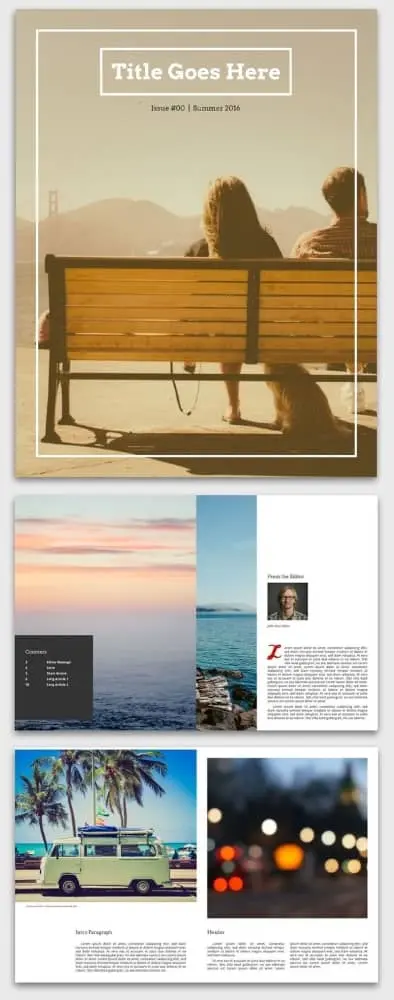
9. Open Air Online Magazine
True to its name, the Open air online magazine layout leaves plenty of room for airy background photos. Adding transparency to the content blocks and bringing them in from the margins a little bit provides a cool sense of depth. It’s a neat visual trick that works especially well with scrolling columns, a design advantage unique to digital magazine layouts.
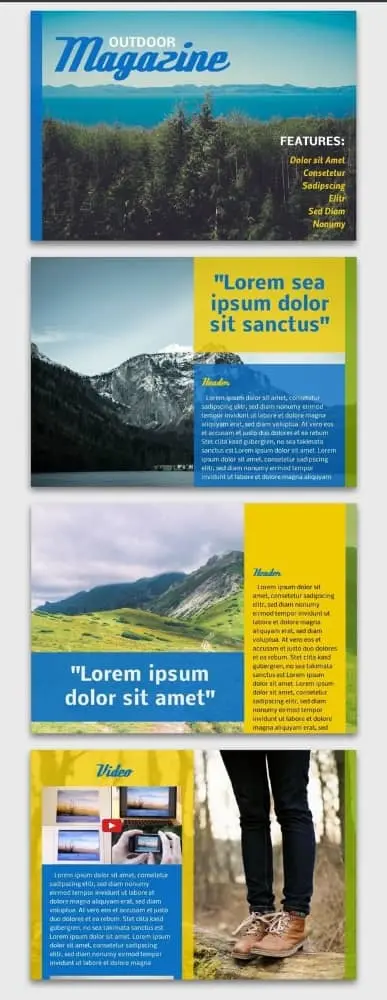
10. Seasons Digital Magazine
Who says digital layouts have to look amateur? With this template, it’s easy to craft elegant, sophisticated content that still feels like it belongs on a screen. The juxtaposition of serif copy with sans-serif headlines creates a stylistic identity that’s both traditional and modern — a comfortable in-between place for those of us who grew up with the rise of the internet.
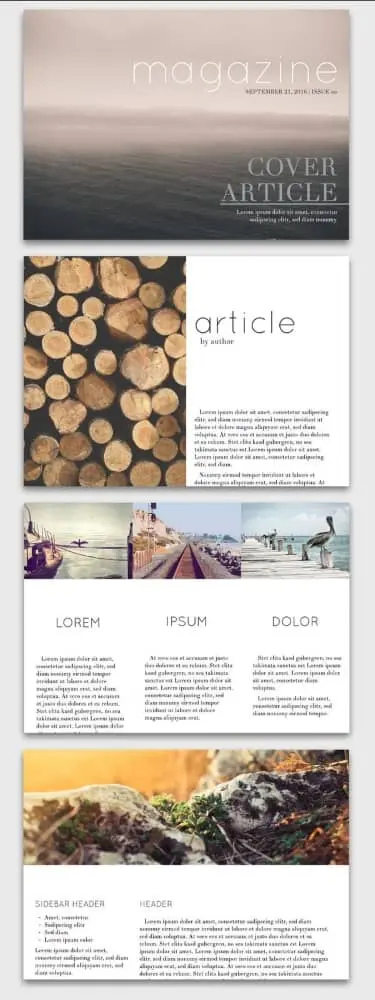
11. Showcase Travel Magazine
The Showcase travel magazine design and layout is designed for readability above all else. There’s a clear division between pages dedicated to photography and pages dedicated to copy. For a travel magazine, this is a wise choice, helping create immersive visual and narrative stories.
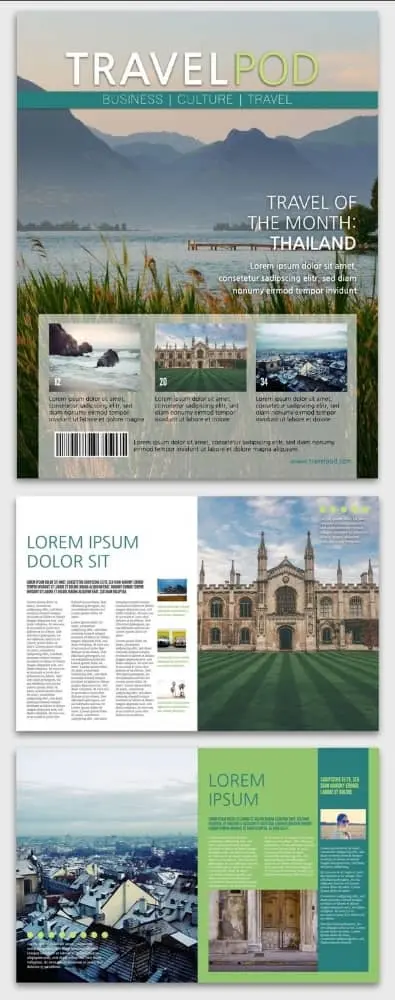
12. Trendsetter Fashion Magazine
Like in art, sometimes the best designs are those that purposefully ignore the rules. A look at the Trendsetter fashion magazine layout illustrates several possibilities here. If your magazine explores the avant-garde, it’s worth considering how unique font and color choices can convey your brand’s unique position.
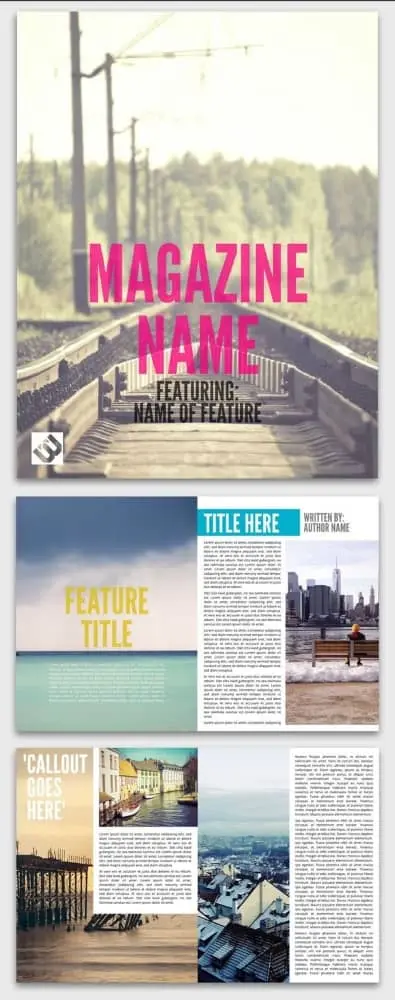
13. Tropic Magazine Cover
Sometimes, following a familiar formula is the perfect way to entice readers in. This Tropic magazine cover exemplifies a typical layout in a simple and well-balanced way. It’s easy to succumb to clutter (looking at you every website from 1999), but this layout uses a minimal design that still includes the necessities — the title, the headlining article, two featured pieces and photography.
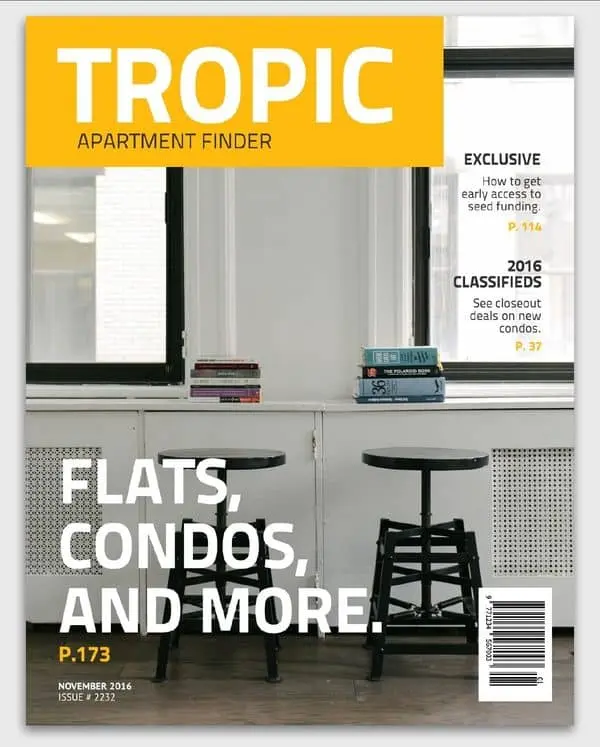
14. Urban Print Magazine
Like a newspaper, the Urban print magazine layout divides itself into many columns, presenting dense and information-rich content for readers to scan or consume at their own pace. If you’ve struggled with creating readable layouts that feature multiple columns, this layout offers a wealth of examples.
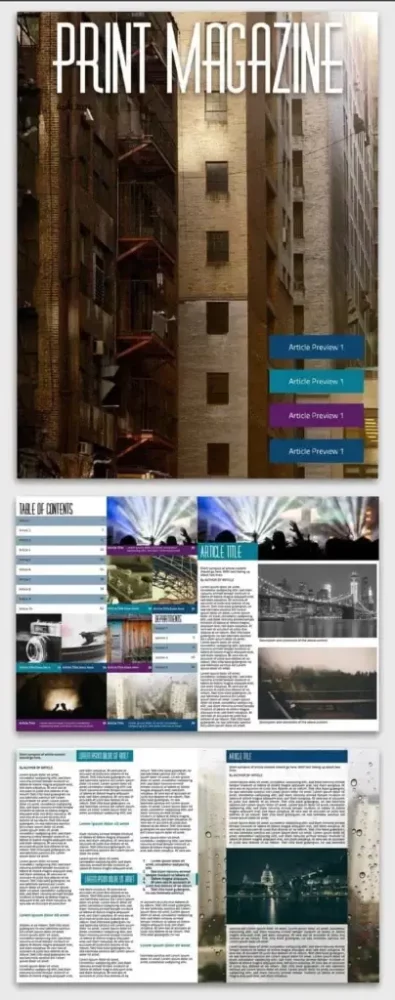
15. Simple car magazine
This simple and clean car magazine template provides the perfect cover layout to show off a classic car. When you’ve got eye candy like this, minimalism can make the most visual impact.

16. Science magazine
When you need a data-forward approach for your magazine layout, our free science magazine template will get the job done. A clean and clear layout leaves plenty of space for long articles and in-depth figures.

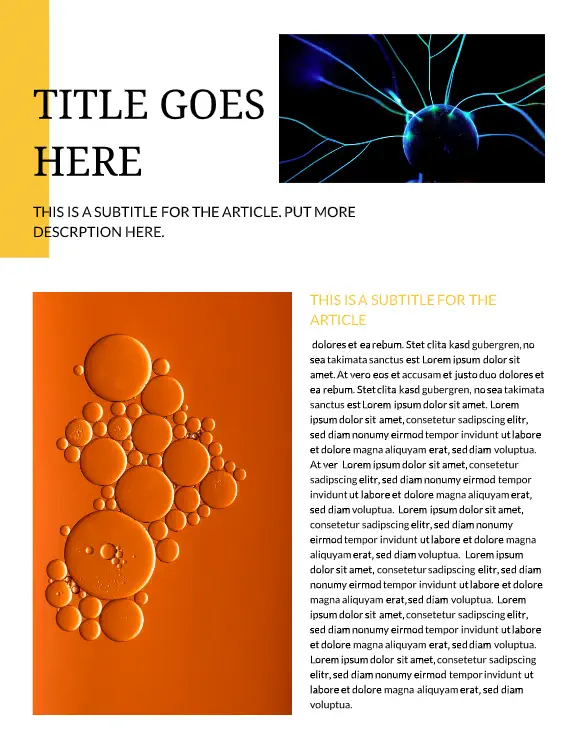
17. Bridal magazine
A simple magazine layout combined with classic photography lets your brand’s wedding inspiration shine. With subdued colors, inspirational photos, and plenty of room for copy, this multi-page wedding mag template has everything you need.
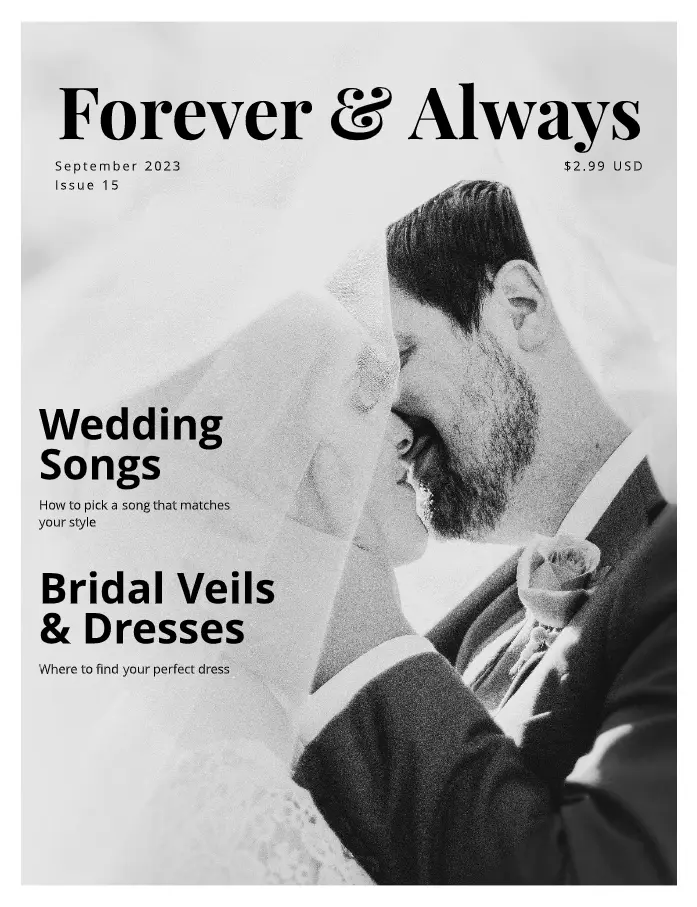
18. University magazine
Keep students, faculty, and alumni up to date on everything new at your school with this bold and classic magazine layout design. Need to run school news, announcements, and ads? You can pack it all into this straightforward template.

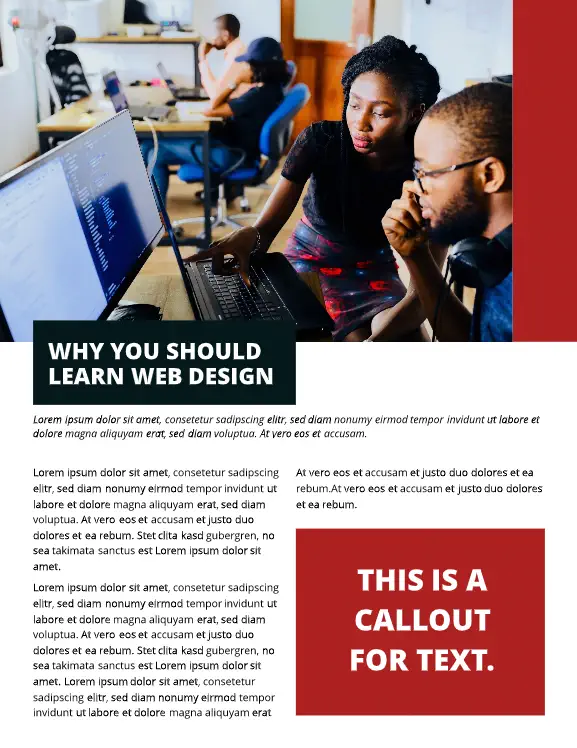
19. Food magazine
Images do all the talking in this elegantly designed food magazine layout. There’s ample room to highlight your brand’s culinary creations, with clean text callouts doing the supporting work.
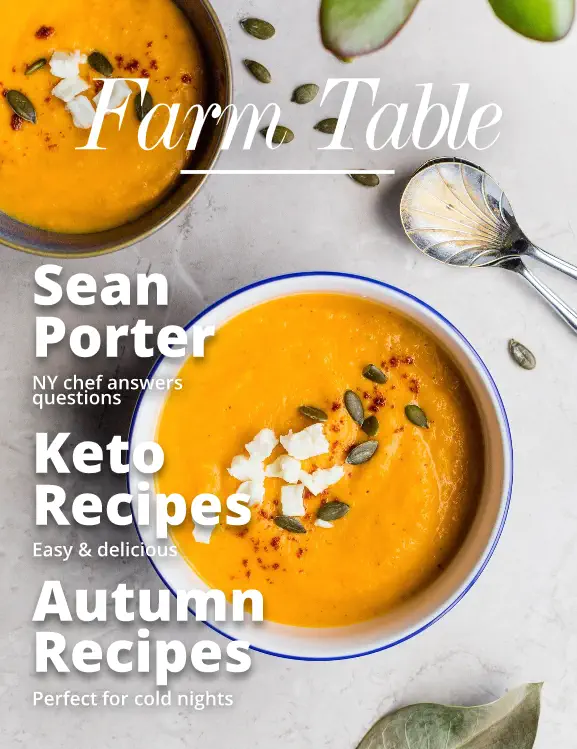
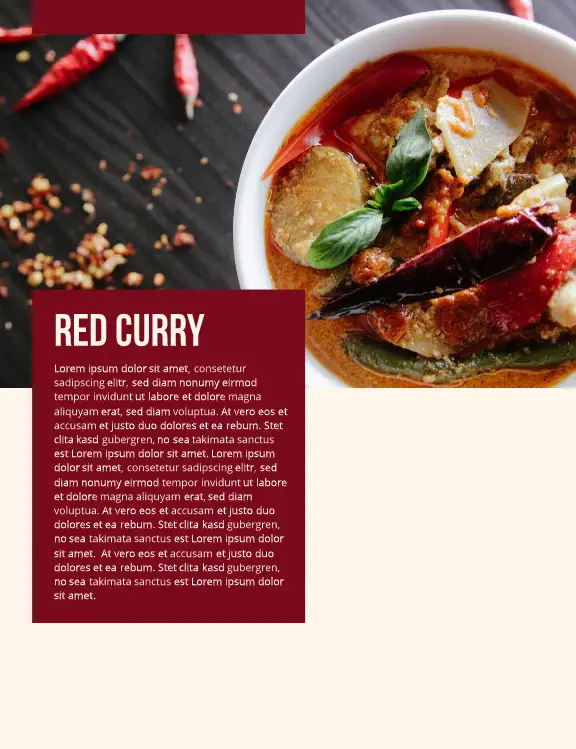
20. Minimal fashion magazine
If you need a clean and simple fashion magazine layout design, this template will help you show off your company’s looks without any of the visual clutter.

21. Dessert magazine
Put your ‘mmm’-worthy creations front and center with this brightly colored desert magazine layout. Close-up photos and fun fonts create a mouth-watering magazine template.
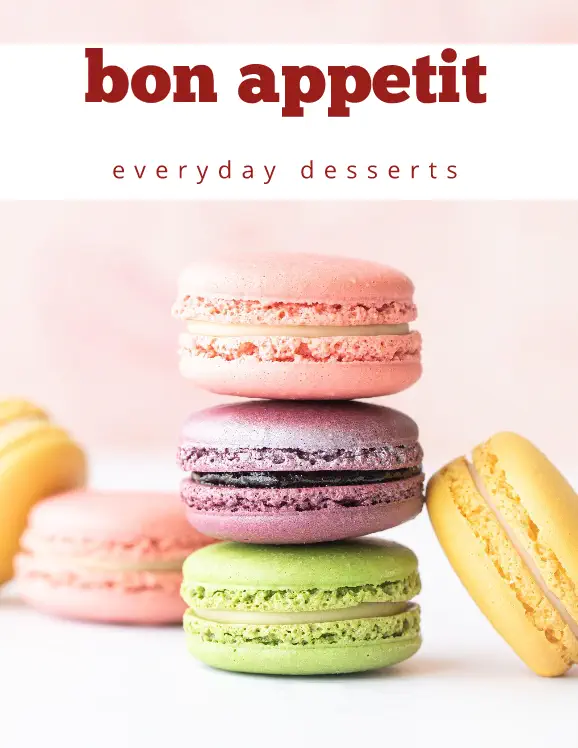
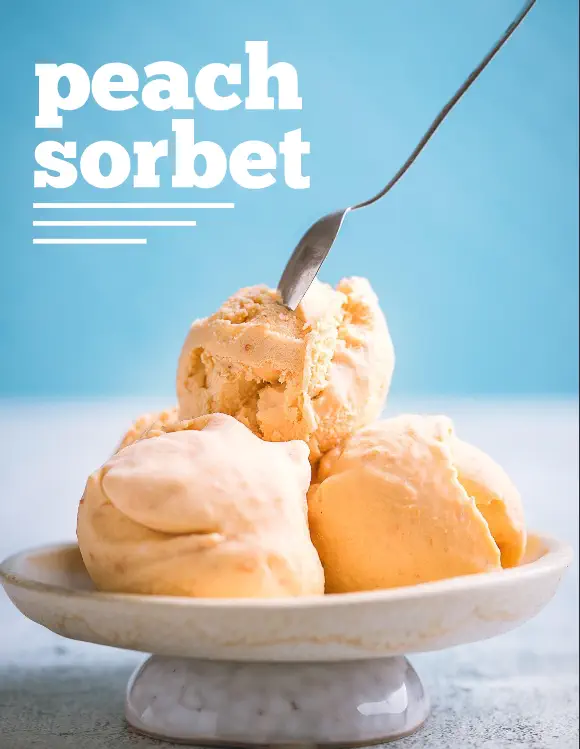
22. Teen magazine cover
A bright photo collage creates a teen magazine cover layout that’s bound to catch plenty of eyes. With bold graphics and a Y2K nostalgic touch, this design offers a familiar but fresh take on the genre.
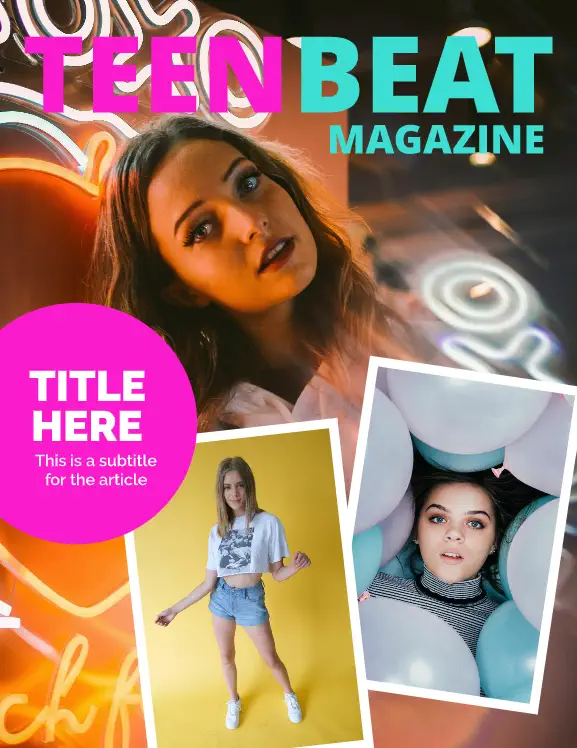
23. Men’s fashion magazine
This men’s fashion magazine layout doesn’t shy away from the details. A well-defined balance between images and copy helps your brand show its best side.
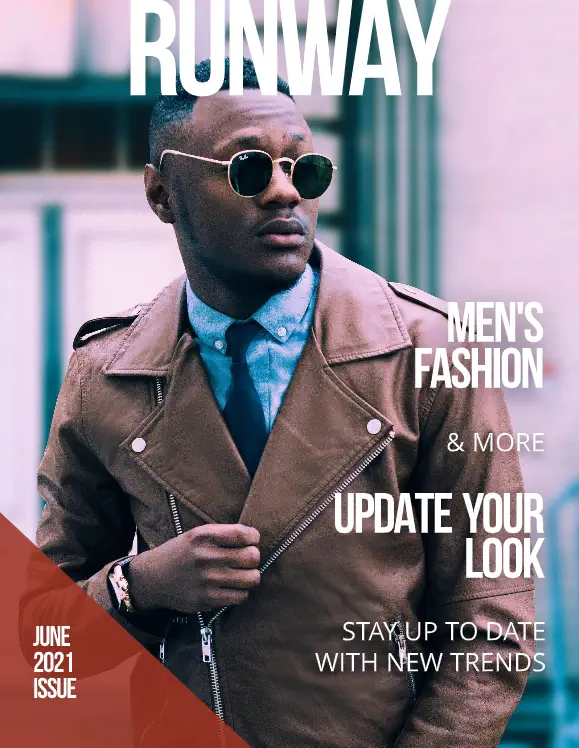
24. Fake Vogue cover
When only a fake Vogue cover will do, try this template. Pop in your preferred photo and let the classic magazine cover template do the rest.
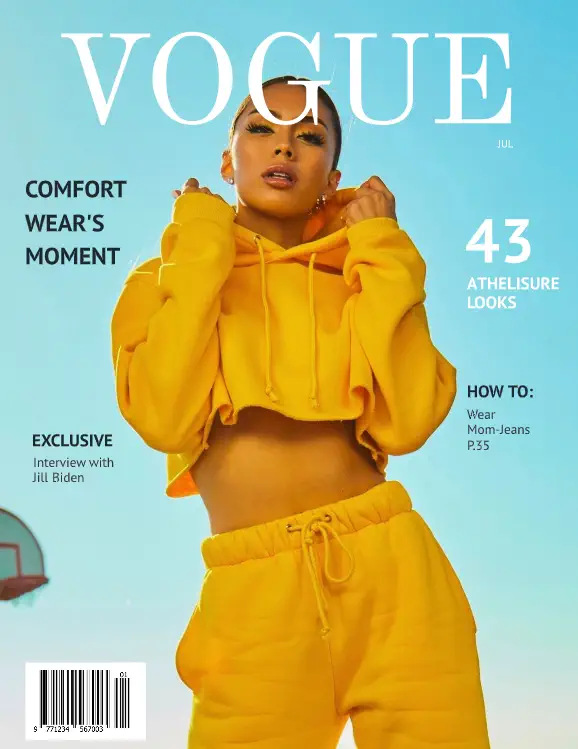
25. Wedding magazine
It’s easy to get lost in the details of this dreamy bridal magazine layout. Soft colors juxtaposed against calming sections of text let your customers peruse beautiful wedding inspo at their leisure.

26. Elementary school magazine
Easily toss your school updates into this bright, fun elementary magazine layout. A balanced combination of photos and longer and shorter sections for text ensures readers of all ages can easily navigate your school news.
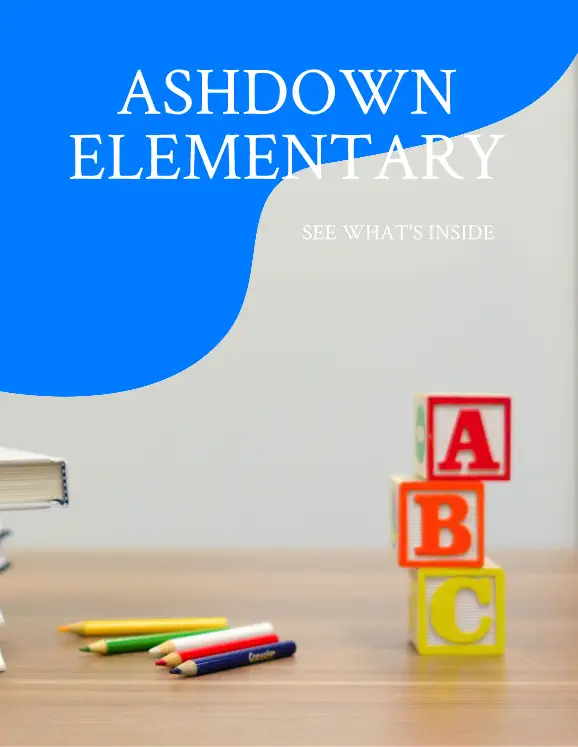
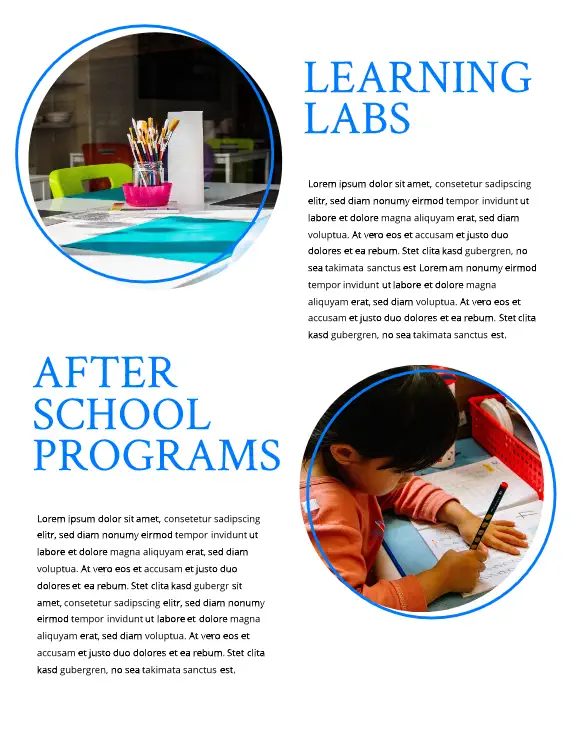
27. Seasons magazine
Want to show off your brand’s appreciation for the natural world? Give this Seasons physical magazine template a chance. Showcase nature in all her glory with beautiful, detailed photos and unobtrusive spaces for immersive articles.
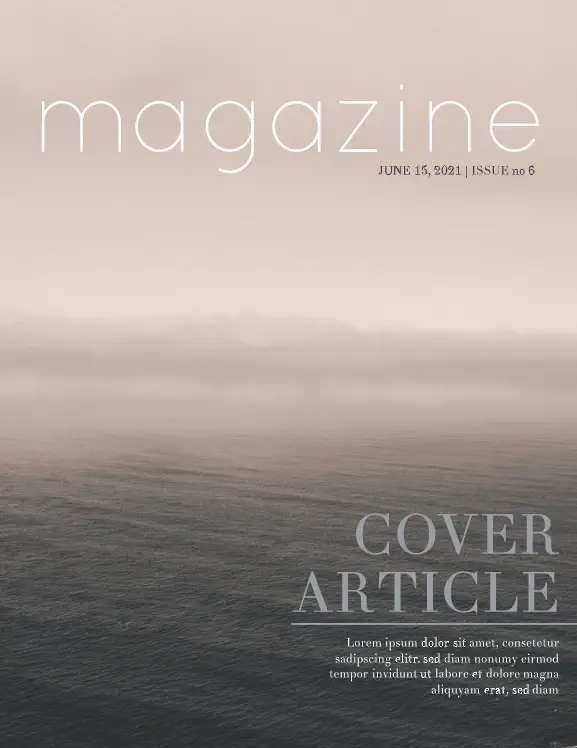
28. Art school magazine
Bold sans-serif headings and bright colors showcase your art school offerings in this educational magazine layout. There’s plenty of room for the nitty-gritty details, along with space for larger text call outs and lifestyle photography.


29. Surf magazine cover
Your action shot goes front-and-center in our surf magazine cover layout. A color-blocked section for your title and clear sans-serif headlines round out this tried-and-true cover design.
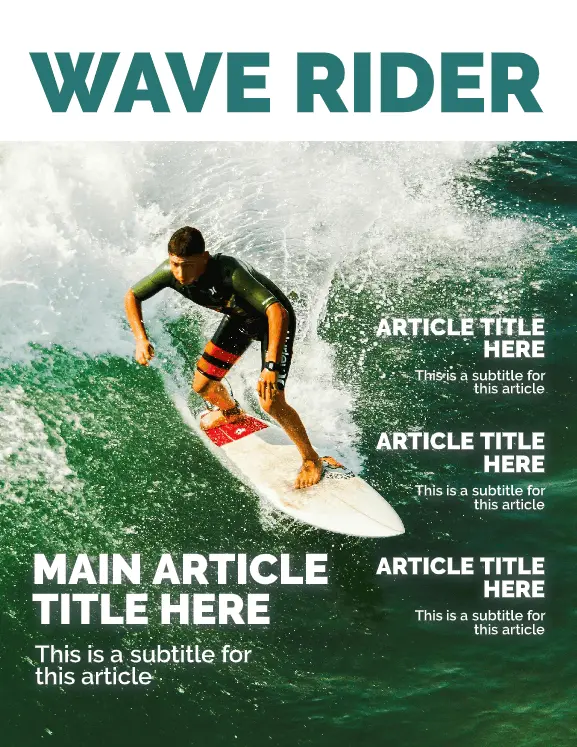
30. Performance car magazine
When you need to show off what a beautiful piece of machinery can do, this performance car magazine layout is a go-to. With lots of space for ads, articles, and glamor shots, the simple, masculine layout gets the job done.

Creating your own magazine design and layout can feel like an intimidating task, but with templates like these, it becomes a breeze. Don’t be afraid to mix and match elements from more than one template to create something truly unique!
Ready to start designing your own magazine? Get a head start in our gallery for free magazine templates & layouts.

